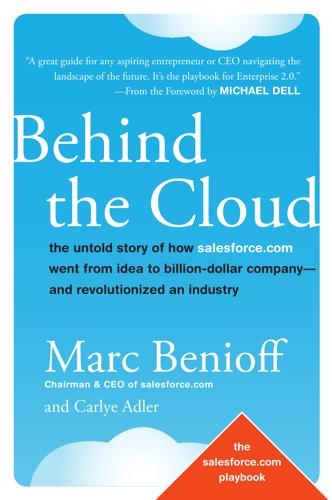
Behind the cloud: the untold story of how Salesforce.com went from idea to billion-dollar company--and revolutionized an industry
by
Marc Benioff
and
Carlye Adler
Published 19 Nov 2009
It’s the playbook for Enterprise 2.0.” —From the Foreword by MICHAEL DELL Behind the Cloud the untold story of how salesforce.com went from idea to billion-dollar company— and revolutionized an industry Marc Benioff Chairman & CEO of salesforce.com and Carlye Adler www.josseybass.com the salesforce.com playbook How did salesforce.com grow from a start-up in a rented apartment into the world’s fastest growing software company in less than a decade? For the first time, Marc Benioff, the visionary founder, chairman, and CEO of salesforce.com, tells how he and his team created and used new business, technology, and philanthropic models tailored to this time of extraordinary change.
…
It’s the playbook for Enterprise 2.0.” —From the Foreword by MICHAEL DELL Behind the Cloud the untold story of how salesforce.com went from idea to billion-dollar company— and revolutionized an industry Marc Benioff Chairman & CEO of salesforce.com and Carlye Adler www.josseybass.com the salesforce.com playbook How did salesforce.com grow from a start-up in a rented apartment into the world’s fastest growing software company in less than a decade? For the first time, Marc Benioff, the visionary founder, chairman, and CEO of salesforce.com, tells how he and his team created and used new business, technology, and philanthropic models tailored to this time of extraordinary change.
…
—Charles Moore, executive director, Committee Encouraging Corporate Philanthropy LEADERSHIP US $27.95 | CAN $33.95 the salesforce.com playbook Marc R. Benioff is the chairman and CEO of salesforce.com (NYSE: CRM), which he cofounded in 1999. Under Benioff’s direction, salesforce.com has grown from a groundbreaking idea into a publicly traded company that is the market and technology leader in enterprise cloud computing. Salesforce.com has received a Wall Street Journal Technology Innovation Award, been lauded as one of BusinessWeek’s Top 100 Most Innovative Companies, been named No. 7 on the Wired 40, was selected for the past two years as a Top Ten Disrupter by Forbes, and been voted one of the world’s most ethical companies by Business Ethics Magazine.
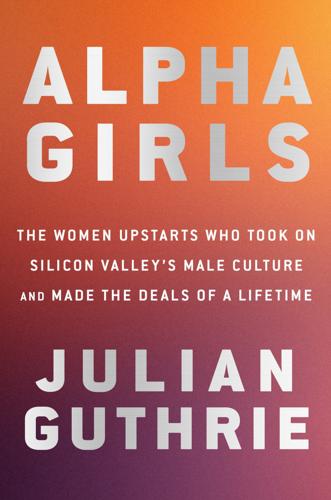
Alpha Girls: The Women Upstarts Who Took on Silicon Valley's Male Culture and Made the Deals of a Lifetime
by
Julian Guthrie
Published 15 Nov 2019
Parker Harris, Dave Moellenhoff, Frank Dominguez, Paul Nakada, and the programming and tech development team had built a prototype within a month of joining Salesforce in March 1999. (Dominguez flew down from Portland during the week and slept on a futon under his desk.) That July Magdalena had been the one to convince Benioff to leave Oracle to work on Salesforce full-time. She told him, “It’s time for you to be a full-time entrepreneur.” Salesforce had ten employees and a two-page website, with a recruiting page that requested that résumés be sent to cooljobs@salesforce.com. Salesforce had gained traction by offering free trials to small companies, mostly start-ups.
…
He wanted her to work with the guy Siebel had chosen to run the new division of Sales.com. “You want me to counsel the competition?” Magdalena asked. “We have Sales.com as a portfolio company,” Federman said. “You have Salesforce.com as your private investment. I trust you won’t make us privy to Salesforce, and you won’t make Salesforce privy to us.” As a board member of Salesforce—not to mention its first outside investor—she was, in effect, Marc Benioff’s boss. She was helping to build Salesforce. On the other hand, she worked for USVP. It had a multibillion-dollar fund invested across industries but concentrated in several telecommunications companies at very high valuations.
…
They could earn double the commissions by landing long-term deals. And having contracts enabled Salesforce to start selling to larger customers. Soon, just as Magdalena predicted, cash started streaming in. In early 2003 Salesforce posted its first cash-flow-positive quarter. As things stabilized—for now—Magdalena continued her habit of stopping by Salesforce to talk with the team. She liked visiting with Courtney Broadus, an engineer who had joined Salesforce from Oracle. Courtney told Magdalena a funny story about arriving at Salesforce for her nine o’clock job interview the morning after the B-52’s concert sales event.
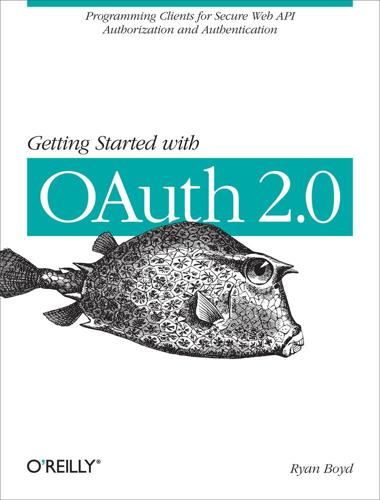
Getting Started With OAuth 2.0
by
Ryan Boyd
Published 29 Feb 2012
You can find the authorization server URL in the API provider’s documentation. For Salesforce, the URL is https://login.salesforce.com/services/oauth2/token Here are the required POST parameters: grant_type Specified as “password” for this flow. scope The data your application is requesting access to. It is not required for Salesforce and is optional for other APIs. The Winter ’12 version of Salesforce introduces optional values for this parameter. client_id The value provided to you when you registered your application. Although optional in the spec, this value is required by Salesforce. Registration of the app is achieved using the App Setup→Develop→Remote Access menu.
…
instance_url The URL prefix the client application should use to access the API. This response parameter is specific to Salesforce’s implementation. signature A signature used to validate that the identity URL hasn’t been modified since being sent from the server. Although Salesforce issues signatures that can be verified, it isn’t strictly necessary; instead, the application can use the built-in protections of HTTPS to ensure communication with Salesforce’s servers. This response parameter is specific to Salesforce’s implementation. issued_at (Salesforce-specific value) The time the signature was generated, used for validating it.
…
Programmatic revocation is defined in a draft extension to the OAuth 2.0 specification and is implemented by popular OAuth providers such as Salesforce and Google. Salesforce allows for revocation of both refresh tokens and access tokens, while Google only enables revocation of refresh tokens. Here’s an example revocation request: curl "https://accounts.google.com/o/oauth2/revoke?token=ya29.AHES6ZSzF" The extension also defines a JSONP “callback” query parameter that OAuth providers can optionally support. Both Salesforce and Google support this parameter. A 200 response code indicates successful revocation. Chapter 3. Client-Side Web Applications Flow The Implicit Grant flow for browser-based client-side web applications is very simple.
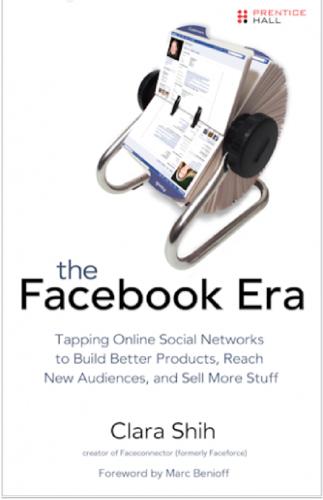
The Facebook era: tapping online social networks to build better products, reach new audiences, and sell more stuff
by
Clara Shih
Published 30 Apr 2009
From the Library of Kerri Ross C h a p te r 1 2 Th e Fu t u re o f S o c i a l B u s i n e s s 209 Greater Collaboration Across Organizations As organizational boundaries become less rigid, we will see greater collaboration take place across different organizations. Salesforce to Salesforce is a prime example of how this might play out. It’s a neat idea: Instead of a social network of people, Salesforce to Salesforce is a social network of companies. It allows companies to easily share data such as leads, opportunities, accounts, contacts, and tasks with their suppliers, vendors, partners, and customers that also use Salesforce. In a social network of people, the primary interactions might be exchanging messages, writing on someone’s wall, or referring a friend for an open job requisition.
…
Here’s an example: Company X uses Salesforce to Salesforce to share leads with its indirect channel partners and introduce approvals around any joint selling opportunities. Company X also automates workflow to adjust orders to its vendors for raw materials based on customer demand downstream. Lastly, Company X provides customers with real-time visibility into its order fulfillment process and the ability to log customer support cases. Just as the people-centric social networking discussed throughout this manuscript helps facilitate interactions and transactions between individuals, Salesforce to Salesforce makes interactions and transactions between companies easier and more efficient with this innovative new conception of an online social network.
…
From the Library of Kerri Ross 210 Pa r t I I I Yo u r S te p - B y - S te p G u i d e to Us i n g Fa ce b o o k fo r B u s i n e s s Figure 12.2 Salesforce to Salesforce is an online social networking service for companies. A company, such as Liberty Resellers in this case, maintains a set of connections with partner companies, such as vendors, suppliers, channel partners, and customers. Companies can make and accept connection requests just like an individual would on LinkedIn or Facebook. Figure 12.3 With Salesforce to Salesforce, companies can choose to share certain data and workflow, such as accounts, contacts, leads, opportunities, tasks, or custom data, by publishing these to specific connections.

Groundswell: Winning in a World Transformed by Social Technologies
by
Charlene Li
and
Josh Bernoff
Published 23 May 2011
Steve is the VP in charge of the platform—basically, the foundation of the product and its development environment—at salesforce.com. Saleforce.com makes customer relationship management applications. If you’re a salesperson, you open up salesforce.com on your PC and use it to manage the opportunities and leads you’re working on. Salesforce.com also fills a similar role in service and marketing departments. But salesforce.com itself isn’t software. It’s an on-demand service, delivered through the Internet. That means salesforce.com can deliver updated and improved capabilities far more quickly. And that’s why speed is important to Steve. Salesforce.com evolves rapidly. The company used to put out three new releases per year.
…
“We were looking at doing this ourselves,” said John Taschek, salesforce.com’s VP of strategy. “But Crispy had the technology to find out the kinds of things people wanted to know.” So salesforce.com launched a site with Crispy News (and, eventually, bought the company). In the fall of 2006, salesforce.com launched the salesforce.com IdeaExchange (ideas.salesforce.com) and invited customers to itemize their development priorities. Before this, customers’ ideas had fallen like snowflakes, enveloping the development process in an undifferentiated blanket of suggestions. Now the ideas were channeled and directed by the groundswell of Salesforce.com’s own customers.
…
Now the ideas were channeled and directed by the groundswell of Salesforce.com’s own customers. In one year, over five thousand ideas arrived; now the best ones bubbled to the top. The customers were organizing their priorities for salesforce.com. Not all of them were easy for Salesforce.com to swallow. One of the first and most popular suggestions addressed the “sawbanner,” a text ad that popped up every time a customer logged in to salesforce.com. The sawbanner was beloved in Salesforce.com’s marketing department, since it enabled the company to communicate directly with everyone using the software about new releases, conferences, and the like. But people attempting to get work done weren’t so happy with it.
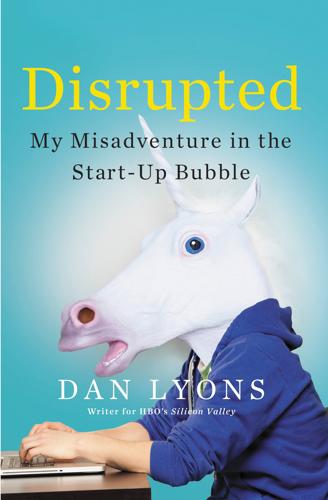
Disrupted: My Misadventure in the Start-Up Bubble
by
Dan Lyons
Published 4 Apr 2016
At the keynote I’m sitting next to one of our sales reps, who tells me that Salesforce.com has been calling our customers, urging them to dump HubSpot and switch to ExactTarget, which has been renamed Salesforce Marketing Cloud. Salesforce.com claims that its marketing software is better than HubSpot and works seamlessly with Salesforce.com’s core CRM software. These claims may or may not be true, but Salesforce.com makes a compelling sales pitch. A lot of our customers use Salesforce.com. They bought HubSpot as a kind of add-on to their CRM software. Why keep paying extra for HubSpot when they can buy their marketing software from the same company that makes their CRM software? No doubt Salesforce.com also offers an attractive price if you buy the bundle.
…
No doubt Salesforce.com also offers an attractive price if you buy the bundle. “So what do you say when your customers tell you that Salesforce.com is trying to poach them away?” I ask the sales rep. “What story can we tell our customers to counter the story they’re getting from Salesforce?” The sales rep just shrugs. Halligan has decided that if Salesforce.com is going to enter our market space, then we will enter theirs. In secret, HubSpot’s engineers have started developing a CRM program to compete against Salesforce.com, but we haven’t announced it yet. Cranium has become obsessed with Salesforce.com. He hates these guys! He wants to kill them! He’s like Ahab stalking the whale.
…
More depressing is that Benioff represents a threat to HubSpot, and while he may be ridiculous, he’s not someone you want to have as an enemy. Salesforce used to be HubSpot’s biggest ally, investing in HubSpot and even selling HubSpot software to its customers. Halligan loved Benioff so much that he named the company’s biggest conference room after him. That happy relationship ended six months ago when Salesforce acquired one of HubSpot’s rivals, ExactTarget. Supposedly Benioff first tried to buy HubSpot, but Halligan rejected his offer. At the keynote I’m sitting next to one of our sales reps, who tells me that Salesforce.com has been calling our customers, urging them to dump HubSpot and switch to ExactTarget, which has been renamed Salesforce Marketing Cloud.
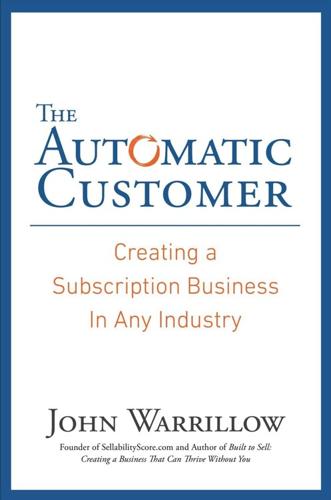
The Automatic Customer: Creating a Subscription Business in Any Industry
by
John Warrillow
Published 5 Feb 2015
At SellabilityScore.com, our sales reps use Salesforce.com, a subscription service that allows us to manage our customers’ contact information and track our sales. We also use Salesforce.com as a calendar so our people know each other’s schedules. Our salespeople track their daily goals in Salesforce so they know where they are every day based on their plan. We have since customized the platform so that we send quotes directly to our customers from Salesforce. Salesforce is now fully integrated into our team’s daily work flow—our flight path, if you will. We can’t get much done in our company without logging into Salesforce. And because we’ve customized the platform and integrated it into our daily activities, the cost for us to switch to a competitive product like Infusionsoft would be high.
…
WhatsApp company overview, CrunchBase. crunchbase.com/company/whatsapp. CHAPTER 11: THE PEACE-OF-MIND MODEL 1. Freeman, Mike, “Qualcomm Sells Stake in Tagg—The Pet Tracker,” UT San Diego, July 10, 2013. utsandiego.com/news/2013/Jul/10/Qualcomm-Tagg-Pet-Tracker-Private-Equity. 2. “Salesforce.com Signs Definitive Agreement to Acquire Radian6, the Industry’s Leading Social Media Monitoring Platform,” Salesforce.com, press release, March 30, 2011. salesforce.com/ca/company/news-press/press-releases/2011/03/110330.jsp. 3. “Berkshire’s Corporate Performance vs. the S&P 500,” Berkshire Hathaway, February 26, 2010. berkshirehathaway.com/letters/2009ltr.pdf. CHAPTER 12: THE NEW MATH 1.
…
The model was popularized by the software industry but can be used by any company with customers willing to pay to jump the service queue. Doubling Down on the Subscription Model Salesforce.com is a subscription business that provides software that sales teams use to manage their contacts online. The company has doubled its bet on the subscription business model by also offering subscription-based service packs they call Success Plans. At Salesforce .com, everyone gets basic-level support: you submit a ticket through the online system, and someone will provide you with an e-mail response within two business days.
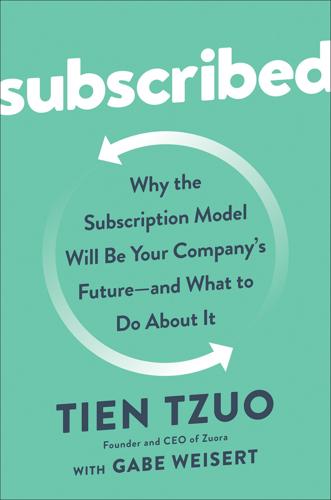
Subscribed: Why the Subscription Model Will Be Your Company's Future - and What to Do About It
by
Tien Tzuo
and
Gabe Weisert
Published 4 Jun 2018
A $10 million company with 80 percent subscription revenue starts every year with $8 million in the bank. If stock valuations are forward-looking predictions, then subscriptions are forward-looking revenue models. None of the founders of Zuora were new to these issues. I had the good fortune to join Salesforce as employee #11, and helped turn it into a billion-dollar company over the next ten years. All of us early folks at Salesforce came out of the traditional, on-premise software industry. We were all pretty fed up with it. We thought that companies like Oracle, Siebel, and others were creating a needlessly complicated product that was sold by a mercenary sales force and promoted by a parasitic systems integration industry.
…
to “What does my customer want, and how can I deliver that as an intuitive service?” When Salesforce launched, everyone realized that it was different—no more huge installations and piles of hardware. It was software as a service, not a static product. Because of that, we were empowered to come up with new ways to market it, to sell it, and to run a truly subscription-based company. The ideas we came up with—usage-based pricing, multitiered editions, customer success organizations—are now standard operating procedure for software-as-a-service companies, but when we were building Salesforce, none of them existed. We had to invent them. But starting everything from scratch had its downsides, too.
…
This is why a lot of subscription companies may “look” unprofitable, but they are actually awesome businesses. It’s also why I roll my eyes every time I hear an analyst complaining about the lack of profitability at companies like Salesforce and Box. Even while the Subscription Economy has taken hold across multiple multibillion-dollar industries, investors, analysts, and investor media continue to miss the fundamental differences between product and subscription companies that make their financial measurements just as disparate. When I was at Salesforce, we spent a lot of time and energy educating investors and analysts on the vast performance differences between subscription software companies and traditional software companies.
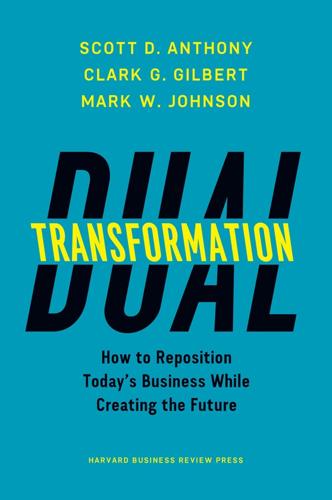
Dual Transformation: How to Reposition Today's Business While Creating the Future
by
Scott D. Anthony
and
Mark W. Johnson
Published 27 Mar 2017
In 1999, Marc Benioff founded Salesforce.com. He was one of the pioneers of a movement that came to be called software as a service, or SaaS. As internet connectivity became increasingly ubiquitous and access speeds spiked, Benioff bet on a shift in the historical means by which companies distributed computer software. Rather than require customers to go to a retail store or order shrink-wrapped software through a mail catalog, Salesforce’s core customer relationship management (CRM) software, which helped companies manage their salesforce, was licensed to users, hosted and maintained by Salesforce, and delivered over the internet.
…
Gilbert tried at one point to integrate the Deseret salesforce. However, he found that even when the A salesforce hit its targets for traditional products to traditional customers, it would always be 15 percent to 20 percent under plan for new products to new customers. He recalls telling one of his traditional sales leaders, “Look, if you are an entrepreneur and your sales organization is constantly coming under plan, what would you do?” The response was that you’d fire them and hire someone else. And that’s what Gilbert eventually did when he and his team peeled off responsibility for B and parked it in a separate salesforce. The new organization doubled growth from the start.
…
Rather than require customers to go to a retail store or order shrink-wrapped software through a mail catalog, Salesforce’s core customer relationship management (CRM) software, which helped companies manage their salesforce, was licensed to users, hosted and maintained by Salesforce, and delivered over the internet. The year Benioff founded Salesforce.com, market leader Siebel Systems was on a tear, and things only improved for the next three years. The traditional software vendor’s sales surged from $45 million in 1996 to $2.1 billion in 2001. As Benioff’s disruptive model established itself, however, Siebel’s sales reversed, declining to $1.3 billion in 2004. Oracle announced plans to acquire the company for almost $6 billion in September 2005. During the next decade Salesforce grew to almost $7 billion in revenue, and its stock rose almost 500 percent, leaving the former upstart with a $50 billion valuation in mid-2016.
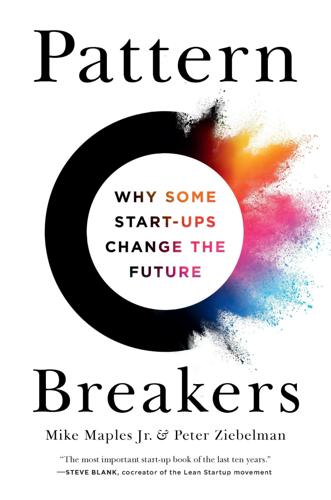
Pattern Breakers: Why Some Start-Ups Change the Future
by
Mike Maples
and
Peter Ziebelman
Published 8 Jul 2024
Todd McKinnon’s situation was different from the prior examples we’ve described in an important way: his team was solving a problem for customers they knew were living in the future. Todd’s vantage point as vice president of engineering at Salesforce, a trailblazing company in cloud computing, gave him a proprietary view of the future, even if not quite as directly as if he’d been solving his own personal problem. Before Salesforce’s ascent, companies relied primarily on on-premises software, hosting their business software in-house on their own computers and data centers. Salesforce changed this by offering software that Salesforce managed on behalf of the customer in the cloud. Marc Benioff, Salesforce’s founder, highlighted the cloud’s benefits, like cost effectiveness, scalability, remote accessibility, and automated software updates.
…
The good news is that there’s more than one way to live in the future and identify what’s missing there. Consider Okta, which provides customers with unified access to all their cloud apps. CEO Todd McKinnon was head of engineering for Salesforce when he and his colleague Frederic (Freddy) Kerrest cofounded Okta, first called Saasure, in 2009. Todd’s and Freddy’s roles at Salesforce, just when the company was starting to take off, had put them on the front lines of the cloud-computing revolution. It gave them a major advantage in understanding the challenges experienced by the pioneering customers who first adopted cloud computing.
…
While the early adoption phase had its skeptics, cloud computing’s value proposition gradually gained mainstream acceptance. What set Todd and Freddy apart? Their hands-on experience with Salesforce’s customers meant they knew the first true believers in cloud computing extremely well. Their experience at the leading edge revealed a new pattern: these clients were rapidly adopting other cloud services. And they were struggling with new issues as they expanded their use of cloud computing beyond Salesforce. As they deployed more and more cloud applications, they needed to create separate log-ins for each application their users wanted to access.

Vassal State
by
Angus Hanton
Published 25 Mar 2024
This gigantic immoderation is a picture of marine life but also a glimpse of how profoundly powerful US money has become at the centre of the City of London. To proclaim their power and wealth, the owners, Salesforce (of San Francisco), also renamed the building ‘Salesforce Tower’, having bought the rights from the developer, a Massachusetts company, Boston Properties, Inc. Salesforce.com are leaders in ‘big data’ as well as having the biggest private aquarium in Europe. One of the many applications of Salesforce’s software is for managing savers’ funds – another industry being shaped by the American model. Until recently, investors entrusted their funds to money managers, who would pick which shares they thought might rise and charge an annual fee whether they succeeded or not, and on average their performance was, well, pretty average.
…
Life-as-a-Service: The Twin Treadmills of Subscriptions and Debt 1 ‘Trip Adler’, Quote.org [website], https://quote.org/author/trip-adler-49853. 2 For more on Benioff, see Marc Benioff and Carlye Adler, Behind the Cloud: The Untold Story of How Salesforce.com Went from Idea to Billion-Dollar Company – and Revolutionized an Industry (San Francisco: Wiley-Blackwell, 2009). 3 Marilyn Much, ‘How Salesforce’s Marc Benioff revolutionized the software industry’, Investor’s Business Daily [website] (11 February 2019), https://www.investors.com/news/management/leaders-and-success/how-salesforces-marc-benioff-revolutionized-the-software-industry/. 4 Phil Wainewright, ‘Microsoft CEO to business: your future as a SaaS provider’, Diginomica [website] (16 March 2015), https://diginomica.com/microsoft-ceo-business-future-saas-provider. 5 Erik Bullard, ‘The escalating costs buried in your Salesforce agreement’, UpperEdge [website] (26 February 2020), https://upperedge.com/salesforce/the-escalating-costs-buried-in-your-salesforce-agreement/. 6 Mario Grunitz, ‘Everything-as-a-service: a look into the subscription-based model’, WeAreBrain [website] (30 August 2022), https://wearebrain.com/blog/everything-as-a-service/. 7 Quoted in Catrin Jones, ‘Caterpillar release cloud-based system to boost performance’, Construction Briefing [website] (23 November 2022), https://www.constructionbriefing.com/news/caterpillar-release-cloud-based-system-to-boost-performance/8024919.article. 8 ‘Power by the hour (PBH)’, AJW Group [website], https://www.ajw-group.com/services/supply-chain-management/power-by-the-hour/. 9 ‘The Princess of Wales rents a gown for the Earthshot Prize ceremony in Boston’, Harper’s Bazaar (3 December 2022), https://www.harpersbazaar.com/uk/fashion/fashion-news/a42139785/kate-middleton-rents-green-dress-earthshot-prize/; Rebecca Cohen and Madison Hall, ‘AOC only paid for her Met Gala outfit and other possible “impermissible gifts” after investigators asked about it, ethics agency finds’, Business Insider [website] (2 March 2023), https://www.businessinsider.com/aoc-ethics-prove-paid-met-gala-outfit-house-report-2023-3?
…
Life-as-a-Service: The Twin Treadmills of Subscriptions and Debt 1 ‘Trip Adler’, Quote.org [website], https://quote.org/author/trip-adler-49853. 2 For more on Benioff, see Marc Benioff and Carlye Adler, Behind the Cloud: The Untold Story of How Salesforce.com Went from Idea to Billion-Dollar Company – and Revolutionized an Industry (San Francisco: Wiley-Blackwell, 2009). 3 Marilyn Much, ‘How Salesforce’s Marc Benioff revolutionized the software industry’, Investor’s Business Daily [website] (11 February 2019), https://www.investors.com/news/management/leaders-and-success/how-salesforces-marc-benioff-revolutionized-the-software-industry/. 4 Phil Wainewright, ‘Microsoft CEO to business: your future as a SaaS provider’, Diginomica [website] (16 March 2015), https://diginomica.com/microsoft-ceo-business-future-saas-provider. 5 Erik Bullard, ‘The escalating costs buried in your Salesforce agreement’, UpperEdge [website] (26 February 2020), https://upperedge.com/salesforce/the-escalating-costs-buried-in-your-salesforce-agreement/. 6 Mario Grunitz, ‘Everything-as-a-service: a look into the subscription-based model’, WeAreBrain [website] (30 August 2022), https://wearebrain.com/blog/everything-as-a-service/. 7 Quoted in Catrin Jones, ‘Caterpillar release cloud-based system to boost performance’, Construction Briefing [website] (23 November 2022), https://www.constructionbriefing.com/news/caterpillar-release-cloud-based-system-to-boost-performance/8024919.article. 8 ‘Power by the hour (PBH)’, AJW Group [website], https://www.ajw-group.com/services/supply-chain-management/power-by-the-hour/. 9 ‘The Princess of Wales rents a gown for the Earthshot Prize ceremony in Boston’, Harper’s Bazaar (3 December 2022), https://www.harpersbazaar.com/uk/fashion/fashion-news/a42139785/kate-middleton-rents-green-dress-earthshot-prize/; Rebecca Cohen and Madison Hall, ‘AOC only paid for her Met Gala outfit and other possible “impermissible gifts” after investigators asked about it, ethics agency finds’, Business Insider [website] (2 March 2023), https://www.businessinsider.com/aoc-ethics-prove-paid-met-gala-outfit-house-report-2023-3?
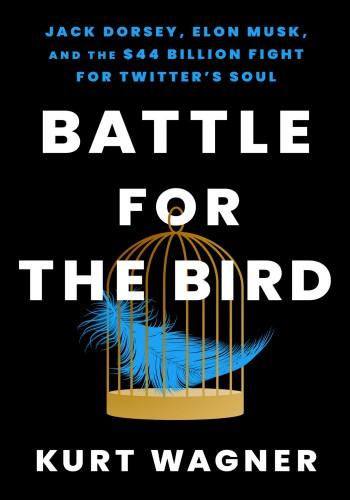
Battle for the Bird: Jack Dorsey, Elon Musk, and the $44 Billion Fight for Twitter's Soul
by
Kurt Wagner
Published 20 Feb 2024
To a lot of people, including many of Benioff’s top lieutenants, a Twitter-Salesforce marriage didn’t make much sense. Salesforce was an enterprise software company, meaning it didn’t build products for everyday internet users like Twitter or Facebook, but instead made a killing selling software that other businesses used to manage their sales and customer relationships. It was a lucrative business, but not necessarily an obvious fit for a social network where people posted about politics and trolled celebrities. To Benioff, though, a Twitter-Salesforce marriage was all that made sense. He started calling Twitter an “unpolished jewel” and thought Twitter was a perfect way for Salesforce’s clients to get feedback from their customers.
…
The idea of Twitter joining the likes of Pixar, ESPN, and Lucasfilm under the broader Disney umbrella sounded really appealing. Then, after months of secret meetings and dinners and brainstorming, everything abruptly unraveled. The same week that Twitter’s bankers were expecting formal bids, both Disney and Salesforce balked. Benioff had spent weeks getting blowback from Salesforce’s investors and his own management team, who all thought buying Twitter was a massive mistake. After news of a possible deal leaked, Salesforce’s stock fell 8 percent over a two-week span. Benioff couldn’t justify the deal and, despite his initial outreach, chose to save his money and walk away. Iger got closer, and even had approval from Disney’s board of directors to finalize a deal.
…
Mangalindan, “Vote: Businessperson of the Year 2014, Reader’s Choice | Tech Edition,” Fortune, November 6, 2014, https://fortune.com/2014/11/06/vote-businessperson-year-tech/. Benioff was furious: Nico Grant, “Salesforce’s Success Rides on One Man’s Gut,” Bloomberg, May 23, 2019, https://www.bloomberg.com/news/articles/2019-05-23/this-software-giant-runs-on-one-man-s-gut?sref=dZ65CIng. bidding up the price repeatedly: Mark Bergen, “The Tick-Tock Story of How LinkedIn Shopped Itself to Microsoft, Salesforce and Google,” Recode, July 2, 2016, https://www.vox.com/2016/7/2/12085428/linkedin-microsoft-salesforce-google-deal-timeline. “Plus, Twitter was struggling… beneficial for us both”: Marc Benioff and Monica Langley, “Trust,” in Trailblazer: The Power of Business as the Greatest Platform for Change (New York: Currency, 2019), 55.
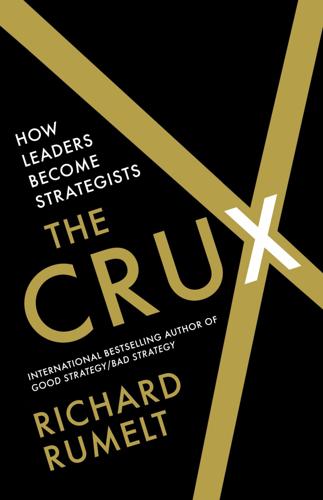
The Crux
by
Richard Rumelt
Published 27 Apr 2022
If it is to persist over time, it will face an ongoing series of challenges, each of which should be dealt with. Existence is an ongoing quest, and making strategy is ongoing work. There can be no one approach, or “strategy,” for dealing with them all, as we will see from the challenges that Salesforce.com and Ryanair have faced. SALESFORCE.COM The development of Salesforce.com nicely illustrates the sequence of challenge and strategic response that shapes a company over time. To say that Salesforce.com had a “strategy” during its development so simplifies the concept as to make it almost meaningless. Marc Benioff was the kind of kid who wrote adventure games for his Atari. In college he was able to get a summer job writing code at Apple for the forthcoming Macintosh.
…
This idea then morphed into one of letting customers adapt the product to their own circumstances. Salesforce.com took the original tabs (Accounts, Leads, and so forth) and added “blank tabs” that the user could customize. The key to making this work was AppExchange, which was essentially an app store for business software. When it was introduced in 2005, several reviewers called it an “iTunes for business.” Then in 2006 came tools for writing code to actually run on Salesforce’s servers (Apex) along with tools for building custom visual interfaces. With these steps, Salesforce.com was moving away from simply being a cloud-based CRM to being a cloud platform for a wide range of business applications.
…
STRATEGY IS A JOURNEY 1. “Mid-market CRM Total Cost of Ownership” (Yankee Group, July 2001). 2. Marc R. Benioff and Carlye Adler, Behind the Cloud: The Untold Story of How Salesforce.com Went from Idea to Billion-Dollar Company—and Revolutionized an Industry (San Francisco: Jossey-Bass, 2009), 134. 3. Ben McCarthy, “A Brief History of Salesforce.Com, 1999–2020,” November 14, 2016, www.salesforceben.com/brief-history-salesforce-com. 4. Marc Benioff, comments at Dreamforce 7, November 18, 2009. 5. “Telegraph Travel,” Telegraph, September 28, 2016. 6. “Telegraph Travel”; Michael Hogan, “Michael O’Leary’s 33 Daftest Quotes,” Guardian, November 8, 2013. 7.
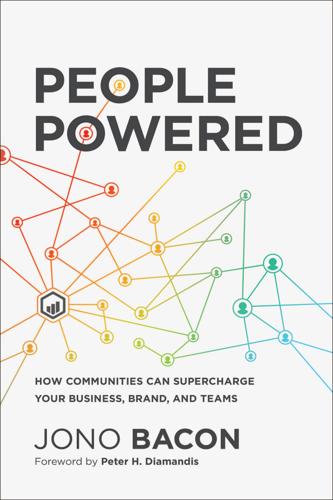
People Powered: How Communities Can Supercharge Your Business, Brand, and Teams
by
Jono Bacon
Published 12 Nov 2019
“Axe Change—The Official Site for Fractal Audio Presets, Cabs and More,” Axe Change, accessed March 2, 2019, http://axechange.fractalaudio.com/. 21. Dan Ariely, “What Makes Us Feel Good About Our Work?,” TED, October 2012, https://www.ted.com/talks/dan_ariely_what_makes_us_feel_good_about_our_work. 22. “Salesforce Customers List,” Sales Inside, accessed May 2, 2018, https://www.salesinsideinc.com/services-details/salesforce-customers-list. 23. “Salesforce Trailblazer Community,” Salesforce, accessed February 25, 2019, https://success.salesforce.com/. 24. “Firefox Crop Circle,” FirefoxCropCircle.com, accessed November 30, 2018, https://firefoxcropcircle.com/circle/; “SpreadFirefox,” Mozilla Firefox, November 2013, https://blog.mozilla.org/press/files/2013/11/nytimes-firefox-final.pdf. 25.
…
A community provides a shared environment where members can build relationships with the company, consume and contribute additional value, and see this value being consumed by other members. This builds goodwill. It creates trust. It builds brand loyalty. One example is Salesforce. Their Customer Relationship Management (CRM) system is big business, providing a central database platform where businesses track customers, clients, partners, and more. As I scribble these words down, Salesforce is arguably the most popular CRM system in the world. Boasting 150,000 customers and an estimated 3.75 million subscribers, Salesforce has an enormous customer base across a broad range of industries.22 The product itself is very comprehensive (some may argue a little too comprehensive), with a number of integrated services bolted in.
…
_OS, 264 positivity, 185 postponed (status), 147 pragmatism, 184 prioritization of audience personas, 112–13 of community leadership staff requirements, 257 of community within organization, 262–63 of goals for incentives, 214 prizes, incentive, xvii–xviii problem solving, in Community On-Ramp Model, 134, 136, 137 Procter & Gamble, 9, 10 product development, 25–27 product enhancement, 86 productive participation, success as, 162–67 Product Success Model, 50–52 product team, community leadership staff reporting to, 261 promotion of in-person events, 239 of job openings, 258 promotions, 193 publication, of reputation scores, 229 public communities, 13, 179–80 pull requests, 204 Pulp Fiction (film), 127 Quarterly Community Strategy, 162, 167–70 Quarterly Delivery Plan, 145–51, 182, 189, 192 in Bacon Method, 34 and Big Rocks, 89, 90 in cadence-based cycles, 168–70 components of, 146–47 for departmental alignment, 263 examples of, 147–48 and Organizational Capabilities Maturity Model, 176 principles of building, 149–51 Quarterly Reviews, 268 questions answering community members’, 134 asking, 51, 85, 134, 273 quiet community members, engaging, 122 Random House, 10 React Native, 134 realistic objectives, 89–90, 95–96, 149–50 real-time chat channel, 250 recordings, of digital training sessions, 244 recruitment, 86, 258–59 Reddit, 24, 228 Reddit Science community, 45 Reddit Sneakers community, 45 Red Hat, 25–26, 56, 261 referral halo, 60–61, 188 referrals, hiring through, 258 Regular members, 129, 140–43 advancement of, 196–97 at community summits, 242 engagement with, 199–201 incentivizing, 214, 215, 219, 221–22, 227 maturity model for, 165, 166 mentoring for, 203, 205 relatedness, in SCARF model, 106–7 relationship building at conferences, 242 in Engagement Strategy, 199 relationships with community, 72 value generation in, 79 representativeness, 217 reputation score, 48, 228–29 respect, for Core members, 144 responsiveness, 198 retention, 157 reviewing community strategy, 268 Organizational Capabilities Maturity Model, 175 Quarterly Delivery Plan, 150 rewards for audience persona, 115, 117, 118 in Community Participation Framework, 145 for Core members, 201 in Growth Strategy, 196 in incentives, 212, 214–16 on Incentives Map, 230, 232 risks with community building, 154–55 with community strategy, 29–32 Rock, David, 104 role models, 186 round-table discussions, 246 Saint-Exupéry, Antoine de, 137 Salesforce, 9, 21–22 Salesforce Success Community, 21–22 Salesforce Trailblazer Community, 21–22 sales leads, community members as, 120–21 sales team, interactions of community and, 29, 87, 120–21 Samsung, 128 SAP, 10 SAP Community Network, 10 satisfaction, 215 scaling up, 202–6 SCARF model of behavior, 104–8, 121, 141 SCORECast, 239 Scott, Bon, 62 Seasoned Advice community, 63–64 SecondLife, 26, 27 self-direction, 139 self-respect, 17 sessions attending conference, 241 community summit, 248–49 Setup Tools stage, 132, 136, 137 shared interests, 45–47 shared projects, in communities, 52–54 Shinoda, Mike, 183–84 Shuttleworth, Mark, 1 Sierra Club, 18 siloing, 171–72, 186 simplicity, of on-ramp steps, 137 skills development, 233 in Community On-Ramp Model, 133, 136, 137 organizational, 162, 171–76 as source of value, 82 training for, 206, 243–45 skills gap, 192 small events, co-organizing, 239 Smallwood, Rod, 39 social capital, 19 social media, 193, 276 societies, behavior in, 211–12 Software Development Kit (SDK), 65 Solve Problems stage, 132–33, 136, 137 Space X, 40 speaking, at conferences, 238–39, 241 specialization, 45–47 specific goals, 160 Spirit of St.

Blitzscaling: The Lightning-Fast Path to Building Massively Valuable Companies
by
Reid Hoffman
and
Chris Yeh
Published 14 Apr 2018
One of the classic Silicon Valley plays is to move from an app to a platform so that you can attract people to build on and to your platform (thereby leveraging the network effect of compatibility). Salesforce.com’s Force.com ecosystem is a great example of this. By offering the ability to build third-party applications on top of the Salesforce platform, Salesforce benefits from a “force multiplier.” There are over 2,800 apps on the Salesforce AppExchange, and an International Data Corporation (IDC) study showed that the Salesforce ecosystem generates 2.8 times the revenues of Salesforce.com itself. That means that while Salesforce.com has revenues of “only” $8.4 billion, its platform gives it the economic impact of a $32 billion company.
…
Founded 1997, Stamford, CT ROCKET MORTGAGE RocketMortgage.com Through the Rocket Mortgage website or mobile app, users can upload financial details and get a mortgage loan decision in minutes. Quicken Loans launched Rocket Mortgage in November 2015, Detroit, MI SALESFORCE.com Salesforce.com Salesforce.com provides cloud-based applications for sales, service, and marketing, as well as enabling partners to offer and run their own solutions on the Salesforce Platform. Founded February 1999, San Francisco, CA SLACK Slack.com Slack provides cloud-based collaboration tools and services that connect teams with the apps, services, and resources they need to get work done.
…
BLITZSCALING IS BOTH AN OFFENSIVE STRATEGY AND A DEFENSIVE STRATEGY. On offense, blitzscaling allows you to do several things. First, you can take the market by surprise, bypassing heavily defended niches to exploit breakout opportunities. For example, Slack’s rapid growth after its launch blindsided a host of entrenched competitors like Microsoft and Salesforce.com. Second, you can leverage your lead to build long-term competitive advantages before other players are able to respond. We’ll explore this concept in greater detail later on. Third, blitzscaling opens up access to capital, because investors generally prefer to back market leaders. You can win this mantle if you blitzscale, and with it raise more money more easily and more quickly than your lagging competitors.
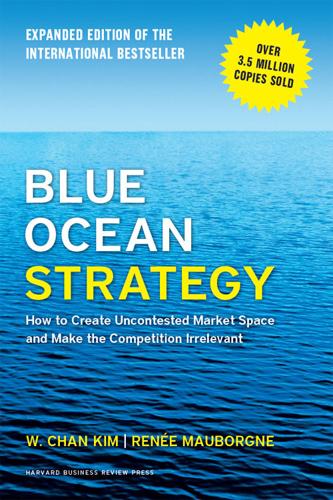
Blue Ocean Strategy, Expanded Edition: How to Create Uncontested Market Space and Make the Competition Irrelevant
by
W. Chan Kim
and
Renée A. Mauborgne
Published 20 Jan 2014
A good example to illustrate this dynamic renewal process is Salesforce.com. Salesforce.com made a series of successful strategic moves to renew its blue ocean in the B2B customer relationship management (CRM) industry. Since its initial strategic move in the early 2000s, Salesforce.com has sustained undisputed market leadership in the blue ocean of on-demand CRM automation that it created for nearly fifteen years. This is all the more impressive as it operates in the fast-moving high-tech sector. While numerous competitors, both large, established incumbents with deep pockets and new upstarts, have tried to dislodge it over the years, Salesforce.com has repeatedly broken away from the pack by value-innovating again as other companies’ value curves began to converge toward its own.
…
Instead, Salesforce.com offered business users web-based CRM solutions that focused on core functionalities, worked instantaneously upon subscription, and had high reliability and usability with ubiquitous access at a small fraction of the cost of traditional CRM software. In this way, Salesforce.com created a blue ocean of all new demand that captured small and medium-sized companies that had effectively been noncustomers of the industry. Over time, however, competitors jumped in to reap profits from the new market space of on-demand CRM automation that Salesforce.com created. Large players offered hybrid solutions, and an increasing number of small players entered the on-demand CRM market in an attempt to provide similar offerings. To break away from the competition, Salesforce.com made a new blue ocean strategic move to renew its initial value innovation offering.
…
While numerous competitors, both large, established incumbents with deep pockets and new upstarts, have tried to dislodge it over the years, Salesforce.com has repeatedly broken away from the pack by value-innovating again as other companies’ value curves began to converge toward its own. In this way, it has successfully avoided the trap of competing and kept itself in the blue. Consider: In 2001, Salesforce.com redefined the traditional CRM software industry, by effectively making traditional packaged software largely irrelevant. Gone were the needs for expensive software, complicated and time-consuming client-side installation, difficulty and risk in use, and the constant need for costly maintenance and upgrades. Instead, Salesforce.com offered business users web-based CRM solutions that focused on core functionalities, worked instantaneously upon subscription, and had high reliability and usability with ubiquitous access at a small fraction of the cost of traditional CRM software.
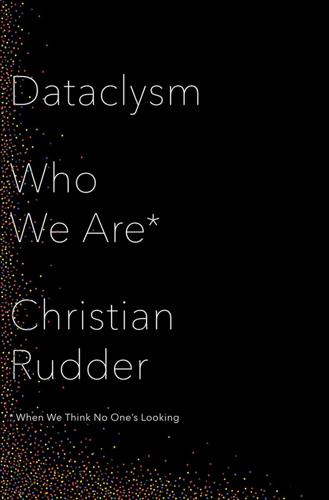
Dataclysm: Who We Are (When We Think No One's Looking)
by
Christian Rudder
Published 8 Sep 2014
“We, the users” See Jenna Wortham, “Valley of the Blahs: How Justin Bieber’s Troubles Exposed Twitter’s Achilles’ Heel,” New York Times Bits blog, January 25, 2014, bits.blogs.nytimes.com/2014/01/25/valley-of-the-blahs-how-justin-biebers-downfall-exposed-twitters-achilles-heel/. In 2012, Salesforce.com My discussion of Salesforce’s job post draws on the following sources: Drew Olanoff, “Klout Would Like Potential Employers to Consider Your Score Before Hiring You. And That’s Stupid,” TechCrunch, September 29, 2012, techcrunch.com/2012/09/29/klout-would-like-potential-employers-to-consider-your-score-before-hiring-you-and-thats-stupid/. Jessica Roy, “Want to Work at Salesforce? Better Have a Klout Score of 35 or Higher,” BetaBeat, September 27, 2012, betabeat.com/2012/09/you-may-not-work-at-salesforce-unless-you-have-a-klout-score-of-35-or-higher/.
…
BetaBeat’s article “Want to Work at Salesforce? Better Have a Klout Score of 35 or Higher” got the general reaction just right with their one-word subhead: “Ugh.” However, the real concern: that we’re all going to be reduced to numbers, and soon, deserves a longer discussion. Salesforce was, and is, a trendsetter—certainly in the world of online marketing. They were Forbes’s “Most Innovative Company in America” the same year they put up that post. They hire hundreds of people a year, and, even more to the point, when award-winning innovators do something new, other companies copy it. If Salesforce is asking for Klout scores, then everyone will soon be asking for Klout scores.
…
On the one hand, these people have gotten the equivalent of a D− grade on their only reason to exist. On the other, they have a higher score than anyone I know. In 2012, Salesforce.com, the cloud-computing behemoth, posted a job opening that listed a Klout score of at least 35 as a “desired skill.” It wasn’t positioned as a requirement, but they put it up there along with the allow-us-to-state-the-obvious attributes like “ability to work … as a part of a team,” so it was presumably a core part of the job. Salesforce’s business specialty is quantification—they help companies market through data.4 So it’s not that surprising that they would approach hiring in the same quantified way.
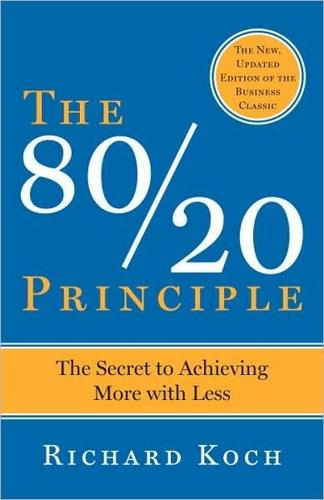
The 80/20 Principle: The Secret of Achieving More With Less
by
Richard Koch
Published 15 Dec 1999
Eventually he agreed to release one of the international team, fired the sales director of domestic, and put the young man from international in charge. Suddenly, the previously unstoppable loss of market share was reversed. Not all such stories will have a happy ending, but in sales it is generally true that nothing fails like failure and vice versa. Finally, what about salesforce training? “Is it worth investing in training the lower 80% of the salesforce to enhance their performance levels, or is it a waste of time because so many of them are destined to wash out regardless of training?”13 As on any issue, ask yourself what answer the 80/20 Principle implies. My answer: • Only train those who you are reasonably sure plan to stick around with you for several years
…
Stop training the bottom 50 percent, unless it is clear that you are obtaining a good payback even on this effort. Many salesforce performance differentials do derive from pure selling skill, but many do not. These structural factors can also be looked at in 80/20 terms. Selling is not just having good sales techniques 80/20 Analysis can identify structural reasons that reach far beyond individual competence. These structural factors are often much easier to address, and even more rewarding, than dealing with individual merit. A great deal often depends on the products being sold and the customers being served: Look at the salesforce. We find, for example, that 20 percent of our salespeople are generating 73 percent of our sales; we find that 16 percent of our products are accounting for 80 percent of sales; also, 22 percent of our customers are producing 77 percent of our sales… Looking further at our salesforce, we find that Black has 100 active accounts. 20 of these produce about 80 percent of Black’s sales.
…
We find, for example, that 20 percent of our salespeople are generating 73 percent of our sales; we find that 16 percent of our products are accounting for 80 percent of sales; also, 22 percent of our customers are producing 77 percent of our sales… Looking further at our salesforce, we find that Black has 100 active accounts. 20 of these produce about 80 percent of Black’s sales. Green covers 100 counties, and we find that 80 percent of her customers are concentrated in only 24 counties. White sells 30 different products. Six account for 81 percent of her sales.14 We have already highlighted the 80/20 Principle’s application to products and customers in the section on marketing. Those in charge of salesforces should therefore: • Focus every salesperson’s efforts on the 20 percent of products that generate 80 percent of sales.
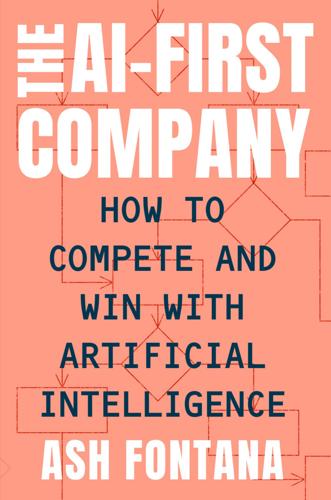
The AI-First Company
by
Ash Fontana
Published 4 May 2021
AI-First aggregators operate their systems on another vendor’s infrastructure. Incumbents are effectively the database from which the AI-First product pulls data. A good example is a software application that plugs into Salesforce, the cloud-based CRM. Applications can plug into and run within the Salesforce application, pulling data and processing functions on the computing infrastructure running Salesforce, effectively reducing the marginal cost of transacting data in the AI-First product to zero. Aggregation theory explains the current market power of companies such as Netflix but also the potential for even more market power going to AI-First companies.
…
Product lock-in comes from other vendors needing to run their software in a specific interface. This increases lock-in because there are fewer differences between competing product interfaces. For example, Salesforce offers a CRM system with lots of features and allows vendors to build apps on top of this CRM, but only if those apps run in the Salesforce interface. This makes it hard for customers to see additional value in apps running inside Salesforce. Personnel lock-in comes from the customers’ staff getting used to using a product based on its architecture, data, or interface. This increases switching costs from competitors.
…
Software Intelligent systems sometimes have an application with a user interface to deliver the predictions, but other times they directly integrate with existing systems. For example, an AI-First CRM company might build a new application for salespeople to use every day, or it might feed recommendations into an existing CRM, such as Salesforce. In the latter case, where the system feeds into another front-end application, it will need to hook into that application through an API. That’s easier when the application has an open API (Salesforce again), and more difficult when it’s a closed (and often paid) API, like SAP, or when it has no API at all, requiring a custom integration. Building an application is a totally new software project with a different set of considerations that are beyond the scope of this book.
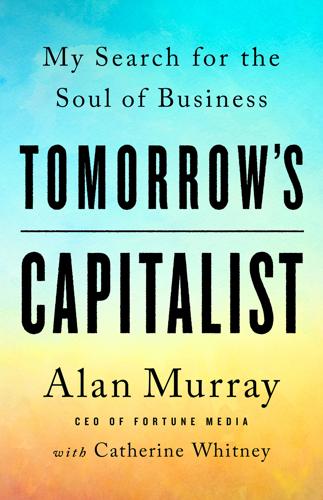
Tomorrow's Capitalist: My Search for the Soul of Business
by
Alan Murray
Published 15 Dec 2022
“This teenage climate activist had thrown down the gauntlet to some of the world’s most powerful business leaders, and they weren’t entirely sure how to react—not least because they knew deep down that she was right.” Benioff has backed up his commitment with action, and Salesforce has already achieved net-zero greenhouse gas emissions. Its headquarters, Salesforce Tower, which is the tallest building in San Francisco, has the largest onsite water recycling system in a US commercial high-rise. This is especially significant in drought-prone California, where water conservation is an environmental priority. Other CEOs have taken steps for action on climate that go beyond mere gestures.
…
If it wasn’t something that directly affected their finances, they were inclined to keep their heads down and stay out of the line of fire. That began to change in 2014, when the state of Indiana passed a “religious liberties” law that was viewed as restricting the rights of gay people. Salesforce CEO Marc Benioff was one of the very first to speak out. After then governor Mike Pence signed the bill into law, Benioff threatened to dramatically reduce his company’s investment in the state and cancel all Salesforce programs that would involve travel to Indiana. Benioff inspired others to take a stand as well, forcing Pence to revise the law to forbid businesses from denying service because of sexual orientation.
…
But I was struck by Gates’s words in Davos. Something new was going on. Something was changing. In subsequent years, I heard others articulate variations on the same theme. Harvard Business School professor Michael Porter called it “shared value capitalism.”3 Whole Foods cofounder John Mackey described it as “conscious capitalism.”4 Salesforce CEO Marc Benioff spoke of “compassionate capitalism.”5 Hedge fund billionaire Paul Tudor Jones called it “JUST Capital.” Lynn Rothschild, who had married into the legendary banking family, called it “inclusive capitalism.” Increasingly, the leaders of business found it necessary to put adjectives before the economic system that had brought them their success.

The Future of Technology
by
Tom Standage
Published 31 Aug 2005
These companies build huge datacentres so that other companies do not have to. The best-known asp today is Salesforce.com, a San Francisco firm that made its debut on the stockmarket in June 2004. As the name suggests, Salesforce.com specialises in software that salespeople use to keep track of their marketing leads and client information. Traditionally, firms buy this kind of software from vendors such as Siebel Systems, then try to integrate it into their own datacentres. With Salesforce.com, however, firms simply pay a monthly fee, from $65 per user, and go to Salesforce.com’s website, just as they go to Amazon’s when they want to shop for books, or eBay’s to buy secondhand goods.
…
“I can train the average customer in under 45 minutes on the phone,” claims Marc Benioff, Salesforce.com’s boss, adding that traditional software packages often take weeks to learn. The it staff of the firm using Salesforce.com also have less work to do. They do not have to install any new software on the firm’s own computers, and can leave Salesforce.com to worry about integrating its software with the client’s other systems. Even upgrading the software becomes much easier. Instead of shipping boxes of cds to its customers, Salesforce.com simply shuts down its system for a few hours on a weekend night, and when clients log on again on Monday morning they see the new version in their browsers.
…
But it already seems certain that in future it firms will increasingly be in the business of techniques rather than technology. 18 COMING OF AGE At your service Despite early failures, computing will eventually become a utility arc benioff (not a grey hair in sight) is not afraid to mix religion and business. In February 2003, the practising Buddhist and chief executive of salesforce.com, a San Francisco start-up, invited 200 customers and friends to a benefit concert featuring David Bowie, with proceeds going to the Tibet House, a New York cultural centre whose patron is the Dalai Lama. But Mr Benioff also used the event to get his firm’s message across: “Freedom from software”.
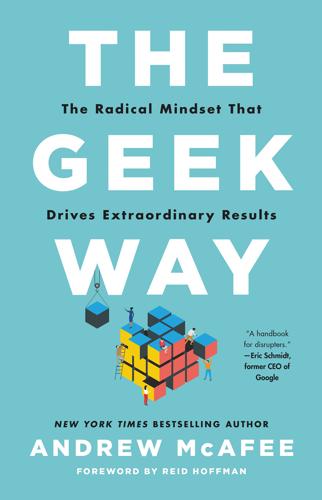
The Geek Way: The Radical Mindset That Drives Extraordinary Results
by
Andrew McAfee
Published 14 Nov 2023
Stores Again with New Pandemic Restrictions,” Reuters, November 20, 2020, www.reuters.com/article/us-health-coronavirus-toiletpaper/panic-buying-of-toilet-paper-hits-u-s-stores-again-with-new-pandemic-restrictions-idUSKBN2802W3. 54 sychronized business processes: David A Garvin, “Leveraging Processes for Strategic Advantage,” Harvard Business Review, September–October 1995, https://hbr.org/1995/09/leveraging-processes-for-strategic-advantage. 55 The 2016 letter opens with an explanation: Amazon Staff [ Jeff Bezos], “2016 Letter to Shareholders,” About Amazon, April 17, 2017, www.aboutamazon.com/news/company-news/2016-letter-to-shareholders. 56 “unencumbered by competing responsibilities”: Colin Bryar and Bill Carr, Working Backwards (London: Pan Macmillan, 2022), 54. 57 “Amazon is hundreds”: Benedict Evans, “The Amazon Machine,” Benedict Evans (blog), February 4, 2021, www.ben-evans.com/benedictevans/2017/12/12/the-amazon-machine. 58 “cross-functional projects”: Bryar and Carr, Working Backwards, 72. 59 “eliminate communication, not encourage it”: Bryar and Carr, Working Backwards, 72. 60 “At the next Quarterly Business Review”: Hastings and Meyer, No Rules Rules, 63. 61 a management process called V2MOM: Marc Benioff, “Create Strategic Company Alignment with a V2MOM,” The 360 Blog, Salesforce.com, December 5, 2022, www.salesforce.com/blog/how-to-create-alignment-within-your-company/. 62 “When I was at Oracle”: Marc R. Benioff and Carlye Adler, Behind the Cloud: The Untold Story of How Salesforce.com Went from Idea to Billion-Dollar Company—and Revolutionized an Industry (San Francisco: Jossey-Bass, 2010), 225. 63 presented it to Benioff: Eugene Kim, “These Are the Five Questions Salesforce Asks Itself Before Every Big Decision,” Business Insider, February 15, 2023, www.businessinsider.com/salesforce-v2mom-process-2015-2. 64 “we’ve expanded the scope”: Benioff, “Create Strategic Company Alignment.” 65 “the biggest secret of Salesforce.com”: Benioff and Adler, Behind the Cloud, 225. 66 “a mere 7 percent of employees”: Art Johnson, “Aligning an Organization Requires an Effective Leader,” The Business Journals, September 12, 2014, https://gottareadsomethinggood.com/2019/03/28/how-to-create-alingment-within-your-company-in-order-to-succeed-by-marc-benioff/. 67 “State of the American Manager”: Jim Harter, “Obsolete Annual Reviews: Gallup’s Advice,” Gallup, January 30, 2023, www.gallup.com/workplace/236567/obsolete-annual-reviews-gallup-advice.aspx. 68 which of three emails they would receive: Bryar and Carr, Working Backwards, 63. 69 “The NPI process was not beloved”: Bryar and Carr, Working Backwards, 64. 70 “duct tape and WD-40”: Luke Timmerman, “Amazon’s Top Techie, Werner Vogels, on How Web Services Follows the Retail Playbook,” Xconomy, September 29, 2010, https://xconomy.com/seattle/2010/09/29/amazons-top-techie-werner-vogels-on-how-web-services-follows-the-retail-playbook/. 71 “look like stoned hippies”: David Streitfeld and Christine Haughney, “Expecting the Unexpected from Jeff Bezos,” New York Times, August 17, 2013, www.nytimes.com/2013/08/18/business/expecting-the-unexpected-from-jeff-bezos.html. 72 “was so out there”: chitchcock [Chris Hitchcock], “Stevey’s Google Platforms Rant,” Gist, accessed February 15, 2023, https://gist.github.com/chitchcock/1281611. 73 “The [new, modular] Amazon development environment”: Charlene O’Hanlon, “A Conversation with Werner Vogels,” ACM Queue, May 1, 2006, https://dl.acm.org/doi/10.1145/1142055.1142065. 74 “Our annual employee poll”: Satya Nadella, Greg Shaw, and Jill Tracie Nichols, Hit Refresh (New York: HarperCollins, 2017), 66–67. 75 “find meaning in our work”: Chris Ciaccia, “Satya Nadella Is Quoting Oscar Wilde in His First Email as Microsoft CEO,” TheStreet, February 4, 2014, www.thestreet.com/technology/satya-nadella-is-quoting-oscar-wilde-in-his-first-email-as-microsoft-ceo-12305159. 76 “debate and argument are essential”: Nadella, Shaw, and Nichols, Hit Refresh, 81. 77 “agility, agility, agility”: Nadella, Shaw, and Nichols, Hit Refresh, 51. 78 “Our culture had been rigid”: Nadella, Shaw, and Nichols, Hit Refresh, 100. 79 “extraordinary individual experience”: Nadella, Shaw, and Nichols, Hit Refresh, 5. 80 “Dr.
…
As I started to manage my own divisions, I found that I personally lacked the tools to spell out what we needed to do and a simple process to communicate it. The problem only increased as the teams that I was managing increased. As Salesforce was getting off the ground in 1999, Benioff created a quick first version of a written plan to provide clarity throughout the company. He grabbed an envelope, wrote the five words “Vision, Values, Methods, Obstacles, and Measures” on the back of it, and filled in a few entries under each of them. His cofounder, Parker Harris, kept the envelope, had it framed, and presented it to Benioff the night before Salesforce went public in June of 2004. Since then, as Benioff writes, we’ve expanded the scope of the V2MOM to both individuals and teams across the company: Each year, every single department and every single employee drafts their own.
…
And to foster transparency, we publish every V2MOM on our corporate social network… Anyone can look up any employee’s V2MOM to see how each plans to contribute to our company’s future. We even built an app that allows every employee to track their progress on each item in their V2MOM. Salesforce’s annual V2MOM process starts with Benioff’s document, which gives goals and metrics for the entire company, then cascades downward and throughout the organization. V2MOMs aren’t static; they can be updated at any time in response to changing circumstances. My friends who work at Salesforce tell me that they really are important and widely used documents. Before meeting with someone, for instance, it’s common practice to look up their V2MOM so that their agenda is clear.
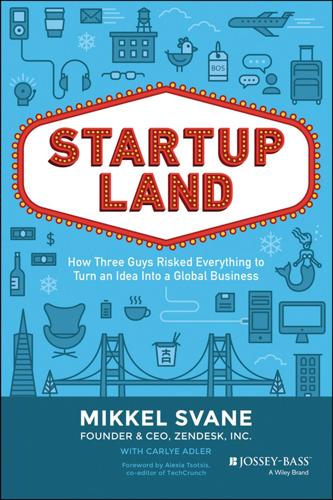
Startupland: How Three Guys Risked Everything to Turn an Idea Into a Global Business
by
Mikkel Svane
and
Carlye Adler
Published 13 Nov 2014
But I got to know him the best as the subject of an onstage interview I conducted at Le Web 2012, a full year after I had written a post describing the $3.4 billion SAP/SuccessFactors acquisition as “boring.” What impressed me the most about Svane was his reluctance to show fear when asked about Salesforce’s ‘Assistly’ buy, which within a month would be turned into the Salesforce Zendesk competitor Desk.com. He also indicated in the interview that Zendesk had had an acquisition offer for 100 million dollars, which he turned down. Bold. Svane later told me that he believed I was “the voice of a generation” when I called the SAP acquisition by SuccessFactors “boring.”
…
Timing Is Everything Working in this on-and-off manner, it took us a long time to build the product, but maybe that was a blessing. The software industry was shifting, and we felt more and more supported in our original beliefs. The provisioning of software was becoming simpler and less expensive. The trends in the consumer world were starting to sweep through enterprises. Salesforce.com was built on a new delivery model, and founder Marc Benioff was evangelizing “the End of Software” as we knew it. 27 Page 27 Svane c01.tex V3 - 10/24/2014 8:14 P.M. S TA R TU P L A N D 37signals in Chicago was lean and small, another company blazing the trail. As mentioned earlier, it’s ironic that one of its key people, Danish programmer David Heinemeier Hansson, had been let go at Caput.
…
Although Alex had selected Scandinavian furniture that looked clean and modern, it was definitely a setup for one guy only. There was only one real work chair. Whoever got in first (Alex) took it. The others sat on old kitchen chairs. The desk we worked at was an old door on sawhorses. (I’m not sure why. I know Amazon and salesforce.com started with desks built out of doors, but we were unaware that this was a trend happening across the pond; it was more of a utilitarian decision.) Working together in the small loft, we quickly learned each other’s quirks and foibles. It’s so intimate to be working in someone’s home. You see everything.
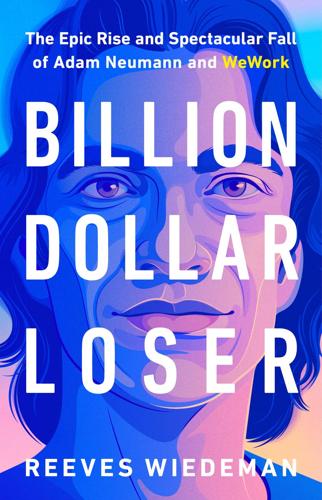
Billion Dollar Loser: The Epic Rise and Spectacular Fall of Adam Neumann and WeWork
by
Reeves Wiedeman
Published 19 Oct 2020
Chapter Fourteen The Holy Grail AS SOON AS ADAM landed in San Francisco after his visit with Howard Schultz, he drove to a dinner party at the home of Marc Benioff, the founder of Salesforce, with whom Neumann had become friendly. Benioff launched Salesforce during the last dot-com boom and came out the other side as a majordomo of the start-up world. He was preparing to move his company into an eponymously named tower that would be San Francisco’s tallest. Salesforce, which offered back-end technological solutions for corporations, was at the leading edge of the software-as-a-service movement. The new business model centered on selling subscriptions to a variety of computer applications that could be accessed through the cloud.
…
WeWork’s operations depended on a hodgepodge of Google Docs and disorganized spreadsheets, and Adler’s team built a pair of programs to streamline operations: Space Man would handle billing, while Space Station would help community managers keep track of their locations—everything from reports about broken toilets to notes about what kind of dessert each member liked so that community managers could hand out personalized gifts. Some employees questioned the value of building these systems at all. Why not buy software from Salesforce or another tech giant instead of leaning on the company’s small team of developers and engineers to patch together its own system? But Adam maintained a sense that he and his company could do the impossible, and everyone from Miguel on down found it easier to find a way to make things happen rather than question the wisdom of his ambitions.
…
The new business model centered on selling subscriptions to a variety of computer applications that could be accessed through the cloud. Masa had built his fortune selling floppy disks and CD-ROMs, but thirty years later, SaaS businesses were producing some of Silicon Valley’s largest valuations: Salesforce, Slack, Palantir, and a host of largely anonymous companies that offered new cloud-based services forming the backbone of the new economy. But the flock of Silicon Valley unicorns had grown so large that Benioff himself had become nervous. The kind of rapid expansion that venture capital made possible wasn’t sustainable without discipline.

Human + Machine: Reimagining Work in the Age of AI
by
Paul R. Daugherty
and
H. James Wilson
Published 15 Jan 2018
Jinha, “Article 50 Million: An Estimate of the Number of Scholarly Journals in Existence,” Learned Publishing 23, no. 1 (July 2010): 258–263. 5.Author interview with Shivon Zilis, January 31, 2017. 6.Author interview with Colin Hill, CEO of GNS Healthcare, February 12, 2016. 7.Ibid. 8.Margaret Rhodes, “Check Out Nike’s Crazy New Machine-Designed Track Shoe,” Wired, July 20, 2016, https://www.wired.com/2016/07/check-nikes-crazy-new-machine-designed-track-shoe/. 9.Author interview with Scott Clark, CEO of SigOpt, November 22, 2016. 10.Author interview with Colin Hill, CEO of GNS Healthcare, February 12, 2016. 11.Author interview with Brandon Allgood, CTO of Numerate, July 7, 2016. 12.Ibid. Chapter 4 1.Phil Wainewright, “Salesforce Captures the Limits of AI in a Coca-Cola Cooler,” Diginomica, March 7, 2017, http://diginomica.com/2017/03/07/salesforce-captures-the-limits-of-ai-in-a-coca-cola-cooler/. 2.“Transitioning to a Circular Economy,” Philips, https://www.usa.philips.com/c-dam/corporate/about-philips-n/sustainability/sustainabilitypdf/philips-circular-economy.pdf. 3.Jordan Crook, “Oak Labs, with $41M in Seed, Launches a Smart Fitting Room Mirror,” TechCrunch, November 18, 2015, https://techcrunch.com/2015/11/18/oak-labs-with-4-1m-in-seed-launches-a-smart-fitting-room-mirror/. 4.
…
ID=939124067092027067004014122095071122024055052015007029075097084030114081117071005117010025040030028099033029108085078084110085058032042047078116106068114072091072007017066053119084126001064066091030110015091108011105082068097088118126016099093096024091&EXT=pdf. 16.Conversation with Bill Ruh, CEO for General Electric Digital, April 11, 2017. 17.Ibid. 18.Accenture client work and Accenture Research case example research findings (estimate) 19.Nicholas Fearn, “Ducati Corse Turns to IoT to Test MotoGP Racing,” Internet of Business, March 8, 2017, https://internetofbusiness.com/ducati-corse-races-iot/. 20.Anthony Ha, “Salesforce Acquires Smart Calendar App Tempo, App Will Shut Down on June 30,” Tech Crunch, May 29, 2015, https://techcrunch.com/2015/05/29/salesforce-acquires-tempo/. 21.“Nielsen Breakthrough Innovation Report, European Edition,” Nielsen, December 2015, http://www.nielsen.com/content/dam/nielsenglobal/eu/docs/pdf/Nielsen%20Breakthrough%20Innovation%20Report%202015%20European%20Edition_digital_HU.pdf. 22.Mike Rogoway, “Facebook Plans ‘Cold Storage’ for Old Photos in Prineville,” Oregonian, February 20, 2013, http://www.oregonlive.com/silicon-forest/index.ssf/2013/02/facebook_plans_cold_storage_fo.html. 23.
…
As the authors point out, we must invest in training millions of people for the jobs of tomorrow and establish guardrails to ensure that as AI evolves, the benefits accrue to all of humanity. Human + Machine is a roadmap to the future—read it if you’re serious about understanding the impact of AI and how it is driving growth.” — MARC BENIOFF, Chairman and CEO, Salesforce “Human + Machine is a well-written and well-researched book that addresses the missing middle of AI: how humans and machines can collaborate so as to augment—not replace—human skills. From the manufacturing floor to the back office to the individual, Paul and James offer wonderfully approachable and actionable insight into the changing nature of work
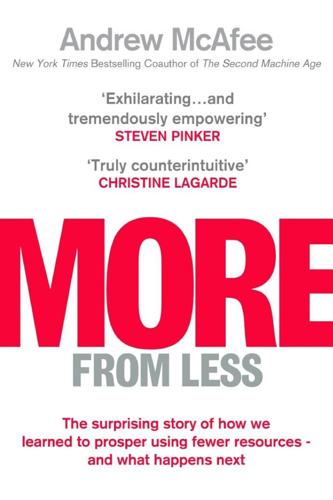
More From Less: The Surprising Story of How We Learned to Prosper Using Fewer Resources – and What Happens Next
by
Andrew McAfee
Published 30 Sep 2019
Opportunity Is Not,” Axios, March 21, 2018, https://www.axios.com/talent-is-distributed-equally-opportunity-is-not-1521472713-905349d9-7383-470d-8bad-653a832b4d52.html. Salesforce is buying enough carbon credits: Akshat Rathi, “If Your Carbon Footprint Makes You Feel Guilty, There’s an Easy Way Out,” Quartz, May 3, 2017, https://qz.com/974463/buying-carbon-credits-is-the-easiest-way-to-offset-your-carbon-footprint/. Salesforce has also announced its intentions: “Salesforce Invests in Its Largest Renewable Energy Agreement to Date, the Global Climate Action Summit, and a More Sustainable Future,” Salesforce, August 30, 2018, https://www.salesforce.com/company/news-press/press-releases/2018/08/180830/. Google reached 100 percent renewable energy for all global operations: “100% Renewable,” Google Sustainability, accessed March 25, 2019, https://sustainability.google/projects/announcement-100/.
…
The most worrying longer-term problem that we face is clearly global warming. Companies are obviously huge contributors to this problem. Are they also contributing meaningfully to solutions? In some sectors, they are. The software company Salesforce is buying enough carbon offsets to make up for all the CO2 produced by its data centers around the world. Because of this, all of Salesforce’s cloud computing customers can now say that their interactions with the company are carbon neutral. Salesforce has also announced its intentions to move away entirely from fossil fuel energy sources by 2022. Other large technology companies, including Apple, Facebook, and Microsoft, have similar plans.
…
—Marc Andreessen, cofounder of Netscape and Andreessen Horowitz “In More from Less Andrew McAfee lays out a compelling blueprint showing how we can support human life using fewer natural resources, improve the state of the world, and replenish the planet for centuries to come.” —Marc Benioff, chairman and co-CEO of Salesforce “A must-read—timely and refreshing! Amid the din of voices insisting that the ravages of climate change are unstoppable, McAffee offers a desperately needed nuanced perspective on what governments and society have got right, and he compellingly argues that commendable progress has already been made.
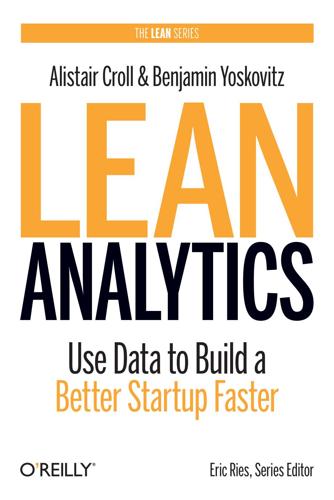
Lean Analytics: Use Data to Build a Better Startup Faster
by
Alistair Croll
and
Benjamin Yoskovitz
Published 1 Mar 2013
Products that boost revenues are easier for people to believe in—just look at lotteries and get-rich-quick schemes versus savings plans and life insurance. Eventbrite and Kickstarter know this. An ecosystem will form around you. This is similar to the platform model. Salesforce and Photoshop are good examples of this: Salesforce’s App Exchange has thousands of third-party applications that make the CRM (customer relationship management) provider more useful and customizable, and Photoshop’s plug-in model added features to the application far more quickly than if Adobe had coded them all itself.
…
You can find him on Twitter as @acroll, or email him at alistair@solveforinteresting.com. Ben Yoskovitz is an entrepreneur with more than 15 years of experience in web businesses. He started his first company in 1996 while completing university. In 2011, he joined GoInstant as VP Product. The company was acquired in September 2012 by Salesforce.com, and he continues in his role with GoInstant and Salesforce.com. Ben has been blogging since 2006. His Instigator Blog (http://instigatorblog.com) is recognized as one of the top blogs on startups and entrepreneurship. Ben is also an active mentor to numerous startups and accelerator programs. He regularly speaks at startup conferences and events, including the Michigan Lean Startup Conference, the Internet Marketing Conference, and the Lean Startup Conference.
…
Rose, Kevin, Measuring the MVP Rubicon Consulting, Content Creation and Interaction The Rules of Work (Pearson), Span of Control and the Railroads Rumsfeld, Donald, Eight Vanity Metrics to Watch Out For Running Lean (Maurya), Running Lean and How to Conduct a Good Interview S SaaS (Software as a Service) model about, Model Two: Software as a Service (SaaS) Backupify case study, Backupify’s Customer Lifecycle Learning ClearFit case study, ClearFit Abandons Monthly Subscriptions for 10x Growth key takeaways, Wrinkles: Freemium, Tiers, and Other Pricing Models measuring metrics in, Model Two: Software as a Service (SaaS), Paid Enrollment OfficeDrop case study, OfficeDrop’s Key Metric: Paid Churn ROI in, The Penny Machine stage comparisons in, Model + Stage Drives the Metric You Track upselling in, Model Two: Software as a Service (SaaS), Content Creation and Interaction, Freemium Versus Paid user flow depicted through, Churn Complications wrinkles in, ClearFit Abandons Monthly Subscriptions for 10x Growth Sack, Andy, Getting Answers at Scale Salesforce, The Minimum Viable Vision Salesforce.com, What DuProprio Watches Scale stage (Lean Analytics) about, What Stage Are You At?, Stage Five: Scale Buffer case study, Is My Business Model Right? business model comparisons, Model + Stage Drives the Metric You Track business model considerations, The Hole in the Middle depicted, The Lean Analytics Stages and Gates enterprise startups and, Revenue: Direct Sales and Support exercise for, Buffer Goes from Stickiness to Scale (Through Revenue) hole in the middle problem, Stage Five: Scale intrapreneurs and, Revenue Within the Ecosystem metrics for, The Hole in the Middle summary of, A Summary of the Scale Stage usage example, What Stage Are You At?
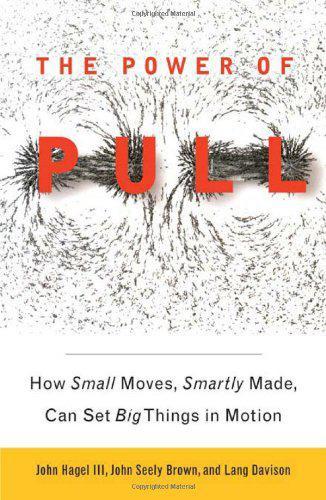
The Power of Pull: How Small Moves, Smartly Made, Can Set Big Things in Motion
by
John Hagel Iii
and
John Seely Brown
Published 12 Apr 2010
Although shaping views must acknowledge the uncertainty on the broader business landscape and provide sufficient room for experimentation and innovation, they also must offer a more tangible focus in terms of where to invest. Salesforce.com provides a more recent example of a shaping view at work. Started by Marc Benioff less than a decade ago, Salesforce.com has emerged as a highly successful maker of software for companies. It started with a focus on salesforce automation and customer-relationship management applications. In less than a decade, Salesforce.com has become a public company with a market capitalization of almost $7 billion. It has nearly tripled its revenue over the past three years, and it mobilized more than 700 independent applications on the application platform that it recently introduced.
…
At a time when the established competition was focusing on creating big applications to help companies manage their internal operations, this was a startlingly different view of the future. When many were wondering about the future of the enterprise-application software market, this shaping view suggested lots of opportunity for specialized players to enter the market and a new focus for investment by existing players. Of course, it helped that Salesforce.com just happened to have a new online service supporting salesforce automation. But to anyone who heard Benioff it was clear that this was not just a salespitch, but instead a very different view of where the software business was headed, one with much broader implications than just for his company. He was imagining a very different view of the future, and he was a tireless evangelist for this perspective.
…
And if you understood that your success in doing this could be enhanced by persuading many other individuals and institutions to follow your lead, how confident would you be that you could prevail? In the business world, it has been exceptional individuals who have managed to reshape the terms of competition in markets, industries, and even entire economic sectors. In Salesforce.com’s early years, for example, founder and CEO Marc Benioff painted a compelling view of how to reshape the software industry around a new form of delivery: software as a service. The Fung brothers revolutionized supply-chain practice in the apparel industry. Malcom McLean led Sea-Land to a preeminent position in the containerized shipping business by driving standardization around his innovative container designs.
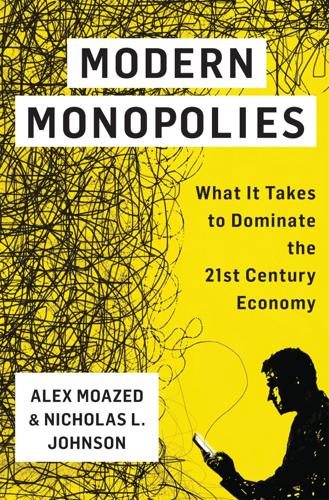
Modern Monopolies: What It Takes to Dominate the 21st Century Economy
by
Alex Moazed
and
Nicholas L. Johnson
Published 30 May 2016
Yet years later, in the early 2000s, along came Salesforce.com, which undercut these companies by distributing its software over the Internet. At the time, Salesforce CEO Marc Benioff called this “the end of software.” What he really meant was that it was the end of traditional, expensive software and the beginning of software as a service (SaaS)—essentially cloud software that can be accessed cheaply over the Internet. But over time, Salesforce’s larger competitors started to create SaaS offerings, and Salesforce needed to continue to differentiate itself. What was Benioff’s answer? Build a development platform. Salesforce created its Force.com development platform and AppExchange app store, which it launched in 2006.
…
Salesforce created its Force.com development platform and AppExchange app store, which it launched in 2006. The company heavily invested in creating a third-party software ecosystem around its core applications. Today, its app store has millions of app downloads and is an important part of Salesforce’s value proposition. Other cloud software industries have evolved in a similar manner, such as cloud data storage and so-called infrastructure-as-a-service (IaaS) companies. Both Google App Engine and Amazon Web Services have robust development platforms with thousands of available apps and integrations. Healthcare software is another great example of this trend.
…
Brian, 21 AT&T, 11, 106–7, 196 athenahealth, 79 Auction Web, 21 Auctionata, 15 audience building: defined, 239; do-or-die nature of, 132; explained, 126–27; hacking networks for growth, 129–31; importance of, 154; liquidity and, 132, 192; Operation SLOG, 127–29; PayPal and, 131–32; platform category and, 47; Uber and, 152 Baidu, 19, 30, 95, 97–99, 105, 220–22 Balsillie, Jim, 7–11, 13–15 BAT, 221 Beanie Babies, 28 Benchmark, 81, 142 Benioff, Marc, 79 Best Buy, 23 Best Use of Resources, The (Kantorovich), 52 Bilton, Nick, 142, 159–60 Bing, 99; see also Microsoft BlackBerry, 7–15, 81, 141; App World, 13; Storm, 12–13 Booking.com, 203 Boston Consulting Group, 56, 240 Breeze, 205 “bring your own device” (BYOD) policies, 9 Buffet, Warren, 80 burning platform, 2–5, 7 business models, explained, 22–25 Büyükkükten, Orkut, 122, 173 capitalism: competition and, 74–75; platform capitalism, 99–100 CD-ROMs, 62, 67 central planning, 52–55, 60–61, 70, 72–73 Chatroulette, 159–61, 164, 167, 169, 174, 186, 239 Chesky, Brian, 130–31, 150 chicken-and-egg problem: monetary subsidies, 196–97; monetary subsidies and product features, 199–201; product features, 197–98 cloud computing, 32–33, 66, 77, 79–80 Club Nexus, 122, 173 Coase, Ronald, 36, 55–56, 58, 60, 69–70 Cold War, 74 collaboration, 184–86 Color, 189–90 Comcast, 18, 102 commoditization, 44–47, 212, 231, 239 communication, 183 community, 185–86 competition, 53, 66, 74–75, 90–91, 99, 103, 106, 222 Competitive Advantage (Porter), 58 “Computer and the Market, The” (Lange), 61 connection, 30, 39–41, 46, 69, 74, 87, 101, 112, 116–17, 127, 161–62, 166–72, 183 connectivity, 64–66, 70 coordination cost, 36, 59 core tools and services, 40, 126, 146–57 core transaction: compensate, 115–16; connect, 114; consume, 114–15; create, 113–14; diagram, 39; exchange platforms, 118; explained, 39, 111–12; four actions of, 113; maker platforms, 118–19; platform types and, 43–47; steps, 116–17; Tinder and, 119–20 Costolo, Dick, 141, 143 Craigslist, 129–31, 198 Crocodile in the Yangtze, 97 curation, 183–84 data analytics, 66 decentralization, 34, 52–56, 61, 63, 66, 68, 70, 72–74, 89, 146, 233–34 democratization of processing power and storage, 65–66 Dentasoft, 77–79 Dentistry.com, 78 Didi Kuaidi, 99 digital advertising, 106 Doctor on Demand, 80, 228 Dorsey, Jack, 142 dotBank, 131 dot-com era, 20–22, 26, 29, 31–32, 63–64, 67, 79, 175, 214, 226–27 Dropbox, 82, 203 EachNet, 96 eBay, 6, 19, 21–22, 27–30, 41, 70, 95–100, 116, 131–32, 144, 150, 213–14, 221 eClinicalWorks, 79 e-commerce, 19, 29, 96–99, 104, 204, 221, 224, 227 economies of scale, 56, 59–60, 68, 72, 75, 86, 103, 240 ecosystems: competition and, 13, 221–22; enterprise software and, 79; monetary subsidies and, 199; open, 10; value and, 69, 92, 111, 152–54; war of, 3, 7, 15 efficiency, 18, 24, 52, 55–56, 79, 86, 89, 103, 147–48, 228, 230 electronic medical record (EMR) systems, 79–80 Elop, Stephen, 1–5, 7 Encarta, 62, 68; see also Microsoft Encyclopaedia Britannica, 62, 67–68, 85 encyclopedias, 62, 68, 85 enterprise software, 78–80 entrepreneurship, 63, 77, 109–10, 146, 157, 175, 181, 189, 220 Epic Systems Corp., 79 Erisman, Porter, 97–98 Etsy, 19, 77–78, 93, 115, 200 European Union, 100 Evans, Benedict, 203 Evans, David S., 95 expanding markets ExxonMobil, 22, 60 Facebook: Adyen and, 203; competition and, 74, 174; core transaction and, 118; data and, 70. 72; derivative businesses and, 206; Facebook Home, 220; GitHub and, 35; growth, 67, 224; identity and, 178–80; Messenger, 218–20; network effects, 170–74, 183; open source and, 33; privacy and, 106–8, 155; simplicity and, 122–23; success, 18–19, 30, 81, 164–67, 212; terminal decline and, 209–10; transactions and, 37, 149, 153–54; value, 30; Twitter and, 139, 142–44; Zynga and, 207–9 Farmville, 207–8, 218 Financial Times, 3 firm, theory of, 55–61 Flickr, 18, 155 Force.com, 79; see also Salesforce Ford, 7, 14, 24–25, 60, 112 fragmentation, 103, 220, 226–28, 230, 235 Garden.com, 64 Gebbia, Joe, 109, 131 General Electric, 22, 60, 231 General Motors (GM), 22, 24–25, 60 GitHub, 35–38, 41 Glamsquad, 15, 45, 156 Gooden, Dave, 130 Goodrow, Cristos, 135–36 Google: Gmail, 129, 174; Google Ventures, 15; Nest, 6; Orkut, 122, 173, 221; Play Store, 12, 197, 220–21; Search, 6, 73, 135, 151, 154, 221; see also Android government regulations, 80, 101–2, 106, 108, 152, 203, 213–17, 229–30, 232, 234–35 graphical user interfaces (GUIs), 35 Greenspan, Aaron, 123 Gross, Bill, 141 Gurley, Bill, 81, 93, 142–43 Handy, 30, 32, 45–46, 90–93, 116, 145, 149–51, 156, 181, 194, 199, 216, 220 Hanrahan, Oisin, 90 harassment, social media and, 143 Harlow, Jo, 2–3 Hatching Twitter (Bilton), 142 Hayek, Friedrich, 53–55, 59, 61, 63, 70–73 Heins, Thorsten, 7–8 Henderson, Bruce, 56–60, 69, 72 Homejoy, 91–92, 177 houseSYSTEM, 122–23, 147 Hyatt, 87 IBM, 33, 71, 235 information goods, 85 infrastructure-as-a-service (IaaS), 79 inputs/outputs, 58, 111–12, 117 Instacart, 32, 147–49, 216 Instagram, 30, 46–47, 81, 107, 114, 119, 144, 146, 194, 201, 221, 229 investors, 21–22, 63, 77, 81–83 iPhone, 1–2, 8–14, 38, 141, 196, 211; see also Apple IPOs, 20–22, 29–30, 154, 209, 217 iTunes, 6, 11, 221; see also Apple Jackson, Eric M., 132 James Bond, 49, 54 Jobs, Steve, 11, 13–15 J.P.

Stakeholder Capitalism: A Global Economy That Works for Progress, People and Planet
by
Klaus Schwab
Published 7 Jan 2021
Remain in Crisis,” Heather Knight, San Francisco Chronicle, 2014, https://www.sfchronicle.com/archive/item/A-decade-of-homelessness-Thousands-in-S-F-30431.php. 24 Trailblazer, Marc Benioff, October 2019, pp. 12–13. 25 “Marc Benioff Says Companies Buy Each Other for the Data, and the Government Isn't Doing Anything about It,” April Glaser, Recode., November 2016, https://www.vox.com/2016/11/15/13631938/benioff-salesforce-data-government-federal-trade-commission-ftc-linkedin-microsoft. 26 Trailblazer, Marc Benioff, October 2019, pp. 12–13. 27 “You Deserve Privacy Online. Here's How You Could Actually Get It,” Tim Cook, TIME Magazine, January 2019, https://time.com/collection/davos-2019/5502591/tim-cook-data-privacy/. 28 “Big Tech Needs More Regulation,” Mark Zuckerberg, Financial Times, February 2020, https://www.ft.com/content/602ec7ec-4f18-11ea-95a0-43d18ec715f5. 29 “Benioff Comes Out Strong for Homeless Initiative, although Salesforce Would Pay Big,” Kevin Fagan, San Francisco Chronicle, October 2018, https://www.sfchronicle.com/bayarea/article/Benioff-comes-out-strong-for-homeless-initiative-13291392.php. 30 “The Social Responsibility of Business,” Marc Benioff, The New York Times, October 2018, https://www.nytimes.com/2018/10/24/opinion/business-social-responsibility-proposition-c.html. 31 “We can now measure the progress of stakeholder capitalism.
…
With a global economic system generating deep divisions and inequalities, Klaus renews his call for a form of capitalism that works for everyone and where businesses don't just take from society but truly give back and have a positive impact. Stakeholder Capitalism is an urgent call to action.” —Marc Benioff, Chair and CEO, Salesforce “If you think this is just another pre-COVID/post-COVID book, think again. Klaus Schwab draws on his vast experience to take us on a roller-coaster ride past the highs and lows of post-war capitalism. His knack for economic storytelling gives you a real and deep insight into where we are headed and what we should be aiming for.”
…
They choose products and solutions that hurt the environment less, rather than more, and they opt for study and work careers that could be a part of the solution, rather than the problem. This shift in attitude is affecting all layers of society. It made Microsoft commit to offsetting not just its current and future CO2 emissions, for example, but those of the past as well. It made Marc Benioff, co-CEO of Salesforce and a member the World Economic Forum's board of trustees, declare at our 2020 Annual Meeting that “Capitalism, as we know it, is dead,” suggesting instead companies adhere to the stakeholder model and a better stewardship of the environment. And it made Larry Fink, the CEO of BlackRock, tell CEOs and clients that “every government, company, and shareholder must confront climate change” and that his firm is in the process of “removing, from its actively managed portfolios, stocks and bonds of companies that get more than 25% of their revenue from thermal coal production.”

Stakeholder Capitalism: A Global Economy That Works for Progress, People and Planet
by
Klaus Schwab
and
Peter Vanham
Published 27 Jan 2021
Remain in Crisis,” Heather Knight, San Francisco Chronicle, 2014, https://www.sfchronicle.com/archive/item/A-decade-of-homelessness-Thousands-in-S-F-30431.php. 24 Trailblazer, Marc Benioff, October 2019, pp. 12–13. 25 “Marc Benioff Says Companies Buy Each Other for the Data, and the Government Isn't Doing Anything about It,” April Glaser, Recode., November 2016, https://www.vox.com/2016/11/15/13631938/benioff-salesforce-data-government-federal-trade-commission-ftc-linkedin-microsoft. 26 Trailblazer, Marc Benioff, October 2019, pp. 12–13. 27 “You Deserve Privacy Online. Here's How You Could Actually Get It,” Tim Cook, TIME Magazine, January 2019, https://time.com/collection/davos-2019/5502591/tim-cook-data-privacy/. 28 “Big Tech Needs More Regulation,” Mark Zuckerberg, Financial Times, February 2020, https://www.ft.com/content/602ec7ec-4f18-11ea-95a0-43d18ec715f5. 29 “Benioff Comes Out Strong for Homeless Initiative, although Salesforce Would Pay Big,” Kevin Fagan, San Francisco Chronicle, October 2018, https://www.sfchronicle.com/bayarea/article/Benioff-comes-out-strong-for-homeless-initiative-13291392.php. 30 “The Social Responsibility of Business,” Marc Benioff, The New York Times, October 2018, https://www.nytimes.com/2018/10/24/opinion/business-social-responsibility-proposition-c.html. 31 “We can now measure the progress of stakeholder capitalism.
…
With a global economic system generating deep divisions and inequalities, Klaus renews his call for a form of capitalism that works for everyone and where businesses don't just take from society but truly give back and have a positive impact. Stakeholder Capitalism is an urgent call to action.” —Marc Benioff, Chair and CEO, Salesforce “If you think this is just another pre-COVID/post-COVID book, think again. Klaus Schwab draws on his vast experience to take us on a roller-coaster ride past the highs and lows of post-war capitalism. His knack for economic storytelling gives you a real and deep insight into where we are headed and what we should be aiming for.”
…
They choose products and solutions that hurt the environment less, rather than more, and they opt for study and work careers that could be a part of the solution, rather than the problem. This shift in attitude is affecting all layers of society. It made Microsoft commit to offsetting not just its current and future CO2 emissions, for example, but those of the past as well. It made Marc Benioff, co-CEO of Salesforce and a member the World Economic Forum's board of trustees, declare at our 2020 Annual Meeting that “Capitalism, as we know it, is dead,” suggesting instead companies adhere to the stakeholder model and a better stewardship of the environment. And it made Larry Fink, the CEO of BlackRock, tell CEOs and clients that “every government, company, and shareholder must confront climate change” and that his firm is in the process of “removing, from its actively managed portfolios, stocks and bonds of companies that get more than 25% of their revenue from thermal coal production.”
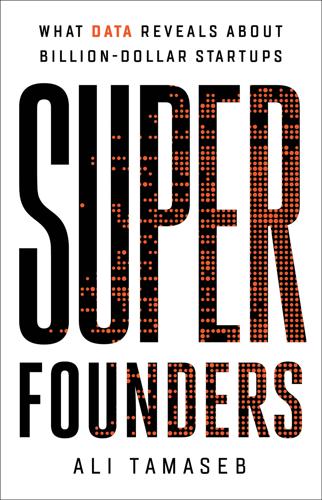
Super Founders: What Data Reveals About Billion-Dollar Startups
by
Ali Tamaseb
Published 14 Sep 2021
The startup, called Etacts, went through Y Combinator in 2010 and raised $700,000 from a range of angel investors, including Ashton Kutcher. Etacts showed promise, and after it had been operational for less than a year, Marc Benioff’s Salesforce acquired it for a rumored $25 million. Howie, then twenty-one, became an instant millionaire. Liu didn’t last long at Salesforce. He wanted to start something new; it was only a matter of what. He thought about the spreadsheets he saw at Salesforce, and how so many of them were cluttered, haphazard containers for various data. A spreadsheet worked well for numerical analysis or financial calculations, but most people were using them for purely organizational purposes.
…
Rachel King, “How Aaron Levie and His Childhood Friends Built Box into a $2 Billion Business, Without Stabbing Each Other in the Back,” TechRepublic, March 6, 2014, www.techrepublic.com/article/how-aaron-levie-and-his-childhood-friends-built-box-into-a-2-billion-business-without-stabbing-each-other-in-the-back/. CHAPTER 5: THE ORIGIN STORY 1. Ari Levy, “How Okta’s CEO Convinced His Wife in 2008 That He Should Leave Salesforce to Start a Company,” CNBC, December 26, 2019, www.cnbc.com/2019/12/26/how-okta-ceo-todd-mckinnon-convinced-wife-he-should-leave-salesforce.html. 2. Y Combinator, “DoorDash’s Application Video for YC S13,” YouTube, December 9, 2020, www.youtube.com/watch?v=Rzlr2tNSl0U. 3. Evan Moore, @evancharles, Twitter, December 9, 2020, https://twitter.com/evancharles/status/1336835870859485184. 4.
…
Eric Baldeschwieler was forty-six when he started Hortonworks, a multibillion-dollar big-data startup built around open-source Hadoop software. He’d built and managed the Hadoop team at Yahoo before venturing out. Todd McKinnon was thirty-seven when he started the identity-management company Okta; by then, he was running a hundred-person engineering team at Salesforce. There’s an even wider age distribution among founding CxOs, the term I use to describe the second-ranking person in the company. Most often, this role is filled by the chief technology officer or CTO, but it can sometimes be a chief scientific officer, chief medical officer, or, in more traditional sectors, a chief operating officer.
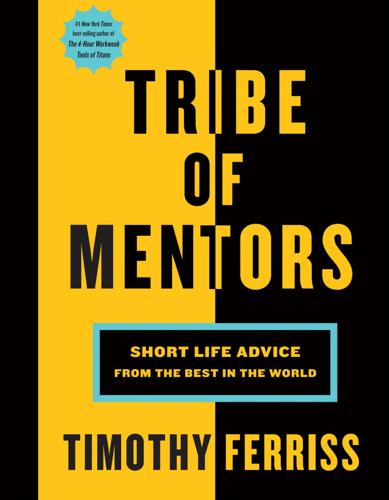
Tribe of Mentors: Short Life Advice From the Best in the World
by
Timothy Ferriss
Published 14 Jun 2017
I ended up in Larry Ellison’s old office, which he didn’t entirely clean out, leaving behind some 40 copies of The Mythical Man-Month.” Marc Benioff TW: @Benioff salesforce.com MARC BENIOFF is a philanthropist and chairman and CEO of Salesforce. A pioneer of cloud computing, Marc founded the company in 1999 with a vision to create an enterprise software company with a new technology model based in the cloud, a new pay-as-you-go business model, and a new integrated corporate philanthropy model. Under his leadership, Salesforce has grown from an idea into a Fortune 500 company, the fastest-growing top five software company in the world, and the global leader in CRM.
…
Later we became anchor tenants in office buildings all over the world—in London, New York, San Francisco, Munich, and Paris. Each of these buildings is not only named Salesforce Tower, but we also took the top floor along with some lower floors. I learned from that experience in Japan to leverage a real estate strategy for Salesforce. It’s an example of how I learned that if I’m upset about something, I should spend time asking myself, “What could I learn?” Because another opportunity is probably going to come in the future, and I will be better able to re-execute it. We are keeping the top floors of the Salesforce Towers open space—we call them “Ohana” floors. Ohana is the Hawaiian word for “family,” and for us, this includes employees, customers, partners, and the community.
…
Larry had given this book to every software executive whom he met within the company. This short book says that to write great software, do it in small teams; having 100 or 1,000 or 2,000 developers won’t make it happen. Ironically, when we first started Salesforce and started to have some success, I remember that Oracle, now a competitor, had 2,000 CRM developers and asked, in essence, “How would Salesforce ever beat us?” I would say it’s because of The Mythical Man-Month. Small teams will always outperform large teams in software. It was serendipitous that I found the book in Larry’s drawer. A third influential book is The Good Heart by the Dalai Lama.
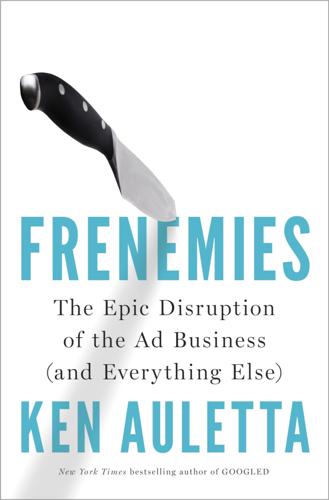
Frenemies: The Epic Disruption of the Ad Business
by
Ken Auletta
Published 4 Jun 2018
On the other hand, Silicon Valley companies like Oracle are not renowned for staying in their lane. Salesforce.com has clearly veered into the agency lane. Entering 2016, Salesforce.com had acquired four companies—ExactTarget, Buddy Media, Radian6, and Brighter Option—to erect a marketing cloud. They aimed to serve as “the brain” for clients, assembling customer data, devising content messages to reach consumers, making these messages addressable to targeted individuals, and linking consumers directly with brands. Surveying tech companies who have jumped into cloud marketing, an April 2016 report by Pivotal analyst Brian Wieser concluded, “Salesforce.com appears best positioned to compete as a brain for marketers . . . and it contributes to our expectation that Salesforce.com should be the fastest-growing company in our coverage over extended periods of time
…
While pacing his all-white, bare-walled London townhouse office, he says, “You’ve got layers. You’ve got our direct competitors, like Omnicom. You’ve got the frenemies, let’s call them Facebook and Google principally. You’ve got the consulting companies, like Deloitte, McKinsey, et cetera. And then you’ve got the software companies, like Salesforce.com and Oracle and Infosys, and Indian software companies.” He combats new threats by aggressively investing in digital upstarts and jettisoning companies whose economic performance lags. “We’ve invested in Vice. We’ve invested in Fullscreen. We’ve invested in Refinery29,” each a digital company.
…
Kassan as a personal investor and MediaLink in its role as strategic adviser were paid a bounty for steering the sale of two longtime clients—Maker Studios, a producer of digital video content, to Disney for $700 million, and Buddy Media, a company that creates an advertising infrastructure across social media platforms, to Salesforce.com for $850 million. “Our role in that space,” Kassan explains, “has been enhanced because we are, fortunately, a very credible resource for people who have businesses that are premised on advertising as one of the primary revenue sources. It is good to have someone who is not just a banker but who can validate the business opportunities.”
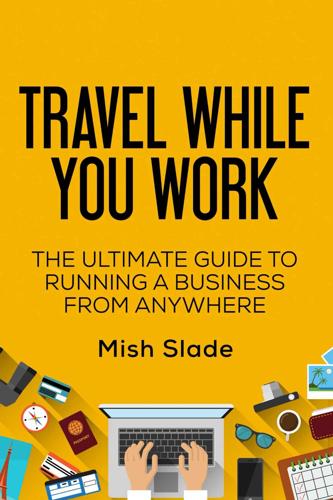
Travel While You Work: The Ultimate Guide to Running a Business From Anywhere
by
Mish Slade
Published 13 Aug 2015
I knew I needed to make a change, but wasn't sure what that change was until I read The 4-Hour Work Week (www.worktravel.co/workweek) and started learning more about entrepreneurship. How do you stay productive? I use programs such as Trello (www.worktravel.co/trello) and Salesforce (www.worktravel.co/salesforce). With Trello, I love nothing more than moving notes from "Current Sprint", to "Doing", to "Done". With Salesforce, I live by the automated reminders and adore how organized it keeps our team. [See Chapter 7: Run The Best Biz for more about using Trello.] What does a typical day look like for you? A typical day involves getting up around 8am, eating breakfast and drinking coffee (I'm addicted), and starting my work day around 9am.
…
From a personal perspective, maintaining relationships with old friends who do not understand my new life and work habits. What tools, equipment or tactics do you rely on for working while travelling? Without Skype, Salesforce, Trello, Google, Slack, and Evernote I would be lost. Each plays a key role in how I communicate with leads, customers, and other team members on a daily basis. Skype: www.worktravel.co/skype Salesforce: www.worktravel.co/salesforce Trello: www.worktravel.co/trello Slack: www.worktravel.co/slack Evernote: www.worktravel.co/evernote Which countries/cities would you recommend for people who are new to travelling while they work?
…
To explain how it works, here's an example of a "Zap": When I receive a new email in Gmail, send me an SMS message. The first part (receiving a new email) is the trigger. The second part (sending an SMS message) is the action. Together they form the Zap. Here are some more examples: When I get a new entry from a Wufoo form, create a new lead in Salesforce. When I label an email in Gmail, subscribe them to a MailChimp mailing list. When a new file is added to Google Drive, copy it to Dropbox. When a Google Calendar event is taking place tomorrow, send a Slack notification. Zapier supports over 500 apps – many of which you probably already use – and they work together in ingenious ways.
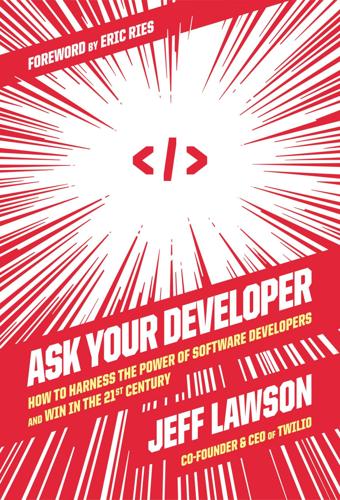
Ask Your Developer: How to Harness the Power of Software Developers and Win in the 21st Century
by
Jeff Lawson
Published 12 Jan 2021
This problem got solved when the second era of software—Software as a Service (SaaS)—began, about twenty years ago. The company that pioneered this model is Salesforce. Its founder and CEO, Marc Benioff, interned as an assembly language programmer at Apple (translation: he was a hard-core coder) and after university joined Oracle, where he quickly became a legendary salesman. He won Rookie of the Year and was promoted to vice president while in his mid-twenties, the youngest ever at Oracle. In 1999 he launched Salesforce with the slogan “The End of Software.” Of course it wasn’t actually the end of software—it was just a new way of delivering software.
…
When you stopped needing the software, you ended your subscription, not unlike a magazine subscription. When Salesforce started out, in 1999, a lot of people thought Benioff was nuts. Why would anyone pay for software but never actually take possession of it? What would happen if the Internet went down? Remember that in those days the Internet wasn’t speedy and reliable enough for SaaS. By 2001, only 6 percent of Americans had broadband Internet access. Most connected via squonky dial-up modems, according to the Pew Research Center. But Benioff knew the Internet would get better and more robust. As high-speed Internet became the norm, Salesforce took off, growing into one of the largest software companies in the world, with 2019 revenues of $17 billion in its 2020 fiscal year.
…
Jeff’s long-term vision for the company and his skill at bringing together incredibly talented people are the reasons that so much of the hidden infrastructure our lives now run on works seamlessly and elegantly. Twilio is what allows you to text your Uber driver or order a pizza online. It’s built into Hulu and Twitter and Salesforce to help with communication and information sharing. It plays roles in the real estate industry and health care, as well as numerous nonprofits and relief organizations. It’s helping businesses that never imagined themselves as digital companies make extraordinary transformations and grow under intense pressure to evolve or face their own demise.
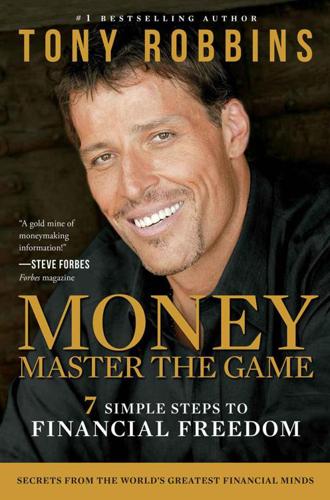
MONEY Master the Game: 7 Simple Steps to Financial Freedom
by
Tony Robbins
Published 18 Nov 2014
—David Bach, nine-time New York Times–bestselling author; titles include The Automatic Millionaire, Start Late, Finish Rich, Smart Women Finish Rich, and Smart Couples Finish Rich; founder of FinishRich.com “We’ve been selected by Forbes as the most innovative company in the world for four consecutive years. Our revenues are now over $5 billion annually. Without access to Tony and his teachings, Salesforce.com wouldn’t exist today.” —Marc Benioff, founder, chairman, and CEO of Salesforce.com “Tony’s power is superhuman . . . He is a catalyst for getting people to change. I came away with: It’s not about motivation as much as it is allowing people to tap into what’s already there.” —Oprah Winfrey, Emmy Award–winning media magnate “Tony Robbins’s coaching has made a remarkable difference in my life both on and off the court.
…
I soon began to model everything in my life, my work, and my future simply by asking these basic questions and recording my answers. What happened was amazing. On March 8, 1999, the first day that we started Salesforce.com, we wrote a V2MOM, and today all of our 15,000 employees are required to do the same thing. It creates alignment, awareness, and communication, and it’s all based on what Tony has taught me over the last two decades. Tony says repetition is the mother of skill—that’s where mastery comes from—and so we keep writing and improving our V2MOMs. It’s one of the reasons Forbes magazine just named Salesforce.com the “World’s Most Innovative Company” for the fourth year in a row, and Fortune magazine says we are the “World’s Most Admired” software company, as well as the seventh “Best Place to Work” in 2014.
…
* * * Join our mailing list and get updates on new releases, deals, bonus content and other great books from Simon & Schuster. CLICK HERE TO SIGN UP or visit us online to sign up at eBookNews.SimonandSchuster.com CONTENTS * * * Epigraph Foreword by Elliot Weissbluth, founder and CEO of HighTower Introduction by Marc Benioff, founder and CEO of Salesforce.com SECTION 1 WELCOME TO THE JUNGLE: THE JOURNEY BEGINS WITH THIS FIRST STEP Chapter 1.1: It’s Your Money! It’s Your Life! Take Control Chapter 1.2: The 7 Simple Steps to Financial Freedom: Create an Income for Life Chapter 1.3: Tap the Power: Make the Most Important Financial Decision of Your Life Chapter 1.4: Money Mastery: It’s Time to Break Through SECTION 2 BECOME THE INSIDER: KNOW THE RULES BEFORE YOU GET IN THE GAME Chapter 2.0: Break Free: Shattering the 9 Financial Myths Chapter 2.1: Myth 1: The $13T Lie: “Invest with Us.
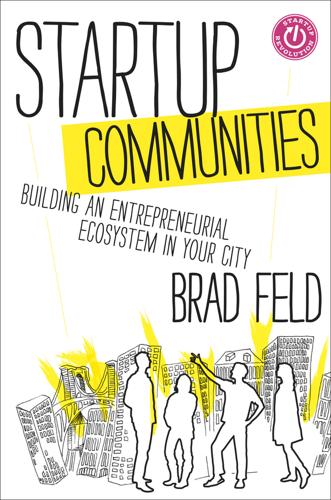
Startup Communities: Building an Entrepreneurial Ecosystem in Your City
by
Brad Feld
Published 8 Oct 2012
I began an exploration to understand what other people around the United States were doing to bring corporate social responsibility into their startups. I noticed the great work the Marc Benioff (Salesforce.com CEO) and Suzanne DiBanca (Salesforce.com Foundation Executive Director) were doing. They had a model of 1/1/1 where they gave 1 percent of equity, 1 percent of time, and 1 percent of product to the Salesforce.com Foundation contribute back to their community in exchange for the support their community had given them in launching their company. When we started Rally Software, we set aside 1 percent of our equity for the community.
…
It’s uniquely Boulder and a great opportunity for everyone in and interested in the Boulder startup community to engage deeply with each other for one week a year. ENTREPRENEURS FOUNDATION OF COLORADO When entrepreneurs are successful, they often want to give back to the community in some way. Ryan Martens, the co-founder of Rally Software, came up with a great model inspired by what he’d observed Marc Benioff do with the Salesforce.com Foundation. When my previous startup, Avitek, was acquired in 1999, we missed a huge opportunity to talk about the role, benefit, and responsibility of leaders to make our community better as part of our commercial efforts. With our financial windfall, I turned to our local community foundation to figure out how to start making a difference locally.
…
The Entrepreneurs Foundation helps guide this, by providing education about opportunities, building skills-based volunteering efforts to develop leaders, and exploring strategic opportunities for the companies’ products and services. We treated this effort as a bootstrapped startup. We focused on finding the right people to get involved early while keeping expenses close to zero. We leveraged help from the Community Foundation Serving Boulder County, the other Entrepreneurs Foundation affiliates, and the Salesforce Foundation. We started with a few board meetings, two recruiting events, and a few volunteering efforts each year. Over the first five years, we had several significant exits, a small portion of which was allocated to the Entrepreneurs Foundation of Colorado Operating fund, enabling us to hire an executive director.
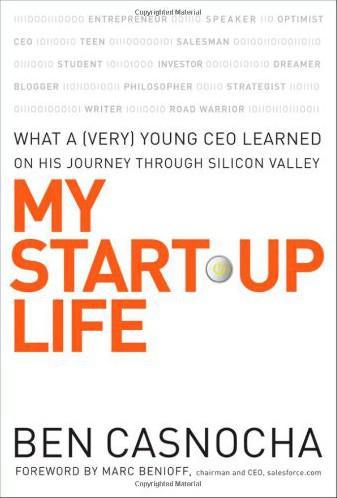
My Start-Up Life: What A
by
Ben Casnocha
and
Marc Benioff
Published 7 May 2007
. • You have received substantial press coverage as well as multiple entrepreneur awards and listings; Comcate has been featured in hundreds of media outlets and I was recently honored to be named in France among the “25 Who Are Changing the World of Internet and Politics.” BUILDING ME, INC. 129 • You spoke at the Always-On Conference over the summer; I spoke at the Always-On Conference on the panel on digital music. • You have the SalesForce.com Foundation; I have the Comcate Foundation for Teen Entrepreneurship. We’re both interested in philanthropy. • Comcate uses SalesForce.com Team Edition. I have feedback for you. • You’re a successful entrepreneur, you have feedback and advice for me. I tried to show I’d done my homework. It worked. There’s no excuse not to make a first-time interaction rich. With blogs and Google, every cold call can be warm.
…
Brainstorm: Entrepreneurs Are Optimists Brain Trust: Let Your Heart Guide You, by Timothy J. Taylor Appendix A: What’s Next Appendix B: A One-a-Day, One-Month Plan to Becoming a Better Entrepreneur Appendix C: Ben’s Reading List Acknowledgments Endnotes The Author 170 171 173 175 179 183 185 189 Foreword By Marc Benioff Founder, Chairman, and CEO, Salesforce.com There’s a revolution going on in business today. Thanks to new technologies, and especially the internet, we are living in a time when creative people can start and build their own businesses more easily and more efficiently than ever before. The entrepreneurial companies spawned in the past decade have become the power behind older and bigger corporations and have changed the way traditional organizations operate.
…
Ben introduced himself as the founder and chairman of Comcate, the leading provider of web-based software for public agencies. I was familiar with Comcate as a terrific service that successfully helps organizations improve customer service and increase staff efficiency. Comcate was also a customer of my company, salesforce.com. Ben wrote saying that he had some feedback for me. I am always eager to listen to customer insights; this has been tremendously helpful in improving our products and building our business. I was also intrigued because Ben mentioned that we had a lot in common. Both Ben and I were founders and chairmen of San Francisco–based technology companies.
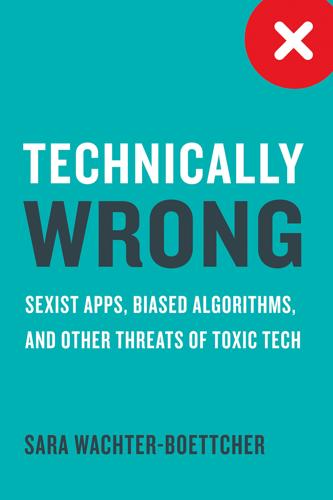
Technically Wrong: Sexist Apps, Biased Algorithms, and Other Threats of Toxic Tech
by
Sara Wachter-Boettcher
Published 9 Oct 2017
In 2016, Alphabet (Google’s parent company) turned them down. Then, so did both Salesforce and Disney—both, at least in part, because of Twitter’s reputation for harassment. According to sources who spoke with Bloomberg, Disney pulled out of talks “out of concern that bullying and other uncivil forms of communication on the social media site might soil the company’s wholesome family image.” 26 Around the same time, CNBC’s Mad Money host Jim Cramer said that Salesforce CEO Marc Benioff was turned off of the company by “the hatred,” and said Salesforce was concerned that “the haters reduce the value of the company.” 27 As of this writing, Twitter is still releasing update after update finally aimed at curbing abuse on the platform.
…
Alex Sherman, Christopher Palmeri, and Sarah Frier, “Disney Dropped Twitter Pursuit Partly over Image,” Bloomberg, October 17, 2016, https://www.bloomberg.com/news/articles/2016-10-17/disney-said-to-have-dropped-twitter-pursuit-partly-over-image. 27. Eugene Kim, “Twitter Trolls Were Part of the Reason Why Salesforce Walked Away from a Deal,” Business Insider, October 17, 2016, http://www.businessinsider.com/twitter-trolls-caused-salesforce-to-walk-away-from-deal-2016-10. 28. Twitter Safety, Twitter post, February 13, 2017 (1:02 p.m.), https://twitter.com/TwitterSafety/status/831247282544599040. 29. Ariel Bogle, “Twitter Launches, and Then Kills, an Anti-abuse Effort within Hours,” Mashable, February 13, 2017, http://mashable.com/2017/02/13/twitter-list-notifications-abuse/#Fd1zC9Wl3mqd. 30.
…
See also diversity and COMPAS, 120, 125–129, 136 and default settings, 37, 61 and facial-recognition software, 137 and form field design, 50, 59–62 and Google’s photo autotagging, 129–130, 129, 130, 132–133, 135–138 and meritocracy of tech, 173–174, 176, 180 as microaggressions, 72–73 and Nextdoor’s Crime and Safety report, 68–71, 71, 73–74 and normalizing TV programming, 47–48 and personas, 45–46 and photographic technology, 133–135 and proxy data, 112–113 and Reddit, 161–163 and team performance, 184–186 and tech educational pipeline, 21–26, 181–184 in tech industry, 13, 17–18, 20, 200 on Twitter, 151, 154 and Twitter’s executive leadership, 157–158 and word-embedding systems, 141 rape, and smartphone personal assistants, 6–7, 7 recruiting, 23–26 Reddit, 149–150, 160–164, 166 regulation, tech industry’s desire to avoid, 187–189, 199 Relman, John, 112 retweets, 156 Rhimes, Shonda, 47–48 Rock, David, 189 Rock, Irvin, 95 Roof, Dylann, 141–142 Rooney, Mickey, 7, 8 Rooney, Sally, 85–86, 98 Rose, Todd, 38–39, 47 Ross, David, 186 Roth, Lorna, 134 Sacks, David, 175 Salesforce, 158 same-sex marriage, 196–198 Samsung, 6, 36 Sandberg, Sheryl, 23 Sankin, Aaron, 163 Sarkeesian, Anita, 157 Savage, Tag, 98 Scandal (TV show), 47 Seamless app, 114 search engines, 10, 138, 141–142. See also specific search engines Selby, Louise, 6, 66 Sequoia Capital, 175 sexism. See gender bias sexual abuse, and form fields, 49–50 “Shirley Cards,” 133, 134 Shrill (West), 149 Silicon Valley.
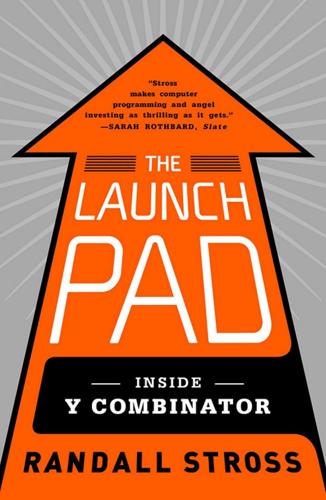
The Launch Pad: Inside Y Combinator, Silicon Valley's Most Exclusive School for Startups
by
Randall Stross
Published 4 Sep 2013
Richard Florida, “The Spread of Start-Up America and the Rise of the High-Tech South,” The Atlantic, October 2011, www.theatlantic.com/technology/archive/2011/10/the-spread-of-start-up-america-and-the-rise-of-the-high-tech-south/246916/. 16. Chris Dixon, “Selling Pickaxes During a Gold Rush,” Chris Dixon blog, February 5, 2011, http://cdixon.org/2011/02/05/selling-pickaxes-during-a-gold-rush/. 17. Robin Wauters, “Salesforce.com Buys Heroku for $212 Million in Cash,” TC, December 8, 2010, http://techcrunch.com/2010/12/08/breaking-salesforce-buys-heroku-for-212-million-in-cash/. Heroku had raised only $13 million in capital prior to its sale, so its investors enjoyed outstanding returns in a very short period of time. CHAPTER 3: GRAD SCHOOL 1. Matt Brezina, “YC: The New Grad School,” Matt Brezina blog, April 14, 2011, www.mattbrezina.com/blog/2011/04/yc-the-new-grad-school/. 2.
…
Today, Dixon argues, entrepreneurs who use the latest technology face a similar choice: they can sell to consumers—what Dixon calls “mining for gold”—or they can sell the software tools that other developers would use to create the consumer product—that is, “selling pickaxes.” Dixon mentioned that Y Combinator’s most successful “exit” to date was Heroku, the company that sold cloud-related services to other software companies, the digital era’s equivalent of selling pickaxes to miners. It was sold to Salesforce.com less than three years after its birth at YC for more than $200 million cash.17 The two MongoHQ founders cited the Dixon post in their YC application and declared, “We are selling pickaxes during a gold rush.” In the section where they were asked to explain how the founders had met and how long they had known each other, they gave answers that would be far more likely to come from older founders than younger ones: they had known each other ten years; had worked together for much of that time; and could write, “We have often been referred to by others as work wives, although we argue about who is the wife in the arrangement. :)” When they applied, they could report that MongoHQ had 5,100 accounts and about $5,500 of recurring monthly revenue.
…
By 2011, those among the thirty-two that had been acquired had brought a return of $1.34 million, or about a 10 percent gain over the two years. His rate of return could still go up: about half the companies were still alive and yet to be counted because they had not yet had an exit. Buchheit’s two best investments, each of which yielded more than a tenfold return, were Heroku, the YC startup acquired by Salesforce.com, and Mint, which had been acquired by Intuit. “Unfortunately,” he wrote, “they were also two of the smaller investments, proving that I don’t know what I’m doing, or at least showing that I need to make a point of investing more money into the best companies.”10 Having begun investing in YC companies almost from YC’s start, Buchheit pointed to several investments other than Heroku that had done well, including YC-backed AppJet, Aaron Iba’s startup that was sold to Google, and Auctomatic, which was Harj and Kulveer Taggar’s startup.

Exponential Organizations: Why New Organizations Are Ten Times Better, Faster, and Cheaper Than Yours (And What to Do About It)
by
Salim Ismail
and
Yuri van Geest
Published 17 Oct 2014
During a payback period of just 4.3 months, and with only one third of the workforce using the product, the company saw an ROI of 365 percent. Given such results, it’s not surprising that Yammer now has 8 million installations. Similarly, Salesforce’s Chatter product grew from 20,000 active networks in February 2011 to 150,000 in less than eighteen months. Further, Salesforce’s data indicates that employee engagement among companies that adopt its platform increases by 36 percent and access to information speeds up 43 percent. Employee relationship management is just one type of social object that is being information-enabled.
…
Gamification initiatives can be created from the ground up (as illustrated by EyeWire), but there are also many startups and companies providing services that an organization can simply adopt and leverage, just as Pep Boys did with Axonify. The Gamification Company provides a list with more than ninety examples, including Badgeville, Bunchball, Dopamine and Comarch. Organizations can also use work.com (a Salesforce company), in which gamification is fully integrated, or Keas, which was specifically created to improve employee wellness. Incentive competitions are another form of engagement that has been recently popularized by the X Prize Foundation and others. This engagement technique is typically used to find promising people in the crowd and move them into the community.
…
The reason we think this is important is the frame that social business expert Theo Priestley puts around it when he says, “Transparency is the new currency. Trust is the bill we’ll just be paying for.” Priestley’s equation for social business is: CONNECTION + ENGAGEMENT + TRUST + TRANSPARENCY. When it comes to advancing your business, J.P. Rangaswami, chief scientist at Salesforce, views social technology as having three key objectives: Reduce the distance between obtaining (and processing) information and decision-making. Migrate from having to look up information to having it flow through your perception. Leverage community to build out ideas. From our perspective, Social Technologies are comprised of seven key elements: Social objects, Activity streams, Task management, File sharing, Telepresence, Virtual worlds and Emotional sensing.

Start Small, Stay Small: A Developer's Guide to Launching a Startup
by
Rob Walling
Published 15 Jan 2010
Websites and applications such as Facebook, MySpace, WordPress, DotNetNuke, and SalesForce.com offer APIs and application platforms where you can build a product and have a group of users discover it through the platform’s marketplace with little or no marketing effort on your part. Developers have responded to many plug-in platforms in force, one example is the more than 77,000 Facebook apps developed in its first year of existence. Here is a quick rundown of the potential market sizes for the largest platforms based on the most recent numbers I could track down: Facebook – over 500 million active users MySpace – over 125 million users SalesForce.com – over 1.5 million paying subscribers Pricing Structure In the consumer space, applications are free and typically earn revenue through advertising, affiliate links, or driving traffic to a specific website where users can be monetized In the enterprise space (such as SalesForce.com) applications may have an up-front or recurring cost Benefits for the Entrepreneur These platforms tend to have a high adoption rate for new plug-ins If you design your application correctly, you can achieve exponential growth using viral marketing since the social platforms tend to have a high network effect Often your audience has a single place where they can acquire applications (such as the Facebook Application Directory or Salesforce AppExchange) so there is more likelihood your application will be discovered accidentally than with an application on the open internet The space is relatively new so there is less competition than with web or desktop apps Benefits for the Customer Convenience of new features and functionality without relying on the platform providers to build them Many plug-ins are free The Downside Gold-rush mentality and dubious monetization methods means few applications ever make money Plugging functionality holes in the application of a major vendor will eventually backfire should the vendor incorporate your functionality into the main application When to Use When you want to extend an existing web or desktop application by making it easy for platform users to add your application’s capabilities When you have a product idea that’s targeted towards a demographic that resides on a particular platform Type #6 – Community Websites Though not a conventional “cash for software” arrangement, community websites such as social networks, forums, social bookmarking tools, file sharing or photo sharing sites can not only be fun projects to build, but fun to market since the press is currently enamored with this market segment.
…
Here is a quick rundown of the potential market sizes for the largest platforms based on the most recent numbers I could track down: Facebook – over 500 million active users MySpace – over 125 million users SalesForce.com – over 1.5 million paying subscribers Pricing Structure In the consumer space, applications are free and typically earn revenue through advertising, affiliate links, or driving traffic to a specific website where users can be monetized In the enterprise space (such as SalesForce.com) applications may have an up-front or recurring cost Benefits for the Entrepreneur These platforms tend to have a high adoption rate for new plug-ins If you design your application correctly, you can achieve exponential growth using viral marketing since the social platforms tend to have a high network effect Often your audience has a single place where they can acquire applications (such as the Facebook Application Directory or Salesforce AppExchange) so there is more likelihood your application will be discovered accidentally than with an application on the open internet The space is relatively new so there is less competition than with web or desktop apps Benefits for the Customer Convenience of new features and functionality without relying on the platform providers to build them Many plug-ins are free The Downside Gold-rush mentality and dubious monetization methods means few applications ever make money Plugging functionality holes in the application of a major vendor will eventually backfire should the vendor incorporate your functionality into the main application When to Use When you want to extend an existing web or desktop application by making it easy for platform users to add your application’s capabilities When you have a product idea that’s targeted towards a demographic that resides on a particular platform Type #6 – Community Websites Though not a conventional “cash for software” arrangement, community websites such as social networks, forums, social bookmarking tools, file sharing or photo sharing sites can not only be fun projects to build, but fun to market since the press is currently enamored with this market segment.
…
But the way the vast majority (dare I say 99.5%) of all businesses in this world that succeed in the long-term – be they large or small, high-growth startup or lifestyle business – is to find a market that is willing to pay them money for something. That something can be dry cleaning services, invoicing software, or hosted salesforce automation. What matters is finding a group of people who need your something more than they need the money you’re charging for it. How do you find those people? We’ll discuss that below. But once you find them, provide your product with no hassles at a price where you make a healthy profit and you’re set.
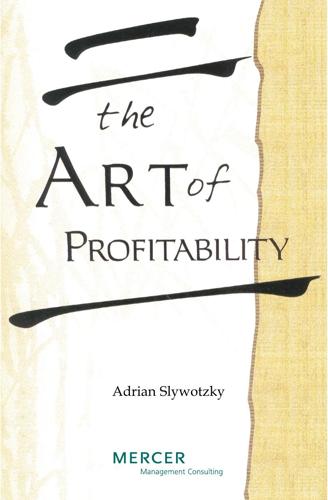
The Art of Profitability
by
Adrian Slywotzky
Published 31 Aug 2002
“Geron turned around manufacturing in the U.S. Later, he did the same in the UK, then in France. “In France, he was also given responsibility for the salesforce. He did all right, but he wasn’t really satisfied. Then he was assigned to the U.S . to solve the salesforce puzzle there. That led to our second opportunity to work together. “Again, it took us several months to figure out what was wrong and how to fix it. But we got it. This time, the model was Field Force Morale. “We did a pretty neat survey of the salesforce. It took us two months to put it together. We found almost all the problems. Marc then fired people, reorganized those who remained into specialty groups, gave them great information they could use to make better decisions, and most important changed the compensation plan from fifteen percent variable to fifty percent variable.”
…
“Meaning, a lot bigger payday for the best 48 THE ART OF PROFITABILITY salespeople, a lot less for the worst?” “That’s right. It was risky, but it worked. We surveyed again a year later, and the results were extraordinary. The esprit de corps that the new compensation scheme helped create led to huge sales increases. Marc was a company hero for the second time over. “During Marc’s U.S. salesforce days, he spent a lot of time observing and learning the company’s research and development organization. He was puzzled by how they operated. He thought it made no sense. At any given time, there’d be dozens of projects under way. They were plagued by countless delays. There was no shaping of the information around an individual project molecule, no building of an aura around it.
…
When there was an opening to run Agri-Chem, his company’s herbicide and pesticide division, Marc asked for it. He politicked, lobbied, and cajoled for two months. The Swiss finally caved. They were afraid of losing him. “Once again, Marc moved his family, this time to Memphis. And he and I were collaborating for a third time. “The biggest change in Marc over his fifteen years of manufacturing and salesforce repair jobs was the growth in his confidence. Without that, I don’t know whether he could have pulled off what he did at AgriChem. “When Marc took over, Agri-Chem was doing okay financially, but its new product pipeline was a disaster. Worse, there was no method in place for thinking about R&D, about how to manage R&D activity, about how to tell the difference between high-profit R&D and anti-profit R&D.”
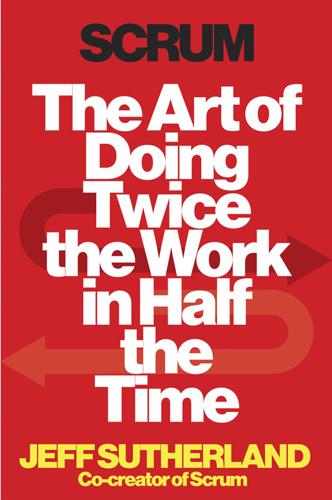
Scrum: The Art of Doing Twice the Work in Half the Time
by
Jeff Sutherland
and
Jj Sutherland
Published 29 Sep 2014
As physicist Richard Feynman famously wrote in Appendix F of the Commission’s report: “It would appear that, for whatever purpose, be it for internal or external consumption, the management of NASA exaggerates the reliability of its product, to the point of fantasy.” 4 The fact is, when you look at the best teams—like the ones that existed at Toyota or 3M when Takeuchi or Nonaka wrote their paper, or the ones at Google or Salesforce.com or Amazon today—there isn’t this separation of roles. Each team has all the people on it do everything, soup to nuts. Nicola Dourambeis is in charge of Agile practices at Salesforce.com. She’s responsible for some two hundred Scrum teams at a company that is routinely on such lists as Fortune’s “100 Best Companies to Work For” and Forbes’s “Most Innovative Companies in the World.” She says she sees Scrum as their “secret sauce.”
…
Olympic Basketball team, 2004 U.S., 7.1 Omaha Beach OODA loop, 2.1, 2.2, 2.3, 8.1, 185, 8.2, 8.3 OpenView Venture Partners, 1.1, 3.1, 5.1, 8.1 Org Chart Orient, 2.1, 2.2, 2.3, 8.1, 185 output, as measurable standard Overburden Palm paper airplanes, PDCA cycle in making Pashler, Harold passivity, elimination of PatientKeeper, 7.1, 7.2 patterns: negative in Scrum PDCA cycle (Plan, Do, Check, Act), 2.1, 2.2, 5.1, 7.1 peer review “Perils of Obedience, The” (Milgram) Personal Digital Assistants (PDAs) personal growth Petraeus, David Pets.com, 8.1 planning, 1.1, 6.1 Waterfall, see Waterfall method weddings, 6.1, 6.2, 6.3 Planning Poker, 6.1, 6.2, 9.1 Porath, Christine Portal poverty, 9.1, 9.2, 9.3 prioritization, 1.1, 7.1, 7.2, 8.1 process, happiness in product attributes, 172 Product Backlog, see Backlog product development: incremental value in productivity happiness and hours worked and, 5.1, 103, 8.1 Scrum and Product Marketing Product Owner, 2.1, 8.1, 8.2, app.1, app.2 essential characteristics of feedback and, 8.1, 8.2, 8.3, 8.4 incremental value and as internal customer product vision, 8.1, 172, 8.2 Backlog and profit margins Progress Out of Poverty Index projects, prioritizing between, 93 ProPublica, purpose, 2.1, 7.1 Putnam, Lawrence Quattro Pro for Windows Rand Corporation, 6.1, 6.2 rat race Reasonableness, 5.1, 5.2, 5.3 relative size, 6.1, 6.2, 6.3 releases, incremental, see incremental development and delivery renovations, time frame for Rethink Robotics retrospective revenue, 8.1, 8.2, 8.3 in venture capital review rituals re-work RF-4C Phantom reconnaisance jet rhythm, 5.1, 5.2 risk robots, 2.1, 4.1, 9.1 rockets Rodner, Don Rogers Commission Roomba Roosevelt, Theodore rugby as analogy New Zealand All Blacks team in Rustenburg, Eelco Said, Khaled Salesforce.com, 1.1, 3.1 Agile practices at sales teams Sanbonmatsu, David Schwaber, Ken Scrum Backlog as power of freedom and rules in and Heathcare.gov, 1.1 implementing in Japan, 2.1 managers’ difficulty with and Medco, 6.1, 6.2, 6.3, 6.4 at NPR at OpenView origins at Easel, 2.1, 4.1, 4.2, 4.3 origins in software development of positive behavior rewarded in productivity increases with reaching greatness with at Salesforce.com, 3.1 system examined and fixed in team size in time conceptualized in transparency in at Valve workweek and, 103 Scrum board, 7.1, 7.2, 8.1, 9.1, app.1 in education “SCRUM Development Process” (Sutherland and Schwaber) Scrum Master, 3.1, 4.1, 7.1, 8.1, 8.2, app.1, app.2, app.3 “Secret Weapon: High-value Target Teams as Organizational Innovation” (Lamb and Munsing) self-control, decision making and Senate Judiciary Committee set-based concurrent engineering Shook, John short cycles short term memory, retention in Shu Ha Ri, 2.1, 9.1 single-tasking sizing, relative, 6.1, 6.2 skills small teams, superiority of, 3.1, 3.2 SMART government Smithsonian Institution soccer social motivation software, fixing bugs in software development, 2.1, 3.1 Sony Soviet Union space travel, private specialization, communication damaged by, 4.1, 4.2 Special Operations Forces (SOF), U.S.
…
There are studies going back to World War II that lay out some of the better ways that people work. But for some reason people never really put together all the pieces. Over the past two decades I’ve tried to do just that, and now this methodology has become ubiquitous in the first field I applied it to, software development. At giants such as Google, Amazon, and Salesforce.com, and at small start-ups you haven’t heard of yet, this framework has radically shifted how people get things done. The reason this framework works is simple. I looked at how people actually work, rather than how they say they work. I looked at research done over decades and at best practices in companies all over the world, and I looked deeply at the best teams within those companies.
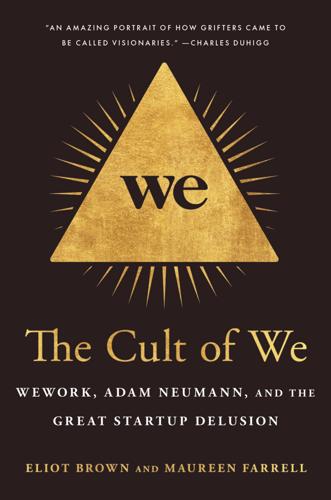
The Cult of We: WeWork, Adam Neumann, and the Great Startup Delusion
by
Eliot Brown
and
Maureen Farrell
Published 19 Jul 2021
As the era of grand department stores was on its last embers, WeWork would climb into Lord & Taylor’s shell. Bjarke Ingels was also tapped to redesign this building. In San Francisco, Salesforce Tower became Neumann’s obsession. A rounded obelisk that resembles a thousand-foot-tall missile, the tower being built by the developer Boston Properties was set to be by far the city’s tallest, a skyline-defining beacon of San Francisco’s economic ascendance. Salesforce had leased half of it, and the landlord was asking some of the highest rents in the city. Neumann needed to be in the tower, he told his staff. WeWork would set up its own office there as a West Coast headquarters.
…
Nestled amid a grove of eucalyptus trees, the thirteen-thousand-square-foot mansion had views of the San Francisco skyline, topped by Salesforce Tower, where WeWork had its West Coast headquarters. It had a racquetball court and a pool with a giant waterslide. In the house’s center there was a room shaped like a guitar—a sinuous-walled recording studio that connected to a skinny guitar neck of a hallway. A prior house on the property—since demolished—had belonged to the rock promoter Bill Graham, and so the press gave the home the moniker Guitar House. The Bay Area offered Adam Neumann a place to unwind after the troubles in December. He commuted to the office in the Salesforce Tower, which he conceived as a monument to WeWork’s Silicon Valley ambitions.
…
WeWork’s bankers were furious with him and told him to cut it out. When he didn’t listen, Dimon had to instruct Neumann personally to stop. Neumann began to get desperate. He flew to San Francisco to see if Marc Benioff, CEO of Salesforce, would invest. The marketing software giant had recently invested in the IPOs of Dropbox and SurveyMonkey, and Neumann considered Benioff a friend and mentor. A Salesforce commitment would have been a great name to have to attract others. But Benioff demurred. Neumann jetted to London, where he turned again to Saudi Arabia. JPMorgan, which was also advising Saudi Arabia on the IPO of its oil company, brokered the meeting.

Exponential: How Accelerating Technology Is Leaving Us Behind and What to Do About It
by
Azeem Azhar
Published 6 Sep 2021
Benioff pioneered the idea of ‘software as a service’ powered through a web browser – and in the process he transformed the software industry. In 20 years, Salesforce has grown from a handful of founders to a $200-billion business with nearly 50,000 employees. But as it has expanded, the company has figured out how to make each additional employee more productive – and how to get more money from its customers. In 2005, each of Salesforce’s then 767 employees supported $230,000 in revenue. In 2020, each of its 49,000 employees supported nearly $350,000 in revenue. Customers seemed to love Salesforce too. In 2010, the average customer paid Salesforce $18,000. By 2020, that had risen sixfold. Not only were customers paying six times as much, they were happier.
…
These companies have inverted one of the basic laws of business: diminishing returns to scale. They have learnt to push past the law of gravity that once limited a company’s size. For superstar companies, the return on their investment grows as they get bigger. Ours is the first-ever age of increasing returns to scale. Let’s take a seminal example, from the US technology sector. Salesforce is a company that makes software for salespeople. It was founded by Marc Benioff, a charismatic software executive, during the wintery aftermath of the dot-com bubble. Benioff realised that the increasing power of the internet would let him deliver his sales-tracking application through a web browser.
…
By 2020, more than 9 in 10 did.31 This is the reckoning of the forces identified above. The exponential logic of network effects means that whatever sales platform is ahead becomes completely dominant, provided executives don’t take their eyes off the ball. The easily scalable nature of intangible assets means that Salesforce can grow and grow, without taking on that many more staff – or becoming unwieldy. Netflix has followed a similar pattern. In 2010, Netflix had sales of $2.1 billion and 2,100 employees. Each one of them could account for slightly less than $1 million in revenue. A decade later, the firm had grown more than 10 times in size, with revenues approaching $25 billion.

Age of Context: Mobile, Sensors, Data and the Future of Privacy
by
Robert Scoble
and
Shel Israel
Published 4 Sep 2013
It pioneered the idea of personalization in marketing. That revolutionary approach to marketing evolved into customer relationship management (CRM), a powerful method for building brand loyalty. When it formed in 1999, salesforce.com based its CRM services entirely in the cloud and made that the differentiating factor against competitors. It was wildly successful. As social media developed, Salesforce leveraged it to more efficiently market to customers by actually engaging them in conversations. This shift from “message mongering,” as we called it in Naked Conversations, to interactive conversations is called “social CRM,” a phenomenon that has moved the enterprise closer to true contextual marketing.
…
Veteran tech journalists Robert Scoble and Shel Israel walk us through these changes with compelling stories and insightful explanations. They have written an important book with the Age of Context. They see what’s coming and reveal a very exciting picture of the future—and get us ready, which is critical because it’s already here. Marc Benioff Founder, Chairman and CEO of salesforce.com Introduction: Storm’s Coming Computing is not about computers any more. It is about living. Nicholas Negroponte, co-founder MIT Media Labs A storm of change is coming. In the 2005 movie Batman Begins, the caped guy appears out of nowhere to deliver a cryptic message to Commissioner Gordon about the short-term future of Gotham City.
…
A few weeks earlier he had become one of the first to beta test the new Google Everywhere visual computer. The nearly microscopic device had been connected directly to his optic nerve, enabling him to communicate not by old-fashioned gestures or voice commands, but by brainwaves. Back in 2013, Salesforce.com founder and CEO Marc Benioff had mentioned brainwaves in his foreword to the book. In 2013, using brainwaves to give machines commands was still in the experimental stage. At MIT, they got a robot to fetch a cup of coffee. Brain-interactive prosthetic limbs were just starting to operate effectively on a few pioneering volunteers.

Unleashed
by
Anne Morriss
and
Frances Frei
Published 1 Jun 2020
As a starting point, we like the EEOC’s online summary of “promising practices”: https://www.eeoc.gov/eeoc/publications/promising-practices.cfm. 16. Amy Edmondson, The Fearless Organization (Hoboken, NJ: John Wiley & Sons, Inc., 2019), xvi. 17. Amy Elisa Jackson, “Why Salesforce’s New Equality Chief Is Thinking Beyond Diversity,” Fast Company, March 20, 2017, https://www.fastcompany.com/3069082/why-salesforces-new-equality-chief-is-thinking-beyond-diversity. 18. Zing Tsjeng, “Teens These Days Are Queer AF, New Study Says,” Vice, March 10, 2016, https://www.vice.com/en_us/article/kb4dvz/teens-these-days-are-queer-af-new-study-says. 19.
…
This is also where the idea of psychological safety lives, a concept developed by our colleague and friend Amy Edmondson to describe cultures where—among other things that are essential to high-performing teams—“people are comfortable being themselves.”16 Once people feel safe and welcome, regardless of their differences, the next milestone in a culture of inclusion is to be valued and celebrated because of our differences. A culture that celebrates difference assumes that difference is a limitless source of creativity, innovation, and organizational strength. We believe that Salesforce is one such culture, and the company’s chief equality officer, Tony Prophet, is a persuasive messenger for the profound implications for both employees and organizations. In explaining his unconventional title (“chief diversity officer” remains the industry norm), Prophet emphasized that diversity is the starting place, but it’s not enough.
…
“we,” 84 Laurent, Nicolo, 124 leaders “A,” 132 absence of, 131–132 cultural, 185, 190–192 expectations of, 62, 77–81 integrity of, 60–61 signs of self-distracted, 6–8 unapologetic, 24–25 underrepresented, 18–19 visibility of queer, 113 leadership See also empowerment leadership justice and, 60–61 new definition of, 4–5, 8–9 outward orientation of, 2, 4–5, 8–12 performance curve, 10, 133 standards-devotion matrix of, 62–67, 70–87 traditional models of, 1–2 trust as foundation of, 33–34 Leadership Agency, 98 leadership profile, 64–65 LGBT+ people, creating inclusive spaces for, 110–112 LinkedIn, 9 little red book, 159–160 logic, 34–37, 41, 45–46, 51, 57 love, 12, 13, 57, 59–87 devotion and, 72–73 from expectations to, 77–81 from neglect to, 81, 84 tough, 62, 86–87 loyalty, 60, 67, 77 Marcario, Rose, 42–43 Mariscal, Marguerite Zabar, 160 Maximus, Valerius (ValMax), 59–62, 71, 72 McCord, Patty, 168–169, 172 McMillon, Doug, 2 meetings, 40–41, 55 inclusive, 108–109, 112–114 Memorable Deeds and Sayings (Maximus), 59–61 mentoring, 78–79, 109 meritocracy, 68, 109, 178 #MeToo, 24 Microsoft, 116, 191–192 Mikitani, Hiroshi, 161 Miller, Jo, 102–103 mindfulness, 52 Mission Command, 16–18 Moltke, Helmuth von, 17 Moments of Truth (Carlzon), 159–160 Momofuku, 160 Morgan, Jen, 2 Nadella, Satya, 116, 191–192 Neeleman, David, 167 Neeley, Tsedal, 161 neglect, 63, 65, 66, 67, 81, 84 Netflix, 168–169, 172 network effects, 153 NFL, 103–104 Nohria, Nitin, 122–123 O’Brien, Deirdre, 113 OKR (objectives and key results) system, 79 One-Strike-and-You’re-Out You, 64 O’Reilly, Tim, 143, 144 organizational change, 90–91 See also change resistance to, 92–94 other people’s awesomeness (OPA), 23, 74 others abilities of, 7 believing in, 22 curiosity about, 6, 82 empowerment of, 4–5, 54, 71 helping, 82–83 importance of, 2, 4 learning from, 45 orientation toward, 15 performance of, 9–12 seeing potential of, 14–15, 22, 23 outside lives, 83–84, 100–101 Patagonia, 42–43 Pawsitive Dog, 75–76 pay gap, 121–122 PayPal, 9 performance reviews, 80, 116, 117–119 PFLAG, 112 positive reinforcement, 22–23, 73–76, 78 praise, 73–74, 78 presence, 29–30, 40–41, 131 pricing decisions, 141–143, 144 primate brain, 52 private bathrooms, 111 profitability, 142, 143 promotions process, 114–115, 116, 119, 121 pronouns, 111 Prophet, Tony, 107, 122 psychological safety, 47, 107 public bathrooms, 111 Queer Eye, 15, 18 queer identities, 110–112 queer people, creating inclusive spaces for, 110–112 QuikTrip, 147–148 quotas, 104 radical accountability, 175 See also radical responsibility radical responsibility, 10, 40, 123 See also radical accountability Rakuten, 161 Rapinoe, Megan, 121–122 reconciliation, 122–123 recruitment process, 95–104 redemption, 123 representation tax, 120–121 retainment, 120–122 Revere, Paul, 24 Riot Games, 124–126, 168, 179–182 Rodriguez-Pastor, Carlos (CRP), 67–70 Roizen, Heidi, 117–118 Romney, Mitt, 99 Rooney, Dan, 103 Rooney rule, 103–104 root cause analysis, 115 Roseboro, Angela, 125 safety, 105, 106, 107 Safe Zone Project, 112 Saint John, Bozoma, 2, 121 Salesforce, 107 Sandberg, Sheryl, 5, 126, 169 SAP, 2 Sasser, Earl, 94 Scandinavian Airlines (SAS), 159–160 Schein, Edgar H., 167, 168, 177 Scooby Snacks, 78 Scrub Daddy, 157 self-distraction, 6–8, 18–19 self-improvement, 20–21 self-trust, 56–57 severity, 61, 63, 64–65, 66, 67, 77 sexual harassment, 106 Shark Tank, 156–157 “sink or swim” approach, 109, 112 SMART goals, 79 Smith, Fred, 166 social media, 52 Southwest Airlines, 136–138, 161 standards-devotion matrix, 62–67, 70–87 standard setting, 78–80 Starbucks, 168 Stonewall, 110 strategic confusion, 135 strategic value stick, 145, 150, 151, 155 strategic wedge, 152–153, 154–156, 191 strategy, 12–14, 132, 135–163 changing, 162 communication of, 156–161 defined, 136–138 growth, 152–154 planning, 154–156 strategic trade-offs, 136–141 suppliers and, 144–148 value-based, 135–136 value creation and, 141–144 writing about, 158 Stripe, 14 Su, Lisa, 62 Sulla, 72, 73 Super Pumped (Isaac), 172–173 Super You, 139 suppliers, 144–148, 153–154 talent attracting diverse, 95–104 retaining, 120–122 task forces, 92 TaskRabbit, 5, 148–152, 161 Tatum, Lisa Skeete, 14 teams building, 54 diverse, 48–49 leadership of, 13 terminations, 84, 85–86 360-degree reviews, 117–119 “toe-stepping,” 178–179 Ton, Zeynep, 147–148 tough love, 62, 86–87 toxic employees, 123 Toyota, 153–154 Toyota Production System (TPS), 153–154 trade-offs, 136–141 Trader Joe’s, 44 trust, 12, 13, 31–58 attributes of, 34, 36 authenticity and, 34–37, 47–54, 57 diagnosing your own level of, 35–39 empathy and, 34–41, 51, 57 as foundation of leadership, 33–34 logic and, 41, 45–46, 51, 57 rebuilding, 1, 55–56 in yourself, 56–57 trust anchor, 35, 37 trust drivers, 34, 35 trust triangle, 34, 36–37 trust wobble, 35–39, 42–44 Twitter, 102 Uber, 31–32, 51, 54–56, 114, 172–174, 178–179 United States Army, 16–18 USAID, 43 US Soccer Federation (USSF), 121–122 ValMax.
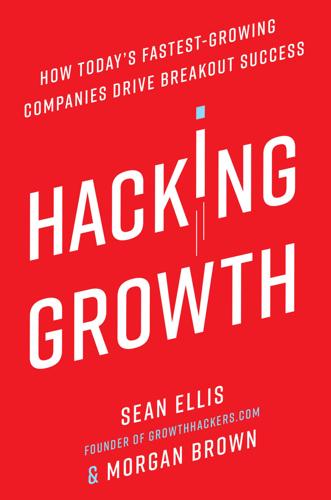
Hacking Growth: How Today's Fastest-Growing Companies Drive Breakout Success
by
Sean Ellis
and
Morgan Brown
Published 24 Apr 2017
The second part, titled “The Growth Hacking Playbook,” offers a detailed set of tactics for how exactly to implement the method, with individual chapters on how to acquire, activate, retain, and monetize users or customers—and how to sustain and accelerate growth once it has been achieved. We will share stories demonstrating how growth teams from a wide variety of companies and industries—ranging from unicorn companies like Pinterest and Twitter, to consumer apps like Spotify and Evernote, to business software companies like HubSpot and Salesforce.com, to Web portals like Hotels.com and Zillow, to e-commerce retailers like Amazon and Etsy, to brick-and-mortar retailers like Walmart and a grocery chain—have used these various methods to drive growth. And we will also point readers to a set of online tools for teams to use, including GrowthHackers Projects, which enables growth teams to manage the growth process outlined in the first half of the book, as well as customer survey tools, templates for prioritizing hacks to try to keep track of results, guidelines for running growth meetings, and scores of testable experiments in each area of focus, continually updated by the GrowthHackers.com community.
…
Once lauded as the “Amazon for design,” and feted as the latest Silicon Valley unicorn, the company was growing its customer base at breakneck speeds; the only problem was, it was spending $40 million a year on advertising and customer acquisition costs to do so—more than 35 percent of its revenue.3 Suffice it to say, excessive spending quickly caught up with them, leading to the start-up’s dramatic implosion and sell-off at a fire-sale price. This is not to say that spending lots of cash, even many millions of dollars, to stoke customer acquisition is always misguided. A business-to-business software company, for example, may have to invest a great deal up front in hiring a large salesforce in order to make any headway in lining up customers. Or a business in a “winner take all” situation, where it’s likely that one firm will become overwhelmingly dominant (as is often true for network effect businesses such as LinkedIn or WhatsApp), spending a great deal up front to make a land grab and try to lock in dominance may be a brilliant strategy.
…
Website copy can be swapped out and tested relatively easily with tools like Optimizely and Visual Website Optimizer, which install a small piece of code on your website or app that randomly displays different versions of copy to your visitors and then measures and compares their responses. Most email marketing systems, such as Salesforce Marketing Cloud and MailChimp, make it easy to test specific pieces of your email copy, such as the subject line or call to action. And online advertising platforms like Facebook and Google also let you test many different versions of ads. None of these services require technical expertise, though if you have the engineering talent at your disposal, you can even devise your own system, as Upworthy, the viral news publisher, did.

How to Fix the Future: Staying Human in the Digital Age
by
Andrew Keen
Published 1 Mar 2018
Maniam tells me that he’s particularly interested in the role that networked technology plays in building trust in the community and establishing a more interactive kind of democracy. Trust forms the basis of what he calls “social capital” that enables “human flourishing.” He reminds me of Singapore’s high standing in the Edelman Trust Barometer and cites what he describes as “deliberative platforms” like Salesforce’s Chatter, which create a cooperative community of like-minded people. He imagines a public version of Chatter designed as a community forum throughout Singapore. “I like to think of it as a commons,” he says, using sixteenth-century English history to imagine the future of twenty-first-century Singapore.
…
For philanthropy, I find I’m drawn to the other end of the spectrum: the right now,” he hinted about his philanthropic plans. “If you have any ideas,” Bezos concluded, with typical quirkiness, “just reply to this tweet . . .”10 To take another example, Marc Benioff—the swaggering Henry VIII look-alike CEO of the business software provider Salesforce.com—though a remarkably generous supporter of many noble social causes, remains perhaps a little too enamored with attaching his name to public projects such as the UCSF Benioff Children’s Hospital in San Francisco. Then there’s Tim Cook, the Apple CEO, whom we last met in Margrethe Vestager’s Brussels office, trying to convince the EU commissioner that the 0.005 percent tax his company paid to the Irish government was somehow in the public interest.
…
“Coding,” Apple CEO Tim Cook told President Donald Trump about the best way to reform the American educational system, “should be a requirement in every public school.” Cook’s vision is being realized by Code.org, a nonprofit founded in 2012 by a couple of successful startup entrepreneurs, which has raised $60 million from Microsoft, Facebook, Google, and Salesforce. Code.org’s goal is to make computer science as essential in the classroom as reading, writing, and arithmetic. Active now in twenty-four US states, Code.org offers free online classes that have been tried by 100 million students worldwide and has also provided training workshops to 57,000 teachers.24 But it’s not just coding lessons that Big Tech wants to put into every school classroom.
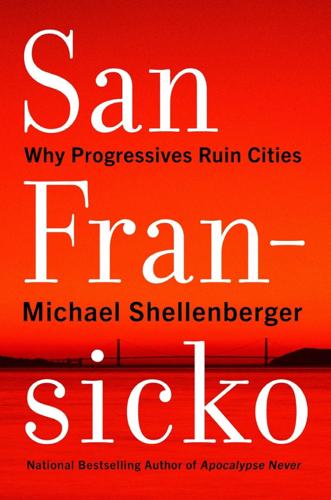
San Fransicko: Why Progressives Ruin Cities
by
Michael Shellenberger
Published 11 Oct 2021
Half of the unsheltered homeless population in the United States is in California and Florida alone, even though the two states are home to just 19 percent of the population.14 High-tech companies like Salesforce, Twitter, and Stripe, progressives noted, had attracted thousands of employees who had driven up rents, resulting in tenant evictions.15 In 2016, representatives from San Francisco’s business, philanthropic, and media communities committed to halve the city’s chronic homeless population in five years. They created a media initiative called the SF Homeless Project, and raised over $130 million in the first year, with $100 million raised by an organization called Tipping Point and another $30 million coming from Marc Benioff, the billionaire CEO and founder of Salesforce, the customer relations software giant.16 The San Francisco Coalition on Homelessness, a nonprofit organization, led a campaign to fund housing and services with a special tax on San Francisco businesses that gross more than $50 million annually.17 At first, few believed the measure, put before voters in the form of Proposition C, could pass.
…
He can’t get that we can’t provide a $527,000 to $700,000 apartment for each person on the street. I’ve been in planning meetings where people said, ‘Everybody deserves a granite countertop.’ But that isn’t going to work for 44,000 people.”18 In November 2018, Proposition C passed over the opposition from Mayor Breed and many of the city’s tech leaders. Salesforce’s Marc Benioff’s financial contribution and public advocacy for the initiative made the difference, according to researcher Chris Herring.19 As a result, San Francisco saw the amount it spends on housing and homelessness increase 84 percent, from $364 million annually in fiscal year 2019–20 to $672 million in 2021–22.20 During the campaign, the San Francisco Coalition on Homelessness and its allies claimed that Proposition C “would house about 4,000 people over five years,” in the words of the Chronicle.21 “The proposition would fund 4,000 new permanent housing units,” reported SF Curbed.22 “Prop C funds would house up to 5,000 and prevent the eviction of another 30,000,” claimed Vox.23 “The goal is four thousand?”
…
One of the most important discoveries of sociologists in the late twentieth century, as they sought to understand rising crime rates, was that most people obey the law not because they are afraid of being caught violating it but because they believe in the law, and that it’s being administered fairly.8 The fact that a significant number of elected progressive Democrats, including district attorneys and supervisors in Los Angeles, Seattle, and San Francisco, have in recent years openly called for enforcing the law differently according to race and class, and have started doing so, is a disturbing threat both to public order and to the principle of equal justice under the law. In 2018, Patrick Collison, the CEO and cofounder of Stripe, an Internet financial services firm, published an essay that described why he opposed Proposition C, the initiative written by Jennifer Friedenbach and championed by Salesforce’s Marc Benioff. “Stripe is highly motivated to help solve homelessness,” he wrote. “We’re happy to pay higher taxes as part of doing so, a position we’ve made clear from the start. Stripe employees, and Stripe itself, have long worked to help housing-related causes and homeless service providers.”
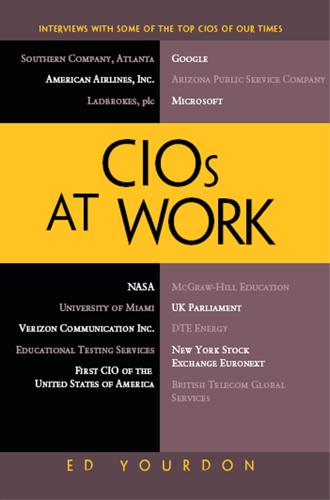
CIOs at Work
by
Ed Yourdon
Published 19 Jul 2011
There’s probably a cluster that are. And so what we did is we actually bought 100 iPhones and we enabled the e-mail capability—which doesn’t sound like a big deal, but when you’re “breaking a standard,” it was. Two, what we did is we were using salesforce.com. They had just started. We gave the capability for them to actually do transactions using salesforce.com. Third, we have an Oracle supply management system—that’s the ERP that I made a reference to and is the foundation now of our orders, and they can actually take orders and place orders and look up pricing and catalog and product information, all on the iPhone.
…
And what we found by pushing too much offshore—and we’re actually bringing it back in—specifically around the media development and digital products development, is that we lost some of that technical skill set that was absolutely critical. And the reason is because the world’s changing so fast. I mean, you take all the change and then you compress it within a short period of time… The example I use is with Salesforce.com and those using the cloud: look at what happened to them as an organization, let alone their growth, let alone how you use Salesforce. It’s an example where you need that hard-core technical skill set on-site. Secondly, I made reference to the fact that we did pretty well on some of the proofs of concepts, but what we have not done well is the testing systems integration and scalability testing.
…
It allows you to fluctuate—I made reference to this little case study story about college students on Sundays—so you can scale up when you need to and back down and do it in a way that’s cost-effective. I’ll give you another real quick story. We had the sales meeting and we were using Salesforce.com. It was out in Phoenix. There was a large Marriott. Something happened with the network coming out of the Marriott, so all these products that we had going back to the data center in Princeton, New Jersey, we couldn’t have access. What we did, we were able to reroute—well, the sales reps were able to use Salesforce.com. I mean—we all sat there and looked at ourselves, saying, “My God. The world’s changing.” Yourdon: Interesting. All right. One last question, which is: where do you go from here?

McMindfulness: How Mindfulness Became the New Capitalist Spirituality
by
Ronald Purser
Published 8 Jul 2019
Combine this with the marketing savvy of Marc Benioff, and the hoopla of mindfulness helps make dollars. It’s unsurprising that a capitalist stooge such as Fernandez turns a blind eye to the aims of the stunts in which he enlists. Salesforce has been staging them for years. It once tried to pull one with the Dalai Lama, producing a poster of the Buddhist leader meditating under the slogan: “There is no software on the path to enlightenment.”9 Salesforce was forced to apologize. And of course that made headlines. The Irony of Mindfulness Apps I was in New York the day after Donald Trump was elected in 2016, riding the subway up Manhattan.
…
As he sees it, mindfulness is “establishing itself as the hegemonic ideology of global capitalism,” by helping people “to fully participate in the capitalist dynamic while retaining the appearance of mental sanity.”7 No wonder Wall Street traders and hedge fund managers now use the practice to fine-tune their brains, up their game and gain an edge. By deflecting attention from social, political and economic structures — that is, material conditions in a capitalist culture — mindfulness is easily coopted. Celebrity role models bless and endorse it, while “cool” Californian companies — including Google, Facebook, Twitter, Yahoo, Salesforce, Apple, and Zynga — have embraced it as an adjunct to their brand. Google’s former in-house mindfulness czar Chade-Meng Tan had the actual job title Jolly Good Fellow. “Search inside yourself,” he counseled colleagues (as well as readers of his bestselling book), for there — not in corporate culture — lies the source of your problems.
…
Jumping on the mindfulness bandwagon gave its early adopters a sense of being part of a change of historic proportions — something big, revolutionary, and exciting. Fernandez is full of such irrational exuberance. Towards the end of his conference keynote, he recalled his enlistment in the “movement.” The Salesforce CEO Mark Benioff apparently invited him “to curate” events for Dreamforce III, a global meeting of employees in San Francisco. “I designed a whole day on mindfulness,” Fernandez said. “We had such people as Eckhart Tolle and Arianna Huffington. And then, the following year, he invited me back… and I asked him, well last year we did a whole day on mindfulness… what are we going to do this year?”
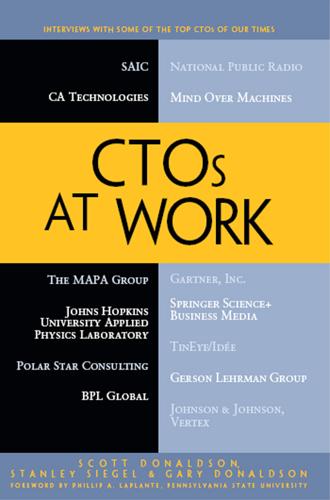
CTOs at Work
by
Scott Donaldson
,
Stanley Siegel
and
Gary Donaldson
Published 13 Jan 2012
Donaldson: Right. Ferguson: If you look at Salesforce.com, people don't actually write Salesforce.com applications. There's the actual application and then there's another application that allows you to customize the application. That's the beauty of Salesforce.com; it is that there are really two applications. There's the Salesforce app and then the app you use to customize it. The thought experiment I had on this one is – my girlfriend's an attorney. She's got basic computer skills. She could go subscribe to Salesforce.com and tailor the app so that it was a Salesforce app for a law firm. You don't write any software.
…
There are a lot of business benefits from being in New York and having a relative concentration of the financial services industry. Siegel: How closely do you interact with your business development personnel? Ballard: I interact with the head of sales closely and meet with the various sales managers on a regular basis. At the moment, we are rolling out salesforce.com, so we have a relatively high level of interaction with them at the moment. In general, I don't go out on sales calls. S. Donaldson: Will, how big is your staff? Ballard: The engineering staff is a combination of IT, development, QA [quality assurance], and some administrative. I have 82 employees on the roster this week.
…
I think cloud made a better job for the IT operator who can focus on automation and programming the infrastructure rather than being the guy with the bolt driver shutting down stuff that doesn't interact so much. S. Donaldson: Absolutely. Do you have any big projects right now that you're dealing with? Ballard: The biggest projects we're working with right now is salesforce.com. We've been running a SugarCRM and have outgrown it now that we have worldwide sales and multiple sales revenue plans. Another project is a product called ZipDx, which is pretty compelling; it's on the Internet and it enables conference calls systems: We can schedule a consultation call and the call will go outbound as if multiple lines were dialed into a conference call bridge number.

Make Your Own Job: How the Entrepreneurial Work Ethic Exhausted America
by
Erik Baker
Published 13 Jan 2025
Your Avon Business The selling professions formed an important redoubt of the entrepreneurial work ethic during the Depression. On the eve of the crisis, this line of work figured much more prominently in the landscape of employment in the United States than it had a generation before. The advent of a new mode of capitalism dependent for growth on consumer demand inflated the American salesforce in the early decades of the twentieth century, as manufacturing corporations discovered that their ability to sell rather than produce now functioned as the chief constraint on their rate of growth. Employment in distribution grew at triple the rate of production employment between 1870 and 1930.5 The Depression only made the importance of the demand constraint—and therefore the selling apparatus—more palpable.
…
Companies could hire salespeople to try to move unsold inventory, but if customers refused to buy what they were selling, layoffs would be inevitable. The Depression-era demand crunch advantaged one corner of the sales world in particular: the direct-selling industry. When the economy went into recession, companies that primarily sold goods to other businesses saw their salesforces contract alongside their manufacturing workforces. But companies that sold goods directly to consumers were, on the whole, more resilient. Those that focused on selling small, cheap products for personal and household use had the potential not merely to weather the storm but positively to thrive.
…
In 1936, the National Association of Direct Selling Companies successfully petitioned the Federal Trade Commission to certify that direct-sales representatives employed as “independent contractors” were not company employees for the purposes of the major New Deal legislation. Companies didn’t have to submit payroll taxes on their behalf or contribute to unemployment relief; direct-sales workers had no right to unionize; and they were exempt from wages-and-hours regulations. By the decade’s close, more or less all direct-selling companies told their salesforces what the California Perfume Company had long told the distributors of its Avon product line: “Now you are in business for yourself.” The FTC agreed.9 The spread of the independent-contractor model was just one more factor driving direct-selling companies to adopt an entrepreneurial rather than a scientific management style—that is, an approach to management that required workers to determine for themselves how they would meet their sales objectives, rather than an approach that would require them submit to precise, ostensibly scientific processes imposed by higher-ups.
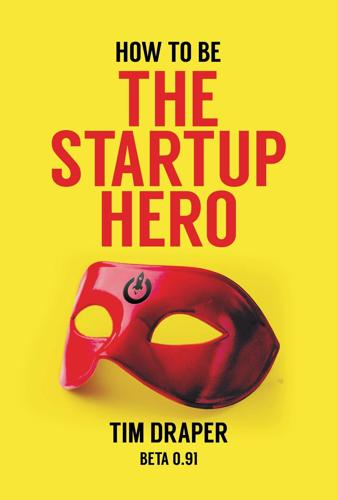
How to Be the Startup Hero: A Guide and Textbook for Entrepreneurs and Aspiring Entrepreneurs
by
Tim Draper
Published 18 Dec 2017
When he said it, he clearly didn’t mind that the vast majority of people who heard him would think he was crazy, because by saying it, he also attracted the best and brightest engineers to work at his company, since great engineers want to work on something exciting and ambitious. Marc Benioff of Salesforce gives his 25,000 employees a very clear direction and goal, and then monitors their progress toward that goal regularly. He does not tell them how to do their job. He trusts them to figure it out. In his book, “Behind the Cloud,” he describes it like this: “V2MOM, an acronym that stands for vision, values, methods, obstacles, and measures. This tool (pronounced “V2 mom”) has helped me achieve my goals in my past work and helps make salesforce.com a success. V2MOM enabled me to clarify what I was doing and communicate it to the entire company as well.
…
Get your free email at Hotmail.’ It will go from one user to the next. From me to you to your friends and to their friends.” It reminded me of the Tupperware case we studied at business school, where anyone who wanted to buy Tupperware would have to throw a Tupperware party, making the customers its salesforce. As I spoke, I got more and more excited. It was a very contentious idea at the time, Sabeer kept saying, “No.” So I focused on Jack and his technical chops. I said, “But Jack, can you technically do it?” Jack responded that yes, he could technically do it, so I pleaded with them, “Just try it!”
…
Your goal as a Startup Hero should be to best figure out how to market products liberally throughout the world with little or no cost of distribution. Now, when I look to evaluate new company proposals, one of the things I look for as a potential investor is how a company will spread from customer to customer. How the customer will become the company’s salesforce. How they will promote freedom at all costs. Hotmail and Skype created a new platform for freedom. Possibilities opened up for people. People everywhere could now freely and for free communicate amongst themselves. Physical borders would be less important because people could befriend others from anywhere in the world.
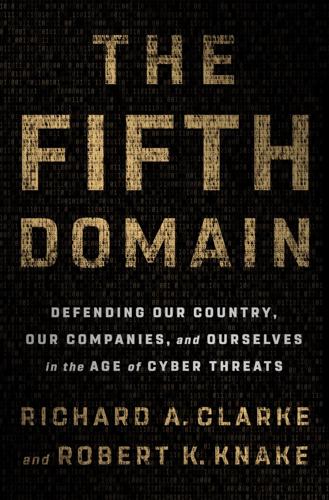
The Fifth Domain: Defending Our Country, Our Companies, and Ourselves in the Age of Cyber Threats
by
Richard A. Clarke
and
Robert K. Knake
Published 15 Jul 2019
Far and away the best way to rapidly increase security is to move from local computing to software as a service (SaaS). Salesforce, one of the early successful SaaS providers, never sold its customer relationship management platform as a software package you could install on your own computer. In fact, early on, Marc Benioff and his team made up company T-shirts that had a big no-smoking-style circle and slash symbol (think Ghostbusters) over the word “software.” The only way to use Salesforce was (and is) to use a web browser to access it. The software sits safely on Salesforce’s servers. It can’t be downloaded by cyber criminals to look for vulnerabilities. When Salesforce discovers a problem, there is no delay between when the patch is ready and when it is installed.
…
Hackers could easily buy attack kits that would find vulnerabilities that allowed them to go from publicly facing web pages or email servers into an entire corporate network. There they could deploy something else easily procured on the dark web: software that finds and encrypts all data stored on a network, including emails, Word and Excel documents, Salesforce, Oracle, SAP files, everything. Then comes the ransom offer. Want the key to unlock everything we encrypted? Then send us one hundred thousand dollars’ worth of Bitcoin. Although Bitcoin was supposed to be a safe way of doing business because it involved a publicly viewable blockchain record, it has actually turned out to be easy to use it to hide money flows.
…
L., Max, 264 9/11 attacks, 26, 88, 114, 123, 137, 155, 196, 222, 234 North American Electric Reliability Council (NERC), 158–59, 271, 304–5 North Korea, 18, 22, 26–28, 97, 187, 188, 195, 196, 198, 211 NotPetya, 8, 18–22, 26, 29, 37, 121 Nuclear Regulatory Commission, 115 nuclear weapons, 9, 11, 13, 27, 94, 115, 166, 182–83, 197, 240–41 Iran and, 20, 37–38, 85, 87, 97, 160, 193, 194, 270–71 missiles, 166, 303 Navy and, 150, 198, 201 Nudge (Thaler and Sunstein), 111 Obama, Barack, 6, 10, 11, 12, 21, 22, 25, 26, 33, 36, 44, 61, 77, 85–87, 89, 92, 96, 100, 109–11, 113, 124, 134–35, 152, 176, 177, 182, 193–94, 203, 205, 210, 221–23, 225, 233, 295 Odile, 149 offense and defense, 4, 5, 13, 35–39, 51, 83, 100, 102–4 collective defense, 58–61 cost and, 37 offensive advantage or preference, 4–10, 35, 37, 100–101, 297–98 Office of Information and Regulatory Affairs, 110–11 Office of Management and Budget (OMB), 111, 167, 175 Office of Personnel Management (OPM), 130, 168, 176 O’Grady, Stephen, 63 Ohio, 117 oil tankers, 116 Okta, 131, 133 OODA loop, 70, 72 Operation Glowing Symphony, 193 operations technology (OT), 270–74, 305 Oxford, Wil, 258 Ozment, Andy, 127 P5+1, 194, 305 Painter, Chris, 210 Palo Alto Networks, 60–61 Park Jin Hyok, 28 passports, 135 passwords, 45–46, 129–33, 251, 283–86, 292 patches, 275–76, 278–79, 305 Pate, Connor, 167–70, 173 Pearl Harbor, 123, 234, 235 People’s Liberation Army (PLA), 26, 28, 176, 305 personally identifiable information (PII), 115–16, 141, 283–84, 305 Petya, 18 phishing, 53–55, 59, 288 Point3 Security, 148–49 Policy Blueprint for Countering Authoritarian Interference in Democracies, 223–24 Politico, 97 Pollard, Neal, 295 Pompeo, Mike, 267–68 Ponemon Institute, 116 Postal Service, 135, 140 Power, Samantha, 111 power grids, 155–66, 190–91, 199, 270–72, 277 Russia and, 26, 159–61, 164–66, 200 secure segmented diverse-source microgrid, 164–65 presidential decision directives, 182, 305 Presidential Decision Directive 63, 10–11, 59, 89 privileged access management, 245, 305 “protect” function, 45, 66, 70 Putin, Vladimir, 220–23, 239, 241 QuAIL, 263 quantum computing, 6, 81, 241, 253–64, 280, 305–6 AI and, 263–64 encryption and, 260–62 quantum key distribution, 262 qubit (quantum bit), 253, 255–59 ransomware, 18, 38, 125–28, 188, 306 Rattray, Greg, 101–3 Raul, Alan Charles, 95 ReallyU, 138–40, 306 reconnaissance, 51, 52 “recover” function, 45, 66, 71 regulation, 109–20, 122–23, 139–40, 268–69, 278 Reitinger, Phil, 140 remote access tools, 38 Reno, Janet, 168 Republican Party, 11, 228, 268 resilience, 14–15, 42, 70–72, 82, 104, 105, 296–97 “respond” function, 45, 66, 71 Rice University, 80–81 Rickover, Hyman, 150, 198, 201 Rigetti, Chad, 253–54, 257, 259, 262–64 Rigetti Computing, 253–54, 259, 261 Rinard, Martin, 80 Rodin, Judith, 15 Rolling Stone, 207–8 Roosevelt, Franklin, 9 Rosenbach, Eric, 198, 221–22, 224–26, 233, 234 Rosenberg, Simon, 231–32 Rosenberger, Laura, 221–24, 231, 234 Rothrock, Ray, 14 Routh, Jim, 41–42, 133 RSA, 49, 69, 92, 102, 124–25, 129, 241, 306 Rubio, Marco, 223 Russia, 5, 17, 21, 28, 33, 46, 94, 97, 120, 121, 157, 163, 166, 182, 187, 188, 195, 196, 198, 200, 210, 219–34, 241, 248, 277 elections and, 26, 159, 160, 222–23, 227, 228, 230–35 GRU, 19–23, 25–26, 28, 165, 234, 277, 302 internet and, 206, 208, 210, 211, 219–20 power grid and, 26, 159–61, 164–66, 200 quantum computing and, 259, 260, 264 Ukraine and, 19–20, 25, 29, 157, 222 Salesforce, 75 Samsung, 24, 37 Saudi Arabia, 27, 274, 275, 277 Saudi Aramco, 27, 188 Savandi, Faramarz, 126 Schell, Roger, 103 Schengen Accord, 206–7, 212, 218, 306 for the internet, 205–18 Schmidt, Eric, 205 Schou, Corey, 167–69 Schulte, Joshua, 23–24 Schwarzkopf, Norman, Jr., 198 secure development life cycle (SDLC), 79, 80, 306 secure segmented diverse-source microgrid (SSDM), 164–65, 306 Securities and Exchange Commission, 8, 43, 87, 115 security information and event management, 71 security operations centers (SOCs), 71, 74, 153, 246, 248, 307 Seehra, Jasmeet, 111 Senate, U.S., 78, 232 Senior Cyber Service, 173, 178 sensors, 66–67, 83 Shanahan, Patrick, 181 Sharkseer, 95 Shavitt, Yuval, 120 Siemens, 37, 270 Silicon Valley, 5, 7, 63–64, 67, 73, 140 Singer, Peter, 101 smart cards, 129, 130, 133 smartphones, 131, 289–91 iPhones, 36, 68, 124–25, 292 Smith, Brad, 24 Snowden, Edward, 21, 23, 209 Social Security, 133, 134, 136, 138–40, 283 software, 21, 22 coding of, 78–82 security and, 288 software as a service (SaaS), 75, 76, 307 Sophos, 61, 288 South Korea, 27, 120, 188 Soviet Union, 13, 135, 182, 221, 234 Spamhaus, 73 spear phishing, 53–55, 59, 288 Stamos, Alex, 221, 228 State Department, 6, 25, 86, 93, 95, 136, 173, 202, 203, 210, 221–22 state governments, 117–18, 174–75, 177 Stein, Jill, 232 Stempfley, Bobbie, 151 stock transactions, 287 Stratton, Robert, 295 Stuxnet, 20–21, 37–38, 85, 160, 182, 193–94, 270–71, 277, 307 Sulmeyer, Michael, 100 Sunstein, Cass, 111 supervisory control and data acquisition (SCADA), 163, 270, 273, 307 Symantec, 24, 37, 46, 61, 83, 288 tabletop exercises (TTXs), 185–92, 198, 225–26, 307 Tailored Access Operations (TAO), 73, 148, 307 terrorism, 13, 110, 114–15, 123–25, 137, 156 9/11 attacks, 26, 88, 114, 123, 137, 155, 196, 222, 234 Terrorism Risk Insurance Act, 123 Thaler, Richard, 111 threat actors, 12, 41, 64, 77, 307 tractors, 269–70 Transportation, Department of, 278 Treasury Department, 21, 152 Trump, Donald, 11, 21, 27, 89, 92, 113, 123, 152, 160, 171, 181, 196, 203, 224, 267 TSA (Transportation Security Administration), 137, 140, 177 Twitter, 224, 231, 232, 276 two-factor authentication, 129, 131, 132, 285, 287, 308 Ukraine, 8, 19–20, 25, 29, 37, 157, 222, 269–70, 277 United Health, 40–41 United Kingdom, 17–18, 25, 96, 211–12, 220–21 United Nations (UN), 210 United States–Mexico–Canada Agreement, 213 U.S.

Company of One: Why Staying Small Is the Next Big Thing for Business
by
Paul Jarvis
Published 1 Jan 2019
But a company that believes customers represent relationships that can be both mutually beneficial and long-term succeeds when its customers succeed. Adam Waid, the director of the Customer Success Department at SalesForce Pardot, doesn’t want to take chances with helping customers find wins. In fact, Customer Success—devoted to providing training, implementation assistance, best-practice recommendations, and ongoing support—is the company’s largest department. This effort has made SalesForce Pardot the number-one most innovative company according to Forbes magazine, and its customers have seen an average 34 percent increase in sales revenue through the help offered by its Customer Success Department.
…
Morrison, Kathleen Searls, Mary Sonnack, and Eric von Hippel, “Performance Assessment of the Lead User Idea Generation Process for New Product Development,” April 1, 2002, https://evhippel.files.wordpress.com/2013/08/morrison-et-al-2002.pdf. 115 number-one most innovative company: Jeff Kauflin,“The World’s Most Innovative Growth Companies: 2017,” Forbes, May 17, 2017, https://www.forbes.com/innovative-companies/list/. 11534 percent increase in sales revenue: “SalesForce Pardot Customer Success,” SalesForce Pardot, accessed October 4, 2017, https://www.pardot.com/why-pardot/customer-success. 119 far less for malpractice: Aaron E. Carroll, “To Be Sued Less, Doctors Should Consider Talking to Patients More,” New York Times, June 1, 2015, https://www.nytimes.com/2015/06/02/upshot/to-be-sued-less-doctors-should-talk-to-patients-more.html. 119malpractice filings dropped by half: Kevin Sack, “Doctors Say ‘I’m Sorry’ Before ‘See You in Court,’” New York Times, May 18, 2008, http://www.nytimes.com/2008/05/18/us/18apology.html. 119in most cases apologizing: University of Nottingham, “Saying Sorry Really Does Cost Nothing,” ScienceDaily, September 23, 2009, www.sciencedaily.com/releases/2009/09/090923105815.htm. 120 one of the ten most-hated companies in America: Douglas A.
…
See adaptability Ressler, Cali, 15 retention, customer, 61–63, 106, 185, 190–94 retention, of employees, 6–7 ReWork (Fried), 90 Riley, Pat, 33 risk, 37–40, 221 ROWEs (Results-Only Work Environments), 15, 18 Rubel, Steve, 96–97 Ruby on Rails, 54–55 runway buffer, 211–12 S SaaS, 110, 131 salary, 125, 165, 208, 210–11 SalesForce Pardot, 115 Sandberg, Sheryl, 47 Satornino, Cinthia, 189 savings, 211–12 scalability, 124–34 collaboration, 132–34 communication, 126, 129–31 examples of, 124–27 product development, 127–29 Scarcity (Mullainathan and Shafir), 91 Schachter, Joshua, 20 scheduling, 89–92 scope of influence, 70–73 Sears, 177 self-awareness, 57 selling, 180 Semco Partners, 27 Semler, Ricardo, 27, 219 servant leadership, 48 service, 48, 105–7, 108–11 Seventh Generation, 78–79 Shafir, Eldar, 91 Sharp, 46 Sheldon, Jeff, 115–16, 154, 163–64, 169–70 “shinise”, 216–17 Shopify, 124, 158 Silver, Spencer, 8 simplicity, 20–23, 167–69 single-tasking, 88 Sivers, Derek, 100, 172–73 skills, 51–54 autonomy, 14–18 generalists, 17–18, 200–202 growth, 33 passion, 82, 86 success, 83 slow fashion, 128 small, as goal, 24–44 better vs. bigger, 24–30 career advancement, 70–73 envy, 42–44 growth drawbacks, 30–34 meaningful growth, 60–64 minimum viable profit, 164–66 profit vs. growth, 68–70 risk and, 37–40 vs. traditional approach, 34–40 upper bounds, 40–42 when starting a business, 64–68, 163–74 SmallBizTrends, on referrals, 109 Snapchat, 95 So Good They Can’t Ignore You (Newport), 82 social capital, 187–90 social media brand reputation, 192 mistakes and, 120 personality, 97–99 relationships, 115–16, 188, 189 scalability, 126 viral content, 159–60 social views on business growth, 4–5, 24–25 on leaders, 45–49 on work, 34–40 Socrates, 42 Sorenson, Olav, 171 Southwest Airlines, 40–42 spamvite, 183, 184 specialization, vs. generalist, 51–54 speed, 18–19 Staples, 181 Starbucks, 31–32 starting a business.
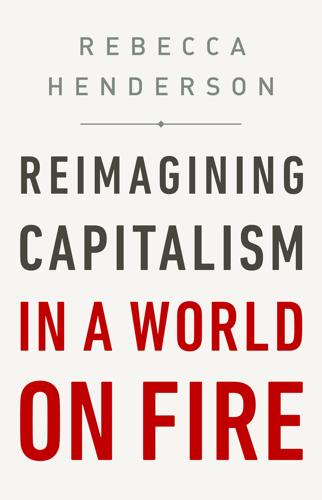
Reimagining Capitalism in a World on Fire
by
Rebecca Henderson
Published 27 Apr 2020
“LGBT People in the United States Not Protected by State Nondiscrimination Statutes” (Los Angeles: The Williams Institute, UCLA, March 2019); “Hate Crimes,” FBI, May 3, 2016, www.fbi.gov/investigate/civil-rights/hate-crimes. 38. Kent Bernhard Jr., “Salesforce CEO Marc Benioff Fights Back Against Indiana ‘Religious Freedom’ Law,” Business Journals, Mar. 26, 2015, www.bizjournals.com/bizjournals/news/2015/03/26/benioff-salesforce-fights-indiana-religious-law.html. 39. Jim Gardner, “Other Tech Giants Join Salesforce CEO in Slamming New Indiana Law,” Bizjournals.com, www.bizjournals.com/sanfrancisco/blog/2015/03/indiana-gays-discrimination-salesforce-apple-yelp.html. 40. The official summary of the amendment suggests that it “indicates that the law related to adjudicating a claim or defense that a state or local law ordinance or other action substantially burdens the exercise of religion of a person: (1) does not authorize a provider to refuse to offer or provide services, facilities, use of public accommodations, goods, employment, or housing to any member or members of the general public; (2) does not establish a defense to it to a civil action or criminal prosecution for refusal by a provider to offer or provide services, facilities, use of public accommodations, goods, employment or housing to any member or members of the general public; and (3) does not negate any rights available under the Constitution of the State of Indiana,” www.documentcloud.org/documents/1699997-read-the-updated-indiana-religious-freedom.html#document/p1. 41.
…
The act was signed in a private ceremony attended by several groups that had been publicly opposed to gay marriage, and critics charged that the legislation would allow organizations to use religion to legally justify discrimination on the basis of a person’s sexual orientation. Many CEOs—both within Indiana and beyond—reached out publicly in an attempt to reverse the legislation. Immediately before the act was passed, a number of Indiana-based technology company CEOs, including the CEOs of Clear Software, Salesforce, CloudOne, and Salesvue sent a letter to Mr. Pence urging him to veto the measure, saying: As leaders of technology companies, we not only disagree with this legislation on a personal level, but (believe that) the RFRA will adversely impact our ability to recruit and retain the best and the brightest talent in the technology sector.
…
The “+” stands for the sixty-one additional “focus companies” that were added to the list six months later either because they will be significantly affected by climate change or because they have a particularly important role to play in mitigating it. 74. https://climateaction100.wordpress.com/. 75. “Power Companies Must Accelerate Decarbonisation and Support Ambitious Climate Policy,” FT.com, Dec. 20, 2018. 76. “Proposal: Strategy Consistent with the Goals of the Paris Agreement,” Ceres, https://ceres.my.salesforce.com/sfc/p/#A0000000ZqYY/a/1H000000bxTX/VMk1IZrSUtwbmXzkJ_DVFFsrtiQBpMuOiZMnzu7V7Y8. Chapter 7. Protecting What Has Made Us Rich and Free 1. Yascha Mounk, The People vs. Democracy: Why Our Freedom Is in Danger and How to Save It (Cambridge, MA: Harvard University Press, 2018). 2. “Unlocking the Inclusive Growth Story of the 21st Century: Accelerating Climate Action in Urgent Times” (Washington, DC: New Climate Economy, 2018), https://newclimateeconomy.report/2018/wp-content/uploads/sites/6/2018/09/NCE_2018_FULL-REPORT.pdf. 3.

Designing Web APIs: Building APIs That Developers Love
by
Brenda Jin
,
Saurabh Sahni
and
Amir Shevat
Published 28 Aug 2018
APIs might also be a way to generate leads, create new distribution channels for a prod‐ The Business Case for APIs | 3 uct, or upsell products. For more information on these strategies, see John Musser’s presentation on API business models. An API must be aligned with the core business, as is the case with many software as a service (SaaS) companies. Notable examples are GitHub, Salesforce, and Stripe. Sometimes, the products built on these APIs are referred to as “service integrations.” Consumer APIs work well if there is a critical mass of user-generated content, such as with Facebook and Flickr’s photo-sharing capabilities. Although there are many reasons to create an API and launch a developer platform, there is also a clear reason not to create a developer plat‐ form—when the API strategy is not aligned with the core business.
…
A refresh token is a special type of token used to obtain a new access token when the current access token expires. Applications need to provide the client ID, client secret, and refresh token to generate a new access token. Refresh tokens are a standard way of renewing expired access tokens. API providers, like Google, Salesforce, Asana, Stripe, and Amazon, support refresh tokens. Even if your access tokens do not expire, it can be a good idea to share refresh tokens. This way, in case of a compromise, an app developer can rotate an existing access token and generate a new one. This is why the Stripe API supports refresh tokens, even though the access tokens it grants do not expire.
…
To invite multiples users to a single Slack channel, developers had to call the channels.invite API method once per user. Slack added support for inviting multiple users in a single API call (Example 6-1), thereby saving costs for both Slack and developers. Several API providers, like Zendesk and Salesforce, support bulk operation endpoints as well as batching of requests. Example 6-1. Slack’s Conversations API supporting bulk operations POST /api/conversations.invite HOST slack.com Content-Type: application/json Authorization: Bearer xoxp-165018607-jqf4sbdaq2a { "channel":"C0GEV71UG", "users":["W1234567890","U2345678901", "U3456789012"] } Adding New Options to Filter Results When your API begins returning a number of objects, it’s important to consider providing options to filter the results.
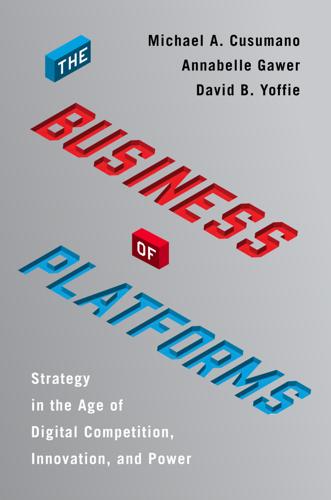
The Business of Platforms: Strategy in the Age of Digital Competition, Innovation, and Power
by
Michael A. Cusumano
,
Annabelle Gawer
and
David B. Yoffie
Published 6 May 2019
The firms that own this type of platform primarily capture value by collecting transaction fees, charging for advertising, or both. Some firms start with one type of platform and add the second type, or mix and link the two. We refer to companies that support both types of platforms as hybrids. Some people use the term “hybrid” to refer to companies like Apple, Oracle, SAP, or Salesforce that emphasize a combination of product and platform businesses. In this book, however, as we discuss in Chapter 3, we use “hybrid” to refer to the combination of innovation and transaction platform strategies within the same company or within the same platform infrastructure. What the Data Says Clearly, public and private capital markets have placed enormous value on platforms associated with personal computers, Internet services, and smartphones.
…
Is this company so profitable and valuable primarily because of strong network effects and the multisided market strategy surrounding the iPhone, which now accounts for about 60 percent of revenues? Or does a large part of Apple’s market value come from its design skills, brand, and ability to charge premium prices for the iPhone and some other products and services? We can ask similar questions about other companies: How much of the success of Cisco, Oracle, SAP, or Salesforce came from platform strategy and network effects versus the excellence and brand value of their products and services? Amazon is even more complicated because of how it integrated and mixed platform and non-platform businesses. How much of its market value derives from scale and scope economies associated with the online store and its enormous physical warehousing system as compared to Amazon’s “pure” platform businesses, Amazon Marketplace and Amazon Web Services (AWS)?
…
However, the two platform types must engage different kinds of market participants, solve different launch and monetization problems, and preside over different types of ecosystems. We also discuss the trend toward hybrid strategies and the advantages they afford some of the leading platform companies. Innovation platforms can add transaction functions to help them distribute complementary products and services, as Apple, Google, Microsoft, and Salesforce have done with their app stores. And transaction platforms such as at Amazon, Facebook, Snapchat, Uber, and Airbnb can add innovation platform functions to help them add new features and services from third-party firms, with minimal in-house investment. Hybrid companies also differ in the degrees to which they connect or integrate the two types of platforms; some are highly integrated while others look more like modern-day “digital conglomerates.”

Brotopia: Breaking Up the Boys' Club of Silicon Valley
by
Emily Chang
Published 6 Feb 2018
The crowd groaned in agreement. Ana Medina, an engineer who also worked at Uber, said, “It’s easy to question, do I even belong here? Because so much crap happens day by day.” Medina had worked on the SRE team with Fowler at Uber and backed up the legitimacy of her story. Leah McGowen-Hare, an executive at Salesforce, likened the shock she heard from men in response to Susan Fowler’s post to the horror expressed by white liberals after the 2016 U.S. presidential election. “Hearing people’s reaction to Susan and all the men, like, ‘Oh my God, it’s happening!’ was sort of like when Trump won the election and white people were like, ‘Oh my God, racism is still alive.’
…
I take a seat at a table near the back with a female colleague I have coerced into joining me on this awkward reporting excursion, feeling more than a little naive and dumbstruck. The Gold Club is the lone strip joint in the tech-heavy SoMa district, just a block from the Moscone Center, which hosts the biggest technology conferences in the world (Apple’s Worldwide Developers Conference, Salesforce’s Dreamforce, and Oracle OpenWorld). Yelp is just blocks away, as is LinkedIn’s brand-new twenty-six-story skyscraper. One step into the Gold Club, and you feel as if you’ve been transported to a Las Vegas nightclub, LED lights and all. But this isn’t your usual late-night casino crowd. Construction workers on their lunch breaks sit next to men in suits and tech engineers in hoodies and T-shirts.
…
She introduces herself with her stage name, Zorah Rose, and tells me she is a teacher at a public middle school in Berkeley, doing summer day shifts at the club to help pay bills. She says she has met patrons from all of the brand-name tech companies nearby, specifically mentioning Uber, Dropbox, Twitter, and Airbnb. “Salesforce is big here,” she adds. “Yelp employees call this place Conference Room G.” I ask Rose what exactly is on the menu, besides the dancing and buffet. She tells me that most of the place clears out after lunch, so “you know that the people who are still here want something more.” Besides lunch, nothing’s cheap at the Gold Club.

The Patient Will See You Now: The Future of Medicine Is in Your Hands
by
Eric Topol
Published 6 Jan 2015
Olson, “Wearable Tech Is Plugging into Health Insurance,” Forbes, June 19, 2014, http://www.forbes.com/sites/parmyolson/2014/06/19/wearable-tech-health-insurance/. 61. S. Lohr, “Salesforce Takes Its Cloud Model to Health Care,” New York Times, June 26, 2014, http://bits.blogs.nytimes.com/2014/06/26/salesforce-takes-its-cloud-model-to-health-care/. 62. M. Sullivan, “Salesforce and Philips Partner in Ambitious Health Data Venture,” Venture Beat, June 26, 2014, http://venturebeat.com/2014/06/26/salesforce-com-and-philips-partner-in-ambitious-health-data-venture/. 63. M. Lev-Ram, “What’s the Next Big Thing in Big Data?,” Fortune, June 2, 2014, http://fortune.com/2014/06/02/fortune-500-big-data/. 64.
…
Klein, “The Two Most Important Numbers in American Health Care,” Washington Post, September 19, 2013, http://www.washingtonpost.com/blogs/wonkblog/wp/2013/09/19/the-two-most-important-numbers-in-american-health-care/?print=1. 62. S. Lohr, “Salesforce Takes Its Cloud Model to Health Care,” New York Times, June 26, 2014, http://bits.blogs.nytimes.com/2014/06/26/salesforce-takes-its-cloud-model-to-health-care/. 63. “End-Of-Life Care: A Challenge in Terms Of Costs and Quality,” Kaiser Health News, June 4, 2013, http://www.kaiserhealthnews.org/Daily-Reports/2013/June/04/end-of-life-care.aspx. 64. G. W. Neuberg, “The Cost of End-of-Life Care: A New Efficiency Measure Falls Short of AHA/ACC Standards,” Circulation: Cardiovascular Quality and Outcomes 2 (2009): 127–133. 65.
…
These programs would be better known as employee—not employer—health and wellness initiatives, denoting the power of the information holder and generator. Taking Down Walls Freeing the people from traditional medical shackles entails freeing the data, and there are signs this is beginning to take off. One such indication is the joint venture of Philips, a major supplier of medical sensors, with Salesforce, a pioneer in cloud computing, to create an “open cloud-based health care platform” for software developers, providers, medical device producers, and insurance companies.61,62 Open medicine initiatives build on the Power of One. If you’ve never seen that one-minute video, and are looking to be inspired by individuals who’ve impacted the world, it’s worth a look: https://www.youtube.com/watch?
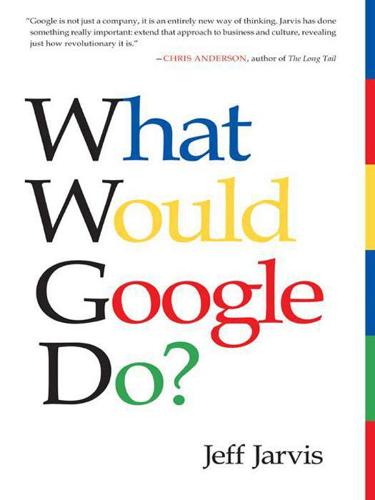
What Would Google Do?
by
Jeff Jarvis
Published 15 Feb 2009
Then your world starts to look like Google’s. Be a platform Networks are built atop platforms. The internet is a platform, as is Google, as are services such as photo site Flickr, blogging service WordPress.com, payment service PayPal, self-publishing company Lulu.com, and business software company Salesforce.com. A platform enables. It helps others build value. Any company can be a platform. Home Depot is a platform for contractors and Continental Airlines is a platform for book tours. Platforms help users create products, businesses, communities, and networks of their own. If it is open and collaborative, those users may in turn add value to the platforms—as IBM does when it shares the improvements it makes in the open-source Linux operating system.
…
People will contribute their intelligence and time if they know they can build something, have influence, gain control, help a fellow customer (more than a company), and claim ownership. Customers are also generous with ideas. In 2008 Starbucks launched MyStarbucksIdea.com, where its customers were invited to tell the company what to do (following Dell’s lead with IdeaStorm; both use Salesforce.com’s Ideas platform). The response from customers was immediate and impressive: thousands of ideas, votes, and comments. One customer wanted Starbucks to make ice cubes out of coffee so, when they melt, they would not dilute cold drinks; 7,600 fellow customers immediately agreed. Another customer proposed putting a shelf in bathrooms—for where else can you put your drink when you’ve drunk too much?
…
They were to become champions for ideas back in their departments “so that literally customers would have a seat at the table when product decisions are made.” Starbucks, like Dell, has a parallel version of the platform running behind its wall for employees to share and discuss their own suggestions. Marc Benioff, the outspoken CEO of Salesforce.com, used the Ideas platform first for his own customers and employees and then opened it up to other companies. “It’s like a live focus group that never closes,” he said in an email. “I believe that these days, the rapid communication that is enabled by wikis, blogs, Twitter, YouTube, and you name it ensures that no matter what kind of company you are, your customers are having a conversation about your products and practices.

Hit Refresh: The Quest to Rediscover Microsoft's Soul and Imagine a Better Future for Everyone
by
Satya Nadella
,
Greg Shaw
and
Jill Tracie Nichols
Published 25 Sep 2017
Build Partnerships Before You Need Them There was an audible gasp and more than a smattering of chuckles in the auditorium when I reached into my suit jacket and pulled out an iPhone. No one in recent memory had seen a Microsoft CEO showing off an Apple product. Especially not at a competitor’s sales conference. “This is a pretty unique iPhone,” I told attendees at Salesforce’s annual marketing event as the crowd quieted down. Salesforce both competes and partners with Microsoft in online services. “I like to call it the iPhone Pro because it’s got all the Microsoft software and applications on it.” On the giant screen behind me, a close-up of the phone appeared. One by one, the app icons flashed into view—iPhone versions of Microsoft classics like Outlook, Skype, Word, Excel, and PowerPoint as well as newer mobile applications like Dynamics, OneNote, OneDrive, Sway, and Power BI.
…
See also smartphones; and specific products mobility, 42, 43, 54, 58, 70, 73, 88, 108, 216, 225 Mojang, 106–8 Moore, Gordon, 161 Moore’s Law, 140, 161 motion-sensing, 145 Motorola, 72 Mount Rainier, 19 mouse, 142 movable type, 152 Mulally, Alan, 64 multiculturalism, 19 multinational corporations, role of, 12, 235–39 Mundie, Craig, 30, 163 Musk, Elon, 203 Muslims, 19 Myerson, Terry, 3, 82, 105, 109 Myhrvold, Nathan, 30 Nadella, Anu, 7–8, 14, 27, 30–33, 41, 86, 92–93, 114 Nadella, father, 16–18, 20–21, 36, 56 Nadella, mother, 16–18, 20, 22, 86, 114, 181 nano-machines, 228 Nanyuki, Kenya, 99 Napoleonic Wars, 188 Narayen, Shantanu, 20, 136 National Aeronautics and Space Administration (NASA), 144, 146 National Football League (NFL), 10–11 National ICT for Development Policy (Malawi), 216 national security, 174–75, 228 National Security Agency (NSA), 172, 174–75, 181 Native Americans, 156 natural language, 151 Nehru, Jawaharlal, 16 Nepal, 44 Netflix, 30, 126 Netherland (O’Neill), 18 .Net, 58 networking, 45, 49, 213 Neuborne, Burt, 190 New Yorker, 233 New York Times, 24, 80, 176, 195, 209 New Zealand, 78 Nichols, Jill Tracie, 66–67, 95 Nietzsche, Friedrich, 79, 147 Nilekani, Nandan, 222 Nokia, 64, 71–73, 106, 133 nondeterministic polynomial time (NP-complete), 25 North, Douglass, 184 North Dakota, 47 North Korea, 169–70 Novell, 26 Numoto, Takeshi, 59 Obama, Barack, 3, 81, 175–76, 211–12, 214 Obama, Michelle, 211 Oculus Rift, 125, 144 Office, 2, 47, 53–54, 59, 68, 73, 81, 85, 123–25, 137, 203 Office 365, 44–45, 61, 62, 85, 123–25, 152, 233 OneDrive, 121 O’Neill, Joseph, 18 One Microsoft, 102, 108 OneNote, 103, 121 OneWeek growth hack, 103–5 online services, 46–47, 51 open-source, 62, 102 opportunity, 79, 238 Oracle, 3, 26, 81 Orlando nightclub massacre, 117 Osmania University, 36 Outlook, 104, 121 Ozzie, Ray, 46, 52–53 Parthasarathy, Sanjay, 115–16 Partnership on AI, 200 partnerships, 76, 78, 120–38 passion, 92, 94, 100, 103, 242 Pataudi, Tiger, 37 pattern recognition, 54, 150, 152, 201 pay equity, 113–14 PC Revolution, 1, 28, 45, 71, 89, 108, 139, 213 decline of, 66, 70, 79 perception, 150, 152, 154 pharmacies, 218, 223 Phillips, James, 58 PhotoShop, 136 photosynthesis, 160 Pichai, Sundar, 131 pivot tables, 143 Pixar, 13 platform shifts, 76, 142 point-of-sales devices, 128–29 Poland, 223 policymaking, 82, 182, 189–92, 214, 223–28, 235 poverty, 99, 237 Power BI, 121 Powerpoint, 121 Practo, 222 predictive power, 42, 88 Predix platform, 127 printing press, 152 PRISM, 172–73 Prism Skylabs, 153 privacy, 170, 172–80, 186–91, 193–94, 202, 205, 224, 230, 238 probabilistic decision making, 54 productivity, 76, 79, 88, 124, 126, 226–28 product launches, 98–100 public health, 237 public-private partnerships, 225–26 public sector, 222, 228, 237–38 Qatar, 225 Qi Lu, Dr., 51–52 Qualcomm, 3, 80, 131–32 quantum computing, 11, 110, 140–42, 159–67, 209, 212, 239 qubits, 160–61, 164, 166–67 logical, 167 topological, 162, 166 radiation monitoring, 44 railroads, 215 Ramakrishnan, Raghu, 58–59 Ranji Trophy, 38, 40 Rashid, Rick, 30 Reagan, Ronald, 181 Real Madrid, 71 Red Dog, 52–53, 58 Red Hat, 125 Reform Government Surveillance alliance, 174 refugees, 218 regulatory systems, 130, 186–90, 215, 227–28 relational algebra, 26 respect, 135, 202 retailers, 128–29, 153 rice production, 44 Rilke, Rainer Maria, 12 Rise and Fall of American Growth (Gordon), 234 risk-taking, 111, 220 River Runs Through It, A (Maclean), 56 Roberts, John, 185–86 robotics, 13, 145, 149–50, 202–4, 208–9, 228, 231–32, 239 Rochester Institute of Technology, 146 Rocky movies, 44–45 Rogan, Seth, 169 Rolling Stones, 98 Rolls-Royce, 127 Romer, Paul, 229 root-cause analysis, 61 RSA-2048 encryption, 162 Rubinstein, Ira, 32–33 run times, 203 rural areas, connecting, 99 Russia, 172 Russinovich, Mark, 58 Rwanda Vision 2020, 216 safety, 153, 172, 176–80, 182, 185, 188, 194, 228 sales conference, 86–95, 100, 118 Salesforce, 121 Samsung, 132–34 San Bernardino attacks, 177, 179, 189 Sanders, Bernie, 230 Sanskrit, 16, 181 Saudi Arabia, 225 scale, 50, 161 Schiller, Phil, 124 Schmidt, Eric, 26 Scott, Kevin, 82 search and seizure, 185–86 Search Checkpoint #1, 51 search engines, 46–52. See also specific products Seattle Children’s Hospital, 8, 41–42 Seattle Seahawks, 4 security, 169–80, 191–94, 202, 205, 224, 227–28, 238 senior leadership team (SLT), 2–6, 10–11, 81–82 sensors, 13, 79, 147–48, 150 September 11, 2001 attacks, 172 Serling, Rod, 159 server and tools business (STB), 53–59 servers, 2, 45, 139 edge of cloud and, 89 private vs. cloud-based, 57 privacy and security and, 173, 176 service sector, 240 Shaikh, Saqib, 200 Snapchat Spectacles, 145 Shaw, Frank, 98, 99 Shenzhen, 229 Shin, Jong-Kyon (J.K.), 133 Shum, Harry, 3, 51–52, 82 Sikhs, 19 silicon photonics, 228 Silicon Valley, 12, 21, 24, 26–27 silos, 57, 102 Sinclair ZX Spectrum kit, 21 Siri, 201 Sirosh, Joseph, 59 skills development, 226–27, 240 Skype, 64, 121, 155, 164, 171 Skype Translator, 59 small firms, 217 smartphones, 45, 66, 73, 132–34.
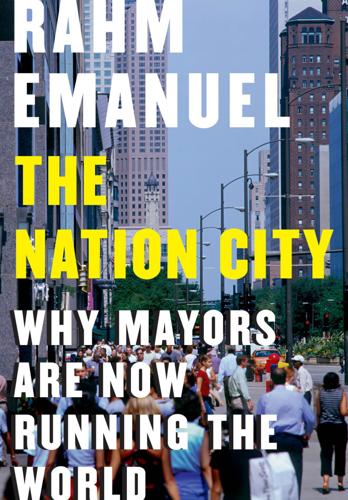
The Nation City: Why Mayors Are Now Running the World
by
Rahm Emanuel
Published 25 Feb 2020
In September of 2017, I rang the opening bell at Solario High School, a predominantly Hispanic school on the Southwest Side of the city, where an estimated 25 percent of the students are Dreamers (“estimated” because the city is not allowed to keep official data on the number of Dreamers in our schools). The school, which focuses on technology through a partnership with Salesforce, has a graduation rate of 92 percent. A student named Lorenzo Rivera introduced me. He is going to Northwestern. One of his brothers is also going to Northwestern. Their single mother works as a custodian. After my introduction, I declared, loud and clear, that our city was a “Trump-free zone.” Yes, it was a bit of bombast.
…
GE Healthcare Worldwide, GE Transportation, ConAgra, Oscar Mayer, Kraft Heinz, and Wilson Sporting Goods have all moved their headquarters to Chicago in recent years. McDonald’s—which fled for the suburbs during the turbulent 1970s—moved its headquarters back to the city. Google, IBM, Microsoft, and Salesforce, to name just a few, have a significant presence in Chicago now. This is happening in cities everywhere. As an offshoot of this phenomenon, universities and research facilities have built up their presences in cities, drawing talented students and faculty from all over the world and producing potential employees, entrepreneurs, and inventions.
…
Things have changed dramatically since, thanks to the Riverwalk and the seeds for growth that it has helped plant. Now at Wolf Point there is a beautiful new waterfront promenade that is vibrant and filled with life. Soon on that very corner where I stood in 2011 there will be a brand-new 813-foot-tall skyscraper that will be occupied by Salesforce, among other companies. Just off the Riverwalk on Wacker Drive, a new 800-foot-tall skyscraper is under construction, and Bank of America has leased 500,000 square feet within it. Also being constructed on the river is the Vista Tower, a joint project of the Magellan Development Group and the Wanda Group.
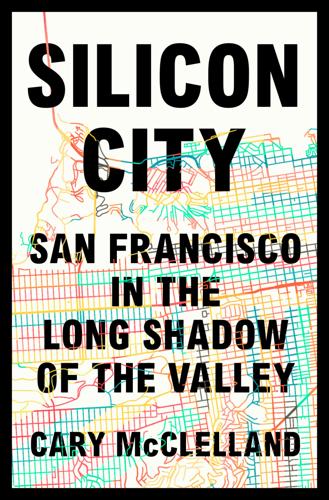
Silicon City: San Francisco in the Long Shadow of the Valley
by
Cary McClelland
Published 8 Oct 2018
If you don’t want to do that, then go do something else. Like Square: great example. Every Friday, they go out and pick up trash around their office. They weigh it. They compete with each other. They make it a game. They’re all about getting clean streets around here. San Francisco schools are getting better because Salesforce went in and adopted all the middle schools. That has given teachers all kinds of money to innovate. They gave every principal $100,000 conditioned on the school district not telling them what to do with it, and you can’t believe what these principals have done. You can even look at the test scores.
…
And he said, “What can I do to help you guys create more jobs in San Francisco?” We went through a litany of options, and he left with something like ten action items. Way too many! I said, “With the approval of the other CEOs, I want you to leave with just two. Number one, we can’t let Twitter move out of the city. They’re already tech’s second-biggest employer behind Salesforce.” San Francisco was charging everyone payroll tax—whether you had revenue or not—and Twitter had revolted and threatened to move their headquarters. So what I said was, “You’ve got to create a payroll tax–free zone.” And number two, Yelp and Zynga were about to leave, because the city charged its own stock-option tax.
…
Funny enough, the very first Navigation Center was funded by an anonymous tech donation of millions of dollars to test out the concept. There’s four now, and the plan is to keep building more. On housing, he wanted to build thirty thousand housing units by 2020 and that’s going to happen. The middle school program—he had a theory that kids get molded in middle school. He got Salesforce to donate $30 million—they adopted the schools—and now the program has expanded to Oakland. Ed Lee always said, “This is my legacy.” He was frustrated by the criticism, but every year the unemployment rate went down, tax revenue went way up, and he was able to put together the city programs that he always dreamed about.
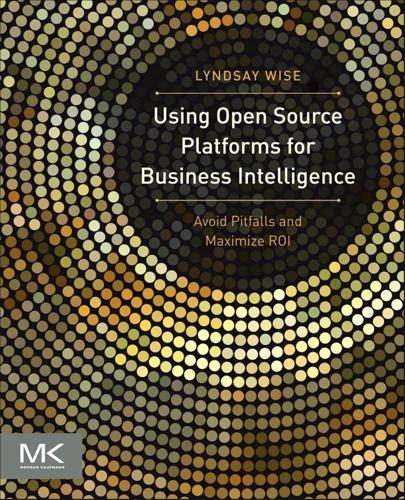
Using Open Source Platforms for Business Intelligence: Avoid Pitfalls and Maximize Roi
by
Lyndsay Wise
Published 16 Sep 2012
A good example of departmental BI remains the increasing popularity of SaaS to provide departmental analytics. Until recently the most commonly applied SaaSbased analytics were solutions applied on top of Salesforce.com. Because Salesforce.com is an operational application, companies monitoring their sales and CRM-related functions need a way to track information and initiatives over time. BI, with the ability to house historical data and develop analytics that take into account trends over time, increases the value of Salesforce.com data. This BI application generally is limited to a departmental function. A company-wide approach, on the other hand, takes into account more diverse data access, metrics, and strategic goals that include the design of the overall solution.
…
When looking at the simplest form of data integration for BI, we refer to ETL, or extract, transform, and load, which does essentially what it says. Information is extracted from a data source. This can be from an Enterprise Resource Planning (ERP), packaged software to help organizations run the transactional side of their business, or CRM application, other transactional systems, or from Salesforce.com, QuickBooks, etc. Once the data is extracted, transformations occur so that when it is loaded within the data warehouse, it will be within a format that reflects the analytics required. Another common way in which data is loaded is using Extract Load and Transform (ELT), instead of the transformations happening before being loaded into a data warehouse, they occur afterwards.
…
This is the value of unstructured data analysis and the ability to look beyond numbers to identify correlations and interrelations between disparate information. External structured data External and internal structured data is the same in format. However, integration requirements and data preparation might be different. Organizations need to look at the considerations discussed above in relation to integration and available adapters. Salesforce.com represents a good example of vendors developing adapters because of the large number of organizations using their solutions. When looking at BI, organizations can no longer only use internal data for their analytics. The combination of internal and external data sources helps provide better visibility overall.
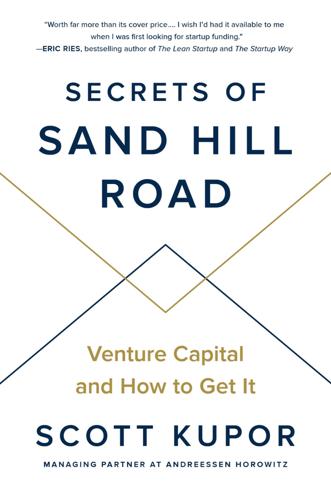
Secrets of Sand Hill Road: Venture Capital and How to Get It
by
Scott Kupor
Published 3 Jun 2019
In addition to going after a great market, Okta was founded by two individuals with a perfect fit to their market opportunity. Todd McKinnon, the founding CEO, had spent most of his professional career running engineering at Salesforce, the pioneer in the SAAS market. Through this role, he experienced firsthand the challenges that many of Salesforce’s customers were having in managing the various SAAS applications they were using. His partner and founding COO, Frederic Kerrest, was also a Salesforce alumnus, having spent his career there learning how to sell the SAAS value proposition to potential customers. The combination of these two skill sets—a deep technical understanding of the problem to be solved, coupled with the knowledge of how best to develop the right sales and marketing strategy (we often call this strategy “go-to-market”) in a still nascent SAAS market—made Todd and Frederic the ideal founders to back in this space.
…
An example from our portfolio is Okta, which is a now-public company that we first invested in back in 2009. Okta is an enterprise software company that provides a way for companies to consolidate log-in credentials for their many software-as-a-service (SAAS) applications. For example, many modern companies use Gmail, Salesforce, and a variety of other internet-based SAAS applications, each of which has its own method of logging in and authenticating users into the applications. Okta provides a unified portal whereby a user needs only to log in to Okta once, and then Okta passes those credentials through to all the SAAS applications for which an employee is granted access.
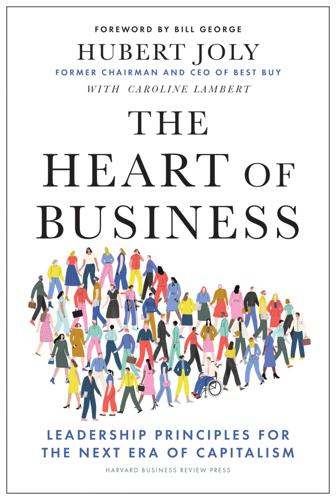
The Heart of Business: Leadership Principles for the Next Era of Capitalism
by
Hubert Joly
Published 14 Jun 2021
Many businesses have also mobilized around social issues that their current and future workforce deeply care about, such as education, immigration, and the rights of minorities. Founder and co-CEO of Salesforce Marc Benioff’s decisive action in support of LGBTQ+ rights, even if it risked affecting the bottom line, was a watershed moment. Benioff called it a fork in the road for the company and for his role as its CEO. His public stand gave Salesforce even more visibility, and the company continued to post record earnings. It also sent a clear signal to employees about the company’s values. “Gone are the days when companies can recruit and retain top talent without upholding a commitment to values,” he concludes.
…
Multiple surveys have made it clear that social inequality and the environmental crisis are feeding disenchantment with capitalism, especially among younger generations.1 Of course, capitalism has led to an unprecedented period of economic development, driving extraordinary innovation and taking billions of people out of poverty. But we are undeniably facing a crisis.2 In fact, in January 2020, Marc Benioff, the outspoken CEO of Salesforce, declared at the annual meeting of the World Economic Forum in Davos, where discussions largely focused on how to address climate change and inequality: “Capitalism as we have known it is dead.” We need to rethink how our economic system works. One of the first things I learned in business school, back in 1978, was that the purpose of business was to maximize shareholder value, and I believed it.
…
A., 228 Minneapolis Institute of Art, 204 minority employees, 90–91, 152, 159–164 Mohan, Mike, 83, 158 Morhaime, Mike, 85 Mulally, Alan, 42–44, 115, 153–154 Musset, Alfred de, 37 Nacchio, Joseph, 214 Nadal, Rafael, 191 Nadella, Satya, 198–199 Napoleon, 200–201 Naraine, Gayatri, 238n7 Nelsen, Keith, 161 New England Conservatory, 189–190 Newman, John Henry, 195 Niedenthal, Paula, 214 Nike, 89, 172 Nikon, 86 Nissan, 214 Noska, Matt, 100 O’Reilly, Charles, 152 Pacino, Al, 192 participative process, 173–175 perfectionism counterproductive striving for, 38–39, 42–43, 45 fear of failure and, 44, 45 feedback as critique of, 39–42 good-enough plans vs., 110–112 human connection effects of, 38, 42, 45 “I don’t know” acceptability vs., 44 imperfection vs., embracing, 38, 41–45 leadership insertion and, 40, 46–47 mental health effects of, 42 outstanding performance vs., 38 problems with, 37–47 religious and theological views of, 37–38, 39 performance assessments of, 188–191, 235 (see also feedback) autonomy improving, 169 feedback evaluating, 39–42, 155 financial incentives not driving, 125–129, 243n4 human connections driving, 148–151 individual development of, 184–185, 189–191 irrational performance with human magic, 6, 117, 181 mastery in, 181–193, 245n3(ch 12) metrics for, 94, 100–101, 113, 130, 184–185, 186–187 outstanding, perfection vs., 38 problems with, embracing and improving, 42–44 (see also vulnerability, encouraging) rankings of, 45, 189 self-assessments of, 188–189 strength building and, 190–191 personal experiences, sharing, 147–148, 155–156 Pew Research Center, 28, 240n1 Pfeffer, Jeffrey, 152 Pink, Daniel, 126, 167 Pliner, Eric, 46–47, 157–158, 170–171 Polgar, Alfred, 238n13 Polman, Paul, 89 Porter, Michael, 218 productivity, 15, 16, 17, 185 profits corporate blind pursuit of, 4, 6, 61, 183 dangers of singular focus on, 57–59 employee engagement and, 15, 17, 57, 61–62 healthy approach to, 62 as misleading measure of economic performance, 56–57 as outcome of excellence, 64, 68, 73–74 scandals due to excessive focus on, 59 shareholder value and, 6, 51, 54–62, 63–65, 74, 192 stakeholders antagonized by singular focus on, 59–61 PTC, 57 Publicis, 111 Puerto Rican hurricane relief, 138–140 purpose of business, 4–5, 6–7, 51, 63–65, 233 (see also purposeful human organizations) discovery of personal, 29–32, 30f employees driven by, 32–34, 61–62, 65–68, 66f, 74, 133–145 framing in meaningful, human, and authentic way, 142–144 growth tied to, 203–204 of incentives, 129–131 leader’s clarity of, 222–223 “noble purpose,” 6, 66–71, 66f, 75, 79–95, 135, 203, 233 shareholder value maximization as, fallacy of, 6, 51, 54–62, 63–65 of work, 11, 23–28, 31, 32–35 purposeful human organizations active engagement with purpose in, 79–95 aspirational goals and vision in, 70 capitalism reinvention by, 62, 65, 73, 74–77 community support and connections in, 68, 72, 88–91 customer delight as goal of, 83–85 customer loyalty to, 64, 67–68, 71–72, 74 employees driven by purpose in, 61–62, 65–68, 66f, 74 environmental and social issues addressed in, 72, 74, 75–76, 88–91, 92, 94 examples of, 72–73 human connections fostered in, 65–77, 66f human magic in (see human magic) inspiration from purpose in, 70–72 interdependence in, 66f, 68 management practices in, 93–95 overview of, 6, 51 profits as outcome of excellence in, 64, 68, 73–74 shareholders rewarded in, 91–92 shareholder value maximization fallacy for, 6, 51, 53–62, 63–65 stakeholders embraced and mobilized in, 82–92 strategy based on purpose in, 66, 74–75, 80–82 supplier and competitor partnerships in, 68, 85–88 turnarounds in, 51, 57, 69, 85, 91–93, 95, 97–117 purposeful leadership articulating principles of, 221 authenticity of, 228–229 clarity of purpose in, 222–223 clarity of role in, 223–224 clarity of service goals in, 224–226 five “Be’s” of, 222–229 overview of, 6, 209 values driving, 218, 226–228 Qwest, 214 racial and ethnic minority employees, 90–91, 152, 159–164 Radio Shack, 2 Radisson Hotels, 41 Ralph Lauren Corporation, 72–73, 89, 143, 202 Rankin, Howard, 162 RASCI (responsible, accountable, supporting, consulted, or merely informed) decision making model, 47, 171–172 rating agencies, calls for action, 235 regulators, calls for action, 235 religion and theology effort vs. outcome focus in, 183–184, 245n3(ch 12) interdependence philosophy echoing, 68 perfection views in, 37–38, 39 purpose discovery using, 29 spirituality as driving force, 138 work views in, 18–19, 24–26, 183, 238n7, 238n11 remote working, 176–177 Rezidor Hotel Group, 199 Rickover, Hyman G., 79 Ritter, Kurt, 199 role modeling, 141 ROWE (results only work environment), 176–177 Sacilor, 213 safety, environment of, 150–151, 153–154, 193, 227–228 Saksena, Asheesh, 197–199 Salesforce, 54, 89–90 Samsung Electronics, 86–87, 196 Samuel (Father), 37–39, 41, 47 Scarlett, Kamy, 144, 147–148, 152, 153, 190 Schmidt, Chris, 184–185, 186 Schulze, Dick, 1–2, 102–104, 110, 123–125 scientific management, 127, 168 Sears, 58 service customer, 14–15, 21, 31, 34 leader’s clarity of goals for, 224–226 purpose tied to, 6, 30–31, 51, 67–68, 69, 75, 242n14 work as opportunity for, 27–28, 238n7 SFR, 57 shareholders business connection to, 68 calls for action for, 235 environmental and social issue importance to, 60–61, 241nn11–12 expectations for businesses, 4 positive environment creation for, 114–115 responsible investments of, 241n11 rewarding, 91–92 shareholder value, 6, 51, 54–62, 63–65, 74, 192 transparency with, 115–116 shareholder value Best Buy’s, 58–59, 61, 192 dangers of singular focus on, 57–59 employee engagement and, 61–62 healthy approach to, 62 maximization of, fallacy of business purpose as, 6, 51, 54–62, 63–65 as misleading measure of economic performance, 56–57 purposeful and human approach improving, 74 scandals due to excessive focus on, 59 stakeholders antagonized by singular focus on, 59–61 Sheth, Jag, 73 Shin, J.
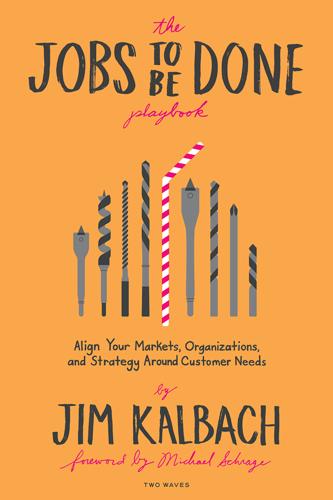
The Jobs to Be Done Playbook: Align Your Markets, Organization, and Strategy Around Customer Needs
by
Jim Kalbach
Published 6 Apr 2020
Also see my 2016 book Mapping Experiences for more details and examples of mapping of all kinds. PLAY Onboard Customers Successfully In 1999, Salesforce reinvented sales and customer relationship management by providing a complete online solution. Previously, similar systems would have been installed locally, on servers at a customer’s site. But with Salesforce.com, users could access data right from a browser with their data stored in the cloud. Salesforce grew rapidly. In 2005, their market cap quadrupled from the previous year to $2 billion. By all measures, it was a wildly successful business.
…
See also organization, around jobs reviewer, as function in job ecosystem, 19–21 Revlon, 220 Revson, Charles, 220 Re-Wired Group, 67 Rhea, Brian, 184 Rich, Jessica, 149–150, 153, 266 Ries, Eric, 151, 153, 266 roadmap. See development roadmap, creating Rogers, Everett, 95, 185 root cause analysis, 36–37, 180–181 Ryan, Evan, 122, 127, 263 S SaaS (software as a service), 77, 170 Salesforce, 169–170 satisfaction vs. importance matrix, 84–85, 89–91, 92, 114–115 Schrage, Michael, 153, 266 Segway, 149, 161–162, 185 shared value, 216–217 Silverstein, Daniel, 156 Sinclair, Rebecca, 220 Singer, Ryan, 170, 177, 268 Sinha, Janmejaya, 203 Skype, 195–196, 208 social jobs, 23–24, 26–27, 32 social responsibility, 217 Soler, Agustin, 246–250 solution architecture, 137–148, 265 architecture defined, 137 model of experience design, 138 modeling systems, 140–144 user environment design (UED), 141–144 web navigation design, 145–148 solution experience vs. job comprehension, 171–174 solutions competing.

Age of the City: Why Our Future Will Be Won or Lost Together
by
Ian Goldin
and
Tom Lee-Devlin
Published 21 Jun 2023
The move follows a similar decision during the height of the pandemic in 2021 to purchase a Manhattan office building for over $2 billion.28 Citigroup has also committed to a major refurbishment of its EMEA headquarters in London’s Canary Wharf, with a greater emphasis on collaborative workspaces and the seamless integration of technology,29 while Salesforce is redesigning its headquarters in San Francisco around collaborative ‘community hubs’ in place of rows of desks.30 The gap between the top-quality offices, boasting sleek designs, first-rate facilities and green credentials, and the rest of the ageing office stock is widening rapidly, a fact reflected in increasingly bifurcated office rental and sales prices.31 Businesses are upping their office-space game, partly to encourage people back to work and partly to stand out in the war for talent.
…
19 Morgan, K., 2021, ‘Why in-person workers may be more likely to get promoted’, BBC (bbc.com). 20 University College London, 2017, ‘Audience members’ hearts beat together at the theatre’ (ucl.ac.uk). 21 Winck, B., 2021, ‘4 charts show how fast everyone is flocking back to big cities’, Business Insider. 22 Anderson, D., 2021, ‘Home prices in cities rise 16%, surpassing suburban and rural price growth for the first time since pre-pandemic’, Redfin (redfin.com). 23 Transport for London, 2022, ‘Latest TfL figures show continued growth in ridership following lifting of working from home restrictions’ (tfl.gov.uk). 24 The Economist, 2022, ‘The future of public transport in Britain’. 25 Kastle Systems, 2022, ‘Recreation activity vs. office occupancy’ (kastle.com). 26 Bloom, Twitter. 27 Partridge, J., 2022, ‘Google in $1bn deal to buy Central Saint Giles offices in London’, Guardian. 28 Putzier, K., 2021, ‘Google to buy New York City office building for $2.1 billion’, Wall Street Journal. 29 Morris, S. and Hammond, G., 2022, ‘Citi plans £100m revamp of Canary Wharf tower’, Financial Times. 30 Hartman, A., 2021, ‘Salesforce says “the 9-to-5 workday is dead” and will provide 3 new ways for employees to work – including the possibility of working from home forever’, Business Insider. 31 Gupta, A., et al., 2022, ‘Work from home and the office real estate apocalypse’, NBER working paper. 32 Cohen, B., 2022, ‘Yes, Zoom has an office.
…
Harmon, J. and Zim, E., 2021, ‘The rise and fall of the American mall’, Business Insider. Harper, K. and Armelagos, G., 2010, ‘The changing disease-scape in the third epidemiological transition’, International Journal of Environmental Research and Public Health, Vol. 7, No. 2. Hartman, A., 2021, ‘Salesforce says “the 9-to-5 workday is dead” and will provide 3 new ways for employees to work – including the possibility of working from home forever’, Business Insider. Haug, G., et al., 2001, ‘Southward migration of the intertropical convergence zone through the Holocene’, Science, Vol. 293, No. 5533.

You've Been Played: How Corporations, Governments, and Schools Use Games to Control Us All
by
Adrian Hon
Published 14 Sep 2022
Sarah O’Connor, “When Your Boss Is an Algorithm,” Financial Times, September 7, 2016, www.ft.com/content/88fdc58e-754f-11e6-b60a-de4532d5ea35. 57. “Gamification,” Gamification Service for the Neo Environment, SAP Help Portal, SAP, accessed November 26, 2021, https://help.sap.com/viewer/850b6386f85d49699cfa908a5bc99d99/Cloud/en-US/332a9fb362924b6bba6373f459a77af6.html; “Gamification,” Salesforce Help, Salesforce, accessed November 26, 2021, https://help.salesforce.com/articleView?id=networks_gamification.htm&type=0; “Microsoft Dynamics 365—Gamification [DEPRECATED],” Microsoft Dynamics 365, Microsoft, accessed November 26, 2021, https://web.archive.org/web/20210507193636/https://appsource.microsoft.com/en-us/product/dynamics-365/mscrm.f6d23ec7-255c-4bd8-8c99-dc041d5cb8b3?
…
Percolata’s CEO Greg Tanaka told the Financial Times, “What’s ironic is we’re not automating the sales associates’ jobs per se, but we’re automating the manager’s job, and [our algorithm] can actually do it better than them,” just as Cogito’s AI seeks to eliminate supervisors’ jobs.56 But many industries don’t need to install security cameras on the shop floor to implement Digital Taylorism and gamification, because they’re already partly or wholly digital. Hundreds of thousands of businesses coordinate their entire operations on sprawling “enterprise resource planning” and “customer relationship management” platforms provided by SAP, Salesforce, and Microsoft.57 These three platforms process literally trillions of dollars of commerce volume every year, and each of them have official gamification tools deployable at the click of a button. The growth of working from home has accelerated this process. Demand for software that can remotely monitor employees’ computers surged in 2020 during COVID-19 lockdowns, with Hubstaff among the leaders.58 Like Sapience, it monitors everything, rewarding users with achievement badges like “Efficiency pro” for reaching “the goal for activity each day” and “Productivity champ” for hitting their to-do goals over a week.59 As we turn our homes into a branch office of our work, it may become harder and harder to escape workplace gamification.
…
Like other actions in the game, there’s no need for players to make this time a fulfilling experience—the benefits accrue regardless of the quality of interaction, as if half ignoring a friend while checking your phone were the same as having a proper conversation with them. But a wave of “personal relationship management” apps like UpHabit and Dex, similar to customer relationship management apps like Salesforce, treat relationships just as The Sims does—meters to be mechanically topped up every month or quarter, just like paying your electricity bill. It’s the scalar fallacy again, extrapolated to friendships. The more interaction, the higher the numbers, the better the relationship. When Kepler demonstrated the “heavenly machine” was not the work of a divine being but a clockwork machine, he banished minds from our understanding of the universe.
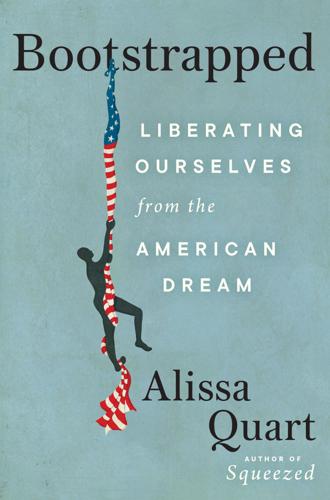
Bootstrapped: Liberating Ourselves From the American Dream
by
Alissa Quart
Published 14 Mar 2023
placed meditation rooms throughout the company’s San Francisco headquarters: Benioff described his decision, and the monks’ input into the building’s layout, at the 2016 Forbes CIO Summit. Alex Conrad, “How Monks Convinced Marc Benioff to Install ‘Mindfulness Zones’ Throughout Salesforce’s New Offices,” Forbes, March 7, 2016, https://www.forbes.com/sites/alexkonrad/2016/03/07/how-monks-convinced-benioff-to-put-mindfulness-zones-in-salesforce/?sh=479238ec1e24. zealously suggested Transcendental Meditation to hundreds of his employees: Dalio introduced TM to his 735 employees around 2008. He has also donated tens of millions of dollars to the Twin Peaks director David Lynch’s TM foundation.
…
David Gelles, the New York Times business writer and a corporate-mindfulness guru, has urged companies to use these programs, arguing that mindfulness will make America not only better but also cheaper—that highly stressed employees cost $2,000 more per year in health care, while productivity nets $3,000 more per mindful employee. The chief executive of Salesforce placed meditation rooms throughout the company’s San Francisco headquarters and had Buddhist monks stay at his house, because he had a “beginner’s mind,” the Zen Buddhist–endorsed mentality of openness and enthusiasm when studying a subject that had informed his management style. Corporate mindfulness is also one way for titans of business to spiritualize their single-minded efforts to aggregate capital.

Platform Revolution: How Networked Markets Are Transforming the Economy--And How to Make Them Work for You
by
Sangeet Paul Choudary
,
Marshall W. van Alstyne
and
Geoffrey G. Parker
Published 27 Mar 2016
Along with the work of other scholars, Geoff’s and Marshall’s insights helped to reshape mainstream thinking about business regulation. Later, at the MIT Initiative on the Digital Economy, they furthered their work with such firms as AT&T, Dun & Bradstreet, Cisco, IBM, Intel, Jawbone, Microsoft, Salesforce, SAP, Thomson Reuters, and many others. The third author of this book, Sangeet Choudary, was a high school student during the dot-com boom of the 1990s, but he was already fascinated by the immense power of the Internet—particularly its power to create business models capable of rapid, scalable growth.
…
The implication is that subsystems can be designed independently so long as they adhere to overall design rules and connect to the rest of the system only through standard interfaces. Readers will likely have heard the term application programming interfaces, or APIs. These are the standard interfaces that systems such as Google Maps, the New York Stock Exchange, Salesforce, Thomson Reuters Eikon, Twitter, and many more use to facilitate access by external entities to core resources.16 Amazon has been especially effective at opening APIs to its modular services. Figure 3.1 compares the range of APIs made available by Amazon and by the leading traditional retailer, Walmart, which is making a strong effort to become a significant platform competitor.
…
By contrast, Walmart has just one API, an e-commerce tool.14 Partly as a result of this difference, Amazon’s stock market capitalization exceeded that of Walmart for the first time in June 2015, reflecting Wall Street’s bullish view of Amazon’s future growth prospects.15 Other platform businesses have reaped similar benefits from their APIs. Cloud computing and computer services platform Salesforce generates 50 percent of its revenues through APIs, while for travel platform Expedia, the figure is 90 percent.16 The third category of developers who add value to the interactions on a platform are data aggregators. Data aggregators enhance the matching function of the platform by adding data from multiple sources.
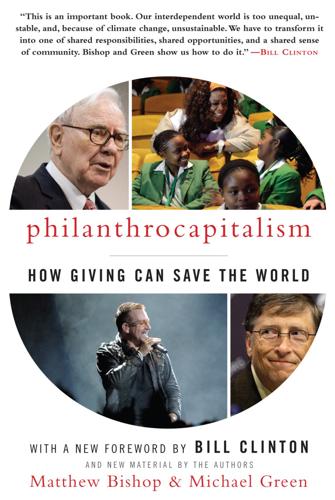
Philanthrocapitalism
by
Matthew Bishop
,
Michael Green
and
Bill Clinton
Published 29 Sep 2008
Though it would increase their costs, the existence of a system of carbon regulation with broad public support would make the business conditions in which they will operate in future more predictable, reducing the risk involved when they make multibillion-dollar investments in new operations that may take years to build and decades to generate profit. Likewise, Benioff is clear that one of the goals of Salesforce.com’s philanthropy is to attract the best talent. Surveys show that college graduates, in particular, increasingly want to work for a company that shares their values and commitment to a better world. Benioff is adamant that he has been able to recruit better employees because of his firm’s philanthropic commitment, and that having lots of employees who are motivated by this sense of mission makes Salesforce.com a more successful business. Yet Porter and Kramer readily concede that reality is often a long way from their ideal.
…
It has played a leading role in putting together the program for action on climate change championed by U.N. secretary general Ban Ki-moon and got involved with UNESCO in a project to further engage the private sector in the conservation of World Heritage Sites. With the World Health Organization, it has formed a partnership with Vodafone, Palm Pilot, Salesforce.com, and Google to track public health data, which is input into handheld devices, wirelessly transmitted to a database, and mapped online; after testing this in three countries starting in 2006, the plan is to roll it out in thirty countries. In all these initiatives, a key challenge for the foundation has been “to find the right people within the U.N. who can get things done,” says Wirth.
…
In doing so, it scored notable successes, particularly in supporting the green revolution in agriculture, beginning in the 1940s, that helped Asia avoid a Malthusian nightmare of rising hunger on the back of a rising population. By increasing the productivity of basic agriculture, the foundation helped to save (it is generally agreed) at least a billion lives. Rodin is keen to promote greater transparency about the foundation’s activities. It has partnered with the charitable arms of Salesforce.com and Google, among others, to develop ways of tracking and publishing online data about the performance of its grants and grantees. “We need to be articulate about what we want to achieve. Maybe we should have an impact curve, with impact on the y axis and time on the x axis. Obviously, the green revolution will take at least twenty years, with low impact at first and no exit planned now.

Little Bets: How Breakthrough Ideas Emerge From Small Discoveries
by
Peter Sims
Published 18 Apr 2011
As Vanier explains, if he can launch ten features in the same time it takes a competitor to launch one, he’ll have ten times the amount of experience to draw from in figuring out what has failed the test of customer acceptance and what has succeeded. Agile development is not without its limitations, such as when large teams must be coordinated, but well-run agile teams have regularly achieved higher productivity and quality than the waterfall method. This helps explain why established companies like Intuit, Yahoo!, and Salesforce.com have followed nimble startups, like Andre Vanier’s, toward agile methods. The imposition of constraints is a powerful technique across a wide range of endeavors. It was, to use another example, central to the turnaround in the strategy in the Iraq war. At the time that U.S. Army Brigadier General H.
…
Secondary sources: “The Scrum Papers: Nuts, Bolts, and Origins of an Agile Process” by Jeff Sutherland, PhD, and Ken Schwaber (Self-published, 2007). “The New New Product Development Game” by Hirotaka Takeuchi and Ikujiro Nonaka, Harvard Business Review, January–February 2006. “Manifesto for Agile Software Development” can be found at: http://agilemanifesto.org/. Agile methods are not yet mainstream. Companies like Salesforce.com have had successful migrations, while other software companies struggle to implement them. Small teams are critical, as is training and experience with the methods of which there are many variations, including Scrum, Ruby on Rails, Lean Startup, Customer Development Model, and so on. In general, Silicon Valley Internet entrepreneurs use agile methods because they can, and often must given their constraints.
…
R., 91–95, 103–105, 149–51, 153, 155, 159 McNamara, Robert, 24–25 Meditation, 66 Meet the Press (TV show), 118, 119, 126–29 Memorization, 14, 15 Men’s Vogue, 126–27 Mexico, 113–14 Microage, 112 Microfinance, 98, 102 Microsoft, 9, 86–87, 156, 157 Microsoft Office, 89 Military, 22–28, 91–95, 103–105, 149–51, 155, 159 counterinsurgency approach, 27, 91–95, 103–105, 149–51, 155 imposition of constraints, 91–95 small wins, 149–51 Mistakes, 11, 16, 35, 36, 46 MIT Sloan School of Management, 133 Moggridge, Bill, Designing Interactions, 172 Monsters Inc., 71, 155 Montessori, Maria, 115 Montessori schools, 115 Moore, Geoffrey, Crossing the Chasm, 133 Mountain biking, 137–38 Moynihan, Daniel Patrick, 129 Mozart, Wolfgang Amadeus, 7, 8, 181–82 MRIs, 30, 65–67 Music, 7, 8, 13, 115, 134, 181, 182 improvisation, 65–68 Nagata Acoustics, 81 Navone, Victor, 71 NBC, 125 NBC News, 119 Network of luck, 124 New York, 79, 109, 117, 119 New Yorker, 103 New York Times, 106, 124, 138 Next Computer, 29 Nonaka, Ikujiro, 85–86 Obama, Barack, 56–58, 126–28 The Audacity of Hope, 126 Obama, Michelle, 57, 58 Observation, 97–116, 152 Office Space (film), 74 1-800-FREE-411, 89, 90 Onion, 2–3 OnStar, 15 Openness to experience, 117–30 luck and, 121–24 Orange County Register, 1 O’Reilly (Charles) and Tushman (Michael L.), Winning Through Innovation, 175–76 Orland (Ted) and Bayles (David), Art & Fear: Observations on the Perils (and Rewards) of Artmaking, 160 Orth, Maureen, 118–19, 124 Overture, 4 Packard, David, 9, 22, 120 Packer, George, 103, 105 Page, Larry, 4–5, 8, 115 PBS, 83 Perfectionism, 51, 59, 68, 73, 76, 160 healthy vs. unhealthy, 51–52 prototyping and, 52–64 Pescosolido, Anthony, 74 Peters, Tom, 200 In Search of Excellence, 120 Petersen, Bob, 73–75, 105–106 Petraeus, David, 95, 155 Pictionary, 158 Pink, Daniel, A Whole New Mind: Why Right Brainers Will Rule the Future, 164 Pipkin, Chet, 111–13, 153 Pixar, 12, 13, 29–32, 41–45, 52, 105–106, 115, 121, 135, 142–46, 151, 153, 155, 158–59, 186–87 growth mind-set of, 41–45 humor, 73–76 plussing, 69–73 prototyping and, 59–62 questions, 105–106 small wins, 142–46, 148–49, 150 See also specific animated films Pixar Image Computer, 30, 142, 141–46 Play, 13, 65–76 genius of, 65–76 humor and, 73–76 improvisation and, 65–69 plussing and, 69–73 Politics, 55–58, 125–28 prototyping and, 55–58 Porras, Jerry, Built to Last, 166–67 Positive feedback, 147, 148 Power Point, 138 Presidential elections, 125 of 2000, 125 of 2008, 125–28 Price, David, The Pixar Touch, 31, 60, 142, 143, 145, 164, 165 Pritzker Prize, 45 Problems, 77–95, 159 smallifying, 77–95 Problem solvers, 87–88 Procedural planning, limitations of, 15–17, 19, 20, 24–26 Procter & Gamble, 62–64, 107, 113–14, 134–35 Prodigies, 7, 8, 9 Prototyping, 52–64, 80, 81, 135, 152, 158–59 Publishing industry, 138–40 Questions, 97–116, 128 Radiology, 137 Radio Shack, 112, 113 Ramadi, 94–95 Ramo, Joshua Cooper, The Age of the Unthinkable, 174 Ranft, Joe, 59, 60, 106 Rao, Hayagreeva, 42 Ratatouille (film), 59 Rauschenberg, Robert, 117 RCA, 21 Red’s Dream (film), 144–45 Reed College, 41, 108 Reels, 60 REM sleep, 66 RenderMan, 143–44, 146, 149 Reorientation, 14 Resources, 163–78 Richardson, Adam, Innovation X, 172 Ricks, Thomas, 91 Ries, Eric, 20 Right brain/left brain analogies, 15, 183–84 Ringtones, 57–58 Robinson, Sir Ken, 15 Rock, Chris, 1–3, 5, 7, 8, 14, 32, 33, 35, 47, 54, 131, 135, 137, 140, 141, 151, 153, 154–55, 158 Rogers, Everett, 131–33 Diffusion of Innovations, 133, 167–68 Romero, Eric, 74 Romney, Mitt, 125 Rospars, Joe, 57–58 Ruby, Matt, 2, 3 Russert, Tim, 118–20, 121, 124–128, 129 Saadiq, Raphael, 134 Salesforce, 91 Salonen, Esa-Pekka, 83 Sarasvathy, Saras, 10, 28–29, 30, 102, 141, 148, 183 “What Makes Entrepreneurs Entrepreneurial,” 10–11 Sawyer, Keith, 160 Group Genius, 118, 168 Saxnian, AnnaLee, 118 Schmidt, Eric, 5 School for Advanced Military Studies (SAMS), 27–28 Schultz, Howard, 11, 53, 146–47, 151 Pour Your Heart Into It, 147 Scientific management, 15 Scrabble, 158 Scully, John, 29, 108 Seinfeld, Jerry, 2, 109 Senge, Peter, The Fifth Element, 175 Sequential processes, 15–17 SIGGRAPH, 143, 144, 148 Silicon Graphics, 44 Silicon Valley, 10, 19, 36, 53, 75, 84, 107, 146, 153, 197, 198 Sketches of Frank Gehry (documentary), 55, 117 Sleep, 66 Slemmer, Mike, 89–90 Small problems, 77–95 Small wins, 141–52 Smart-guy syndrome, 109 Smith, Alvy Ray, 30, 149 Software, 83–91, 112, 136–37, 143–46, 149, 151 agile development, 84–91, 148, 151, 152 RenderMan, 143–44, 146, 149 waterfall method, 86–88 Solutions, problems as, 77–95 Sony, 108 Sotheby’s, 6 Soviet Army, 23–26 Sports, 37, 85 SRI International, 21 Stand-up comedy, 1–3, 12, 13, 32, 109, 128, 131, 133, 135, 140, 141, 151, 154–55 Stanford Business School, 3–4 Stanford Digital Library Project, 4 Stanford University, 12, 45, 108, 125 d.school, 12, 63, 134–35 Stanton, Andrew, 52–53, 61 Starbucks, 11, 53, 146–47, 151, 183 Status quo bias, 110 S Team, 6 Sternberg, Robert J., Handbook of Creativity, 168 Stokes, Patricia, Creativity from Constraint, 170–71 Storyboards, 59–62, 70, 145 Strategy and innovation, further readings and resources on, 173–76 Stress Factory, New Brunswick, New Jersey, 1 Subtle controls, 85–86 Summit Partners, 111 SUN Microsystems, 10, 36 Superelaborate storyboards, 43 Surprises, 11 Sutherland, Jeff, 84, 85 Sutton, Robert, 42 Tait, Karen, 157–58 Tait, Richard, 155–58 Takeuchi, Hirotaka, 85–86 Tal Afar, Iraq, 92–94, 103, 150, 159 Taleb, Nassim Nicholas, The Black Swan, 175 Taliban, 25 Technology, 17, 20, 21, 22, 29–32, 83–91, 107–108, 112, 132, 137, 142–46, 153.

Frugal Innovation: How to Do Better With Less
by
Jaideep Prabhu Navi Radjou
Published 15 Feb 2015
SNCF has also tied up with Orange and Total to launch Ecomobilité Ventures, Europe’s first multi-corporate investment fund, which invests in a portfolio of promising start-ups that can collectively deliver end-to-end solutions in sustainable mobility. Non-competing brands can also work together, not only to respond to the current needs of their shared customers, but also to anticipate their future needs. Simon Mulcahy, senior vice-president and managing director of financial services industry at Salesforce. com, which offers a customer relationship management platform based on cloud computing, encourages companies to adopt a wide lens to perceive their customer needs through the diverse perspectives of other industries, and to address these needs by borrowing best practices from other sectors.9 For example, diverse industries such as construction, interior design and renovation, food, retail, entertainment, logistics, health, financial services, energy and communication all share a single customer in one particular location: their home.
…
It is published with the permission of Diateino. 4Principle three: create sustainable solutions 1“Tarkett joins the ‘Circular Economy 100’ program”, Tarkett, February 8th 2013. 2“Fixing Capitalism: Paul Polman interview”, Confederation of British Industry (CBI), November 14th 2012. 3“A water warning”, The Economist, November 19th 2008. 4Kanani, R., “Why IKEA Thinks This Mega-Trend Will Define The Next 30 Years Of Business”, Forbes, February 7th 2014. 5McDonough, W. and Braungart, M., Cradle to Cradle: Remaking the Way We Make Things, North Point, 2002. 6Kobori, M., vice-president, global sustainability, Levi Strauss & Co, interview with Navi Radjou, May 21st 2014. 7Ebner von Eschenbach, head of BMW Group’s Financial Services Segment, interview with Jaideep Prabhu, April 7th 2014. 8Walker, J., former head of innovation, Kingfisher, interview with Jaideep Prabhu, February 20th 2014. 9Heck, S., Rogers, M. and Carroll, P., Resource Revolution: How to Capture the Biggest Business Opportunity in a Century, Melcher Media, 2014. 10Mazoyer, E., deputy CEO, Bouygues Immobilier, interview with Navi Radjou, April 29th 2014. 11Laville, E., CEO, Utopies, interview with Navi Radjou, March 28th 2014. 12Nemo, S-N., vice-president, La Poste, and head of Recy’Go, interview with Navi Radjou, April 30th 2014. 13Blanchard, D., chief R&D officer, Unilever, interview with Jaideep Prabhu, February 20th 2014. 5Principle four: shape customer behaviour 1Blanchard, D., chief R&D officer, Unilever, interview with Jaideep Prabhu, February 20th 2014. 2Schumacher, E.F., Small Is Beautiful: A Study of Economics as if People Mattered, Harper & Row, 1973. 3Ehrenfeld, J. and Hoffman, A.J., Flourishing: A Frank Conversation about Sustainability, Stanford Business Books, 2013. 4Ibid. 5MIT’s SENSEable City Lab research team, interview with Navi Radjou, May 13th 2014. 6Ratti, C. and Kloeckl, K., “Rise of the Asian Megacity”, BBC, June 20th 2011. 7“Health and appiness”, The Economist, February 1st 2014. 8Wilby, P., “Moocs, and the man leading the UK’s charge”, Guardian, August 18th 2014. 9Subramanian, P., founder, CoLearnr, interview with Jaideep Prabhu, May 1st 2014. 10Bordoff, J. and Pascal, N., Pay-As-You-Drive Auto Insurance: A Simple Way to Reduce Driving-Related Harms and Increase Equity, Brookings Institution, July 2008. 11Verbaken, J., co-founder, gThrive, interview with Navi Radjou, August 18th 2014. 12Laskey, A., CEO, Opower, “How behavioral science can lower your energy bill”, talk at TED 2013. 13Rebours, C., CEO, InProcess, interview with Navi Radjou, March 14th 2014. 14“Philips Introduces ‘Lighting as a Service’”, SustainableBusiness.com, January 23rd 2014. 15“Meet Simple; A Worry-Free Alternative To Traditional Banking”, TraxonTech, March 14th 2013. 6Principle five: co-create value with prosumers 1Von Hippel, E., Democratizing Innovation, MIT Press, 2006. 2“Samsung ranks second in R&D spending for 2013”, GS Marena Blog, October 24th 2013. 3Dunn, E. and Norton, M., Happy Money: The Science of Smarter Spending, Simon & Schuster, 2013. 4Norton, M., Ariely, D. and Mochon, D., “The IKEA effect: When labor leads to love”, Journal of Consumer Psychology, Vol. 22, 2012, pp. 453–60. 5Coase, R., “The Nature of the Firm”, Economica (Blackwell Publishing), Vol. 4, Issue 16, 1937, pp. 386–405. 6White House, “Remarks by the President at the White House Maker Faire”, Office of the Press Secretary, June 18th 2014. 7Dutcher, J., “Massimo Banzi: How Arduino is Open-Sourcing Imagination”, DataScience@Berkeley, April 22nd 2014. 8European Commission, “The Sharing Economy: Accessibility Based Business Models for Peer-to-Peer Markets”, Business Innovation Observatory, September 2013. 9Cortese, A., Locavesting: The Revolution in Local Investing and How to Profit from It, John Wiley, 2011. 10Nussbaum, B., Creative Intelligence: Harnessing the Power to Create, Connect, and Inspire, HarperBusiness, 2013. 11“Giffgaff”, World Heritage Encyclopedia, November 25th 2009. 7Principle six: make innovative friends 1Safian, R., “Generation Flux: Beth Comstock”, Fast Company, January 2012. 2Comstock, B., senior vice-president and chief marketing officer, GE, interview with Navi Radjou, April 7th 2014. 3Groth, O., “Hacking Wicked Social Problems With Renaissance Thinkers and Gamers”, Huffington Post, February 18th 2014. 4Martin, T., “The (Un)examined Organization”, The Alpine Review, Issue No. 2, 2014. 5Martin, T., CEO, Unboundary, e-mail exchange with Navi Radjou, August 18th 2014. 6“Four Disruption Themes for Business”, The Altimeter Group, April 2013. 7Groth, op. cit. 8Marks & Spencer’s Plan A Report, 2014. 9Mulcahy, S., senior vice-president and managing director of financial services industry, Salesforce.com, interview with Navi Radjou, March 6th 2014. 10Rebours, C., CEO, InProcess, interview with Navi Radjou, March 14th 2014. 11Gertler, N., “Industrial Ecosystems: Developing Sustainable Industrial Structures”, MIT master’s thesis, Smart Communities Network, 1995. 12Corkery, M., and Silver-Greenberg, J., “Lenders Offer Low-Cost Services for the Unbanked”, New York Times Dealbook, July 22nd 2014. 13Fera, R.A., “American Express Spotlights the Issue of Financial Exclusion in Davis Guggenheim Doc ‘Spent’”, Fast Company, March 2014. 14Birol, J., serial entrepreneur and strategy consultant, interview with Navi Radjou, August 25th 2014. 15Wiseman, L., Thinkers50-ranked leadership expert, interview with Navi Radjou, August 18th 2014. 16“Pearson debuts new global accelerator class”, Pearson News, June 16th 2014. 17Coughlin, B., CEO, Ford Global Technologies, e-mail exchange with Navi Radjou, August 2014. 18Radjou, N., “Innovation Networks: Global Progress Report 2006,” Forrester Report, June 2006. 19Vandebroek, S., chief technology officer, Xerox, interview with Navi Radjou, August 25th 2014. 20Musk, E., “All Our Patent Are Belong To You”, Tesla Blog, June 12th 2014. 21Litzler, J-B., “Sébastien Bazin divise Accor en deux pour mieux le réveiller”, Le Figaro, November 27th 2013. 22Lacheret, Y., senior vice-president, entrepreneurship advocacy, Accor Group, interview with Navi Radjou, July 7th 2014. 8Fostering a frugal culture 1Hall, J., “Sir Stuart Rose on the ethical spirit of Marks & Spencer”, Daily Telegraph, February 1st 2009. 2Vasanthakumar, V., Senior Associate, Office of the Chief Education Adviser at Pearson, interview with Jaideep Pradhu, August 28th 2014. 3Datta, M., head of Plan A delivery, Marks & Spencer’s worldwide properties, interview with Jaideep Prabhu, May 9th 2014. 4Marks & Spencer’s Plan A Report, 2014. 5Faber, E., CEO, Danone, e-mail exchange with Navi Radjou, August 2014. 6Lawrence, J., senior sustainability adviser and in-house counsel to Kingfisher Group’s Net Positive strategy, interview with Jaideep Prabhu, February 21st 2014. 7Kingfisher, Net Positive Report, 2013/14. 8Ibid. 9Marks & Spencer, op. cit. 10Radjou, N., Prabhu, J. and Ahuja, S., L’Innovation Jugaad: Redevenons Ingénieux!
…
MacArthur Foundation 14 John Deere 67 John Lewis 195 Johnson & Johnson 100, 111 Johnson, Warren 98 Jones, Don 112 jugaad (frugal ingenuity) 199, 202 Jugaad Innovation (Radjou, Prabhu and Ahuja, 2012) xvii, 17 just-in-time design 33–4 K Kaeser, Joe 217 Kalanick, Travis 163 Kalundborg (Denmark) 160 kanju 201 Karkal, Shamir 124 Kaufman, Ben 50–1, 126 Kawai, Daisuke 29–30 Kelly, John 199–200 Kennedy, President John 138 Kenya 57, 200–1 key performance indicators see KPIs Khan Academy 16–17, 113–14, 164 Khan, Salman (Sal) 16–17, 113–14 Kickstarter 17, 48, 137, 138 KieranTimberlake 196 Kimberly-Clark 25, 145 Kingfisher 86–7, 91, 97, 157, 158–9, 185–6, 192–3, 208 KissKissBankBank 17, 137 Knox, Steve 145 Knudstorp, Jørgen Vig 37, 68, 69 Kobori, Michael 83, 100 KPIs (key performance indicators) 38–9, 67, 91–2, 185–6, 208 Kuhndt, Michael 194 Kurniawan, Arie 151–2 L La Chose 108 La Poste 92–3, 157 La Ruche qui dit Oui 137 “labs on a chip” 52 Lacheret, Yves 173–5 Lada 1 laser cutters 134, 166 Laskey, Alex 119 last-mile challenge 57, 146, 156 L’Atelier 168–9 Latin America 161 lattice organisation 63–4 Laury, Véronique 208 Laville, Elisabeth 91 Lawrence, Jamie 185, 192–3, 208 LCA (life-cycle assessment) 196–7 leaders 179, 203–5, 214, 217 lean manufacturing 192 leanness 33–4, 41, 42, 170, 192 Learnbox 114 learning by doing 173, 179 learning organisations 179 leasing 123 Lee, Deishin 159 Lego 51, 126 Lego Group 37, 68, 69, 144 Legrand 157 Lenovo 56 Leroy, Adolphe 127 Leroy Merlin 127–8 Leslie, Garthen 150–1 Lever, William Hesketh 96 Levi Strauss & Co 60, 82–4, 100, 122–3 Lewis, Dijuana 212 life cycle of buildings 196 see also product life cycle life-cycle assessment (LCA) 196–7 life-cycle costs 12, 24, 196 Lifebuoy soap 95, 97 lifespan of companies 154 lighting 32, 56, 123, 201 “lightweighting” 47 linear development cycles 21, 23 linear model of production 80–1 Link 131 littleBits 51 Livi, Daniele 88 Livi, Vittorio 88 local communities 52, 57, 146, 206–7 local markets 183–4 Local Motors 52, 129, 152 local solutions 188, 201–2 local sourcing 51–2, 56, 137, 174, 181 localisation 56, 137 Locavesting (Cortese, 2011) 138 Logan car 2–3, 12, 179, 198–9 logistics 46, 57–8, 161, 191, 207 longevity 121, 124 Lopez, Maribel 65–6 Lopez Research 65–6 L’Oréal 174 Los Alamos National Laboratory 170 low-cost airlines 60, 121 low-cost innovation 11 low-income markets 12–13, 161, 203, 207 Lowry, Adam 81–2 M m-health 109, 111–12 M-KOPA 201 M-Pesa 57, 201 M3D 48, 132 McDonough Braungart Design Chemistry (MBDC) 84 McDonough, William 82 McGregor, Douglas 63 MacGyvers 17–18, 130, 134, 167 McKelvey, Jim 135 McKinsey & Company 81, 87, 209 mainstream, frugal products in 216 maintenance 66, 75, 76, 124, 187 costs 48–9, 66 Mainwaring, Simon 8 Maistre, Christophe de 187–8, 216 Maker Faire 18, 133–4 Maker platform 70 makers 18, 133–4, 145 manufacturing 20th-century model 46, 55, 80–1 additive 47–9 continuous 44–5 costs 47, 48, 52 decentralised 9, 44, 51–2 frugal 44–54 integration with logistics 57–8 new approaches 50–4 social 50–1 subtractive method 48 tools for 47, 47–50 Margarine Unie 96 market 15, 28, 38, 64, 186, 189, 192 R&D and 21, 26, 33, 34 market research 25, 61, 139, 141 market share 100 marketing 21–2, 24, 36, 61–3, 91, 116–20, 131, 139 and R&D 34, 37, 37–8 marketing teams 143, 150 markets 12–13, 42, 62, 215 see also emerging markets Marks & Spencer (M&S) 97, 215 Plan A 90, 156, 179–81, 183–4, 186–7, 214 Marriott 140 Mars 57, 158–9, 161 Martin Marietta 159 Martin, Tod 154 mass customisation 9, 46, 47, 48, 57–8 mass market 189 mass marketing 21–2 mass production 9, 46, 57, 58, 74, 129, 196 Massachusetts Institute of Technology see MIT massive open online courses see MOOCs materials 3, 47, 48, 73, 92, 161 costs 153, 161, 190 recyclable 74, 81, 196 recycled 77, 81–2, 83, 86, 89, 183, 193 renewable 77, 86 repurposing 93 see also C2C; reuse Mayhew, Stephen 35, 36 Mazoyer, Eric 90 Mazzella, Frédéric 163 MBDC (McDonough Braungart Design Chemistry) 84 MDI 16 measurable goals 185–6 Mechanical Engineer Laboratory (MEL) 52 “MEcosystems” 154–5, 156–8 Medicare 110 medication 111–12 Medicity 211 MedStartr 17 MEL (Mechanical Engineer Laboratory) 52 mental models 2, 193–203, 206, 216 Mercure 173 Merlin, Rose 127 Mestrallet, Gérard 53, 54 method (company) 81–2 Mexico 38, 56 Michelin 160 micro-factories 51–2, 52, 66, 129, 152 micro-robots 52 Microsoft 38 Microsoft Kinect 130 Microsoft Word 24 middle classes 197–8, 216 Migicovsky, Eric 137–8 Mikkiche, Karim 199 millennials 7, 14, 17, 131–2, 137, 141, 142 MindCET 165 miniaturisation 52, 53–4 Mint.com 125 MIT (Massachusetts Institute of Technology) 44–5, 107, 130, 134, 202 mobile health see m-health mobile phones 24, 32, 61, 129–30, 130, 168, 174 emerging market use 198 infrastructure 56, 198 see also smartphones mobile production units 66–7 mobile technologies 16, 17, 103, 133, 174, 200–1, 207 Mocana 151 Mochon, Daniel 132 modular design 67, 90 modular production units 66–7 Modularer Querbaukasten see MQB “mompreneurs” 145 Mondelez 158–9 Money Dashboard 125 Moneythink 162 monitoring 65–6, 106, 131 Monopoly 144 MOOCs (massive open online courses) 60, 61, 112, 113, 114, 164 Morieux, Yves 64 Morocco 207 Morris, Robert 199–200 motivation, employees 178, 180, 186, 192, 205–8 motivational approaches to shaping consumer behaviour 105–6 Motorola 56 MQB (Modularer Querbaukasten) 44, 45–6 Mulally, Alan 70, 166 Mulcahy, Simon 157 Mulliez family 126–7 Mulliez, Vianney 13, 126 multi-nodal innovation 202–3 Munari, Bruno 93 Murray, Mike 48–9 Musk, Elon 172 N Nano car 119, 156 National Geographic 102 natural capital, loss of 158–9 Natural Capital Leaders Platform 158–9 natural resources 45, 86 depletion 7, 72, 105, 153, 158–9 see also resources NCR 55–6 near-shoring 55 Nelson, Simon 113 Nemo, Sophie-Noëlle 93 Nest Labs 98–100, 103 Nestlé 31, 44, 68, 78, 94, 158–9, 194, 195 NetPositive plan 86, 208 networking 152–3, 153 new materials 47, 92 New Matter 132 new technologies 21, 27 Newtopia 32 next-generation customers 121–2 next-generation manufacturing techniques 44–6, 46–7 see also frugal manufacturing Nigeria 152, 197–8 Nike 84 NineSigma 151 Nissan 4, 4–5, 44, 199 see also Renault-Nissan non-governmental organisations 167 non-profit organisations 161, 162, 202 Nooyi, Indra 217 Norman, Donald 120 Norris, Greg 196 North American companies 216–17 North American market 22 Northrup Grumman 68 Norton, Michael 132 Norway 103 Novartis 44–5, 215 Novotel 173, 174 nudging 100, 108, 111, 117, 162 Nussbaum, Bruce 140 O O2 147 Obama, President Barack 6, 8, 13, 134, 138, 208 obsolescence, planned 24, 121 offshoring 55 Oh, Amy 145 Ohayon, Elie 71–2 Oliver Wyman 22 Olocco, Gregory 206 O’Marah, Kevin 58 on-demand services 39, 124 online communities 31, 50, 61, 134 online marketing 143 online retailing 60, 132 onshoring 55 Opel 4 open innovation 104, 151, 152, 153, 154 open-source approach 48, 129, 134, 135, 172 open-source hardware 51, 52, 89, 130, 135, 139 open-source software 48, 130, 132, 144–5, 167 OpenIDEO 142 operating costs 45, 215 Opower 103, 109, 119 Orange 157 Orbitz 173 organisational change 36–7, 90–1, 176, 177–90, 203–8, 213–14, 216 business models 190–3 mental models 193–203 organisational culture 36–7, 170, 176, 177–9, 213–14, 217 efficacy focus 181–3 entrepreneurial 76, 173 see also organisational change organisational structure 63–5, 69 outsourcing 59, 143, 146 over-engineering 27, 42, 170 Overby, Christine 25 ownership 9 Oxylane Group 127 P P&G (Procter & Gamble) 19, 31, 58, 94, 117, 123, 145, 195 packaging 57, 96, 195 Page, Larry 63 “pain points” 29, 30, 31 Palmer, Michael 212 Palo Alto Junior League 20 ParkatmyHouse 17, 63, 85 Parker, Philip 61 participation, customers 128–9 partner ecosystems 153, 154, 200 partners 65, 72, 148, 153, 156–8 sharing data with 59–60 see also distributors; hyper-collaboration; suppliers Partners in Care Foundation 202 partnerships 41, 42, 152–3, 156–7, 171–2, 174, 191 with SMBs 173, 174, 175 with start-ups 20, 164–5, 175 with suppliers 192–3 see also hyper-collaboration patents 171–2 Payne, Alex 124 PE International 196 Pearson 164–5, 167, 181–3, 186, 215 Pebble 137–8 peer-to-peer economic model 10 peer-to-peer lending 10 peer-to-peer sales 60 peer-to-peer sharing 136–7 Pélisson, Gérard 172–3 PepsiCo 38, 40, 179, 190, 194, 215 performance 47, 73, 77, 80, 95 of employees 69 Pernod Ricard 157 personalisation 9, 45, 46, 48, 62, 129–30, 132, 149 Peters, Tom 21 pharmaceutical industry 13, 22, 23, 33, 58, 171, 181 continuous manufacturing 44–6 see also GSK Philippines 191 Philips 56, 84, 100, 123 Philips Lighting 32 Picaud, Philippe 122 Piggy Mojo 119 piggybacking 57 Piketty, Thomas 6 Plan A (M&S) 90, 156, 179–81, 183–4, 186–7, 214 Planet 21 (Accor) 174–5 planned obsolescence 24, 121 Plastyc 17 Plumridge, Rupert 18 point-of-sale data 58 Poland 103 pollution 74, 78, 87, 116, 187, 200 Polman, Paul 11, 72, 77, 94, 203–5, 217 portfolio management tools 27, 33 Portugal 55, 103 postponement 57–8 Potočnik, Janez 8, 79 Prabhu, Arun 25 Prahalad, C.K. 12 predictive analytics 32–3 predictive maintenance 66, 67–8 Priceline 173 pricing 81, 117 processes digitising 65–6 entrenched 14–16 re-engineering 74 simplifying 169, 173 Procter & Gamble see P&G procurement priorities 67–8 product life cycle 21, 75, 92, 186 costs 12, 24, 196 sustainability 73–5 product-sharing initiatives 87 production costs 9, 83 productivity 49, 59, 65, 79–80, 153 staff 14 profit 14, 105 Progressive 100, 116 Project Ara 130 promotion 61–3 Propeller Health 111 prosumers xix–xx, 17–18, 125, 126–33, 136–7, 148, 154 empowering and engaging 139–46 see also horizontal economy Protomax 159 prototypes 31–2, 50, 144, 152 prototyping 42, 52, 65, 152, 167, 192, 206 public 50–1, 215 public sector, working with 161–2 publishers 17, 61 Pullman 173 Puma 194 purchasing power 5–6, 216 pyramidal model of production 51 pyramidal organisations 69 Q Qarnot Computing 89 Qualcomm 84 Qualcomm Life 112 quality 3, 11–12, 15, 24, 45, 49, 82, 206, 216 high 1, 9, 93, 198, 216 measure of 105 versus quantity 8, 23 quality of life 8, 204 Quicken 19–21 Quirky 50–1, 126, 150–1, 152 R R&D 35, 67, 92, 151 big-ticket programmes 35–6 and business development 37–8 China 40, 188, 206 customer focus 27, 39, 43 frugal approach 12, 26–33, 82 global networks 39–40 incentives 38–9 industrial model 2, 21–6, 33, 36, 42 market-focused, agile model 26–33 and marketing 34, 37, 37–8 recommendations for managers 34–41 speed 23, 27, 34, 149 spending 15, 22, 23, 28, 141, 149, 152, 171, 187 technology culture 14–15, 38–9 see also Air Liquide; Ford; GSK; IBM; immersion; Renault; SNCF; Tarkett; Unilever R&D labs 9, 21–6, 70, 149, 218 in emerging markets 40, 188, 200 R&D teams 26, 34, 38–9, 65, 127, 150, 194–5 hackers as 142 innovation brokering 168 shaping customer behaviour 120–2 Raspberry Pi 135–6, 164 Ratti, Carlo 107 raw materials see materials real-time demand signals 58, 59 Rebours, Christophe 157–8 recession 5–6, 6, 46, 131, 180 Reckitt Benckiser 102 recommendations for managers flexing assets 65–71 R&D 34–41 shaping consumer behaviour 116–24 sustainability 90–3 recruiting 70–1 recyclable materials 74, 81, 196 recyclable products 3, 73, 159, 195–6 recycled materials 77, 81–2, 83, 86, 89, 183, 193 recycling 8, 9, 87, 93, 142, 159 e-waste 87–8 electronic and electrical goods (EU) 8, 79 by Tarkett 73–7 water 83, 175 see also C2C; circular economy Recy’Go 92–3 regional champions 182 regulation 7–8, 13, 78–9, 103, 216 Reich, Joshua 124 RelayRides 17 Renault 1–5, 12, 117, 156–7, 179 Renault-Nissan 4–5, 40, 198–9, 215 renewable energy 8, 53, 74, 86, 91, 136, 142, 196 renewable materials 77, 86 Replicator 132 repurposing 93 Requardt, Hermann 189 reshoring 55–6 resource constraints 4–5, 217 resource efficiency 7–8, 46, 47–9, 79, 190 Resource Revolution (Heck, Rogers and Carroll, 2014) 87–8 resources 40, 42, 73, 86, 197, 199 consumption 9, 26, 73–7, 101–2 costs 78, 203 depletion 7, 72, 105, 153, 158–9 reducing use 45, 52, 65, 73–7, 104, 199, 203 saving 72, 77, 200 scarcity 22, 46, 72, 73, 77–8, 80, 158–9, 190, 203 sharing 56–7, 159–61, 167 substitution 92 wasting 169–70 retailers 56, 129, 214 “big-box” 9, 18, 137 Rethink Robotics 49 return on investment 22, 197 reuse 9, 73, 76–7, 81, 84–5, 92–3, 200 see also C2C revenues, generating 77, 167, 180 reverse innovation 202–3 rewards 37, 178, 208 Riboud, Franck 66, 184, 217 Rifkin, Jeremy 9–10 robots 47, 49–50, 70, 144–5, 150 Rock Health 151 Rogers, Jay 129 Rogers, Matt 87–8 Romania 2–3, 103 rookie mindset 164, 168 Rose, Stuart 179–80, 180 Roulin, Anne 195 Ryan, Eric 81–2 Ryanair 60 S S-Oil 106 SaaS (software as a service) 60 Saatchi & Saatchi 70–1 Saatchi & Saatchi + Duke 71–2, 143 sales function 15, 21, 25–6, 36, 116–18, 146 Salesforce.com 157 Santi, Paolo 108 SAP 59, 186 Saunders, Charles 211 savings 115 Sawa Orchards 29–31 Scandinavian countries 6–7 see also Norway Schmidt, Eric 136 Schneider Electric 150 Schulman, Dan 161–2 Schumacher, E.F. 104–5, 105 Schweitzer, Louis 1, 2, 3, 4, 179 SCM (supply chain management) systems 59 SCOR (supply chain operations reference) model 67 Seattle 107 SEB 157 self-sufficiency 8 selling less 123–4 senior managers 122–4, 199 see also CEOs; organisational change sensors 65–6, 106, 118, 135, 201 services 9, 41–3, 67–8, 124, 149 frugal 60–3, 216 value-added 62–3, 76, 150, 206, 209 Shapeways 51, 132 shareholders 14, 15, 76, 123–4, 180, 204–5 sharing 9–10, 193 assets 159–61, 167 customers 156–8 ideas 63–4 intellectual assets 171–2 knowledge 153 peer-to-peer 136–9 resources 56–7, 159–61, 167 sharing economy 9–10, 17, 57, 77, 80, 84–7, 108, 124 peer-to-peer sharing 136–9 sharing between companies 159–60 shipping costs 55, 59 shopping experience 121–2 SIEH hotel group 172–3 Siemens 117–18, 150, 187–9, 215, 216 Sigismondi, Pier Luigi 100 Silicon Valley 42, 98, 109, 150, 151, 162, 175 silos, breaking out of 36–7 Simple Bank 124–5 simplicity 8, 41, 64–5, 170, 194 Singapore 175 Six Sigma 11 Skillshare 85 SkyPlus 62 Small is Beautiful (Schumacher, 1973) 104–5 “small is beautiful” values 8 small and medium-sized businesses see SMBs Smart + Connected Communities 29 SMART car 119–20 SMART strategy (Siemens) 188–9 smartphones 17, 100, 106, 118, 130, 131, 135, 198 in health care 110, 111 see also apps SmartScan 29 SMBs (small and medium-sized businesses) 173, 174, 175, 176 SMS-based systems 42–3 SnapShot 116 SNCF 41–3, 156–7, 167 SoapBox 28–9 social business model 206–7 social comparison 109 social development 14 social goals 94 social learning 113 social manufacturing 47, 50–1 social media 16, 71, 85, 106, 108, 168, 174 for marketing 61, 62, 143 mining 29, 58 social pressure of 119 tools 109, 141 and transaction costs 133 see also Facebook; social networks; Twitter social networks 29, 71, 72, 132–3, 145, 146 see also Facebook; Twitter social pressure 119 social problems 82, 101–2, 141, 142, 153, 161–2, 204 social responsibility 7, 10, 14, 141, 142, 197, 204 corporate 77, 82, 94, 161 social sector, working with 161–2 “social tinkerers” 134–5 socialising education 112–14 Sofitel 173 software 72 software as a service (SaaS) 60 solar power 136, 201 sourcing, local 51–2, 56 Southwest Airlines 60 Spain 5, 6, 103 Spark 48 speed dating 175, 176 spending, on R&D 15, 22, 23, 28, 141, 149, 152, 171, 187 spiral economy 77, 87–90 SRI International 49, 52 staff see employees Stampanato, Gary 55 standards 78, 196 Starbucks 7, 140 start-ups 16–17, 40–1, 61, 89, 110, 145, 148, 150, 169, 216 investing in 137–8, 157 as partners 42, 72, 153, 175, 191, 206 see also Nest Labs; Silicon Valley Statoil 160 Steelcase 142 Stem 151 Stepner, Diana 165 Stewart, Emma 196–7 Stewart, Osamuyimen 201–2 Sto Corp 84 Stora Enso 195 storytelling 112, 113 Strategy& see Booz & Company Subramanian, Prabhu 114 substitution of resources 92 subtractive manufacturing 48 Sun Tzu 158 suppliers 67–8, 83, 148, 153, 167, 176, 192–3 collaboration with 76, 155–6 sharing with 59–60, 91 visibility 59–60 supply chain management see SCM supply chain operations reference (SCOR) model 67 supply chains 34, 36, 54, 65, 107, 137, 192–3 carbon footprint 156 costs 58, 84 decentralisation 66–7 frugal 54–60 integrating 161 small-circuit 137 sustainability 137 visibility 34, 59–60 support 135, 152 sustainability xix, 9, 12, 72, 77–80, 82, 97, 186 certification 84 as competitive advantage 80 consumers and 95, 97, 101–4 core design principle 82–4, 93, 195–6 and growth 76, 80, 104–5 perceptions of 15–16, 80, 91 recommendations for managers 90–3 regulatory demand for 78–9, 216 standard bearers of 80, 97, 215 see also Accor; circular economy; Kingfisher; Marks & Spencer; Tarkett; Unilever sustainable design 82–4 see also C2C sustainable distribution 57, 161 sustainable growth 72, 76–7 sustainable lifestyles 107–8 Sustainable Living Plan (Unilever) 94–7, 179, 203–4 sustainable manufacturing 9, 52 T “T-shaped” employees 70–1 take-back programmes 9, 75, 77, 78 Tally 196–7 Tarkett 73–7, 80, 84 TaskRabbit 85 Tata Motors 16, 119 Taylor, Frederick 71 technical design 37–8 technical support, by customers 146 technology 2, 14–15, 21–2, 26, 27 TechShop 9, 70, 134–5, 152, 166–7 telecoms sector 53, 56 Telefónica 147 telematic monitoring 116 Ternois, Laurence 42 Tesco 102 Tesla Motors 92, 172 testing 28, 42, 141, 170, 192 Texas Industries 159 Textoris, Vincent 127 TGV Lab 42–3 thermostats 98–100 thinking, entrenched 14–16 Thompson, Gav 147 Timberland 90 time 4, 7, 11, 41, 72, 129, 170, 200 constraints 36, 42 see also development cycle tinkerers 17–18, 133–5, 144, 150, 152, 153, 165–7, 168 TiVo 62 Tohamy, Noha 59–60 top-down change 177–8 top-down management 69 Total 157 total quality management (TQM) 11 total volatile organic compounds see TVOC Toyota 44, 100 Toyota Sweden 106–7 TQM (total quality management) 11 traffic 108, 116, 201 training 76, 93, 152, 167, 170, 189 transaction costs 133 transparency 178, 185 transport 46, 57, 96, 156–7 Transport for London 195 TrashTrack 107 Travelocity 174 trial and error 173, 179 Trout, Bernhardt 45 trust 7, 37, 143 TVOC (total volatile organic compounds) 74, 77 Twitter 29, 62, 135, 143, 147 U Uber 136, 163 Ubuntu 202 Uchiyama, Shunichi 50 UCLA Health 202–3 Udacity 61, 112 UK 194 budget cuts 6 consumer empowerment 103 industrial symbiosis 160 savings 115 sharing 85, 138 “un-management” 63–4, 64 Unboundary 154 Unilever 11, 31, 57, 97, 100, 142, 203–5, 215 and sustainability 94–7, 104, 179, 203–4 University of Cambridge Engineering Design Centre (EDC) 194–5 Inclusive Design team 31 Institute for Sustainability Leadership (CISL) 158–9 upcycling 77, 88–9, 93, 159 upselling 189 Upton, Eben 135–6 US 8, 38, 44, 87, 115, 133, 188 access to financial services 13, 17, 161–2 ageing population 194 ageing workforce 13 commuting 131 consumer spending 5, 6, 103 crowdfunding 137–8, 138 economic pressures 5, 6 energy use 103, 119, 196 environmental awareness 7, 102 frugal innovation in 215–16, 218 health care 13, 110, 208–13, 213 intellectual property 171 onshoring 55 regulation 8, 78, 216 sharing 85, 138–9 shifting production from China to 55, 56 tinkering culture 18, 133–4 user communities 62, 89 user interfaces 98, 99 user-friendliness 194 Utopies 91 V validators 144 value 11, 132, 177, 186, 189–90 aspirational 88–9 to customers 6–7, 21, 77, 87, 131, 203 from employees 217 shareholder value 14 value chains 9, 80, 128–9, 143, 159–60, 190, 215 value engineering 192 “value gap” 54–5 value-added services 62–3, 76, 150, 206, 209 values 6–7, 14, 178, 205 Vandebroek, Sophie 169 Vasanthakumar, Vaithegi 182–3 Vats, Tanmaya 190, 192 vehicle fleets, sharing 57, 161 Verbaken, Joop 118 vertical integration 133, 154 virtual prototyping 65 virtuous cycle 212–13 visibility 34, 59–60 visible learning 112–13 visioning sessions 193–4 visualisation 106–8 Vitality 111 Volac 158–9 Volkswagen 4, 44, 45–6, 129, 144 Volvo 62 W wage costs 48 wages, in emerging markets 55 Waitrose, local suppliers 56 Walker, James 87 walking the walk 122–3 Waller, Sam 195 Walmart 9, 18, 56, 162, 216 Walton, Sam 9 Wan Jia 144 Washington DC 123 waste 24, 87–9, 107, 159–60, 175, 192, 196 beautifying 88–9, 93 e-waste 24, 79, 87–8, 121 of energy 119 post-consumer 9, 75, 77, 78, 83 reducing 47, 74, 85, 96, 180, 209 of resources 169–70 in US health-care system 209 see also C2C; recycling; reuse water 78, 83, 104, 106, 158, 175, 188, 206 water consumption 79, 82–3, 100, 196 reducing 74, 75, 79, 104, 122–3, 174, 183 wealth 105, 218 Wear It Share It (Wishi) 85 Weijmarshausen, Peter 51 well-being 104–5 Wham-O 56 Whirlpool 36 “wicked” problems 153 wireless technologies 65–6 Wiseman, Liz 164 Wishi (Wear It Share It) 85 Witty, Andrew 35, 35–6, 37, 39, 217 W.L.

Green Swans: The Coming Boom in Regenerative Capitalism
by
John Elkington
Published 6 Apr 2020
Without fundamental changes to such things as inheritance taxes, immigration, free trade rules, executive compensation, median pay for all employees, and the re-pricing of things like carbon—in short, real systemic change—capitalism will come off the rails. Intriguingly, we see a number of business leaders now acknowledging this publicly, notably Salesforce Chairman and co-CEO Marc Benioff. He says, “Nationally, increasing taxes on high-income individuals like myself would help generate the trillions of dollars that we desperately need to improve education and health care and fight climate change.”35 Such changes will take sustained, bare-knuckled politics.
…
Think of Merck chief Kenneth Frazier’s resignation from Donald Trump’s American Manufacturing Council in response to the US leader’s handling of racial violence in Charlottesville. Or Unilever head Paul Polman’s leading a charge on climate change as the US government was pulling out of the Paris accord. Or any number of corporate leaders, from Apple’s Tim Cook to Salesforce’s Marc Benioff, threatening to move business out of US states that do not respect LGBT rights.24 Exciting times, but we should be wary of simply leaving it to companies to handle the great challenges of tomorrow. Listen to a former managing director of Larry Fink’s BlackRock. Tellingly, Morris Pearl is a board member of the Patriotic Millionaires, a group that went countercurrent by arguing against Trump’s tax cuts for the wealthy.
…
See also: https://www.fastcompany.com/90391743/top-ceo-group-business-roundtable-drops-shareholder-primacy. 34.Irwin Stelzer, “Why We Need to Rescue Capitalism,” The Sunday Times, May 26, 2019. 35.Marc Benioff, “We Need a New Capitalism,” The New York Times, October 14, 2019. See also: https://www.nytimes.com/2019/10/14/opinion/benioff-salesforce-capitalism.html. 36.John Elkington with Tom Burke, The Green Capitalists: Industry’s Search for Environmental Excellence. London: Victor Gollanez, 1987. INTRODUCTION 1.L. Randall Wray, Why Minsky Matters: An Introduction to the Work of a Maverick Economist. Princeton, NJ: Princeton University Press, 2016. 2.Deborah Summers, “No Return to Boom and Bust: What Brown Said When He Was Chancellor,” The Guardian, September 11, 2008.
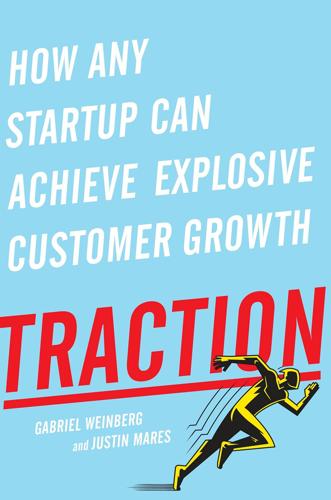
Traction: How Any Startup Can Achieve Explosive Customer Growth
by
Gabriel Weinberg
and
Justin Mares
Published 5 Oct 2015
When they were just starting out, they tried contacting popular companies to arrange partnerships. These types of business development pitches were ineffective early on, but that changed after their blog started getting readership. Now, they have numerous integrations (including some major ones with companies like Salesforce), and a backlog of companies who want to work with them. Having a strong company blog can positively impact at least eight other traction channels—SEO, publicity, email marketing, targeting blogs, community building, offline events, existing platforms, and business development. When it works, it drives in customers like magic.
…
CHAPTER TWENTY-TWO Offline Events Sponsoring or running offline events—from small meetups to large conferences—can be a primary way to get traction. Twilio, a tool that makes it easy to add phone calls and text messaging to apps, attracts its customers by sponsoring hackathons, conferences, and meetups, large and small. Larger companies like Oracle and Box throw huge events to maintain their position as market leaders. Salesforce’s Dreamforce conference has more than 100,000 attendees! In phase I, offline events give you the opportunity to engage directly with potential customers about their problems. Such events are especially important when your target customers do not respond well to online advertising and do not have a natural place to congregate online.

The Big Nine: How the Tech Titans and Their Thinking Machines Could Warp Humanity
by
Amy Webb
Published 5 Mar 2019
In an odd way, it reminds us of the old Soviet Union. Salesforce, the customer relationship management and cloud computing company, partnered with Google, Amazon, and Apple very early on to build out an education module for our PDRs. Now the rigorous testing and classification that were hallmarks of American education in the 1980s and 1990s are popular again. Our cognitive abilities are assessed before preschool, and our academic achievement and enrichment is tracked throughout our lives. Metrics and optimization have always been core values at Salesforce, and now they are core values of an American education.
…
See also DeepMind Defense Innovation Board, 212 Defense Innovation Unit Experimental (DIUx), 212 Descartes, René, 19–20, 22, 27; Meditations on First Philosophy, 19; “Traité de l’homme” (Treatise of Man), 19–20 DeVaul, Richard, 55–56 Difference Engine, 23 Differential Analyzer, 24 Differential technological progress, Big Nine and, 254 Digital caste system: in catastrophic scenario of future, 209, 218; in pragmatic scenario of future, 197 Digital emissaries: in pragmatic scenario of future, 187 Dove domestic surveillance program, 77–78 Dropbox, 87 DuerOS, 68 Duke University, 60 Duplex, 48 Echo, 118 Echo Show, 54 Economic chimera of humans, 225 Economy, U.S.: in catastrophic scenario of future, 220, 226; in optimistic scenario of future, 172; in pragmatic scenario of future, 197, 205. See also Job search and AI; Jobs, blue-collar glut of Edge computing, 90, 119 Education: in optimistic scenario of future, 167; Salesforce core values and in catastrophic scenario of future, 221–222. See also Education, AI; Universities Education, AI: U.S. government officials’ lack of in catastrophic scenario of future, 211. See also Universities Einstein, Alfred, 50 Electro the Moto-Man, 25 Elite: Dangerous (video game), 58 ELIZA program, 34; DOCTOR script, 34 Email: address as proto-PDR, 153–154; providers, 139 ENIAC, 27 Entscheidungsproblem, 24–25.
…
See also Turing, Alan ET City Brain, 69 Ethics: AI company culture and, 255; Baidu focus on, 129; IBM articles regarding, 129; integrating into non-ethics university courses, 256; screening for in G-MAFIA future hiring practices, 255; university courses, 61, 63 Euclid, first algorithm and, 18 Evolutionary algorithms, 144, 164–165; Darwinian natural selection and, 144, 145 Facebook, 3, 70, 85, 96, 154; adult users, 87; advertising revenue, 71; in catastrophic scenario of future, 209, 216, 223; Chinese ban, 76; core values, 100; data policies, 94; exclusion of conservative news on, 57; Intel partnership, 92; “move fast and break things” original motto, 53; number of users, 71; in optimistic scenario of future, 159, 171; Portal, 54; post-Cambridge Analytica debacle apology, 54, 94; post-Cambridge Analytica scandal ethics team, 129; in pragmatic scenario of future, 186, 187, 188, 193, 201–202; psychological experimentation on users, 138; RNC bias accusations against, 56–57; senior leadership, 56; 2016 Presidential election and, 138; Website logins and, 88 Fake news, proliferation of in pragmatic scenario of future, 198 Fan Hui, 43–44, 45; versus DeepMind, 43–44 Fifth Generation, 38 Filmmaking, optimistic scenario of future and, 165–166 Future and AI, catastrophic scenario of, 151–152, 207–229; AGI system lockouts, 224; AI totalitarianism, 223; Amazon-hosted Food Stamp Program, 218; Amazon households, 216, 217–218, 219, 224, 225; Amazon Housing/Homes, 217–218, 219; Americans geographically locked in by China, 227; Apple households, 216, 218, 219, 224, 225; Apple PDRs, 216; blue-collar job glut, 221; blurring of work and personal data, 208; Chief AI Officers, 226; Chinese hackers, 215; climate change consequences, 228–229; corporate ownership of PDRs, 209; crime, 222; digital caste system, 209, 218; economic chimera of humans, 225; education and Salesforce core values, 221–222; extermination of U.S. and allied populations by Chinese ASI, 229; G-MAFIA and preservation of democratic ideals, 211; G-MAFIA diversity mantra, 208; G-MAFIA nonexistent inclusion efforts, 208; G-MAFIA shrinkage to GAA, 223; G-MAFIA sole owners of PDRs, 208, 216; G-MAFIA transactional relationship with U.S. government, 212; GAA-U.S.

Leadership by Algorithm: Who Leads and Who Follows in the AI Era?
by
David de Cremer
Published 25 May 2020
Retrieved from: https://www.pwc.com/us/en/services/consulting/library/artificial-intelligence-predictions-2019?WT.mc_id=CT13-PL1300-DM2-TR1-LS4-ND30-TTA5-CN_ai2019-ai19-digpul-1&eq=CT13-PL1300-DM2-CN_ai2019-ai19-digpul-1 33 Salesforce Research (2019). ‘State of Service.’ Insights and trends from over 3,500 service leaders and agents worldwide. Retrieved from: https://www.salesforce.com/blog/2019/03/customer-service-trends.html 34 Hoffman, P. (1986). ‘The Unity of Descartes’ Man,’ The Philosophical Review 95, 339-369. 35 Google Duplex (2018). https://www.youtube.com/watch?v=D5VN 56jQMWM Chapter 2: The Leadership Challenge in the Algorithm Age The machine age arrived a long time ago, but today’s need for the machine seems to know no limits.
…
Several surveys indicate that it is only a matter of time. For example, an Accenture study revealed that 85% of surveyed executives want to invest more extensively in AI-related technologies by 2020.³¹ Likewise, a PwC survey revealed that 62% of executives are planning to deploy AI in several management areas.³² Furthermore, a survey by Salesforce Research revealed that, in the service industry, 69% of organizations are actively preparing for AI-based service solutions to be applied. Finally, Yahoo Finance predicts that in 2040 our workforce “may be totally unrecognizable.”³³ Why we think about replacing humans Where does this obsession with replacing humans come from?
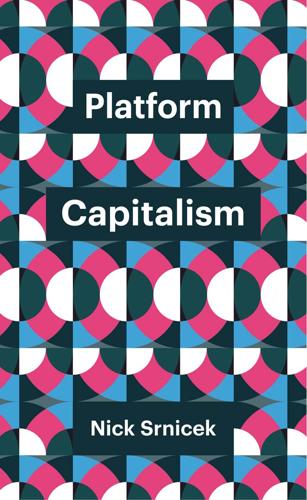
Platform Capitalism
by
Nick Srnicek
Published 22 Dec 2016
In each of these areas, the important element is that the capitalist class owns the platform, not necessarily that it produces a physical product. The first type is that of advertising platforms (e.g. Google, Facebook), which extract information on users, undertake a labour of analysis, and then use the products of that process to sell ad space. The second type is that of cloud platforms (e.g. AWS, Salesforce), which own the hardware and software of digital-dependent businesses and are renting them out as needed. The third type is that of industrial platforms (e.g. GE, Siemens), which build the hardware and software necessary to transform traditional manufacturing into internet-connected processes that lower the costs of production and transform goods into services.
…
Much of Google’s initial success, for instance, stemmed from its pioneering work of creating useful internal software and innovative hardware architecture.18 Rather uniquely, Google designs and builds its own custom servers rather than purchasing standard servers off the market – again, in an effort to gain competitive advantage.19 And, while often it eventually releases information about its operations (which have then been copied by numerous others), it only does so after it has gained a clear advantage.20 It is the importance of analytics that lets us understand why Google is heavily invested in artificial intelligence (AI) research as well, given that this is the key area for developing a competitive advantage over other platforms. Google is the biggest investor in this area, but Amazon, Salesforce, Facebook and Microsoft are all investing heavily in AI as well. Firms also have imperatives to develop the entire stack, and not just one area of it (e.g. data management, or analytical tools).21 Bottlenecks in the flow of data from sensors to commodity are an impediment to producing more value.

Roads and Bridges
by
Nadia Eghbal
Some of these tools, such as servers and databases, cost money, especially as companies scale. This makes them easier to monetize. For example, Heroku, a cloud-based platform that offers server and database support, offers basic services for free, but charges for higher levels of data or traffic. Heroku powers many major websites, including Toyota and Macy’s, and was acquired by Salesforce.com in 2010 for $212M. [12] Other types of developer tools, such as frameworks, many libraries, and programming languages, are harder to charge for, and are often built and maintained by volunteers. Because these types of tools look more like information goods than services that can be turned on or off, charging for them would severely limit their adoption.
…
Notes [1] https://www.cbo.gov/publication/49910 [2] http://news.netcraft.com/archives/2014/04/08/half-a-million-widely-trusted-websites-vulnerable-to-heartbleed-bug.html [3] Email interview with Steve Marquess [4] http://www.forbes.com/sites/josephsteinberg/2014/04/10/massive-internet-security-vulnerability-you-are-at-risk-what-you-need-to-do/ [5] http://mashable.com/2014/04/09/heartbleed-bug-websites-affected/#01gtseEchaqa [6] http://veridicalsystems.com/blog/of-money-responsibility-and-pride/ [7] Phone interview with Steve Marquess [8] Email interview with Steve Marquess [9] Phone interview with Steve Marquess [10] https://instagram.com/about/legal/libraries/ [11] https://opbeat.com/blog/posts/picking-tech-for-your-startup/ [12] http://techcrunch.com/2010/12/08/breaking-salesforce-buys-heroku-for-212-million-in-cash/ [13] https://devblog.uber.com/uber-slack-a-weekend-a-story-of-open-apis/ [14] http://www.alexreisner.com/about [15] http://unicorn.bogomips.org/CONTRIBUTORS.html [16] http://www.bls.gov/ooh/computer-and-information-technology/software-developers.htm [17] http://www.bothsidesofthetable.com/2011/06/28/understanding-changes-in-the-software-venture-capital-industries/ [18] http://articles.latimes.com/2014/apr/03/business/la-fi-tn-imgur-40-million-funding-20140402 [19] http://lifeofaudrey.com/essays/love_and_money.html [20] http://blog.codinghorror.com/why-ruby/ [21] https://djangogirls.org/ [22] https://www.edsurge.com/news/2014-06-25-dev-bootcamp-no-longer-bootstrapped-acquired-by-kaplan [23] http://arstechnica.com/business/2012/08/from-altair-to-ipad-35-years-of-personal-computer-market-share/2/ [24] https://www.fsf.org/about/what-is-free-software [25] https://www.gnu.org/philosophy/free-sw.html [26] http://opensource.org/history [27] http://www.gnu.org/philosophy/open-source-misses-the-point.en.html [28] https://en.wikipedia.org/wiki/WordPress [29] http://www.zdnet.com/article/as-dbms-wars-continue-postgresql-shows-most-momentum/ [30] http://w3techs.com/technologies/details/os-ubuntu/all/all [31] https://www.netmarketshare.com/browser-market-share.aspx?
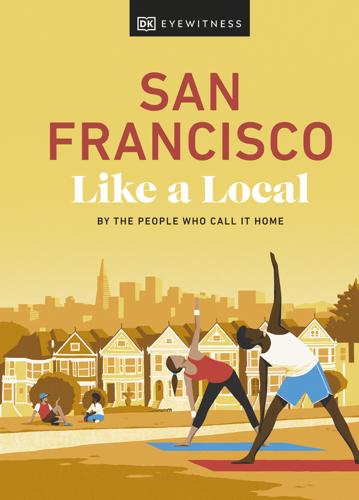
San Francisco Like a Local: By the People Who Call It Home
by
Dk Eyewitness
Published 5 Apr 2023
Join the locals for the all-levels vinyasa Sunday session here or, for something a bit more bonkers than blissed-out, book into the Friday-night class, which follows up an hour of beach yoga with an hour of silent disco. Reserve ahead; the fee is around $30. g Alfresco Fitness g Contents Google Map FITNESS SF Map 1; Salesforce Park, SoMa; ///tanks.boats.brands; www.salesforcetransitcenter.com There’s something very San Franciscan about working out in a software-branded public park on your lunch break. Fitness SF hosts free classes in the Salesforce Transit Center building’s leafy park, a favorite lunchtime haunt of SoMa’s concrete-bound office workers. There’s nothing to take your mind off your start-up’s stock market launch like a spot of HIIT or yoga.
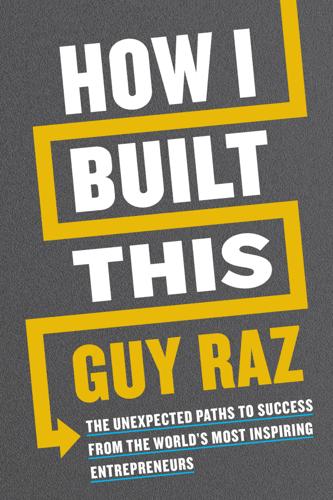
How I Built This: The Unexpected Paths to Success From the World's Most Inspiring Entrepreneurs
by
Guy Raz
Published 14 Sep 2020
A number of the buildings were residential condo complexes, but they were anchored by a sixty-one-story bullet-shaped building reminiscent in both shape and visually transformative effect of London’s Gherkin. It’s called the Salesforce Tower, so named for the massive cloud-based software company that occupies it and a number of other smaller buildings on Mission Street. I was looking at a view of a city in flux. A city undergoing a historic seismic shift, the fault lines of which ran in parallel right down Mission and Market Streets. To the south were the headquarters of many of the tech companies that hit the mother lode during the internet gold rush of the early 2000s and became the dominant forces in their respective spaces: Salesforce, Twitter, Instacart, Airbnb, Pinterest, Zynga, Trulia, DocuSign, Lyft, Uber.
…
This is really where the most valuable lessons and inspiring stories are to be found from the technological and industrial gold rushes that have pockmarked modern business history. They’re not with Cornelius Vanderbilt or Jay Gould or any of the other railroad tycoons from the late nineteenth and early twentieth centuries. They’re not with IBM or Apple or any of the giant software companies that rose to prominence in the 1980s and 1990s. And they’re not with Uber or Salesforce or Twitter or any of the other tech companies born out of the internet boom in the early 2000s, whose headquarters line San Francisco’s Mission Street and define one side of the boundary between where we are going and where we have been. If you want to find an example of an entrepreneur or an innovator who built a sturdy, profitable business connected to a booming industry, you could do far worse than the stories of Levi Strauss, Eli Janney, Chet Pipkin, and even Herb Kelleher.
…
See copyright and intellectual property publicity, negative, 169–72 Puddicombe, Andy, 198–201 punctualists vs. gradualists, 180 Pure Software, 204–5 purpose, 193–202 Angie’s BOOMCHICKAPOP, 251–52 Chez Panisse, 209–10 Gary Erickson on, 245–47 Headspace app, 198–201 lack of, 196–98 mission first approach, 194 vs. money alone, 193–94 of Rent the Runway, 194–96 See also mission; values Q Quaker Oats Company, 245 R Rahal, Peter, xiv, 88–92, 99 Raikes, Jeff, 97–98, 103 railroads, 218 Randolph, Marc, 211 Raz, Guy on career, xiii–xiv childhood and education, xii–xiii crucible phase, 144–45 on first interview for How I Built This, 265–66 on going live with show, 7 on Hannah (wife), ix, 271–72, 274 on How I Built This, 273 on kindness, 253–55 on luck, 266–67 on San Francisco, 214–15 on self-knowledge, 232–33 on this book, xiv–xvi Reagan, Ronald, 14 recalls, 170–72, 173–74, 177 recommendations, 127, 128 Reddit, 225–28 Reid, Antonio “L.A.”, 112 Rent the Runway, 148–50, 194–96 research, 32–41 examples of, 39–41 importance of, 32–33 inexperience as a benefit, 33–34 in luggage industry, 34–38 for Method soap, 46–47 purpose of, 38–39 risks fear vs. danger, 13–14, 17–18, 20 Jim Koch on, 16–18 mitigation of, 23–31 See also credit card use; crisis management Rock, Chris, 157 Rolling Stone, 112 Roney, Carley, 130–31, 132, 134, 269 Rubio, Jen brand building, 122–24, 125 on idea for Away, 34 money from family, 77 partnership and, 43 on research, 34–39 RXBar, 88–89, 91, 99, 103 Ryan, Eric bootstrapping, 51–52 building buzz, 117 money from family, 76–77, 78, 82 parental influence, 45 partnership and, 44–47 on partnership tension, 224–25, 228 privilege and access, 79 S safety nets, 23–31 Salesforce, 215 Sam Adams beer, 14, 17 Sandberg, Ryne, 235 Sand Hill Road Airbnb and, 57 Bevel and, 153–54, 157 Method and, 51–52 misconceptions about, 76 Shopify, 106–7 San Francisco markets, 214–16 scaling a business professional money, 147–58 protection, 168 vs. starting a business, 243–44 vs. you, 186, 200–201, 212 Scott, Kendra, 269 Scudamore, Brian, 208–9, 271 Segal, Gordon and Carole, 77, 79 self-doubt, 156–57 self-knowledge, 232–42 Andy Dunn on, 233–35 Gary Erickson on, 245–47 Guy Raz on, 232–33 identity crisis, 235–38, 239–42 post-merger conflict, 238–39 See also partnerships selling, 243–52 “Servant to Servants, A” (poem), 138, 146 sexism, 149, 194 Shaich, Ron, 77–78, 79, 269, 270 Shark Tank, 10, 24, 75 Shear, Emmett, 185–86, 187 Shoe Dog (Knight), 27 Shopify, 106–9, 268–69 side doors, 97–104 Signal and the Noise, The (Silver), 126 signal-to-noise ratio, 126 Silver, Nate, 126 Slack, xiv, 189–90 Smith, Jared, 90, 99 Snowdevil, 107 Sonnenfeld, Jeffrey, 206 South by Southwest (SXSW), 55 Southwest Airlines, 28, 220, 268, 269 Spaly, Brian, 226–27, 228, 230, 233, 241 Spanx, 265–66 Sports Illustrated, 121, 124 Stacy’s D’Lites, 181, 183 Stacy’s Pita Chips, 181–84 Starbucks, 262 Stitch Fix, 110–11, 223 Stonyfield Farm, 138–43, 145–46, 166, 184 storytelling, 63–73 Airbnb, 71–72 Away, 123–24 Bumble, 65–70 fundraising and, 80 Headspace, 199 hierarchy for, 65 importance of, 73 as marketing, 64 Procter & Gamble, 63–64 questions to ask, 65 Straight-at-Home, 131 Strauss, Levi, 216, 219 success brand building, 115 fear of, 191–92 founder relationships and, 222–31 of new businesses, 115–16 of small businesses, 147 See also location; luck Sun Also Rises, The (Hemingway), 180 Swiffer, 63 SXSW, 55 Systrom, Kevin, 118–20, 186, 270 T Tai, Bill, 155 talent, attracting and keeping, 208–9, 253–64 TED Radio Hour (podcast), 132, 232, 265 TED Talks and Conference, 132, 204 Theranos, 193 Thiel, Peter, 76, 99, 104 Thinking, Fast and Slow (Kahneman), 181 Thomas, Lisa, 245–47 Thrasher’s, 135 Ticketmaster, 270 time, as resource, 260–64 Time Warner merger with AOL, 238–39, 263 Tinder, 66 Today show, 196 Tonight Show, 196, 254 TPG Capital, 247, 251 trademark, 162 Trader Joe’s, 250, 251 train tracks, 218 transition, into an entrepreneur Daymond John on, 25–26 examples of, 27–28 fallback plans, 29–31 research process, 32–33 vs. risk taking, 23–24, 248–52 transparency, 175 traps.
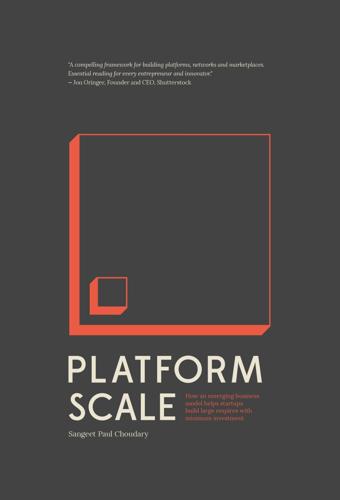
Platform Scale: How an Emerging Business Model Helps Startups Build Large Empires With Minimum Investment
by
Sangeet Paul Choudary
Published 14 Sep 2015
” — FANG SOONG CHOU, General Partner, Pix Vine Capital “Sangeet’s platform analysis covers the topic with a depth that’s unique and desperately needed. It’s forced me to rethink how I would structure digital business models to leverage the gains from being a platform v product.” — GEORGE BABU, Founder of Rypple, acquired by Salesforce “Sangeet’s insights reflect his wisdom across not only platform economics but wider digital disruption issues.” — CAT MATSON, Panel Moderator, G20 Summit Global Cafe, Chief Digital Officer, City of Brisbane “Should be part of the curriculum of every business school throughout the world.
…
1.4 THE PLATFORM STACK A Framework To Explain All Platforms Many businesses today leverage platform thinking. Companies across industries are actively building platforms. While all of them function as plug-and-play business models that facilitate interactions, individual platforms may often seem vastly different. From the perspective of software developers, Android, Salesforce, and Facebook Connect are all platforms, yet they are vastly different. Medium and WordPress are called blogging platforms, but they have little in common with software development platforms. YouTube, Facebook, and Instagram are described as social platforms, while Uber, Airbnb, and their ilk are referred to as “marketplace platforms.”
…
The platform’s ability to attract quality supply, and signal this quality to the demand side, enables it to get demand on board. On Sittercity, parents – consumers on the platform – pay a subscription fee for access to a curated list of babysitters. Several B2B-application platforms also follow this model. While consumer-facing app stores allow for abundance, business-facing platforms like SAP and Salesforce are very selective about the types of apps that are selected for their app store. The tolerance for a low-quality app is much lower in the case of business app stores. Advance curation guarantees the quality and reliability that is needed to appeal to a business customer. PLATFORM SCALE IMPERATIVE Platforms that facilitate high-risk interactions often find it more difficult to attract the side that bears the risk of participating in the interaction.

The Smartphone Society
by
Nicole Aschoff
After months of organizing, including an open letter signed by dozens of respected scientists and public figures criticizing the ethics of the Maven project, Google backed out of the contract. The victory emboldened tech workers at other companies. At Amazon, employees lobbied executives to stop selling facial recognition software to law enforcement, while tech workers at Microsoft and Salesforce called for their companies to cancel contracts with Immigration and Customs Enforcement. Google workers have maintained their momentum since the Maven victory. They’ve walked out over Google’s cover-up of sexual harassment, protested the company’s plan to build a censored search engine for the Chinese government, and critiqued Google’s tiered workforce structure.
…
Google employees didn’t want to be involved in projects tasked with perfecting drone technology; they didn’t want to sign their name to a censored search engine; they refused to look the other way when sexual abusers got a bonus. Tech workers at Amazon demonstrated the same principles when they stood up against their company’s selling facial recognition software to police departments; workers at Microsoft and Salesforce joined them when they realized their hard work was being used to separate families trying to cross the US border. Norms and behaviors might be hard to define, but sometimes they are central. For example, proponents of the Green New Deal advocate a plan in which, over time, countries switch from dirty energy to clean energy.
…
P., 37, 39, 41, 44, 54 Mori, 61–62 MoveOn.org, 91 M-pesa mobile money transfer system, 6 MSD (Marjorie Stoneman Douglas) High School, 90 mSpy, 25 Mubarak, Hosni, 92, 94, 97 Muflahi, Abdullah, 20 multitier subcontracting, 31 Munro, Alice, 62–63 Musk, Elon, 126 Myanmar, 42, 50, 94 National Highway Traffic Safety Administration, 157 National Hispanic Media Coalition, 55 National Justice Project (Australia), 21 National Labor Relations Board, 153 National Policy Institute, 105–6 National Security Agency (NSA), 80, 81, 95 NationBuilder, 93–94 neoliberalism: and capitalism, 69, 102, 112–13, 117–18, 144–45; and economic crisis, 99–100, 176n30; and feminism, 107; and new titans, 54 Nepal, 94 network(s), 61, 143 “network effects,” 44 “network society,” 121 #NeverAgain movement, 90, 110 New America, 56 New Center, 45–46 “New Economy,” 121 news: fake, 50–51, 56 news cycle, 89 newspapers, 50–52 news sources, 50–52 New York Taxi Workers Alliance, 146, 153, 178–79n5 Nichols, Synead, 89–90 Nigeria, politics in, 97 Nixon, Richard, 88 Noah, Trevor, 110 Noble, Dylan, 19–20 Nobu Malibu, 62 #NotOkay, 108 NSA (National Security Agency), 80, 81, 95 Obama, Barack, 6, 44, 55, 92, 106 obsolescence, built-in, 82 Ocasio-Cortez, Alexandria, 104, 112, 152, 179n22 Occupy movement, 102–3, 104 Oculus, 41 OKCupid, 23, 24 O’Neill, Caitlin, 56 online dating, 23–27, 35 online search, 52 Open Markets Institute, 150 Open Sesame, 10 Operation Haymaker, 95–96 O’Reilly, Holly Figueroa, 93 O’Rourke, Beto, 92 outrage politics, 109 outsourcing, 146 ownership of our own data, 135–36, 156 Oxford, Kelly, 60, 108 Pacific Railroad Act (1862), 80 Page, Larry, 38, 39, 41, 54, 119–20, 124 PageRank, 52 Palantir, 81 para-social interactions with celebrities, 65 parental limitation, 8 Parkland, Florida, 90 Patriot Act, 81 payment systems, mobile, 4, 5, 6, 10 PayPal, 44 peer-to-peer networks, 120 Pelosi, Nancy, 56 performance: politics as, 109, 111; social media as, 63, 64, 68 permatemps, 46, 47 personal information: ownership of, 135–36, 156; sharing on social media of, 60–61 personalization, 53 personal narratives, 115–16 philanthropy, 56–57 Philippines, 90–91 “phone boss,” 69 Physician Women for Democratic Principles, 89 “pickers,” 33, 46 Pickersgill, Eric, 7 Pinterest, 60, 64, 69 PlentyOfFish, 24 polarization, in politics, 111 police: surveillance by, 96–97, 137–38, 176n28; violence against blacks by, 17–23, 35, 89–90, 100–102, 111, 169n6, 169n13 political advertising, 149 political movements, 97, 102, 111–12 political organizing, 91 political parties, 93–94 politics, 87–113; algorithms and filter bubbles in, 109–10; Black Lives Matter in, 89–90, 100–102, 111; bots in, 109; censorship in, 95; Dakota Access Pipeline Protests in, 103–4, 110; decentralization in, 101–2; digital-analog model in, 104, 110–12, 162; economic crisis in, 98–100; feminist movement in, 107–8; finding our voice in, 108–13; geo-, 95–96, 144; government tracking in, 94–95; gun violence in, 90, 91, 110, 111; modern-day revolt in, 100–108; neoliberal, 99–100, 112–13; Occupy movement in, 102–3; outrage, 109; outside of US, 93–94; as performance, 109, 111; as personal, 88–100; polarization in, 111; political movements in, 97, 102; political parties in, 93–94; protests in, 89–90, 92, 95, 100–104; slacktivism in, 111; social media use by candidates in, 103–5; social media use by people in power in, 87–88, 92–93; Sunrise Movement in, 103–4; surveillance by law enforcement in, 96–97, 176n28; Syrian War in, 90; virality in, 81; voter outreach in, 89; white supremacy in, 35, 105–7 poor communities, internet access for, 149–50 Posner, Eric A., 135 poverty, 12–13 power, in cognitive mapping, 145 power inequalities, 137–38 predictive modeling, 77 print magazines, 172n40 PRISM program, 81 privacy, 69–72, 137–38, 150–51, 156 “privacy tools,” 71 private sphere, commodification of, 144 producers vs. consumers, 28–29 profit, frontiers of, 72–79, 85–86 proponents, 9–12 ProPublica, 48, 106, 149, 153 protests, 89–90, 92, 95, 100–104 Proud Boys movement, 106 public opinion, molding of, 55 Pulitzer, Joseph, 50 “push” notifications, 84 racism, 17–23, 35, 169n6, 169n13 RAM (Rise Above Movement), 106–7 rare metals, 82, 83 Reagan, Ronald, 43 real estate market, effect of high-tech company location in, 48–49 “real life,” digital life vs., 68 recommender algorithm, 67 Reddit, 24 redlining, digital, 29 regulation of monopolies, 43–46 reinforcement learning, 157 Rekognition software, 149 relationships, expectations and norms about, 24–25 religious beliefs, tech-based, 123 remote medicine, 10 rents, 48 research funding, 55 retreat from technology, 132–35 Reynolds, Diamond “Lavish,” 20, 35 Rice, Tamir, 18 “right to repair,” 155 right-wing movements, 105–7 Rise Above Movement (RAM), 106–7 rituals, on social media, 61 Robbin, Jonathan, 77 robots, 128, 131 Rockefeller, Jay, 77 Rockefeller, John D., 37, 54, 57 Rongwen, Zhuang, 94 Roosevelt, Franklin Delano, 88 Rousseff, Dilma, 97 Rudder, Christian, 23 rural areas: internet access for, 29, 149–50 Salesforce: employees organizing at, 148; immoral projects at, 154 Sandberg, Sheryl, 107 Sanders, Bernie, 103–5, 110 Santana, Feidin, 19, 20 Santelli, Rick, 105 Saudi Arabia, censorship in, 95 Scavino, Dan, 88 Schifter, Doug, 127 Schillinger, Klemens, 8 Schneier, Bruce, 135 Schrems, Max, 151 science fiction, 126 Scott, Walter, 19, 20 scraping, 71 Seamless, 30 search algorithms, 51–52, 53 Seasteading Institute, 124 Seinfeld, Jerry, 110 self-esteem, 65 selfies, 59–60 selfish behavior, 138–39, 154–56 self-monitoring tools, 69 service jobs, 33–34 Seth, Jodi, 56 sexism, 23–27, 35 sexting, 25–27, 35 sexual division of labor, 74–75 sexual harassment, 25, 27, 126–27 sexuality, 23–27, 35 sexual violence, 25 shareholder value society, 98 sharing on social media, 60–61, 84 Sharpton, Al, 102 shopping, mobile, 31–32 short message service (SMS), 6 Sidewalk Labs, 41 Sierra Club, 157 signals intelligence, 95–96 “silent spring,” 7 Silicon Valley, 115–41; distrust of, 125–31; and government control, 124; and spirit of capitalism, 115–25; taking back control from, 131–41 Silicon Valley Rising (SVR), 147 Sina Weibo (China), 94 Singh, Jagmeet, 93–94 the Singularity, 123 skeptics, 7–8 Skype, 81 slacktivism, 111 Slager, Michael, 19 Slutwalks, 108 smartness, 9 smartphone(s): demographics of, 3, 4; vs.

Prediction Machines: The Simple Economics of Artificial Intelligence
by
Ajay Agrawal
,
Joshua Gans
and
Avi Goldfarb
Published 16 Apr 2018
* * * In the AI world, Google is Iowa. It has more than a thousand AI tool development projects underway across every category of its business, from search to ads to maps to translation.4 Other tech giants worldwide have joined Google. The reason is fairly obvious: Google, Facebook, Baidu, Alibaba, Salesforce, and others are already in the tools business. They have clearly defined tasks that extend throughout their enterprises, and in each, AI can sometimes dramatically improve a predictive element. Those enormous corporations have big profit margins, so they can afford to experiment. They can take a part of the “land” and devote it to many new AI varieties.
…
It is making a big strategic bet that consumers will want control over their own data. Whether for security or privacy, Apple has bet that its commitment will make consumers more, not less, likely to allow AI onto their devices.13 Apple isn’t alone in betting that protecting privacy will pay off. Salesforce, Adobe, Uber, Dropbox, and many others have invested heavily in privacy. This bet is strategic. Many other companies, including Google, Facebook, and Amazon, have chosen a different path, telling users that they will use data to provide better products. Apple’s focus on privacy limits the products it can offer.
…
See work flows Project Apollo, 164 Putin, Vladimir, 217 Qi Lu, 219 quality risks, 198–199 QWERTY keyboards, 129–130 racial profiling, 195–196 radiologists, 55–56, 108–109, 145–148 recruitment, 127–129 reengineering, 123–135 Reengineering the Corporation (Hammer and Champy), 123–134 regression, 13 failures of, 36–37 multivariate, 33–34 in predicting churn, 32–35 reinforcement learning, 13, 145, 183–184 Rekimoto, Jun, 26 research and development, 218–221 return on investment (ROI), 156, 198–199 reverse causality, 62 reverse-engineering, 202–204 reward function, 79–80, 172–173 engineering, 92–94, 174 strategy alignment and, 162 Rio Tinto, 113–114 risks and risk management, 19, 195–206 biases in job ads and, 195–198 decision making and, 108–109 liability and, 195–198 quality and, 198–199 security, 199–205 society and, 209–224 Rivers, Lynn, 218–219 Robotlandia, 211 robots Asimov’s laws of robotics and, 115 grasping problem with, 144–145 if-then logic and, 104–109 mail delivery, 103 moon-based, 115 quick responses and, 114–115 uncertainty problems and, 103–104 Rockefeller Foundation, 31 Roomba, 104 Rose, Geordie, 145 Rosenberg, Nathan, 182–183 Rumsfeld, Donald, 58 Rush (rock band), 73 Russakovsky, Olga, 28–29 Russia, 217 sabermetrics, 56, 161–162 Salesforce, 190 satisficing, 107–109 scale, 67 Schoar, Antoinette, 66–67 school bus drivers, 149–150 Schumpeter, Joseph, 215 search engines, 50, 64, 216 security risks, 199–205 self-driving vehicles. See autonomous vehicles sensors, 15, 44–45, 105 Shevchenko, Alex, 96 signal vs. noise, in data, 48 Simon, Herbert, 107 simulations, 187–188 skills, loss of, 192–193 smartphones, 129–130, 155 Smith, Adam, 54, 65 The Snows of Kilimanjaro (Hemingway), 25–26 society, 3, 19, 209–224 control by big companies and, 215–217 country advantages and, 217–221 inequality and, 212–214 job loss and, 210–212 Solow, Robert, 123 Space Shuttle Challenger disaster, 143 sports, 117 camera automation and, 114–115 sabermetrics in, 56, 161–162 spreadsheets, 141–142, 163, 164 Standard & Poor’s, 36–37 statistics and statistical thinking, 13, 32–37 economic thinking vs., 49–50 human weaknesses in, 54–58 stereotypes, 19 Stern, Scott, 169–170, 218–219 Stigler, George, 105 strategy, 2, 18–19 AI-first, 179–180 AI’s impact on, 153–166 boundary shifting in, 157–158 business transformation and, 167–178 capital and, 170–171 cheap AI and, 15–17 data and, 174–176 economics of, 165 hybrid corn adoption and, 158–160 judgment and, 161–162 labor and, 171–174 learning, 179–194 organizational structure and, 161–162 value capture and, 162–165 strokes, predicting, 44–46, 47–49 Sullenberger, Chesley “Sully,” 184 supervised learning, 183 Sweeney, Latanya, 195, 196 Tadelis, Steve, 199 Taleb, Nassim Nicholas, 60–61 The Taming of Chance (Hacking), 40 Tanner, Adam, 195 task analysis, 74–75, 125–131 AI canvas and, 134–139 job redesign and, 142–145 Tay chatbot, 204–205 technical support, 90–91 Tencent Holdings, 164, 217, 218 Tesla, 8 Autopilot legal terms, 116 navigation apps and, 89 training data at, 186–187 upgrades at, 188 Tesla Motor Club, 111–112 Thinking, Fast and Slow (Kahneman), 209–210 Tinder, 189 tolerance for error, 184–186 tools, AI, 18 AI canvas and, 134–138 for deconstructing work flows, 123–131 impact of on work flows, 126–129 job redesign and, 141–151 usefulness of, 158–160 topological data analysis, 13 trade-offs, 3, 4 in AI-first strategy, 181–182 with data, 174–176 between data amounts and costs, 44 between risks and benefits, 205 satisficing and, 107–109 simulations and, 187–188 strategy and, 156 training data for, 43, 45–47 data risks, 202–204 in decision making, 74–76, 134–138 by humans, 96–97 in-house and on-the-job, 185 in medical imaging, 147 in modeling skills, 101 translation, language, 25–27, 107–108 trolley problem, 116 truck drivers, 149–150 Tucker, Catherine, 196 Tunstall-Pedoe, William, 2 Turing, Alan, 13 Turing test, 39 Tversky, Amos, 55 Twitter, Tay chatbot on, 204–205 Uber, 88–89, 164–165, 190 uncertainty, 3, 103–110 airline industry and weather, 168–169, 170 airport lounges and, 105–106 business boundaries and, 168–170 contracts in dealing with, 170–171 in e-commerce delivery times, 157–158 reducing, strategy and, 156–157 strategy and, 165 unknown knowns, 59, 61–65, 99 unknown unknowns, 59, 60–61 US Bureau of Labor Statistics, 171 US Census Bureau, 14 US Department of Defense, 14, 116 US Department of Transportation, 112, 185 Validere, 3 value, capturing, 162–165 variables, 45 omitted, 62 Varian, Hal, 43 variance, 34–36 fulfillment industry and, 144–145 taming complexity and, 103–110 Vicarious, 223 video games, 183 Vinge, Vernor, 221 VisiCalc, 141–142, 163, 164 Wald, Abraham, 101 Wanamaker, John, 174–175 warehouses, robots in, 105 Watson, 146 Waymo, 95 Waze, 89–90, 106, 191 WeChat, 164 Wells Fargo, 173 Windows 95, 9–10 The Wizard of Oz, 24 work flows AI tools’ impact on, 126–129 decision making and, 133–140 deconstructing, 123–131 iPhone keyboard design and, 129–130 job redesign and, 142–145 task analysis, 125–131 World War II bombing raids, 100–102 X.ai, 97 Xu Heyi, 164 Yahoo, 216 Y Combinator, 210 Yeomans, Mike, 117 YouTube, 176 ZipRecruiter, 93–94, 100 About the Authors AJAY AGRAWAL is professor of strategic management and Peter Munk Professor of Entrepreneurship at the University of Toronto’s Rotman School of Management and the founder of the Creative Destruction Lab.
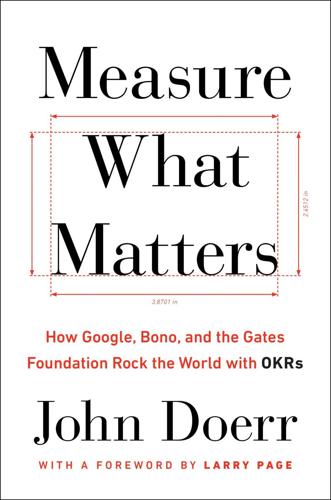
Measure What Matters: How Google, Bono, and the Gates Foundation Rock the World With OKRs
by
John Doerr
Published 23 Apr 2018
OBJECTIVE Modernize, rationalize, and secure the technology used to run the business of Intuit. KEY RESULTS Complete migration of Oracle eBusiness Suite to R12 and retire 11.5.9 this quarter. Deliver wholesale billing as a platform capability by end FY16. Complete onboarding of agents in small business unit to Salesforce. Create a retirement plan for all legacy technology. Draft and get alignment on new Workforce Technology strategies, road maps, and principles. * * * — Live Data from the Cloud Intuit views itself as a thirty-four-year-old start-up. Beginning with the personal computer in the 1980s, our history reflects a series of tech disruptions, with each new platform upending its predecessor.
…
OKRs speak to something more powerful, the intrinsic value of the work itself. As the bar for structured goal setting rises, more organizations are adopting robust, dedicated, cloud-based OKR management software. The best-in-class platforms feature mobile apps, automatic updating, analytics reporting tools, real-time alerts, and integration with Salesforce, JIRA, and Zendesk. With three or four clicks, users can navigate a digital dashboard to create, track, edit, and score their OKRs. These platforms deliver transformative OKR values: They make everyone’s goals more visible. Users gain seamless access to OKRs for their boss, their direct reports, and the organization at large.
…
See feedback personal computers (PCs), 29 , 35 –36, 128 –29 Pichai, Regunatha, 144 , 152 Pichai, Sundar, 14 , 14 n, 54 , 143 –53, 151 , 252 Pink, Daniel, 117 positive feedback, 185 Potloff, Philip, 135 Powell, Casey, 36 , 41 , 46 power sharing, 24 n Practice of Management, The (Drucker), 25 principled stretching, 164 private OKRs, 73 , 74 –75, 77 –78 Progress Principle, The (Amabile and Kramer), 216 progress updates, 183 n, 269 –70, 276 Project Aristotle, 215 Project Loon, 143 psychological safety, 215 Publish What You Pay, 242 pulsing, 216 –17, 279 qualitative goals, 52 –54, 54 , 274 quantitative goals, 52 –54, 54 , 274 quarterly OKRs, 7 –8, 51 –52, 176 , 274 at Google, 14 n at Intel, 28 number of, 55 , 274 at Nuna, 72 at YouTube, 165 –66 at Zume Pizza, 187 QuickBooks Online, 102 , 104 , 108 –9 Radabaugh, Debra, 248 Rajani, Rakesh, 240 ratings biases, 181 reading, recommended, 281 –82 recognition, 176 , 186 –88, 279 culture and, 216 –17 recognition stories, 187 recording goals, 117 redundancy, 78 , 96 –97 red zone (“at risk”), 118 , 130 , 168 , 231 –32 reflection, 124 –25, 183 goal planning and, 183 , 269 Remind, 58 –68 goals for growth, 65 –67, 118 –19 OKRs, 64 –67, 66 scaling on a shoestring, 63 –65 Twitter for education, 60 –63 retention, 64 , 231 revising OKRs, 17 , 86 , 113 , 275 Rice University, 19 Risk Management Solutions (RMS), 79 , 141 Rivera, Miriam, 63 Rosenberg, Jonathan, 13 , 14 , 115 , 116 , 251 –52 Rowling, J. K., 47 “rule of seven,” 14 Salesforce, 114 sandbagging, 34 , 78 , 181 , 259 –60 Sandberg, Sheryl, 54 n, 175 , 184 –85, 251 Sand Hill Unicorns, 81 , 81 –85, 82 , 84 , 87 San Francisco Marathon, 88 San Jose Hyatt House, 43 scaling, 113 –14 culture and, 220 –21 at Google, 3 , 11 MyFitnessPal story, 93 –94, 95 Nuna story, 72 Remind story, 63 –65 Zuma Pizza story, 203 scarcity, 161 Schmidt, Eric, 6 n, 11 , 13 , 15 , 140 , 146 , 251 , 252 scoring, 120 –22 assessment variations, 123 –24 Sculley, John, 248 Sears, 8 Seidman, Dov, 219 –21 self-actualization, 136 –37 self-assessments, 122 –24, 276 assessment variations, 123 –24 self-discipline, 30 , 31 , 202 –3 self-driving cars, 140 , 143 self-reflection, 124 –25 goal planning and, 183 , 269 Series A funding, 64 , 94 Series B funding, 64 Shriver, Bobby, 237 Sibyl, 161 silos, 12 , 25 , 102 –3, 275 Slack, 12 , 73 , 110 , 111 Slavitt, Andrew M., 76 Smith, Brad, 104 –5, 106 Smith, Jeff, 231 –32 “snippets,” 11 n Social+Capital Partnership, 64 stack rankings, 175 , 191 , 278 Staffa, Tim, 179 –80 Stanford University, 3 , 21 n, 144 , 152 Stonesifer, Patty, 126 –32, 127 stretch goals, 17 , 34 , 133 –71, 277 –78 Bono’s ONE Campaign story, 238 –39 daring to fail, 33 –34 Google Chrome story, 143 –53 gospel of 10x, 138 –40 need to stretch, 136 –38 stretch variables, 141 –42 YouTube story, 154 –71 structured goal setting, 9 –10, 134 , 203 , 215 subjective self-assessments, 122 –24, 276 suggestion boxes, 185 Sun Microsystems, 6 –7, 148 Superpower #1 (focus and commit to priorities), 16 –17, 47 –76, 274 care of key results, 50 communicating with clarity, 49 –50 less is more, 55 –57 Nuna story, 69 –76 pairing key results, 52 –54 the perfect and the good, 54 –55 Remind story, 58 –68 top-line goals, 48 –49 the what, how, when, 51 –52 Superpower #2 (align and connect for teamwork), 17 , 77 –112, 275 bottom-up OKRs, 86 –89 cascading OKRs, 79 –86 cross-functional coordination, 88 –89 Intuit story, 102 –12 MyFitnessPal story, 90 –101 Sand Hill Unicorns, 81 –85 Superpower #3 (track for accountability), 17 , 113 –32, 276 –77 Gates Foundation story, 126 –32 midlife tracking, 117 –19 OKR shepherds, 115 –16 reflection, 124 –25 scoring, 120 –22 self-assessment, 122 –24 setting up, 113 –15 Superpower #4 (stretch for amazing), 17 , 133 –71, 277 –78 Google Chrome story, 143 –53 gospel of 10x, 138 –40 need to stretch, 136 –38 stretch variables, 141 –42 YouTube story, 154 –71 Suzuki, Joseph, 205 –6 Taylor, Frederick Winslow, 24 teamwork, 12 , 178 , 275 .
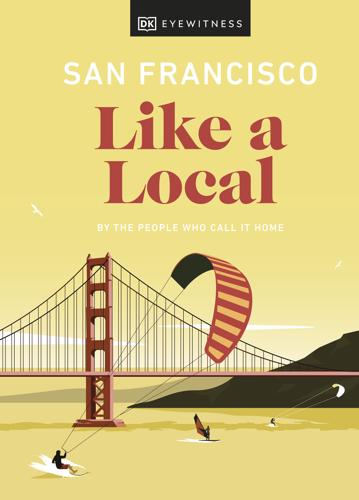
San Francisco Like a Local
by
DK Eyewitness
Published 4 Oct 2021
Join the locals for the all-levels vinyasa Sunday session here or, for something a bit more bonkers than blissed-out, book into the Friday-night class, which follows up an hour of beach yoga with an hour of silent disco. Reserve ahead; the fee is $25. g Alfresco Fitness g Contents Google Map Rooftop Tai Chi Map 1; Salesforce Park, SoMa; ///tanks.boats.brands; www.salesforcetransitcenter.com There’s something very San Franciscan about taking a free tai chi class in a software-branded public park 70 ft (21 m) in the air. Located on top of the four-blocks-long Salesforce Transit Center building, the park is the favorite lunchtime haunt of SoMa’s concrete-bound office workers. And, of course, there’s nothing to take your mind off your start-up’s IPO – or stock market launch – like a spot of afternoon tai chi.
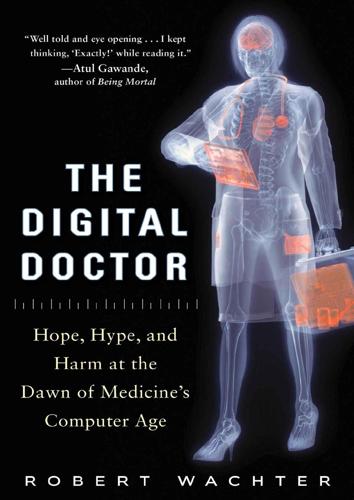
The Digital Doctor: Hope, Hype, and Harm at the Dawn of Medicine’s Computer Age
by
Robert Wachter
Published 7 Apr 2015
In one particularly damning mash-up, Bush slings around virtually every Internet buzz-term: “creating network effect, creating an Airbnb.” “a little bit of Facebook.” “it’s a little bit like Salesforce.com, but we do more work.” “athenahealth is a cloud-based service—we sell results. Amazon has great software, athena has great software; Amazon sells stories, we sell paid claims, settled appointments, filed claims.” Einhorn then cued another clip, this one of the King of Market Hype, Jim Cramer, host of CNBC’s Mad Money. “Even before Marc Benioff [founder of Salesforce and the person generally credited with popularizing the idea of cloud-based commerce] knew what a cloud was,” said Cramer, “Jonathan Bush did—you can say that he invented the damn thing.”
…
In The Digital Doctor, Wachter is our indispensable guide through the computerization of medicine—the rich history, the forces that impede progress, and the potential for today’s technology innovations to transform every aspect of healthcare. Read this book and you will see the future of medicine.” —Marc Benioff, Chairman and CEO, Salesforce “Noted physician-author Bob Wachter takes the reader on a fascinating journey of discovery through medicine’s nascent digital world. He shows us that it’s not just the technology but how we manage it that will determine whether the computerization of medicine will be for good or for ill. And he reminds us that the promise of technology in healthcare will be realized only if it augments, but does not replace, the human touch.”
…
While the 12,000 residents of Verona went about their business, another 12,000 outof-town visitors packed the “Deep Space” auditorium on the 811-acre “Intergalactic Headquarters” of the town’s dominant employer, Epic. Like a slightly cheesy version of the glitzy users’ meetings thrown by Apple and Salesforce, the visitors—all Epic customers—were there mostly to attend some of the conference’s 750 sessions on Epic’s products and plans. “Little Cow Pokes: Optimizing Pediatric SmartSets and Immunizations” was the title of one session. “Old MacDonald Had a Farm … of Remote Coders” was another. The classes were scattered around the whimsical campus, adored by many Epic employees for its themed buildings (there’s one called Heaven and another called Barn; an “Olde English”–themed building is under construction), babbling brook, statues of the Cat in the Hat and a blue neon cow, treehouse-cum-conference room, and two-story spiral tube slide.

The Costs of Connection: How Data Is Colonizing Human Life and Appropriating It for Capitalism
by
Nick Couldry
and
Ulises A. Mejias
Published 19 Aug 2019
Likewise, 30–50 percent of the US trucking industry is now using electronic onboard recorders that radically change truckers’ relations to their work, fostering competitive individualism and influencing their behavior.104 Monitoring work interactions. Models developed and refined in the domain of general social interactions are now being applied to the domain of workplace interactions, thus normalizing the overall transformation. An emerging $11 billion industry is developing “enterprise social” platforms such as Microsoft’s Yammer, Salesforce’s Chatter, and (the name says it all) Facebook at Work. These platforms, inspired by social media, function to collect data from a worker’s daily interactions and convert them into metrics that can be used to assess job performance, identify interventions to reward or punish workers, or even make hiring and firing decisions.105 Bodily surveillance.
…
See also Amazon; Apple; Facebook; Google; Microsoft Bing (Microsoft), 225n14 “Biopolitical Public Domain” (Cohen), 223n2, 224n14 biopolitics, 231n136 biosensors, 141 bodily surveillance of workers, 65–66, 153–54, 159 Bolivia, historical colonialism in, 106 Booth, Charles, 120, 124 Bororo people, and historical colonialism, xiv–xv Bosworth, Andrew, 16 Bouk, Dan, 120, 121 Bourdieu, Pierre, 123 “brain memory,” 142 Brandeis, Louis, 178 Brauneis, Robert, 145 Brazil, privacy laws in, 181, 259n131 Brown, Wendy, 33, 231n135 Bucher, Taina, 170 Buckle, Henry, 122 California, Consumer Privacy Act (2018) of, 179, 180 Cambridge Analytica, 3, 53, 137–38, 140, 178, 187 Camerer, Colin, 141 Capital and Language (Marazzi), 231n138 capitalism, 3–35; “alibi for capitalism,” 102–3; and Autonomist tradition, 34–35, 231–32nn138–140; and capitalization of human life without limit, 5–6; company-states, defined, 39; data and emerging social order of, 19–27; data colonialism, defined, 3–4; data colonialism, features, 6–18; and data relations, 27–32; defined, 33; “digital capitalism” versus, 32–33; as expansionary, xvi–xvii, 222n21; and historical colonialism components, 4–5; and neoliberalism, 33–34; privacy and contradictions of, 181–84; social relations in data as colonialism (See data colonialism). See also Marx, Karl Capitalism and Slavery (Williams), 222n24 capitalization of human life without limit, defined, 5–6 Capital (Marx), 229n116 captology, 150 Catholic missionaries, 242n36 Césaire, Aimé, 77 Chakravartty, Paula, 96–97 Chatter (Salesforce), 65 Chile, International Telephone & Telegraph in, 96 chilling effect, 164 China: AI goals of, 246n58; data and emerging social order of capitalism, 19, 228n99; digital platforms and stabilizing capitalism in, 26; GDP of, 104; and geopolitical competition with United States, xx; internal colonizing and social quantification sector, 53–57; Internet Plus in, 11, 57, 222–23n35; labor in, 46; Opium Wars, 109; platform development by, 13–14; privacy standards in, 181; privately acquired data versus census in, 123; social credit system of, 24, 57, 133–34; surveillance technology of, 10, 29, 100; underpaid labor in, 60.
…
See also specific names of countries “reification,” 230n129 Rekognition (Amazon), 10 remote desktop surveillance, 64–65 reputation, platform management of, 130 Requerimiento (Spanish colonial document), 92–94; as analogy to Google EULA and Facebook SRR, 93–94; original purpose of, 92 “reserve army,” unemployed as, 61 Restrepo, Pascual, 238n117 RFID tags, 64 Richards, Neil, 179 Ricoeur, Paul, 253n10, 254n34 Rieder, Bernhard, 137 Rooney, Sally, xv Rose, Nikolas, 122 Rosenblat, Alex, 62 Rossiter, Ned, 39, 47 Rössler, Beate, 154, 165 Rotenberg, Marc, 177 Rouvroy, Annette, 127–28, 249n141 Russia, social quantification sector in, 55 sacrifice zones, 90 Safari (Apple), 48–49 Said, Edward, 77, 239n34 Salesforce, 65 Sammadar, Ranabir, 66 Sandvig, Christian, 132 Santos, Boaventura de Sousa, 201, 263n46 Saudi Aramco, 54 Scandia, 153 Schildt, Hakan, 153 Schneier, Bruce, xv, 23–24, 128, 135 Schüll, Natasha Dow, 171–72 seamfulness, Vertesi on, 198–201 seamlessness, Cohen on, 229n106 second-order control, 182–83 “second slavery,” 73–74 self: double consciousness of, 157; integrity of, 156–61, 197, 204–5; self-determination, 154–55, 252–53n10; Self versus Other, 239n34; space of the self concept, 156–57, 161–65, 167, 172, 178, 199 self-tracking: as autonomy illusion, 168–73; personal data appropriation spectrum of, 173–76; Quantified Self movement, 168, 171, 257n77; “situated objectivity” of, 256n70; as social knowledge, 128–29, 133; in workplace, 65–66, 153–54 Self-Tracking (Neff, Nafus), 257n77 Sen, Amartya, 201–2 sensors and sensing: biosensors, 141; body sensors, 171; GPS tracking, 29; sensing as model for knowledge, 8; for telematics, 65.

The Equality Machine: Harnessing Digital Technology for a Brighter, More Inclusive Future
by
Orly Lobel
Published 17 Oct 2022
Syndio’s platform aims to ensure that people are paid equitably before and after they’re hired and that they’re promoted based on objective, unbiased standards. When Salesforce ran an external audit to look at their pay gaps in 2015, they discovered millions of dollars of gaps that required adjustment. The next year, despite these adjustments, they discovered another $3 million in pay gaps. Salesforce hired Syndio to help them analyze the compensation data in a more systemic, ongoing way than an annual external audit. Maria Colacurcio, CEO of Syndio, says that we need to reframe the word “audit” and think about embedding pay equity into the process of salaries all throughout. With employees in twenty-eight countries, Salesforce needs to manage the complexities of regional variation and differences in laws.
…
With employees in twenty-eight countries, Salesforce needs to manage the complexities of regional variation and differences in laws. With Syndio’s help, Salesforce significantly reduced the need for annual adjustments, sustained pay equity, and in 2021 was named number two in Fortune’s 100 Best Companies to Work For. Syndio’s customers until 2020 were more focused on gender pay gaps—only half of the clients requested analysis by race. But Syndio reports that since 2020, 98 percent now analyze gender and race, with growing attention also to sexual orientation, gender identity, and disability status. For example, ongoing auditing of the data can illuminate how merit raises can be based on biased evaluations.
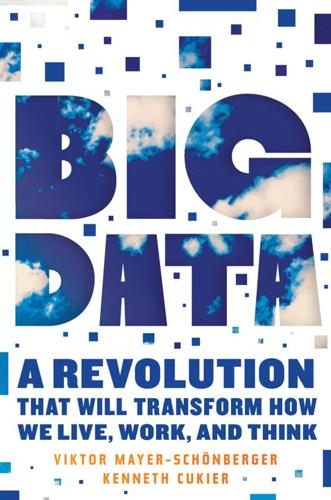
Big Data: A Revolution That Will Transform How We Live, Work, and Think
by
Viktor Mayer-Schonberger
and
Kenneth Cukier
Published 5 Mar 2013
A new generation of angel investors and entrepreneurs is emerging, notably from among ex-Googlers and the so-called PayPal Mafia (the firm’s former leaders like Peter Thiel, Reid Hoffman, and Max Levchin). They, along with a handful of academic computer scientists, are some of the biggest backers of today’s data-infused startups. The creative vision of individuals and firms in the big data food-chain helps us reassess the worth of companies. For instance, Salesforce.com may not simply be a useful platform for firms to host their corporate applications: it is also well placed to unleash value from the data that flows atop its infrastructure. Mobile phone companies, as we saw in the previous chapter, collect a gargantuan amount of data but are often culturally blinded to its worth.
…
As for Kenn’s individual acknowledgments: I am grateful to many great data scientists who helped, in particular Jeff Hammerbacher, Amr Awadallah, DJ Patil, Michael Driscoll, Michael Freed, and many folks at Google over the years (including Hal Varian, Jeremy Ginsberg, Peter Norvig, and Udi Manber, among others, while all-too-brief chats with Eric Schmidt and Larry Page were invaluable). My thinking has been enriched by Tim O’Reilly, a savant of the Internet age. Also by Marc Benioff of Salesforce.com, who has been a teacher. Matthew Hindman’s insights were immeasurable, as always. James Guszcza of Deloitte was incredibly helpful, as was Geoff Hyatt, an old friend and serial data entrepreneur. Special thanks go to Pete Warden, who is both a philosopher and a practitioner of big data. Many friends offered ideas and advice, including John Turner, Angelika Wolf, Niko Waesche, Katia Verresen, David Wishart, Anna Petherick, Blaine Harden and Jessica Kowal.
…
See measurement “quantified self” movement, [>] quantum physics, [>] rabies vaccine: Pasteur and, [>]–[>] randomness: needed in statistical sampling, [>]–[>] real estate: regulation of illegal conversions, [>]–[>] reality mining, [>]–[>] record-keeping: in the ancient world, [>]–[>] Reuters, [>] Rigobon, Roberto, [>] Roadnet Technologies, [>] Rolls-Royce, [>] Roman numerals, [>]–[>] Rudin, Cynthia, [>], [>] Rudin, Ken, [>] sabermetrics, [>] Saddam Hussein: trial of, [>] Salathé, Marcel, [>]–[>] sales data: analysis of, [>], [>], [>], [>] Salesforce.com, [>] sampling, statistical: big data replaces, [>]–[>], [>], [>]–[>], [>]–[>] exactitude necessary in, [>], [>]–[>] Graunt and, [>] limitations inherent in, [>]–[>], [>], [>] Neyman on, [>] in quality control, [>] randomness needed in, [>]–[>] scale in, [>] Silver on, [>] scale: in data, [>]–[>] imprecision and, [>], [>], [>], [>], [>] qualitative functions of, [>], [>]–[>], [>], [>]–[>], [>]–[>] in statistical sampling, [>] scientific method: vs. correlation analysis, [>]–[>] Scott, James: Seeing Like a State, [>] search engines: and mathematical models, [>]–[>] search terms: analysis and reuse of, [>]–[>], [>], [>], [>], [>] Seeing Like a State (Scott), [>] Sense Networks, [>], [>] sentiment analysis, [>], [>]–[>], [>] Silver, Nate: on statistical sampling, [>] Skyhook, [>] Sloan Digital Sky Survey, [>] Smith, Adam, [>] social media: datafication by, [>]–[>] social networking analysis: Huberman and, [>] social sciences: data-gathering in, [>], [>] Society for American Baseball Research, [>] speech-recognition: at Google, [>]–[>] spell-checking systems: and data-reuse, [>]–[>] sports: predictive analytics in, [>]–[>], [>] Stasi, [>], [>], [>] statisticians: demand for, [>], [>] statistics: military use of, [>] stock market investment: datafication in, [>]–[>] subprime mortgage scandal (2009): correlation analysis and, [>] sumo wrestling: corruption in, [>]–[>], [>] Sunlight Foundation, [>] Super Crunchers (Ayres), [>] surveillance: by government, [>]–[>], [>]–[>] SWIFT: data-reuse by, [>] tagging: vs. categorization, [>]–[>] Taleb, Nassim Nicholas, [>] Target: predictive analytics by, [>]–[>] Telefonica Digital Insights, [>] Teradata, [>], [>], [>] terrorism: predictive analytics and, [>], [>]–[>], [>] text: correlation analysis of, [>]–[>] datafication of, [>], [>] The-Numbers.com: predicts Hollywood film profitability, [>]–[>] Thomson Reuters, [>] traffic-pattern analysis: by Inrix, [>]–[>], [>] translation, language, [>] Google and, [>]–[>], [>], [>], [>] IBM and, [>]–[>], [>] Microsoft and, [>] transparency: of algorithms, [>] truth: data as, [>], [>] imprecision and, [>] 23andMe, [>] Twitter, [>], [>], [>]–[>], [>] as big-data company, [>], [>]–[>] data processing by, [>] datafication by, [>]–[>] message analysis by, [>] Udacity, [>] Universal Transverse Mercator (UTM) system, [>] universe: information as basis of, [>]–[>] “Unreasonable Effectiveness of Data, The” (Norvig), [>] UPS: predictive analytics by, [>] uses geospatial location data, [>]–[>] UPS Logistics Technologies, [>] U.S.

Blockchain Revolution: How the Technology Behind Bitcoin Is Changing Money, Business, and the World
by
Don Tapscott
and
Alex Tapscott
Published 9 May 2016
See also New business models building ConsenSys, 87–92, 112–14 changing boundaries of the firm, 92–109 determining corporate boundaries, 109–14 Record keeping, 159, 205 Record labels, 228–31, 234–35, 236 Recruiting process, search costs, 96–97, 98 Recycling equipment, 261–62 Red Cross, 20–21, 188–90 Reddit, 88, 129, 130, 248, 301 Redistributed capitalism, 25, 49, 163 Reduced instruction set computer (RISC), 260–61 Regulation (regulators), 9, 174, 289–93, 295 governance vs., 296–97 players in blockchain ecosystem, 286–87 role in financial services industry, 70 World Wide Ledger, 75–76 Remittances, 20, 59, 182–88 Analie’s story, 182–83, 186–87 Renewable energy, 148, 149–50 Reporters Without Borders, 244 Representative democracy, 211–12, 214–15 Reputation, 12, 16, 37 bAirbnb and, 116 credit score and, 79–82 fair music industry, 234 financial services, 63, 64, 79–82, 84 networked integrity and, 30–33 peer production and, 130–31 political, 210–11 Request for proposal (RFP), 160 Resiliency, 84, 148–49, 154 Resource extraction, 157–58 Retail banking services, 71–73 Retail operations and sales, in IoTs, 161 Revelator, 238 Rich databases, 233 Rights creators, 132–34, 234 Rights preservation, 45–49, 202 “Right to be forgotten,” 78 Ripple, 32, 37, 94, 257, 262 Ripple Labs, 59, 67 Risk management, 59–60, 63, 64, 116 Rivest, Ron, 320n Robles Elvira, Eduardo, 218, 219 Rodriguez, Keonne, 266, 274 Ronen V, 132–33 Roosevelt, Franklin Delano, 34 Rossiello, Elizabeth, 287 Roth, Kenneth, 200 Royalties, 229–31, 232, 233 R3 Consortium, 69–70, 305 Russia, 9, 243–44, 253–54 Safaricom, 176 Sales, 161, 179 Salesforce Chatter, 139 Salesforce.com, 118 Santander, 58 Sarbanes-Oxley Act, 74 Satoshi Nakamoto, 5, 6, 133 design principles, 29–31, 34–37, 39–42, 50, 152, 282, 308 implementation challenges, 256, 263, 269 Scalability, 152, 285, 288 Scaling Bitcoin, 288 Scalingbitcoin.org, 305 Scaling ignorance, 213 Scenario planning, 223 Schelling, Thomas, 279 Scherbius, Arthur, 27 Schmidt, Eric, 270 Schneider, Nathan, 259 Search costs, 95–99, 121–22, 142 Secure hash algorithm (SHA-256), 32, 40, 259 Secure multiparty computation, 28 Securities and Exchange Commission (SEC), 83 Security, 39–41, 141, 314n bAirbnb and, 116 breakthrough, 39–41 government and, 202 implications, 41 principle of, 39 problem to be solved, 39, 255 Self-Aware Systems, 46 Self-launched musicians, 235–37 Self-service, 207–11 Sequence search, 97 Serial expropriation, 200 Service aggregators, 17–18, 134–35, 164–65 SETLcoin, 70 Settlement risk, 59 Seven design principles.
…
But it was short-lived. In the 1990s, a new variant of time-sharing appeared, initially called virtual private networks (VPNs) and then cloud computing. Cloud computing enabled users and companies to store and process their software and data in third-party data centers. New technology companies like Salesforce.com built fortunes by harnessing the cloud model to save customers the big costs of developing and running their own software. Cloud service providers like Amazon and IBM built ginormous multibillion-dollar businesses. During the 2000s, social media companies like Facebook and Google created services that ran on their own vast data centers.
…
“I’m excited about the idea that you have a fully distributed mechanism for accounting, for actions, and for digital resources across anything; whether it’s currency, whether it’s social relations and exchange, or whether its an organization.”38 Today, commercial collaboration tools are beginning to change the nature of knowledge work and management inside organizations.39 Products like Jive, IBM Connections, Salesforce Chatter, Cisco Quad, Microsoft Yammer, Google Apps for Work, and Facebook at Work are being used to improve performance and foster innovation. Social software will become a vital tool for transforming virtually every part of business operations, from product development to human resources, marketing, customer service, and sales—in a sense the new operating system for the twenty-first-century organization.
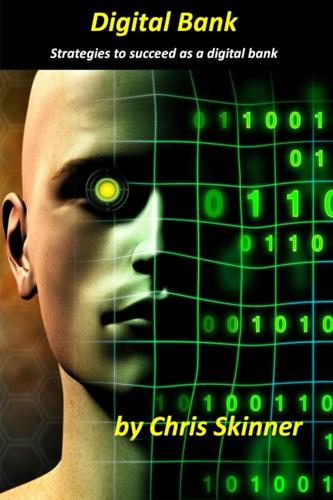
Digital Bank: Strategies for Launching or Becoming a Digital Bank
by
Chris Skinner
Published 27 Aug 2013
What they get is that it’s not about Facebook and Twitter; it’s about sales, service and relationships. In fact, the real thing they get is that Facebook and Twitter is not social media but a social platform for customer engagement, as is YouTube, Flickr, Tumblr, Foursquare and more. Social platforms are like Salesforce.com and the internet. They are the building blocks of the new financial firms. They are not the end goals in and of themselves, but are the enablers towards real social connectivity. That is why when banks talk about We’ve gotta getta blog out there; build a Facebook page; launch a YouTube channel; and engage on Twitter, that is not the answer.
…
Bearing in mind that the bank has moved from integrated to modular, this is the new way of working where bank processes are apps and bank processing are APIs (Application Program Interfaces). A slightly confusing and technical discussion, so let’s start with the idea of cloud computing in banking. Cloud Computing is a wide and diverse operation that has gained a panacea status of being all things to all people. It’s Salesforce.com, Azure, Exalogic, Amazon and more. Put in “Cloud Computing” to Google, who also provide clouds, and you get sponsored adverts from HP, Intel, Siemens and more all talking about clouds. It’s Software as a Service, Platform as a Service, and Infrastructure as a Service. It’s public clouds, private clouds, hybrid clouds.
…
Just like the iTunes app store and Google’s Gmail for consumers – who really cares how it’s done and who does it as long it’s there – banks will gradually move to clouds. The art will then be as to how you put your apps and resilience together through the cloud, rather than how you build and manage your internal fortress. This move is happening in three stages. First, banks are moving towards clouds for shared service applications such as marketing databases (Salesforce.com). The second wave banks are moving core infrastructure onto private clouds and then, in third wave, towards hybrid and public clouds. It will just be a natural evolution over time and the concerns of the managerial team will disappear over time. Before you know it, all banks will be in the clouds.
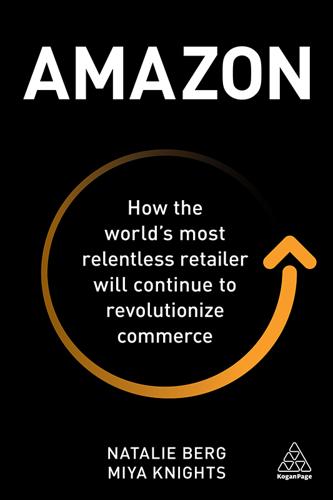
Amazon: How the World’s Most Relentless Retailer Will Continue to Revolutionize Commerce
by
Natalie Berg
and
Miya Knights
Published 28 Jan 2019
Available from: https://retail.emarketer.com/article/consumers-trust-online-reviews-gives-amazon-edge/5a9f05e9ebd4000744ae415f [Last accessed 29/6/2018]. 13 Kowitt, Beth (2018) How Amazon is using Whole Foods in a bid for total retail domination, Fortune, 21 May. Available from: http://fortune.com/longform/amazon-groceries-fortune-500/ [Last accessed 19/6/2018]. 14 Accenture/Salesforce joint report (2016) Retailing, reimagined: embracing personalization to drive customer engagement and loyalty. Available from: https://www.accenture.com/t20161102T060800Z__w__/us-en/_acnmedia/PDF-28/Accenture-Salesforce-Retail-Exploring-Loyalty-ebook.pdf [Last accessed 29/6/2018]. 15 Reagan, Courtney (2017) Think running retail stores is more expensive than selling online? Think again, CNBC, 19 April.
…
c=176060&p=irol-newsArticle&ID=1000549 [Last accessed 29/6/18]. 34 Sheehan, Brian (2018) The key to a winning Amazon ad strategy? Go big everywhere else, Ad Week, 2 February. Available from: https://www.adweek.com/brand-marketing/the-key-to-a-winning-amazon-ad-strategy-go-big-everywhere-else/ [Last accessed 29/6/18]. 35 Paul Clarke, CTO of Ocado, speaking at Salesforce event in London, 2016. 36 Kowitt, Beth (2018) How Amazon is using Whole Foods in a bid for total retail domination, Fortune, 21 May. Available from: http://fortune.com/longform/amazon-groceries-fortune-500/ [Last accessed 19/6/2018]. 37 Amazon UK Analyst Briefing, London, July 2018. 38 Macadam, Dan (2018) Can supermarkets really deliver in a day?

Artificial Whiteness
by
Yarden Katz
In 2018 alone, nearly twenty years after its creation, ICE held over forty thousand people in detention, and the agency continues to demand more resources. ICE’s operation depends critically on data sharing among local, state, and federal agencies—a use of computing that has long worried anticarceral activists. Activist groups working for migrant justice, such as the group Mijente, have protested Amazon, Microsoft, and Salesforce for servicing ICE and other wings of DHS (figure 4.1).6 Activists at Mijente recognize that unglamorous computing practices powerfully shape who gets rounded up and deported: sharing names, fingerprints, or biometric data is more than enough to affect people’s lives. This “interoperability” of databases across agencies is key, for one, to enhancing the links between ICE and local prisons.
…
In this conference, Stop LAPD Spying Coalition appeared in one session, and in another, the codirector of AI Now. The summit’s evocative poster (figure 4.3) shows a purple figure, strengthened by a people’s movement, taking down the gray cloud of the surveillance machine, decorated with the names of seven corporations complicit with the carceral state—including Facebook, Amazon, Palantir, and Salesforce—but not Google or Microsoft. And in October 2019 Mijente participated in a symposium hosted by AI Now, titled “The Growing Pushback Against Harmful AI.” Not only did Microsoft recede into the background, but issues were now framed around “AI” and the need to avoid the “harmful” kind—a far cry from Mijente’s report on the corporations fueling ICE’s data backbone.
…
See also situated robotics Rodriguez, Dylan, 149, 275n42 Roland, Alex, 42 Roomba, 208–9, 295n53 Rosch, Eleanor, 203 Rosenblatt, Frank, 32 Rota, Gian-Carlo, 3–4 Rucker, Rudy, 159, 277n13 Rusert, Britt, 286n2 Russia, 1, 58, 69, 86, 252n105 Sacks, Oliver, 13, 240n26 Said, Edward, 7–8, 60–61, 227 Salesforce, 131, 149 Schmidt, Eric, 261n42 slavery: and origins of policing, 136, 144, 273n27; as racial metaphor in discourses on AI and computing, 76–78, 156, 258n32, 259n34; and systems of white supremacy, 127, 158, 161–62, 279n25, 280n27, 283n56 Salman, Mohammed bin, 83, 88 Santa Fe Institute, 210 Saudi Arabia, 51, 83, 250n90 Schmidhuber, Jürgen, 157 Schwarzman, Stephen, 81–85, 87–88, 262n49 science: and claims to universality, 94–95; epistemology and critique of, 188, 210–11, 217, 287n8, 294n48, 296n60, 301n10; presumed effects of AI on, 31, 72–73, 104, 108, 120–21, 226; and rise of prisons, 273n4; and science and technology studies, 4, 14, 173, 228, 238n8; status of AI as, 3–4, 25, 33–34.

Golden Gates: Fighting for Housing in America
by
Conor Dougherty
Published 18 Feb 2020
On one side was the Tenderloin, a neighborhood that had the country’s largest concentration of single-room occupancy hotels and was the site of open-air heroin use and blocks of people with tattered clothes and shredded shoes sleeping on sidewalks smeared with human shit and orange needle caps. On the other side was South of Market, which had towering glass condos and the headquarters of Salesforce and Airbnb. It took about ten minutes to walk between those scenes. Eight weeks after delivering a boy named Anton Kazimir, Sonja emerged from her $3,000-a-month one-bedroom in a black dress and plaid wool coat pushing a stroller on her way to her official campaign kickoff. Nearby, a very strung-out man who appeared to have slept in the alley was completing a battle with a kiddie vacuum cleaner that he’d found on a doorstep and smashed on the ground until the orbs of colored plastic were rolling across the asphalt.
…
Elsewhere in the election, the most contentious issue on the ballot was Proposition C, which was the name of the new tax on firms with more than $50 million in annual revenue to support homeless housing and services—a proposal that, were it to pass, would be the largest tax increase in city history and raise about $300 million a year. And yet even though the local Chamber of Commerce was predictably arguing no, the measure’s biggest backer was Marc Benioff—the billionaire founder of Salesforce, which was the city’s largest private employer—and everyone in the District Six race was for it. There was some differentiating personality stuff. Matt Haney framed himself as the stick-to-the-basics localist who would focus on the district and the district only (“I’m a doer, not a talker”).
…
“Pat,” 64–66, 69–71, 73–78, 80, 90, 91 Brown, Ernest, 226 Brown, Jerry, 82–84, 88, 91–92, 112, 113, 134–36, 139–43, 146–48, 185, 200 State of the State speeches of, 83, 91 Brown, Ron, 146 Buchheit, Paul, 179 Buckingham Apartments, 43–45, 171–72, 177, 180–82 building, see housing construction building permits, 158 conditional use, 120–21 Burdick, Eugene, 71 Burns, Hugh, 75 buses, tech, 6, 11–12, 24–25, 233 Buss, Steven, 223 California: citizens’ initiative system in, 76, 90, 206 growth of, 68–71, 79–80, 94 New York compared with, 65, 70, 71, 80 open primary system in, 129–30 water supply in, 69–70, 189 California Apartment Association, 174, 204 California Department of Housing and Community Development, 88 California Department of Transportation, 152, 167 California Environmental Quality Act (CEQA), 81–82 California Fair Employment Practices Act, 74 California Real Estate Association, 76 California Reinvestment Coalition, 181 California Renters Legal Advocacy & Education Fund (CaRLA), 104–6, 127, 138, 216, 218 California Senate Bill 35 (SB 35; 2017 housing package), 135–40, 164, 156–57, 185, 186, 188, 190 California Senate Bill 50 (SB 50), 228–29 California Senate Bill 827 (SB 827), 188–90, 192, 193–95, 219 California State Senate, 123–25, 129–31 California State Water Project, 69–70 California Supreme Court, 77 California YIMBY, 188, 195, 211, 218, 220 Caltrain, 7 Campos, David, 123, 125, 132–34, 224 Candell, Susan, 101–2, 113, 114 capitalism, 33, 38, 193, 232 carbon dioxide emissions, xiii Carter, Jimmy, 87 Casa de Sobrato, 181–82 Castro District, 117–18 Catalyst Housing Fund, 181 Catlin, Micah, 12, 13, 26 Chan Zuckerberg Initiative, 181, 195 Chiu, David, 123, 127, 135, 140–41, 143, 186–87, 230 cities, 232–34 contract, 108–11 government and, 107–9 Lakewood Plan, 109, 110 local control in, 107, 109–10, 136 Cities by Contract (Miller), 110 City Life/Vida Urbana, 231 Civil Rights Act, 74, 88 civil rights legislation, 73–74, 76, 77 Clark, Laura Foote, 127–30, 134, 136, 138, 140–43, 188, 194, 202, 209, 215–20, 223, 227 climate change, xiii, 115–16, 189 SB 827 bill and, 188–90 Clinton, Hillary, 130 Coalition to Preserve LA, 208 collective action problems, 233 Color of Law, The (Rothstein), 195 Community Legal Services in East Palo Alto (CLSEPA), 45, 48 commuting, xii, xiii, xiv Compton, Calif., 110 computers, 21 conditional use permits, 120–21 condos and co-ops, 213, 215 Congress of Racial Equality (CORE), 75, 76 conservation, 80, 189 see also environmentalism Constitution, U.S., 107 construction, see housing construction contractors, 161–62 Costa-Hawkins Rental Housing Act, 205, 208, 209, 215 Council of Community Housing Organizations (“Choo Choo”), 121–22, 137 Council of Economic Advisers, 31 counties, 107 CREI LLC, 47–52 Crenshaw Subway Coalition, 190–91 Cupertino, Calif., 25 Cutler, Kim-Mai, 24–26 Daly, Chris, 119 Dasmann, Raymond, 79–80 Deer Hill, Terraces of Lafayette development at, 95–107, 112–14 density, xiii, 21, 149, 167 Depression, Great, 63, 64, 66, 150 Destruction of California, The (Dasmann), 79–80 Detroit, Mich., 20, 21 Dettmer, Anna Maria, 95 development, see housing development displacement, 28, 44–46, 49, 52, 59, 171, 181, 214 of blacks, 72–73, 151 exclusionary, 193 rent control and, 214 see also eviction; gentrification District Six, 197, 200, 220 Trauss’s campaign to become supervisor for, 186–88, 194, 195–202, 216–26 Domalewski, Armand, 103 dot-com boom, 6, 174 Droste, Lori, 218, 225 droughts, 189 drugs, 150, 153, 156, 187, 201, 207 Earth Day, 81, 84 East Bay, 31, 93 East Bay Asian Local Development Corporation, 165 East Bay for Everyone, 210, 218–19, 225, 226 East Palo Alto, Calif., 39–42, 58 economic mobility, xv Economist, 24 Eden Housing, 88, 147 Ellickson, Robert, 85–86 Embarcadero Freeway, 78 environmentalism, 16–17, 70, 80–84, 134, 136, 189 environmental lawsuits, 82, 134 Environmental Protection Agency, 82 Environmental Protection Hustle, The (Frieden), 16–19, 21, 24 Escorza, Carina, 169 eviction, xii, 6, 25, 182, 214, 229, 232 of black tenants, 73 as “re-tenanting,” 175, 179 Facebook, 7, 35, 38, 42, 44, 127, 170, 181 factory jobs, 20, 22, 85, 150 Factory_OS, 145–47, 157–68 Phoenix project, 165–68 Falk, Steve, 94–102, 107, 110–16, 134, 136 resignation of, 115 farmworkers, 40–41 Federal Housing Administration (FHA), 66 Federalist Papers, 86 Fierce, Victoria, 210, 226, 227 financial crisis of 2008, 22, 164, 172, 176 Great Recession following, 7, 19, 22–23, 119, 134, 158, 172, 176, 192 First Republic Bank, 180, 181 Fischel, William, 86 flipping properties, 177–80, 213, 215 Flisrand, Janne, 229 foreign investors, xii free market, 232 Free Speech Movement, 77, 78 freeways, 78–79 Frieden, Bernard, 23 The Environmental Protection Hustle, 16–19, 21, 24 Fryman, Annie, 135–38, 140, 218 Furman, Jason, 31 gentrification, xii, 6, 22, 28, 43–44, 59, 125, 127, 131, 133, 146, 168, 172, 189, 192, 229, 233 in black neighborhoods, arc of, 191–92 land-use rules and, 193 rent control and, 213–14 Gen Xers, 22–23 Germany, 8, 9 Gilliam, Harold, 79, 83 Glaeser, Edward, 23–25, 30, 210, 227–28 Gmail, 179 Golden Gate Bridge, 78 Golden State Mutual Life Insurance Company, 191 Goodmon, Damien, 190–91, 193–94, 206 Google, 6, 7, 12, 25, 42, 152, 161, 179, 204, 223 government, 89, 107, 232 citizens’ initiative system in, 76, 90, 206 city, 107–9 Great Depression, 63, 64, 66, 150 Great Freeway Revolts, 79 Great Recession, 7, 19, 22–23, 119, 134, 158, 172, 176, 192 Griffiths, Michael, 101, 113–14 Grow SF, 127–29, 136 Gutierrez, Stephanie, 45–49, 51–53, 55–57, 60–61, 171, 174, 180, 181, 204 Gyourko, Joseph, 23 Habitat for Humanity, 87 Haney, Matt, 197, 199, 201, 202, 220, 221, 223–26 Hankinson, Michael, 125, 126 Hanlon, Brian, 102–5, 138, 141, 188, 195, 218, 220, 227 Harper’s Magazine, 84, 159 Harris, Kamala, 198 Hawkins, Augustus, 74 Hayward, Calif., 88 Heart of the City, 6 hedge funds, xii Heltsley, Sister Christina, 42–44, 171–75, 177, 180–83 hepatitis A, 154–55 Hernandez, Sandy, 46–48, 50, 51, 55–61, 171, 174, 180, 181, 204 HIV, 206–7 PrEP and, 207, 209 Holliday, Malcolm, 71–72 Holliday, Nancy, 87, 88, 146, 147 Holliday, Rick, 71–72, 86–89, 92, 95, 145–48, 152, 157–68 at BRIDGE Housing, 95, 147–49, 157, 167 at Eden Housing, 88, 147 heart attack of, 146 house factory of, 145–47, 157–68 Phoenix project of, 165–68 Holy Land (Waldie), 68–69 homeless, homelessness, xii, 19, 51, 149–56, 164–65, 167, 175, 185, 214, 232 birth cohort in, 153 camps of, 152–53, 181 deinstitutionalization movement and, 150–51 hepatitis A among, 154–55 housing and services for, 156, 201 mental illness and, 150–51, 153, 156 Phoenix project and, 165–68 Proposition C and, 201, 210–11, 224 Section 8 rental vouchers and, 154 shelter plan and, 197 Homes for All, 230, 234 homevoters, 86, 92 Hooper, Adam, 178–80 housing, 232–33 apartments, 66 condos and co-ops, 213, 215 density and, xiii, 21, 149, 167 disasters and, 135 flipping properties, 177–80, 213, 215 homeownership, xi–xii, 81, 85 homeownership subsidization, 154, 214 Housing Act of 1949, 65 lotteries for, 32 Low-Income Housing Tax Credit, 166 market-rate luxury, 32–33 politics of, 124, 135, 164 racism and, see racism school sites for, 148 single-family houses, 66, 211, 228 subsidized, 32, 33, 120, 122, 125, 163, 166, 197, 233 housing construction, 66–67, 92, 156–68, 185–86, 214, 233 affordability and, 163 contractors in, 161–62 costs of, 156–58 Factory_OS, 145–47, 157–68 financial structure of the industry, 161 innovation in, 158–59, 163 Levittown, 66–67, 158–59 prefabricated and modular, 66–67, 159–60, 164 risk brokering in, 161–62 SB 35 bill (2017 housing package) and, 135–40, 164, 156–57, 185, 186, 188, 190 SB 50 bill and, 228–29 SB 827 bill and, 188–90, 192, 193–95, 218–19 unions and, 163–64 see also housing development housing costs and affordability, xiii, xiv–xv, 15, 17, 18, 22–24, 31–32, 34, 38, 59, 89, 92, 121, 135, 136, 153, 164–65, 214, 233, 235 affordable housing as costing more than market-rate housing, 166 construction industry and, 163 funding for affordable housing, 134–35, 139, 149, 156 in 1970s, 85, 86 SB 50 and, 228–29 SB 827 and, 192–93, 218–19 subsidization and, 197 Task Force on Affordable Housing, 92 vicious cycle in prices, 86 housing development, 108 conditional use permits and, 120–21 developers’ job in, 161 environmental impact lawsuits against, 82 funding for affordable housing, 134–35, 139, 149, 156 Housing Accountability Act and, 92, 96, 100, 104, 114, 138, 218 infill, 82, 91 and lawsuits against cities, 92 market-rate housing, 124–25 Measure S and, 208 opposition to, 85, 127 politics of, 133 redevelopment, 65, 72–73, 148, 151, 193, 233 sprawl and, 68, 80–82, 91, 92, 107, 188–89 Terraces of Lafayette, 95–107, 112–14 see also housing construction housing shortage, xv, 1–2, 7, 12, 15, 17, 18, 25, 59, 125, 214, 228, 233 Proposition 13 and, 91 “How Burrowing Owls Lead to Vomiting Anarchists” (Cutler), 24–26 I’m Mad as Hell (Jarvis), 90 Immigration and Customs Enforcement (ICE), 45, 133 Immigration and Naturalization Service, 132 incomes, salaries and wages, xii, xiv, 135, 136, 153 inequality in, 22, 30–31 inflation and, 85 incorporation, 109 infill developments, 82, 91 inflation, 84–85 Initialized Capital, 179 International Longshore and Warehouse Union, 72 internet, 21 Israel, 84 Jarvis, Howard, 89–91, 206 jobs, 7, 30, 150, 153 factory, 20, 22, 85, 150 Johnson, Christine, 198–202, 217, 221, 223, 224 Johnson, Hiram, 76 Johnson, Lyndon, 77 Kallen, Ian, 102 Kattouw, Roan, 223 Katz, Larry, 18–19, 22, 23 Khrushchev, Nikita, 67 Kim, Jane, 123, 129, 190 King, Rodney, 192 labor unions, see unions Lafayette, Calif., 93–107, 111–16, 125–26, 218 City Council, 97, 101, 113, 114 lawsuits against, 100–107, 111, 113–14, 127, 133, 138 Save Lafayette, 101–2, 107, 113–14 Terraces of Lafayette, 95–107, 112–14 Lagiss, Tony, 93–95, 101 Lakewood, Calif., 108–11 Lakewood Plan, 109, 110 land, 232 land-use rules, see zoning and land-use rules lawsuits against cities, 92, 96, 104, 138 environmental impact, 82, 134 Lafayette, 100–107, 111, 113–14, 127, 133, 138 League of California Cities, 137 Lee, Ed, 190 Leimert Park, 191–93 Leno, Mark, 190 Levitt, Alfred, 66, 163 Levitt, William, 66, 68, 73, 163 Levitt & Sons, 66–67, 158–59, 162 Levittown, 66–68, 108, 158–59 LGBT community, 208–9 Life, xiii–xiv Lincoln Property Company, 148 Lindstrom, Joey, 234–35 Livable California, 208 local control, 107, 109–10, 136 Logan, John R., 170–71 Los Angeles, Calif., 156 Leimert Park, 191–93 Measure S in, 208 1992 riots in, 192 South Central, 191 Watts, 77–78, 191, 192 Los Angeles Times, 78, 142 Love, Jesshill, 52–54, 56–59, 174, 180, 181 Low-Income Housing Tax Credit (LIHTC), 166 Macmillan Publishers, 79–80 Madison, James, 86 manufacturing, 20 Marin County, 16, 139, 208, 219 market economy, 212 market-rate luxury housing, 32–33 marriage and children, 22–23 Marxism, 232 Maxana, Sara, 37 McKee, Robert, 102 McKinsey Global Institute, 159 Measure S, 208 Mexican Americans, 40–42 Mexico, 41, 42 middle class, 65–66, 154 Middlefield Road, 169–71, 173 migrant workers, 40–42 migration, xv millennials, 22, 179, 211, 229 Miller, Gary J., 110 Minneapolis, Minn., 228 Mirisch, John, 190, 194 Mission District, 6, 125–26, 131, 133, 213 Mission Yuppie Eradication Project, 6 Modesto, Calif., 152 Molotch, Harvey, 170–71 mortgage interest deduction (MID), 154 mortgages, 66, 68, 85, 175, 214 Moscone, George, 121 Moses, Robert, 72 Moskovitz, Dustin, 35 Moss, Sam, 209 Mountain View, 6, 25, 204 Napoleon, 8 National Environmental Policy Act, 81–82 National Low Income Housing Coalition, 234, 235 Neighbors for More Neighbors, 229 Newman, Paul, 75 Newsom, Gavin, 185–86, 198 New York, California compared with, 65, 70, 71, 80 New York, N.Y., 20, 21 Bronx, 87 Moses in, 72 New York Times, 18, 71 Nike, 177 NIMBY (“not in my backyard”), 3, 16, 17, 19, 24, 27, 34, 36, 86, 91, 96, 121, 136, 139, 142, 165, 190, 197, 208, 211, 219, 229, 233 Nixon, Richard, 67, 70 Northern California Carpenters Regional Council, 163 North Fair Oaks, Calif., 40–44, 47, 49, 50, 172 nudity, public, 117–18 Oakland, Calif., 72, 77, 210 Oakland City Council, 26 Oakland Planning Commission, 166–68 Obama, Barack, 31, 198, 218 O’Brien, Dennis, 95–96, 98–101, 105–7, 112–14 oil embargo, 84 180 Flats, 171–73, 175, 180–83 “101 Steps to Better Housing” (Terner), 148 Open Philanthropy Project, 35, 106 Oregon, 228, 230 Organization of the Petroleum Exporting Countries (OPEC), 84 Osorio, Omar, 170 Owens, Lisa, 231, 235 ownership society, 66 Pace, Larry, 160–63 Pacific Maritime Association, 72 Pak, Rose, 129 Palantir Technologies, 133 Palmer-Dunning, Kai, 229–31, 235 Palo Alto, Calif., 42 Paskover, Mitch, 176 Patterson, Ryan, 106 Pelosi, Nancy, 123 Philadelphia, Pa., 7, 9–10 Fairfax building in, 9–11 Germantown, 8 Phoenix, 165–68 Piñata Surprises, 170, 171 Pineda family, 39–40, 58 poverty, xii, 73, 150 see also homelessness power, 133 PrEP (pre-exposure prophylaxis), 207, 209 presidential race of 2020, 228 price signaling, 213 Pride Parade, 6 property taxes, 85, 89–90, 108, 125, 182 Proposition 13 and, 90–91 Proposition C, 201, 210–11, 224 Proposition I, 125 Proposition 10, 203–16, 224 Proposition 13, 90–91 Proposition 14, 76–77 Pulte Homes, 162 racism, 38, 72–78, 108 and arc of gentrification in black neighborhoods, 191–92 civil rights legislation and, 73–74, 76, 77 mortgages and, 68 redevelopment and, 72–73, 233 redlining and, 68 Rumford Act and, 74–78 subdivisions and, 67–68 Rattigan, Joseph, 75, 76 Reagan, Ronald, 77–78, 81, 82, 149, 151, 166, 193 RealCrowd, 177–79 real estate industry, real estate investments, 66, 85, 86 Great Recession and, 176 “value-add” buildings and, 177–80 recessions, 163 Great, 7, 19, 22–23, 119, 134, 158, 172, 176, 192 of late 1970s and early 1980s, 22, 149, 153 Reclaim Roxbury, 229 Recuerdos Mex, 169–70 Reddit, 28 redevelopment, 65, 72–73, 148, 151, 193, 233 redlining, 68 Redwood City, Calif., 43–44, 47, 52, 58, 60, 61, 172 rent: Great Recession and, 176 increases of, 47–59, 177, 180, 214 rent control, 28, 34, 38, 50, 92, 125, 174, 185, 193, 204–5, 209, 211–13, 230, 233 Costa-Hawkins Rental Housing Act, 205, 208, 209, 215 gentrification and, 213–14 and landlords exiting the business, 213 Proposition 10, 203–16, 224 studies on, 212–14 Rents Too High, 45–46, 179 Right to the City, 230 Rivano Barros, Joe, 229, 231 Rosen, Ken, 17–18, 23 Rothstein, Richard, 195 Roxbury, 229–31 Rumford, William Byron, 74, 193 Rumford Act, 74–78, 88 Sacramento, Calif., 152 St. Francis Center, 42–44, 61, 172–75, 181 St. Francis Square, 72 salaries, see incomes, salaries and wages Salesforce, 187, 201 Sanders, Bernie, 129 San Francisco, 129 San Francisco Bay Area, xiv–xv San Francisco Board of Supervisors, 78, 79, 117, 119, 123, 131, 136 SB 827 and, 194 Trauss’s campaign for, 186–88, 194, 195–202, 216–26 San Francisco Call Bulletin, 65 San Francisco Chamber of Commerce, 120 San Francisco Chronicle, 35, 79, 218 San Francisco Ethics Commission, 105–6 San Francisco Planning Commission, 1, 12, 26 San Francisco politics, 123, 125, 201 election structure and, 119 moderates in, 118–20 progressives in, 119–20, 122, 127, 129 San Francisco Tenants Union, 31, 33, 104, 120 San Jose, Calif., 40 San Leandro, Calif., 23–24, 77 San Mateo County Board of Supervisors, 181 Saturday Evening Post, 68 Save Lafayette, 101–2, 107, 113–14 Saver, Daniel, 48–50, 54, 56–58, 180, 181, 204 Save the Bay, 79 Schumacher, E.
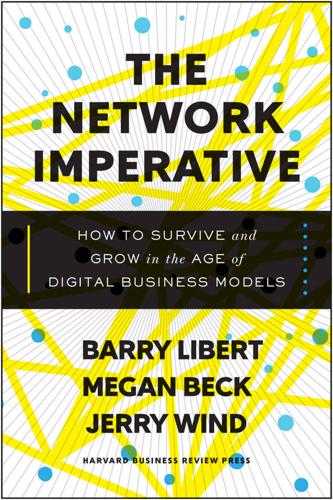
The Network Imperative: How to Survive and Grow in the Age of Digital Business Models
by
Barry Libert
and
Megan Beck
Published 6 Jun 2016
The Enterprise Operate Story With its new vision for the firm approved by the board, the Enterprise team was ready to begin reallocating its capital and creating its new digital network platforms. CIO Pradip Sitaram, who had been deeply involved in evangelizing and envisioning Enterprise’s transformation, took on the leadership role to move the network business from a vision to a reality. Sitaram had already helped Enterprise create an internal network, based on Salesforce.com (a well-established cloud provider), which was used by employees and team members to chat, collaborate, originate loans, manage financial assets, and perform a multitude of business operations. This project was nearing completion, but Enterprise still had a team of about thirty internal technologists, and access to thirty-five others through a relationship with an offshore technology firm.
…
See also mindset action by network leaders and evolution of, 192–194 as barriers in strategy shifts, 50 of boards, 106, 108 breaking habits and, 198 mentoring for, 198–199 move to intangible assets and, 46 of network orchestrators, 194–195 new stories needed for, 198 Pinpointing in PIVOT process, 137–139 reinforcing, to realize change, 197–199 mentors, 108, 162, 198–199 Microsoft, 76, 80, 133 millennials, 8, 89, 90, 130, 155, 199 mindset, 28, 113–120 diversification of new ideas and methods in, 115 examples of companies using, 118–119 General Motors’ example of change in, 113–114 move from closed to open in, 115–118, 120, 186 network orchestrators and, 114–115, 118, 202 openness to change and, 114–115 organizational culture supporting, 117–118 questions to ask about, 117 scoring your company on, 121–122 minorities, and board membership, 105, 108 mission, 67, 92, 103–104, 118, 119, 140, 163 mission statement, 117 mobile technology customers’ use of, 156 examples of companies using, 36, 53, 70, 110, 191, 197 as key technology, 32 network orchestrators and, 148 platform choice and, 162 multiplier (price/revenue) market valuation comparison among business models using, 18–19 performance comparison among business models using, 16 use of term, 17–18 Myatt, Mike, 90 NASA, 73 Netflix, 46, 82–83, 196 Net Promoter Score (NPS), 65, 83 network capital business model based on, 15, 132 inventory of, 126, 145, 146, 149–151 mental model values on, 138 network orchestrators’ use of, 16 network platforms and, 160 Network Challenge, The (Kleindorfer, Wind, and Gunther), 7 network leader on teams, 169–170, 178, 179 network leaders in organizations, 189–203 core beliefs of, 192 digital technology changes and, 190 guiding principles of, 192–193 mental model evolution of, 192–194 network orchestrators as, 202 new thinking needed by, 189 responses to rapid pace of change by, 190–191 network orchestrators as allocators, 51, 54 boards and, 106–107 digital platforms used by, 33, 36–37 economic advantages of, 15–16 evaluating organization’s performance as, 135–136 examples of, 14 financial services and, 130 identifying organization’s characteristics related to, 133–135 industry sector adoption comparison for, 22–23 intangible assets and, 42, 44 leadership and, 56, 58–59, 60, 61, 62–63 market valuation comparison for, 17–19 measurement used by, 97 mental models of, 21, 194–195 mindset openness and, 114–115, 118, 202 network capital used by, 15 as network leaders, 202 number of companies analyzed for, 13 number of companies using, 22 overview description of, 14 performance comparison for, 16 PIVOT assessment of business models with, 132–133 possible situations behind slow adoption of, 23 scalability characteristics of, 15–17 tracking network and platform metrics for, 178–179 value creation comparison for, 19–20 Visualizing business model for, in PIVOT process, 157–158 networks best practices of legacy firms compared with companies using, 20 boards and, 104–106, 110–111 customer groups within, 149–150 intangible needs met by, 21 law of increasing returns and, 12 open organizations’ use of, 116 power of, 8, 12, 24, 28 subscription model using, 80 network sentiment, 44, 97, 98, 100, 150, 179, 180 Nickell, Jake, 68 Nike, 53, 70, 82, 160, 161, 171 Nike+, 53, 161, 171 Nordstrom, 76 Ocean Tomo, 97 Oculus VR, 36 online forums, 70, 72, 162 OpenMatters, business models research of, 131 OpenMatters website additional resources and support on, 128, 131, 203 business model resources on, 121 digital tools on, 10, 131 mental model assessment on, 138 survey of organization’s characteristics on, 135 openness examples of companies with, 118–119 mindset with, 114–115, 120 open organizations diverse initiatives and business units in, 116–117 examples of, 118–119 innovation pipeline in, 116 move from closed organization to, 115–118, 120, 186 organizational culture supporting, 117–118 questions to ask about, 117 talent in, 117 Operate step in PIVOT, 126, 127, 169–176, 186 creating platform in, 170–172 Enterprise Community Partners example for, 175–176 goal of, 169 management plan for, 174–175 management practices in, 172–174 selecting network leader and team in, 169–170, 173 organizational culture, and openness, 117–118 Page, Larry, 118, 119 Palmisano, Sam, 50 partners customer contributors as, 34, 58, 59 independent workers as, 89, 90–92, 93 performance business model comparison for, 18–19 Pinpointing in PIVOT process, 135–136 Phone Case of the Month, 81 physical capital business model based on, 15, 132 inventory of, 126, 145, 146, 163 mental model values on, 138 network platforms and, 159 Pinpoint step in PIVOT, 126, 130–141, 185 assessing current business model in, 131–132 defining current business model in, 132–133 defining mental model in, 137–139 Enterprise Community Partners example for, 140–141 goal of, 130–131 identifying organization’s characteristics in, 133–135 reviewing economic performance in, 135–136 Pinterest, 44 PIVOT, 123–186 additional resources and support for, on OpenMatters website, 128, 131 change leader in, 132 Enterprise Community Partners example for, 127 five steps of, 126–127 introduction to, 125–128 Pixar, 68 plans for big data use, 99–100 for filling technology, talent, and capital gaps in platforms, 171–172 for growth, on OpenMatters website, 10 for network management, 174–175 for reallocating capital, 157–158 PricewaterhouseCoopers, 106 principles for network orchestration, 25–122 as challenges and levers for change, 27 list of, 27–28 research identifying, 21, 28 scoring your company on, 121–122 Principles of Economics (Mankiw), 49 Project Loon, 167 Red Hat, 133 referrals, 78, 79, 175, 183 Reichheld, Fred, 65 relationships with customers data collection in, 81–82 as intangible asset, 42 leaders affected by changes in, 56–58 personalized approach to, 82 in subscription model (see subscription model) revenues, 28, 75–83 advantages of subscription models for, 77–78 data acquired with, 78, 81–82 move from transaction to subscription in, 78, 79–82 Netflix versus Blockbuster example in, 82–83 nonrevenue activities in subscription model and, 78–79 recurring, in subscription model, 75–77 scoring your company on, 121–122 reverse mentoring, 108, 162, 199 ride-sharing services, 44, 85, 113, 155, 197 Rouse, Jim, 127, 128, 165, 184 Rouse, Patty, 127 Russell Reynolds, 107 Salesforce.com, 176 scalability advantages of, 31 business model comparison for, 15–17, 132 cloud technology and, 32 costs with, 12, 16, 17, 19, 33, 63, 139 digital technology enabling, 3, 33, 41, 44, 162 economics of scale contrasted with, 17 global access and, 31 of network lodging options, 156 network orchestrators and, 172, 202 Threadless example of, 69 scale economics, 17 service providers evaluating organization’s performance as, 135–136 examples of, 14 human capital used by, 15 identifying organization’s characteristics related to, 133–135 industry sector adoption comparison for, 22 market valuation comparison for, 18–19 number of companies analyzed for, 13 overview description of, 14 performance comparison for, 16 PIVOT assessment of business models with, 132–133 scalability characteristics of, 16, 17 value creation comparison for, 19–20 services as intangible asset, 41 subscription model using, 80 shared vision, and co-creators, 61 sharing-economy companies, 44, 85, 113, 155, 197 show-rooming, 45 Sidecar, 44 Sitaram, Pradip, 140, 152, 164, 175–176, 183, 184 skills assessment, 138 smartphones, 29–30, 32 social media, 29 boards’ use of, 107 CEOs’ use of, 199 customer data from, 97, 98, 101 examples of companies using, 53–54, 143, 180 interactions with companies using, 58, 80, 107, 202 as key technology, 32 leveraging for marketing and communication, 34 network sentiment tracked on, 180 platform choice and, 33, 162 public relations problems from customers’ use of, 42–43 subscription model using, 77–78, 80 Softlayer, 48 software subscription model, 76, 80 Spencer Stuart, 105 Sprint, 81 Stanford University, 107 Starbucks, 53, 109, 143, 190, 191 Starwood Hotels, 4, 43–44 strategy, 27, 47–54 barriers to changing, 48–49, 50 best practices of allocators in, 52–53 capital allocation as focus of, 49–51 IBM as example of shift in, 47–48, 50 move from operator to allocator in, 51–52 Nike-Apple partnership as example of, 53–54 questions to ask about, 52 scoring your company on, 121–122 subscription model advantages of, 77–78 customer contributors and, 77 data acquired in, 78, 81–82 examples of companies using, 75–76 moving customers from transactors to subscribers in, 78, 79–80 Netflix versus Blockbuster example in, 82–83 nonrevenue activities in, 78–79 personalized approach in, 82 recurring revenue from, 76–77 surprising and delighting the customer in, 81 themes in implementing, 80–82 types of offerings in, 80 talent big data collection and, 100 customer contribution of, 69 for digital platform operation, 170–171 experience in digital technologies needed by, 35 innovation and, 168 in open organizations, 117 tangible assets as financial liabilities in, 43–44 market valuation of intangible versus, 40, 46 move to intangible assets from, 44–45 Target, 76 TaskRabbit, 15, 159 Team of Teams: New Rules of Engagement for a Complex World (McChrystal), 55 technology, 27, 29–37 advantages of using, 31 business models incorporating, 30–31 embracing “digital everything” in, 30–31 essential aspect of, 29–30 importance of understanding and using, 30 management practices for intangible assets related to, 42 mentorships for, 199 move from physical to digital in, 34–37 platforms and, 33–34 questions to ask about, 35 scoring your company on, 121–122 talent needed for, 35 understanding five key technologies in, 32–33 technology creators evaluating organization’s performance as, 135–136 examples of, 14 identifying organization’s characteristics related to, 133–135 industry sector adoption comparison for, 22 intellectual capital used by, 15 market valuation comparison for, 18–19 number of companies analyzed for, 13 overview description of, 14 technology creators (continued) performance comparison for, 16 PIVOT assessment of business models with, 132–133 scalability characteristics of, 16, 17 value creation comparison for, 19–20 Tesla, 114 Threadless, 68–70, 72, 73, 78, 79, 81 3M, 91, 190 Thrun, Sebastian, 168 Topsy, 98 Track step in PIVOT, 126, 127, 177–184, 186 Amazon example of, 177–178 Enterprise Community Partners example for, 183–184 goal for, 178 network and platform metrics for, 178–179 network dimensions used in, 179–180 ongoing experimentation with, 182–183 platform dimensions used in, 180–181 team dimensions used in, 181–182 Trader Joe’s, 78 transactors, customers as, 78, 79–80 TripAdvisor, 10, 14, 44, 159, 174 Trunk Club, 76 Twitter, 42, 59, 60, 66, 72, 78, 79, 89, 97, 100, 107, 148, 171, 180, 199 Uber, 3, 4, 44, 66, 70, 81, 85, 91, 114, 155, 159, 160, 174, 197 United Healthcare, 133 US Board Index, 105 US interstate highway system, 11–12 Upwork, 12, 15, 43 value creation business model comparison for, 19–20 co-creators and, 61, 62–63 mental model beliefs on, 138–139 nonemployees and, 91 values assessment, 138 van Kralingen, Bridget, 47, 48 Verizon, 81 virtual reality (VR) technology, 36 Visa, 133 vision, and co-creators, 61 Visualize step in PIVOT, 126, 127, 156–165, 186 analyzing possible contribution to networks in, 160–161 beginning step for, 157–158 choosing platform in, 162–163, 170 Enterprise Community Partners example for, 163–165 goal of, 156–157 identifying potential networks in, 159–160 network orchestrator business model in, 157–158 overview of process in, 158–159 selecting network for, 161–162 team in, 158 VRBO, 156 Walmart, 4, 14, 76, 110, 133, 144 Wealthfront, 130 Weatherup, Craig, 110 WeChat, 4 Welch, Jack, 108, 199 Werhane, Charlie, 140, 164, 184 Wikipedia, 8, 46 Wind, Jerry, 6, 7 women, and board membership, 105, 108, 109 workforce.

Custodians of the Internet: Platforms, Content Moderation, and the Hidden Decisions That Shape Social Media
by
Tarleton Gillespie
Published 25 Jun 2018
For some, awareness that their user base is international may heighten an inclination to allow context-specific beliefs govern what should and should not be said. For others, the same awareness may fuel a political mission to knowingly impose cherished American values. 48Julia Angwin, Stealing MySpace, 64–65. 49Mathew Ingram, “Here’s Why Disney and Salesforce Dropped Their Bids for Twitter,” Fortune, http://fortune.com/2016/10/18/twitter-disney-salesforce/. 50Burgess, “From ‘Broadcast Yourself’ to ‘Follow Your Interests.’” 51Lessig, Remix. 52Tim O’Reilly, “What Is Web 2.0: Design Patterns and Business Models for the Next Generation of Software,” O’Reilly Media, September 30, 2005, http://www.oreilly.com/pub/a/web2/archive/what-is-web-20.html. 53boyd and Ellison, “Social Network Sites”; Beer, “Social Network(ing) Sites”; Ellison and boyd, “Sociality through Social Network Sites.” 54Gehl, Reverse Engineering Social Media; Baym, “Social Media and the Struggle for Society”; Hearn, “Verified”; Langlois and Elmer, “The Research Politics of Social Media Platforms.” 55Helmond, “The Platformization of the Web”; Plantin et al., “Infrastructure Studies Meet Platform Studies.” 56Alexis Madrigal, “The Perfect Technocracy: Facebook’s Attempt to Create Good Government for 900 Million People,” Atlantic, June 19, 2012, http://www.theatlantic.com/technology/archive/2012/06/the-perfect-technocracy-facebooks-attempt-to-create-good-government-for-900-million-people/258484/. 57Vaidhyanathan, The Googlization of Everything. 58Turner, From Counterculture to Cyberculture. 59Dibbell, “A Rape in Cyberspace”; Kraut and Resnick, Building Successful Online Communities. 60Personal interview. 61Platforms experience what is known as “eternal September.”
…
After a fifth deletion, she decided to move to the fledgling MySpace—and brought her forty thousand followers with her. Traffic spiked the day she arrived. Her choice, between two regimes of moderation, helped buoy the new site in its transition from spyware provider to social media giant, at a moment when its future was far from certain.48 Second: in 2016, Twitter was in negotiations with the likes of Google, Salesforce, and Disney to be acquired, but all three passed on the deal. Some in the financial press wondered whether Twitter could not be sold, might not even survive, because it had become a toxic environment marred by harassment and misogyny.49 In one instance, the promise of lenient moderation may have saved that platform for another week, or month, or year; in another, insufficient moderation may have rendered a billion-dollar company toxic to potential buyers.
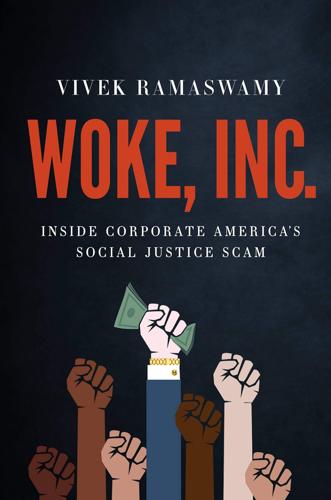
Woke, Inc: Inside Corporate America's Social Justice Scam
by
Vivek Ramaswamy
Published 16 Aug 2021
Today, it is the system—and its tolerance for dissent is vanishing. Al Gore recently declared that stakeholder capitalism is “the proven model for business” and that corporate executives who fail to act accordingly could be sued for violating their fiduciary duties.12 Marc Benioff, billionaire founder of Salesforce.com, proclaimed that shareholder capitalism is “dead.”13 Politicians on both sides, from Elizabeth Warren to Marco Rubio, have jumped on the bandwagon. Today the case is basically closed. In 2018, New York Times columnist Ross Douthat called this trend “woke capitalism.”14 I call it “Wokenomics”—a new economic model that infuses woke values into big business.
…
The council “boasts over $10.5 trillion in assets under management, companies with over $2.1 trillion of market capitalization, and 200 million workers in over 163 countries.”20 This council endorses not only equality of opportunity but also “Equitable Outcomes” and “Fairness Across Generations on the Environment.” There’s a page on its website dystopically titled “Our Guardians,” which includes a creepy-looking photo of billionaires like Marc Benioff of Salesforce, large corporate CEOs from Wall Street to big pharma, and descendants of the Rothschild banking family in Europe surrounding the Pope and making a pledge to “change capitalism for good.”21 The American vision of separating church from state, and democracy from capitalism, has been supplanted by this new global vision of mixing them all with one another—leaving us with none of them in the end.
…
Gore, Al, and David Blood. “Capitalism after the Coronavirus.” The Wall Street Journal, 29 June 2020, www.wsj.com/articles/capitalism-after-the-coronavirus-11593470102. 13. Benioff, Marc. “Marc Benioff: We Need a New Capitalism.” The New York Times, 14 Oct. 2019, www.nytimes.com/2019/10/14/opinion/benioff-salesforce-capitalism.html. 14. Douthat, Ross. “The Rise of Woke Capital.” The New York Times, 28 Feb. 2018, www.nytimes.com/2018/02/28/opinion/corporate-america-activism.html. 15. Mankiw, N. Gregory. “C.E.O.s Are Qualified to Make Profits, Not Lead Society.” The New York Times, 24 July 2020, www.nytimes.com/2020/07/24/business/ceos-profits-shareholders.html. 16.
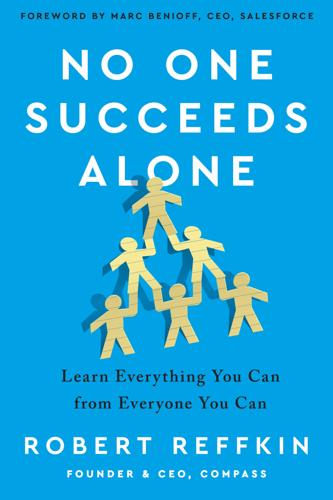
No One Succeeds Alone
by
Robert Reffkin
Published 4 May 2021
He had a bold vision for reimagining the real estate industry by creating a technology platform to make the searching and selling experience seamless and intelligent for agents and their clients. I could relate to that vision and his passion, and felt a kinship with Robert. More than two decades ago, I dreamed of reimagining the software business by making it as easy to purchase and use business applications as it is to buy a book on Amazon. The result was Salesforce, and today the company is the world’s number one customer relationship management platform, with more than $20 billion in annual revenue. Robert and I have followed a similar path in some ways. We were both entrepreneurs from an early age, earning enough in high school to help us pay for college.
…
Whether it’s his collaborative approach to innovation, his strategy for connecting with mentors, his unwavering focus on customer needs, his way of building a company culture anchored in a sense of belonging, his beginner’s mind open to endless possibilities, or his boundless optimism and persistence, everyone can learn from the way Robert engages with the world with gratitude, passion, and humanity. —Marc Benioff, Chair and CEO, Salesforce Introduction Here’s the most common way of telling my story. Robert Reffkin was raised by a single mother without much money. He made more than $100,000 running his first business while still in high school, DJing bar mitzvahs, high school dances, and house parties. He graduated from Columbia University in two and a half years.
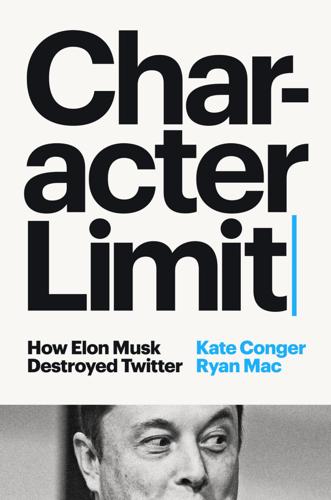
Character Limit: How Elon Musk Destroyed Twitter
by
Kate Conger
and
Ryan Mac
Published 17 Sep 2024
Calm and analytical, he was being groomed to lead Salesforce by Marc Benioff, the billionaire chief executive of the sales software company. Benioff made him co-CEO in the same week that he was elevated to be Twitter’s board chairman, as Dorsey handed the reins to Agrawal. Taylor was a rising star and a steady, inoffensive choice. He rarely tweeted, aside from occasional posts about his beloved San Francisco 49ers and Golden State Warriors. He preferred to do business in person and spent much of his time globe-trotting to meet face-to-face with Salesforce customers. While he was respectful of Twitter’s remote work policies and went along with Twitter’s custom of holding most board meetings over video calls, Taylor didn’t want to pass up the opportunity to meet Musk in person.
…
The Chicago-based firm was one of the largest private equity firms in the world and had a track record of taking major software companies private—perhaps Twitter could pique its interest. But even though Thoma Bravo had about $100 billion under management, challenging Musk was a big ask—and Twitter didn’t fit the firm’s portfolio, which focused mostly on business software. The big tech companies like Google and Salesforce, and media giants like Disney, of course, were options. But all of them had taken whiffs of Twitter before and did not like the smell. President Trump had seemed to have little interest in antitrust enforcement, but the Biden administration had made it a top priority to investigate mergers and crack down on corporate giants that snapped up smaller competitors.
…
and, 408–9 LibsofTikTok, 146 Lindell, Mike, 361 LinkedIn, 156, 176, 298 LiveJournal, 13 Lonsdale, Joe, 115 Lula da Silva, Luiz Inácio, 317, 390 Lutz, Bob, 38 M Mac, Ryan, 6, 25n Magneto, 406 Maheu, Jean-Philippe, 281, 282, 289–92, 294–95, 298, 301 Malone, Post, 296 Mann, Kyle, 115 Mars, 26, 31, 47, 100, 141, 213, 423 Mashable, 379 Mastercard, 301 Mastodon, 320, 378, 382–83, 433 Mattel, 294 Mbappé, Kylian, 380 McCarthy, Kevin, 321, 390, 391 McCormick, Kathaleen, 217–18, 227, 228, 232, 434 McDonald’s, 311 McSweeney, Sinéad, 278, 279, 293–94, 329–30, 337, 342, 354 Media Matters for America, 294, 425–26 Mendoza, Pablo, 381 Merrill, Marc, 134 Messi, Lionel, 380 Meta, 158, 388, 413 Michael, Emil, 384 Micheletti, Ed, 216–17 Microsoft, 54, 158, 177, 301 Miller, Stephen, 356 misinformation and disinformation, 1, 193, 276, 288, 307–8, 317–19, 436 conspiracy theories, 2, 4, 25, 44, 60, 61, 93, 287, 406, 432 Pizzagate, 25, 104, 390, 426 QAnon, 25, 391, 392, 433 about September 11 attacks, 433 about COVID, 61–64, 68–69, 91, 110, 114, 222, 391 about elections, 70, 257, 275, 276, 283, 307, 317–19, 338–39, 390, 405 see also content moderation Mittal, Lakshmi, 381 Modi, Narendra, 208, 400–401 Mohammed bin Salman, 234 Montano, Mike, 84, 94 Morgan Stanley, 102, 106, 121, 125, 137, 143–45, 152, 154, 155, 176–80, 232, 260, 263, 266, 284, 401, 402 Tech, Media & Telecom conference of, 401–2 Mudge (Peiter Zatko), 222, 223–27, 228, 343 Murdoch, James, 177, 180 Murdoch, Kathryn, 177 Murdoch, Lachlan, 405 Murdoch, Rupert, 177, 396 Musk, Andrew, 250, 267, 272, 350, 386 Musk, Elon Agrawal and, 85–86, 106–9, 111–12, 114, 116–21, 123–27, 135, 157, 163, 186, 191–92, 193, 212, 215, 251, 263–66, 276, 295, 343–44 Asperger’s of, 341 in Berlin, 109 bodyguards of, 7 businesses of Boring Company, 23, 37, 134, 179, 239, 241, 267, 268, 314 Neuralink, 23, 38, 179, 205, 250, 434 SpaceX, see SpaceX Tesla, see Tesla Motors X.com (bank), 29–31, 415 Zip2, 29, 207 see also Twitter under Elon Musk; X Chappelle show incident, 375 children of, 95, 100, 124, 197, 204–5, 213, 256, 279, 289, 290, 364, 376–78, 427 COVID pandemic and, 62–64, 99, 114, 128, 136, 375 data scientist and, 1–5, 344, 346 at DealBook Conference, 426–30 dog of, 144 Dorsey and, 50, 53, 78–79, 105–6, 110, 112, 113, 123, 142, 143, 163 drug use of, 39, 99 Durban and, 194–95 education of, 29 ElonJet account and, 79, 378 “episode” of, 383–84, 388, 389 flight attendant’s allegations against, 200 free speech as commitment of, 100, 101, 103, 201, 234, 244–45, 250, 275, 276, 282, 294, 320, 354, 363, 372, 378, 379, 382, 392, 400–401, 409, 418, 435–36 Gadde and, 169–72, 191, 193, 243–46, 257–58, 263–66, 343–44 Halloween gala attended by, 292 Israel trip of, 426–28 leadership style of, 115, 279, 323–24 loyal supporters of, 3, 5, 37–38, 128, 134–36, 279, 291, 310, 348, 358, 359, 415 media as viewed by, 32, 37, 102, 198 neck injury of, 414, 416 paranoia of, 3, 7, 32, 34, 256, 257, 286, 287, 297, 344, 412 PayPal and, 30–31 political views of, 99–103, 199, 279, 321, 327, 375, 389–91, 406, 423–29, 432 racial and social justice issues as viewed by, 99–100 relationships of, 23, 30, 32, 34, 95, 100, 103–4, 117, 124, 194, 204–6 Roth tweet of, 373–74, 376 stalker and, 377–78 at TED conference, 124, 127–28, 136–38, 140, 204 Twitter acquisition of, see Twitter, Musk’s acquisition of on Twitter board, 50, 105, 107–12, 113–15, 117–21, 136 Twitter competitor threat of, 105, 108, 110, 195, 201, 215 Twitter employees’ view of, 114, 116, 128–29, 165 Twitter OneTeam video call of, 47–48, 198 Twitter parody account and, 32–33, 311 Twitter shares of, 102, 103, 105–8, 110–11, 115, 125–26, 129, 136, 138, 175, 217 Twitter under ownership of, see Twitter under Elon Musk Ukraine war and, 102–3, 184, 332 Unsworth accused of pedophilia by, 23–29, 47, 114, 135–36 wealth of, 6, 34, 39, 96, 101, 126, 128, 129, 136, 138–40, 153, 189, 252–53, 376, 394, 425, 434 wokeism and, 99, 100, 103, 362, 375, 406, 435 work ethic of, 1, 29 Zuckerberg and, 35–36, 262 cage match challenge, 414, 416–17 Musk, Errol, 29 Musk, Exa Dark Sideræl, 205 Musk, James, 250, 267, 272, 347–50, 354, 386, 397 Musk, Justine, 30, 32, 205 Musk, Kimbal, 29, 101, 119, 177 Musk, Maye, 279, 290–92 Musk, Techno Mechanicus, 204 Musk, X Æ A-12, 124, 205, 206, 241, 243, 256, 279, 289, 290, 364, 376–78, 427 Myanmar, 22 N Nadella, Satya, 177 Napa Valley, 301 Napster, 177 NASA, 32, 40–41 National Public Radio, 404 Nazism, 184, 282, 355, 392, 425 NBA, 171–72, 380, 403 NBCUniversal, 301, 407, 408, 420 NeighborNest, 255–56 Netanyahu, Benjamin, 426 Netflix, 158, 357 Neuralink, 23, 37, 179, 205, 250, 434 New York Post, 66–68, 170, 171, 204, 222, 367–68 New York Stock Exchange, 17, 102, 164, 263 New York Times, 6, 31, 32, 39, 69, 94, 95, 378, 393, 427 DealBook Conference of, 426–30 Roth’s op-ed in, 372–73 Nigeria, 75 Night Parrot, 296, 297 Nike, 338 9/11 attacks, 433 Nintendo, 334, 335 Nippon Telegraph and Telephone (NTT), 385 Niwa, Yoshimasa, 333 Nordeen, Ross, 250 Nosek, Luke, 30 Nostr, 382, 433 Notopoulos, Katie, 379 NPR, 404 O Obama, Barack, 99, 117, 285 Ocasio-Cortez, Alexandria, 317 October 7 Hamas attacks, 424, 426 Odeo, 13–15 Office Space, 389 Olympics, 380 O’Malley, Pat, 180–81 O’Neal, Shaquille, 280 OnlyFans, 297, 365 OpenAI, 205, 412, 435 Owens, Candace, 44 P Pacini, Kathleen, 242, 264–65, 277, 284, 286, 295, 299, 304, 340 Palace Hotel, 401 Pandjaitan, Luhut Binsar, 164 Paris Agreement, 431 Parker, Sean, 177 PayPal, 30–31, 176, 177 Pelosi, Nancy and Paul, 2, 4, 287, 289, 344 Pence, Mike, 70, 71 Penn, Sean, 58 Perelman, Ronald, 155–56 Periscope, 21 Personette, Sarah, 249–50, 271, 289, 301 Perverted Justice Foundation, 20 Peterson, Jordan, 354 Philadelphia Eagles, 396–97 Pichai, Sundar, 52, 59, 280 Pichette, Patrick, 51–52, 54–56, 126, 141, 149, 153, 158, 159, 224, 248 Pixar, 156 Pizzagate, 25, 104, 390, 426 poison pill strategy, 127, 209 of Twitter, 127, 129, 138, 141, 146, 148, 209, 218 Politico, 170 Pool, Tim, 43 population decline, 205, 213, 214, 389 pornography, 61, 297, 365–66 Posobiec, Jack, 390, 392 Post, 382 Powell Jobs, Laurene, 54 Pravda, 37 presidential elections of 2016, 21, 22, 50, 61, 67, 193 of 2020, 52, 64–65, 67, 68, 70–73, 133, 390, 405, 431 of 2024, 355, 431, 433 Pride Month, 408 Princess Bride, The, 406 Prism project, 97–98, 101, 142–43, 148–51, 153, 167, 214, 277 Public Investment Fund, 38 Publicis Groupe, 289 Putin, Vladimir, 102, 184 Q QAnon, 25, 391, 392, 433 Qatar, 380–81 Qatar Investment Authority, 179, 254, 381 Quinn, Zoë, 18 Quinn Emanuel, 28, 343, 363 R racial issues, 19, 170, 432 Black Lives Matter, 19, 21, 362 diversity and inclusion, 99–100, 197 Ferguson protests, 18–19, 183, 362 George Floyd protests, 99, 325, 362 hate speech on Twitter, 302, 392 Musk and, 99–100 Tesla and, 100, 114, 197 Twitter employees and, 362 Raytheon, 139 Redstone, Shari, 212 Republicans, 43–44, 65, 68, 199, 287, 321, 325, 327, 339, 390–94, 431 Ressi, Adeo, 109, 134 Revlon, 156 Revolt, 302 Rezaei, Behnam, 3 Rice, Kathleen, 59–60 Riley, Talulah, 34, 103–4, 205 Ringler, Mike, 156–57, 160–62, 195, 198, 201, 203, 208–9, 211, 215, 226 Rive, Lyndon, 124 Rive, Peter, 124 Roche, 160 Rock, Chris, 375 Rogan, Joe, 39, 43, 115, 170, 177 Rolling Stone, 367 Ronaldo, Cristiano, 117 Rosenblatt, David, 81, 151, 158 Rossman, Andrew, 216 Roth, Benjamin, 210–11 Roth, Yoel, 61–62, 64–66, 70–74, 146–48, 172–74, 206, 229, 242, 257, 268, 274–76, 301, 302, 356, 368, 391, 393 graduate school thesis of, 373 Musk’s tweet about, 373–74, 376 New York Times op-ed of, 372–73 resignation of, 340–42, 354, 372 Yaccarino and, 420–21 Rubin, Dave, 390 Rubin, Rick, 78 Russia, 21, 61, 67, 264, 332 Ukraine invaded by, 97, 102–3, 113, 152, 184, 325, 332 Russia Today (RT), 103, 404 S Sacks, David, 30, 31, 177, 241, 243, 260, 261, 285, 287, 298, 300, 312, 313, 362, 378 Sacramento (SMF) data center, 385–88, 394 Salen, Kristina, 180–81 Salesforce, 108, 139 Salt Bae, 381 Samuels, Detavio, 302 Sanders, Bernie, 120, 321 Sandy Hook school shooting, 60 Santa Monica Observer, 287–88 Saturday Night Live, 119, 341 Saturn project, 93, 146–48, 172–75, 206, 208, 220–22, 229, 245, 276 Saudi Arabia, 38, 106, 233–34 Savitt, Bill, 210–11, 215–17, 222, 227, 232, 247–48, 258 Schiller, Phil, 366 Schmidt, Eric, 335 Securities and Exchange Commission (SEC), 38, 39, 49, 102, 110–11, 115, 122, 123, 125, 126, 136, 152, 179, 202, 225, 231, 326 Segal, Ned, 76, 80, 83, 94–96, 137, 143, 148–53, 164, 172, 180–81, 184, 194, 203, 204, 207, 208, 210–14, 235, 237, 247, 251–54, 257–59, 260, 261, 263, 265, 286, 344, 435 firing of, 263–66, 343–44 September 11 attacks, 433 Sequoia Capital, 179 Sethi, Rinki, 223–24 Shapiro, Ben, 408 Shareworks, 284, 286 Shatner, William, 403 Shotwell, Gwynne, 201 Silicon Valley, 8, 12, 41, 54, 55, 67, 95, 108, 128, 138, 156, 329, 361, 366, 382, 384, 435 Silver Lake, 54–56, 91, 95, 106, 138–39, 143 Simon, Luke, 345 Simpson, O.
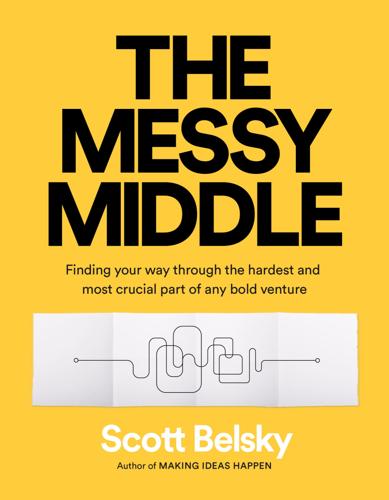
The Messy Middle: Finding Your Way Through the Hardest and Most Crucial Part of Any Bold Venture
by
Scott Belsky
Published 1 Oct 2018
This could come in the form of a graphic representation of milestones and deadlines hung on walls, a communications campaign that repeats goals and the progress to date, or in the form of pithy time-bound declarations, like Pinterest’s “Year of Going Global,” which pushed every team across the company to reprioritize efforts to internationalize the business, or Uber’s “Year of the Driver,” which they rolled out when they realized they had fallen behind on developing tools and better policies for drivers on their platform. Other times it is a statement or edgy visual that sticks in peoples’ minds and becomes ammunition against old and stodgy thinking. For example, when cloud business services company Salesforce launched their customer-relationship management service at a time when big companies preferred traditional boxed software, they used the classic “no smoking” symbol with “software” in place of the cigarette image. This antitraditional-software sign served as a rallying cry to push both employees and customers beyond the old software mentality.
…
And some, like Periscope, defied social norms and made people scratch their heads whenever I’d describe them. You can consult groups, history, and common knowledge, but the tough decisions and crazy notions of future possibilities come from within. The same is true for ventures of all kinds. I like how Mark Suster, a two-time entrepreneur who sold his last company to Salesforce before becoming a VC himself, made the same case for teams in a blog post: No answers are obvious or everybody would be doing these things. I am amazed at how some entrepreneurial teams dither. I watch founders who want to get “air cover” for hard decisions by getting too much input from their teams or boards.
…
M., 201 Pentagram, 274–75 performance, and productivity, 214 Periscope, 10, 69–70, 112, 204, 233, 252, 264–65 Twitter’s acquisition of, 69, 264–65 permission, asking for forgiveness vs., 199–202 perseverance, persistence, 62, 79, 85 perspective, 40–42, 66, 74, 326 quitting and, 62–64 Photoshop, 10, 144, 159, 162, 185, 206–7, 238–39, 270, 347 Pine Street, 125 Pinterest, 10, 64, 86–87, 94, 112, 158–59, 165, 174, 204, 233, 248, 319 Pixar, 141 placebo, 59–61 planning, 93, 280–81 polarizing people, 114–15 PolitiFact, 303 positive feedback, and hard truths, 28–31 Post-it notes, 325 pragmatists, 295, 296 Prefer, 28, 298, 299 preparedness, 16 presenting ideas, vs. promoting, 164–65 press, 265–66, 336 Pretty Young Professionals (PYP), 72–73 Principles (Dalio), 306, 307 problem solving, 209 big vs. small problems, 180–82, 322 explicitness and, 173–74 process, 153–57 Proctor & Gamble, 143 product(s), 8, 29 brand fit and, 256, 257 complexity in, 209–10, 217 explicitness in, 174–75, 271 founder fit and, 256 life cycle of, 209–10, 217 market fit and, 256 minimum viable (MVP), 86, 186, 195, 252 paradox of success of, 216 power users of, 217 products used to create, 143–45 simplicity in, 209, 210–11, 216–18, 271 product, optimizing, 17, 209–75 anchoring to your customers, 247–75 being first, 264–66 disproportionate impact and, 267–68 empathy and humility before passion, 248–50 engaging the right customers at the right time, 251–54 and measuring each feature by its own measure, 269–70 mystery and engagement in, 271–73 narrative in, 255–57 and playing to the middle, 274–75 and role of leaders in communities, 258–61 sales and, 262–63 simplifying and iterating, 213–46 and believing in the product, 223–25 creativity and familiarity in, 226–27 and design as invisible, 230–31 doing, showing, and explaining, 238–39 “first mile” and, 232–34 identifying what you’re willing to be bad at, 214–15 inbred innovations and, 245–46 incrementalism and assumptions in, 242–44 killing your darlings, 219–22 for laziness, vanity, and selfishness, 235–37 making one subtraction for every addition, 216–18 novelty and utility in, 240–41 scrutiny and flaws in, 228–29 productivity, 179, 180–82, 187, 322, 324, 325 measures of, 78–79 performance and, 214 promoting ideas, vs. presenting, 164–65 promotions, 130 progress, 24–25, 31, 40, 47, 64, 75, 83, 85, 160, 179, 181, 349 conflict avoidance and, 185–86 process and, 154 progress bars, 181 prototypes and mock-ups, 161–63 Psychological Bulletin, 272 psychological safety, 122 Psychological Science, 272–73 psychology, 316, 317 Quartz, 37–38, 108, 301 questions, 69–71, 183–84, 321 Quiller-Couch, Arthur, 220 Quinn, Megan, 303–4 quitting, perspective and, 62–64 Quora, 138, 167 Rad, Sean, 259 Radcliffe, Jack, 197 Rams, Dieter, 230 reactionary workflow, 327, 328 Ready, The, 179 reality-distortion field, 41 Reboot, 327 Reddit, 261, 300, 302 rejection, 58 relatability, 57 relationships: commitments and, 283–84 and how others perceive you, 316–17 negotiation and, 286–87 REMIX, 165 resets, 63–64, 72–75 resistance, fighting, 35–36 resourcefulness, and resources, 100–102 reward system, short-circuiting, 24–27 Rhode Island School of Design, 186, 354 rhythm of making, 16 Ries, Eric, 194 risk, 122, 316, 337 ritual, 328 rock gardens, 67–68 routines, 323 ruckus, making, 337–38 Saatchi Online, 89 Sabbath Manifesto, 327–28 safety, psychological, 122 Sakurada, Isuzu, 361–62 salaries, 141–42 sales, salespeople, 262–63 Salesforce, 159, 204 Sandberg, Sheryl, 39 Santa Fe, USS, 167 satisficers, 229, 284–85 scalability, 242 Schouwenburg, Kegan, 50–51 Schwartz, Barry, 284–85 science vs. art of business, 310–13 Seinfeld, Jerry, 250 self, optimizing, 8, 17, 277–338 crafting business instincts, 293–313 auditing measures instead of blindly optimizing, 297–99 data vs. intuition in, 300–304 mining contradictory advice and developing intuition, 294–96 naivety and openness in, 308–9 science vs. art of business, 310–13 stress-testing opinions with truthfulness, 305–7 planning and making decisions, 279–92 focus and choice, 282–85 making a plan vs. sticking to it, 280–81 negotiation in, 286–87 sunk costs and, 291–92 timing and, 288–90 sharpening your edge, 315–28 building a network and increasing signal, 320–21 commitments and, 318–19 disconnecting, 326–28 and how you appear to others, 316–17 leaving margins for the unexpected, 324–25 values and time use, 322–23 staying permeable and relatable, 329–38 attention and, 335–36 credit-seeking and, 330–32 and making a ruckus, 337–38 removing yourself to allow for others’ ideas, 333–34 self-awareness, 54–56, 305–7 selfishness, laziness, and vanity, 235–37 setbacks, 41 70/20/10 model for leadership development, 125 Shapeways, 50 Shiva, 374 shortcuts, 85 signal and noise, 320–21 Silberman, Ben, 86–87, 94, 112, 165, 319 Silicon Valley, 86 Simon, Herbert, 229, 284 SimpleGeo, 267 Sinclair, Jake, 334 skills, and choosing commitments, 283–84 Skybox, 101 sky decks, 117 Slack, 139, 210, 241 Slashdot, 295 Smarter Faster Better (Duhigg), 180 Smith, Brad, 373 Snapchat, 70, 189, 210, 227, 249 Snowden, Eric, 48, 162 Social Capital, 107 social media, 70, 139, 195, 210, 235–36, 243 solar eclipse, 300–302 SOLS, 50–51 Song Exploder, 333 Sonnad, Nikhil, 301–2 Sonos, 275 Southwest Airlines, 214–15 Soyer, Emre, 32–33 SpaceX, 168 Spark, 303 speed, 194–98 Spiegel, Evan, 249 Spot, 256, 257 Square, 303–4 Squarespace, 312 Stafford, Tom, 291 stand-ins, 297–98 start, 1, 6–8, 13, 209, 331 Statue of Liberty, 200 Stein, Dave, 280 Steinberg, Jon, 44–45, 313 Stitch Fix, 79 story, see narrative and storytelling Stratechery, 135 strategy, patience and, 80–85 strengths, 29, 54, 95, 214 stretch assignments, 130 structure, rules for, 150–52 StumbleUpon, 112, 256 Stumbling on Happiness (Gilbert), 196 suffering, 35–36, 131 Summers, Larry, 108 sunk costs, 64, 71, 185, 291–92 Super Bowl, 273 superiority, sense of, 331–32 suspension of disbelief, 60–61 Suster, Mark, 204–5 Swarthmore College, 229 sweetgreen, 10, 151, 217, 221, 233, 245–46, 310 Systemized Intelligence Lab, 306 Systems Thinking, 283 Systrom, Kevin, 36 Taflinger, Richard, 38 talent, 119–25, 127, 187 Talk of the Nation, 196 TaskRabbit, 259 team, 39, 331, 332 energy and, 43–45 perspective and, 40–42 team, optimizing, 8, 17, 97–207, 211 building, hiring, and firing, 99–131 discussions and, 112–13 diversity in, 106–9 firing people to keep good people, 126–28 grafting and recruiting talent, 119–25 hiring people who have endured adversity, 110–11 immune system in, 116–18 initiative and experience in, 103–5 keeping people moving, 129–31 polarizing people and, 114–15 resourcefulness and resources in, 100–102 clearing the path to solutions, 177–207 big and small problems, 180–82 bureaucracy, 183–84 competitive energy, 187–91 conflict avoidance, 185–86 conviction vs. consensus, 203–5 creative block, 192–93 forgiveness vs. permission, 199–202 organization debt, 178–79 and resistance to change, 206–7 speed in, 194–98 culture, tools, and space, 133–48 attribution of credit, 146–48 free radicals and, 137–39 frugality and, 140–42 stories and, 134–36 tools, 143–45 structure and communication, 149–76 communication, 170–76 delegation, 166–69 merchandising, internal, 158–60 mock-ups for sharing vision, 161–63 presenting vs. promoting ideas, 164–65 process in, 153–57 rules in, 150–52 technology, 328, 371 TED, 62, 116, 305 teleportation, 70, 264 Temps, 201 10 Principles of Good Design (Rams), 230 Teran, Dan, 221 Tesla, 273 think blend, 33 Thomas, Frank, 222 Thompson, Ben, 135 Threadless, 267 time, use of, 210, 283, 299 leaving margins, 324–25 money and, 370–72 values and, 322–23 time-outs, 74 timing, 288–90, 332 decision making and, 289–90 investment and, 290 leader and, 288–89 Tinder, 259–60 Tiny, 294 Todd, Charlie, 113 Todoist, 229 tools, 143–45 Topick, 249 transparency, 259–60, 287 triggers, 55 Trump, Donald, 273, 302–3 truth(s), 71, 174, 193, 331, 338 creative block and, 192–93 hard, 28–31 stress-testing opinions with, 305–7 about time use, 323 Turn the Ship Around!
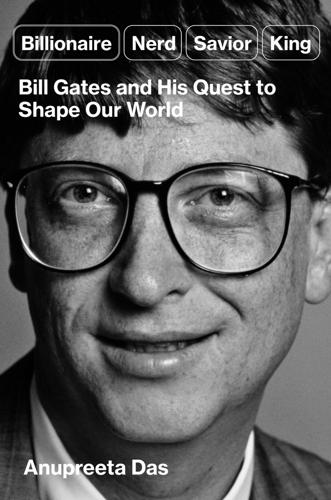
Billionaire, Nerd, Savior, King: Bill Gates and His Quest to Shape Our World
by
Anupreeta Das
Published 12 Aug 2024
In a 2018 study, the Brookings Institution found that the foundation was the seventeenth largest donor to 53 multilateral organizations. It was the only private actor; the rest were all countries.9 The foundation’s annual budget alone is $8.3 billion, about the same as the annual gross domestic product of Monaco, or the 2023 net worth of Marc Benioff, the cofounder of technology giant Salesforce, philanthropist, and owner of Time magazine. That kind of money has given the foundation incredible heft and prominence, especially with the two cochairs being such forceful and visible advocates of their work. Since the Buffett money started coming in, the foundation has given money to an ever-growing pool of nonprofits, universities, media entities, research centers, and start-ups and other for-profit entities whose work fits into its mission.
…
In an op-ed piece for The New York Times in 2011, the Omaha investor argued that a higher tax rate on investments wouldn’t necessarily deter the mega rich from making investments, because they were likely to judge a deal on its merits rather than the tax rate.15 More recently, Marc Benioff, the chairman of Salesforce, penned an op-ed for the same newspaper, calling for a fairer and more equitable capitalism that reduces inequality, equates doing well with doing good, and asks the wealthiest to pay more in taxes.16 Gates too has said he would pay more in taxes if the system were amended and has expressed support for estate taxes, which are levied upon death.
…
Wade, 109–110, 167 Rogen, Seth, 107 Rogers, Fred, 96, 243–244 Rolling Stone, 38, 51 Rolling Stones, 65 Roosevelt, Franklin D., 24 Rose, Charlie, 79 Ross, Bob, 243 Rotary International, 104, 177 Rotterdam, 271 Rubenstein, David M., 26, 135–136 Rudolph, Maya, 145 RuneQuest (game), 51 Russian invasion of Ukraine, 279 Sackler family, 28 Saez, Emmanuel, 257 Sager, Jeannie Infante, 22, 170 St. Paul, Minn., 13 Salesforce, 181, 259 Sánchez, Lauren, 144 Sandberg, Sheryl, 54, 263 Sanders, Bernie, 257–258, 260 Sandy Hook Elementary School, 246 Saturday Night Live, 53 Saunders-Hastings, Emma, 187 Sawyer, Diane, 148 Scarry, Richard, 109 Schervish, Paul, 194 Schmitz, Hans Peter, 136 Schultz, Howard, 139 Schwarzman, Stephen A., 26, 120 Scialfa, Patti, 159 science, technology, engineering, and math (STEM) fields, 53 Scott, MacKenzie, 45, 144–145, 170, 191, 204, 263 SD Biosensor, 176 Seattle, Wash., 34, 66–67 Seattle Computer Products, 35 Seattle Post-Intelligencer, 155, 159 Seattle Public Library, 98 Seattle University, 22, 171 Seitz, John, 27 self-made, 262–263 Senate Finance Committee, 258 Seshadri, Vignesh, 249–250 Seven Samurai (film), 44 sexual abuse, 22 sexual harassment, 238–243 Shafik, Minouche, 193 Shah, Rajiv, 182 Sharp, Isadore, 213 Sheldon (fictional character), 52–53 Sheraton New York Times Square Hotel, 125 Shiva, Vandana, 190 Shoe Dog (Knight), 11 Signature Aviation, 213 Siino, Rosanne, 43, 55–56, 58 Silicon Graphics, 43 Silicon Valley, 48, 55 Silicon Valley (TV show), 52–53 Silicon Valley Bank, 49 Silicon Valley Community Foundation, 205 Simpsons, The, 93 Singer, Peter, 205 Sinofsky, Steven, 228 sitcoms, 53 Sixteen Candles (film), 51 Sloan School of Management, 69 small-dollar donations, 25, 29 smartphones, see iPhones Smil, Vaclav, 101 Smith, Brad, 82 Smith, Robert, 157, 263 Snowflake Computing, 33 social franchising, 200 social media platforms, 107 Social Network, The (film), 52 Softimage, 70 Sonsini, Wilson, 78 Soon-Shiong, Patrick, 273 Sorkin, Andrew Ross, 260 Soros, George, 202, 245, 272 Soul of a New Machine, The (Kidder), 40 South Carolina, 272 Spacewar (game), 39 “Spacewar: Fanatic Life and Symbolic Death Among the Computer Bums” (Brand), 38 SpaceX, 10 Spelman College, 193 spend-down foundations, 280–281 Spielberg, Steven, 100 Spiers, Elizabeth, 49 Springsteen, Bruce, 159 Springsteen, Jessica, 159 S&P 500 stock market index, 28, 44 Square, 204 Sridhar, Devi, 248 Srinath, Ingrid, 196 Staley, James E., 229–231, 232 Standard Oil, 62–64 Stanford University, 48, 50, 56, 57, 73, 74, 98, 159 Stanley Farms, 211 Starbucks, 139 Star Trek (film), 51 start-up founder myths, 47–49 Staten Island, N.Y., 20 STEM (science, technology, engineering, and math) fields, 53 Sterling, Alton, 13 Steyer, Tom, 273 Stone, Roger, 247 Stoneham, Mass., 10 Stonesifer, Patty, 98 Stranger Things, 51 Strategic Property Partners, 208 Streeter, Thomas, 41, 47 Strive Capital, 272 Sturken, Marita, 244 Succession (TV show), 112 Summers, Larry, 229, 237 Sunderland, Julie, 192 Sun Microsystems, 41 Sun Valley, Idaho, 9–10, 12–14, 54 Superstorm Sandy, 21 Supreme Court, 22, 109, 167, 171 Surrender (Bono), 100 Susan Thompson Buffett Foundation, 122 Suzman, Mark, 127, 189, 193 Swachh Bharat Abhiyan (Clean India Mission), 194 Swenson, Signe, 233 Sydow, Bob, 215–216 Tahrir Square, 255 Tampa, Fla., 207–209 Tampa Bay Lightning, 207–208 Tarbell, Ida, 64 Tax Reform Act of 1969, 27 TB, 200, 277 technology sector, of economy, 44–46 TED talks, 101, 246–247 telemedicine, 200 TerraPower, 223 Tesla, 10, 44 Thatcher, Michael, 147 Theranos, 50 Thiel, Peter, 44, 56, 272 Thomas, Clarence, 272 3G Capital, 13 Tia (company), 165 Tierney, Tom, 193 Tilden Foundation, 120 Time magazine, 43, 50, 70, 100, 154, 181 Time’s Up movement, 239 TIPS (Treasury Inflation-Protected Securities), 214 Titan: The Life of John D.
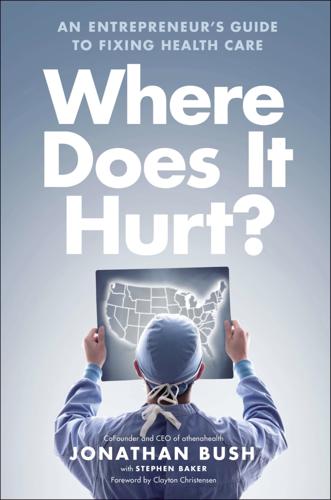
Where Does It Hurt?: An Entrepreneur's Guide to Fixing Health Care
by
Jonathan Bush
and
Stephen Baker
Published 14 May 2014
As Bill Joy, the co-founder of Sun Microsystems, has famously declared, “No matter who you are, most of the smartest people work for someone else.” Yet even though these people don’t work for us, they can work with us, reaching customers on our network. This is the idea behind More Disruption, Please, or MDP. It will feed into our own health data app store, following the models of Apple and Google and the enterprise software powerhouse, Salesforce .com. It is the antithesis of a closed and uniform ecosystem, like Epic’s. More than a single company, we’re intent on creating a vast platform for health data. Everything on this platform must meet our security and patient privacy standards, be sold as a service (with only implementation fees up front), and measure the outcomes it promises.
…
See also wellness Preventive Medicine Research Institute, 119–20 prices, 2–4, 6–8, 64, 66, 149, 166 charged by hospitals, 29–30, 82–83, 90, 94, 96, 101 comparing of, 83, 85 customized, 208 disregard for, 15–16, 166 and fee for service, 71–72 fixed, 201 increase in, 6, 86, 88–89, 92 inflated, 10, 173 and the marketplace, 28–29 of medicines, 76 monopoly in, 136 reduction in, 16, 23, 68, 85, 92–93, 96, 198 transparency of, 94, 109 See also costs primary care, 10, 22, 84, 90–91, 103, 106, 108–9, 112, 117–18, 128 profits, 5, 20, 23, 25, 27, 76, 107, 143 and childbirth, 32–33, 36, 40–41, 55, 105–6, 123, 158 and chronically ill, 84–85, 118 of cooperatives, 125, 127 of doctors, 103, 105, 202–3 of entrepreneurs, 99–102, 105–6, 110, 121, 150, 195, 204–5 of hospitals, 6–8, 84–87, 89–90, 92–96, 106, 108–9, 114, 123, 167 and preventive health care, 119–21 “soft belly,” 36, 85, 106, 123 proton accelerator, 62–65, 77, 149 Purdue, George, 124–25 quality, of health care, 3, 6, 16, 41, 52, 62, 64, 66, 67, 74, 92, 107, 131, 162–63, 198 Quantified Self movement, 189 Radisphere, 161–63 Randazzo, John, 107–9 Reagan, Ronald, 17–18 RegisterPatient.com, 153–54 regulations, 25, 35, 60–62, 66, 68–69, 74–76, 101, 168, 180, 197–98, 204 Renaissance Health, 112, 117 research hospitals, 6–7, 9–10, 23, 83–84, 87, 89–91, 93–96, 99–101, 123, 131, 138, 146, 151 Reuters survey, 190 risk, 173–76, 180, 199–200, 208 risk contracts, 104, 120, 138, 201–3 Roosevelt Hospital, 87 Roth, David Lee, 184 Rugge, John, 122–24, 127–28, 132 Salesforce.com, 150 San Diego, California, 5, 9, 37–41, 44–45, 48–51, 53, 55, 57, 100, 105, 119, 124 Schnucks, 97 Schultz, Howard, 33 Schumer, Charles, 123 Schwartz, Bill, 37–38 Scripps Mercy Hospital, 40 self-insurance, 92, 114 Senior Bridge, 205–6 shopping, for health care, 4, 25, 31, 33, 64–65, 168 and choices, 10–12, 17, 85, 94–95, 186, 212 and doctors, 85, 93, 113, 202 and health care data, 67, 209 and health care quality, 166 and health insurance, 118, 172–73, 187, 199 and hospitals, 68, 83, 85, 94–95, 106, 138 importance of, 11–12, 212 and insurance companies, 51, 198 and procedure prices, 16, 68, 83, 85, 110, 166 Slingerland, Tucker, 125–26 Small Smart Medicine, 178–79 smart phones, 7, 140, 145–46, 152, 155, 176 social networks, 62, 67, 190, 211 software programs, 91, 120–21, 159–60 for appointments, 153–54 for billing, 5, 42–45, 47–50, 53–56, 136, 143, 158 companies of, 57–58, 60, 88, 135–47 for hospitals, 135–47, 156–57 and MUMPS, 141 for patient management, 158, 204 and primitive technology, 206 for scheduling, 171 systems of, 135–36, 150 See also specific companies specialists, 7, 30, 69, 83–84, 86, 90, 97, 106, 111, 118, 131–32, 160–63, 198.
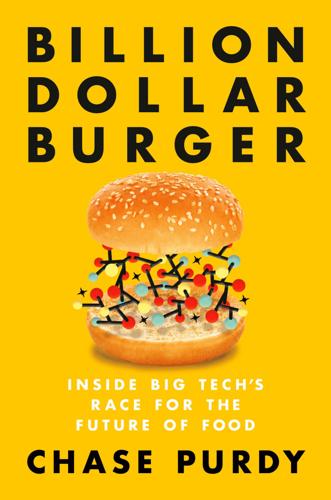
Billion Dollar Burger: Inside Big Tech's Race for the Future of Food
by
Chase Purdy
Published 15 Jun 2020
The firm was founded and is still run by Vinod Khosla, the billionaire cofounder of Sun Microsystems and former partner at storied venture capital firm Kleiner Perkins. Tetrick would later raise more money from Khosla, making it the start-up’s largest investor and major influence over how the company would be run. He also persuaded big names including PayPal and Palantir cofounder Peter Thiel and Salesforce.com founder Marc Benioff to invest. But Tetrick was also garnering interest from abroad. In Hong Kong, tycoons Li Ka-shing and Solina Chau were sprinkling promising upstarts with their considerable capital. The pair spent years overseeing a massive portfolio of industries, drawing money from transportation, real estate, financial services, retail, and energy and utilities businesses.
…
See beef industry; chicken industry; industrial farming “meat paste,” 114, 116 Meester Stegeman BV, 24 Mège-Mouriès, Hippolyte, 158 Memphis Meats, xv, 28, 131–35, 155, 180 author’s taste test, 133–35, 224 cost issue, 29–30 funding, 149 New Harvest presentation, 175–76 Merck & Co., 122–23 methane gas, 6–7 Miller, Rhonda, 130–31 Mission Barns, xv, 40, 155, 188 Mission District (San Francisco), 1, 227 Mission Dolores Park (San Francisco), 95–96 Momofuku Nishi, xv Monsanto, 198 More Than Me, 76 Mosa Meat, xv, 45, 120–30 Moto (Chicago), 218 mouthfeel, 133–34, 203, 234 Mozdziak, Paul, 35–36 Mulhern, Jim, 156 mung beans, xvii, 39, 184, 217, 222, 237 Murdoch, Rupert, 91 muscle cells, 4, 32, 117, 122 Nahmias, Yaakov “Koby,” 118–19 NASA, 25–26 National Association of Egg Farmers, 165 National Catholic Reporter, 144 National Cattlemen’s Beef Association, 15, 156–57, 169–70, 174 National Center for Earth Surface Dynamics, 151 National Milk Producers Federation, 156 National Research Foundation, 184 Nazi Germany, 20–21 NEMO Science Museum (Amsterdam), 56, 58, 59–60 Nestlé, 195–96 Netherlands flood control, 18 Neuromancer, The (Gibson), 17, 18 New Crop Capital, 146, 148 New Harvest, 44, 98–99, 175–76 Newkirk, Ingrid, 26, 151–52 News International phone hacking scandal, 91 New World Group, Inc., 104 New York Times, 26, 89, 192, 197, 234 North American Meat Institute, 176 North Carolina State University, 35 Northern Virginia Community College, 34 Noyes, Andrew, 66, 214, 217–18, 227 nucleotides, 127–28 Oleomargarine Act of 1886, 159, 164, 165 Orchard system, 38–40 organic foods, 215, 216–17 Or ha-Hayyim, 187–88 Orthodox Union, 189–91 Oryx and Crake (Atwood), 17, 18 Ottoman Empire, 187 Oxford University, 14, 45–46 Palantir, 82 Pape, Stuart, 168–69, 170–71, 178 pareve, 189–90 Paris Climate Accord, 61 Paris World Exhibition (1866), 158 Park, Nate, 218–24 partially hydrogenated oils, 167–68 pâté, 3–5, 133 Pax Christi–Spirit of Life Plowshares, 140–44 PayPal, 82 pentobarbital, 96 Perfect Day, 12 PETA (People for the Ethical Treatment of Animals), 26, 88, 145, 151–52, 195 Peter the Great, 55 PHW Group, 166 Pixar Animation Studios, 1 Plant Based Foods Association, 89 political lobbying, 168–73 Pollan, Michael, 192, 214 Polsinelli PC, 168–69 Popular Mechanics, 14 Post, Mark, 24, 26–28, 45, 110, 120–30, 162 author’s visit to Mosa Meat, 120–30 first prototype, xiii–xv, 2–3, 26–27, 122 production considerations, 125–29 Princeton University, 195 privacy rights, 153 processed foods, 42, 131 Procter & Gamble Company, 147 Purdy, Connie, 43, 213–14, 217–27 Quartz, 48, 196 Radnor High School, 70–71, 73 Rajneesh (Bhagwan Shree Rajneesh Osho), 20, 20n Red Cross, 19, 21 regulations. See food regulations Republican Party, 173 Richmond Times-Dispatch, 78 Ripple Foods, 149 Riteco, Paul, 53–56, 60, 62–63 Royal Netherlands East Indies Army, 21 Ruetzler, Hanni, xiv Russia, food yields and climate change, 199 S2G Ventures, 119 Salesforce.com, 82 Santo, Vítor Espírito, 40, 42, 218–19 Sara Lee, 24 Savir, Ido, xv “scaffolding,” 117, 134 scaling issues, xvi, 35–36 Schmidt, Christian, 62 Schonwald, Josh, xiv Schulze, Eric, 175–76 Sculley, Jack, 151 Sebelius, Kathleen, 109 Securities and Exchange Commission (SEC), 106 Selden, Mike, 31, 126 Serious Eats, 96 serum, 37–38 Seymour Johnson Air Force Base, 141–44 Shapiro, Paul, 84 Shojinmeat Project, 192–93 Shorto, Russell, 57–58 Simon, Michele, 89, 97 Singapore, 66–67, 180, 181, 182 Singapore Investment Corporation, 149 Singer, Peter, 195 Slack, 83 slaughterhouses, 137–38, 140 slow food movement, 197 Smithfield Foods, 78 Smithsonian National Air and Space Museum, 142 South Africa, 76 Splendid Table, The, 97 “standard of identity,” 156–57 starter cells, 30–33 stem cells, 4, 31 Stray Dog Capital, 146, 147–48 Strom, Stephanie, 89 Sun Microsystems, 82 SuperMeat, xv, 114, 166 sustainability (sustainable agriculture), 44–47, 197–98 Szeto, Wayne, 48 Technion Institute of Technology, 116 Tel Aviv, 113–14, 118 telomeres, 33 Tencent WE Summit, 179–80 terminology, xi, 160–62, 177, 191–93 Tetrick, Jordan, 95 Tetrick, Josh, xvi–xvii, 9–12, 16, 229–32 appearance of, 10–11 author’s luncheon with, 214–15, 217–27 college education of, 75–76 cost issues, 13, 15, 30, 206, 221–22, 234 coup d’état against, 106–9 critics and naysayers of, 97–98, 99–100, 106 death of dog Jake, 95–96, 98 early career of, 76–79 early life of, 69–72 forging deals with existing agricultural companies, 137–40 founding of JUST, 9, 80–81 friendship with Balk, 69–73, 76–80, 95–96, 98, 231 government regulations and, 169, 174, 178 initial interest in cell-cultured meat, 98–99, 109–10 interest in international markets, 66–67, 152, 180–86 launch in Netherlands, 49–56, 64, 65–66, 135–36, 230–31 management style of, 100–103, 110 Post on, 129–30 at Tencent WE Summit, 179–80 Unilever lawsuit against Just Mayo, 85–90, 97 van Eelen’s original patents, 28, 48, 51, 229–30 vegan mayonnaise and, 38, 81–82, 90–93 Thailand, climate change impact, 183 Thiel, Peter, 82 Toubia, Didier, 114, 116–18 Touro College, 25 trade war, 172–73 traditional foods, 203–7 TransCanada Corporation, 91 transferrin, 37 Trump, Donald, 162, 172–73, 175, 176–77 Trump tariffs, 162, 172–73 Tu, Amy, 119 Tuomisto, Hanna, 45–47 Tyson Foods cell-cultured meats and, 161, 166–67, 176–77, 198, 200 funding Future Meat Technologies, 119 funding and partnership with JUST, 138–39, 149 government regulations and, 176–77 Tzohar, 188–89 UBS Group, 149 Unilever, 85–90, 97, 160 United Nations (UN) Climate Change Summit 2019, 11, 149–50 Food and Agriculture Organization report, 6, 199 University of Helsinki, 45 University of Michigan Law School, 75–76 US Cattlemen’s Association, 15, 154–56, 170 USDA (United States Department of Agriculture) cell-cultured meat and, 130–31 cell-cultured meat and beef industry, 154–55, 168–78 conflict with FDA, 173–76, 177 egg industry and Just Mayo, 91–92 farm consolidation, 7–8 political lobbying of, 168–74, 176–77 Utrecht University, 124 Valeti, Uma, xv, 28, 131–35, 175, 180 van Eelen, Caroline, 19, 20 van Eelen, Gerard, 19–20, 21 van Eelen, Ira, 19–20, 27, 48, 162, 229–31 launch of JUST in Netherlands, 52–53, 55, 57–65 van Eelen, Maria, 20 van Eelen, Willem, 44–45, 122, 229–30 background of, 18–22 culturing meat, 22–27, 160 death of, 27–28 patents for in vitro meat, 25, 27–28, 48, 51, 229–30 van Mensvoort, Koert, 59–60, 62–63 “vat stuff,” 17 vegan activism, 141–49 Big Money and, 148–49 vegan egg replacements, 9, 12, 38, 39, 81–82, 83.

Cashing Out: Win the Wealth Game by Walking Away
by
Julien Saunders
and
Kiersten Saunders
Published 13 Jun 2022
Or just because you’re not an accountant by trade doesn’t mean we won’t benefit from a walk-through of how you use Excel to create budgets. For example, one of our favorite talks was by Bradley Rice at CampFI, where he explained how his Salesforce expertise allows him to earn six figures a year working part time. We loved it because it was another reminder of how much our income options can improve once we let go of the idea of lifetime employment. Now he spends his days teaching others how they can become Salesforce professionals and change the trajectory of their earning at talentstacker.com. While the individual emotional benefits of finding a supportive financial community are significant, the most valuable benefit is even simpler.

Machine, Platform, Crowd: Harnessing Our Digital Future
by
Andrew McAfee
and
Erik Brynjolfsson
Published 26 Jun 2017
p=28894. 84 “Every time I fire a linguist”: Julia Hirschberg, “ ‘Every Time I Fire a Linguist, My Performance Goes Up,’ and Other Myths of the Statistical Natural Language Processing Revolution” (speech, 15th National Conference on Artificial Intelligence, Madison, WI, July 29, 1998). 84 “AI-first world”: Julie Bort, “Salesforce CEO Marc Benioff Just Made a Bold Prediction about the Future of Tech,” Business Insider, May 18, 2016, http://www.businessinsider.com/salesforce-ceo-i-see-an-ai-first-world-2016-5. 85 “Many businesses still make important decisions”: Marc Benioff, “On the Cusp of an AI Revolution,” Project Syndicate, September 13, 2016, https://www.project-syndicate.org/commentary/artificial-intelligence-revolution-by-marc-benioff-2016-09.
…
He observed in the mid-1980s, “Every time I fire a linguist, the performance of the speech recognizer goes up.” By the mid-2010s, the most successful group working on problems related to speech transcriptions had zero linguists, and their results surprised the world. We are very confident that more such surprises are in store. We agree with Salesforce CEO and technology industry pioneer Marc Benioff that we’re moving into what he calls an “AI-first world.” Like us, he sees countless opportunities to replace decision making by HiPPOs with something that will work much better. As he writes, “Many businesses still make important decisions based on instinct instead of information. . . .

Valley of Genius: The Uncensored History of Silicon Valley (As Told by the Hackers, Founders, and Freaks Who Made It Boom)
by
Adam Fisher
Published 9 Jul 2018
Alvy Ray Smith: In San Francisco, I’ve never seen skyscrapers go up so fast. It’s completely changing the nature of San Francisco! John Markoff: The Salesforce Tower—this vertical campus that they are building—has surpassed the Transamerica building, surpassed the Bank of America Center. It dominates the skyline in San Francisco in a really overwhelming way. That’s probably the strongest statement about how the Valley has changed. It’s certainly emblematic of a new era. We’re getting these billion-dollar corporate statement headquarters now. It’s not just Salesforce. It’s Facebook, Apple, Nvidia—even Google. Marc Porat: Eventually one could see this Silicon Valley thing spreading up to Mill Valley, across to Richmond, down to Oakland and Berkeley, and then down through Fremont and Hayward and then back down to San Jose.
…
On the side, he created a free alternative to the software that Netscape was planning to sell. This project morphed into the open-source movement. Today Behlendorf is directing the open-source Hyperledger project, which is devoted to perfecting what may be the next revolutionary data-storage technology. Marc Benioff is the cofounder and current CEO of Salesforce.com. The Salesforce Tower is the tallest skyscraper in San Francisco. Patty Beron was the “it” girl of San Francisco’s dot-com bubble. She always knew where the party was, and you did, too, if you checked her website, SFGirl.com. Nick Bilton is the author of Hatching Twitter, a journalistic deep dive into the company and its turmoil that reads like a thriller.
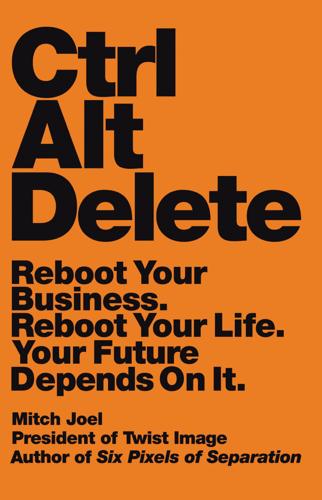
Ctrl Alt Delete: Reboot Your Business. Reboot Your Life. Your Future Depends on It.
by
Mitch Joel
Published 20 May 2013
You can sing the same song when it comes to the other critical components that make up a strong marketing mix and a hearty brand ecosystem, but it’s all for nothing if it doesn’t get consumers coming back for more (and telling everyone they know about it). Just ask hip brands like UNIQLO, Apple, Salesforce.com, or Trader Joe’s. MarketingCharts published a news item titled “Facebook Fan Size May Not Translate to Relationship Quality” (January 10, 2012): Fan volume does not appear to translate to relationship quality, though, as only 2 of the top 5 brands by fan volume, and less than half of the top 20, appear on the Fathom Research Relationship Quality Index (RQI) as of January 10, 2012.
…
They were always in control (of the artists, of the music’s distribution channel, of what the fans would hear), and they took that power on with the kind of pretentious attitude that is similar to how kings used to rule their empires. When the C-suite makes the call, everything changes. Don’t believe me? Just ask Tony Hsieh over at Zappos, Richard Branson at Virgin, or Marc Benioff at Salesforce.com. These business leaders (and there are many more) didn’t sell social business through their organizations as a marketing and communications initiative. They sold it through as customer service. We’re not talking about customer service in terms of the call center, we’re talking about the core of customer service: Why are we in business?
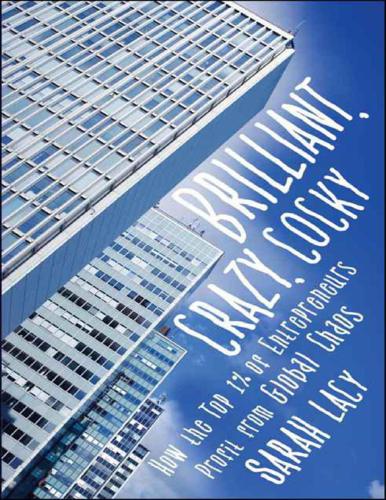
Brilliant, Crazy, Cocky: How the Top 1% of Entrepreneurs Profit From Global Chaos
by
Sarah Lacy
Published 6 Jan 2011
But if Microsoft’s dominance hasn’t been chal enged, it is slowly but surely eroding in terms of influence. On platforms like the Web and mobile devices, the war isn’t between Microsoft and anyone, it’s between Google and Apple. Even with its dominant products, percentage points of market share here or there are increasingly going to competitors, be they Google, Salesforce.com, or Firefox. It’s not the cash Microsoft is stil raking in that matters, it’s that shift in momentum. Customers don’t get excited by a Microsoft launch anymore, many top employees have long since left to work for companies like Google and Facebook, and the stock is essential y where it was 10 years ago.
…
PricewaterhouseCoopers Protestant work ethic QQ messaging Rajendran, Raj Recording Industry Association of America redBus.in Reid, Michael Reliance Research in Motion Revolutionary Armed Forces of Columbia (FARC) Risk taking: decline of exemplars of U.S. history of Robertson Stephens investments Robinson, Richard Ross, Alec Rwanda: business opportunities economic issues entrepreneurship in genocide legacy Jean de Dieu Kagabo story Sacks, David SAIF Salesforce.com Sama, Phanindra Santander Bank Santosa, Hartanto SAP Sarbanes-Oxley Act SBY. See Yudhoyono, Susilo Bambang “SBY” Securities and Exchange Commission (SEC) SEG electronics Senor, Dan Sequoia Capital Service economy, India as Shanda Interactive Shenzhen Daily Sherman, So Sheth, Beerud Shi Yuzhu Silicon Val ey: as entrepreneurship paragon immigrants’ success in post-crash as venture capital mecca Silva, Luiz Inácio Lula da Sina.com Singer, Saul Sinha, Abhishek SinoFriends Six DEE Telecom Solutions Skapinker, Michael Skype Slide Smal Business Administration (SBA) SMS GupShup SMSOne Social networking.
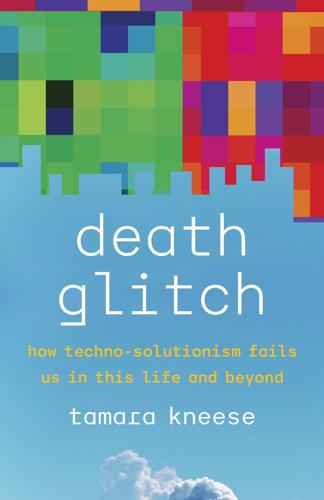
Death Glitch: How Techno-Solutionism Fails Us in This Life and Beyond
by
Tamara Kneese
Published 14 Aug 2023
Platform temporality is intrinsically tied to established power structures. San Francisco’s geography reflects the new center of power, as tech companies set up offices and headquarters adjacent to the older financial district, the home of the city’s legacy institutions. Offices for Twitter, Google, Square, and Salesforce dominate the landscape. A new transit hub was named for Salesforce, which owns San Francisco’s tallest skyscraper, and banners advertising Zuckerberg Hospital are everywhere in the city, emphasizing the importance of care. This is a different kind of legacy than leaving your digital files to a spouse, and it seems more aligned with the legacy institutions and robber barons of past centuries, who also erected grand, lasting structures in their names.
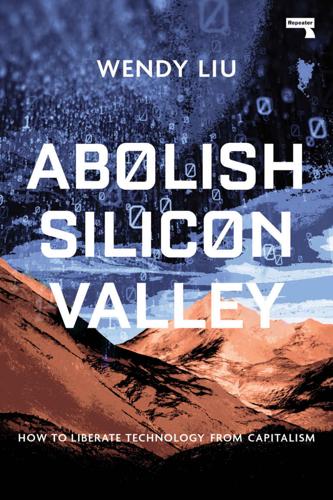
Abolish Silicon Valley: How to Liberate Technology From Capitalism
by
Wendy Liu
Published 22 Mar 2020
And someone whose company recently got acquired by Salesforce — another one of Nick’s successful LinkedIn connections — stopped by the office one evening to tell us we should try to get a contract with them too, as they were in the process of negotiating with one of our competitors. That would be punching way above our weight, and it would be a major commitment, but it would mean money and a great customer name for our pitch deck. We weighed it up with all the gravity of a decision between equals. The possibility that our technology might be good enough to get us a contract with a company as successful as Salesforce was enough to raise our spirits.
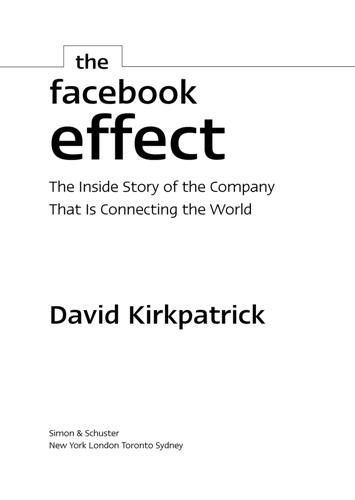
The Facebook Effect
by
David Kirkpatrick
Published 19 Nov 2010
Dave Morin got the job of “platform marketing”—working with potential developers. (In his previous job at Apple, already a Facebook partisan, he had sought futilely to get Facebook built into the Mac OS.) Morin and Fetterman visited companies that had successfully created platforms, including eBay, Apple, and Salesforce.com. But despite all the external models, the team kept harking back to one internal reference point. “We used photos as the model the entire time,” says Morin. “We just kept looking at it, asking, ‘How do we enable every application to do what photos does?’” Each profile page included a box for photo albums.
…
Microsoft, the world’s leading business software company and a big Facebook investor and partner, has periodically campaigned to get Facebook to enable a version of its service to work in conjunction with Microsoft Office. That idea has consistently been met with yawns, to the consternation of some at Microsoft. Now Salesforce.com, a smaller but agile competitor of Microsoft, has launched a social network for businesses called Chatter. Companies of many types are beginning to experiment with that and similar products. Facebook itself is both a beneficiary and a victim of the dynamics of the gift economy its CEO is so partial to.
…
, 232 Rojas, Clara, 1–2 Rojas, Emmanuel, 1–2 Romania, 16 Rose, Dan, 178, 239, 244, 250–51, 257, 260, 262, 329 Rosensweig, Dan, 161, 182–83, 186, 252 Rotenberg, Marc, 201, 208–9, 233 Roth, Michael, 177 Rothenberg, Randall, 264 Rothschild, Jeff, 130, 132–33, 137–138, 146, 147, 156, 322 RSS (Really Simple Syndication), 194 Russell, Bertrand, 49 Russia, 276, 282 Ryze, 70, 73 Salesforce.com, 220, 301 Samwer brothers, 246, 256 Sandberg, Sheryl, 207–8, 210, 266, 272, 273, 307, 318, 327 ad meetings run by, 256–60, 270 Facebook’s hiring of, 251–54 on rating systems, 255 Sanghvi, Ruchi, 132, 137, 189, 191 Sapient, 69 Saudi Arabia, 279, 291, 295 “Save Darfur,” 192 Saverin, Eduardo, 42, 43, 44, 45, 47, 52, 64, 129, 320 ads managed by, 37–38, 42, 60, 61–62, 103 in disputes with Facebook team, 59–63, 64, 65, 89, 126 Facebook incorporated by, 41, 62 Facebook ownership of, 62, 126, 322 at Frisson party, 103 investments by, 30, 38, 42, 60 Sawyers, John, 205 Schlender, Brent, 206 Schlesinger, David, 300 Schmidt, Eric, 238, 326, 327 Schoen, Kent, 257 Schrage, Elliot, 327 Schultink, Erik, 46 Scient, 69 Scott, Adrian, 70, 73 Scrabble, 228, 229 Scrabulous, 228–29 Sears, 67, 272 Secret Intelligence Service, 205 Semel, Terry, 169, 182, 183, 186, 195–96, 252 Sequoia Capital, 104–5 Serena Software, 299, 300 Series C, 170, 236, 245 Series D, 245, 246 Seward, Zachary, 295 Singapore, 275 Sittig, Aaron, 56, 110, 144–45, 154, 155, 315 sixdegrees.com, 67–69, 70, 71, 73–74, 76, 85, 87, 228 “Six Degrees of Harry Lewis,” 26 Skittles, 272 Smile State, 176 Smith, Adam, 78 Smith, Adam (economist), 223 Smith, Justin, 232, 262 Smith, Megan, 239 Smith, Peter, 268 SMS (short messages), 50 Social Gaming Network, 230 social graph, 157, 217 Socializr, 71 SocialNet, 72 social networking, 46–47, 66–68, 70, 79–80, 85, 325 Accel’s investments in, 115 patent for, 47, 69, 73–74, 87, 228 as social production, 265 see also specific sites Softbank Venture Capital, 282 software, 216, 217 Sony, 265 Sony Pictures, 300 South Africa, 290, 291 South Florida Sun-Sentinel, 289 Southwestern University, 101 Spain, 16, 274, 276, 278, 282, 283 spam, 231 Spoke, 46 SpongeBob SquarePants Movie, The, 102 Sprite, 177 Sri Lanka, 286 Stanford Daily, 35, 55, 103 Stanford University, 35, 36, 37, 46, 54–55, 77–78, 116 Starbucks, 272 status updates, 12, 30, 325–26 Stealing MySpace (Angwin), 74, 76, 153 Stefani, Gwen, 141, 175, 247 Stellenbosch, South Africa, 290 Sternberg, Seth, 110 Stiller, Ben, 57 Stone Yamashita, 224 “Students Against Facebook news feed,” 189–90, 192, 214 studiVZ, 171 Summers, Lawrence, 90, 253, 307 Summers, Nick, 92 “surround strategy,” 101 Survivors of the Purple Tunnel of Doom, 294 Swann, Kimberley, 211 Symantec security, 213 Synapse, 25, 26, 37, 98 Sze, David, 319 Taiwan, 16, 283 Tapscott, Don, 265 Taylor, Robert W., 66 TechCrunch, 226, 304, 306 TechDirt blog, 245 Tegic, 187 Tequila, Tila, 76 terms of service, 201, 307–10, 324 terrorism, 290–91 Texas, University of, at Arlington, 101 Texas A&M, 101 Texas HoldEm Poker, 228, 233 Thailand, 16 Thefacebook.com, see Facebook TheGlobe.com, 67 Thiel, Peter, 98, 125, 147, 148, 151, 169, 184, 236, 246, 326, 328–29 Facebook investment and ownership of, 9–10, 87–90, 94, 95, 96, 112, 113, 170, 321, 322 Frisson opened by, 103 growth emphasized by, 271 open registration and, 196 PayPal founded by, 9, 87–88 Thompson, Clive, 204 Thomson Reuters, 300 Tiananmen Square, 282 Tickle, 72, 115 Time Inc., 187, 209 Time Warner, 164, 187 Tim Hortons, 263–64 Tipping Point, The (Gladwell), 103 Tocqueville, Alexis de, 223 Top Gun, 57, 98 “trance,” 93 Tribe.net, 46–47, 72, 73, 75, 107, 228 Tripod, 67 Trounson, Rebecca, 110 Troy, 97 TRUSTe, 209 Turkey, 16, 276, 281, 290–91 TweetDeck, 305, 315 Twitter, 6, 8, 203, 289, 294, 296, 297, 304–5, 310, 311–12, 317, 326, 329, 333 Understanding Media: The Extension of Man (McLuhan), 332 “unfriend,” 334 Unilever, 272 United Arab Emirates, 279 United Kingdom, 16, 275, 291 Universal Face Book, 79 Uribe, Alvaro, 1–2, 5 Usenet, 66 UUnet, 114 Van Natta, Owen, 161, 164, 168, 170, 178–79, 182, 238, 239, 251, 322 in departure from Facebook, 268 investors and, 236 in meeting with Microsoft, 240–241, 242, 243, 244 at MySpace, 268, 281 open registration and, 196 on platform strategy, 217–18 Yahoo’s negotiations with, 183, 184, 186 VentureBeat blog, 166 venture capitalists, 41, 46, 48, 53, 70, 87–88, 95–96, 104–5, 109, 112, 113–27, 170, 229, 236, 245, 246 Venuto, Steve, 88, 99, 146, 147 Veritas, 114, 130 Viacom, 113, 125, 159–60, 162, 164, 166–71, 178, 179, 182, 186 Victoria’s Secret, 141 Vietnam, 16 Vigil, Hank, 242 Virgil, 138 virtual community, 67 Visa, 264 Visual Bookshelf, 231 Vitamin Water, 264–65 VKontakte, 284–85 Vogelstein, Fred, 325 wall, 3, 93, 206, 288, 303, 310 Wall Street Journal, 245 Wal-Mart, 115, 176 Warhol, Andy, 206 Warner Bros.
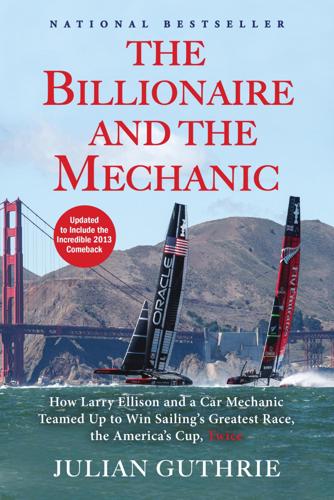
The Billionaire and the Mechanic: How Larry Ellison and a Car Mechanic Teamed Up to Win Sailing's Greatest Race, the Americas Cup, Twice
by
Julian Guthrie
Published 31 Mar 2014
Larry responded that he “could not have been late to the cloud” because he “invented the cloud” in 1998, when he founded NetSuite, which offered the cloud-based Software-as-a-Service (SAAS) for business management. NetSuite was started six months before Salesforce.com was founded in 1999 by Marc Benioff, a former Oracle employee. NetSuite was the second-biggest cloud company in the world, trailing Salesforce, but Larry vowed, “In a few years Oracle will be number one in the cloud.” He also noted that “Salesforce.com has been around for more than ten years, but didn’t call themselves a cloud computing company until six months ago. Now they claim to be ‘the force behind the cloud.’”

The Power Law: Venture Capital and the Making of the New Future
by
Sebastian Mallaby
Published 1 Feb 2022
It proved that software companies could flourish even against the background of the dot-com bust. It showed that digital progress could continue at a dazzling pace, even as the rest of the country was reeling from the shock of the 2001 terrorist attacks and an accompanying recession. Around the time of Google’s stock market debut, another software star called Salesforce went public, and in 2005 the internet-phone startup Skype made its venture backers rich when eBay bought it for $3.1 billion. But as animal spirits roared back to life, the venture industry woke up to the echoes and extensions of the Brin-Page challenge. Young entrepreneurs no longer deferred to experienced investors.
…
The small tongue of land running from San Jose to San Francisco was home to three of the world’s five most valuable companies: Apple, Google, and Facebook. It boasted some of the most exciting trailblazers: Airbnb, Tesla, and Uber. It was routinely compared to Florence during the Renaissance: a money magnet, to be sure, but also a multinational melting pot and a hub of ingenuity.[2] The cloud software giant Salesforce erected a cloud-scraping glass tower in downtown San Francisco, and real estate prices soared so much that startups could barely afford the proverbial garage. The resulting inequality was staggering, and the traffic recalled Bangkok, thanks not least to the hulking double-decker buses ferrying coders from the city to the tech campuses near Palo Alto.
…
Given the history of market bubbles, this claim is unconvincing. BACK TO NOTE REFERENCE 61 Google IPO Prospectus, Aug. 18, 2004, www.sec.gov/Archives/edgar/data/1288776/000119312504143377/d424b4.htm. Again, it should be noted that public tech companies including Netflix, Amazon, Salesforce, and Tesla made similar pronouncements and were rewarded with buoyant share prices. There is little evidence that being unlisted is a reliable prerequisite for being farsighted. The advantages of being unlisted lie elsewhere: lower regulatory costs, clearer oversight of managers (provided that boards are vigilant), and a greater ability to surprise competitors with innovations that are developed under the radar.
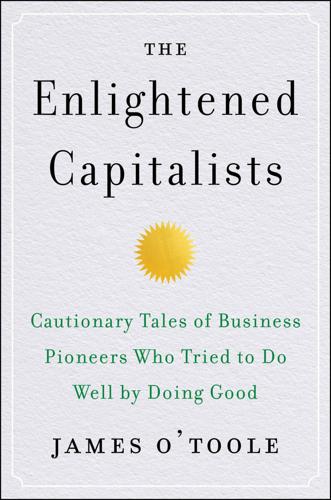
The Enlightened Capitalists
by
James O'Toole
Published 29 Dec 2018
Trend One: An Emerging Generation of Enlightened and Effective Business Leaders My heart is drawn to evidence that a new generation of enlightened capitalists has emerged in recent years—a generation of men and women as committed to social engagement as their forbearers, but more sophisticated and skilled, and thus more likely to be able to create sustainable legacies. Among the contemporary chief executives often mentioned in this regard are Starbucks’ Howard Schultz, Salesforce’s Marc Benioff, Apple’s Tim Cook, PepsiCo’s Indra Nooyi, Campbell Soup’s Denise Morrison, Merck’s Kenneth Frazier, and, especially, Unilever’s Paul Polman and Whole Foods’ John Mackey. Because they all lead large, publicly traded corporations, optimists posit that those CEOs are on the verge of finally proving that shareholder capitalism and enlightened business practices are fully compatible.
…
Significantly, some of the strongest pressure on executives to adopt socially responsible programs comes from employees who desire to work for companies that do good, and want to be seen by their friends and families as working for ethical and community-spirited organizations—especially ones that don’t foul the air they breathe and water they drink. That is why Salesforce and other technology companies are increasingly using community outreach programs as recruiting tools.38 In all, the odds are good that corporations will continue to make environmental programs and employee volunteering main thrusts of their social engagement in the future. Executive pay. As the gap between the richest members of society and the average citizen has widened in most Western economies, the spread between CEO compensation and the median pay of employees has expanded to an even greater degree.
…
(Unilever) and, 58–59 Lincoln Electric and, 94, 98, 101–3 Marks & Spencer and, 212, 221 SWA and, 290 Progressive Era, 160 Propst, Robert, 228 Protestant Federal Council of Churches, Social Creed of 1908, 155–56 Prudential, 419 Publix supermarket chain, 406 Pullman, George, 77, 81 Pure Food and Drugs Act (1906), 146 Quadragesimo anno: “On the Reconstruction of the Social Order” (Pius XI), 156 Quakernomics: An Ethical Capitalism (King), 84 Quakers, 17 Haverford and John Whitehead, 329–30 Owen’s business practices and, 84 Rowntree and Cadbury families, 77, 84 Radica, 285–86 Raiman, Jacques, 286 Ramblers Way, 372 Rauch, Richard, 238 Rayner, Derek, 220 RCA Corporation, 311 Reagan, Ronald, 376 realism Bradshaw and, 309–10 Credo Challenge meeting and, 167–69 expectations of investors and corporate behavior, 444 history’s support of, xliii public as uninterested in corporate social responsibility, 466–67 REBBL, 458 Recology, 415–16 Regeneron Pharmaceuticals, 341 regulations, 454 diesel engines and EPA rules, 318 European countries and, xv Johnson on, 155 Miller and the environment, 317 in the UK, changes proposed, xv REI, 416 Reid, Grant, 399 Rerum Novarum: “On the Condition of the Working Classes” (Leo XIII), 155–56 Richardson, John Grubb, 84 robber barons, 31, 81 Robert Wood Johnson Foundation, 162 Rochdale Society of Equitable Pioneers, 415 Rochester, N.Y., 328 Rockefeller, John D., xxvii–xxviii, xxxiii, 81 image of Standard Oil and, xxvii late-life philanthropy of, xxvii–xxviii, xxxvii Warden’s proposals for fairer treatment of suppliers, customers, and employees, xxvii Rockefeller, John D., Jr., xxvii Rockefeller, Nelson, 314 Roddick, Anita, xi, 342–60, 368, 372–73, 376, 388, 394, 404, 426, 427, 428, 433, 436, 464 background and personal life, 343–46 Body and Soul, 347, 355 Body Shop and, 346–59 Brazil’s rain forest and, 352 business mistake of, 348 business philosophy, 349–50, 353 as capitalist, 351 commitment to an ethical business, 347–48 criticism of stock speculators, 350–51 criticism of the cosmetics industry, 350 critics of, 354–57 death of, 359 effort to ban all animal testing in cosmetics, 349 on enlightened capitalism, 357 environmental and human rights initiatives, 349 influence of Semler, 353 named Dame Commander of the British Empire, 343 Nichols’s criticism countered by, 356 sale of Body Shop to L’Oréal, 357–59, 395, 403, 427, 436, 437 Social Venture Network and, 349, 451 Roddick, Gordon, 345–46, 347, 348, 351 Rohde, Gilbert, 228 Roosevelt, Franklin Delano (FDR) Bob Johnson and, 149, 151 Four Freedoms, 154 Lincoln’s system as alternative to social welfare, 111, 114 New Deal, 111, 147 Roosevelt, Theodore, xxxviii, 83 on business leaders and doing good, xliii criticism of Carnegie, xxxiii, 464 environmental issues, 157 “New Nationalism,” 157 Square Deal, 154 Rose, Stuart, 221–22 Rosenwald, Julius, 330, 431 Rothman, Howard, Companies with a Conscience, 497n29 Round Table Pizza, 406 Rousseau, Jean-Jacques, 9, 430 The Social Contract, 9 Rowntree, Joseph, 77, 84 chocolate factory in New Earswick, 84 education of workers and, 84 employee benefits and, 84 living conditions of workers and, 84 working conditions and, 84 Royal Bank of Scotland, 133 Rykens, Paul, 65 S. C. Johnson, 399 Saarinen, Eero, 315 Sachs, Sam, 330 SAIC (Science Applications International), 117n, 413–14, 426, 435 Salesforce, 444, 469 Salt, Titus, 55, 56 Saltaire, West Yorkshire, UK, 55–56 Sams, Earl Corder, 35–36, 40, 41, 42, 45, 46, 49 Sana, 418 Scanlon, Joe, 228–29 Scanlon plan, 228–29, 234, 235, 471 Schacht, Henry, 318 Schultz, Howard, 444, 463, 464 Schumacher, E. F., 134 “scientific management” system, 81, 106–7 Scott, Mary, Companies with a Conscience, 497n29 Seabra, Luiz, 359 Seagate, 260 Sears, Roebuck and Company, 37, 47, 48, 49, 112, 211, 330 Sellars, Richard, 163, 167, 170 Semler, Ricardo, 353 “servant leadership,” 136–37, 161, 233, 317–18 Shakespeare, William, Julius Caesar, xi Shamrock Holdings, 326 Shaw, George Bernard, 68–70 Major Barbara, 69–70 Shaw, Kathryn, 271 Shultz, George, 333 Sieff, David, 220 Sieff, Edward, 217 Sieff, Ephraim, 208 Sieff, Israel, 209, 214, 431 as Baron, 217 economic philosophy, 209–10 employee lunchrooms and, 212 friendship with Simon Marks, 208, 209 institutionalization of practices, 435 marriage and family, 209 paternalism and, 213 retirement of, 217 Weizmann’s influence on, 210, 211, 428 Sieff, Marcus, 212, 214, 215, 399 business practices, 218–19 CEOs reject his practices, 219 Don’t Ask the Price, 217 The Ethics of the Fathers, 218 as future Marks & Spencer CEO, 215 as Lord Sieff of Brimpton, 217 as Marks & Spencer CEO, 217–19 personality of, 218–19 socializing with the rich and famous, 217–18 social responsibility and, 218 wealth and upbringing, 217 Weizmann’s influence on, 218 Sieff, Michael, 217 Sieff, Rebecca Marks, 209 Siegel, Sam, 273, 275 Sierra Club, 307 “single tax” theory, 115 sin investing, 460 Sisodia, Rajendra, 454–55 60 Minutes (TV show), 171–72 Skoll World Forum, 452 Smith, Adam, 154 business as human commonality, xxi case against business idealism, xxxiv free markets and, 21 invisible hand, 428 opposition to corporate do-goodism, xxxvii The Wealth of Nations, xxxiv, 7 Smith, Liz, 329 Snavely, Mattie, 73, 74, 75 Social Contract, The (Rousseau), 9 social Darwinism, xxxi, 155 Social Enterprise Business Centre, 457 social enterprise movement, 404 social entrepreneurship, 456–59 social investment funds, 459 socialism, 7, 21, 59, 432 Lincoln’s system as alternative to, 97, 111, 114 social responsibility, xi, xii, xv, xvi, xvii, xx, 497n29 Arco and, 307–9 Ben & Jerry’s and, 383, 387–88, 393–94, 497n29 CDC and, 249, 254, 261 changing investor attitudes and, 459–62 company failure, relationship of, 426–27 consortia of enlightened capitalists and, 451–56 consumerist behavior overriding social conscience, 467 of corporate capitalism, xxxviii–xl critics of, 424 Davos 2018 and, xiv, 461 Drucker on, 431 ethical compasses and, xx Friedman on, 439, 507n13 future prospects for, 442–72 global in scope, xxxix–xl Herman Miller Company and, 238 Hershey Chocolate Company and, 89 as job of government not business, xxxvi John Lewis Partnership and, 132 Johnson and, 150–51, 157–58 large corporations rejection of, 425 Levi Strauss and, 178, 184, 186–89, 202 Levi Strauss’s global sourcing guidelines, 202–3, 204 Marks & Spencer and, 210, 213, 216, 218, 222 MBA programs and, 424–25 no financial gain from, 429 opposition to corporate do-goodism, xxxvi, xxxvii, xli, 462 Patagonia and, 400–403, 497n29 paternalism and, xxxvii, xlii Penney and, 39 Polman as outspoken advocate, 66–68 profit vs. virtue and, xl–xli promotion of diversity and, xxxvi proponents of corporate do-goodism, xxxviii–xl public demand for, 463–72 questions business leaders need to ask, xli–xliii Roddick, the Body Shop, and, 349–54 SWA and, 295–97 Tom’s of Maine and, 372 Unilever and, 65–68, 393–94, 444–45 Weizmann and, 210 Social Venture Network, 349, 451 sole proprietorship, 396 Solheim, Jostein, 393 Sony, 325 Soul of a Business, The (Chappell), 361–62, 367–68 Southwest Airlines (SWA), 117n, 426 big airlines oppose creation of, 288 business model, 289, 296 culture committee, 291–93 customer service and, 293–94 employee focus of company, 289–93 employee volunteers, 296 environmental issues, 295–97 exemplary practices, 293–94 FDA fine, 294 Fortune’s Most Admired Corporations list, 294 future of, 297 hiring women and people of color, 292–93 Kelleher as CEO, 288–94 Kelly as CEO, 292, 295, 296–97 Kelly as CFO, 293 management and employee involvement, 291–93 profitability and, 289, 296 social responsibility and, 295–97 Southwest Airlines One Report, 295–96 stock ownership plan, 290, 406 stock price, 294 wages, 290 Spencer, Herbert, xxxi, 155 Spencer, Thomas, Jr., 209 Spencer, Thomas, Sr., 208–9 partnership with Marks, 208 retirement, 208–9 Sperry Rand, 244 Springfield, Mo., 409 SRC Holdings, 407–9, 426, 476 business education at, 407 community relations, 409 cost control at, 407–8 employee ownership, 407 employees and, 407–9 number of employees, 409 “open-book management,” 407 share price, 409 Springfield Re and, 407, 408, 409, 410 Stack, Jack, 395, 407–9, 411, 428, 451 “exit money” and, 409 The Great Game of Business, 407 leadership philosophy of, 407 “open-book management,” 407 stakeholder benefits, xii Standard Oil, xxvii Starbucks, 425, 444, 464, 467 acquisition of La Boulange, 448 State Street Global Advisors, 470 Stern, David, 176, 177 Stern, Sigmund, 178–79, 180 Stevens Aviation, 290 stock exchanges, 46–47 Stonyfield Farms, 454–55 Stout, Lynn, 438, 458 Strauss, Levi, 176–79, 495n1 death and estate of, 178 heirs of, 177, 395 philanthropy of, 178 Sulzberger family, 399 Sumner, William Graham, 155 Sunset Scavengers, 415–16 Syntegra, 260 Tawney, R.
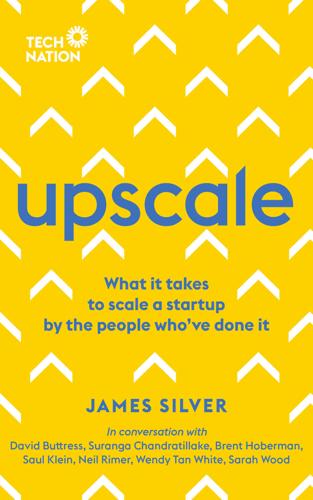
Upscale: What It Takes to Scale a Startup. By the People Who've Done It.
by
James Silver
Published 15 Nov 2018
But in such instances, Sohoni argues, it becomes even more about ‘ease of use’. ‘Are you able to get better employee engagement? What’s the service or product of that brand that allows you to get championship of it? It’s interesting that Salesforce, for example, isn’t a brand people feel emotional about, but there’s clearly incredible utility to it. Some of our companies have come to us saying: “If I’m trying to sell this, my customers are requiring me to have these Salesforce integrations.” ‘So it’s become that foundational tool within startups and enterprises. It’s so ingrained - and we talk a lot about that because the Holy Grail for brands is: “How do you become irreplaceable?

Brave New Work: Are You Ready to Reinvent Your Organization?
by
Aaron Dignan
Published 1 Feb 2019
Organizations aren’t just overloaded; they’re addicted. No daylight exists on their calendars, just back-to-back meetings as far as the eye can see. Their every need—for information, for decisions, for feedback—seems to call for a meeting. They hate them, but they can’t quit, because there’s no other way to get things done. Salesforce executive Vala Afshar masterfully highlighted the irony of our meeting culture when he tweeted, “You likely have to get management approval for a $500 expense . . . but you can call a 1 hour meeting with 20 people and no one notices.” Meanwhile, new tools have emerged that allow the more technologically savvy among us to communicate and coordinate across space and time.
…
L. and Associates, 16, 69–70, 79, 142 Gorilla Glass, 103 Gould, Stephen Jay, 103 governance meetings, 122 governing constraints, 46 Gower, Bob, 222 Graham, Benjamin, 30 Graham, Paul, 230 Grant, Adam, 142 gratitude, 148 Gray, Dave, 196 G Suite, 135 Haier, 76, 80 Hamel, Gary, 26 Hammond, Robert, 188 Handelsbanken, 13, 94, 227–28 Hansson, David Heinemeier, 68–69 Harrison, Scott, 224–25 Hawk, Tony, 259 healthcare industry, 34–35 Buurtzorg in, 13, 34–36, 38, 79, 105, 144, 218 Heath, Chip and Dan, 212 Heppner, Frank, 46 Herzberg, Frederick, 165 hierarchies, 77–78, 258 High Line, 188 Hillaker, Harry, 88 Hillman, James, 36 hiring, 79, 142–43 Hoffman, Reid, 88 Holacracy, 71, 122, 202 HolacracyOne, 89 Human Side of Enterprise, The (McGregor), 39–41 Husney, Jordan, 89 Huxley, Aldous, 22 hygiene factors, 165, 173 ICBD (Intentions, Concerns, Borders, and Dreams), 222–23 IDEO, 142–43 incentive compensation, 171–72 Indie.vc, 253–54 influence, 78 information, 14, 54, 127–37 information symmetry, 130, 134, 170, 190 initial public offerings (IPOs), 254, 255 Innosight, 29 innovation, 14, 54, 102–9, 188 innovator’s dilemma, 91 integration vs. functions, 79–80 Integrative Decision Making (IDM), 71–73 internet, 84, 131 Intrinsic Motivation (Deci), 42 investment, 251–55 James, LeBron, 143, 172 Jamieson, Alex, 222 Jobs, Steve, 103 job satisfaction, 165 Johnson, Steven, 189 Joint Special Operations Command (JSOC), 128–29, 130 Kahneman, Daniel, 165 Kanigel, Robert, 22 Kegan, Robert, 152–53 knee-jerk reactions, 28 Kotter, John, 186 KPMG, 32 Kroger, 59 Kroghrud, Ivar, 147 labor productivity growth, 33–34 Lahey, Lisa, 152–53 Laloux, Frederic, 105 language, 217 Lasseter, John, 191 lattice organizations, 142 leader, role of, 223–28 leadership gap, 166 Leading Change (Kotter), 186 Lean Change Management (Little), 201 Lean Startup method, 107–8 learning, 152, 153, 156–57, 160, 162, 200 by doing, 230–31 faster, 88 games and activities for, 200 retrospectives and, 123–24 validated, 108 Legacy Organizations, 5, 21, 38, 47, 59, 237, 258 authority in, 66 decision making in, 69 information in, 129, 131 measurement in, 60 membership in, 140 operating systems of, 12 performance targets and, 97 strategy in, 86 liminal space, 196, 197, 201 Little, Jason, 201 Little Book of Beyond Budgeting, The (Morlidge), 96–97 locus of control, 154, 155 Long-Term Stock Exchange (LTSE), 254–55 looping, 193, 201–16, 229, 236 and conducting experiments, 213–16 and proposing practices, 207–12 and sensing tensions, 202–6 Lyft, 169 Machiavelli, Niccolò, 248 Made to Stick (Heath and Heath), 212 management, 26–27, 81 innovations in, 20 open-book, 130 org charts for, 7–9, 24, 77, 78, 81, 114, 189 market pay, 167–68 Marquet, David, 67 Maslow, Abraham, 38 Masters of Scale, 88 mastery, 14, 54, 151–62 maturity, 154, 155–56, 255–56 McChrystal, Stanley, 128–29, 130, 197 McGregor, Douglas, 39–41, 158 McKeown, Greg, 62 McKinsey, James O., 24–25, 95 McKinsey & Company, 24, 32, 143, 187 Medium, 84–85, 86 meetings, 3–4, 6, 119 moratorium on, 123 in OS Canvas, 14, 54, 118–26 structures in, 124–25 membership, 14, 54, 138–50 mergers and acquisitions (M&A), 32, 33 metrics, 60–61 Meyer, Erin, 258 Microsoft, 170 microwave, 103 Mindset (Dweck), 154 mindsets: fixed and growth, 154–55 see also Complexity Conscious mindset; People Positive mindset minimum viable policy, 68–69 Mitchell, Melanie, 129 Mitra, Sugata, 257 Morlidge, Steve, 96–97 Morning Star Company, 13, 55–56, 99, 168 motivation, 41–42, 64, 74, 165, 173 multiplayer software, 135 Münsterberg, Hugo, 25 murmuration, 194 Netflix, 113, 167–68, 219 Netscape, 59 networks, dynamic, 77–78 New York Summit, 147 New York Times, 147, 165 Nietzsche, Friedrich, 179 noncompete clauses, 144 Office of Strategic Services, U.S., 6–7 Ohno, Taiichi, 20, 111 OKR (objectives and key results), 87–88 Oktogonen Foundation, 94 Olympic basketball team, U.S., 172 one-on-ones, 121–22 OODA loop, 88, 90 Operating Manual for Spaceship Earth (Fuller), 247 operating system, organizational (OS), 12–13, 17, 18, 43, 215 agility and, 19 changing, see change economic, 246–47, 248 evolutionary, see Evolutionary Organizations management innovations and, 20 Operating System Canvas (OS Canvas), 14, 53–57 authority, 14, 54, 63, 65–74 compensation, 14, 54, 163–73 how to use, 174, 270–72 information, 14, 54, 127–37 innovation, 14, 54, 102–9, 188 mastery, 14, 54, 151–62 meetings, 14, 54, 118–26 membership, 14, 54, 138–50 purpose, 14, 54, 68–64, 67, 85 resources, 14, 54, 93–101 strategy, 14, 54, 83–92 structure, 14, 54, 75–82, 111 workflow, 14, 54, 110–17 operating systems, 9 for traffic flow, see traffic flow organizational debt, 27–29, 91 organizations, 255 agility in, 19, 20, 28–29 as complex systems, 45, 187–88 cooperatives, 250 decentralized autonomous, 250–51 entry/exit rates of, 33 evolutionary, see Evolutionary Organizations governance of, 122 investment and, 251–55 lattice, 142 legacy, see Legacy Organizations longevity of, 29–30 mergers and acquisitions, 32, 33 new forms of incorporation, 248–51, 252 operating systems of, see operating system, organizational org charts, 7–9, 24, 77, 78, 81, 114, 189 return on assets of, 31, 32 as set of membranes, 139–40 three structures of, 78 OS Canvas, see Operating System Canvas Ostrom, Elinor, 98 over statements, 89 Page, Larry, 136 Patagonia, 85, 130–31, 133, 249, 259 pay, see compensation People Positive mindset, 13, 36–43, 53, 55–57, 190, 195, 199, 244, 258–59, 267 authority and, 74 compensation and, 173 information and, 137 innovation and, 109 mastery and, 162 meetings and, 126 membership and, 150 purpose and, 64 resources and, 101 strategy and, 92 structure and, 82 workflow and, 117 Percolate, 131–32 performance, 46 individual, 158–60, 172 Petrarch, 224 Pflaeging, Niels, 78, 180, 189–90 Pixar, 119–20, 191–92 planning, 91, 95, 96, 100 see also strategy Plato, 3 Play-Doh, 103 polycentric governance, 98 PopSugar, 135 practices, proposing, 207–12 priming, 193, 197–201, 236 Principles (Dalio), 152 Principles of Scientific Management, The (Taylor), 23–24, 29 priorities, 88–89 profit, 59–60 Project Aristotle, 221 projects, 113, 114, 117 management of, 112, 237 sprints and, 115, 237–38 status of, 121, 132 work in progress and, 115–16, 132 proposing practices, 207–12 psychological safety, 219–23, 236 purpose, 14, 54, 68–64, 67, 85 push vs. pull, 131–32 Quaroni, Guido, 192 railroads, 8, 22–23 Raworth, Kate, 246–47 Ready, The, 17–19, 123, 125, 143, 149, 174, 190, 217 recruiting and hiring, 79, 142–43 Reddit, 135 red team, 90–91 REI, 85 Reinventing Organizations (Laloux), 105 relatedness, 42 relief, 236–37 reputation, 78 resistance, 233–34 resources, 14, 54, 93–101 retrospectives, 123–24 return on assets (ROA), 31, 32 Rework (Fried and Hansson), 68–69 Ries, Eric, 107–8, 254, 255 risk, 68, 122, 132, 231 barbell strategy and, 86–87, 105–6 ritual, 143 Robertson, Brian, 202 Rogers, Carl, 38 roles, 72, 77, 80, 81, 111, 141, 157 decision making and, 72, 73 mixing of, 157–58 Rotter, Julian B., 154 roundabouts, 10–12, 13, 47, 55 Ruimin, Zhang, 76 Russell, Bertrand, 247 Ryan, Richard, 42 sabotage, 5–7 safety, psychological, 219–23, 236 Sahlberg, Pasi, 12 Saint-Exupéry, Antoine de, 212 salary, 164, 165, 168 see also compensation Salary.com, 170 Salesforce, 119 S&P 500, 29–30, 60 Santa Fe, USS, 67 Santa Fe Institute, 29 scaling change, 234–39 scenario planning, 90 Schaar, Tom, 259 Scientific Management, 22–24, 26, 48 Scott, Kim, 120 scribes, 122–23 Securities and Exchange Commission (SEC), 104, 255 self-determination theory, 42 self-employment, 33 self-evaluation, 154 self-management, 16–17 self-set pay, 168 Semler, Ricardo, 245, 258 Seneca, 189 Senge, Peter, 153, 202 sensing, 202–6, 231–32 signal-controlled intersections, 9–12, 13, 46, 55 Simple Sabotage Field Manual, 7 Sinek, Simon, 222 Sisodia, Raj, 60 Slack, 119, 134, 135 SLAM teams, 80 Snowden, Dave, 156, 188–89 Sociocracy, 70–71, 122 space: creating, 224–26, 228 holding, 226–28 liminal, 196, 197, 201 Spencer, Percy, 103 Spotify, 112–13, 160, 218 spread, 217–18 sprints, 115, 237–38 standards vs. defaults, 106–7 Starbucks, 85 startups, 27–28, 33, 76–77, 107, 197, 254 Lean Startup method, 107–8 status quo, 48, 90–91, 233 steering metrics, 60–61 stocks, 30–31 strategy, 14, 54, 83–92 strategy+business, 76 strategy review meetings, 3–4 structure, 14, 54, 75–82, 111 Svenska Handelsbanken, 13, 94, 227–28 Taleb, Nassim Nicholas, 86–88, 106 targets, 95, 97, 101 Taylor, Frederick Winslow, 21–24, 26, 29, 111, 153, 186, 257 teams, 79, 82, 113, 117, 141, 142, 172, 225–26 Ballpoint game for, 199–200 charters for, 144–45 dynamic, 81 gratitude and, 148 ICBD technique for, 222–23 red, 90–91 retrospectives and, 123–24 rituals and, 143 SLAM, 80 sprints and, 115, 237–38 status updates and, 121 teams of, 77, 197 work in progress and, 115–16, 132 technology, 256–57 TED, 128, 246, 257 telephone, 103 Teller, Astro, 49 tensions, sensing, 202–6 Tesla, Inc., 62, 86 Theory X and Theory Y, 39–41, 130 Thomison, Tom, 89 tipping point, 216 Torvalds, Linus, 132 Toyota, 20, 111, 235 TPG, 253 traffic flow, 9–12, 45 roundabouts for, 10–12, 13, 47, 55 signal-controlled intersections for, 9–12, 13, 46, 55 tragedy of the commons, 98 training, 6, 156–57 transparency, 129, 130–31, 134, 136, 190, 195, 258 compensation and, 168, 169–71, 173 radical, 152, 154 trust, 236 twenty percent time, 107 Twitter, 84 Urwick, Lyndall, 25 User Manual to Me, 147–48 value creation, 78, 111–14, 160 Valve Software, 66, 107 Vang-Jensen, Frank, 227 Vanguard, 48 venture capital, 253 Vrba, Elisabeth, 103 VUCA, 43 wages, 34, 166 see also compensation Wallander, Jan, 94, 227 Warby Parker, 96 waterline principle, 69–70, 72 Weber, Max, 25 WeWork, 87 Whole Foods, 59, 61, 170, 259 Wikipedia, 140 Williams, Ev, 84–85 workflow, 14, 54, 110–17 working in public, 132 work in progress (WIP), 115–16, 132 World War II, 6–7 Wright, Orville and Wilbur, 103 Y Combinator, 230 Zanini, Michele, 26 Zappos, 144 al-Zarqawi, Abu Musab, 129 Zobrist, Jean-François, 37, 42–43 Zuckerberg, Mark, 88 ABCDEFGHIJKLMNOPQRSTUVWXYZ About the Author Aaron Dignan is the founder of The Ready, an organization design and transformation firm that helps institutions like Johnson & Johnson, Charles Schwab, Kaplan, Microsoft, Lloyds Bank, Citibank, Edelman, Airbnb, Cooper Hewitt Smithsonian Design Museum, and charity: water change the way they work.

AIQ: How People and Machines Are Smarter Together
by
Nick Polson
and
James Scott
Published 14 May 2018
The Associated Press has started using an algorithm that can write a passable recap of a baseball game from a box score, which it currently uses for faraway college games with no reporter present. The system has even learned to insert sports-writing clichés; it just takes the data one game at a time. Data scientists at Salesforce recently developed a similar program that can accurately summarize long articles to help the company’s employees digest news reports more quickly. And as two academics who’ve suffered the slings and arrows of peer review, we were not at all surprised to learn of an algorithm created by researchers at the University of Trieste—one that wrote fake peer reviews good enough to fool real journal editors.1 Then there’s the side project of software developer Andy Herd, who trained a neural network with a bunch of scripts from Friends, the popular 1990s sitcom, to see what kind of new episodes it might write.
…
politics prediction rules contraception and deep learning and evaluation of Google Translate and Great Andromeda Nebula and image recognition and massive data and massive models and as models natural language processing and neural networks and overfitting problem training the model trial and error strategy Price, Richard principle of least squares privacy ProPublica Quetelet, Adolphe rage to conclude bias ransomware Reagan, Ronald recommender systems health care and large-scale legacy of Netflix See also suggestion engines Rees, Mina Reinhart, Alex robot cars Bayes’s rule and introspection and extrapolation (dead reckoning) LIDA image of a highway LIDAR (light detection and ranging sensor) SLAM problem (simultaneous localization and mapping) and Waymo robotics Bayes’s rule and in China revolution of SLAM problem (simultaneous localization and mapping) search for USS Scorpion and Stanford Cart Theseus (life-size autonomous mouse) See also robot cars Rose, Pete Royal Mint coin clipping Great Recoinage (1696) Newton, Isaac and Trial of the Pyx Russell, Alexander Wilson S&P 500 Salesforce Sapir, Edward Sarandos, Ted SAT (standardized test) Scherwitzl, Raoul Schlesinger, Karl Schuschnigg, Kurt Schweinfurt-Regensburg mission (World War II) sci-fi AI anxiety and robots self-driving cars. See robot cars Sendak, Mark Shannon, Claude Shapley, Harlow Sieveking, Edward Henry Silicon Valley Skype SLAM problem (simultaneous localization and mapping) Slattery, Francis A..

Road to Nowhere: What Silicon Valley Gets Wrong About the Future of Transportation
by
Paris Marx
Published 4 Jul 2022
Schwantes, “The West Adapts the Automobile: Technology, Unemployment, and the Jitney Phenomenon of 1914–1917,” Western Historical Quarterly 16:3, 1985, p. 314. 2 Ross D. Eckert and George W. Hilton, “The Jitneys,” Journal of Law and Economics 15:2, 1972, p. 296. 3 Ibid. 4 Travis Kalanick, “Uber’s Plan to Get More People into Fewer Cars,” TED, February 2016, Ted.com. 5 “Fireside Chat with Travis Kalanick and Marc Benioff,” Sales-force, September 2015, Salesforce.com. 6 Sam Harnett, “Words Matter: How Tech Media Helped Write Gig Companies into Existence,” in Beyond the Algorithm: Qualitative Insights for Gig Work Regulation, ed. Deepa Das Acevedo, Cambridge University Press, 2021. 7 Dana Rubinstein, “Uber, Lyft, and the End of Taxi History,” Politico, October 30, 2014, Politico.com. 8 Gregory D.

Supertall: How the World's Tallest Buildings Are Reshaping Our Cities and Our Lives
by
Stefan Al
Published 11 Apr 2022
Now we are witnessing another golden age, but not of palazzos or casa torres. This time around, we are living in the era of the “supertalls.” In 2017, fifteen new buildings blew through the 300-meter supertall barrier. The following year, 2018, witnessed seventeen supertall buildings, including in cities that previously had none for good reasons. Consider the Salesforce Tower in San Francisco, on the lip of the San Andreas Fault line. In 2019 there were twenty-six new supertall buildings, one of them in St. Petersburg, a city known for its low, world-heritage skyline. The Lakhta Center, at the time Europe’s tallest tower, had been relocated seven miles from its initial central placement, only after UNESCO criticized the project for looming over the historically protected skyline.
…
See also rebar of Burj Khalifa, 67 compression strength in 1950s, 4 mass timber combined with, 47 rust (corrosion) of, 22, 34, 42 taller than steel-framed buildings, 35 residential towers, luxurious in England, 166, 171 in New York, 178–79, 197, 200–201, 202, 206 RHW.2, Vienna, 135 risk in building tall, 16–17, 271, 272 robotics, 139, 237, 263, 265, 271 Rockefeller Center, 188–89, 202 Rogers, Richard, 124–25, 163 Roman arches, 52, 54–56 Roman city planning, 151–52, 171 Roman concrete, 22, 25–28, 29, 33–34, 41, 55 Roman cooling systems, 118 roofs, 139, 240, 250–51, 262–63 Rudolph, Paul, 224 rust, 22, 34, 42 Safdie, Moshe, 254 Sagrada Familia, 32, 82 Saint-Denis, Church of, 56–57 Salesforce Tower, San Francisco, 10–11 sand in concrete, 25, 33 for Dubai real estate, 37 Sant’Elia, Antonio, 14, 96 Saskatchewan Conservation House, 133–34 Saudi Binladen Group, 68, 75 Scheeren, Ole, 77, 78 Seafront Towers, Shenzhen, 77 Seagram Building, 123, 123–24, 190–91 sea level rise, 271 Sears Tower, 65, 65–66, 206 Second Industrial Revolution, 156, 246–47 self-driving cars, 233, 235–36 sensors of conditioned air and electric light, 12 digital twin and, 140 structural stability and, 9 Seoul, Korea, 78, 249 setback regulations, New York, 184–86, 269 Shanghai Tower, 86, 86–87 double curtain wall, 126 elevator cables, 103, 108–9 elevators, 87, 100–101, 103, 104–5, 106, 107 structure of, 103 tuned mass damper, 74–75 twisted shape, 71–72 Shanghai World Financial Center, 72, 86, 102, 103 Shard, London, 145, 147, 148, 160–61, 162–63, 168, 169, 172 Shibam, Yemen, 128 Shukhov, Vladimir, 6–7, 10 Siemens, Werner von, 93, 218 silica fume, 33 Singapore building regulations, 254–55 digital twin, 264 food supply, 257–58 founding of, 251–52 greening of, 240, 252–53 home ownership in, 253–54 imagined future of, 265 parks in, 254, 257, 264 skyscrapers, 254–56, 259 strict behavior enforcement, 258–59 vertical farms, 240, 258 vertical gardens, 256 water supply, 253, 254, 255, 258 Skidmore, Owings & Merrill (SOM), 38, 47, 60 skybridges, 15, 76–77, 111, 173, 225 sky exposure planes, 184–85, 189 sky lobbies, 76, 77, 174 Skyscraper Curse, 207–8 skyscrapers.

Terms of Service: Social Media and the Price of Constant Connection
by
Jacob Silverman
Published 17 Mar 2015
And despite not coming up with a consistent revenue stream, Klout still managed to sell itself to Lithium Technologies, a start-up providing social-media services to businesses, for a deal valued at about $200 million. The role of a reputation service in your life may be as inscrutable and surreptitious as the algorithm powering it. Some hotels have experimented with providing upgrades to guests with higher Klout scores—without telling the guests. The software companies Salesforce.com and Genesys have integrated Klout into customer-service programs, allowing their enterprise customers to check consumers’ Klout scores when they tweet complaints or call a service number. The implication is that consumers with higher Klout scores will receive more attention and more perks, in the hopes that they won’t use their online influence to badmouth the company.
…
“What Your Klout Score Really Means.” Wired. April 24, 2012. wired.com/business/2012/04/ff_klout. 196 Klout sale price: JP Mangalindan. “Klout Acquired for $200 Million by Lithium Technologies.” Fortune. March 26, 2014. tech.fortune.cnn.com/2014/03/26/klout-acquired-for-200-million-by-lithium-technologies. 196 Salesforce using Klout: Stevenson. “What Your Klout Score Really Means.” 196 Genesys using Klout: Alex Knapp. “A High Klout Score Can Lead to Better Customer Service.” Forbes. June 12, 2012. forbes.com/sites/alexknapp/2012/06/12/a-high-klout-score-can-lead-to-better-customer-service. 196 Klout uses Klout scores for hiring: Jeanne Meister.
…
See also Uber “Right to Privacy, The” (Warren and Brandeis), 288–90 Rigi Capital Partners, 138–39 Riseup, 369 risk management, 216–17, 316 Ritzer, George, 270 Roberts, David, 333–35, 336–37, 340–41, 343, 346, 347 Rose, Charlie, 159 Roth, Evan, 360–61 Rowling, J. K., 167 Ruckus, Brody, 91–92 Ruckus Network, 92 Rudder, Christian, 204 Salesforce.com, 196 Samsung, 305 Sandberg, Sheryl, 6, 8–9, 159 San Francisco, California, 238, 250 SAS, 39 ScareMail browser extension, 359 scarlet SEO, 193 SceneTap, 302 Schmidt, Eric, ix, 157–58, 356 Scholz, Trebor, xii Schrems, Max, 293 scoreboard function of social media, 48 scraping data, 210–11, 214 ScreenWise, Google, 329–30 searches algorithms for, 188 Chrome Web browser, 262, 329–30 Google Search, 198, 201, 212–13 opposing articles on same site to appeal to more readers, 126 results dependent on location, 362 search engines and reputation, 195 Search, plus Your World, 14–15 Seasteading Institute, 250 Seay, Mike, 279–80 security and anonymity, 176–77 and data collection, 311 reporting a problem to Facebook, 354–55 and single log-ins, 165–66, 182 See also identity obfuscation; privacy self-consciousness, 342–43, 345 self-promotion, Internet as arena for, 163–64 self-service culture prosumption, 270–73 shadow work, 271–72 Selinger, Evan, 216 Selvaggio, Leo, 357 sentiment analysis overview, ix computational voice analysis, 40–43 mood graph, 41–43 online uses for, 35–40 SEO-shaming, 168, 193 service agreements.

More Joel on Software
by
Joel Spolsky
Published 25 Jun 2008
So unless they deliberately want to keep the company small, which is a perfectly legitimate desire, they might eventually lose their reluctance to do things that seem gnarly. Or maybe they won’t. There’s nothing wrong with choosing the fun part of your business to work on. I’ve certainly been guilty of that. And there’s nothing wrong with deciding that you only want to solve a specific set of problems for a small, select group of people. Salesforce.com has managed to become big enough by sticking to hosted software. And there are plenty of smaller software shops providing a fantastic lifestyle for their crew with no desire to get any bigger. But the great thing is that as you solve each additional gnarly problem, your business and market grow substantially.
…
See FogBugz application projects enjoyable, 29–30 meaningful, 31–32 Pryor, Michael, 211 puppetry, and customer service, 251–252 Putnam, Robert, 111 Q “quality crisis” of software engineering, 61, 63–65 R Rational Software, 277 recruiting developers avoiding employee referrals, 18–19 by building community, 17 internships, 12–17 overview, 9–12 what to not offer, 28–29 what to offer good equipment, 25 independence and autonomy, 27–28 interesting work, 29–30 meaningful work, 31–32 new technologies, 30 private offices, 21–23 treatment from colleagues, 26–27 treatment from employers, 26 workspace, 23–25 recursion, 54, 55–56, 58 reduce function, 181 refactoring, 239 referrals from employees, 18–19 refund policies, 252–253 regionally-based communities, 121 registration scheme, for forums, 120 releasing software choosing date for, 257–262 pricing demand curve, 266, 277–280 economic theory, 264–268 focus groups, 278 “get what you pay for” belief, 279–280 large gap in, 276–277 market segmentation, 270–275 net present value (NPV), 275 overview, 263 Reply link placement, forums, 116 Request function, 187, 190 Restart option, 100 resumes, 9–10, 12 reverse segmenting, 274 Rich Text Format (RTF), 145, 149 robustness principle, 136–137 Rose, Marshall, 136 Rosenberg, Scott, 93 RTF (Rich Text Format), 145, 149 S salaries, employee relative importance of, 32–33 starting wages, 16 Salesforce.com, 153 sandboxes, 173 Schank, Roger, 70 Schaut, Rick, 199 304 Index scheduling. See also Evidence-Based Scheduling; FogBugz application effect on features, 257–262 prioritizing features, 289–296 tasks, 292–293 Scheme language, 54, 56–58 school. See college courses Schwartz, Barry, 99 scope creep, 165, 167 screens (monitors) for developers, 25 scrubbing code, 235–239 Sculley, John, 7 SDETs (Software Development Engineers in Test), 64 segmentation, 270–275 SEncode function, 190 SEQUENCE-TO-MANY market, 130–131, 139 Service Level Agreement (SLA), 283–285 ship date, choosing, 257–262 Shirky, Clay, 110 Showstopper (book), 97 shutting down, 100–101 silo, single unified, 96 Silver, 3 Simonyi, Charles, 194, 198 Simple Save feature, Excel, 144 simplicity, 231–233 Sink, Ed, 204–205 Sinofsky, Steve, 71 site licenses, 274 SLA (Service Level Agreement), 283–285 Slashdot, 113 Sleep option, 100–101 smart terminals, 174 Snake Tray system, 225 social interface, 105–110 social networks, 105–106 social values, 29 software business.
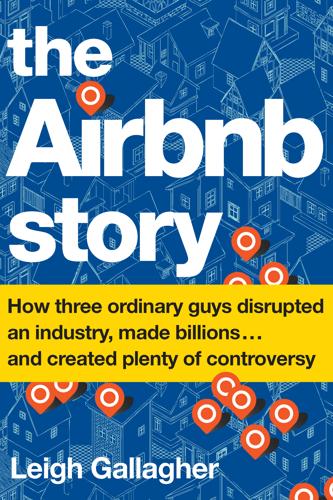
The Airbnb Story: How Three Ordinary Guys Disrupted an Industry, Made Billions...and Created Plenty of Controversy
by
Leigh Gallagher
Published 14 Feb 2017
John Donahoe of eBay was a particularly important mentor, schooling Chesky on scaling operations, managing a board, and other aspects of being the CEO of a large marketplace business. In what became a valuable reverse mentorship, Donahoe also quizzed Chesky for his advice on design and innovation and on how eBay could maintain characteristics of being young and nimble. From Jeff Weiner, Chesky learned the importance of removing those managers who weren’t performing. From Salesforce.com CEO Marc Benioff he learned how to push his executive team. He also had access to an informal support group among his current-generation start-up peers, including Travis Kalanick of Uber, Drew Houston of Dropbox, Jack Dorsey of Square, and John Zimmer of Lyft, all sharing their individual lessons about everything from running start-ups to balancing friends, relationships, and other elements of young founder life.
…
“They pump something into the air,” says Andreessen Horowitz’s Jeff Jordan. “How do you build a culture—from the top to the bottom—where everyone believes they’re changing the world?” In 2016, the company ranked number 1 on Glassdoor’s Employee’s Choice Awards, beating out Google, Facebook, Twitter, Salesforce, and others. This kind of environment can help smooth things over when there are internal near-disasters, like the one Mike Curtis experienced one afternoon in early 2015. One of the company’s engineers accidentally typed a bad command into a console, and in a single keyboard stroke he deleted almost the entire data warehouse of the company, “like, in one fell swoop,” Curtis says.

A More Beautiful Question: The Power of Inquiry to Spark Breakthrough Ideas
by
Warren Berger
Published 4 Mar 2014
Benioff journeyed to India and then continued on to Hawaii, where, as he told the authors of The Innovator’s DNA, he went swimming with dolphins in the Pacific Ocean. Out there in the water, he thought of a question: “I asked myself ‘Why aren’t all enterprise software applications built like Amazon and eBay?’” This inspired Benioff to launch Salesforce.com, which set out to use the Internet to radically change the design and distribution of business software programs. Within eight years, Benioff’s company had $1 billion in sales and was credited with “turning the software industry on its head.” The pressure to keep moving forward—and the accompanying reluctance to step back and question—is not just a business phenomenon.
…
The story about Marc Benioff’s question was told in Jeff Dyer, Hal Gregersen, and Clayton Christensen’s The Innovator’s DNA: Mastering the Five Skills of Disruptive Innovators (Cambridge: Harvard Business Review Press, 2011). The quote about “turning the software industry on its head” is from Jon Swartz, “Salesforce CEO leads charge against software,” USA Today, July 24, 2007. 5 Robert Burton, a neurologist and . . . From my interview with Burton, November 2012. Burton’s theories about certainty also appear in his article “The Certainty Epidemic,” Salon, February 29, 2008; as well as in Burton’s book, On Being Certain: Believing You Are Right Even When You’re Not (New York: St.
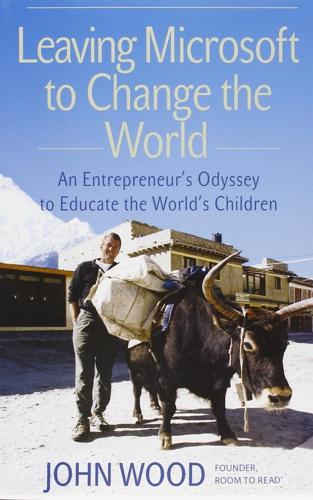
Leaving Microsoft to Change the World: An Entrepreneur's Odyssey to Educate the World's Children
by
John Wood
Published 28 Aug 2006
I took as many of the calls as I could to help out and was moved by the spirit of generosity and the desire for immediate action. My friend Catherine called from London to say that instead of gifts for her upcoming birthday, she was requesting checks for Room to Read’s Sri Lanka program. Julie Trell, a long-lost friend who now worked for the salesforce.com foundation, told me over the phone that her company would be matching any donations made through their site to Room to Read, even if the money came from someone who was not an employee and not a customer. I e-mailed this news to Steve, a longtime supporter from New York, and he immediately made a $25,000 donation.
…
initial response of libraries opened by local volunteer labor in media coverage of in Munamalpe village schools rebuilt by Shiva Charity as partner of Sri Lankan expatriate volunteers in Students Helping Students campaign in “tsunami wristbands” sold for Room to Read Vietnam challenge grants for Computer Room programs of Erin in fund-raising for organizational name change mandated by photos of project adoption in see also Nguyen Thai Vu; Vietnam Ruth, Babe Sakoian, Carol salesforce.com foundation San Diego San Francisco San Francisco fund-raising chapter Saudi Arabia Scholastic Sciabica, Tina Seattle fund-raising chapter Seierstad, Asne September 11, 2001, terrorist attacks of Afghanistan’s madrassa schools and Chicago chapter fund-raising event after enhanced airport security after Shapiro, Ben Sherpa, Dawa Shilpi (local program officer) Shiva Charity shopping.com Shrestha, Dinesh at opening ceremonies Shui Junyi Singapore Singapore fund-raising chapter Sivakumaran, Suba Skoll Foundation conference Sophie (JW’s girlfriend) Soviet Union Sponsored Silence fund-raising technique Struthers, Sally Students Helping Students campaign Sunisha (local program officer) Sushil Sydney Sydney fund-raising chapter Taiwan Talmud Tamil Tigers Tavern Club Thailand Than, Professor Theroux, Paul thinking big Tibet Fund Tidlow, Mr.
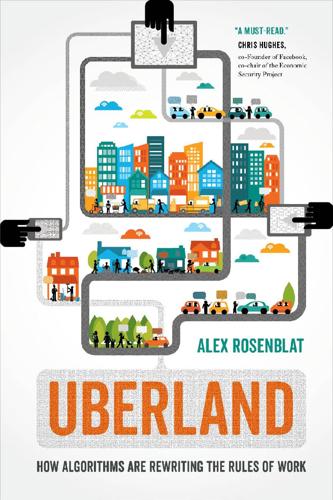
Uberland: How Algorithms Are Rewriting the Rules of Work
by
Alex Rosenblat
Published 22 Oct 2018
In a backlash that continues through 2018, Facebook’s efforts have been widely decried as “digital colonialism.”7 There is a certain receptiveness to tech companies who come in to replace public infrastructure, because they promise certain benefits, like free laptops or, in Uber’s case, less road congestion.8 New York Times journalist Natasha Singer identified these dynamics in a multipronged investigation of education-technology adoption in public schools.9 Her investigation revealed that tech oligarchs were equipping schools with ed-tech programs and devices, and in the process they were changing the nature of the curriculum without any public reckoning of these changes. Microsoft, Facebook, Google, and Salesforce all backed Code.org, the main actor of this story, as the prototype for reform. Its founder, Hadi Partovi, likened Code.org’s role to the sharing economy: “Airbnb is disrupting the travel space, but they don’t own the hotels,” he said, adding, “We are in a similar model, disrupting education. But we are not running the school and we don’t hire the teachers.”10 In effect, he said that he is not responsible for the institution of education, stakeholder consultation, or the relationship that schools have with their employees.
…
See also Campbell, Harry Rideshare Time (app), 121 Riis, Jacob, 10 Rollman, Hans, 113 Ron (driver), 42, 94–95, 102, 104, 122–23 route-based pricing, 108. See also destination-based discrimination Rudder, Christian, 164 Ryan, Paul, 81 Sacca, Chris, 39 safety considerations of drivers, 56, 60–61, 69, 84–85, 139–40. See also disruptive passengers Salesforce, 172 Salt Lake City, Utah, 12, 194–95, 220 Saval, Nikil, 181 scandals, 161, 192–96, 204, 207 schedule flexibility, 3, 7, 21, 40, 58–59, 84, 168. See also incentive pricing Scholz, Trebor, 24–25 Seattle, Washington, 54, 102, 179 Second Measure, 217 self-driving cars: allegations of Uber’s theft of trade secrets on, 161, 168, 192, 193; regulation of, 173–74; rise of, 24; Uber’s program of, 177, 179–80, 185, 192–93 self-employment vs. part-time employment classification, 8 sexual assault, 161, 175, 194 sexual harassment: driver experiences of, 139–40, 147–48, 194; Susan Fowler’s experience with, 188, 195–96; Uber’s policy on, 140, 147, 188, 193, 243n4 sharing economy: alternate terms for, 227n38; definition of, 224n2; employment statistics in, 203–4; glamorization of millennial workforce in, 34–38; myths of the movement, 30–33, 165, 171, 179–80, 202–4; platform capitalism in, 24–25, 226n20, 228n48, 229n58; rhetoric of technological exceptionalism, 4–5, 33–34, 107–9, 157–60; rise of, 21–24, 228n47; Uber’s influence in, 25–28, 177–78, 227n33.

Infonomics: How to Monetize, Manage, and Measure Information as an Asset for Competitive Advantage
by
Douglas B. Laney
Published 4 Sep 2017
And does (or can) information have contractual or legal rights? As for separability, many IT people feel or behave as if information is bound to technology (e.g., “the DB2 point-of-sale data”). And similarly, business people often speak about information being bound to an application or system (e.g., “the Salesforce.com customer data”). This only is due to years and decades of information being tightly and unfortunately coupled with technical or process components as a result of: 1) a lack of architectural foresight, 2) the need for expediency, and 3) a propensity for developing systems on the cheap. Today, information generated by one function is leveraged regularly in a multitude of ways.
…
Power 57, 67, 229 Jessup, Beau Rose 35 Juniper Networks 33 keiretsus 132 Keough, Don 132 Knowledge Centered Support (KCS) 171n15 knowledge management (KM): information strategy 179; knowhow 155–6; people 191 “KnowMe” program, Westpac 54 Kosmix 31 Kovitz Investment 164 Kraft 39 Kreditech 62 Krishna, Dilip 260 Kroger 32, 36 Kumar, V. 30 Kushner, Theresa 272 Kyoto Protocol 63 Ladley, John 25, 120n13, 148, 187 Last.fm 34 Latulippe, Barb 188, 195, 234–5 Leatherberry, Tonie 260 legal rulings, information property rights 303–5 LexisNexis 57 liability, information as 216 library and information science (LIS) 156–8 library science: information strategy 179–80; metrics 184 lifecycle 252; see also information lifecycle LinkedIn 64 liquidity, information 20–1 Lockheed Martin 41–3, 62; project information 88 Logan, Valerie 144, 244 logical data warehouse (LDW) 181 Loss Adjustment Expense (LAE) 95 Lovelock, James 144n7 Lowans, Brian 272 loyalty 15, 22, 37, 80, 246 Lyft 141 McCrory, Dave 261 McDonald’s 236 McGilvray, Danette 272 McKnight, William 148 Magic Quadrants 68 marginal utility 273, 276; architecting for optimized information utility 278–9; concept of 284n4; of information 276–8; information for people 277; of information for people 277; information for technologies 278; of information for technologies 278; law of diminishing 276; negative 276; positive 276; understanding 273 market: cultivating for information product 73; entering new 35–6; market value of information (MVI) 257, 262, 266, 274; monetization success 74 Mashey, James 101n8 Mears, Rena 260 measurement: business-related benefits 244–5; data quality 246–8; future of infonomics 292; information assets 242–6; information asset valuation models 249–60; information–related benefits 242–4; information valuation 260–1; value of information 246–61 Mechanical Turk 65 Medicaid 44, 98 Medicare 44, 98 Megaupload 225 Memorial Healthcare System 62 Merck 66 Mercy Hospitals 98 metrics: applied asset management 184–6; assessing data quality 246–9; information asset management 182–6; information management challenges 299; information supply chain 126–7; objective quality 247–8; subjective quality 249 Microsoft 42, 223–5, 239n8 Microstrategy 133 Miller, Nolan 231, 272 Mishra, Gokula 235 MISO Energy 267 Mobilink 80 Mondelez 39 monetization 11–13, 16–18, 20, 29, 31–2, 34, 40–1, 44, 46, 55–6, 66–9, 80–100, 139, 176, 195, 244–5, 257, 265–6, 273, 277, 281, 286–7, 290, 292 monetizing information 28–9; analytics as engine of 77; bartering for favorable terms and conditions 38–9; bartering for goods and services 37–8; being in information business 48–9; creating supplemental revenue stream 32–3; defraying costs of information management and analytics 40–1; enabling competitive differentiation 36–7; entering new markets 35–6; future of infonomics 292; improving citizen well-being 45–8; increasing customer acquisition and retention 29–31; introducing a new line of business 33–4; measurement benefits 244–5; more than cash for 14–16; myths of 12–13; possibilities of 11–12; recognizing organizational roadblocks to 287–8; reducing fraud and risk 44–5; reducing maintenance costs, cost overruns and delays 41–4; success of 74–6; understanding unstructured information 94–5; value of 265–6 monetizing information steps 55–74; alternatives for direct and indirect monetization 66–8; available information assets 59–66; feasibility of ideas 69–73; high-value ideas from other industries 69; information product management function 56–9; market cultivation for information 73–4; preparing data for monetization 73 Monsanto 8, 21 Mozenda 65 Mullier, Graham 239n15 multiple listing service (MLS) 53–4 Multispectral 35 Nabisco 39 Nash Equilibrium 273 National Health Service 232 Naudé, Glabriel 156 Negroponte, Nicholas 147 Netflix 59 network effect 25, 27n14 New Jersey, state of 179, 192 New York City, reducing fraud and risk 44–5 New York Stock Exchange 23, 134 Ng, Andrew 231 Nielsen 34, 57, 63, 67 non-rivalrous 19, 131, 235, 256, 277, 280 non-rivalry principle 142, 274 Nordic Wellness Products 33 North Atlantic Treaty Organization (NATO) 147–8 Oberholzer-Gee, Felix 169 Ocean Tomo 213 O’Neal, Kelle 272 OpenClinical.org 98 operational data, information asset 61 opportunity cost for information 279–80 Orange 33 ownership: brief history of 223; habeas corpus of rulings on 226–7; information 221–2, 237–8; information location 223–5; infothievery 225–6; internal, of information 233–7; owning usage of information 230–1; personal, of personal information 231–3; see also information ownership; property, information as Pacioli, Luca 210 Panchmatia, Nimish 43 Patel, Ash 134 patent 1, 19, 28; algorithm 239nn17–18; applications 230–1, 260; economic value 229; intangible asset 168, 207; intellectual property 128, 130 Patrick, Charlotte 34 People Capability Maturity Model (P-CMM) 165–6 people-process-technology 99 Pepsi 40 performance metrics, information supply chain 126–7 performance value of information (PVI) 254–5 periodicity 248 personal information, ownership of 231–3 personally identifiable information (PII) 25, 76, 178 physical asset management 158–63; asset condition 161–2; asset maintenance and replacement costs 162–3; asset register 160–1; asset risks 161–2; governance 188; vision 176 Pigott, Ian 7 Pinterest 31 Plotkin, David 187 PNC Bank 192 Poste Italiane 47 Post Malaysia 47 Potbot 64 Preska, Loretta 224 Prevedere Software 97 Price, James 106, 114–15, 181, 186, 272 price elasticity of information 275–6 process: applied asset management 194–6; information management 193–6; information management challenges 301–2; maturity, challenges and remedies 193–4 production possibility frontier 280 productive efficiency 280 productization, monetization success 75 product management function 56–9 profitability, information 24–6 ProgrammableWeb 63 property, information as 227–30 public data, information asset 64 Publicly Available Specification (PAS): metrics 184; physical asset management 158–60, 162–3 public-private partnerships 47 quality see data quality Radio Shack 141 Rajesekhar, Ruchi 267 Raskino, Mark 37 Realtor.com 53 records information management (RIM) 152–3 Reddit 23 Redman, Thomas 235, 272 relationships, bartering for 38–9 reusable nature, information 19–20 revenue: monetization success 74; supplemental stream 32–3; value of expanded 266 Ricardian Rent 273 risk 12, 14, 28, 44–5, 62, 74–5, 85, 89, 91–2, 106, 115, 125, 139, 152, 159–61, 185, 194, 216, 242–4, 256–7, 286–90; reduction 44–5, 74–5, 85, 89; monetization success 74 Rite Aid 32 Roosevelt, Franklin 37 Rosenkranz, E. Joshua 224 Rountree, Carey 30 Rowe, Liz 179, 236 Rowsell-Jones, Andy 132 Salesforce.com 229 Samek, Steve M. 205 Saylor, Michael 133 scarcity 249, 252 scenario planning 92–3 Schmarzo, Bill 260 Schmidt, Robert 260 Schrettinger, Martin 156 Schwartz, Hayward 115 search engine, Walmart 31 security, information 147, 150, 244, 286, 291 Seiner, Robert 187 SertintyOne 134 Sesha, Prakash 42 Shannon, Claude 261 Shea, Della 112 Shelley, Phil 41 Sigma-Aldrich 66 Silver, Isaac 20 Sims, John 34 Sinfield, Peter John 155 SJV Criminal Data Specialists 62 SmartPole 48 Smith, Fred 15 Smith, Michael 280 social media 16, 22, 31–2, 64–5, 80, 95, 230, 275, 297; data 64–5, 80; information asset 64–5 software-as-a-service (SaaS) 36, 197, 265 software asset management (SAM), infrastructure 198 Sondergaard, Peter 133 SoundCloud 34 Specialname.cn 35 Sports Authority 141 Spotify 34 Spratt, Martin 247 Sprint 33 SteadyServ 62 Steenstrup, Kristian 163 Stewart, Todd 99 Strassman, Paul 260 Strategy 55, 66, 77n2, 97, 100, 105–6, 108, 113–14, 116, 133–4, 138, 151, 157, 162, 177–84, 186, 194, 197, 233, 245, 265, 281, 283, 287, 289, 298; information leadership 177–81; information management challenges 298 subtransactional data 87, 101n11 succession, concept of 177 supply and demand 273; of information 274–5; principle of 273 supply chain 123; see also information supply chain (ISC) supply chain management (SCM): applied asset management 194–6; information strategy 180–1; people 191–2 Supply Chain Operations Reference (SCOR) model 124–5 Surowiecki, James 272 sustainability 138–9, 159, 177, 180, 267 Swanton, Andrew 33 tax, taxation 14, 16, 18–19, 21–2, 36–7, 41, 44, 46, 50n20, 51n31, 142, 209, 266 taxation, information 21–2; technologies, marginal utility of information for 278 Telefonica 33 Telstra 233 Tesco 91 Te Urewera National Park 237 Teva Pharmaceutical Industries 33 Textron 292 Thomas, Charles 106 Thomson Reuters 169 timeliness 248, 253 Tobin, James 211 Tobin’s q 211 transportability 23–4, 96, 124–5, 127, 159 transferability, information 23–4 Trulia 32 Tru Optik 12, 33–4 TurboTax (Intuit) 36–7 Twitter 22, 31, 34 Uber 21, 76, 141 Ulanowicz, Robert 138 Unilever 40 uniqueness 248 United Kingdom 7, 35, 91, 221, 238n1, 239n12 United States 13–14, 17, 22, 32, 36–7, 46, 59, 62, 65, 98, 116, 144, 186, 205–6, 211, 217n1, 218nn3–4, 224 usability 249 user satisfaction 82 U.S.
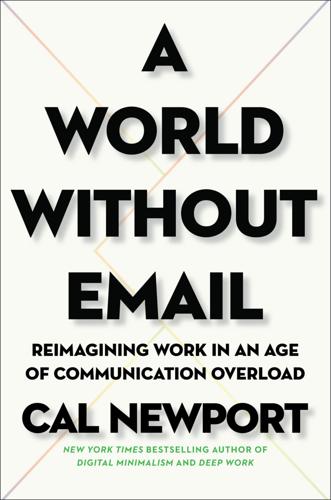
A World Without Email: Reimagining Work in an Age of Communication Overload
by
Cal Newport
Published 2 Mar 2021
The result is a large time investment in learning new systems and trying to get them to work. Around the time I was writing this chapter, for example, my speaking agent stopped by my office for a visit. As we were talking about workplace inefficiency, he told me the story of the woes the agency was facing trying to get a customer relationship management system called Salesforce working properly for their particular needs. After endless hours of tinkering, they ended up having to hire an additional expert to do nothing but work with the system. My agent wasn’t so sure they were really gaining a productivity bump compared with the old days of Rolodexes and business cards.
…
See also task boards project management tools, 147–48, 151–52 protocol principle, 190 client protocols, 197–201, 204 cognitive costs and, 184–86, 189–90, 193, 197 coordination protocols, 184–87 costs of protocols, 184–87, 200–201, 205, 207, 211 emails and, 185–86 explanation of, 180–87 information theory and, 179–87 nonpersonal email protocols, 202–5 office hours, protocols for, 187, 194–97 scheduling meetings and, 185, 188–93 and short-message emails, 205–8 status meeting protocols, 208–13 psychology, xviii–xix, 85, 125 of attention capital, 133–34 of knowledge work, 16–18 and mental stress, 36, 44–45, 61 and social connections, 41–43 public sector, 248 Pullman brass works, 136–39, 141, 144, 155 Quaternary, 84–85 Radicati Group, 10 Reclaiming Conversation (Turkle), 54 relational wealth, 40–42 remote employees, 104, 144–48, 161, 223, 232 RescueTime, xvi, 10–12, 184 responsiveness cycle of, 82–84, 163 dedication to, 19, 23–26, 30–31 revenue tracking, 114, 123 Rheingans, Lasse, 100–102, 104 Rice University, 216 Rich Roll Podcast, The, 222 Ringelmann, Maximilien, 86–87 Roach, Stephen, 216 Roosevelt, Franklin, 21 Rosen, Larry, 15 Rousseau, Jean-Jacques, 141–43 Runnells, John, 136, 138–39, 144 Rushkoff, Douglas, 38, 84 Salesforce, 217 Sassone, Peter G., 217–18, 246–47 Saturday Night Live, 52–53 ScheduleOnce, 192 Schulte, Brigid, 58–59 Schumpeter, Joseph, 88 science/scientists, 6, 16, 19, 42–43, 47, 55–56, 58, 179–80, 183. See also computer science; data scientists SCORE system, 210–11 Scrum, 157, 209–13, 234–35 Sean (tech start-up founder), 3–5, 199–201 self-employed workers, 238–39 service obligations, 239–43, 245 service sector, 216 Shakespeare, 43 Shannon, Claude, 179–85, 187, 193, 197, 201, 207 Shopify, 201 Silicon Valley, 29, 196, 221–25, 259 Simmons, Michael, 197–99 Simpson, Mike, 66 Slack, 59, 187 and client protocols, 199 constant checking of, xvi–xvii, 3–4, 11 criticism of, 5–6 disconnecting from, 31–32, 107, 145 hyperactive hive mind and, 3–6, 29, 199 uses of, 102, 149, 194 Sleeping with Your Smartphone (Perlow), 37, 82–84 Sloan, Alfred P.

Power, for All: How It Really Works and Why It's Everyone's Business
by
Julie Battilana
and
Tiziana Casciaro
Published 30 Aug 2021
Senate Judiciary Committee that the project had been canceled.55 The story of the Google employees is only one example of the many petitions and protests that tech workers have since been organizing to pressure their companies to act more ethically, not only at Google, but also at Amazon, Facebook, Salesforce, Microsoft, and Apple.56 Many have also proposed innovations and tried to orchestrate their adoption, because they realize that the tools they build are political. As Meredith Whittaker, who left Google in 2019, put it, what these employees want is nothing short of “a say and control over the products they build.”57 After decades that saw the pursuit of profit take an outsized role, they have mobilized to push Silicon Valley, and high-tech culture more broadly, toward emphasizing other dimensions, as well, like protecting democratic values and human rights in business decisions and making their workplaces more inclusive.
…
C., 224n76 cultivation of empathy, 30–33, 36, 38, 135, 195 cultivation of humility, 30, 34–36, 36, 38, 195, 215n55 Dahl, Robert A., 259n98, 261n2 Dalberg-Acton, John Emerich Edward (Lord Acton), 24 dangers of hubris awareness of impermanence, 38 cultivating humility and, 30, 34–36, 36 Greek myths of, 23 power sharing and accountability reinforced, 39, 166, 172–73 Davis, Gerald F., 253n31, 253n32, 255n44 De Beers, 11–13 Declaration of Independence, 189 Declaration of the Rights of Man and of the Citizen, 125–26, 189 Declaration of the Rights of Woman and of the [Female] Citizen (De Gouges), 125–26 democracy, xiv, xvii, 68, 91, 156–58, 182–93, 197–98 See also civic education and engagement, participative democracy initiatives, separation of powers democratization of firms, 181, 197 democratization of power, 162–64, 197 demographic diversity, 168 DeSantola, Alicia, 169 Descartes, René, 146, 243n10 Developmental Path to Power, 36 Diamond, Jared M., 243n4 Diana (princess of Wales), 30 digital era power fundamentals, 141–64 algorithms and machine learning, 148–49, 150 big tech control, 148–54 control of algorithms, 149–51, 153, 159–61 control of personal information, 151–53, 158–59, 190 democratization of power, 162–64, 197 laws and regulations, 158–62 technology’s impacts on, 143–48, 190 timelessness of, 142–44 World Wide Web, 147–48 digital revolution, 147–54, 162–63 Dimaggio, Paul J., 233n46, 235n64 disability, xiii, 4, 104, 193 discrimination, 104, 132, 156, 170–71, 252n22 See also bias, gender inequality, racism Disney, Abigail, 114 disruption of power, 108–15, 141–54 distributive change, 108–9, 143–44, 147–48, 150–54, 168–72 imbalances and, 111–15, 158 motivation and opportunity convergence, 109–12 See also hierarchies of power distribution of power challenges to, 108–9 critical aspects of, 150–54 equitable and diverse, 168–72, 193–94, 197 technological change and, 143–44 World Wide Web and, 147–48 domestic workers’ Bill of Rights, 179 DoorDash, 179 Dorsey, Cheryl, 104–6, 107, 108 Dorsey, Jack, 153 Douglas, Mary, 229n1 Duflo, Esther, 114 Durkheim, David Émile, 223n58 dynastic rule, 91–92 Echoing Green, 107 Edmondson, Amy C., 35 Egyptian revolution (2011), 118 Eichmann, Adolf, 95, 96 elements of power, xvi–xvii, 2–3, 16, 39–40, 192, 194, 195 Elliott, Jane, 92–94, 99 Emerson, Richard M., 200, 210n10, 211n21, 261n10 empathic accuracy, 31 empathy, 30–33, 36, 38, 97, 98, 195 Enlightenment, 109 Enlightenment Now (Pinker), 146 Enron, 174 Epic Games, 113 Epicurus, 55 equitable power distribution, 168–72, 193–94, 197 ethical decisions on power, 20 eugenics, 102–3 European Union, 159, 248n67 evolutionary psychology, 49 expansion strategy, 8, 9, 12–13 experience of power, 22–25 Facebook, 152, 153, 157, 159, 184, 248n66 facial recognition algorithms, 150, 160, 161 fallacies of power, xii–xiv, 16, 20, 70 See also positional power fallacy, possession of power fallacy, power is dirty fallacy Fallone, Meagan, 146, 161 Farage, Nigel, 52 fascination for power, x–xii Ferreras, Isabelle, 181, 254n42, 255n44, 256n58, 256n59 Festinger, Leon, 213n30, 223n67 Fiske, Susan T., 218n16, 224n76 Fligstein, Neil, 235n63, 235n64 Floyd, George, 92 folk-Bildung, 187–88, 258n84 Follett, Mary Parker, 8 foot-binding, 48, 57, 220n33 formal power and networks, 70–71, 71 Foucault, Michel, 151, 202, 245n30, 261n16 Founding Fathers of the United States, 183 French Revolution, 47, 109 French Yellow Vests, 117 Frick, Henry Clay, 110 Fridays for Future, 56, 121–25 Friedman, Milton, 46, 219n27 fundamental attribution error, 16 fundamentals of power, xvi–xvii, 2–3, 16, 39–40, 192, 194, 195 Fung, Archon, 259n96, 262n22 g0v (gov zero), 191 Galinsky, Adam D., 211n7, 212n13, 217n11, 222n48, 230n12, 230n14, 230n18, 231n24, 232n39, 237n72, 240n15, 262n22 Galton, Francis, 102 Gandhi, Mohandas Karamchand, 56, 119, 124 Ganz, Marshall, 122, 139 Garza, Alicia, 139 Gates, Bill, 114 Gates, Melinda, 114 Geddes, Patrick, 102 Gelfand, Michele J., 67, 225n4 gender inequality, 91–92, 101–02, 106–08 gender solidarity, 4–8, 85–87 gene editing technology, 162, 249n79 General Data Protection Regulation (GDPR), 159 Gergen, David, 24 gig economy, 163, 179, 181 Gingrich, Newt, 80 Giridharadas, Anand, 114 global climate strike (2019), 121–23 Global Reporting Initiative (GRI), 127 global warming, 45–46, 120–25, 163 renewable energy, 144–46 Godfather II, The, 77, 227n21 Google employees story, 154–58 Epic Games and, 113 European legislators, 159, 248n66 privacy policies lawsuits, 159 Project Dragonfly, 156 Project Maven, 155, 156 search history, 124 user data and, 152–54 Gottfried, David, 127 Gouze, Marie (Olympe de Gouges), 125–26 Government of the Nine, 165, 166, 250n2 Gramsci, Antonio, 186–87 Grant, Adam M., 215n55 Great Depression, 9, 114 Great Society, 14 Green, Melanie C., 135 Greene, Robert, 19 greenhouse gas effect See global warming Grimanis, Lia, 1, 4–8, 10, 20 Gruenfeld, Deborah H., 212n7, 230n12, 230n14 Grunitzky, Claude, 228n39 Gutenberg, Johannes, 142, 143 Hammurabi (Babylonian king), 100 Harari, Yuval Noah, 243n3, 245n31, 250n85 Harry, Prince (Duke of Sussex), 30 Harvard Study of Adult Development, 49 Heimans, Jeremy, 141 Heroic Failure: Brexit and the Politics of Pain (O’Toole), 52 hierarchies of power legitimacy narratives and, 100–04, 232n33 legitimization of, 92–94 obedience to authority, 94–97, 229n8 perpetuation of, 27 power infernal trio, 97–98 powerlessness and, 98–100 stability of, 90, 91–92, 197 stereotypes and, 104–8, 169 stickiness of, xvii, 91–92, 108 Hitler, Adolf, 9 Hobbit, The (Tolkien), ix Ho Chi Minh, 15, 16 Hollande, François, 24, 68 Holocaust, 20–21 Homer, 101 Homestead Strike, 111 Hominem te memento, 34, 214n49 L’Homme Providentiel, 16 Hossain, Mashroof, 34–35 hubris awareness of impermanence, 38 cultivating humility and, 30, 34–36, 36 Greek myths of, 23 power sharing and accountability reinforced, 39, 166, 172–73 Hughes, Debbie, 93 human needs See safety, self-esteem, valued resources human rights, xiv, 133–34, 136, 156, 157 humility, 30, 34–36, 36, 38, 195, 215n55 Huxley, Aldous, 164 imbalance of power, 111–15, 153–54, 182, 189–90, 194 impermanence, 34, 38, 115 impermanence awareness, 38, 115 Implicit Association Test, 104 Indignados, 118 infernal trio, 97–98, 102 informal power of networks, 72–74, 72, 84 innovation, 119–20, 125–30, 147–49, 154, 195, 196 In Praise of Scribes (Trithemius), 142, 143 Institutions, 104, 233n47 institutional change, 109, 235n64, 235n65, 235–36n66 interdependence awareness, xv, 32, 38, 97, 115, 195 Intergovernmental Panel on Climate Change (IPCC), 120 interpersonal liking familiarity, 63 similarity, 63, 88–90 intoxication of power, 20–22, 173 Johnson, Boris, 52 Johnson, Lyndon Baines, 14, 15, 16, 76 Johnson Space Center (JSC), 167, 168 Johnson treatment, 14 jointly developed power, 8, 162–63, 178–79 Jost, John, 231n19, 231n20, 231n22 Kant, Immanuel, 55 Kanter, Rosabeth Moss, 168–69 Karman, Tawakkol, 186 Kegan, Robert, 214n40, 258n84 Keltner, Dacher, 211n7, 212n16, 230n12, 230n17, 237n71 Kennedy, John F., 14 Keohane, Robert O., 261n14 Khan, Lina M., 159 King, Martin Luther, Jr., 33, 92, 119, 124 Kirchner, Nestór, 131, 132 Krackhardt, David, 71, 225n7, 226n8, 226n16 Lady Gaga, 85 Lasn, Kalle, 118, 119 Legion of Honor, 47, 219–20n30 legitimizing stories, 91–92, 101–04, 123 levers of persuasion, 10, 210n15 LGBTQ+, 88, 109, 117, 131–33, 136–37 LinkedIn, 153 Livingston, Robert W., 172 Lopez, Sandra, 177, 179–80 Lord of the Rings, The (Tolkien), ix–x Lorenzetti, Ambrogio, 165 Lukes, Steven, 261n5 Machiavelli, Niccolò, xvi, 19, 227n21 machine-learning algorithms, 148–49, 150 Magee, Joe C., 212n7, 230n14, 230n18, 231n24, 237n72, 262n22 Mandela, Nelson, 56, 119 Manuel’s story, 70–73 marriage equality, 131–37, 242n34 Marx, Karl, 110, 236n68 Maslow, Abraham, 217–18n15 Mayo, Tony, 171 McEvily, Bill, 86, 226n9 mechanical movable-type printing press, 142 Mencius (Mengzi), 55 meritocracy, 103, 169–70 #MeToo movement, 117, 137, 141, 147–48, 156 Meyer, John W., 233n46 Microsoft, 157 Milgram, Stanley, 95–96, 229n8 misunderstanding power fallacies of, xii–xiv Mjumbe, Nezuma, 144–46, 161 mobile health technology, 149 monopoly, 11 Montesquieu (Charles-Louis de Secondat), 182–83 moral principles, 55, 56, 164, 192 moral purity, 25, 30, 212n21, 213n30 Morrison, Toni, 8 motivation See safety, self-esteem, valued resources movement fatigue, 137 mutual dependence, 3, 7, 114, 181, 200 Na’Allah, Bala Ibn, 184 Naím, Moisés, 141 NASA Innovation and Inclusion Council, 170 Johnson Space Center (JSC), 167–68 Transparency and Opportunity Program (TOP), 171–73 National Domestic Workers Alliance, 177–79 National Health Service, 67 Nazi concentration camps, 21 negativity bias, 19 neoliberal capitalist system, 46, 189 Netflix, 153 networks betweenness, 79, 80, 153 informal power, 70–74, 71, 77–81, 84–89 network diversity, 84–89 organizational networks, 73–90 popularity and prominence, 73, 79, 227n25 power mapping, 74–84, 88, 128, 143–46, 191, 194 similarity and social relationships, 82–83, 89–90 Nietzsche, Friedrich, 57 Ning’s story, 61, 63–64 nonviolent civil disobedience, 123–24 Nosek, Brian A., 231n19, 231n20 #NoToSocialMediaBill, 184 Nye, Joseph S., 261n14 Obama Administration, 85 Occupy Wall Street, 118, 119 Ochoa, Ellen, 167–72 Odyssey (Homer), 101 Ogundipe, Tope, 184–85 O’Neil, Cathy, 150 online agitation, 137 Oppenheimer, Harry, 9, 10 orchestration, 119–20, 130–37, 154, 195, 196 organizational networks, 73 Organization for Economic Co-operation and Development (OECD), 161 O’Toole, Fintan, 52 oversight and accountability, 173–77 panopticon, 151, 245n30 Pansardi, Pamela, 262n21 Paradigm, 184 Parsons, Talcott, 261n17 participative democracy initiatives, 191 People for the Ethical Treatment of Animals (PETA), 57 perceptions of power, 25–27 personal development, 29–40, 97, 135, 163, 170–71, 195 Pettit, Philip, 43 Pfeffer, Jeffrey, 222n49, 260n7, 261n6, 261n13 Phillips, Nelson, 262n22 Pichai, Sundar, 155, 158 Piketty, Thomas, 219n28, 238n84 Pinker, Steven A., 146 Pitkin, Hanna F., 202, 262n20 Plato, ix, 198 Poo, Ai-jen, 178 positional power fallacy, xii–xiii possession of power fallacy, xii, 16, 211n25 Powell, Walter W., 233n46 power, definition of, 1–2, 199–202 power imbalance, 3, 7, 111–15, 201 power’s psychological effects, 20–40 cultivating empathy, 30–33, 36, 38, 195 cultivating humility, 30, 34–36, 36, 38, 195, 215n55 developmental process and, 29–30 experience of power, 22–25 intoxication of power, 20–22, 173 morality and, 27–29, 164, 192, 194 perceptions of power, 25–27 selection, 36–38 structural safeguards, 38–40 power is dirty fallacy, xiii, 19–40 power mapping accuracy levels, 75–77, 194, 227n18 challenging environments, 81–84 community, 191 diversity and accuracy of, 88 endorsers, fence-sitters, and resisters, 77–78 fundamentals of power and, 195 keys to, 40 reputational power, 74–75, 226n16 technological change and, 143, 146 power from rank and role, 69–70 power sharing and accountability organizational, 166, 167–73, 191–92 societal, 182–84, 192, 256n63 power vs. authority, xii–xiii, 58–61, 66–68, 73 power-with, 8 Pratto, Felicia, 231n26 Prince, The (Machiavelli), xvi, 19, 227n21 principal-agent problem, 173 Protestant Reformation, 143 pseudoscience, 94, 101–3 psychological resources, 2, 47–51 psychological safety, 35, 39 public narrative, 122–23, 239–40n14 transportation, 135 Purpose of Power, The: How We Come Together When We Fall Apart (Garza), 139 #QuellaVoltaChe, 137 Rabelais, François, 164 Rachid, María, 131–37 racism, 82–84, 89–90, 91–92, 104–08, 117 See also stereotypes Ramarajan, Lakshmi, 169 Ranganathan, Aruna, 47 Rawls, John, 193 Reading the Mind in the Eyes, 22 rebalancing power, 8–13 attraction, 8–11, 9, 12, 194 consolidation, 8, 11–12, 111, 112, 142, 194 digital era and, 158–62 expansion and withdrawal, 8, 12–13, 194 redistribution of power, 170, 197 Renaissance, 143 representative democracy, 183 Republic (Plato), ix, 198 resistance, 123–24, 161, 199 to change, 74, 77–78, 127, 131 violent and nonviolent, 124 Ridgeway, Cecilia L., 233n46, 251n5 Ring des Nibelungen, Der (Wagner), x Ring of Gyges, ix, x, xiii, 198 Roberts, Laura Morgan, 171 Robinson, James A., 257n79 Rogers, Jean, 126–30, 176 Rohingya, 34 Ross, Lee, 16 Rousseau, Jean-Jacques, 189 Rowan, Brian, 233n46 Roy, Bunker, 144, 161 Rubin, Andy, 156 Russell, Bertrand A. W., 20 Rykles, Miriam, 20, 21–22, 24, 172–73 safety basic human motivations, 42–43 digital technology and, 148, 162 power hierarchies and, 43, 197 valued resources and, 57, 58, 194 World Wide Web and, 148 Salancik, Gerald, R., 261n6, 261n13 Salesforce, 157 Sandel, Michael J., 103 Schor, Juliet, 181 Schrems, Max, 159 Scott, MacKenzie B., 114 Scott, Richard W., 233n46 self-esteem basic human motivations, 42 digital technology and, 148, 162 existential meaning, 44, 217n14 fragile and secure, 44, 218nn17–18 self-concept and, 44, 217n13 subjective assessment and, 44–45, 217–19nn15,19 technology resistance, 161 valued resources and, 57, 58, 194 World Wide Web and, 148 self-focus empathy as antidote, 30, 36, 38 empathy of powerful, 75, 97, 230n13 experience of power, 22–23 infernal trio, 97 interdependence awareness, 32, 38 meditation and, 33 power sharing and accountability, 39, 172–73 sense of agency, 97 sense of entitlement, 98 separation of powers, 182–83 September 11, 2001 terrorist attacks, 43, 216–17n11 Sevedan, Bagewat Nanda, 144 Shah, Palak, 177 Shakespeare, William, 25, 41 Shamash, 101 shareholder value maximization, 163, 175, 253n33 Sidanius, Jim, 231n26 Snyder, Timothy, 183 social foci, 89, 90 social movements, 108–15, 117–39 Arab Spring, 117–18 Black Lives Matter, 117, 139, 141, 147–48 framing, 133–34, 239n14 Fridays for Future, 56, 121–22, 124 French Yellow Vests, 117 Hong Kong Protests, 117 MeToo, 117, 137, 141, 147–48, 156 Occupy Wall Street, 118–19, 122, 128 political opportunity, 80–81, 132, 241n31 social relationships See networks sociétés à mission, 176 solidarity, 85, 86, 88, 124, 134, 183–88 Solon, 182 sources of power, xvi–xviii, 65–90 betweenness and network bridges, 79–81, 79, 153 formal and informal, 70–74, 71, 72, 84 gender differential, 102, 104–8, 167–73 network diversity, 84–89 network mapping, 77–78 power vs. authority, 66–68, 73 racial differential, 104–8, 167–73 rank and role, 69–70 shared experience and relationships, 89–90 See also power mapping Spirit of the Laws, The (Montesquieu), 182 status quo, 97–104, 108–19, 121–29, 133–37, 197 power-advantaged reproducing, 97–98 power-disadvantaged reproducing, 98–100 status quo bias, 74 steelworker’s story, 110–11, 236n71 Stephan, Maria J., 124 stereotypes, 104–8, 169 stereotype threat, 107 Stiglitz, Joseph E., 237n73, 238n79, 255n50 structural design, 20, 29, 38–39, 165, 192 surveillance, 43, 139, 151–52, 163, 190 drones, 154–55 nyob, 159 Sustainability Accounting Standards Board (SASB), 128–30, 176 Sweeney, Tim, 113 System Justification Theory (SJT), 98–100 systemic racism See racism Taylor, Breonna, 92 technology markets, 163 Teresa, Mother, 56 territorial behavior, 53 Thomson, John Arthur, 102 Thoreau, Henry David, 124 Thunberg, Greta, 56, 120 Tiananmen Square (Beijing), 57 TikTok, 153 Tilly, Charles, 238n1, 241n32 Timms, Henry, 141 tokenism, 169 Tolkien, J.R.R., ix–x triple bottom line, 176 Trithemius, Johannes, 142, 143 trust competence, 62–63, 195, 224n76 familiarity, 63 similarity, 63 warmth, 62–63, 224n76 Tufekci, Zeynep, 138 Twitter, 153, 184 Uber, 179 unions, 11–12, 111–15, 134, 157–58, 178, 236n71 See also Alphabet Workers Union unique control, 3 Up & Go, 179 Up With Women, 5–8 U.S.

WTF?: What's the Future and Why It's Up to Us
by
Tim O'Reilly
Published 9 Oct 2017
For a company the size of Google, whose market capitalization at the end of that year was more than $500 billion, that $5.2 billion in stock compensation represented only a 1% dilution of existing shareholders. For a smaller company, like Salesforce, with a market capitalization closer to $50 billion, 1% would only be $500 million—so Salesforce can afford only a tenth as much to hire engineers even though it has a third as many employees as Google. As a result, one analyst said to me that Salesforce would eventually have to be sold to a bigger company. This same analyst believed that this was ultimately the reason that LinkedIn was sold to Microsoft. They just weren’t big enough to be competitive as a stand-alone company in today’s market, he said.

Troublemakers: Silicon Valley's Coming of Age
by
Leslie Berlin
Published 7 Nov 2017
The solution she and Lavey devised, called ASKNET, allowed customers that installed terminals (not full computers) at their companies to use MANMAN software, paying a monthly fee for processing (which would be run on computers at ASK), rather than making a large up-front purchase. In some sense, ASKNET was a throwback to the old time-sharing model. It also anticipated what today is called “software as a service,” in which companies—Salesforce.com is among the best known—offer their services as software that a user accesses through a browser over the web, rather than installing a program on a computer’s hard drive. ASKNET was intended as a stepping-stone for companies too small, new, or timid to invest in their own computers, but businesses ended up staying with ASKNET long past the time it made economic sense.
…
ASK’s corporate DNA lives on in today’s enterprise software industry, as former employees have taken on key roles at Oracle, Workday, and Rootstock Software. Kurtzig had several career turns—memoirist, business correspondent for Good Morning America—before returning to entrepreneurship in 2010, when she launched a cloud-based enterprise software company called Kenandy with backing from Salesforce.com, Kleiner Perkins Caufield & Byers, and the venture arm of Larry Sonsini’s firm Wilson Sonsini Goodrich & Rosati. She currently serves as executive chairman of Kenandy. Mike Markkula In 1984, one year after leaving Apple’s presidency, Mike Markkula started a company, ACM Research, to investigate distributed intelligence control systems.I Today the publicly held company is called Echelon.
…
game, 278 Pitzer, Kenneth, 57 Pixar-Disney Animations, 23, 101, 298 Pong game, xvi, 112–23, 130–31, 170, 208, 209, 221 Poniatoff, Alexander M., 37 Powertec Systems, 86–87, 177 Pribilla, Peter, 370 printed circuit boards, 42–44, 47, 117, 123, 162, 207, 228, 233 Procter & Gamble, 60 programming languages, 18, 65–66, 97, 149, 179, 209–10, 285, 314, 365 Project Xanadu, 95 public domain, 267 punch-card batch processing, 9–10, 18, 65, 149, 179 Quist, George, 84, 259, 262 Radio Shack, see Tandy/Radio Shack Raffensperger, Ron, 164n, 353–55 Raiders of the Lost Ark game, 275 Rains, Lyle, 130 Raytheon, 22, 28 RCA, 250 Rea, Bill, 309–12 Reagan, Ronald, 33–36, 255, 331 recombinant DNA, xii, xiv, 133–45, 157, 187–89, 195–96, 203–5, 256–64, 349–51, 374 Rector, James, 35 Redwood City, Calif., 4, 37 Reid, Brian K., 342 Reimers, Niels: biotechnology industry and, xvi, 138–40 and Boyer, 135–43, 194, 200–201, 208, 256–57, 260–67 and Cohen, 133–38, 141–44, 189 Genentech and, 264–68 navy career of, 58 at Stanford Office of Technology Licensing, xvi, 58, 132–45, 157, 187–89, 202–5, 264–68, 349–51, 374 and Swanson, 194, 202–3 Research Corporation, 59, 62, 132, 144 Research Craft, 49 Rhode Island, University of, 61 Richeson, Eugene, 44 Richion, Bill, 86–87 Ring, Dave, 352 River Raid game, 278 Roberts, Lawrence G., 18–21, 28 Robinett, Warner, 275 Roche, 375 Rock, Arthur, 90, 129, 149–50, 249, 258, 293–94, 372 Rockefeller, David, 293n Rolling Stone, 90, 143, 226 ROLM Corporation: CBX system and, 160–61, 308, 312, 352 Fawn Alvarez at, 41–46, 159, 222, 309–12, 370 founders of, 44, 160–65 growth of, 166, 310–11 IBM’s acquisition of, 353–55 as military contractor, 41, 45, 86 production work at, 159–67 Silicon Valley location of, 312 Vineta Alvarez at, 41, 44–45, 159 voice mail and, 352 Rosen, Ben, 253, 303n, 361n Ross, Steve, 172–73, 270, 273, 344–46 Rowland, Bertram, 141–42, 188, 203, 264 Russell, Steve, 108 Salesforce.com, 321, 371 Sandia National Laboratories, 50, 335 San Francisco, Calif., 3, 25–27, 34, 69, 74, 87, 173–74, 192, 239, 276, 296 San Francisco Business Journal, 322 San Francisco Chronicle, 187 Sanger, Frederick, 263 San Jose, Calif., 4, 49, 69, 157, 244 San Jose Mercury News, 254, 264, 300–301, 322 Santa Clara, Calif., 41, 117, 120, 130, 149, 166, 207 Schaefer, Catherine de Cuir, 296 Schneider, Nelson, 256n Science, 143, 266 Science and Technology, 22 Scientific American, 194 Scientific Data Systems (SDS), 90, 93, 101–2, 149, 215, 249, 335 Scott, Dana S., 342 Scott, Mike, 50, 149, 234–38, 242–43, 247, 297–301, 358 Sculley, John, 357–58, 372–73 Seagate, 361 search engine business, 343, 367 Sears, 129–30, 170, 247 Seckler, Liz, 182–83, 323–25 security clearance, 44, 49, 57 semiconductor industry, xi–xii, xiii, 3–5, 42, 47–48, 73, 102, 127, 147, 151–53, 169, 207, 212–13, 230, 242–43, 249, 272, 302, 366 Semiconductor Industry Association, 254, 373 Service Bureau Corporation, 65 Shockley, William, 4, 42, 60, 66, 190 Shoup, Richard, 96 Shugart, Al, 245 Silicon Graphics, 23, 253, 332, 365 Silicon Valley: biotechnology industry in, xiii, xiv, xvi, 138–40, 187, 194, 256–58, 262, 349, 366, 375 early start-ups in, 4–5, 44–45, 73, 76, 146 electronics industry in, 3–5, 42–44, 47, 74, 165, 170 employment in, 3–4, 151, 253–54, 274 entrepreneurs in, see entrepreneurs hobbyists in, 210–14, 230, 244, 247, 284 lobbying and, xiii, xiv, 254–55, 366, 373 manufacturing businesses in, 74, 78–79, 83, 88, 160, 253, 312–13 microchip companies in, 3–5, 42, 47–48, 127, 169, 207, 213, 230, 302 orchards in, xiii, 4, 43, 46, 49, 149, 180, 370 population of, 3–5, 367 “Silicon Valley USA” (Hoefler), 73 Simonyi, Charles, 96, 224, 288 SLAC (Stanford Linear Accelerator Center), 59 small computers, 283–85 see also personal computers smartphones, xiv, 358 Smith, Alvy Ray, 101 Smith, Hank, 148, 249, 293n Smith, Jeff, 309–10 Snapchat, 365 social networking, 367 Software Dimensions, 370 software industry, 21, 76–78, 80, 83, 91, 148, 157, 183, 222, 269, 289, 306, 316–17, 360, 371 Sonsini, Larry, 84, 165, 277, 296, 326, 371–72 Southern California, University of, 47–49 Southern California Computer Society, 212 Space Invaders game, 274, 278, 344 Space Race game, 120n Space Technology Laboratories, 48 Spacewar!
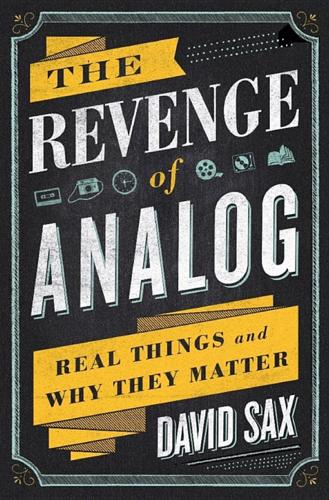
The Revenge of Analog: Real Things and Why They Matter
by
David Sax
Published 8 Nov 2016
Facebook and Twitter both have meditation rooms in their offices, something that is now even found at hedge funds and banks. Zen masters, monks, and mindfulness gurus are as in demand in Silicon Valley as personal trainers and java script coders, and Unterberg himself has consulted with Yahoo!, Microsoft, Salesforce, SAP, and others (all entirely unpaid, as part of his Buddhist teaching). None of this is terribly new. After all, Steve Jobs, the great tech guru of our times, regularly practiced meditation, and much of Silicon Valley’s roots are tied into Northern California’s counterculture, when yogis, ashrams, and organic food went hand in hand with software design.
…
See cell phones; smartphones photo albums, 47 photography transition in, from film to digital, 54 See also digital photography; film photography Photokina, 61 photo-sharing platforms, 60–61 Photoshop, 36, 72 Pictionary, 84 Pinterest, 214–215, 217, 222 Pioneer, 17 piracy, 10, 12 Pitchfork (website), 111–112 Plaid Hat Games, 84 play-based learning, 181–182, 194, 195 Play-Doh, 180, 198 podcasts, 77, 88, 98, 242 poker, 82, 83 Polaroid, xv, 54, 55, 66, 67, 68, 69, 70 Politico (blog), 112 Polk, Kyle, 171–172 PolyVision, 190, 191 pop-up ads, 109 postdigital economy, xiv–xv, xvii–xviii, 5, 52, 105, 208, 238 Post-it notes, 198, 208, 222, 223 PowerPoint, 210, 220 Prime service, 135 Primus, 3 print publications advertising in, 107, 108, 109 appeal of, 102, 107, 111, 116, 120, 120–121 cost of producing and distributing, 102 digital publishers launching, 111–112, 208 See also books; magazines; newspapers print readers, 108, 116 printers, 47, 63, 70, 91, 118, 223 private equity firms, 38, 170 Pro Tools, 23, 24, 25, 26, 27, 72 problem-solving skills, developing, 192, 194, 197, 199–201 product delivery, 126, 135–136, 137 productivity, xvii, 162, 210, 214, 219, 221, 239 Pro-Ject Audio Systems, 11, 17, 22 Project Breathe, 205–206, 207, 208, 209–210 Proni, Leonardo, 48 Prynt, 70 public libraries, 143, 188 Public-Supply, 43 Publishers Weekly (magazine), 142 Punkpost, 44 “pure-play” online retailers, 136 Quality Record Pressings, 17 Quarto, 86 Quartz (blog), 166 Race Against the Machine (Brynjolfsson & McAfee), 162 racism, 156, 185 Raconteurs, 21 radio, x, 8, 9, 18, 26, 178, 242 Raffaelli, Ryan, 168, 169 Raphel, Adrienne, 89 Rasputin Music, 15 RCA Victor, 8 Rdio, x, 20 reality, ix, xviii, 35, 81, 94, 171, 178, 190, 214, 226, 237 Reboot retreat, xii recession, 10, 42, 107, 113, 125, 155, 156, 157 Record Store Day, 13, 14, 15, 16, 19 record stores appeal of, ix, x challenges facing, 13, 124 closure of, 11, 14 coalition of, 13–14 customer base of, change in, xi–xii, 13 rise of, xi, 15–16 at Third Man, 22 value of used records for, 21 See also cassette tapes; compact discs (CDs); vinyl records recording booths, 21–22 Recording Industry Association of America, 10 recording studios, 6, 23–27 record-pressing plants, 3–5, 5–7, 9–10, 11, 16–17, 21–22, 24, 172–173 Red 7, 88 relationships appeal of, 239–240 education and, 203–204, 240–241 gameplay and, 80, 82, 240–241 social networks and, 39, 80 summer camp and, 236–237 reskilling, 158–159, 169 Retail (magazine), 132 retail businesses challenges facing, 124 See also specific businesses Revenge of Analog emergence of, xiv–xv speaking about, to people in digital tech industry, 207 and what it represents, xiv, 238–239 Rhodia, 41 Rhone, Patrick, 37–38 Rise and Fall of Ziggy Stardust, The (album), 26 Risk (game), 77, 89, 95 River Runner, 98 Robot Turtles, 226 robots, 72, 156, 159, 163, 227 See also automation Roffe, Erica, 120 Rohde, Mike, 38 Rolex, 168 Rosman, Amanda, 185 Rotman School of Management, 175, 197, 200–201 Rove, Karl, 36 Rushkoff, Douglas, 157 Sabbath, digital, xii Sagacity Media, 109 Sagan, Carl, 22 Saks Fifth Avenue, 150 Salesforce, 206 Samsung, 39 Samurai Spirit, 88 San Francisco, 166, 208 San Jose State University, 202 sand, 180, 181, 182 Sandberg, Sheryl, 216 Sands, Gary, 171 SAP, 206 Say Cheese! 88 scalability, 170, 172 school libraries, 187 schools alternative, 208 physical versus virtual, 176–177, 200–201 See also education Schram, Stefanie, 200 Schumpeter, Joseph, 153 Schwartz, Barry, 130 Scorsese, Martin, 71 Scott, Ken, 25–26 Scrabble, 76, 77, 85 screen-free parenting, xv screen-free schools, 208 Search Inside Yourself, 206 Seasick Steve, 22 Sebregondi, Maria, 32–34, 35, 36, 39, 40, 41, 46, 47, 48–49, 111 Second Life (virtual world), 81, 217 Senk, Glen, 134 sensory experience, xiii, xvii, 32, 83, 111, 113, 131, 132, 180–181, 188, 195, 225–226, 231 Serena and Lily, 137 serendipity, 113, 115, 131, 238 Settlers of Catan, 76, 85, 89–90, 93, 239 7-inch EP format, 8, 22 “Shake It Off” (Swift), 6 Shake It Records, 21 Shapiro, Dan, 226 Sharma, Mala, 210 Sharman, Mark, 119, 120 Sharman’s, 119–120 Sheridan College, 195 Shinola, 149–152, 157–158, 159–161, 167–168, 169, 171, 172 shipping costs, 135–136, 137 shopping experience, 126–127, 134, 137 Shut Up and Sit Down (blog), 90 sign making, 215–217 Silicon Valley, xv, xvii, 45, 155, 166, 178, 206, 208, 211, 213, 223, 225, 226, 229, 238 Singer, Dorothy, 181–182 Sinkov, Andrew, 222, 223 Siwak, Heidi, 196–198 16 mm film, 56 sketchbook, 221–222 Skidgel, John, 221, 222 Skype, 45, 220 Slack, 219 Small World, 85 smart boards, 191, 213 smartphones abstaining from, xii, xv, 27, 115, 205, 231, 234, 235, 241, 242 attachment to, xii–xiii, 27, 235 companion to, 31 in education, 182 handwriting and, 46 music on, ix photography and, 62, 69–70 role of, in analog’s rise, xvii years living with, 237 Smolokowski, Slava, 69–70 Snakes & Lattes, 75–76, 77, 79, 80, 81, 82, 83, 85, 86–88, 89, 90, 93, 95, 96–98, 239–240 Snapchat, 234 social interaction, experiencing, xv, 82, 144, 212, 217–219 social media/networks creating real social experiences for, 217–218 dominance over, 163 film photography and, 62 limitations of, 144 role of, in analog’s rise, xvii surge of, notebooks and, 43 tabletop gaming and, 80, 91, 94 See also specific social networking service software building, role of analog in, 209, 215 educational, 179, 181, 186, 190 and the Great Recession, 156 inherent bias of, 36 role of, in analog’s rise, xvii Songlines, The (Chatwin), 33 Songza, 20 Sony, 9, 11, 17 Sound on Sound (magazine), 22 Sour Soul (album), 27 South by Southwest Interactive, 45 Spark Notebook, 43 Spence, Michael, 163 Sperduti, Anthony, 138 Spin Master, 85 Spotify, 10, 13, 20 Stack, 103, 106 Stack Live, 103, 105 stamps, 132 Standage, Tom, 110 standardization, 7, 36, 118, 145, 162, 186, 194 Stanford University, 193, 201 Stapleton, Rich, 103–104 Star Wars: The Force Awakens (movie), 72 Starcraft (game), 94 Starr, Ringo, 26 startup trend, xiv stationery, 36, 45, 132, 218 stationery stores, 33, 34, 44 Steelcase, 190 STEM programs, 192 Sterling, Greg, 218 still film, 52, 53, 55, 56, 58–59, 63, 64, 68 Stoltz, Kelly, 22 Stoppelman, Jeremy, 217 Strand, 127, 128 streaming services, x, xvi, 10, 12, 19–20, 22, 242 streaming video technology, 201 Street Fighter 2 (game), 80 Studio O+A, 211–213 Success Academy, 189 Sun Records, 5 Super 8 film, 71 Super Mario Bros.
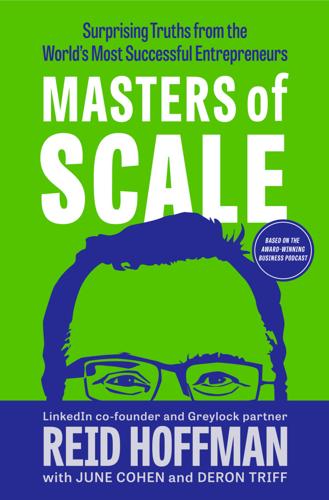
Masters of Scale: Surprising Truths From the World's Most Successful Entrepreneurs
by
Reid Hoffman
,
June Cohen
and
Deron Triff
Published 14 Oct 2021
Stewart’s commitments to Tim demonstrate the principles from my book The Alliance: Maintain a mutual commitment within the organization that leads to a lifetime alliance. This time, Tim didn’t have to worry about another shutdown—the reboot known as Slack went on to become an immense hit, going public in 2019, and being acquired by Salesforce.com for $27.7 billion in late 2020. The platform play Some leaders move deliberately through their careers as they build toward a long-term vision. Others stumble or slide into the role that becomes their calling. Tobi Lütke is firmly in the second camp, having made one of the least likely pivots we’ve come across—from selling snowboards to scaling the e-commerce platform powerhouse known as Shopify.
…
This can take the form of mentoring programs, investing in other startups, or focusing on specific areas—geographic areas or underrepresented groups of people—with the goal of helping to encourage, strengthen, and diversify the next generation of entrepreneurial leaders. Marc Benioff’s 1-1-1 program at Salesforce is a model of commitment. First, do no harm Entrepreneurs bear a responsibility to society. Without the infrastructure of society, we wouldn’t be able to create our businesses and reap the rewards of success. We should follow the principle of the Hippocratic Oath: First, do no harm.
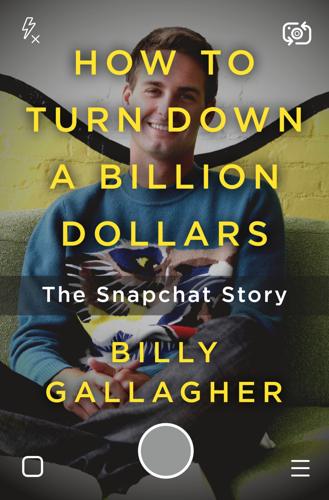
How to Turn Down a Billion Dollars: The Snapchat Story
by
Billy Gallagher
Published 13 Feb 2018
When WhatsApp sold to Facebook in February 2014 for $19 billion, Sequoia earned roughly $3 billion. With Peter Thiel on board, Lucas Duplan set out to lure other investors. He succeeded wildly; his investors would include Accel Partners, Andreessen Horowitz, Intel, Intuit, Qualcomm cofounder Andrew Viterbi, and Salesforce founder and CEO Mark Benioff. VMWare cofounder Diane Green and her husband and fellow VMWare cofounder Mendel Rosenblum invested in Clinkle after teaching Lucas at Stanford. Stanford University president John Hennessy, a successful entrepreneur himself and a member of Google’s and Cisco’s boards of directors, was Lucas’s computer science advisor and became an advisor to Clinkle.
…
See MPlatco (Michael Platco) Poke (Facebook app) Polaroid camera pornography Powell, Amy Primack, Dan Qualcomm Quinn, David Quinn Emanuel Urquhart & Sullivan QR codes Snapcode Randall, Mike Recode Red Bull Reid, L. A. Revel Systems Rhodes, Mike Rice, Condoleezza Riggs, Jason Robinhood Rodriguez, Jon Rosenblum, Mendel Ross, Blake Rothfels, John Ryan, Rob Sacca, Chris Sahami, Mehran Salesforce Salzhauer, Michael. See Dr. Miami (Michael Salzhauer) Samsung Sandberg, Sheryl Sanders, Bernie Saturday Night Live Sawyer, Diane Scan (QR code app) Schiffer, Eric Schmidt, Eric Sculley, John Secret (app) Sehn, Tim selfies Academy Awards (2014) selfie with Ellen DeGeneres first photographic self-portrait history of Sequoia Capital sexting Shark Tank (television program) Shonduras (Shaun McBride) Shontell, Alyson Sierra Ventures Silicon Valley (television sitcom) Slingshot (Facebook app) Smith, Daniel Smith, Kevin Snapchat Android app Arsenic Bitstrips purchased by brand advertising Brown lawsuit captions celebrities and Snapchat stars content management system (CMS) Council (employee gatherings) demographics of users Discover DJ Khaled and and Electric Daisy Carnival (Las Vegas) email leaks founding date of funding and investment geofilters Ghostface Chillah logo Good Luck America (election show) hacking and security Instant Articles IPO (initial public offering) Lenses Literally Can’t Even (original programming) Live Stories media coverage of Memories monetization original programming origins of Our Story Picaboo publishing and journalism Rio Summer Olympics (2016) coverage S-1 (SEC filing) Safety Center Scan purchased by Snap Channel Snap Lab Snapcash Snapcode “Snappy New Year” promotion Spectacles Stories Vergence Labs purchased by workforce and human resources Social Network, The (film) Sony Entertainment Sorrell, Martin SpaceX Spiegel, Evan Brown lawsuit and childhood education Forbes’s “30 Under 30” issue Future Freshman girlfriend at Stanford (Lily) interest in journalism internship at Red Bull and Kappa Sigma Market Street headquarters parents of proposal to Miranda Kerr at $SNAP IPO Snapchat’s origins at Stanford Stanford Women in Business conference keynote address worldview and corporate culture of Snapchat See also Snapchat Spielberg, Sasha Spotify Square Square Cash Stanford University commencement (2012) Donner (dorm) founding of Kappa Sigma Sigma Nu Silicon Valley and Startup Hau5 (Picaboo headquarters) stealth mode Stith, Mackenzie Stone, Josh Streep, Meryl Sun Microsystems Swift, Taylor Swisher, Kara Systrom, Kevin Taco Bell Tam, Donna Taneja, Hemant TechCrunch (tech blog) Disrupt conference Tencent Teo, Jon Tesla ThankYouX (Ryan Wilson) That White Bitch (blog) therealdrmiami.

The Coming of Neo-Feudalism: A Warning to the Global Middle Class
by
Joel Kotkin
Published 11 May 2020
Silicon Valley first grew out of the suburbs, but many tech leaders now believe that “urbanization is a moral imperative,” writes Greg Ferenstein.6 If startups in suburban garages represented the individualism of cranky inventors and entrepreneurs, the future Silicon Valley will feature densely packed apartment complexes for workers who will become ever more corporate and controlled.7 The focus on apartment living for employees makes some sense for tech companies—like Facebook, Lyft, Salesforce, Square, Twitter, Yelp, and Google—that rely on a youthful, childless workforce.8 This kind of urban experience does not spur individuals toward independent adulthood and family formation, but recreates “life as close to the college experience as possible,” as Ferenstein notes, or a kind of prolonged adolescence.9 With traditional family-friendly housing near their workplaces out of reach for all but the wealthiest people, most tech employees will live in something like dormitories, perhaps well into their thirties.
…
Study Breaks, May 7, 2018, https://studybreaks.com/sponsored/millennials-receive-news/. 23 Joel Kotkin and Michael Shires, “The Cities Winning the Battle for Information Jobs,” New Geography, May 23, 2013, http://www.newgeography.com/content/003736-the-cities-winning-the-battle-for-information-jobs; Marc Tracy, “Google Made $4.7 Billion From the News Industry in 2018, Study Says,” New York Times, June 9, 2019, https://www.nytimes.com/2019/06/09/business/media/google-news-industry-antitrust.html; Lucy Handley, “Google and Facebook take 20% of Total Global Ad Spend,” CNBC, May 2, 2017, https://www.cnbc.com/2017/05/02/google-and-facebook-take-20-percent-of-total-global-ad-spend.html. 24 Keach Hagey, Lukas Alpert, and Yaryna Serkez, “In News Industry, a Stark Divide Between Haves and Have-Nots,” Wall Street Journal, May 4, 2019, https://www.wsj.com/graphics/local-newspapers-stark-divide/. 25 David Gelles, “Billionaires Can Seem Like Saviors to Media Companies, but They Come with Risks,” New York Times, September 19, 2018, https://www.nytimes.com/2018/09/19/business/media/newspapers-billionaire-owners-magazines.html; Jeffrey A. Trachtenberg, “Time Magazine Sold to Salesforce Founder Marc Benioff for $190 Million,” Wall Street Journal, September 16, 2018. 26 Javier C. Hernandez, “A Hong Kong Newspaper on a Mission to Promote China’s Soft Power,” New York Times, March 31, 2018, https://www.nytimes.com/2018/03/31/world/asia/south-china-morning-post-hong-kong-alibaba.html. 27 Jeffrey A.
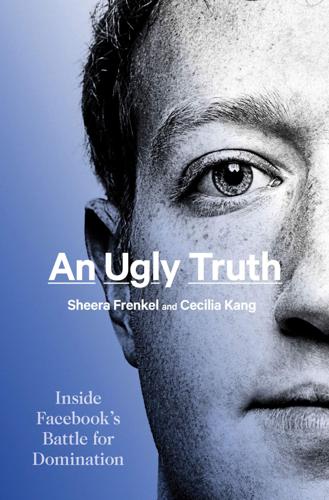
An Ugly Truth: Inside Facebook's Battle for Domination
by
Sheera Frenkel
and
Cecilia Kang
Published 12 Jul 2021
Even before the Cambridge Analytica scandal broke, Sandberg was finding the company’s slow-motion fall from grace personally devastating. In January 2018, she had made her regular pilgrimage to Davos, where Trump spoke, but she stayed out of the spotlight. She didn’t speak on any panels, but Facebook was constantly invoked by others. In a panel called “In Technology We Trust?,” Salesforce CEO Marc Benioff noted that election interference and privacy violations demonstrated the need to regulate tech companies. That same afternoon on CNBC, he told journalist Andrew Ross Sorkin that Facebook was as dangerous as tobacco.18 “Here’s a product, cigarettes, that are addictive, you know they’re not good for you,” Benioff said.
…
On March 19, Facebook hired a digital forensics firm: “Pursuing Forensic Audits to Investigate Cambridge Analytica Claims,” Newsroom post, March 19, 2018. 17. from a report in the Guardian: Harry Davies, “Ted Cruz Using Firm that Harvested Data on Millions of Unwitting Facebook Users,” Guardian, December 11, 2015. 18. In a panel called “In Technology We Trust?”: “Salesforce CEO Marc Benioff: There Will Have to Be More Regulation on Tech from the Government,” video posted on CNBC, January 23, 2018. 19. George Soros delivered a speech: “Remarks Delivered at the World Economic Forum,” George Soros website, January 25, 2018. 20. Wael Ghonim, an Egyptian activist: “Organizer of ‘Revolution 2.0’ Wants to Meet Mark Zuckerberg,” NBC Bay Area website, February 11, 2011. 21.
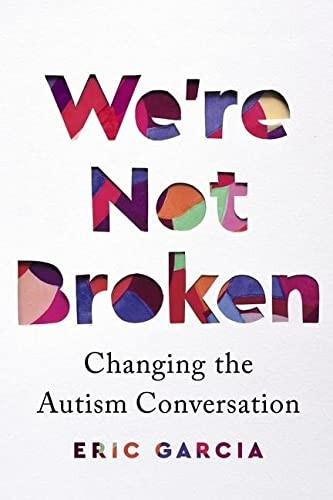
We're Not Broken: Changing the Autism Conversation
by
Eric Garcia
Published 2 Aug 2021
Ciampi, who used the pen name Samantha Craft for her book Everyday Aspergers, also said that once someone discloses, employers begin to question whether an autistic person is the best person for the job, whether this person can become a manager, and what challenges for the office this person would pose. However, in recent years, multiple companies have made a push to specifically hire autistic people. A variety of companies, ranging from financial institutions like JPMorgan Chase and UBS to technology companies like SAP, Google, Salesforce, and Microsoft, have neurodiversity hiring initiatives. Many of them even include the same language the autistic community prefers and uses. For example, a statement on Goldman Sachs’ website from April 2019 read: “Our goal is that this initiative encourages our people to share their stories and learn about how they can support neurodiverse individuals as managers, mentors, and colleagues inside and outside the firm.”
…
, 12, 114, 115 institutions and, 87–88 Mark (autistic son), 12, 87, 98 NSAC and, 12, 30, 112 Rain Man and, 87, 171 vaccine-autism link and, xi–xii, 16 Wakefield and, 16 Rios-Soto, Arnaldo, 174–76 Ritvo, Edward, 151 Rivera, Kerri, 116 Robertson, Scott, 21 Robison, John Elder advocacy, 24, 47–48, 120 on autism, 120 autistic people in academia and, 47–48 background, 47, 59 Roll Call, x, 58–59, 75, 112 Rolling Stone, 100 Romano, Neil, 72 Romney, Mitt, 45, 46 Roosevelt, Franklin D., 68, 72 Rosa, Leo camp, 103–4 description/functioning labels and, 83, 84, 88–89 family’s insurance/in-home services, 103 Rosa, Shannon Des Roches as “not a victim,” 89 not looking for cure, 209–10 son and, 83–84, 88–89, 211 Rosenberg, Jacob, 45, 46 Rowling, J. K., 168 S Saavedra, Ryan, 208 Sacks, Oliver, 194 Sagan, Carl, 193–94 Salesforce, 61 Sanchez, Brandon, 15–16 Sanchez, Eddie, 15–16 Sanders, Bernie, 205 Sandy Hook shootings, xii SAP, 61, 62 Savicki, Andrew background/education, 47, 67 job, 218–19 politics and, 47, 67, 218–19 Scarborough, Joe/Andrew, xiii Schere, Dan, 47 schizophrenia, childhood, 3, 4 Schumer, Amy, 155 Scientology, 116 secretin hormone, 12, 13, 211 Seger, Bob, 133 self-advocacy beginnings, 1–2 high support needs and, 26 history, 1–2, 10–16 meaning, 2 movement overview, 19–27 problems without (summary), xi progress, 202–3, 211, 212–14, 215–16 tension with parent advocacy, 10–16, 69, 73, 88, 97–106 trust in, 26–27 See also Autistic Self Advocacy Network (ASAN); specific groups/individuals sensory dysregulation, 117 Sesame Street (television show), 171 Sexuality and Disability, 133–34 shared living, 91–92 sheltered workshops, 64, 68, 69–71, 72–73 Shestak, Jonathan, 25, 114 shock therapy, 13, 15–16, 86, 114, 117, 131, 207 Shore, Stephen, 24 Silberman, Steve “autism epidemic” idea and, 199 as gay/discrimination, 200 Neuro Tribes/autism and, 86–87, 112, 134, 199–200, 202 services for autistic people and, 199 Silicon Syndrome: How to Survive a High-Tech Relationship (Hollands), 136 Simmons, Gene, 8 Sinclair, Jim Autism Network International, 19–20, 21 on autism/parents with autistic children, 19–21 Autreat, 20 description/background, 19 Singer, Alison, 18, 102 Skrodzka, Agatha, 14 Slash (Guns N’ Roses), 57 Smith, Chris, 9–10 Smith, Dean, 51 Smith, S.
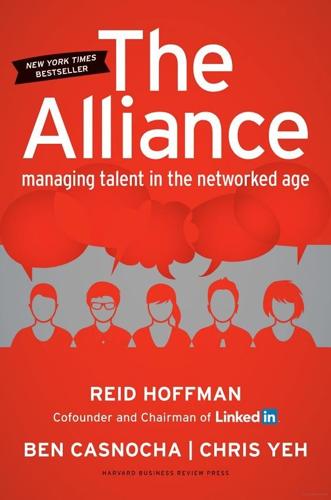
The Alliance: Managing Talent in the Networked Age
by
Reid Hoffman
,
Ben Casnocha
and
Chris Yeh
Published 15 Jan 2014
Because it was a brand-new area, she didn’t yet have the support of cross-functional teams. In a classic example of entrepreneurial hustle, Gultekin did whatever was necessary to achieve the mission. She built a business case for investment in the area and built a team of employees. She taught herself SQL and learned Salesforce.com so that she would have the hands-on skills necessary to enhance the online stages of the sales process. The results speak for themselves. In 2009, that particular business line had a $1,200,000 annual run rate. By the time Gultekin’s tour ended in 2013, the run rate had increased to $200 million in annual revenues.

Remote: Office Not Required
by
Jason Fried
and
David Heinemeier Hansson
Published 29 Oct 2013
We also use a shared calendar, so we know when Andrea’s coming back from maternity leave or Jeff’s going on vacation. If your company is too large to share one calendar, break it up by teams. There are countless tools available these days to ensure everything is out in the open for your team. Some companies manage simply by using Dropbox to share files. Others use such products as Highrise or Salesforce to follow up on sales leads. The point is to avoid locking up important stuff in a single person’s computer or inbox. Put all the important stuff out in the open, and no one will have to chase that wild goose to get their work done. The virtual water cooler Working remotely can provide a terrific boost to productivity.
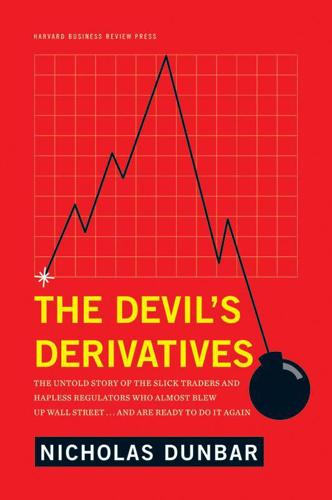
The Devil's Derivatives: The Untold Story of the Slick Traders and Hapless Regulators Who Almost Blew Up Wall Street . . . And Are Ready to Do It Again
by
Nicholas Dunbar
Published 11 Jul 2011
The models that ratings agencies used might have said the risk of losing money was as close to zero as the laws of probability would allow, but Sparks, who was responsible for the risk of Goldman’s mortgage portfolio, still wasn’t convinced—he wanted to shed that risk. Once again, help would come from London, the territory of Michael Sherwood. With his salesforce, Sherwood not only would hold the key to shifting Goldman’s hard-to-shift product, such as the topmost layers of Sparks’s CDOs, but also had figured out a way to act as middleman for the rest of Wall Street. The trick was pulled off with a careful reading of the Basel banking rules. European banks, unlike those in America, did not have absolute leverage ratios restricting the size of their balance sheets.
…
Other firms like Morgan Stanley, Bear Stearns, and Citigroup ran similar operations, but Deutsche was the biggest player. Along with the derivatives he was selling to Wall Street’s mainstream CDO factories, Lippmann’s virtual CDO factory helped bring in a flood of additional subprime protection from around the world, with the help of Deutsche’s global salesforce. It was more than could be matched up with Lippmann’s own proprietary position and Paulson’s and Elliott’s short, prompting Lippmann to seek out new would-be Paulsons. By early 2006 he became adept at giving rapid-fire presentations to more orthodox hedge funds that specialized in emerging markets and high-yield corporate bonds.

Building Microservices
by
Sam Newman
Published 25 Dec 2014
If you’ve decided to buy a product but the particular capabilities it provides aren’t that special to you, it might make more sense to change how your organization works rather than embark on complex customization. Content management systems are a great example of this danger. I have worked with multiple CMSes that by design do not support continuous integration, that have terrible APIs, and for which even a minor-point upgrade in the underlying tool can break any customizations you have made. Salesforce is especially troublesome in this regard. For many years it has pushed its Force.com platform, which requires the use of a programming language, Apex, that exists only within the Force.com ecosystem! Integration Spaghetti Another challenge is how you integrate with the tool. As we discussed earlier, thinking carefully about how you integrate between services is important, and ideally you want to standardize on a small number of types of integration.
…
Using this approach, we keep the scope of what the CMS does down to a minimum and move customizations onto our own technology stack. Example: The multirole CRM system The CRM — or Customer Relationship Management — tool is an often-encountered beast that can instill fear in the heart of even the hardiest architect. This sector, as typified by vendors like Salesforce or SAP, is rife with examples of tools that try to do everything for you. This can lead to the tool itself becoming a single point of failure, and a tangled knot of dependencies. Many implementations of CRM tools I have seen are among the best examples of adhesive (as opposed to cohesive) services.

Rise of the Robots: Technology and the Threat of a Jobless Future
by
Martin Ford
Published 4 May 2015
In general, the MOOC students did significantly worse than students enrolled in traditional classes at San Jose State. The university has since suspended the program at least temporarily.9 Udacity is now deemphasizing broad-based education and is instead focusing on more vocational classes designed to give workers specific technical skills. Companies like Google and Salesforce.com, for example, are underwriting courses that teach software developers how to work with their products. Udacity has also partnered with the Georgia Institute of Technology to offer the first MOOC-based master’s degree in computer science. Tuition for the three-semester program will cost just $6,600—about 80 percent less than a traditional on-campus degree.
…
Medtronic, Inc., 150n risk, Peltzman effect and, 267–268 RoboBusiness conference/tradeshow, 7 Robot & Frank (film), 155 robotics, 6–8 cloud, 20–23 See also automation; robots robotic walkers, 157 robots in agriculture, 23–26 box-moving, 1–2, 5–6 consumer, 197n educational, 7 elder-care, 155–158 hospital and pharmacy, 153–155 industrial, 1–5, 10–11 personal, 7 telepresence, 119–120, 157 Rolling Stone (magazine), 56 Romney, Mitt, 272 Roosevelt, Franklin, 279 Rosenthal, Elisabeth, 160, 163 Rosenwald, Michael, 107 ROS (Robot Operating System), 6, 7 Russell, Stuart, 229 Rutter, Brad, 101 Sachs, Jeffrey, 60 Saez, Emmanuel, 46 safety, autonomous cars and, 184–185, 187 Salesforce.com, 134 Samsung Electronics, 70n Samuelson, Paul, x Sand, Benjamin M., 127 San Jose State University, 134 Sankai, Yoshiyuki, 156–157 Santelli, Rick, 170 savings, China’s high rate of, 224–225 SBTC. See skill biased technological change (SBTC) Schlosser, Eric, 210 Schmidt, Michael, 108, 109 Schwarzenegger, Arnold, 22 S-curves, 66–67, 68, 69, 70–71, 250 secular stagnation, 274n self-driving cars, See autonomous cars Selingo, Jeffrey J., 140, 141 Semiconductor Industry Association, 80 service sector, 12–20 The Shallows (Carr), 254 Shang-Jin Wei, 225 Silvercar, 20 Simonyi, Charles, 71 single-payer health care system, 165–167, 169 The Singularity, 233–238, 248 The Singularity Is Near (Kurzweil), 234 Singularity University, 234 Siu, Henry E., 49, 50 skill biased technological change (SBTC), 48 skills, acquisition of by computers, xv–xvi Skipper, John, 201 “Skynet,” 22 Slate (magazine), 153 Smalley, Richard, 244–245 Smith, Adam, 73 Smith, Noah, 219–220, 273 Smith, Will, 111 social media response program, 93–94 social safety net, 278.
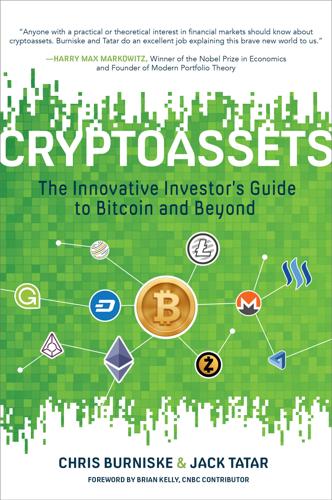
Cryptoassets: The Innovative Investor's Guide to Bitcoin and Beyond: The Innovative Investor's Guide to Bitcoin and Beyond
by
Chris Burniske
and
Jack Tatar
Published 19 Oct 2017
This is especially true as people fixate on the incredible returns some early bitcoin investors enjoyed and hope that the latest cryptocurrency, cryptocommodity, or cryptotoken will make them rich too. However, remember that just because the unfettered enthusiasm of a crowd takes an asset to unreasonable highs doesn’t mean the asset itself is flawed. Tulips are still enjoyed and sold worldwide. And as we saw with the tech and telecom boom, there were gems such as Amazon and Salesforce that would reward their patient investors spectacularly for years to come. The investors who got burned were the ones who bought because everyone else was buying, and then sold because everyone else was selling. The best way to avoid getting burned in this manner is to do proper due diligence and have an investment plan that is adhered to.
…
To help better understand these cost calculations, refer to mining profitability calculation websites, such as CoinWarz.11 Cloud-Based Mining Pools Innovative investors may consider a cloud-based mining pool service. Here, an investor buys into an existing mining pool and shares in the rewards from its mining efforts. There’s no need for owning and maintaining dedicated hardware, just as cloud-based software such as Salesforce doesn’t require maintaining all the back-end hardware. Investors simply buy a share of the processing power provided by mining efforts performed in a remote data center. Thorough due diligence and research are needed before buying into a cloud-based mining pool service because a fair share of fraud and scams have occurred.
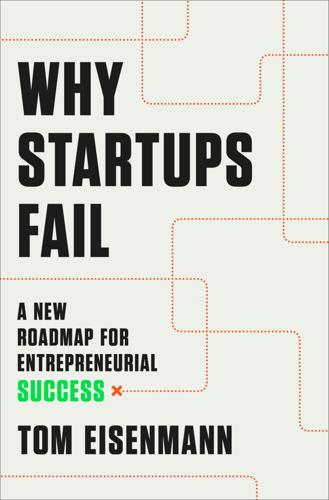
Why Startups Fail: A New Roadmap for Entrepreneurial Success
by
Tom Eisenmann
Published 29 Mar 2021
VCs with children could relate to this target consumer, and they were intrigued by cutting-edge consumer hardware in the wake of Facebook’s $2.3 billion acquisition of the virtual reality headset maker Oculus Rift—which, like Jibo, was a breakthrough fusion of hardware and software, targeted to consumer markets. And, having witnessed the explosive growth of platforms like Facebook, Amazon, and Salesforce.com, VCs liked that Jibo would be a platform, hosting applications from a wide array of third-party software developers and information services. Before investing, however, the VCs wanted evidence of market demand for this novel innovation, along with proof that it could actually be built. To gauge consumer interest, the VCs insisted that Jibo launch a crowdfunding campaign, which commenced in July 2014.
…
SCOPE ↑ → STAFF ↑ → STRUCTURE ↑ The startup must undertake another round of adding specialist staff and adjusting its organizational structure to manage its expanded scope. With so many transitions for late-stage startups to go through, it’s easy to understand why a large percentage of them fail. However, some ventures do make it through this intense “Scaling for Speed” gauntlet and emerge as profitable industry leaders. Google, Amazon, Salesforce, Facebook, Spanx, LinkedIn, Zappos, Dropbox, and Netflix come to mind as examples. Others, however, falter due to mistakes or misfortunes that occur with one or more of the transitions listed above. We’ll see examples of that in the next two chapters, which describe, respectively, 1) the Speed Trap failure pattern—when demand from enthusiastic early adopters fuels explosive early growth that cannot be profitably sustained in the mainstream market, and 2) the Help Wanted failure pattern—when a startup is not able to amass the resources required to meet strong mainstream demand.
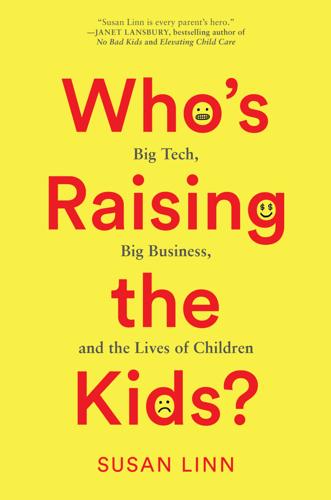
Who’s Raising the Kids?: Big Tech, Big Business, and the Lives of Children
by
Susan Linn
Published 12 Sep 2022
Internet of things (IoT) is a catchall phrase for the billions of smart devices—toys, microwaves, vacuum cleaners, thermostats, toothbrushes, etc.—with internet connectivity. While some of the data these devices capture through their sensors is useful to device owners, most of it becomes monetizable by device providers once it is uploaded to a cloudbased platform like Salesforce IoT. User experience (UX) design molds how users behave with and feel about interactive products like smartphones, tablets, apps, websites, and IoT objects and devices. Persuasive design is a subset of UX design practice inspired by principles from behavioral psychology to persuade users to adopt target attitudes and/or perform target behaviors (e.g., stay on the site, click, like, pin, swipe, post, join, comment, subscribe, message, buy).
…
Ferguson (1882), 158 Pokémon, 30, 84–85, 102–6, 185 branding and, 30 collectibles craze, 30, 84–85, 105–6 theme song chorus (“gotta catch ‘em all”), 30, 85 Pokémon GO, 102–4 Pokémon Oreos, 105–6 Pokémon Sleep, 103–5 Pokémon Smile, 105–6 Political Tribes (Chua), 61–62 pop-up ads (nagware), 46, 186–87, 189 poverty children and, 65 COVID-19 disparities, xv materialistic values and, 97 millennial families and, 121 precautionary principle, 38–39, 209 presidential branding, 67, 69–71 privacy Apple, 68 Children’s Online Privacy Protection Act (COPPA), 135, 201–3 data mining, 47–48, 81 Echo Dot Kids Edition, 135–36 edtech and inBloom administrative platform, 233–34 Google tracking and data collection, 4, 177–78, 183 online behavior tracking, 47–49, 137, 177–78, 183 smart devices and surveillance/data collection, 36, 47, 133–36, 177–78 YouTube, 4, 47–48 Prodigy Education, 185–86 Prodigy English, 186 Prodigy (freemium math app), 181, 184–89, 192–94, 232–33 nagware and pressures to upgrade, 181, 186–87, 189 question of effectiveness at teaching math, 186, 187–89, 232 as social network, 189 professional organizations, corporate funding and, 238 progressive education Dewey’s philosophy of, 168–69 and personalized learning, 191–92 Psychological Science in the Public Interest (journal), 194–95 Psychology Today, 191 Public Broadcasting Service (PBS), 52–53 public education American democratic citizenship, 168–69, 172 Dewey’s philosophy of, 168–69 purpose of, 168–69, 172 See also edtech industry; schools, corporate advertising in public media (commercial-free), 52–53, 216 Publicis Groupe, 117 Punished by Rewards (Kohn), 191 puppet therapy, 3, 27 characters’ behavior as models for children, 20 and parasocial relationships, 143 video chats during COVID-19 pandemic, xiii, 33, 138, 194 push notifications, 46, 200, 204, 220–21 Pussy Cat Dolls, 4 Putnam, Robert, 132 racism, racial biases, and racial stereotypes, xv–xvi, 146–62 Alexa’s search feature, 151 algorithms and, xv, 146–53 children’s stories and racialized dolls and toys, 153–62 and COVID-19 pandemic, xiii–xiv and digital beauty filters, 153 Disney films, 159–60, 161 Google’s search engines, 146–51 name searches and search terms (e.g., “Black girls”), 146–47, 149–51 and postslavery history, 158–59 and social media sites, 151–53 white dolls and, 153–57 Radesky, Jenny, 119, 125 radio advertising (mid-twentieth century), 132 Raffi Foundation for Child Honoring, 258 Ranking Digital Rights, 258 reading books differences between using smartphones and, 126, 127–28, 132–33 e-books and e-readers, 132–33, 134, 221 reading to children, 132–33, 214 Reagan, Ronald, 29, 69, 166 Reclaiming Conversation: The Power of Talk in a Digital Age (Turkle), 133 Reinhard, Keith, 69 religious organizations and spiritual leaders, 71, 238–39 Reset Australia, 75 resistance parenting suggestions, 207–28 age-appropriate and commercial-free apps, 216–17 be wary of convenience, 222–2 family plan/agreement about tech use at home, 222 helping kids resist marketing-induced behaviors and values, 225–27 infants and toddlers, 212–14 middle childhood/elementary grades, 217–19 preschool and kindergarten, 214–17 reading to kids, 214 reducing your own time with tech, 220–21 screen time limits, 43, 53, 209–11, 213, 223 and six principles of child development, 209, 210–11 smartphones, 218, 220–21, 225 social media sites, 219 tech-free, commercial-free family time, 223–24 tech-free solutions to boredom, 224–25 tech-free time outdoors, 224 tech-free zones in the home, 224 things to consider in making decisions for your family about tech and commercial culture, 222–25 toys, 213–14 retail therapy, 90–91 Rethinking Schools, 170 Rewards external (material), 8, 97–102, 104–8, 193, 194 intermittent (persuasive design technique), 46–47, 185 and intrinsic motivation, 8, 97–103, 107–8 Rideout, Vicky, 1 Roblox, 218 Rodgers and Hammerstein, 90 Rogers, Fred, 3, 25 Roof, Dylann, 149 Rowling, J.K., 139n Royal College of Paediatrics and Child Health, 211 Rubenstein, Rheta, 186 Ryan’s World (Ryan’s ToysReview), 72, 204 Salesforce IoT, 45 same-sex marriage legalization, 230 Sanrio, 28 Scholastic, 170 schools, corporate advertising in, 163–80 Channel One News, 182–86 corporate-sponsored “educational” films (1950s), 182 corporate teaching materials (SEMS), 164–66, 169–80, 199 credit card companies and financial literacy materials, 172–75, 180 Disney, 164–65 fast food industry, 165, 167, 172, 180 financially-strapped schools, 166–67, 300–1n20 fossil fuel industry, 170–72, 179–80 Google’s Be Internet Awesome, 176–79 Impossible Foods, 175–76 instilling brand loyalty, 164, 165, 172, 184 local level efforts to change, 231–34 “partnerships,” 164, 167 science materials that deny climate change, 171–72 and true purpose of public education, 168–69, 172 See also edtech industry Schwartz, Shalom, 96 Scooby-Doo, 67 Scotland, 118 Screen Free Week, 234, 254 screen time, children’s, 39–43, 52–53, 118–19, 209–11, 213 babies’ and toddlers’ interaction with screens, 17–19, 39, 41–43, 213 and children of tech executives, 129, 218 and COVID-19 pandemic, 39–40 and language acquisition, 41–42 online videos, 40 recommendations, 43, 53, 209–11, 213, 215, 223 state bills to limit in early childhood settings, 204–5 touch screens, 40, 215 TV watching, 40, 42, 100 Screen Time Action Network at Fairplay, 234, 253 search engine optimization (SEO) companies, 148 search engines Alexa’s search feature, 151 algorithms and, 146–53 Google Search, 145–51 name searches and search terms, 146–47, 149–51 racial and ethnic biases, 146–53 and SEO companies, 148 Searle, Mike, 61 Sears catalog, 158–59 self-regulation, 21, 42, 193 SEMS (“Sponsored Educational Materials”), 164–66, 169–80, 199 financial literacy materials produced by credit card companies, 172–75, 180 and fossil fuel industry, 170–72, 179–80 Google’s Be Internet Awesome, 176–79 Impossible Foods and climate change education, 175–76 science materials that deny climate change, 171–72 See also schools, corporate advertising in Seneca Falls Women’s Rights Convention (1848), 230 The Sense of Wonder (Carson), 23 September 11, 2001 terrorist attacks, 91 Sesame Street, 27, 131 Sesame Workshop, 52–53, 131 “7 Rings” (song), 90 sexualized toys, media, and clothing, 4, 26, 59, 85, 156 Share Save Spend, 258 Shell Oil Company, 165, 171, 182 Shenoy, Neal, 136 Shine, Nora, 232–33, 234 Shrek, 67, 142 Silent Spring (Carson), 23 Siri, 134 ŠKODA Auto, 117 slavery, 158–59, 230 sleep, 103–5, 224 digital devices and, 104, 224 Pokémon Sleep app, 103–5 slogans, advertising, xiv smart devices, 36–38, 45, 47, 133–41 Amazon’s Alexa, 133–34, 137–41, 151 Aristotle, 36–38 attachment and, 36–38, 141–43 digital personal assistants, 133–41, 151 and “dumb” watches, 220 Echo Dot Kids Edition, 134–41, 151 Internet of Things (IoT), 45, 47, 133 privacy and data collection, 36, 47, 133–36, 177–78 See also smartphones smartphones, 35, 45, 66, 100, 105, 126–28, 130–33 differences between reading books and using, 126, 127–28, 132–33 effect on conversations between parents and children, 130–31, 132–33 and internet access, 40–41 marketed to children, 130–31 parents’ and caregivers’ overuse of, 41, 125–27, 221 resistance parenting advice, 218, 220–21, 225 Snapchat, 5, 73, 152–53, 202, 204 social change, steps toward systemic, 198–99, 208, 229–40 at the local level, 231–35 Minnesota’s Digital Wellbeing Bill, 236–37 organizations working to change laws and policies, 231, 234–35 organizing screen-free weeks in communities, 234–35 religious organizations and spiritual leaders, 238–39 schools and school districts, 231–34 young people’s advocacy groups, 237–38 social media sites, 5–6, 40, 72–76, 151–53, 219 and adolescents’ mental health, 73–75, 219 algorithms and racial biases, 151–53 brand tribes and marketing, 63–65 girls and, 73–75 influencers, 5, 72, 86–88, 204 intermittent rewards, 46–47 “likes,” 46, 47, 63, 72, 73, 152, 153 resistance parenting recommendations, 219 self-branding, 5, 72, 76, 219 Somerville, Kyle, 158 The Sound of Music (film), 90 South Africa, 117 Spears, Britney, 3 Spiderman, 13, 67, 121 SpongeBob SquarePants, 138, 142 SpongeBob SquarePants Challenge, 139, 140 Sponsored Educational Materials.

Thank You for Being Late: An Optimist's Guide to Thriving in the Age of Accelerations
by
Thomas L. Friedman
Published 22 Nov 2016
It can then precisely target ads to them. Sorry, Mr. Wanamaker. You lived in the wrong era. Guessing is so twentieth century. Guessing is officially over. But so might be privacy. When you think of all the data that is being vacuumed up by giant firms—Facebook, Google, Amazon, Apple, Alibaba, Tencent, Microsoft, IBM, Netflix, Salesforce, General Electric, Cisco, and all the telephone companies—and how efficiently they can now mine that data for insights, you have to wonder how anyone will be able to compete with them. No one else will have that much digital exhaust as raw material to analyze and fuel better and better predictions.
…
The beauty of the cloud is that if all of your software applications reside there and all of your “stuff” is stored there as opposed to on your computer or phone—that is, your favorite photos, health records, the book draft you’re working on, your stock portfolio, the speech you are about to give, your favorite mobile games and design or writing applications—then you can access them from any computer, smartphone, or tablet anywhere as long as it has an Internet connection. To put it another way, the cloud is actually a vast network of computer servers spread all over the world that can be reached through companies such as Amazon, Microsoft, Google, HP, IBM, and Salesforce and that acts like a giant utility in the sky. And because the services and applications the cloud offers—like Google Photos—are stored there and not on your hard drive or smartphone, they can be constantly updated by the providers. APIs permit each component to seamlessly feed off the others with incredible efficiency.
…
Think of the flow of friends through Facebook, the flow of renters through Airbnb, the flow of opinions through Twitter, the flow of e-commerce through Amazon, Tencent, and Alibaba, the flow of crowdfunding through Kickstarter, Indiegogo, and GoFundMe, the flow of ideas and instant messages through WhatsApp and WeChat, the flow of peer-to-peer payments and credit through PayPal and Venmo, the flow of pictures through Instagram, the flow of education through Khan Academy, the flow of college courses through MOOCs, the flow of design tools through Autodesk, the flow of music through Apple, Pandora, and Spotify, the flow of video through Netflix, the flow of news through NYTimes.com or BuzzFeed.com, the flow of cloud-based tools through Salesforce, the flow of searches for knowledge through Google, and the flow of raw video through Periscope and Facebook. All these flows substantiate McKinsey’s claim that the world is, indeed, more connected than ever. Indeed, these digital flows have become so rich and powerful they are to the twenty-first century what rivers running off mountains were to civilization and cities in days of old.
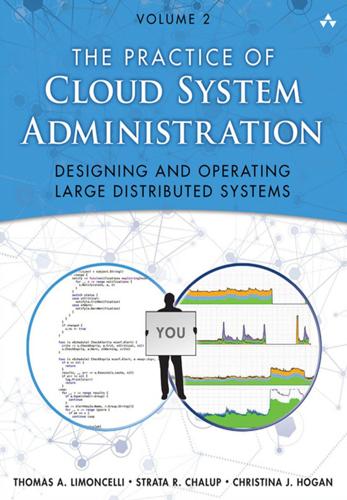
The Practice of Cloud System Administration: DevOps and SRE Practices for Web Services, Volume 2
by
Thomas A. Limoncelli
,
Strata R. Chalup
and
Christina J. Hogan
Published 27 Aug 2014
Additional services are announced periodically. 3.1.3 Software as a Service SaaS is what we used to call a web site before the marketing department decided adding “as a service” made it more appealing. SaaS is a web-accessible application. The application is the service, and you interact with it as you would any web site. The provider handles all the details of hardware, operating system, and platform. Some common examples include Salesforce.com, which replaces locally run sales team management software; Google Apps, which eliminates the need for locally run email and calendaring software; and Basecamp, which replaces locally run project management software. Nearly any business process that is common among many companies is offered as SaaS: human resources (HR) functions such as hiring and performance management; accounting functions such as payroll, expense tracking, and general ledgers; IT incident, request, and change management systems; and many aspects of marketing and sales management.
…
Rather than having to speak with a salesperson to sign up, signing up should be possible via the web site, possibly requiring submission of a credit card or other payment information. Facebook would not have gotten to where it is today if each user had to first speak to a customer service representative and arrange for an account to be created. Importing data and enabling features should also be self-service. A product like Salesforce.com would not have been able to grow at the rate it has if importing data or other operations required working with customer support personnel. It is also important that people can leave the service in a self-service manner. This means users should be able to export or retrieve their data and close their accounts, even if this makes it easier to leave and move to a competitor.
…
W. W., 175 RPC (Remote Procedure Call) protocol, 41 RSS feeds of build status, 205 Rubin, A. D., 79 Ruby language, 259–260 RUM (real user monitoring), 333 “Run run run dead” problem, 462 SaaS (Software as a Service), 51, 55–56 Safeguards, automation for, 253 Safety for automation, 249 Salesforce.com, 55–56 Sample launch readiness review survey, 157–158 Sandbox environments, 197 Satellites in cloud-scale service, 83 Scalability Rules: 50 Principles for Scaling Web Sites, 100 Scale operations at, 152–155 visibility at, 10–11 Scaling, 95, 475 AKF Scaling Cube, 99–104 automation for, 252 Big O notation, 476–479 caching, 104–110 cloud computing era, 471 constant, linear, and exponential, 475–476 content delivery networks, 114–116 data sharding, 110–112 database access, 37 dot-bomb era, 462–463 exercises, 116–117 first web era, 456–457 general strategy, 96–98 monitoring, 350 PaaS services, 54 pre-web era, 454 queueing, 113–114 recommended reading, 489 in resiliency, 135 scaling out, 99–101 scaling up, 98–99 second web era, 467–468 small-scale computing systems, 470 summary, 116 threading, 112–113 three-tier web service, 76 Schedules continuous deployment, 238 oncall, 288–291 Schema changes, 234–236 Schlossnagle, Theo, 31, 172 Schroeder, B., 134 Scope in disaster preparedness, 317–318 Scraping attacks, 140–141 Scripting languages, 259–260 SDLC (Software Development Life Cycle), 184–185 SeaLand company, 62 Second web era (2003-2010), 465–469 Secondary resources in capacity planning, 372 Security in four-tier web service, 79 See, K.

The Bill Gates Problem: Reckoning With the Myth of the Good Billionaire
by
Tim Schwab
Published 13 Nov 2023
Others, including Bill Gates, had given Pierce the impression that he would be a “digital visionary,” not simply an IT janitor. Pierce filed a lawsuit, claiming he had been misled about his job description. He asked to be compensated for the income he would have made had he stayed in his previous job, as an executive at Salesforce. In 2018, courts ruled in favor of Pierce, awarding him almost five million dollars. Bill Gates, the son of a corporate lawyer and someone extremely comfortable using the courts, wasn’t about to accept defeat. The foundation proclaimed its own victory, citing Pierce’s failure to demonstrate one claim, negligent misrepresentation.
…
The National Portrait Gallery reports that the commission was decided upon in May 2008, a time when Stonesifer was on the Smithsonian’s Board of Regents. She became the chair a few months later. Also notable: Even after she left her CEO position at the Gates Foundation, she remained a senior adviser there. “on a safari”: Melinda Gates, “The Story of How Melinda Gates Met Bill Gates,” Interview, Salesforce, December 1, 2016, https://www.youtube.com/watch?v=VqsFbzTcpdc. even their own wine expert: Joss Kent (as told to Charlotte Metcalf), “Travel Safaris,” Spectator, July 18, 2009, https://webcache.googleusercontent.com/search?q=cache:tx14f54M4J4J:https://reader.exacteditions.com/issues/5493/page/44&cd=3&hl=en&ct=clnk&gl=us&client=firefox-b-1-d.
…
Rockefeller Foundation Rockefeller Philanthropy Advisors Rodale Institute Roe v. Wade Rolling Stone Roosevelt, Theodore Rosenberg, Tina Rotary Foundation RotaTeq vaccine rotavirus vaccines Roundup Roux Prize Rubin, Eric Rubio, Marco Russia Rust, Tom Rutazibwa, Olivia U. Rwanda Sackler family Salesforce Sanders, Bernie San Diego equestrian facility Sanford, Stefanie Sanger, Margaret sanitation Sanofi Pasteur Sayana Press schistosomiasis vaccine Schmidt, Eric Schmidt Futures Schock, Aaron schools charter private Schrödinger company Schurman, Rachel Schwartz, Andrew Scientific American Scott, Cheryl Scott, MacKenzie Scripps Seattle Seattle Post-Intelligencer Seattle Times Securities and Exchange Commission Senderowicz, Leigh Senegal Serum Institute of India “Seven Million Lives Saved” (McArthur) sex trafficking sexually transmitted diseases sex workers Seychelles Shah, Rajiv Shapiro, Ari Sheppard, Kate shigella vaccines Sierra Leone Silicon Valley Silicon Valley (TV show) Silver Lake Simpsons, The Sinema, Kyrsten Singapore Singer, Peter Sinopharm 60 Minutes (TV show) SK bioscience Sky News Slalom consulting Slate Slate Group Slim, Carlos smallpox Smith, Jeremy N.
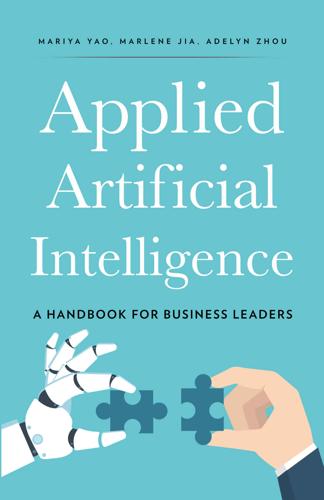
Applied Artificial Intelligence: A Handbook for Business Leaders
by
Mariya Yao
,
Adelyn Zhou
and
Marlene Jia
Published 1 Jun 2018
West Elm’s New AI Tool Scans Pinterest to Recommend Furnishings. Fast Company. Retrieved from https://goo.gl/K5etC7 (100) Cotrupe, J. (2016, April 22). Conversational A.I.: It’s A Bot Time for a New Conversation on Customer Engagement (Report # D564-00-EA. Frost & Sullivan. 2016. Retrieved from https://goo.gl/dKv (101) Salesforce Research. (2017, January 05). Second Annual State of Service: Insights and trends from over 2,600 global service trailblazers. Retrieved from https://goo.gl/o4J9YG (102) Witcher, B., Wigder, Z. D., Leggett, K., & Katz, R. (2014, October 29). Good Alone, Better Together: Integrating Chat And Virtual Agents.

Super Thinking: The Big Book of Mental Models
by
Gabriel Weinberg
and
Lauren McCann
Published 17 Jun 2019
In contrast, you can deal individually with one thousand customers and get each of them to “pay” you more. In the business context, hunting different customers means deciding to put out a free or minimally priced service to millions of people (like Spotify or Snap) versus selling a high-priced product to large enterprises (like Oracle or Salesforce). Or, within an industry, it’s deciding between customer segments that choose to pay much different amounts, such as Rolls-Royce and Lamborghini versus Kia and Hyundai in the automobile sector. In a political context, a candidate in a local election can try to meet all their constituents, but this type of outreach becomes impossible in larger elections.
…
Department of, 97 just world hypothesis, 22 Kahneman, Daniel, 9, 30, 90 karoshi, 82 Kauffman Foundation, 122 keeping up with the Joneses, 210–11 key person insurance, 305 King, Martin Luther, Jr., 129, 225 KISS (Keep It Simple, Stupid), 10 knowledge, institutional, 257 knowns: known, 197 unknown, 198, 203 known unknowns, 197–98 Knox, Robert E., 91 Kodak, 302–3, 308–10, 312 Koenigswald, Gustav Heinrich Ralph von, 50 Kohl’s, 15 Kopelman, Josh, 301 Korea, 229, 231, 235, 238 Kristof, Nicholas, 254 Krokodil, 49 Kruger, Justin, 269 Kuhn, Thomas, 24 Kutcher, Ashton, 121 labor market, 283–84 laggards, 116–17 landlords, 178, 179, 182, 188 Laplace, Pierre-Simon, 132 large numbers, law of, 143–44 Latané, Bibb, 259 late majority, 116–17 lateral thinking, 201 law of diminishing returns, 81–83 law of diminishing utility, 81–82 law of inertia, 102–3, 105–8, 110, 112, 113, 119, 120, 129, 290, 296 law of large numbers, 143–44 law of small numbers, 143, 144 Lawson, Jerry, 289 lawsuits, 231 leadership, 248, 255, 260, 265, 271, 275, 276, 278–80 learned helplessness, 22–23 learning, 262, 269, 295 from past events, 271–72 learning curve, 269 Le Chatelier, Henri-Louis, 193 Le Chatelier’s principle, 193–94 left to their own devices, 275 Leibniz, Gottfried, 291 lemons into lemonade, 121 Lernaean Hydra, 51 Levav, Jonathan, 63 lever, 78 leverage, 78–80, 83, 115 high-leverage activities, 79–81, 83, 107, 113 leveraged buyout, 79 leveraging up, 78–79 Levitt, Steven, 44–45 Levitt, Theodore, 296 Lewis, Michael, 289 Lichtenstein, Sarah, 17 lightning, 145 liking, 216–17, 220 Lincoln, Abraham, 97 Lindy effect, 105, 106, 112 line in the sand, 238 LinkedIn, 7 littering, 41, 42 Lloyd, William, 37 loans, 180, 182–83 lobbyists, 216, 306 local optimum, 195–96 lock-in, 305 lock in your gains, 90 long-term negative scenarios, 60 loose versus tight, in organizational culture, 274 Lorenz, Edward, 121 loss, 91 loss aversion, 90–91 loss leader strategy, 236–37 lost at sea, 68 lottery, 85–86, 126, 145 low-context communication, 273–74 low-hanging fruit, 81 loyalists versus mercenaries, 276–77 luck, 128 making your own, 122 luck surface area, 122, 124, 128 Luft, Joseph, 196 LuLaRoe, 217 lung cancer, 133–34, 173 Lyautey, Hubert, 276 Lyft, ix, 288 Madoff, Bernie, 232 magnetic resonance imaging (MRI), 291 magnets, 194 maker’s schedule versus manager’s schedule, 277–78 Making of Economic Society, The (Heilbroner), 49 mammograms, 160–61 management debt, 56 manager’s schedule versus maker’s schedule, 277–78 managing to the person, 255 Manhattan Project, 195 Man in the High Castle, The (Dick), 201 manipulative insincerity, 264 man-month, 279 Mansfield, Peter, 291 manufacturer’s suggested retail price (MSRP), 15 margin of error, 154 markets, 42–43, 46–47, 106 failure in, 47–49 labor, 283–84 market norms versus social norms, 222–24 market power, 283–85, 312 product/market fit, 292–96, 302 secondary, 281–82 winner-take-most, 308 marriage: divorce, 231, 305 same-sex, 117, 118 Maslow, Abraham, 177, 270–71 Maslow’s hammer, xi, 177, 255, 297, 317 Maslow’s hierarchy of needs, 270–71 mathematics, ix–x, 3, 4, 132, 178 Singapore math, 23–24 matrices, 2 × 2, 125–26 consensus-contrarian, 285–86, 290 consequence-conviction, 265–66 Eisenhower Decision Matrix, 72–74, 89, 124, 125 of knowns and unknowns, 197–98 payoff, 212–15, 238 radical candor, 263–64 scatter plot on top of, 126 McCain, John, 241 mean, 146, 149, 151 regression to, 146, 286 standard deviation from, 149, 150–51, 154 variance from, 149 measles, 39, 40 measurable target, 49–50 median, 147 Medicare, 54–55 meetings, 113 weekly one-on-one, 262–63 Megginson, Leon, 101 mental models, vii–xii, 2, 3, 31, 35, 65, 131, 289, 315–17 mentorship, 23, 260, 262, 264, 265 mercenaries versus loyalists, 276–77 Merck, 283 merry-go-round, 108 meta-analysis, 172–73 Metcalfe, Robert, 118 Metcalfe’s law, 118 #MeToo movement, 113 metrics, 137 proxy, 139 Michaels, 15 Microsoft, 241 mid-mortems, 92 Miklaszewski, Jim, 196 Milgram, Stanley, 219, 220 military, 141, 229, 279, 294, 300 milkshakes, 297 Miller, Reggie, 246 Mills, Alan, 58 Mindset: The New Psychology of Success (Dweck), 266 mindset, fixed, 266–67, 272 mindset, growth, 266–67 minimum viable product (MVP), 7–8, 81, 294 mirroring, 217 mission, 276 mission statement, 68 MIT, 53, 85 moats, 302–5, 307–8, 310, 312 mode, 147 Moltke, Helmuth von, 7 momentum, 107–10, 119, 129 Monday morning quarterbacking, 271 Moneyball (Lewis), 289 monopolies, 283, 285 Monte Carlo fallacy, 144 Monte Carlo simulation, 195 Moore, Geoffrey, 311 moral hazard, 43–45, 47 most respectful interpretation (MRI), 19–20 moths, 99–101 Mountain Dew, 35 moving target, 136 multiple discovery, 291–92 multiplication, ix, xi multitasking, 70–72, 74, 76, 110 Munger, Charlie, viii, x–xi, 30, 286, 318 Murphy, Edward, 65 Murphy’s law, 64–65, 132 Musk, Elon, 5, 302 mutually assured destruction (MAD), 231 MVP (minimum viable product), 7–8, 81, 294 Mylan, 283 mythical man-month, 279 name-calling, 226 NASA, 4, 32, 33 Nash, John, 213 Nash equilibrium, 213–14, 226, 235 National Football League (NFL), 225–26 National Institutes of Health, 36 National Security Agency, 52 natural selection, 99–100, 102, 291, 295 nature versus nurture, 249–50 negative compounding, 85 negative externalities, 41–43, 47 negative returns, 82–83, 93 negotiations, 127–28 net benefit, 181–82, 184 Netflix, 69, 95, 203 net present value (NPV), 86, 181 network effects, 117–20, 308 neuroticism, 250 New Orleans, La., 41 Newport, Cal, 72 news headlines, 12–13, 221 newspapers, 106 Newsweek, 290 Newton, Isaac, 102, 291 New York Times, 27, 220, 254 Nielsen Holdings, 217 ninety-ninety rule, 89 Nintendo, 296 Nobel Prize, 32, 42, 220, 291, 306 nocebo effect, 137 nodes, 118, 119 No Fly List, 53–54 noise and signal, 311 nonresponse bias, 140, 142, 143 normal distribution (bell curve), 150–52, 153, 163–66, 191 North Korea, 229, 231, 238 north star, 68–70, 275 nothing in excess, 60 not ready for prime time, 242 “now what” questions, 291 NPR, 239 nuclear chain reaction, viii, 114, 120 nuclear industry, 305–6 nuclear option, 238 Nuclear Regulatory Commission (NRC), 305–6 nuclear weapons, 114, 118, 195, 209, 230–31, 233, 238 nudging, 13–14 null hypothesis, 163, 164 numbers, 130, 146 large, law of, 143–44 small, law of, 143, 144 see also data; statistics nurses, 284 Oakland Athletics, 289 Obama, Barack, 64, 241 objective versus subjective, in organizational culture, 274 obnoxious aggression, 264 observe, orient, decide, act (OODA), 294–95 observer effect, 52, 54 observer-expectancy bias, 136, 139 Ockham’s razor, 8–10 Odum, William E., 38 oil, 105–6 Olympics, 209, 246–48, 285 O’Neal, Shaquille, 246 one-hundred-year floods, 192 Onion, 211–12 On the Origin of Species by Means of Natural Selection (Darwin), 100 OODA loop, 294–95 openness to experience, 250 Operation Ceasefire, 232 opinion, diversity of, 205, 206 opioids, 36 opportunity cost, 76–77, 80, 83, 179, 182, 188, 305 of capital, 77, 179, 182 optimistic probability bias, 33 optimization, premature, 7 optimums, local and global, 195–96 optionality, preserving, 58–59 Oracle, 231, 291, 299 order, 124 balance between chaos and, 128 organizations: culture in, 107–8, 113, 273–80, 293 size and growth of, 278–79 teams in, see teams ostrich with its head in the sand, 55 out-group bias, 127 outliers, 148 Outliers (Gladwell), 261 overfitting, 10–11 overwork, 82 Paine, Thomas, 221–22 pain relievers, 36, 137 Pampered Chef, 217 Pangea, 24–25 paradigm shift, 24, 289 paradox of choice, 62–63 parallel processing, 96 paranoia, 308, 309, 311 Pareto, Vilfredo, 80 Pareto principle, 80–81 Pariser, Eli, 17 Parkinson, Cyril, 74–75, 89 Parkinson’s law, 89 Parkinson’s Law (Parkinson), 74–75 Parkinson’s law of triviality, 74, 89 passwords, 94, 97 past, 201, 271–72, 309–10 Pasteur, Louis, 26 path dependence, 57–59, 194 path of least resistance, 88 Patton, Bruce, 19 Pauling, Linus, 220 payoff matrix, 212–15, 238 PayPal, 72, 291, 296 peak, 105, 106, 112 peak oil, 105 Penny, Jonathon, 52 pent-up energy, 112 perfect, 89–90 as enemy of the good, 61, 89–90 personality traits, 249–50 person-month, 279 perspective, 11 persuasion, see influence models perverse incentives, 50–51, 54 Peter, Laurence, 256 Peter principle, 256, 257 Peterson, Tom, 108–9 Petrified Forest National Park, 217–18 Pew Research, 53 p-hacking, 169, 172 phishing, 97 phones, 116–17, 290 photography, 302–3, 308–10 physics, x, 114, 194, 293 quantum, 200–201 pick your battles, 238 Pinker, Steven, 144 Pirahã, x Pitbull, 36 pivoting, 295–96, 298–301, 308, 311, 312 placebo, 137 placebo effect, 137 Planck, Max, 24 Playskool, 111 Podesta, John, 97 point of no return, 244 Polaris, 67–68 polarity, 125–26 police, in organizations and projects, 253–54 politics, 70, 104 ads and statements in, 225–26 elections, 206, 218, 233, 241, 271, 293, 299 failure and, 47 influence in, 216 predictions in, 206 polls and surveys, 142–43, 152–54, 160 approval ratings, 152–54, 158 employee engagement, 140, 142 postmortems, 32, 92 Potemkin village, 228–29 potential energy, 112 power, 162 power drills, 296 power law distribution, 80–81 power vacuum, 259–60 practice, deliberate, 260–62, 264, 266 precautionary principle, 59–60 Predictably Irrational (Ariely), 14, 222–23 predictions and forecasts, 132, 173 market for, 205–7 superforecasters and, 206–7 PredictIt, 206 premature optimization, 7 premises, see principles pre-mortems, 92 present bias, 85, 87, 93, 113 preserving optionality, 58–59 pressure point, 112 prices, 188, 231, 299 arbitrage and, 282–83 bait and switch and, 228, 229 inflation in, 179–80, 182–83 loss leader strategy and, 236–37 manufacturer’s suggested retail, 15 monopolies and, 283 principal, 44–45 principal-agent problem, 44–45 principles (premises), 207 first, 4–7, 31, 207 prior, 159 prioritizing, 68 prisoners, 63, 232 prisoner’s dilemma, 212–14, 226, 234–35, 244 privacy, 55 probability, 132, 173, 194 bias, optimistic, 33 conditional, 156 probability distributions, 150, 151 bell curve (normal), 150–52, 153, 163–66, 191 Bernoulli, 152 central limit theorem and, 152–53, 163 fat-tailed, 191 power law, 80–81 sample, 152–53 pro-con lists, 175–78, 185, 189 procrastination, 83–85, 87, 89 product development, 294 product/market fit, 292–96, 302 promotions, 256, 275 proximate cause, 31, 117 proxy endpoint, 137 proxy metric, 139 psychology, 168 Psychology of Science, The (Maslow), 177 Ptolemy, Claudius, 8 publication bias, 170, 173 public goods, 39 punching above your weight, 242 p-values, 164, 165, 167–69, 172 Pygmalion effect, 267–68 Pyrrhus, King, 239 Qualcomm, 231 quantum physics, 200–201 quarantine, 234 questions: now what, 291 what if, 122, 201 why, 32, 33 why now, 291 quick and dirty, 234 quid pro quo, 215 Rabois, Keith, 72, 265 Rachleff, Andy, 285–86, 292–93 radical candor, 263–64 Radical Candor (Scott), 263 radiology, 291 randomized controlled experiment, 136 randomness, 201 rats, 51 Rawls, John, 21 Regan, Ronald, 183 real estate agents, 44–45 recessions, 121–22 reciprocity, 215–16, 220, 222, 229, 289 recommendations, 217 red line, 238 referrals, 217 reframe the problem, 96–97 refugee asylum cases, 144 regression to the mean, 146, 286 regret, 87 regulations, 183–84, 231–32 regulatory capture, 305–7 reinventing the wheel, 92 relationships, 53, 55, 63, 91, 111, 124, 159, 271, 296, 298 being locked into, 305 dating, 8–10, 95 replication crisis, 168–72 Republican Party, 104 reputation, 215 research: meta-analysis of, 172–73 publication bias and, 170, 173 systematic reviews of, 172, 173 see also experiments resonance, 293–94 response bias, 142, 143 responsibility, diffusion of, 259 restaurants, 297 menus at, 14, 62 RetailMeNot, 281 retaliation, 238 returns: diminishing, 81–83 negative, 82–83, 93 reversible decisions, 61–62 revolving door, 306 rewards, 275 Riccio, Jim, 306 rise to the occasion, 268 risk, 43, 46, 90, 288 cost-benefit analysis and, 180 de-risking, 6–7, 10, 294 moral hazard and, 43–45, 47 Road Ahead, The (Gates), 69 Roberts, Jason, 122 Roberts, John, 27 Rogers, Everett, 116 Rogers, William, 31 Rogers Commission Report, 31–33 roles, 256–58, 260, 271, 293 roly-poly toy, 111–12 root cause, 31–33, 234 roulette, 144 Rubicon River, 244 ruinous empathy, 264 Rumsfeld, Donald, 196–97, 247 Rumsfeld’s Rule, 247 Russia, 218, 241 Germany and, 70, 238–39 see also Soviet Union Sacred Heart University (SHU), 217, 218 sacrifice play, 239 Sagan, Carl, 220 sales, 81, 216–17 Salesforce, 299 same-sex marriage, 117, 118 Sample, Steven, 28 sample distribution, 152–53 sample size, 143, 160, 162, 163, 165–68, 172 Sánchez, Ricardo, 234 sanctions and fines, 232 Sanders, Bernie, 70, 182, 293 Sayre, Wallace, 74 Sayre’s law, 74 scarcity, 219, 220 scatter plot, 126 scenario analysis (scenario planning), 198–99, 201–3, 207 schools, see education and schools Schrödinger, Erwin, 200 Schrödinger’s cat, 200 Schultz, Howard, 296 Schwartz, Barry, 62–63 science, 133, 220 cargo cult, 315–16 Scientific Autobiography and other Papers (Planck), 24 scientific evidence, 139 scientific experiments, see experiments scientific method, 101–2, 294 scorched-earth tactics, 243 Scott, Kim, 263 S curves, 117, 120 secondary markets, 281–82 second law of thermodynamics, 124 secrets, 288–90, 292 Securities and Exchange Commission, U.S., 228 security, false sense of, 44 security services, 229 selection, adverse, 46–47 selection bias, 139–40, 143, 170 self-control, 87 self-fulfilling prophecies, 267 self-serving bias, 21, 272 Seligman, Martin, 22 Semmelweis, Ignaz, 25–26 Semmelweis reflex, 26 Seneca, Marcus, 60 sensitivity analysis, 181–82, 185, 188 dynamic, 195 Sequoia Capital, 291 Sessions, Roger, 8 sexual predators, 113 Shakespeare, William, 105 Sheets Energy Strips, 36 Shermer, Michael, 133 Shirky, Clay, 104 Shirky principle, 104, 112 Short History of Nearly Everything, A (Bryson), 50 short-termism, 55–56, 58, 60, 68, 85 side effects, 137 signal and noise, 311 significance, 167 statistical, 164–67, 170 Silicon Valley, 288, 289 simulations, 193–95 simultaneous invention, 291–92 Singapore math, 23–24 Sir David Attenborough, RSS, 35 Skeptics Society, 133 sleep meditation app, 162–68 slippery slope argument, 235 slow (high-concentration) thinking, 30, 33, 70–71 small numbers, law of, 143, 144 smartphones, 117, 290, 309, 310 smoking, 41, 42, 133–34, 139, 173 Snap, 299 Snowden, Edward, 52, 53 social engineering, 97 social equality, 117 social media, 81, 94, 113, 217–19, 241 Facebook, 18, 36, 94, 119, 219, 233, 247, 305, 308 Instagram, 220, 247, 291, 310 YouTube, 220, 291 social networks, 117 Dunbar’s number and, 278 social norms versus market norms, 222–24 social proof, 217–20, 229 societal change, 100–101 software, 56, 57 simulations, 192–94 solitaire, 195 solution space, 97 Somalia, 243 sophomore slump, 145–46 South Korea, 229, 231, 238 Soviet Union: Germany and, 70, 238–39 Gosplan in, 49 in Cold War, 209, 235 space exploration, 209 spacing effect, 262 Spain, 243–44 spam, 37, 161, 192–93, 234 specialists, 252–53 species, 120 spending, 38, 74–75 federal, 75–76 spillover effects, 41, 43 sports, 82–83 baseball, 83, 145–46, 289 football, 226, 243 Olympics, 209, 246–48, 285 Spotify, 299 spreadsheets, 179, 180, 182, 299 Srinivasan, Balaji, 301 standard deviation, 149, 150–51, 154 standard error, 154 standards, 93 Stanford Law School, x Starbucks, 296 startup business idea, 6–7 statistics, 130–32, 146, 173, 289, 297 base rate in, 157, 159, 160 base rate fallacy in, 157, 158, 170 Bayesian, 157–60 confidence intervals in, 154–56, 159 confidence level in, 154, 155, 161 frequentist, 158–60 p-hacking in, 169, 172 p-values in, 164, 165, 167–69, 172 standard deviation in, 149, 150–51, 154 standard error in, 154 statistical significance, 164–67, 170 summary, 146, 147 see also data; experiments; probability distributions Staubach, Roger, 243 Sternberg, Robert, 290 stock and flow diagrams, 192 Stone, Douglas, 19 stop the bleeding, 234 strategy, 107–8 exit, 242–43 loss leader, 236–37 pivoting and, 295–96, 298–301, 308, 311, 312 tactics versus, 256–57 strategy tax, 103–4, 112 Stiglitz, Joseph, 306 straw man, 225–26 Streisand, Barbra, 51 Streisand effect, 51, 52 Stroll, Cliff, 290 Structure of Scientific Revolutions, The (Kuhn), 24 subjective versus objective, in organizational culture, 274 suicide, 218 summary statistics, 146, 147 sunk-cost fallacy, 91 superforecasters, 206–7 Superforecasting (Tetlock), 206–7 super models, viii–xii super thinking, viii–ix, 3, 316, 318 surface area, 122 luck, 122, 124, 128 surgery, 136–37 Surowiecki, James, 203–5 surrogate endpoint, 137 surveys, see polls and surveys survivorship bias, 140–43, 170, 272 sustainable competitive advantage, 283, 285 switching costs, 305 systematic review, 172, 173 systems thinking, 192, 195, 198 tactics, 256–57 Tajfel, Henri, 127 take a step back, 298 Taleb, Nassim Nicholas, 2, 105 talk past each other, 225 Target, 236, 252 target, measurable, 49–50 taxes, 39, 40, 56, 104, 193–94 T cells, 194 teams, 246–48, 275 roles in, 256–58, 260 size of, 278 10x, 248, 249, 255, 260, 273, 280, 294 Tech, 83 technical debt, 56, 57 technologies, 289–90, 295 adoption curves of, 115 adoption life cycles of, 116–17, 129, 289, 290, 311–12 disruptive, 308, 310–11 telephone, 118–19 temperature: body, 146–50 thermostats and, 194 tennis, 2 10,000-Hour Rule, 261 10x individuals, 247–48 10x teams, 248, 249, 255, 260, 273, 280, 294 terrorism, 52, 234 Tesla, Inc., 300–301 testing culture, 50 Tetlock, Philip E., 206–7 Texas sharpshooter fallacy, 136 textbooks, 262 Thaler, Richard, 87 Theranos, 228 thermodynamics, 124 thermostats, 194 Thiel, Peter, 72, 288, 289 thinking: black-and-white, 126–28, 168, 272 convergent, 203 counterfactual, 201, 272, 309–10 critical, 201 divergent, 203 fast (low-concentration), 30, 70–71 gray, 28 inverse, 1–2, 291 lateral, 201 outside the box, 201 slow (high-concentration), 30, 33, 70–71 super, viii–ix, 3, 316, 318 systems, 192, 195, 198 writing and, 316 Thinking, Fast and Slow (Kahneman), 30 third story, 19, 92 thought experiment, 199–201 throwing good money after bad, 91 throwing more money at the problem, 94 tight versus loose, in organizational culture, 274 timeboxing, 75 time: management of, 38 as money, 77 work and, 89 tipping point, 115, 117, 119, 120 tit-for-tat, 214–15 Tōgō Heihachirō, 241 tolerance, 117 tools, 95 too much of a good thing, 60 top idea in your mind, 71, 72 toxic culture, 275 Toys “R” Us, 281 trade-offs, 77–78 traditions, 275 tragedy of the commons, 37–40, 43, 47, 49 transparency, 307 tribalism, 28 Trojan horse, 228 Truman Show, The, 229 Trump, Donald, 15, 206, 293 Trump: The Art of the Deal (Trump and Schwartz), 15 trust, 20, 124, 215, 217 trying too hard, 82 Tsushima, Battle of, 241 Tupperware, 217 TurboTax, 104 Turner, John, 127 turn lemons into lemonade, 121 Tversky, Amos, 9, 90 Twain, Mark, 106 Twitter, 233, 234, 296 two-front wars, 70 type I error, 161 type II error, 161 tyranny of small decisions, 38, 55 Tyson, Mike, 7 Uber, 231, 275, 288, 290 Ulam, Stanislaw, 195 ultimatum game, 224, 244 uncertainty, 2, 132, 173, 180, 182, 185 unforced error, 2, 10, 33 unicorn candidate, 257–58 unintended consequences, 35–36, 53–55, 57, 64–65, 192, 232 Union of Concerned Scientists (UCS), 306 unique value proposition, 211 University of Chicago, 144 unknown knowns, 198, 203 unknowns: known, 197–98 unknown, 196–98, 203 urgency, false, 74 used car market, 46–47 U.S.
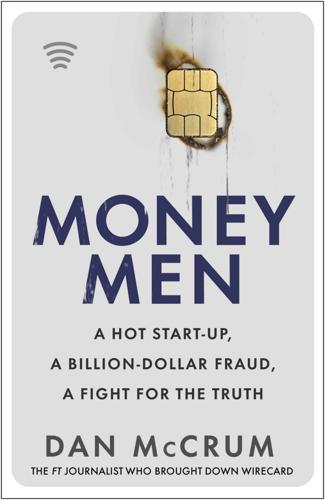
Money Men: A Hot Startup, a Billion Dollar Fraud, a Fight for the Truth
by
Dan McCrum
Published 15 Jun 2022
He couldn’t be fired because his job was essentially rebuilding the software the company used to process payments from scratch, and the project was too important and too far along to start over with someone new. Instead the CEO kept a close eye on Marsalek, who was the picture of competence as he ticked off each milestone. With everything on track, Wirecard’s salesforce began to pitch the new system to customers. A year in the making, it would be more secure, more transparent, easier to use. When the CEO asked for a demonstration, Marsalek demurred. ‘I’m sure that’s not necessary.’ The man insisted and Marsalek offered more objections. It would be better to wait till the user interface was polished.
…
Halfway down the stairs between their floors, Marsalek finally came clean. He had nothing to demonstrate, only scattered pieces of code that didn’t work. It was a disaster which almost killed the company: the problem which Markus Braun was hired to fix. Under the two Austrians, Wirecard’s systems were a series of improvisations as the salesforce upstairs sold features the company didn’t yet have. A case in point was a project for a hotel chain, which wanted tiered access to details of customer payments based on employee rank. A mere clerk at reception would see relevant transactions for their hotel, the head of Europe would get everything, with various gradations in between.

The Code: Silicon Valley and the Remaking of America
by
Margaret O'Mara
Published 8 Jul 2019
Angel, “High-Technology Agglomeration and the Labor Market: The Case of Silicon Valley,” in Martin Kenney, ed., Understanding Silicon Valley: The Anatomy of an Entrepreneurial Region (Stanford, Calif.: Stanford University Press, 2000), 131; “Salesforce: 100 Best Companies to Work For 2015,” Fortune, September 21, 2015, http://fortune.com/best-companies/2015/salesforce-com-8/, archived at https://perma.cc/96UG-X9LH. 13. Bylinsky, The Innovation Millionaires, 160. 14. Judy Vadasz to Leslie Berlin, The Man Behind the Microchip: Robert Noyce and the Invention of Silicon Valley (Oxford, U.K.: Oxford University Press, 2005), 214.
…
A half century later, the Valley was a pulsing sprawl of million-dollar bungalows and high-priced boutiques, with clusters of glass-sheathed office parks at every exit of its traffic-choked highways. San Francisco, once so remote from the Valley somnolence, now was a critical part of the Valley’s high-tech realm. Twitter and enterprise-software giant Salesforce had their headquarters in the city. Private buses launched by Google and Facebook rolled up and down Highway 101, easing the grueling commutes of their many San Francisco–based employees and sparking protest from city folk who saw the vehicles as rolling symbols of tech gluttony. Consumers across the globe used the platforms of Bay Area and Seattle tech giants every day; everyone knew about Sergey and Larry and Mark and Steve and Jeff.
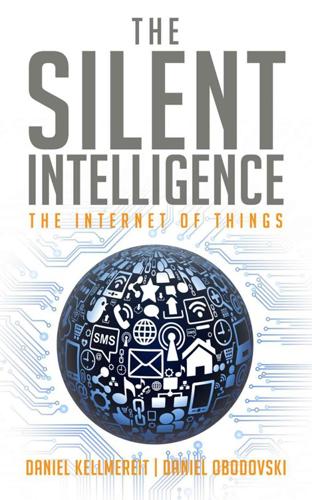
The Silent Intelligence: The Internet of Things
by
Daniel Kellmereit
and
Daniel Obodovski
Published 19 Sep 2013
But, according to Sanjay, we may not have to compromise much longer: Out of all these compromises, IT integration is a misnomer. What you’re trying to do is deal with the compromises and write code to deal with the compromises. Fundamentally, I believe IT integration is going to disappear. What is going to happen though, I think, is that everything is going to go to a cloud, like a Salesforce.com model. Things are going to become much more standardized, much more like take it or leave it. People aren’t going to use that device that is running a bad piece of software. There is going to be some very fundamental changes in the software world. Traditional software just can’t handle it. What I say is forget it, don’t try to integrate with traditional software systems.
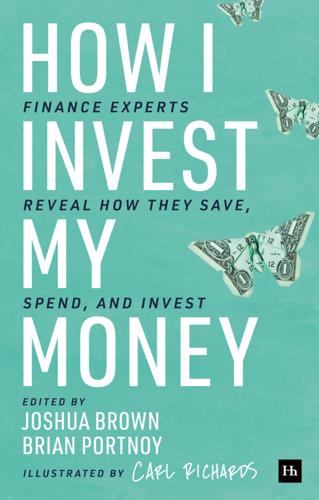
How I Invest My Money: Finance Experts Reveal How They Save, Spend, and Invest
by
Brian Portnoy
and
Joshua Brown
Published 17 Nov 2020
I am easy to find on StockTwits and Twitter, and every day on my blog I share what we are looking for. Knowing what we are looking for is part of that edge that helps me write everyday and live just enough in the future to make a difference. My partner Gary has built four enterprise businesses, one which went public and his latest acquired by Salesforce, where he worked for four years. Gary knows modern enterprise software and how to grow teams and position products. Between our homes, Social Leverage, my other venture investments and Charlie at Compound, that covers about 90% of our net worth. Because of the high risk and illiquid nature of my career as a venture capitalist, I tend to keep a high cash position with my remaining liquid net worth.
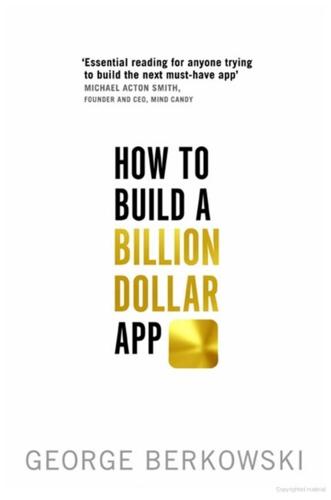
How to Build a Billion Dollar App: Discover the Secrets of the Most Successful Entrepreneurs of Our Time
by
George Berkowski
Published 3 Sep 2014
My only criticism is that it does get expensive (but feel free to try to negotiate with them – they are nice people). I have heard a lot of good reviews about KISSmetrics as well. It too, embodies this notion of an analytics-cum-dynamic-notifications platform, so it’s well worth checking it out. The world of CRM has changed a lot from the dinosaur days of enterprise-grade players such as Salesforce and ExactTarget. While those grandfathers have deep roots and tight contracts with big corporations, there are far more nimble, robust and progressive options like the waves of new analytics/CRM players we’ve looked at earlier. Hopefully, you’ve now got to thinking about how to get the most out of your existing users – and how to invest to make them happy.
…
Index Note: page numbers in bold refer to illustrations, page numbers in italics refer to information contained in tables. 99designs.com 111 500 Startups accelerator 136, 160 Accel Partners 3, 158, 261, 304, 321, 336, 383 accelerators 136, 159–60, 160 accountants 164, 316 accounting software 164 acquisition (of users) costs 148–9, 184, 236–7, 275–9, 282 and Facebook 271, 272, 273–4 for five hundred-million-dollar apps 327, 341–3 for hundred-million-dollar apps 252, 259, 266, 267–74, 275–84, 295–307 and incentive-based networks 270–1 international 295–307 for million dollar apps 136–7, 139, 140–51, 148–9, 153 and mobile social media channels 271–3, 272 and mobile user-acquisition channels 269–70 strategy 222–31 for ten-million-dollar apps 211–12, 213, 222–31, 236–7, 248–9 and traditional channels 268–9 and ‘viral’ growth 225, 278, 279–84 zero-user-acquisition cost 278 acquisitions 414–25 buying sustained growth 417–18 by non-tech corporations 418–20 initial public offerings 420–2 Waze 415–16 activation (user) 136, 137, 139, 153–4, 211–12, 213 Acton, Brian 54, 394 addiction, smartphone 30–1 Adler, Micah 269 administrators 409 AdMob 414–15 advertising 43 business model 67, 89–90 costs 140 and Facebook 271, 272, 273–4 mobile 148–9, 268–70, 272–3, 272 mobile social media 272–3, 272 mobile user-acquisition channels 269–70 outdoor 264 shunning of 42, 54–6 video ads 273 aesthetics 131 after product–market fit (APMF) 180 agencies 195–7, 264, 343 ‘agile coaches’ see scrum masters agile software development 192–3, 299, 315, 357, 377 Ahonen, Tomi 45 ‘aiming high’ 40–1 Airbnb 160, 301 alarm features 48 Albion 111 alerts 293 Alexa.com 146 Alibaba 227 ‘ALT tags’ 147 Amazon 7, 29, 131, 164, 227, 276, 366, 374–5, 401, 406 Amazon Web Services 374 American Express 347 Amobee 149 analytics 134–5, 149, 199, 205, 210, 212, 217–21, 294 and cohort analysis 287–8 Flurry 135, 149, 220 function 217–18 Google Analytics 135, 219–20, 345 limitations 284 Localytics 135, 221 and marketing 263 mistakes involving 218–19 Mixpanel.com tool 135, 217–18, 220–1, 287, 290–1, 345 Andreessen, Marc 180, 418–19 Andreessen Horowitz 72, 80, 180, 321, 383, 385, 418–19 Android (mobile operating system) 6, 23–4, 38, 415 advertising 274 audience size 119 beta testing 202 building apps for 116–22 and international apps 296 in Japan 306 scaling development and engineering 357–8 time spent on 26 and WhatsApp 55 Angel Capital Association 162 angel investors 154, 155–6, 323 AngelList 99, 131, 155, 159, 233 Angry Birds (game) 6, 42, 47, 57–8, 87, 89, 97 and application programming interface 36 delivering delight 207 design 131 funding 321 game in game 348–9 international growth 297–9 platform 117, 118 product extension 356 virality 282 annual offsites 379 annual revenue per user (ARPU) 215, 219, 232, 236 anonymity 43, 56–7 anti-poaching clauses 247 antidilution rights 245 API see application programming interface app descriptions 143 app development billion-dollar app 8, 389–425 CEO advice 406–13 getting acquired 414–25 people 395–405 process 390–1 five-hundred-million-dollar app 325–87 funding 328, 383–7 hiring staff 334–6, 337–40 killer product expansion 350–63 process 326–8 scaling 326, 330–6, 331–2 scaling marketing 341–9 scaling people 364–72, 377–9 scaling process 373–82 scaling product development 357–63 hundred-million-dollar app 251–324 international growth 295–307 process 252–4 product-market fit 255–6 retention of users 286–94 revenue engines 257–66, 275–85 user acquisition 267–74 million-dollar app 81–171 app Version 0.1 123–35 coding 133–4 design 129–33 feedback 127, 134–5 funding 152–60, 161–71, 176, 235–49 identity of the business 106–14 lean companies 115–22 metrics 136–9, 139 process 82–4 startup process 85–105 testing 126–8 user acquisition 140–51 ten-million-dollar app 173–249 growth engine 222–31, 235–49 metrics 211–21 new and improved Version 1.0 198–210 process 174–6 product–market fit 180–97 revenue engine 232–4 venture capital 235–49 app stores 22, 27–8, 33–4 see also Apple App Store; Google Play app-store optimisation (ASO) 142, 225 AppAnnie 205 Apple 19, 20, 31–2, 393 application programming interface 35–6 designers 129 Facetime app 46 iWatch 38–9 profit per employee 402–3 revenue per employee 401 visual voicemail 50 Worldwide Developers Conference (WWDC) 313 see also iPad; iPhone Apple App Store 22, 27, 32–3, 75, 88, 89, 117, 226 finding apps in 140, 141, 142–5 international apps 297–9 making submissions to 152–3 and profit per employee 403 ratings plus comments 204–5 Apple Enterprise Distribution 201–2 application programming interface (API) 35–6, 185, 360, 374 ARPU see annual revenue per user articles of incorporation 169 ASO see app-store optimisation Atari 20 Atomico 3, 261, 321, 383 attribution 227–31 for referrals 230–1 average transaction value (ATV) 214–15, 219, 232, 236, 387 Avis 95 backlinking to yourself 146 ‘bad leavers’ 247 Balsamiq.com 128 Banana Republic 352 bank accounts 164 banking 156–7 Bardin, Noam 43 Barr, Tom 338 Barra, Hugo 120, 306 Baseline Ventures 72 Baudu 226 beauty 131 BeeJiveIM 33 before product–market fit (BPMF) 180 ‘below the fold’ 143 Beluga Linguistics 297 Benchmark 75 benefits 398–400 beta testing 201–4 Betfair 358 Bezos, Jeff 366, 374 Bible apps 45 billion 9–10 Billion-Dollar Club 5 billionaires 9 Bing 226 ‘black-swan’ events 54 BlackBerry 23 Blank, Steve 257 Blogger 41 blood sugar monitoring devices 38 board seats 242, 243–4 board-member election consent 169 Bolt Peters 363 Booking.com 320 Bootstrap 145 Botha, Roelof 76, 77, 80 Box 7, 90, 276, 396–7, 411 brains 10 brainstorming 108 branding 111–13, 143, 263–4 Braun 129 Bregman, Jay xiii, 14–16, 95, 124, 209, 303 bridge loans 323 Brin, Sergey 366 Bring Your Own Infrastructure (BYOI) 17–18 Brougher, Francoise 340 Brown, Donald 44 Brown, Reggie 104–5 Bubble Witch 421 Buffet, Warren 4 build-measure-learn cycle 116 Burbn.com 72–4, 80 business advisors/coaches 103 business analysts 343 business culture 395–8 business goal setting 310–11 business models 67, 83, 87, 88–91, 175, 253, 259, 327, 351–2, 391, 400, 423–4 business success, engines of 183–4, 423–4 Business Wire 150 CAC see Customer Acquisition Cost Cagan, Marty 314 calendars 49 calorie measurement sensors 38 Cambridge Computer Scientists 160 camera feature 48 Camera+ app 48 Candy Crush Saga 6, 47, 87, 89, 131, 278–81, 318, 349, 421–2 card-readers 41–2 cash flow 164 CEOs see Chief Executive Officers CFOs see Chief Financial Officers channels incentive-based networks 270–1 mobile social-media 271–3, 272 mobile user-acquisition 269–70 source attribution 227–31 testing 224–7 traditional 268–9 viral 280–2 charging phones 49–50 Chartboost 149 chauffer hire see Uber app check-ins, location-based 72, 74 Chief Executive Officers (CEOs) 309, 380 advice from 406–13 and the long haul 68 and product centricity 185–6 role 337 Chief Financial Officers (CFOs) 316 Chief Operations Officers (COOs) 309, 326, 337–40, 380 Chief Technology Officers (CTOs) 186–7, 195 Chillingo 298 China 24–5, 146, 226, 306–7 Cisco 402 Clash of Clans (game) 6, 28, 36, 47, 87, 89, 97, 118, 227, 348–9, 398 Clements, Dave 120 Climate Corporation 412, 419 clock features 47 cloud-based software 67, 90 Clover 419 coding 133–4 cofounders 85, 91–105, 188, 191 chemistry 92–3 complementary skills 93 finding 96–9 level of control 94 passion 93–4 red flags 102–3 successful matches 104–5 testing out 100–2 cohort analysis 237, 287–8 Color.com (social photo-sharing) app 113, 255 colour schemes 111 Commodore 20 communication open 412–13 team 194 with users 208–9 Companiesmadesimple.com 163–4 computers 20–1, 29 conferences 97–8, 202, 312–13 confidentiality provisions 244 connectedness 30 ConnectU 105 consumer audience apps 233–4 content, fresh 147 contracts 165–6 convertible loans 163 Cook, Daren 112 cookies 228–9 Coors 348 COOs see Chief Operations Officers Cost Per Acquisition (CPA) 148–9 Cost Per Download (CPD) 148 Costolo, Dick 77–8, 79–80 costs, and user acquisition 148–9, 184, 236–7, 275–9, 282 Crash Bandicoot 33 crawlers 146–7 Cray-1 supercomputer 20 CRM see customer-relationship management CrunchBase 238 CTOs see Chief Technology Officers Customer Acquisition Cost (CAC) 148–9, 184, 236–7, 275–9 customer lifecycle 212–14 customer segments 346–7 customer-centric approach 344 customer-relationship management (CRM) 290–4, 343 customer-support 208–9 Cutright, Alyssa 369 daily active users (DAUs) 142 D’Angelo, Adam 75–6 data 284–5, 345–7 data engineers 284 dating, online 14, 87–8, 101–2, 263 decision making 379–82, 407–8 defining apps 31–4 delegation 407 delight, delivery 205–7 design 82, 129–33, 206–7 responsive 144 designers 132, 189–91, 363, 376 developer meetups 97 developers see engineers/developers development see app development; software development development agencies 196 ‘development sprint’ 192 Devine, Rory 358–9 Digital Sky Technologies 385 directors of finance 316–17 Distimo 205 DLD 97 Doerr, John 164, 310 Doll, Evan 42–3, 105 domain names 109–10 international 146 protection 145–6 Domainnamesoup.com 109 Dorsey, Jack 41, 58, 72, 75–7, 79–80, 104, 112, 215–16, 305, 312, 412–13 ‘double-trigger’ vesting 247 DoubleClick 414 Dow Jones VentureSource 64 down rounds 322–3 downloads, driving 150–1 drag along rights 245 Dribbble.com 132 Dropbox 7, 90, 131, 276 CEO 407, 410–11 funding 160 scaling 336 staff 399 Dunbar, Robin 364–5 Dunbar number 365 e-commerce/marketplace 28–9, 67, 89, 213–14 Chinese 306 Flipboard and 351–2 and revenue engines 232, 233–4, 276 social media generated 271–2 and user retention 288, 289 eBay 7, 28–9, 131, 180, 276 economic models 275 economies of scale 331–2, 331–2 eCourier 15, 95 education 68–9 edX 69 Ek, Daniel 357 Ellis, Sean 182 emails 291–3 emotion effects of smartphones on 29–30, 30 inspiring 223–4 employees see staff employment contracts 246–7 engagement 236, 278, 283 engineering VPs 337, 358–9 engineers/developers 190–1, 194–5, 361–2, 362, 370, 375–7, 405 enterprise 90, 233–4 Entrepreneur First programme 160 entrepreneurs 3–5, 7–8, 65, 262, 393–4, 409, 424 Ericsson 21 Etsy 107, 109, 110, 358 Euclid Analytics 149 Evernote 7, 90, 131, 399 ExactTarget 291 excitement 30 executive assistants 367 Exitround 419 experience 67–8, 264, 397 Fab.com 352 Facebook 7, 10, 26, 32, 48, 76, 226, 394, 422 and acquisition of users 271, 272, 273–4 acquisitions 416–18, 417 agile culture 375 alerts 293 and application programming interface 36 board 180 and business identity 114 and Candy Crush 280–1 Chief Executive Officer 406 cofounders 100–1 and Color 255–6 design 131, 206, 363 Developer Garage 97 driving downloads on 151 and e-commerce decisions 271, 272 and FreeMyApps.com 271 funding 419 and getting your app found 147 and the ‘hacker way’ 375 initial public offering 420–1 and Instagram 29, 51, 76–80, 90, 117 name 110 ‘No-Meeting Wednesday’ 376 product development 187 profit per employee 403 revenue per employee 401 scaling 336 and Snapchat 57 staff 339, 362, 363, 398, 401, 403 and virality 281 WhatsApp purchase 42, 54–6, 416–17, 417 zero-user-acquisition cost 278 and Zynga 279, 281 Facetime app 46 fanatical users 294 feedback 86, 127, 134–5, 182, 192–3, 198–201, 256, 396 loops 204, 211 qualitative 199 quantitative 199 see also analytics Feld, Brad 170, 241 Fenwick and West 168 Fiksu 264, 269–70 finance, VP of 317–18 finding apps 140–8, 148–9 FireEye 90 First Data 419 first impressions 107–10 Fitbit 38 fitness bracelets 38 flat rounds 322–3 Flipboard 6, 29, 42–3, 49, 51, 89–90 and application programming interface 36 Catalogs 351–2 cofounders 105 design 131, 207 funding 164 growth 351–2 platform choice 119 product innovation 351–2 user notifications 292 virality 281 zero-user-acquisition cost 278 Flurry 135, 149, 220 Fontana, Ash 233 Forbes magazine 40 Ford Motors 419 Founder Institute, The 168 founder vesting 166–7, 244 Foursquare 419 France Telecom 13 franchising 354 FreeMyApps.com 270–1 Friedberg, David 412 Froyo (Android mobile software) 7 Fujii, Kiyotaka 304 full service agencies 195–6 functionality 25–6, 45–50, 131 funding 72, 75–6, 84, 87–8, 152–60, 161–71, 179 accelerators 159–60 angel investors 154, 155–6, 323 for billion-dollar apps 391 convertible loans 163 core documents 169–70 for five-hundred-million-dollar apps 328, 383–7 founder vesting 166–7 for hundred-million-dollar apps 254, 258, 316–17, 318–24 incubators 159–60 legal aspects 163–4 and revenue engines 233–4 Series A 234, 238–40, 238, 240, 241, 242–6, 255, 319–21, 385 Series B 238, 241, 253, 260, 284, 319–21, 322, 384 Series C 384 signing a deal 167–8 for ten-million-dollar apps 152–60, 161–71, 176, 235–49 venture capital 72, 75, 156–8, 165–6, 235–49, 261–2, 383–5, 385, 418–19 game in game 348–9 gaming 42, 47, 318, 355 business model 67, 89 and revenue engines 232, 278–9 and user retention 288, 289 see also specific games Gandhi, Sameer 336 Gartner 271 Gates, Bill 4 general managers (GMs) 300–3 Gladwell, Malcolm 424 Glassdoor 361–2 Global Positioning System (GPS) 23 Gmail 72 GMs see general managers goal setting 40–1, 310–11 Goldberg, Dave 397 Goldman Sachs 385 ‘good leavers’ 247 Google 7, 19, 23, 27, 72, 88, 164, 226 acquisitions 43, 414–16, 418 application programming interface 35–6 beta testing 202 Chief Executive Officer 406–8 developer meetups 97 finding your app on 144, 147 Hangouts app 46 meetings 381–2 mission 404, 408–9 and the OKR framework 310 profit per employee 403, 405 revenue per employee 401, 405 scaling 332 and Snapchat 57 and source attribution 228–9 staff 339, 340, 361–2, 366, 401, 403, 404–5, 412 Thank God It’s Friday (TGIF) meetings 311–12 transparency 413 value 78 Waze app purchase 43 and WhatsApp 56 zero-user-acquisition cost 278 see also Android (mobile operating system) Google Ad Mob 149 Google AdSense 149 Google Analytics 135, 219–20, 345 Google Glass 38–9, 405 Google I/O conference 313 Google Maps 33, 35, 414, 416 Google Now 37 Google Play 88, 89, 117, 120, 226 and beta testing 202 finding apps in 141–5 profit per employee 403 ratings plus comments 204–5 Google Reader 72 Google Ventures 384 Google X 405 Google+ and business identity 114 and virality 281 Google.org 339 GPS see Global Positioning System Graham, Paul 184–5, 211 Graphical User Interface (GUI) 20 Greylock 321, 383 Gross, Bill 406–7, 409–10 Groupon 7, 51–2, 227, 344–5, 419 Grove, Andy 310 growth 267, 308–17 buying sustained 417–18 engines 184, 210, 222–31, 259, 265 and five-hundred-million-dollar apps 329–36 and Friday update meetings 311–12 and goal setting 310–11 and hiring staff 308–9, 411–12 and product and development teams 313–14 and staff conferences 312–13 targets 234, 260 see also acquisition (of users); international growth; scaling Growth Hackers 182 GUI see Graphical User Interface hackathons 99 Haig, Patrick 143 Hailo app xiii–xiv, 5, 36, 89, 386 big data 284–5 branding 112–13 cofounders 94–6 customer segments 346–7 customer-support 208–9 design 131, 132, 133, 206–7 development 123–7, 153–4 Friday update meetings 311 funding 162, 242 goal setting 310 growth 296–7, 299, 302–4, 308–11, 313, 315–17, 329–30, 334–6 hiring staff 308–9, 334–6, 338, 366–7 idea for 14–18 international growth 296, 297, 299, 302–4 market research 182 marketing 263, 264, 268, 270, 273, 341, 347–8 meetings 381 metrics 137–9, 216 name 107 organisational culture 396 platform choice 117, 120, 121 premises xiii–xiv, 177–8, 329–30, 371–2, 386 product development 189, 191, 196 retention 293–4 revenue engine 276 scaling development and engineering 357 scaling people 365–7 scaling process 377 team 258 testing 177–8, 201–4 and user emotionality 224 virality 280, 282 Hangouts app 46 Harris Interactive 31 HasOffers 149 Hay Day 47, 97 head of data 342 Heads Up Display (HUD) 38 heart rate measurement devices 37–8 Hed, Niklas 42 hiring staff 308–9, 334–6, 337–40, 365–70 history of apps 31–2 HMS President xiii–xiv, 177–9, 329, 371, 386 HockeyApp 202 HootSuite 151 Houston, Drew 407, 410–11 HP 180, 402 HTC smartphone 121 HUD see Heads Up Display human universals 44–5 Humedica 419 hyperlinks 147 hypertext markup language (HTML) 147 I/O conference 2013 202 IAd mobile advertising platform 149 IBM 20, 402 icons 143 ideas see ‘thinking big’ identity of the business 86 branding 111–13 identity crises 106–14 names 106–11 websites 113–14 image descriptions 147 in Mobi 149 in-app purchases 28 incentive-based networks 270–1 incorporation 163–4, 179 incubators 159–60 Index Ventures 3, 261 initial public offerings (IPOs) 64, 67–9, 78, 80, 246, 420–2 innovation 404–5 Instagram 6, 29, 48, 51, 67, 71–80, 88–90, 114, 117, 226, 278, 340, 417–18 cofounders 73–4 design 131 funding 75–6, 77–8 X-Pro II 75 zero-user-acquisition cost 278 instant messaging 46 Instantdomainsearch.com 109 integrators 410 Intel 310 intellectual property 165–6, 244, 247 international growth 295–307 Angry Birds 297–9 Hailo 296, 297, 299, 302–4 language tools 297 Square 295, 299, 304–6 strings files 296 Uber 299–302 International Space Station 13 Internet bubble 13 investment see funding iOS software (Apple operating system) 7, 23–4, 46, 75, 104 advertising 274 audience size 119 building apps for 116–22 and international apps 296 scaling development and engineering 357–8 time spent on 26 iPad 42–3, 118–20, 351 iPhone 6, 19, 22–3, 32, 38–9, 183, 351 advertising on 274 camera 48 designing apps for 117–18, 120 finding apps with 145 games 42, 47, 58 and Instagram 74–6 in Japan 306 and Square 104, 306 and Uber 301 user spend 117 and WhatsApp app 54–5 iPod 22 IPOs see initial public offerings Isaacson, Walter 32 iTunes app 22, 47, 88, 143 iTunes U app 69 Ive, Jony 129 iZettle 304 Jackson, Eric 40 Jain, Ankit 142 Japan 227, 304–6 Jawbone Up 38 Jelly Bean (Android mobile software) 7 Jobs, Steve 4, 22, 32, 323, 393, 425 journalists 150–1 Jun, Lei 306 Kalanick, Travis 299–300, 384, 422 Kayak 336 Keret, Samuel 43 Keyhole Inc. 414 keywords 143, 146 Kidd, Greg 104 King.com 349, 421–2 see also Candy Crush Saga KISSmetrics 291 KitKat (Android mobile software) 7 Klein Perkins Caulfield Byers (KPCB) 158, 261, 321, 383 Kontagent 135 Koolen, Kees 320, 339 Korea 30 Koum, Jan 42, 54, 55–6, 154, 321, 394, 416 Kreiger, Mike 73–6 language tools 297 Launchrock.com 113–14, 145, 202 Lawee, David 415 lawyers 103, 169, 170, 242 leadership 410–11 see also Chief Executive Officers; managers lean companies 69, 115–22, 154, 257, 320–1 Lee, Bob 340 legalities 163–70, 242–7, 301 letting go 406–7 Levie, Aaron 396–7, 411 Levinson, Art 32 LeWeb 97 Libin, Phil 399 licensing 356 life experience 67–8, 264 lifetime value (LTV) 184, 215, 219, 220–1, 232, 275–7, 279, 291, 342 Line app 46, 226 Lingo24 297 LinkedIn 97, 226, 406, 408–9 links 147 liquidation preference 242, 243, 245 non-participating 245 Livio 419 loans, convertible 163 Localytics 135, 221 locations 69 logos 111–14 LTV see lifetime value luck 412 Luckey, Palmer 39 LVMH 304 Lyons, Carl 263 Maiden 95 makers 375–7 see also designers; engineers/developers managers 189–90, 300–3, 375–7, 405 MapMyFitness 419 market research 115, 127, 182 marketing data 345–7 and Facebook 271, 272, 273–4 and incentive-based networks 270–1 marketing engineering team 344–5 and mobile social media channels 271–3, 272 and mobile user-acquisition channels 269–70 partner marketing 347–8 scaling 341–9 teams 262–6, 337, 342 and traditional channels 268–9 VPs 262–6, 337, 342 marketplace see e-commerce/marketplace MasterCard 347–8 Matrix Partners 283 McClure, Dave 136, 160, 211, 234 McCue, Mike 42–3, 105, 351 McKelvey, Jim 41, 104 ‘me-too’ products 181 Medium 41 Meebo 73 meetings 379–82, 412–13 annual offsite 379 daily check-ins 381 disruptive nature 376–7 Friday update 311–12 meaningful 381–2 monthly strategic 380 quarterly 380 weekly tactical 380 Meetup.com 98–9 Mendelsen, Jason 170 messaging platforms 226 time spent on 46 and user retention 288, 289 metrics 136–9, 139, 211–21 activation 136, 137, 139, 153–4, 211–12, 213 annual revenue per user (ARPU) 215, 219, 232, 236 average transaction value (ATV) 214–15, 219, 232, 236, 387 consensual 215–16 lifetime value (LTV) 184, 215, 219, 220–1, 232, 275–7, 279, 291, 342 and product-market fit 209–10 referral 137, 138, 139, 153, 154, 211–12, 213, 230–1 revenue 137, 138, 139, 154, 211–12, 213, 214–15, 219, 291 transparency regarding 312 see also acquisition (of users); retention (of users) mice 20 Microsoft application programming interface 35–6 revenue per employee 401 Windows 20, 22, 24 Millennial Media 149 minimum viable product (MVP) 123, 153 MirCorp 13–14 mission 261, 404, 408–9 Mitchell, Jason 51 Mitsui Sumitomo Bank 305 Mixpanel.com tool 135, 217–18, 220–1, 287, 290–1, 345 MMS see Multimedia Messaging Service Mobile Almanac 45 Mobile App Tracking 230, 231 mobile technology, rise of 19–39 MoMo app 306 Monsanto 419 moonshots 404–5 Moore, Jonathan 200 MoPub 149 Moqups.com 128 Mosaic 180 Motorola 21 Moz.com 143 Mullins, Jacob 419 Multimedia Messaging Service (MMS) 47 Murphy, Bobby 43, 104–5, 152–3 music player apps 47 MVP see Metrics into Action; minimum viable product names 106–11, 142 NameStation.com 108 Nanigans 273–4 National Venture Capital Association 64 native apps 33–4 NDA see Non Disclosure Agreement negotiation 265 Net Promoter Score (NPS) 206, 209 net-adding users 206 Netflix 400 Netscape 164, 180 New Enterprise Associates 385 New York Times news app 32–3, 256 news and alerts feature 48–9 Nextstop 72 Nguyen, Bill 255–6 NHN 227 Nike Fuelband 38 Nintendo Game Boy 47 Nokia 21, 35–6 Non Disclosure Agreement (NDA) 165 noncompetition/non-solicitation provision 244, 247 notifications 291–4 NPS see Net Promoter Score Oculus VR 39 OKR (‘objectives and key results’) framework 310–11, 380 OmniGraffle 128 open-source software 23, 34–5, 185 OpenCourseWare 68–9 operating systems 20–4 see also Android; iOS software operations VPs 337 org charts 258, 309 organisational culture 395–8 O’Tierney, Tristan 104 outsourcing 194–7 ownership and founder vesting 166–7 and funding 155, 156, 161–3, 318 oxygen saturation measurement devices 37–8 Paananen, Ilkka 118–19, 397–8 Page, Larry 4, 23, 382, 404, 407–8 Palantir 90 Palihapitiya, Chamath 187 Pandora 7, 47, 67, 131, 410 pay-before-you-download model 28 pay-per-download (PPD) 225 Payleven 304 payment systems 7, 33–4, 227, 304, 305 see also Square app PayPal 7, 227, 304, 305 Pepsi 196 Perka 419 perks 398–400 perseverance 67, 394, 410 personal computers (PCs) 29 perspiration measurement devices 38 Pet Rescue Saga 349, 421 Petrov, Alex 369 phablets 7 Pham, Peter 255 PhoneSaber 33 Photoshop 128 PIN technology 305 Pincus, Mark 311 Pinterest app 48, 226 and business identity 114 and e-commerce decisions 271, 272 and getting your app found 147 name 107 and virality 281 Pishevar, Shervin 300 pivoting 73–4 population, global 9–10 portfolio companies 261–2 PowerPoint 128 PPD see pay-per-download preferential return 243 premises 370–2 preparation 412 press kits 148, 150 press releases 150 Preuss, Dom 98 privacy issues 43, 56–7 private vehicle hire see Uber pro-rata rights 242, 243 producers 409 product chunks 360 product development scaling 357–63 scope 199 team building for 188–91 and team location 193–4 and vision 186–8, 191 see also app development; testing product expansion 350–63 product extension 354 product managers 189–90, 405 product-centricity 185–6, 314, 360 product-market fit 9, 180–97, 235–6, 248, 256–7 measurement 209–10, 212, 286–8 profit 267, 320, 342 profit margin 258–9, 318, 321 profit per employee 402–4, 403, 405 profitability 260, 277, 400 Project Loon 405 proms 12 proto.io tool 133 prototype apps 86, 174 app Version 0.1 123–35, 174 new and improved Version 1.0 198–210 rapid-design prototyping 132–3 PRWeb 150 PSP 47 psychological effects of smartphones 29–30, 30 pttrns.com 131 public-relations agencies 343 publicity 150–1, 225, 313 putting metrics into action 138–9 Puzzles and Dragons 47, 131 QlikView 221, 284–5 QQ 307 quality assurance (QA) 190–1, 196 Quora 76 QZone 307 Rabois, Keith 368, 369 Rakuten 227 Rams, Dieter 129 rapid-design prototyping 132–3 ratings plus comments 204–5 Red Bull 223 redemption codes 230 referrals (user) 137, 138, 139, 153, 154, 211–12, 213 attribution for referrals 230–1 referral codes 230 religious apps 45 remuneration 361–2, 362, 363 Renault 13 restated certification 169 retention (of users) 136–9, 153, 154 for five hundred-million-dollar apps 327, 341–3 for hundred-million-dollar apps 286–94, 288–9 measurement 286–8 for ten-million-dollar apps 206, 211–12, 213, 278 revenue 137–8, 139, 154, 211–12, 213, 214–15, 219, 236, 239–40, 267, 291, 331–2, 341–2, 354 revenue engines 184, 210, 232–4, 257–66, 265, 275–85 revenue per employee 400–2, 402, 405 revenue streams 27–9 Ries, Eric, The Lean Startup 115–16 Rockefeller, John D. 9 Rocket Internet 304 Rolando 33 Rosenberg, Jonathan 413 Rovio 58, 97, 118, 297–9, 318, 320–1, 336, 354, 409 see also Angry Birds Rowghani, Ali 77 Rubin, Andy 23 Runa 419 SaaS see software as a service Sacca, Chris 75–6 sacrifice 86–7 Safari Web browser 32 salaries 361–2, 362, 363 sales VPs 337 Salesforce 291 Samsung 23 Galaxy Gear smartwatch 38 smartphones 121 Sandberg, Sheryl 4, 100–1, 339, 397 SAP 304 scaling 259, 308, 312, 323–4, 326, 330–6, 331–2, 384–5 decision making 379–81 international growth 295–307 marketing 341–9 and organisational culture 396–8 people 338–9, 364–72 premature 334–5 process 373–82 product development and engineering 357–63 and product innovation 350–6 reasons for 333–4 skill set for 335–6 Schmidt, Eric 120 scope 199 screenshots 131, 144, 206 scrum masters (‘agile coaches’) 315, 359, 360 search functions 49 organic 141–2, 141, 145 search-engine optimisation (SEO) 142, 145–8, 225 Sedo.com 109 Seed Fund 136 Seedcamp 160 Sega Game Gear 47 segmentation 220, 287, 290, 346–7 self-empowered squads/units 360 SEO see search-engine optimisation Sequoia Capital 76, 77–80, 158, 255, 321, 383, 385 Series A funding 234, 238–40, 238, 240, 241, 242–6, 255, 261, 262, 319–21, 385 Series B funding 238, 241, 253, 260, 319–21, 322, 384 Series C funding 384 Series Seed documents 168 Sesar, Steven 263 sex, smartphone use during 31 Shabtai, Ehud 43 shares 156, 166–8, 244 ‘sharing big’ 51–2, 52 Shinar, Amir 43 Shopzilla 263 Short Message Service (SMS) 21, 46–7 Silicon Valley 71–4, 77, 79, 99, 162, 168, 180, 184, 255, 340, 361, 411, 422 Sina 227 sitemaps 146–7 skills sets complementary 93 diverse 409–10 for scaling 335–6 Skok, David 283 Skype app 7, 46, 111, 200–1, 226, 357, 419 Sleep Cycle app 48 Smartling 297 smartwatches 7, 38–9 SMS see Short Message Service Snapchat app 6, 43, 46, 56–7, 88, 89, 223, 226, 416, 418 cofounders 104–5 design 131 funding 152–3, 307, 320 name 107 platform 117 staff 340 valuations 333 virality 280, 283 zero-user-acquisition cost 278 social magazines 42–3 see also Flipboard social media 48 driving downloads through 151 and getting your app found 147 mobile channels 271–3, 272 and user retention 288, 289 Sofa 363 SoftBank 227 software development agile 192–3, 299, 315, 357, 377 outsourcing 194–5 see also app development software as a service (SaaS) 67, 90, 208, 214, 233, 276–7 Somerset House 329–30, 371 Sony 21, 47 SoundCloud 358 source attribution 227–31 space tourism 13–14 speech-to-text technology 50 speed 20 Spiegel, Evan 43, 56–7, 104–5, 152–3 Spinvox 50 Splunk 90 Spotify app 47, 357–8 SQL 284 Square app 6, 41–2, 58–9, 87, 89, 333, 350 branding 112 Chief Executive Officer 412–13 cofounders 104 design 131, 363 funding 320–1 international growth 295, 299, 304–6 marketing 348 metrics 215–16 name 107, 110 product–market fit 183 revenue engine 276 scaling people 367–8 scaling product innovation 352–3 staff 340, 367–8 transparency 312 virality 282 Square Cash 353 Square Market 353 Square Register 350, 352–3 Square Wallet 348, 350, 353 Squareup.com 144 staff at billion-dollar app scale 395–405, 423 attracting the best 91 benefits 398–400 conferences 312–13 conflict 334, 378 employee agreements 244 employee legals 246–7 employee option pool 244 employee-feedback systems 378 firing 370, 378 hiring 308–9, 334–6, 411–12 induction programmes 370 investment in 360 mistakes 369–70, 411–12 and premises 370–2 profit per employee 402–4, 403 revenue per employee 400–2, 402 reviews 370 scaling people 364–72, 377–9 scrum masters 315, 359, 360 training programmes 370 see also cofounders; specific job roles; teams Staples 419 Starbucks 338, 348 startup weekends 98 startups, technology difficulties of building 63–80 failure 63–5, 73–4 identity 106–14 lean 115–22, 154 process 82–4, 85–105 secrets of success 66–9 step sensors 38 stock markets 420–1 straplines 111 strings files 296 Stripe 160 style 111 subscriptions 90 success, engines of 183–4, 423–4 SumUp 304 Supercell 28, 47, 97, 118–19, 318, 336, 397–8, 401, 403 see also Clash of Clans; Hay Day SurveyMonkey 397 surveys 206, 209 synapses 10 Systrom, Kevin 71–80 tablets 7 Tableau Software 90 Taleb, Nicholas Nassim 54 Tamir, Diana 51 Tap Tap Revolution (game) 42 Target 419 taxation 164 taxi hailing apps see Hailo app TaxiLight 16 team builders 264 team building 188–91 teams 82, 174, 252, 390 complementary people 409–10 for five-hundred-million-dollar apps 326, 342–5, 357–63, 374, 386 growth 313–14, 326, 342–4 for hundred-million-dollar apps 258–61 located in one place 193–4 marketing 262–6, 342–4 marketing engineering 344–5 product development and engineering 357–63 ‘two-pizza’ 374 TechCrunch Disrupt 97, 99 technology conferences 97–8, 202, 312–13 Techstars 159, 160, 168 Tencent 307 Tencent QQ 226 term sheets 168, 169, 170, 243–4 testing 126–8, 177–8, 187–8, 192–3, 199–201 beta 201–4 channels 224–7 text messaging 21 unlimited packages 42 see also Short Message Service ‘thinking big’ 40–59, 82, 85 big problem solutions 41–3 disruptive ideas 53–9 human universals 44–5 sharing big 51–2, 52 smartphones uses 45–50 Thoughtworks 196 time, spent checking smartphones 25–6, 26, 45–50 Tito, Dennis 13 tone of voice 111 top-down approaches 311 traction 233, 252 traffic information apps 43 traffic trackers 146 translation 296–7 transparency 311–12, 412–13 Trilogy 13 Tumblr 110, 226, 399, 418 Twitter 41, 48, 54, 72, 226, 394 acquisitions 418 and application programming interface 36 and Bootstrap 145 and business identity 114 delivering delight 206 and e-commerce decisions 272 and FreeMyApps.com 271 funding 419, 421 and getting your app found 147 initial public offering 421 and Instagram 51, 76–7, 79–80 name 110 and virality 281 ‘two-pizza’ teams 374 Uber 6, 36, 87, 89, 333, 350 and attribution for referrals 231 design 131 funding 320, 384, 422 international growth 295, 299–302 name 107, 110 revenue engine 276 revenue per employee 401 scaling product innovation 355–6 staff 339, 399 user notifications 292 virality 280 Under Armour 419 Union Square Ventures (USV) 3, 158, 242, 261, 262, 288, 321, 323, 377, 383 unique propositions 198 UnitedHealth Group 419 URLs 110 ‘user experience’ (UX) experts 190 user journeys 127–8, 213–14 user notifications 291–4 user stories 193 users 83, 175, 252, 327, 390 activation 136, 137, 139, 153–4, 211–12, 213 annual revenue per user (ARPU) 215, 219, 232, 236 communication with 208–9 definition 137 emotional response of 223–4 fanatical 294 finding apps 140–8 lifetime value (LTV) 184, 215, 219, 220–1, 232, 275–7, 279, 291 metrics 136–9 net-adding of 206 ratings plus comments 204–5 referrals 137, 138, 139, 153, 154, 211–12, 213, 230–1 target 83, 115, 127 wants 180–97 see also acquisition (of users); retention (of users) Usertesting.com 200–1 USV see Union Square Ventures valuations 83, 161–3, 175, 237–8, 238, 253, 318, 319, 322, 327, 333, 391 venture capital 72, 75, 156–8, 165–6, 235–49, 261–2, 383–5, 385, 418–19 Viber app 6, 46, 1341 video calls 46, 47 viral coefficient 282–4 ‘viral’ growth 225, 278, 279–84 Communication virality 281 and cycle time 283–4 incentivised virality 280–1 inherent virality 280 measurement 282–4 social-network virality 281 word-of-mouth virality 281–2 virtual reality 39 vision 261, 393–4, 408–9, 414, 415 voice calls 46–7 voice-over-Internet protocol (VOIP) 46 voicemail 50 Wall Street Journal 43, 55 warranties 246 Waze app 6, 43, 97 acquisition 415–16 design 131 name 107 zero-user-acquisition cost 278 web browsing 49 Web Summit 97 websites 113–14, 144–8 WebTranslateIt (WTI) 297 WeChat app 46, 226, 306 Weibo 48 Weiner, Jeff 408–9 Wellington Partners 4 Weskamp, Marcos 207 Westergren, Tim 410 WhatsApp 6, 42, 46, 54–6, 87, 90, 226, 394 acquisition 42, 54–6, 416, 416–17, 417 cofounders 96 design 131, 144 funding 154, 320–1 platform 117–18 valuations 333 virality 280 White, Emily 340 Williams, Evan 41, 65 Williams, Rich 344 Wilson, Fred 110, 242, 288, 323, 377 Windows (Microsoft) 20–1, 22, 24, 24 Winklevoss twins 105 wireframes 127–8 Woolley, Caspar 15–16, 95, 124, 338 WooMe.com 14, 87–8, 101–2, 263 Workday 90 world population 9–10 Worldwide Developers Conference (WWDC) 313 wowing people 8–9 WTI see WebTranslateIt Xiaomi 306 Y Combinator 159–60, 184–5, 211, 407, 410–11 Yahoo!

The Wires of War: Technology and the Global Struggle for Power
by
Jacob Helberg
Published 11 Oct 2021
When Fortune ranked the world’s most admired companies that year, Apple, Alphabet (Google’s parent company), and Amazon snagged the top three spots.30 As I traveled around and told people I was from San Francisco, I’d see in their eyes the same gleam I remembered from the ’90s when I’d delight my French friends with stories about America. The house we lived in at the time was built into a hillside, with a clear view of the San Francisco skyline. As we drank and mingled on the deck, we could look out at the Salesforce Tower being erected—the tallest building in the city, and the second-tallest west of the Mississippi. It felt like a fitting symbol of the exuberance and optimism of that moment; of the feeling that San Francisco was the center of the world. “The tower stands in the heart of the empire,” the Atlantic’s Alexis Madrigal wrote, “watching over all with some kind of grace.”31 I gave a toast, thanking Keith for hosting and everyone for coming.
…
Denmark became the first nation to appoint an ambassador to Silicon Valley.77 Microsoft has proclaimed itself a “neutral digital Switzerland” and encouraged other companies to do the same. As with Maven and Dragonfly, some tech employees have objected to their employers carrying out government projects. Companies like Palantir and Salesforce have faced a firestorm of controversy, for instance, for selling technology to immigration authorities. Palantir CEO Alex Karp has been a vocal critic of the tech industry’s go-it-alone approach.78 Karp—who says that “we built our company to support the West”79—believes that Silicon Valley might not always agree with the government’s policies, but that allowing powerful and unaccountable tech executives to pick and choose which policies to support threatens our democratic system.
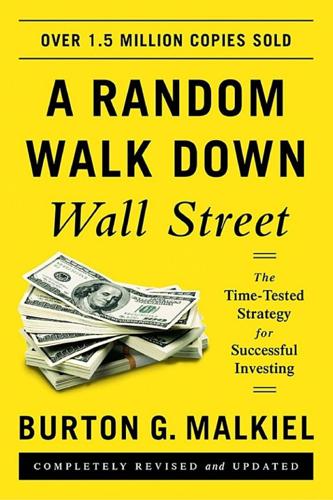
A Random Walk Down Wall Street: The Time-Tested Strategy for Successful Investing (Eleventh Edition)
by
Burton G. Malkiel
Published 5 Jan 2015
Therefore, when the market goes down 20 percent, J&J usually trails with perhaps only a 10 percent decline. Thus, the stock qualifies as one with less than average risk. Salesforce.com, on the other hand, has a very volatile past record, and it characteristically falls by 30 percent or more when the market declines by 20 percent. The investor gambles in owning stock in such a company, particularly if he may be forced to sell out during a time of unfavorable market conditions. When business is good and the market mounts a sustained upward drive, however, Salesforce.com can be expected to outdistance J&J. But if you are like most investors, you value stable returns over speculative hopes, freedom from worry about your portfolio over sleepless nights, and limited loss exposure over the possibility of a downhill roller-coaster ride.
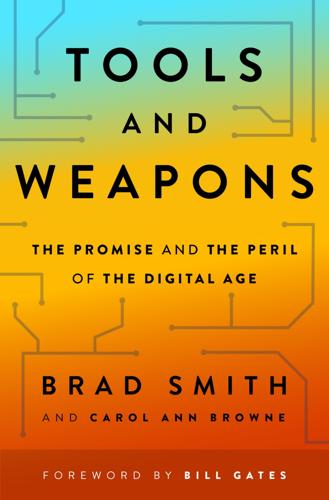
Tools and Weapons: The Promise and the Peril of the Digital Age
by
Brad Smith
and
Carol Ann Browne
Published 9 Sep 2019
Some suggested that Microsoft cancel our contract and cease all work with ICE, a persistent theme about government use of technology that would take hold that summer. One group of employees circulated a petition to halt the ICE contract. The issue began to roil the tech sector more broadly. There was similar employee activism at the cloud-based software company Salesforce, focused on its contract with US Customs and Border Protection. This followed employee activism at Google, which had led the company to cancel a project to develop artificial intelligence for the US military. And the ACLU targeted Amazon, backing Amazon employees who voiced concern about Rekognition, its facial-recognition service.6 For the tech sector and the business community more broadly, this type of employee activism was new.
…
California, 311n15 risk management, 86–87 Robart, James, 35–36 Roberts, John, 34–35, 311n15 robots, robotics: “killer,” 202, 205 three laws of, 193, 327n2 Rometty, Ginni, 252 Roose, Kevin, 99 Roosevelt, Franklin D., 10, 17, 95, 164, 166, 171 Roosevelt, Theodore, 17 Rose, Cindy, 238 Royal Navy, 46 RSA Conference, 79, 113, 121 Rural Airband Initiative, 160–62, 166–67 rural communities, 184 broadband in, 151–67, 289, 296, 322n6, 323n9 electricity in, 159, 160, 163–66 Rural Electrification Administration (REA), 164–65 Rushe, Dominic, 2 Russia, 69, 71, 86, 90–93 and denial-of-service attack in Estonia, 91–92 disinformation campaigns and, 95–98, 103 GRU in, 78 Internet Research Agency (IRA) in, 95–96 Microsoft’s message from, 86 Russian hackers, 78, 82–83, 95 elections and, 81, 86 Strontium (Fancy Bear; APT28), 78–81, 84–85 Rustow, Marina, 288, 335n2 Ryan, Paul, 57 S Safe Harbor, 133–36 safety, public, 21–37, 222 St. Bartholomew’s Hospital, 61–62 Salesforce, 215 Samuelsen, Anders, 109 Sandberg, Sheryl, 16 Sanger, David, 67, 118 Santa Lucia, Naria, 182 SAP, 285 Sauer, Rich, 218 scams and frauds, 192–93, 316n2 Scharre, Paul, 203 Scheidler, Hans-Jochen, 40–42 Schmidt, Eric, 16, 97 Schrems, Max, 132–37, 144, 148, 149 Schumer, Chuck, 57 search warrants, 5–7, 11, 15, 23, 28, 30, 31, 228 Fourth Amendment and, 7–8, 14, 33 gag orders and, 23–24, 30–31, 33, 35–37 international borders and, 46–59 Stored Communications Act and, 23 Seattle, Wash., 157, 186–88, 297, 302 commute times in, 187–8, 326n37 Seattle Times, 183 Second Circuit Court of Appeals, 314n10 Senate, U.S., 56, 84, 85, 98, 174, 176 Commerce, Science, and Transportation Committee, 323n9 elections and, 83 Intelligence Committee, 95 Judiciary Committee, 26 September 11 terrorist attacks, 8–9, 71, 72 Shadow Brokers, 63–64 Shaw, Frank, 215, 218, 306 Sheinwald, Nigel, 110 Sherman, William Tecumseh, 152 Shields, Mike, 279–80 Shum, Harry, 207–8, 252 Siebel, Edwin, 309n2 Siemens AG, 111, 122, 294 singularity (AI superintelligence), 197, 199, 328n12 Skillful initiative, 325n18 Skype, 2 Slate, 101, 199 smartphones, cell phones, 34–35, 94, 158, 159, 200, 241, 270 Snapp, Mary, 180 Snowden, Edward, 4–5, 8, 9, 13–14, 17–19, 25, 41, 263 social media, 89–107, 212 disinformation campaigns and, 90, 94–98, 102–4 illegal content on, 99, 103 NewsGuard and, 104 privacy and, 145 regulation of, 98, 100–104, 144 Russia and, 95–98, 103 terrorists and, 99, 100, 125–26 violent material on, 102 Socolow, Michael, 318nn27–28 Socrates, 259 software: creative aspects of software development, 140–41 Hippocratic oath for coders, 207–8 open-source, 264, 276–78, 283 resource allocations and trade-offs in development, 15 role of software architects for GDPR, 140–41 Software Freedom Law Center, 314n8 Sony Pictures, 63 Sotomayor, Sonia, 33–34 South Korea, 81, 124, 316n2 Soviet Union, 40, 90, 91 in Cold War, 12, 40, 107, 116–18 KGB in, 92 Spain, 63 Spalter, Jonathan, 323n9 spear-phishing, 79, 83 speech recognition, 194–95, 197, 201 Spielberg, Steven, 211–12 Stahlkopf, Dev, 125, 293 Stamos, Alex, 97 Standard Oil, 148, 310n6 Stasi (State Security Service), 39–41, 44 Stern School of Business, 333n16 Stored Communications Act, 23 Strontium (Fancy Bear; APT28), 78–81, 84–85 student activism, 217–18 Sudden Infant Death Syndrome (SIDS), 323n9 Supreme Court, 7, 33–35, 52–56, 58, 228, 299, 311n15, 314n10 Surace-Smith, Kathy, 50, 308 surveillance, 1–19, 45, 131, 289–90, 292, 300 commercial, 145; see also privacy facial recognition and, 227–28 FISC and, 12 Fourth Amendment and, 34 GPS, 33–34, 228 PRISM and, 1–4, 8, 9, 310–11n4 Reform Government Surveillance coalition, 16–17 see also privacy Swift, Taylor, 256 Switchboard data set, 197 Symantec, 120 T Tallinn, Estonia, 89–90, 92 Tallinn Manual 2.0, 128, 320n19 taxes, 146, 182–83, 290 Tay, 255–56 Taylor, Anne, 287–88, 334–35n1 TechFest, 170–71 tech intensity, 289 technology(ies), 129–30, 184, 221, 247 cultural values and, 244–45 Einstein on, 129, 209–10, 289 government and, 109–30 international collaboration on, 300 managing, 287–304 market barriers to, 257 network effects and, 270 regulation of, see regulation time needed for adoption of, 240–41 technology companies: banks compared with, 11 blitzscaling and, 292 cultural change and, 292 cybersecurity and, 294–95 employees’ role at, 217 entrepreneurs in, 335n9 government and, 11, 19, 23, 76, 85–86 interns and young employees at, 218 leaders in, 293, 295 as nation, 119 principles in, 293–94 PRISM and, 1–4, 8, 9 regulation of, 11 talent gap and, 169–90; see also education; immigration White House meetings with leaders of, 16–19, 111–12 women and racial minorities at, 184–85 Technology Education and Literacy in Schools (TEALS), 178–79 Techonomy, 192 techplomacy, 127 TechSpark, 233, 331n8 telegraph, 192 telephones, 161, 192, 289, 299 cell, 34–35, 94, 158, 159, 200, 241, 270 landline, 94, 159 television, 159, 299 white spaces, 159–60, 162, 163, 167 Tencent, 256 Terminator movie franchise, 202 terrorism, 9, 12, 25, 26, 99, 100, 102, 203, 222 Christchurch mosque shootings, 99–100, 102, 125–26 facial recognition and, 330n21 in Paris, 26–28 Pearl kidnapping, 21–22 September 11 attacks, 8–9, 71, 72 social media and, 99, 100, 125–26 Thompson, John, 221, 252 Three Mile Island Nuclear Generating Station, 143–44, 146 Tiku, Nitasha, 225 TitleTownTech, 331n8 Tomahawk missiles, 66–67 Toronto, 316n2 Total, 122 trademark law, 80 transparency, 30, 32, 35 artificial intelligence and, 200–201, 207 transportation, 185–86 Trudeau, Justin, 142–43 Trump, Donald, 58, 73–75, 82, 83, 115, 144, 157, 172–74, 180, 214, 263, 279–82, 284 meeting at Trump Tower with tech executives, 172–73, 176 technology strategy for 2016 presidential campaign, 279–82 Trump, Ivanka, 180 Trunnell, Matthew, 272–73, 275, 276, 278, 282, 284–85 Turing, Alan, 328n12 Twitter, 90, 95, 104, 125 Christchurch mosque terrorist shootings and, 99, 126 2001: A Space Odyssey, 328n12 U Uganda Wildlife Authority, 288 UHF, 159 Ukraine, 69–72, 90, 317n2 unemployment, 152, 156 unions, 216 United Kingdom, 14, 42, 53, 69, 75, 95, 103, 265, 284 Brexit and, 131–32, 139, 238 cyberattack in, 63 war between France and, 105 in War of 1812, 46, 313n5 United Nations (UN), 72, 129, 160 United States Trade Representative, 257 University of Washington, 178, 182, 208, 273, 286, 297, 325n11 V Vabamu Museum of Occupations and Freedom, 90–92 Vail, Theodore, 161 Vatican, 208–10 Verizon, 2–3 VHF, 159 vision, computer, 194–95, 197, 201 Voice of America, 107 voting, see elections W Walker, Kent, 12–13 Wall Street Journal, 21, 104 Wang, Kevin, 178 WannaCry, 63–69, 71–74, 122, 294, 300, 301 war, 204–5, 302, 329n29 cyberwar, cyberweapons, 69, 118, 130, 205–6, 289 see also military weapons Ward, Patrick, 61–62 WarGames, 116–17 Warner, Mark, 98, 99, 103, 105 War of 1812, 46, 313n5 Warren, Samuel, 330n24 Washington, George, 105, 106, 319n36 Washington Post, 4, 13–15, 298 Washington State Opportunity Scholarship program, 181–82, 325n20 WeChat, 256 Wicker, Roger, 323n9 Wikileaks, 78 Wilkes, John, 5–6, 23 Willard InterContinental Washington, 160–61 Wilson, Woodrow, 100 Windows, xx, 12, 29, 63–65, 203, 212, 253, 270 Wired, 225 wireless technologies, 159, 167, 296 broadband, 151–67, 289, 296, 322n6, 323n9 TV white space, 159–60, 162, 163, 167 Wiretap Act, 47 Word, 50, 264 workforce, see jobs Workforce Education Investment Act, 182–84 World Bank, 325n18 World Economic Forum at Davos, 191–93, 202 World Trade Organization, 257 World War I, 123 World War II, 28, 40, 61, 62, 77, 88, 90, 95, 117, 122, 123, 166, 172, 209, 317n2 writ of habeas corpus, 10 X Xamarin, 277 Xbox, 72, 100, 126, 140, 160 XiaoIce, 255, 256 Xi Jinping, 249–52, 268 Y Yahoo!

Greater: Britain After the Storm
by
Penny Mordaunt
and
Chris Lewis
Published 19 May 2021
It found that sixty of that nation’s biggest corporations didn’t pay anything in federal income taxes in 2018, on a collective $79 billion in profits. Specifically, the ITEP reported that giants Netflix and Amazon paid no federal taxes, while other companies on this list included Chevron, Delta Airlines, Eli Lilly, General Motors, Gannett, Goodyear Tire and Rubber, Halliburton, IBM, JetBlue Airways, Principal Financial, Salesforce, US Steel, and Whirlpool.16 This is something that Britain, with its huge experience of both professional services and taxation, could work on together with the US. Both countries have a vested interest in tackling this problem. The beneficial stewardship of capital is not just confined to taxation.
…
Chevron alone, for example, reported $290 million in accelerated depreciation and Halliburton reported $320 million. The report was damning, noting that stock options were providing a dubious tax break that allowed several corporations to write off expenses far in excess of the cost they reported to investors. As indicated above, it named companies directly, saying that Amazon, Netflix, Salesforce and a number of others appeared to use this tax break to write off millions of dollars that were owed to the state. Tax credits and subsidies also provided hundreds of millions in write-offs. The report added: ‘These tax loopholes allow many profitable corporations to avoid paying a single dime in taxes, but it should also be noted that many other profitable corporations are also using these special breaks to pay far less than the 21 per cent statutory federal income tax rate.’
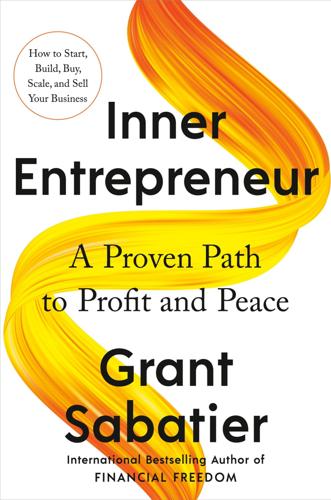
Inner Entrepreneur: A Proven Path to Profit and Peace
by
Grant Sabatier
Published 10 Mar 2025
SaaS Business A Software as a Service (SaaS) business sells software that customers access over the internet through a subscription. Popular SaaS businesses include Dropbox, Slack, Salesforce, and many others. As with any subscription business, a SaaS business can generate significant recurring revenue if you find product-market fit and add value to users. It’s also an asset-light business that you can continue to work on and update from anywhere in the world. Some SaaS businesses have achieved remarkable success. For instance, Salesforce excels in helping companies manage their customer relationships, boosting their efficiency and profitability. During the pandemic, Zoom gained fame for its user-friendly online meeting platform, which was in high demand.
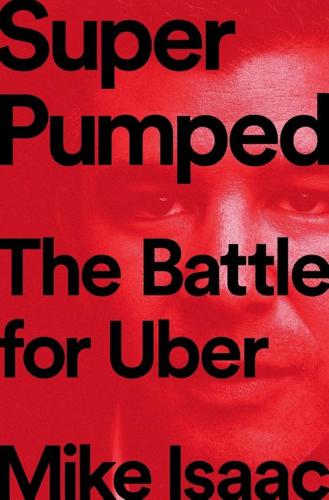
Super Pumped: The Battle for Uber
by
Mike Isaac
Published 2 Sep 2019
He wanted them ready to deal with an incoming administration that was a friend to unions and an enemy to companies that relied on contract workers. Clinton hadn’t come after Big Tech quite yet; she was closely tied to major donors in the Valley, including Facebook’s Sheryl Sandberg, John Doerr of Kleiner Perkins, and Marc Benioff of Salesforce. But if there was a company a Clinton presidency might come after, it could be the most hated startup in the country: Uber. But Trump’s upset victory caught everyone at Uber off guard. Most of the rank and file, a largely Democratic- and Libertarian-leaning force, were tearing their hair out at the thought of a Trump presidency.
…
Uber and, 233–36, 255–56, 338–39 Palms Hotel, 7, 93 Palo Alto, California, 35, 36, 38, 40, 72, 105 Pape’ete, French Polynesia, 307–8 Paris, France, 84 Parker, Sean, 21, 121 Partovi, Ali, 92n Partovi, Hadi, 92n Paul, Sunil, 85–86 Paul, Weiss, 289, 294 Paulson, Henry, 33 PayPal, 170–71 Pennsylvania, 113 Perazzo, Steve, 338 Pets.com, 26 Pham, Thuan, 142–47, 153, 165, 201, 309 Philadelphia, Pennsylvania, 83, 114, 244, 245–46, 247 Philadelphia Parking Authority, 244, 245–46 Pishevar, Shervin, 179, 192–93, 315–16, 337 Pittsburgh, Pennsylvania, 151, 184 Pixar, 35 Planet Hollywood, 10 Plouffe, David, xii–xiii, xvi, 115, 225 Poetzscher, Cam, 301 Politico, 128 Portland, Oregon, xi–xvii, xviii, 115, 243–44, 247 Portland Bureau of Transportation, xi Posados, Miguel, 338 “Preacher,” 336 Priceline, 27 Prodigy, 67 “Project Chauffeur,” 180–81 Pronto.ai, 333 Puff Daddy, 89 Pulp Fiction, 45 Qualcomm, 317 Quattrone, Frank, 67, 69–70 Quentin, 153–54, 155, 156, 157, 161, 245, 246 Quill, Mike, 204 Quince, 328 Quinn, Emanuel, Urquhart & Sullivan, 234 Rancho Palos Verdes, California, 176 Rand, Ayn, 84, 120 Recode, 248–49, 262 Recording Industry Association of America (RIAA), 24, 26, 28, 29 Reddit, 42, 200 Red Swoosh, 28–30, 31, 33, 47, 74, 81, 106, 192n Richter, David, 301 The Rideshare Guy, 248 Rigetti, Chad, 215 Rio de Janeiro, Brazil, 134, 174 Ritz-Carlton Hotel, 292, 295, 296–300, 302, 304 Robb, Walter, 292 Romania, 170, 172 Ron, Lior, 181–82, 234 Rubenstein, Steven, 239n, 289, 289n, 295 Rumayyan, Yasir al-, 270–71, 272 Sacca, Chris, 57, 74, 78, 288, 293 Sacks, David, 300 Safe Rides Fee, 135–36 Salesforce, 201 San Bernardino, California, 162, 206 Sandberg, Sheryl, 201, 239n Sanders, Jeff, 324 San Francisco, California, xiii–xiv, 5–6, 27–28, 31–32, 40–41, 67, 85, 100, 107, 130, 160, 183. See also Silicon Valley as epicenter of venture deals, 75 popularity of Uber in, 78, 83 regulators in, 86–87 ride-hailing companies based in, 78 rollout of UberCab in, 59–60, 63 success in, 147 transportation in, 41, 44, 48–49, 59–60, 63, 108–9 Uber offices in, xiii, xiv, xix, 83–84, 90, 95, 131, 144, 146, 149, 151–52, 159, 224, 244, 250 US Attorney’s Office in, 255–56 San Francisco Municipal Transportation Agency, 63 San Mateo, California, 29 Santa Monica, California, 151 São Paolo, Brazil, 174, 195 Sapient, 28 Saudi Arabia, 187, 202, 258, 270–71, 287 Saudi Public Investment Fund, 270, 317 Schifter, Doug, 113 Schildkrout, Aaron, 137–38, 237, 331 Schiller, Phil, 161–62, 163 Schmidt, Eric, 225 Scour.net, 21–25, 28, 31, 81, 106, 189, 192, 286 Seattle, 83, 84 Seoul, South Korea, 250–51 Sequoia Capital, 40, 79, 92n, 98 Shah, Sagar, 117 Sheen, Charlie, 120 Shenzhen, China, 141 Shore Club, 120 Sidecar, 85, 86, 87 Silicon Valley, xi, xviii–xix, 4–9, 22, 27, 29, 71, 132 “asshole culture” in, 119 China and, 140 company-wide dinner service in, 112–14, 117 customer privacy vs. data collection in, 188 entrepreneurs in, 285–86 female chief executives in, 285 “founder” culture in, 74–77 funding ecosystem in, 96 growth as mantra of, 111 IPOs in, 97 security in, 171 Singhal, Amit, 235–36, 254 Slack, 241 Slice Intelligence, 166 SLS, 120 Smith, Ben, 128–31 Snap, 290 Snapchat, 6, 9, 235 Softbank, 316–18, 326–27, 335 Son, Masayoshi (“Masa”), 316–18, 326 South America, 259 South by Southwest (SXSW), 78, 125–26 Southeast Asia, 148, 150, 150n, 187, 194–95, 258, 260, 333 South Korea, 194, 246, 250–51, 254, 256, 260, 262 South of Market (SoMa), 26, 28 Southwestern Bell, 92 SpaceX, 199 Spiegel, Evan, 9, 77, 140 Sprint, 317 Spruce, 78 Stanford University, 289 “Startup Mixology,” 46 Startups.com, 27 Stassinopoulos, Agapi, 228 Stassinopoulos, Elli, 228 Stassinopoulos, Konstantinos, 228 Stitch Fix, 285–86, 335 St.

The Future Is Asian
by
Parag Khanna
Published 5 Feb 2019
In the mid-1970s, Steve Jobs wandered India barefoot wearing only a lungi, an ascetic seeking purity and Buddhist inspiration, before returning to California to apply his quest for inner perfection to computing hardware by cofounding Apple. Marc Benioff similarly took a meditative sabbatical around India after leaving his job at Oracle, resulting in the birth of the cloud software giant Salesforce, whose offices have ample meditation rooms. More recently, hit novels such as Elizabeth Gilbert’s Eat, Pray, Love have further popularized visits to India’s many yoga ashrams. Bollywood has not only infiltrated global film culture but also spawned dance classes, DJ music mixes, and wedding themes around the world.
…
Western, 357–58 Phoenicians, 29 Pinker, Steven, 284 plague (Black Death), 40 Plato, 37, 286, 291, 300 Poland, 249 pollution, 176–78, 181 Polo, Marco, 40 Pol Pot, 56, 70 populism, 283–84, 296 democracy hijacked by, 3 Portugal, 44 poverty, 183, 184, 318 prisons, 308 private equity, 171–72 privatization, 169–70 Progressive Alliance of Socialists and Democrats, 249 public goods, global, 321–22 Punjab, 33, 47 purchasing power parity (PPP): of Asia, 2, 9, 10, 63, 184 global, 10 Putin, Vladimir, 84, 85–86, 87, 89, 241, 310 oligarchic regime of, 310–11 Qajars, 47 Qara Khitai, 39 Qatar, 100, 101, 247 gas exports of, 175 Russia and, 88 Qichao, Liang, 351 Qin Dynasty, 31–32 Qing Dynasty, 44–45, 47, 48, 69, 76 Qin Shi Huang, 31 Quah, Danny, 320 racism, 329 Rajgir, 31 Rakuten, 133 R&D, in Asia, 197, 210, 211, 227 Rashid al-Din, 40 Rashidun Caliphate, 36 Rashtriya Swayamsevak Sangh (RSS) movement, 313 Rason, 143 Ray, Satyajit, 349 Regional Comprehensive Economic Partnership (RCEP), 8, 9 religious tolerance, 40, 70–71, 75 renewable energy, see alternative energy renminbi, 165, 188, 243, 264 as currency for intra-Asia trade, 102, 103, 110, 157 retail sector: in Asia, 172, 184–85, 189, 200, 210–11 in US, 228 Reza Shah Pahlavi, Shah of Iran, 50, 54 ride-sharing industry, 174–75 Rio Branco Institute, 277 Riot Games, 209 robotics, 134, 193, 196–97 Roma, 256 Romance of the Three Kingdoms, 353 Rome, ancient, 33 fall of, 35, 36, 39 Roosevelt, Franklin D., 287 Rosen, Dan, 156 Rudd, Kevin, 12 rule of law, 281, 282, 292, 312 blurred line between abuse of power and, 319 economic performance and, 309–10 Rumi, 39, 220 Rushdie, Salman, 256 Russia, modern, 3, 11, 15, 40, 140 arms exports of, 86, 87 Asian territory of, 82 China and, 19–20, 82–83, 84–85 Crimea annexed by, 83 ethnic and cultural diversity of, 89 Europe and, 83–84, 85, 89 European territory of, 82 expansionism of, 240 grain exports of, 90 India and, 86–87 Iran and, 87 Israel and, 88 Japan and, 82, 86–87 Latin American investments of, 275 North Korea and, 143 oil and gas exports of, 82–83, 84, 87–88, 175, 176 Qatar and, 88 re-Asianization of, 81–91 Saudi Arabia and, 87–88 Southeast Asia and, 87 Southwest Asia and, 87 stability preferred over democratic ideals in, 310 Syria and, 11, 83, 87, 88 Turkey and, 88, 92–93 2016 US election and, 83, 320 Ukraine invaded by, 83 Western sanctions against, 83, 86, 240–41 West’s divided policies toward, 83–84 see also Soviet Union Russia, prerevolutionary: Bolshevik Revolution in, 49 in era of European imperialism, 45, 47, 48 Russian Direct Investment Fund (RDIF), 88 Rwanda, 268 Ryukyu Kingdom, 44 Safavid Empire, 106 Saint Petersburg, 82, 90 Salesforce, 331 Salman, king of Saudi Arabia, 103 Salopek, Paul, 4–5 Samarkand, 32 Samsung, 159, 195, 211 Sanskrit, 69, 253 Sassanian Empire, 36 Satanic Verses, The (Rushdie), 256 Saudi Arabia, 11, 50, 54, 57, 71–72, 101, 134, 251 alternative energy programs in, 179 Asia investments by, 104 bond offerings by, 165 Chinese arms sales to, 101 economic diversification in, 190 Indian migrants in, 334 Iran and, 95–96, 100, 105–6 oil exports of, 58, 87–88, 102, 103 privatization in, 170 Public Investment Fund (PIF) of, 164 Russia and, 87–88 technocracy in, 312 Saudi Aramco, 102, 103, 104, 168 Saudi-Iraqi Coordination Council, 96 Schmidt, Eric, 200 Schröder, Gerhard, 83 sciences: Asian achievements in, 354–55 Asian fusion of spirituality with, 355 Scythians, 29, 30, 76 SEA Group, 167, 189, 209 sea levels, rising, 181–82 security systems, in Asia, 137–44 self-determination, 22 Seljuks, 38, 39, 44, 76 September 11, 2001, terrorist attacks, 3, 62, 113, 220, 231 service sector growth, 191, 192 sexual discrimination, sexual harassment, 314–15 shadow economies, 203 Shah Jahan, 41 shale oil energy revolution, 13, 175, 272 Shanghai, 42, 114 art scene in, 342 Shanghai Cooperation Organisation (SCO), 60, 84, 86, 92, 106, 108, 117 Shanghai-Tehran railway, 106 Shankar, Ravi, 332 Sharp, 132 Shi’a Muslims, 36, 41, 58, 95, 106, 312 Shintoism, 31, 34, 69 Shōtoku, prince of Japan, 35 Siam, 45–46 Siberia, 82 Siddiqi, Lutfey, 163 Siemens, 242, 246 Sikhs, 47 Sikkim, 186 Silicon Valley, 172, 199, 219, 287 Silk Road Fund, 110 Silk Roads, 24, 32, 33, 35, 40, 68, 69, 76, 81, 106, 239, 329 modern versions of, 1, 75, 84, 92, 97, 103, 108–13, 122, 244, 246, 252 as weakened by European voyages of discovery, 44 Silk Way Rally, 81 Simpfendorfer, Ben, 96–97 Sina Weibo, 314 Singapore, 22, 46, 53, 56, 74, 121, 156, 187, 212, 268, 334 American expats in, 234 art scene in, 342 civil liberties in, 297 civil service in, 292–93 in Cold War era, 54 data collection in, 295–96 democracy in, 288–89, 290 diversified economy of, 290 education in, 294 ethnic and cultural diversity of, 288, 297–98, 337 gun and drug laws of, 306 Japan and, 50–51, 133 Latin America investments of, 277 as libertarian nanny state, 289 as melting pot, 24 as model for other Asian countries, 299, 331 multiracial families in, 337–38 parliamentary system of, 295 policy corrections in, 291 public trust in government in, 291 technocratic government of, 287–99 technological innovation in, 195 Singapore Cooperation Program, 299 Singh, Shailendra, 174 Sino-Australian Free Trade Industrial Park, 129 Sino Israel Technology Innovation fund, 99 Sistema, 90 Slovakia, 256 Slumdog Millionaire (film), 348 social media, 208–9, 314 censorship of, 320 SoftBank, 112, 134, 171, 174, 179, 193 Sogdian peoples, 32, 33, 67 solar panel industry, 242, 272–73 Song Dynasty, 38–39, 42, 73 South Asia: early history of, 35 economic growth of, 9 failure of democracy in, 302 low-level workers from, 334–35 Muslims in, 70–71 oil and gas imports of, 152 poverty in, 183, 184 religious and ethnic diversity in, 70 South China Sea, 60, 84, 125, 130 Chinese assertiveness in, 19, 60, 84, 123, 124, 128, 137 Southeast Asia, 29, 50, 52, 208 Africa and, 264 Asianization of, 81 China and, 122, 154 Chinese migration in, 333 in Cold War era, 52, 53–54 cross-border integration of, 121–27 digital integration in, 187–89 economic growth in, 63, 148 energy investments of, 102 European colonization of, 45–46, 67 failures of democracy in, 302–3 foreign investment in, 9, 121, 148, 154, 250 Gulf states trade with, 102 India and, 154–55 Indianization of, 34 Indian migrants in, 334 internal trade in, 152 Japan and, 50–51, 133, 153–54, 156 low-level workers from, 334–35 manufacturing in, 133, 148, 153–54 Muslims in, 38–39, 43, 70–71, 121 1997 financial crisis in, 121 opium products in, 123 in post–Cold War era, 61 religious and ethnic diversity of, 43, 46, 70, 121 Russia and, 87 South Korea and, 153–54 tourism in, 122 US and, 125 see also Association of Southeast Asian Nations Southeast Asia Treaty Organization (SEATO), 53 South Korea, 14, 16, 55, 56, 60, 61, 63, 104, 275 Asian migrants in, 336–37 automation in, 193 capitalism in, 159 cashless economy in, 189 China and, 141–42 civil society in, 313 corruption in, 161 economic growth of, 158 film industry in, 348 global branding of, 331 Gulf states and, 102 Japan and, 141–42 multiethnic families in, 336 North Korea and, 142 Southeast Asia and, 153–54 technological innovation in, 195, 197 US and, 52, 142–43 Vietnam and, 154 Southwest Asia, 54 in Cold War era, 54 Russia and, 87 use of term, 6 sovereign debt, 165–66 Soviet Union, 49, 300 Afghanistan invaded by, 58, 59 Africa and, 261 in clashes with China, 56 in Cold War, see Cold War collapse of, 13, 14, 58, 59, 82, 283 Germany’s invasion of, 50 Spain, transpacific trade of, 44, 74 Spanish-American War, 2, 48 Sri Lanka, 105, 334 Srivijaya Kingdom, 34, 35, 38, 39, 70 State Department, US, Asia and, 143–44 steel production, 109, 176, 272–73 Steinmeier, Frank-Walter, 12 stock markets, Asia, 167–68 Straits Times, 290 Suez Canal, 102 Suez Canal Economic Zone, 99 Suharto, 61 Sui Dynasty, 37 Sukarno, 53 Sumatra, 38, 45, 70 Sumer, 28, 29 Sunni Muslims, 11, 36, 38, 57, 95, 312 Sun Tzu, 31 Sun Yat-sen, 48, 49 Sweden, Syrian refugees in, 255–56 Sykes-Picot Agreement, 49 Syngman Rhee, 55 Syria, 11, 16, 49, 54, 62, 94 civil war in, 63, 95, 255 Iran and, 106 Russia and, 11, 83, 87, 88 Syrian refugees, 218 systems, global, 7 systems, regional: Asia as, 5, 6–7, 15 conflict and, 11 Europe as, 7 North America as, 7 in world order, 13–14 Tagore, Rabindranath, 48, 351, 353 Taipei, art scene in, 342 Taiping Rebellion, 47 Taiwan, 52, 56, 61 China and, 141 civil society in, 313 Tajikistan, 59, 108–9, 182 Talas, Battle of, 36, 37, 77, 117 Tale of Genji, The (Murasaki), 353 Taliban, 62, 68, 116–17, 139 Tan, Anthony, 175 Tan, Yinglan, 173 Tang Dynasty, 36–38, 69, 70, 72, 75, 117, 137 Taoism, 182 Tao of Physics, The (Capra), 220 Tarim basin, 32, 33, 35, 36, 59 Tatars, 89 technocratic governance systems, 286–313 civil service in, 292–93 data collection and, 295–96 policy corrections in, 291 utilitarianism and, 286, 298, 306 technological innovation, 195, 196–200 Teets, Jessica, 300–301 Tehran-Mashhad railway, 107 Tel Aviv, 98 telemedicine, 202 television, American, Asians in, 350 Tencent, 104, 167–68, 188, 189, 193, 198, 199, 200, 209, 314, 318, 319 Tenshin, Okakura, 351 terrorism, 62–63, 97, 113, 116–17, 139, 220, 231, 240 Tesla, 179 Tetlock, Philip, 291 Thailand, 61, 63, 89, 121, 122–23, 154 Asian foreign labor in, 335 in Cold War era, 53, 54 corruption in, 161 economic growth of, 148 eco-tourism in, 340 failure of democracy in, 302 foreign investment in, 192–93 manufacturing in, 192–93 military junta in, 307 privatization in, 170 technocracy in, 308 Thomas, Apostle, 36 3D printing, 213 Tibet, 34, 36, 38, 47, 52, 55, 120 Time, 288 Timur (Tamerlane), 41 Timurid Dynasty, 41, 42 Tocqueville, Alexis de, 291 Tokyo, 47, 342 top-down revolutions, 309–13 tourism: in Asia, 213–14 Asian, in US and Europe vs. within Asia, 339–40 eco-, 340 Toynbee, Arnold, 22 trade: Asia-Europe axis of, 13, 14 internal, 150–52, 156–57, 212 intraregional, 62 see also free trade; specific countries and subregions Traditional Chinese Medicine (TCM), 355 Trans-Anatolian Natural Gas Pipeline, 94 Trans-Pacific Partnership (TPP), 126, 140, 141, 272, 273 transportation innovation, 198 Treasury bonds, US, Asian holdings of, 163, 164 Treasury Department, US, 157 Trenin, Dmitri, 83, 90 Trudeau, Justin, 223 Truman, Harry, 52, 287 Trump, Donald, 213, 232 anti-Asian policies of, 10, 152, 194, 195, 224, 225 anti-Hispanic policies of, 272 climate change and, 178 election of, 3, 16, 272, 273, 283, 294, 384 Europe and, 240 Gulf states and, 101 Indian Americans’ support for, 222 Israel and, 98 North Korea and, 142 Pakistan and, 114 populism of, 18, 284 Russia and, 84 Taiwan and, 141 unpredictability of, 18 US State Department gutted by, 143–44 Tsinghua University, 232 Tsushima, Battle of, 48 Turkestan, 47, 117 Turkestan Empire, 41–42 Turkey, Republic of, 3, 49, 58, 101 Asian investment in, 93–94 Asianization of, 81 China and, 93 European focus of, 57, 60, 91–92 European immigrants from, 253, 256 Iran and, 94 Muslims in, 92 oligarchic regime in, 311 re-Asianization of, 91–94 Russia and, 88, 92–93 Syrian refugees in, 63, 94, 95 Turkic peoples, 38, 39, 67, 68, 91 Turkmenistan, 59, 92, 106, 108, 140 Turkmenistan-Afghanistan-Pakistan-India (TAPI) natural gas pipeline, 118 Turnbull, Malcolm, 129 Uber, 174–75, 198 Uighur people, 37, 42, 117 Ukraine, 83, 85, 241 Umayyad Caliphate, 36 Understanding Latin America (Toro Hardy), 275 UN Human Rights Council, 324 Uniqlo, 345 United Arab Emirates (UAE), 88, 96, 100, 101, 104, 312 alternative energy programs in, 179 bond offerings by, 165 digital technology in, 318–19 Indian migrants in, 334 oil exports of, 102, 103 technocracy in, 312 United Kingdom, see Great Britain United Nations, 51 United States: Afghanistan invaded by, 62 AI research in, 199–200 Arab world and, 100–101 arms sales of, 16–17, 101 Asian belief systems in, 220 Asian capital in, 163 Asian companies in, 227–28 Asian economic growth as benefit to, 207 Asian goal of reduced dependence on, 17 Asian immigration to, see Asian Americans Asian investments in, 164 Asian investments of, 110–11, 207 Asian military presence of, 137, 138 Asian trade deficits of, 16 Asian trade with, 144 Asian views of, 16–17 Australia and, 128 Chinese acquisition of technology companies blocked by, 195–96 Chinese trade with, 272–73 civil service in, 293 coal exports of, 177 in Cold War, see Cold War East Asia and, 140–41 eroding industrial base of, 16 ethnic diversity in, 221–22 European capital in, 164–65 Europe’s relations with, 240 failed West Asian policies of, 140 failures of democracy in, 282–85, 294 falling standard of living in, 284–85 global civilization as influenced by, 21, 22–23 global governance and, 321 income inequality in, 228, 285 Iraq invaded by, 62 Japan and, 136 Latin America and, 271–72 Muslims in, 220 in North American regional system, 7 North Korea and, 142–43 oil and gas exports of, 16, 207 outsourcing of jobs by, 16 Pakistan and, 113–14 Philippines and, 123–24 populism in, 283–84 PPP of, 10 protectionist policies of, 241 retail sector in, 228 Russian sanctions by, 240–41 shale oil revolution in, 13, 175, 272 Southeast Asia and, 125 South Korea and, 142–43 South Pacific tensions of, 48 South Pacific territories of, 48 as superpower, 2, 14, 15, 22 Syrian refugees in, 218 technocracy in, 287 utilitarian thinking as lacking in, 299 Vietnam and, 125 Ur, 28 Ural Mountains, 81, 82 urban development, 156, 190, 245–46 utilitarianism, 286, 298, 306, 320 Uzbekistan, 59, 72, 108, 169, 226–27 Chinese hegemony resisted by, 20 civil society in, 313 economic growth of, 17, 109 Vedas, 29 Venezuela, 271, 274 China and, 274–75 venture capital (VC) industry, in Asia, 173–74 Vienna, 40 Vietnam, 45, 52, 60, 121, 161, 274, 275 China and, 124–25 in Cold War era, 56 early history of, 31–32, 38 economic growth in, 308 industrialization in, 63 South Korea and, 154 territorial claims of, 11 US and, 125 Vietnamese Americans, 217 Vietnam War, 52, 56 Vitasoy, 172 Vivekananda, Swami, 220 Vladivostok, 90 Wadhwa, Vivek, 219 Wahhabism, 72, 114 Walmart, 193, 208 warfare: in Asia, 75–76 in Europe, 75 war on terror, 113, 115, 240 Washington Consensus, 2–3 Water Margin, 353 water shortages, 181 wealth management industry, 160–61 Weber, Max, 293 WeChat, 314 Wei Fenghe, 84 West: arms sales to Asia by, 212 Asia studies in, 352 China-centric views of, 18–19 as dependent on Asian economic growth, 206–14 economic and social ills of, 3 ignorance about Asia in, 17–20, 24, 76, 329 outsourcing of manufacturing to Asia by, 62 uncritical self-appraisal of, 351–52 worldview of, 10–11 West Asia, 57, 69–70, 72 Asianization of, 9, 81 civil society in, 313 conflict and state failure in, 95 crusades and, 39 dawn of civilization in, 28 ethnic and sectarian violence in, 256 India and, 155 oil and gas exports of, 9, 23, 57, 62, 152 in post–Cold War era, 58 re-Asianization of, 95–106 refugees from, 95 terrorism in, 62–63 use of term, 6 US involvement in, 59, 140 Western Educated Industrial Rich Democracies (WEIRD), 357 What Is Global History?

The Lonely Century: How Isolation Imperils Our Future
by
Noreena Hertz
Published 13 May 2020
In 2019 the UK’s biggest energy company, Centrica, introduced an additional ten days of paid leave for its employees who are caring for their aging parents or other loved ones with disabilities.97 Such moves can serve a financial purpose as well as a compassionate one: the company estimates that such policies would save the UK’s largest companies £4.8 billion that they would otherwise lose to unplanned absences when carers need to deal with emergencies. Nationwide Building Society offers its employees two days a year to dedicate to helping their local communities. The US-based technology giant Salesforce goes even further – its staff are provided up to seven days of paid volunteer time per year.98 Meanwhile, in 2019, Microsoft ran an experiment in its Japan office in which it gave the entire 2,300-person workforce five Fridays off in a row, without decreasing pay. It also provided each employee with financial support of up to 100,000 yen (about £750) to spend on taking a family trip.
…
Morgan here Jung, Carl here, here kaleidoscopes here Kant, Immanuel here Kennedy, John F. here Kett’s Books (Wymondham) here Kim In-gil here King, Bernice here King, Jaspar here King’s College (University of London) here Kirkpatrick, David here Klein, Stéphane here Kniffin, Kevin here Kuile, Casper ter here Kwan, Justin here LA Times here Lancia, Emily here Le Pen, Jean-Marie here, here Le Pen, Marine here, here Levy, David here, here Liardet, Frances here Lidl here literature of loneliness here, here London here, here, here, here, here loneliness in Europe here worldwide here amongst older people here amongst young people here impact on health here, here, here impact on politics here economic impact of here stigma attached to here definition of here literature of here, here impact on mental health here and sense of hostility here and rise of populism here, here and intolerance here political responses to here Long, Meri T. here Longfield, Anne here Love and Sex with Robots (Levy) here Ma, Jack here Macron, Emmanuel here Malaysia here Mallett, Xanthé here mandatory community programmes here Manokha, Ivan here Marx, Karl here, here McCormick, Neil here McDowell, Shelley here McKenzie, Robert here McMullen, Matt here, here, here Melville, Herman here mental health here see also health Merkel, Angela here micro-interactions here Microsoft here, here Mission Pie (San Francisco) here Mosquito devices here Mosseri, Adam here mukbangs here Nanyang Business School here National Health Service (NHS) here, here neoliberalism as cause of loneliness here, here values of in workplace here Netherlands prevalence of loneliness in here distrust in here populism in here work in here New Deal programme here, here New York here, here, here, here, here, here, here, here New York Times here, here New Zealand here Nikocado Avocado here, here ‘91 Ways to Build a Global City’ programme here NomadWorks here Nottingham here Obama, Barack here Oldenburg, Ray here older people prevalence of loneliness among here social robots for here and revival of communal spaces here Olds, Jacqueline here open-plan workplaces here Orbán, Viktor here, here Origins of Totalitarianism, The (Arendt) here Ortega, Melissa here Osborne, Michael here Owen-Jones, Allison here PaPeRo (robot) here Park, Sojeong here PEACH project (University of Bristol) here Peeters, Anco here Pentland, Alex ‘Sandy’ here Pepper (robot) here, here, here Personal Robots Group (MIT) here Philadelphia here Philippines here Pinkerton, Allan here Plath, Sylvia here politics see also populism impact of loneliness on here disconnection from here, here responses to loneliness here proposals for populism see also politics link to loneliness here, here causes of here and distrust of others here and disconnection from politics here and loss of status here and sense of community here in Europe here, here fear of immigration here and automation at work here Putnam, Robert here racism as cause of loneliness here and rise of populism here and work appraisals here Rea, Salvatore here Readings Bookstore (Melbourne) here Reagan, Ronald here, here RealDoll (robot) here, here remote working here Rent-a-Friend here revival of communal spaces here Riess, Helen here robots in workplace here for personal contact here in military here social robots here sex robots here, here, here potential for relationships with here violence towards here reliance on for relationships here importance of in relationships here Roeselare here Romney, Mitt here Roomba (robot) here Roosevelt, Franklin D. here, here Rosenbaum, Scott here Roseto study here Royal Oak co-living space here Royal Wharf development here Rubin, Krystin here, here Rueda, Salvador here Rutte, Mark here Rwanda here St Mary’s Cathedral (San Francisco) here Saki, Sakamoto here Salesforce here Salmela, Mikko here Salvini, Matteo here, here Samantha (sex robot) here, here San Francisco here, here Sanders, Bernie here Sandstrom, Gillian here Santos, Sergi here São Paulo here SARS outbreak here Scassellati, Brian here Scatterson, Jessica here Scheve, Christian von here Schröder, Gerard here Seattle here segregation in cities here self-worth here Seoul here sex robots here, here, here sexism as cause of loneliness here in work here and robots here, here Sharing of Abhorrent Violent Material Act here Shelley, Percy Bysshe here shopping here Shulevitz, Judith here Sikora, Kimberly here, here Singapore here, here Smalls, Christian here smartphones time spent on here effect on social interactions here effect on child development here, here effect on empathy here effect on communication skills here reasons for addiction to here Smith, Adam here Smith, Doug here social media as cause of loneliness here, here and populism here and trolling here and BOMP (A Belief that Others are More Popular) here feelings of self-worth through here creation of false personas on here possible changes to here social robots here Socrates here solo living here South Korea and mukbangs here smartphone use in here robots in here revival of communal spaces in here Spain populism in here, here revitalisation projects in here work in here status, decline of here stigma of loneliness here Stokes-Lampard, Helen here suicide here surveillance in work here, here Swain, Frank here Sweden here Switzerland here Taiwan here, here taxation here Taylor-Stavely, Robin here Tega (robot) here Terkel, Studs here Thai, Kim here, here Thatcher, Margaret here, here Theory of Moral Sentiment, The (Smith) here third places here Three Square Market here trade unions here, here Trithemius, Johannes here trolling here Trump, Donald here, here, here, here, here, here, here, here, here Uber here, here, here, here, here, here, here, here United Nations here UCLA Loneliness Scale here, here, here Uhls, Yalda T. here United Kingdom prevalence of loneliness in here loneliness amongst older people here economic impact of loneliness here decline of communal spaces here inequality in here link between loneliness and mental health here segregation in here, here communal spaces in here experience of cyberbullying here, here work in here, here, here, here, here sexual activity of young people here response to Covid-19 here community initiatives in here United States economic impact of loneliness here loneliness amongst young people here loneliness amongst Black and Hispanic people here decline of communal spaces here inequality in here, here link between loneliness and mental health here, here helpfulness in here populism in here, here, here, here, here city life in here, here, here, here, here mukbang in here hostile architecture in here, here segregation in here communal spaces in here smartphone use in here screen time among children here, here, here work in here, here, here, here, here, here, here, here, here social robots in here New Deal in here, here response to Covid-19 here urbanisation see cities video-calling here virtual interviews here Volkswagen here Waldinger, Robert here Walk, Hunter here Wall Street (film) here Wang, Andy here Washington D.C. here, here Washington Post here Wealth of Nations, The (Smith) here wellbeing measurements here Westbourne Place complex here Westlund, Jacqueline Kory here WeWork here, here Wikihow here Wilders, Geert here Wordsworth, Dora here work see also economics changes in as cause of loneliness here prevalence of loneliness at here and open-plan workplaces here remote working here sociability in here possible changes to here, here, here time spent at here ‘always on’ here and domestic responsibilities here virtual interviews for here surveillance in here, here withdrawal in here appraisals in here in gig economy here, here erosion of protections at here automation in here redefinition of here Xi Jinping here Xinhua (TV station) here young people see also children prevalence of loneliness among here and hostile architecture here personas on social media here control of social media use here, here sexual activity here and revival of communal spaces here Zaki, Jamil here, here, here Zimmerman, Shannon here Zuboff, Shoshana here, here Zuckerberg, Mark here Stay in touch … @noreenahertz /NoreenaHertz Enjoyed this book?
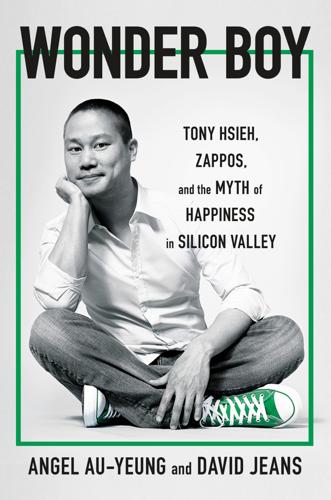
Wonder Boy: Tony Hsieh, Zappos, and the Myth of Happiness in Silicon Valley
by
Angel Au-Yeung
and
David Jeans
Published 25 Apr 2023
“Forget about return on investment. Bay Area tech companies spend $1 million a month on food, drink and music in exchange for ‘buzz.’ … In any given week, technology companies throw 15 to 20 parties in the San Francisco Bay Area.” Tony and James became regulars on the circuit. Shortly after Marc Benioff launched Salesforce.com in 1999, a company that would propel him into the billionaire ranks and make him the self-appointed benefactor-in-chief of San Francisco in decades to come, he threw a party to commemorate the company’s founding. “The company had 200 customers by then but still minuscule revenues and no profits,” read a CNN story at the time.
…
See also Downtown Project; and specific sites death of Tony and map of Oscar Goodman’s early downtown plans in Tony plans to sell his real estate in Tony’s decline and Zappos first located in suburbs of Las Vegas Arts District Las Vegas City Hall Las Vegas Knights Las Vegas Nights (film) Las Vegas Review-Journal Las Vegas Sun Las Vegas Symphony Park Las Vegas Weekly Las Vegas World Market Launchkey Laundromat bar Laundry Room bar Lawn, Mei Lawrence Memorial Hospital (New London) Lazy Stars band Learning Village Lee, Ang Lee, Eva Lee, General Tsai (maternal grandfather) Lee, Peggy (maternal grandmother) Lee, Tony Lehman Brothers LGBTQ community Life Is Beautiful financials and half sold to Wendoh Media Justin Weniger fired from Rehan Choudhry fired from Lilly, John Lim, Jenn Limitless (film) Lin, Alfred leaves Tony for Tellme Networks leaves Zappos for Sequoia LinkExchange and as Zappos COO Zappos early years and Zappos sale to Amazon and LinkExchange sold to Microsoft Yahoo and Little Book of Ketamine, The (Kelly) Liu, Eric Liu, Ying Livestrong Lombardi, Laura Lombardi Sports Lonsdale, Joe Lopez, Janice Los Angeles Los Angeles Magazine Los Del Rio Louie, David Louie, Jen Love, Reggie “Love Shack” (song) low-income housing Lucasfilm Lucas Valley Lundberg, Johan Lux Delux Luxor hotel “Macarena” (song) Madan, Sanjay Magic Castle project Mandel, Steven Mao Zedong marijuana Marin County market-based dynamics Marley the alpaca Maroney, Steve “Steve-O” Mars, Bruno Martin, Amy Jo Maslow’s hierarchy of needs Massachusetts Institute of Technology (MIT) Match.com Matrix, The (film) McCabe, Jen McHale, Patricia McNamara, Holly MDMA (Ecstasy) Megan Thee Stallion Melrose Place (TV show) Mel’s Diner “metaverse” #MeToo movement Mexico Michaud, Mike Microsoft LinkExchange bought by Miller Creek Elementary School (formerly Dixie) Miller Creek Middle School mindfulness Minogue, Kylie “Molecular Thermodynamics and High Pressure Kinetics of Polar Reactions in Solutions” (Richard Hsieh) Monster Energy girls Montana July 4 trips MontBleu Hotel (South Lake Tahoe) Mont Marin Moore, Demi Moore, Marcia Morabito, Angela Moritz, Michael Mossler, Fred Alfred Lin’s departure from Zappos and as check-and-balance for Tony death of Tony and departure from Zappos and Downtown Project and Las Vegas memorial toast to Tony and Life Is Beautiful and Mark Guadagnoli brought to Zappos by Nacho Daddy opened by Ogden building and remarriage and family and Tony’s psychotic break and travels with Tony and Zappos Holacracy campaign and Zappos launch and Zappos leadership team and Zappos sale to Amazon and Mossler, Kalei Mossler, Meghan Motel 6 (Las Vegas) Mount Everest Mount Kilimanjaro MTV multiverse Mumford and Sons Musk, Elon Musk, Kimbal Nacho Daddy NAD (nicotinamide adenine dinucleotide) Nathoo, Nadeem National Aeronautic and Space Administration (NASA) National Drug Intelligence Center National Science Foundation National Taiwan University (NTU) Naughton, Jamie Navy SEALs NBC Necker Island Neighborhood Renewal (Clay) Neon Reverb NeoPlanet Netscape Neumann, Adam New Balance New London, death of Tony in New London Fire Department Newmark, Craig New Orleans Newsom, Gavin Newsom, Jennifer Siebel New York City New York Times, The bestseller list New York University (NYU) Nike 1999 Bar 9th Bridge School Nipton, California “Nitrous Oxide Advantage, The” (video) nitrous oxide (laughing gas; Whip-Its) Nobu Nordstrom norepinephrine NSFWCorp Oasis Motel Obama, Barack “Octopus” (poem by Tony) octopus sculpture Oehm, David Ogden building Olsen, Ashley Olsen, Mary-Kate OpenTable Oracle Orthodox Jews Our Town (Wilder) “Over the Rainbow” (song) Oviedo, Victor Padover, David Page, Larry Pakistani immigrants Palantir Pando Daily Paris Hotel Park, Daniel Park City Andy and death of Tony and intervention attempts and welfare checks in Jewel’s visit to Tony in rehab in Tony moves to Tony’s line of credit in Tony’s psychotic break and decline in Park City Hospital Park City police Parke Davis Company Park on Fremont Parlour Bar Partovi, Ali Partovi, Hadi PayPal PCP Peake, Chris Peake, Christine Pence, Mike Pete’s Brewing Company Pezzello, Elizabeth PGA Tour Pham, Mimi Phi Lambda Upsilon pickup community Pierce, Brock Pillsbury, Skye PlanetRx Playboy Plaza Hotel Poler, Ariel polygamy-style parenting positive psychology Postmates Powder Mountain ski trip Premsrirut, Puoy Prince Princeton University psychedelic mushrooms (psilocybin) Puerto Rico Quincy House Grille rave scene Raytheon Recano, Victoria Re/Code Reddit regression testing Reid, Harry Resort Gaming Group ResultSource return on community (ROC) return on investment (ROI) return on luck (ROL) Rinaudo, Keller Rise of Superman, The (Kotler) Robertson, Brian ROCeteer Rolling Stone Romotive (later Zipline) Roquet, Salvador Ross and Snow Rowland, Mark Rufus Du Sol Russian financial crisis “Sacco, Shelby” (pseudonym) Salesforce.com Salomon Brothers Salon SALT Conference Sanborn, Mark San Francisco San Francisco Chronicle Scaramucci, Anthony Schaefer, Scott Schleifer, Kimberly Schonfeld, Richard Scientist, The (Lilly) Seamless Sears Sequoia Capital serotonin Shanghai Archive of Psychiatry Shanghai Mental Health Center Sherman, Jody ShoeSite.

PostgreSQL: Up and Running
by
Regina Obe
and
Leo Hsu
Published 5 Jul 2012
PostgreSQL 9.1 added the extra feature of making triggers available for views. foreign data wrappers Foreign data wrappers allow you to query a remote data source whether that data source be another relational database server, flat file, a NoSQL database, a web service or even an application platform like SalesForce. They are found in SQL Server as linked tables, but PostgreSQL implementation follows the SQL/Management of External Data (MED) standard, and is open to connect to any kind of data source. row/record Rows and records generally mean the same thing. In PostgreSQL, rows can be treated independently from their respective tables.
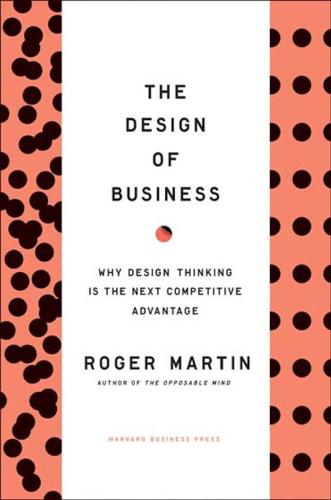
Design of Business: Why Design Thinking Is the Next Competitive Advantage
by
Roger L. Martin
Published 15 Feb 2009
For more on the De Prees, see “The De Prees of Herman Miller.”) During the review, De Pree turned to Harvey and asked whether he had gathered the feedback from the sales force on the product design that they had just reviewed. He asked the question rather conspiratorially, as if to suggest that he hoped and expected that Harvey had gotten sales-force feedback. Fortunately, the politically savvy Harvey had already asked some of the old guard about De Pree’s predilections and learned that De Pree tested all the new executives with this question. Harvey knew that the right answer was, “No, absolutely not!” De Pree smiled in appreciation. “That is right, Mr.
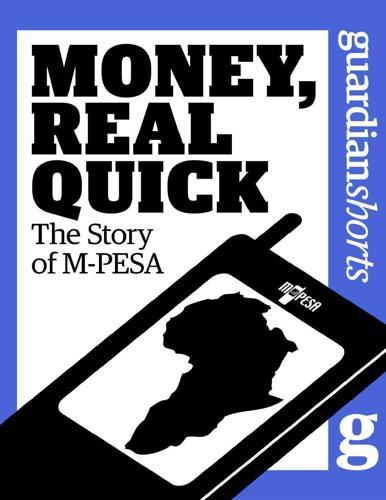
Money, Real Quick: The Story of M-PESA
by
Tonny K. Omwansa
,
Nicholas P. Sullivan
and
The Guardian
Published 28 Feb 2012
WIZZIT, like Celpay, is neither a bank nor a telecom, but an integrator that provides a platform that multiple banks and telecoms can use to connect their customers. Launched in 2004, as a division of the South African Bank of Athens, WIZZIT is independently owned. Customers don’t need a bank account, but can deposit cash at post offices that act as agents, and can withdraw funds from any ATM branch, using WIZZIT’s Maestro branded debit card. WIZZIT’s salesforce is made up of previously unemployed university graduates from low-income communities known as “WIZZ Kids.” This feel-good story, however, has not resulted in much uptake—well under 1 million customers in seven years. THE THAI MODEL In 2005, True Move, a mobile operator in Thailand, introduced True Money, which now has 6 million customers who process nearly $1 billion in electronic payments a year.

Lifestyle Entrepreneur: Live Your Dreams, Ignite Your Passions and Run Your Business From Anywhere in the World
by
Jesse Krieger
Published 2 Jun 2014
Sites like Alibaba.com have vendors in their Software section that have ready-made, easily customizable CRM solutions that are geared specifically for e-commerce of various goods. You can also hire programming firms from sites such as Elance.com or Guru.com to customize free open-source CRM software such as SugarCRM. Perhaps the easiest solution, however, is using off-the-shelf software-as-a-service (SaaS) CRM platforms such as Salesforce.com, crm.zoho.com, or vtiger.com. My recommendation: Use Zoho.com to start with. It’s free for up to three uses and very affordable thereafter. Their CRM setup already includes all the forms and modules you will need for your business (Sales Order, Invoice, Purchase Order, etc.). If you want a full-featured, very robust solution, take a look at www.InfusionSoft.com - this is the top-of-the-line small business solution for e-commerce, CRM and email marketing, but it costs a few hundred dollars per month.
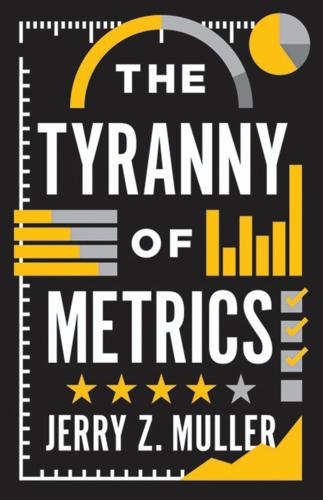
The Tyranny of Metrics
by
Jerry Z. Muller
Published 23 Jan 2018
Ibid., p. 60. 7. Connable, Embracing the Fog of War, pp. xv, xx. 8. Jan Osborg et al., Assessing Locally Focused Stability Operations (Rand Corporation, 2014), p. 9. 9. Connable, Embracing the Fog of War, p. 29. CHAPTER 12. BUSINESS AND FINANCE 1. http://www.simon.rochester.edu/fac/misra/mkt_salesforce.pdf. 2. Barry Gruenberg, “The Happy Worker: An Analysis of Educational and Occupational Differences in Determinants of Job Satisfaction,” American Journal of Sociology 86 (1980), pp. 247–71, esp. pp. 267–68, quoted in Kohn, Punishment by Rewards, p. 131. 3. Erik Brynjolfsson and Andrew McAfee, The Second Machine Age: Work, Progress, and Prosperity in a Time of Brilliant Technologies (New York, 2014). 4.
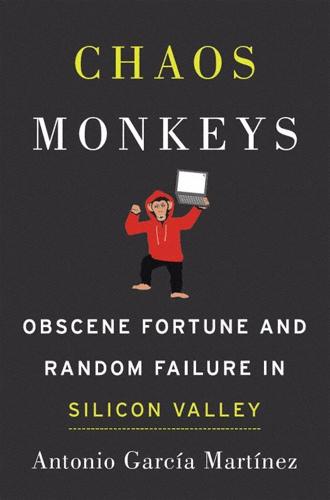
Chaos Monkeys: Obscene Fortune and Random Failure in Silicon Valley
by
Antonio Garcia Martinez
Published 27 Jun 2016
Also, given that you’re making fifty to one hundred dollars per month for every sale, those nickels and dimes mean any sort of high-touch sales process is unscalable even for underpaid startup founders. So you’ve got to scale the sale somehow, either by partnering with someone who already owns the SMB relationship (think Salesforce, or the advertising departments of newspapers), or by building on an existing platform with small-business clients, assuming that’s possible with your technology. In our case, we barely had any success with partnering, and had modest success with the building. But that’s getting ahead of our story.
…
Facing SFMOMA was the Moscone Center, named for former San Francisco mayor George Moscone, who was famously assassinated in 1978 in his office in City Hall along with Harvey Milk, the first openly gay elected official in California. An immense complex spanning two city blocks, it houses every major tech conference you can name. Oracle, Apple, Salesforce, Google, all have their product shindigs there, as well as the various niche ones like GDC (gaming), JavaOne (the Java programming language), and RSA (cybersecurity). If you have any tech career at all, you’ll one day don a corporate-branded lanyard and name tag and stroll into the tightly choreographed spectacle of capitalism that is a tech conference, complete with staged product announcements, “fireside chats,” and a makeshift favela of promotional booths.
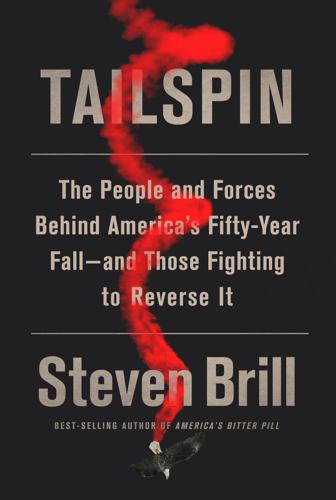
Tailspin: The People and Forces Behind America's Fifty-Year Fall--And Those Fighting to Reverse It
by
Steven Brill
Published 28 May 2018
Countrywide extended $1.5 trillion in mortgages from 2002 to 2005, and was able to sell off 87 percent of them to investors. From 2000 through 2008, Mozilo received more than $500 million in salary and stock-based bonuses, while his company graced Fortune magazine’s list of America’s most admired companies. At times, however, Mozilo blanched at the risky loans his salesforce was making. In one email, he warned his senior managers that they could bring “financial and reputational catastrophe.” In another, he called the company’s subprime loans “toxic.” Yet he pressed on, continuing to make the loans and then push them off into securitization, until Countrywide’s loan portfolio was so full of defaults or loans whose payments were in arrears that no one would buy them.
…
Although the FDA had repeatedly rejected Johnson & Johnson’s efforts to get Risperdal approved for children, the company engaged in a broad multi-year campaign to pay prominent pediatric psychiatrists to hold conferences praising the drug’s efficacy in helping children with behavior disorders or attention deficits. A separate nationwide salesforce was deployed to distribute sales materials and samples to pediatricians, aimed at encouraging them to prescribe the drug for their young patients. Child-friendly Risperdal-labeled popcorn packages and Legos with the Risperdal logo were given to the pediatricians’ nurses during these sales calls for distribution in the waiting room, creating the sense for parents and kids alike that this powerful anti-psychotic was a routine, and fun, part of children’s lives.

Your Computer Is on Fire
by
Thomas S. Mullaney
,
Benjamin Peters
,
Mar Hicks
and
Kavita Philip
Published 9 Mar 2021
Understanding the Cold War as an ideological battle between social freedoms and fairness, it is clearer in the wake of Edward Snowden’s revelations of the NSA’s global surveillance and the Russian hacking of the 2016 US elections that the very technology thought to herald the end of that conflict and to usher in an age of information freedom—global computer networks—has actually left no clear victor among our multipolar world of networked citizens and migrants.41 Instead, the sure victors of the last half century of network history have been large organizations—telecommunication companies, surveillance states, big tech (Amazon, Apple, Facebook, Google), internet providers, cybersecurity organizations, data broker services (SAS and SalesForce), and other technologically powerful few that, fueled by data breaches and the fumes of modern privacy, sort, toll, and monitor our many network traffic bottlenecks. Networks do not resemble their designs so much as they take after the organizational collaborations and vices that tried to build them: the first civilian computer networks ever imagined tried to reproduce and manage the institutional collaboration among Soviet economic bureaucracy—and when Soviet bureaucrats proved noninteroperable, so did their computer networks.
…
See also Thompson hack feature, not a, 4, 7, 18–19, 148–151, 153, 214, 223, 262, 303 Bureaucracy, 78, 80, 86t, 88, 109, 150, 175 Burmese, 339, 344, 354 Bush, Randy, 324–326 Bush, Vannevar, 348 C (programming language), 273–277, 279, 281–284, 286 backslash, 279, 281–282 commands, 279, 282–283, 285, 287 C++, 273, 275, 290 C#, 273 Objective C, 273 Cable, 5, 100–102, 104, 107, 111, 321 infrastructure, 103–104 internet, 95, 98–99 materials, 94 networks, 5 television, 315, 317 undersea, 72, 93, 99 Caldwell, Samuel Hawks, 348–350 Call centers, 5, 56 Amazon, 37 Indian, 105, 298, 302, 305, 307 Cambridge Analytica, 118 Capital, 6, 31, 202, 316, 378, 380 cultural, 299 global, 88 intensive, 277, 313–314 investment, 44, 301, 314–315, 332 physical, 46, 107 venture, 15–16, 53, 175, 255–256, 267 Capitalism, 46, 87, 171, 368 welfare, 160–161, 167, 170–174 Carceral state, 206, 208 Carlin, George, 59 Carnegie Mellon University, 257 Cart Life, 241 Cartography, 95–96, 107 Catholicism, 171, 173–175 CCM (Commercial content moderation), 56–58, 62, 66, 122 CDC (Center for Disease Control), 20 CDU (Christian Democratic Union), 170 Cellular phones (cell), 7, 306, 317, 332, 365, 378 and M-PESA, 7, 322, 326–328, 333 Safaricom, 326–328, 333 SIM card, 326–328 Chex Quest, 237 Child pornography, 6, 117–125, 127–130 limit case, 129 server storage, 383 Child Victim Identification Program, 122–123, 125 China, 7, 45, 104, 227 accent bias, 188, 189t apps, 332 Communists, 348 IMEs, 351, 357 Input Wars, 351 language, 188 People’s University (Beijing), 357 rising superpower, 153 writing interfaces, 381 Chinese keyboard, 345, 345f, 348–350, 353, 367 Chinese typewriter, 346, 350 dian, 351, 352f, 352 difficulty score, 344–345 MingKwai keyboard, 346–349, 347f, 353 and QWERTY keyboard, 338–339, 342, 346, 350–351, 353–354, 357 retrieval system, 346–347, 349–350, 353 script, 221 search writer, 350 Christian, 161, 170–171, 187 Central Intelligence Agency, 80 Cisgender, 154 Clark, David D., 71 Class bias, 4–6, 88, 136, 161–162, 174, 184, 265 capitalist, 171 dominant, 180–181, 190 equality, 80, 86t exposure, 301–302 India, 299, 302–303, 308 investor, 53 lower, 162 management, 142 Marxist, 171–173 meritocracy, 138, 150 middle, 73, 80, 86, 139, 241 technocratic, 21 upper, 300- 302 upper-middle, 18 working, 79, 141–142, 288, 301, 309 Cloud definition, 33–34 and electricity, 33–34, 44 enables other industries, 46 as factory, 7, 35–36, 42–43, 45–46, 321 and infrastructure, 33–35 kilowatt-hours required, 34 physical, 31–32, 34, 44–46 supply chain, 45 Code Arabic, 191 Assembly, 275, 277, 281, 286 Black Girls Code, 255, 263 breaking, 138–139 (Colossus) Code.org, 253, 255, 259 Code2040, 255, 260 Coding, Girls Who Code, 253, 255, 263 cultural, 302 digital, 284, 289 dress, 145, 164–165, 298 education, 6 empire, 76 #YesWeCode, 253, 264–266 HLL (high-level language), 275, 277–278, 284, 290 Hour of Code, 253, 263–264 is law, 126 platforms, 321 robotics, 201, 203, 205 social media, 59 source, 273–292 passim (see also Source code) switching, 184, 190 typing, 188, 351 writers, 24, 145, 256–259, 262–267, 300, 381 Yes We Code, 255 Code.org, 253, 255, 259 Code2040, 255, 260 Coding, Girls Who Code, 253, 255, 263 Cold War, 137, 152, 169 computer networks, 75–76, 83–84 network economy, 87 technology, 17–18, 94, 137 typewriter, 227 Collision detection, 242–243 Colonialism, 19, 91, 93, 105, 109, 245 cable networks, 93, 99, 101 colonization, 186, 378 digital, 331 Europe, 110, 147–148, 343 internet, 111, 129 language as, 186–188 metaphors, 94 stereotypes, 96, 102, 104 technocolonialist, 103–104 Colossus, 17, 139, 143 Comcast, 35 Commercial content moderation (CCM), 56–58, 62, 66, 122 Commodity computational services, 33 Common sense, 73, 96 Communications Decency Act, 60–61 Compaq, 318 Complex scripts, 188, 222, 344–345, 350 CompuServe, 320, 325 Computer anthropomorphized (see Robots) conservative force, 15 control and power, 23 critiques of, 5 men, 142 utility, 35, 320 humans as, 43, 140, 384 Computer science, 18, 58, 66, 112, 367 artificial intelligence, 58, 66 education, 256, 263 Thompson hack, 275, 291 women in, 254 Computing, 135–155 passim artificial intelligence, 56 Britain and, 21, 138, 148–152 Chinese, 350–351, 353–354 and class, 142–143 cloud, 78, 87 companies, 13, 18–19 devices, 40–41, 45 education, 368 and empire, 147–148 environment, 382 global, 350, 377 hacking, 289–291 history of, 7, 17, 35, 38, 43, 46, 137, 153–154 Latin alphabet, 357 masculinity, 263 management, 23 manufacturing, 39 media, 4–8, 377–380 meritocracy narratives, 137, 153–154, 381 networks, 77, 199, 320–321 personal, 354 power, 328 software, 318 typing and, 220, 226, 337, 339, 341, 344 underrepresented groups and, 253, 255–256, 264, 266 and women, 17, 43, 135, 139–142, 144–147 Concorde, 145, 146f Congress, 11–12, 82, 154 Content antisemitic, 265 app, 319, 321 child abuse, 118–119, 122, 125 commercial content moderation (CCM), 56–58, 62, 66, 122 filtering, 57 illegal, 62 internet, 317, 319 moderation, 54–57, 123, 126, 380–382 moderators, 5, 380–382 review, 121, 128–130 social media, 59, 61–63, 66, 232, 321, 329–331 terrorism, 57, 66, 130 violent, 117 web, 317 Contractor, 35, 53, 56, 266 CorelDraw, 298 COVID-19, 14, 20, 377 Cox, Chris, 61 Creating Your Community, 266 Creative destruction, 4 Crisis, 4, 6, 16, 21, 150, 235, 297, 383–384 Covid-19, 20 identity, 58–60 point, 13 Y2K, 104 CSNET, 81 Cybernetics, 75, 78–80, 83, 86, 86t, 88 cyberneticist, 77, 81–82 Cyberpunk, 100–101, 107, 110 Cybersyn, 75, 79–80, 85, 86t CyberTipline, 125 Dalton gang, 287–289 DARPA (Defense Advanced Research Projects Agency), 383 Dartmouth College, 235 Data biased, 66, 205 due process, 206 objective, 205 processing, 38, 40–41, 119, 206, 300 socially constructed, 205 value-neutral, 372 Data broker Salesforce, 87 SAS, 87 Data entry, 5, 104, 150, 367 David, Paul, 337–338, 351, 353, 357–358 Davies, Donald, 83 Death, 15, 120, 186, 371, 373, 379 Covid-19, 12 gaming, 233–234, 236 life-or-, 6, 206, 266 technology and dying well, 378 Decolonization, 91, 104, 111–112 Deep Blue, 7 De Kosnik, Benjamin, 108–109, 110 Dell, 318 Delphi, 290 Democratic Republic of Congo, 45 Denmark, 44, 128–129 de Prony, Gaspard, 39–40 Design values, 73–76, 84–88 American, 81–84 Chilean, 79–81 Soviet, 77–78 state, 75, 78, 80, 83, 86, 86t Devanagari, 339, 342, 344, 350, 354 Developing world, 93, 103, 105, 180, 325, 330–332 Devi, Poonam, 304 Diamond, Jared, 338, 351, 353, 357–358 Difference Engine, 40 Digital coding, 284, 289 colonialism, 91, 93–94, 103, 331 computers, 38, 41, 138 connectivity, 379 economies, 13, 22, 29, 31, 33, 35, 45, 145 forensic work, 123, 126, 128, 354 future, 101 gaming, 241 imperialism, 186–187, 191 inclusion, 303 infrastructures, 126, 151, 155 invisibility, 98, 100, 204 labor, 6, 147, 101, 354 materiality, 5 networks, 83 platforms, 66, 118, 199, 201 politics and, 110, 112 predigital, 96–97, 152 revolution, 29, 32 surveillance state, 119, 130 technology, 40, 64, 123–124, 200, 382 vigilantism, 120 Disability, 12, 15, 160 Disasters, 11–15, 19–20, 22–24, 54, 204, 338, 364 Discrimination.

The Start-Up of You: Adapt to the Future, Invest in Yourself, and Transform Your Career
by
Reid Hoffman
and
Ben Casnocha
Published 14 Feb 2012
Silicon Valley has become the twenty-first-century model for entrepreneurship and progress and has had multiple generations of entrepreneurial companies over the decades: from Hewlett Packard’s founding in 1939 to Intel, Apple, Adobe, Genentech, AMD, Intuit, Oracle, Electronic Arts, Pixar, and Cisco, and then to Google, eBay, Yahoo, Seagate, and Salesforce, and then more recently to PayPal, Facebook, YouTube, Craigslist, Twitter, and LinkedIn. In each passing decade, Silicon Valley has kept and intensified its entrepreneurial mojo, with dozens of companies creating the future and adapting to the evolution of the global market. These companies provide not only a new model for corporate innovation, but also the entrepreneur mind-set needed to succeed in individual careers.
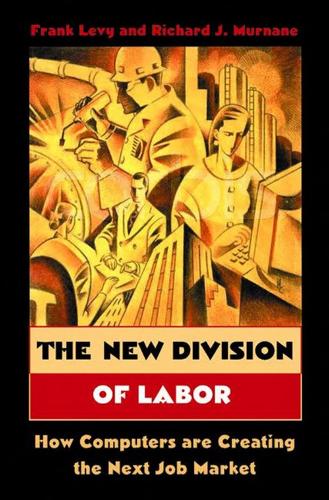
The New Division of Labor: How Computers Are Creating the Next Job Market
by
Frank Levy
and
Richard J. Murnane
Published 11 Apr 2004
Salespeople for the automated recruiting software made fewer calls and spent more time designing specific proposals. Their sales cycle involved twenty steps that could take six to twenty months to complete. A software sale could earn the company several hundred thousand to a million dollars. All Recruit.ASP sales workers use software to identify and contact clients. When the firm acquired a new company, its salesforce continued to use the package it had been using, a situation that began to create problems. Salespeople selling simpler products—such as job-fair booths— used software that focused on contacts. It produced a list of potential customers and automatically dialed their numbers but did nothing else.
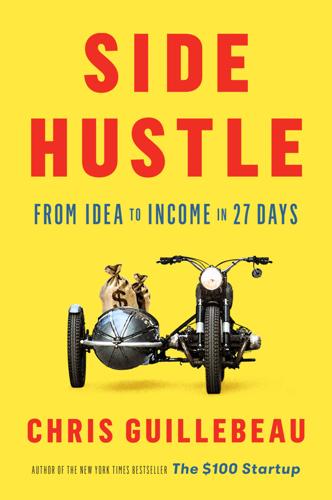
Side Hustle: From Idea to Income in 27 Days
by
Chris Guillebeau
Published 18 Sep 2017
Commonly known as CRM, for customer relationship management, this software helps you keep tabs on lots of different people. It’s particularly important if you sell expensive items or services to specific contacts you build a relationship with over time. It’s less important if you sell a lot of items or services to anyone who wants them. Examples: HubSpot, Salesforce, Microsoft Dynamics PROJECT MANAGEMENT. If you end up working with a designer, web developer, assistant, or anyone else, it’s great to have a shared, online workspace where you can monitor the status of different tasks. Examples: Trello, Asana, Basecamp BOOKKEEPING. At first, you’ll probably do this yourself—but whether you end up getting help or just continue on the DIY model, you’ll need to track expenses and income.
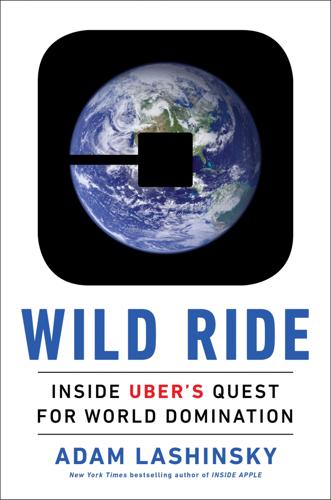
Wild Ride: Inside Uber's Quest for World Domination
by
Adam Lashinsky
Published 31 Mar 2017
A large handful of smaller Internet companies, most with some connection to media or advertising technology, had formed in San Francisco during the dot-com bubble of the late 1990s. Most vanished just as quickly. Then, in the depth of one of the tech industry’s periodic down cycles, something changed. One new software company, Salesforce.com, grew rapidly in San Francisco, primarily because of its founder’s preference for urban living. Then, as Google and other tech giants began offering free, Wi-Fi-enabled shuttle buses to the suburbs in order to appeal to younger city dwellers, San Francisco enjoyed a resurgence. Once that happened, more companies sprang up there.
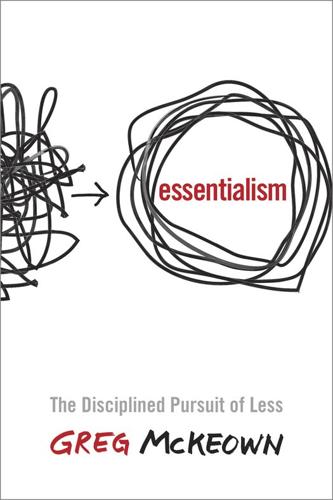
Essentialism: The Disciplined Pursuit of Less
by
Greg McKeown
Published 14 Apr 2014
Often it’s easier to give a vague, blanket answer rather than to summon up the facts and information required to give a thoughtful, informed answer. Yet evasiveness only sends us down a nonessential spiral of further vagueness and misinformation. Clarifying the question is a way out of that cycle. Elay Cohen, senior vice president at Salesforce.com, was one member of a six-person team crammed into a hot hotel room at the normally tranquil Cavallo Point, overlooking the Golden Gate Bridge. For the next three hours they would compete against five other teams in a business simulation. The task involved answering a series of questions about how they would handle hypothetical management situations.
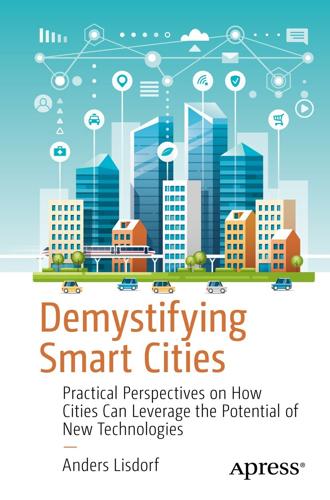
Demystifying Smart Cities
by
Anders Lisdorf
Another important point of the NIST definition is the division into three types: Software as a Service (SaaS), Platform as a Service (PaaS), and Infrastructure as a Service (IaaS).Software as a Service – Is the ability of the consumer to access system features through a standard interface like a web browser. The consumer has no control of the underlying infrastructure except for what can be configured in the application. The vendor provides and maintains all aspects of the product except for application-specific configurations. Well-known consumer-level examples are Gmail, Office 365, Salesforce, and Slack. An example of a SaaS storage technology is Google Docs or SharePoint Online. Platform as a Service – Is the capability to deploy to the cloud applications that are developed by the consumer. The consumer has no control of the underlying networks, operating systems, or storage, but has control of the applications that are developed.
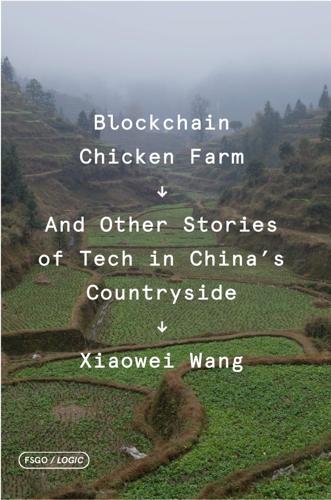
Blockchain Chicken Farm: And Other Stories of Tech in China's Countryside
by
Xiaowei Wang
Published 12 Oct 2020
These days, the multilevel marketing (MLM) industry is thriving on social media as millions of people hawk aromatherapy oils, yoga leggings, and vitamins across Instagram and Facebook. While MLMs have been known for their predatory, pyramid-scheme structures, some MLMs, like Rodan + Fields, are now legitimizing themselves, sporting luxe offices in downtown San Francisco, near Salesforce and Google. Other companies, like the venture-capital-funded Stella & Dot, proliferate throughout my own Facebook feed, relentless in their quest to have me join the craze as a seller. The pearls Kristie sells are low quality, but the oyster Kristie has in her hand is special to me. It’s a wish pearl oyster, the same dead mollusk that Zhao told me about, flown halfway around the world, trucked through a series of warehouses all the way from Shanxiahu.
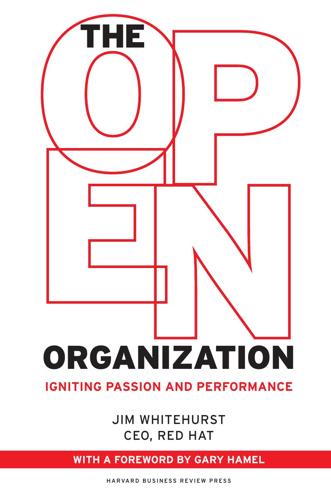
The Open Organization: Igniting Passion and Performance
by
Jim Whitehurst
Published 1 Jun 2015
Mackey and Sisodia, Conscious Capitalism, 239. 4. Stephen Bernhut, “Primal Leadership, with Daniel Goleman,” Ivey Business Journal 66, no. 5 (2002): 14–15. 5. The Economist Intelligence Unit, “The Rise of the Customer-led Economy,” 2013, http://www.economistinsights.com/sites/default/files/EIU_Salesforce_Proof-7.pdf. 6. Gary Hamel, “Innovation Democracy.” 7. Ibid. 8. Clay Shirky, Here Comes Everybody (New York: Penguin, 2008), 258–259. 9. Scott Cook, “Leadership in an Agile Age,” (lecture at Innovation 2011: Entrepreneurship for a Disruptive World Conference, March 2011), http://network.intuit.com/2011/04/20/leadership-in-the-agile-age/. 10.
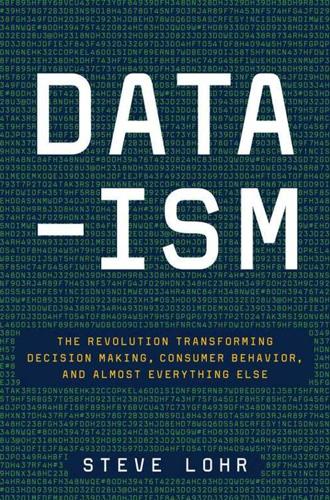
Data-Ism: The Revolution Transforming Decision Making, Consumer Behavior, and Almost Everything Else
by
Steve Lohr
Published 10 Mar 2015
Not so long ago, the boundaries were clear-cut. Silicon Valley had all of the start-ups and the engineering wizardry. San Francisco had trendy culture, fine dining, and old money. But the Valley’s monopoly on entrepreneurial vigor has been broken decisively by the rise of San Francisco–based technology companies ranging from Twitter to Salesforce.com, a supplier of Internet software for companies. So the terms of trade have been altered for the region’s young high-tech workforce. Many of them view the Valley as a great place to work, but no match for San Francisco as a place to live. To accommodate them, companies founded in the Valley often have sizable offices in San Francisco, like Cloudera’s.
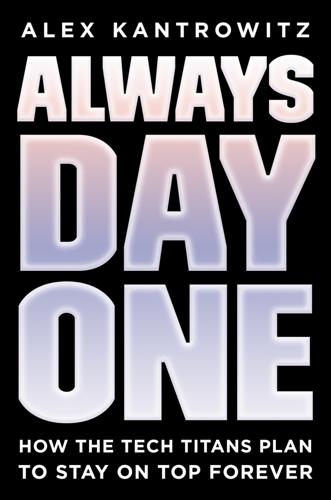
Always Day One: How the Tech Titans Plan to Stay on Top Forever
by
Alex Kantrowitz
Published 6 Apr 2020
Naresh Venkat, Google’s head of machine learning and AI partnerships, showed off the possibilities, demonstrating how Google’s machine learning could combine with UiPath’s automation tech to process an insurance claim with no discernible human involvement. In a video Venkat played onstage, a person uploaded photos of their damaged vehicle to an insurance company’s website, and Google’s machine-learning system reviewed the photos and determined how much the repair would cost. UiPath then opened a customer file in Salesforce, created an issue report that noted the insurance award, wrote up a basic assessment document in Microsoft Word, and emailed the assessment to the customer and an insurance company representative. “You can automate a good chunk of what it probably takes a human to do,” Venkat said, speaking with a slight hint of discomfort.
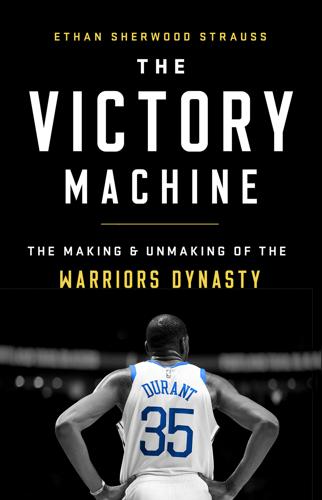
The Victory Machine: The Making and Unmaking of the Warriors Dynasty
by
Ethan Sherwood Strauss
Published 13 Apr 2020
I hear enough from these other techlords who pretend to be benevolent while selling your data to manipulators and extortionists. Give me Office Park Daniel Plainview, telling his struggling competitors that “we’re light-years ahead.” The phrase is patently dorky and still lands with the force of Godzilla jumping off the Salesforce Tower. I have more tolerance for Joe Lacob than many of the people who compete against and work for him. If I’m honest, I enjoy Lacob. I find amusement in what might be otherwise deemed unpleasant. The NBA is an entertainment business and Lacob happens to be accidentally quite entertaining. Whenever he’s interviewed, it’s gold.
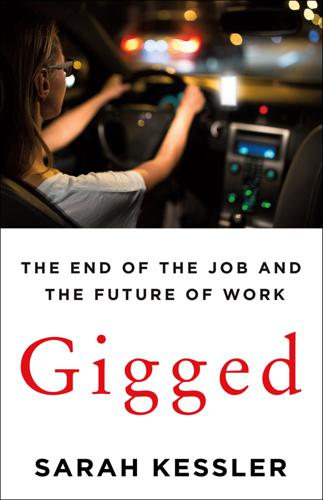
Gigged: The End of the Job and the Future of Work
by
Sarah Kessler
Published 11 Jun 2018
Drivers earned a bonus, usually around $200, if they recruited a friend, a bonus structure that would soon become standard elsewhere in the gig economy.2 For some, these bonuses were another appealing aspect of the job. Workers could use them to simultaneously supplement their income from fares and position themselves to others as small business owners, entrepreneurs, and members of the tech class. For a nominal cost, Uber had created a remarkably enthusiastic salesforce. That’s how Mamdooh Husein became an Uber driver. A 28-year-old waiter in Kansas City whose mother and everyone else calls “Abe,” he was initially skeptical when one of his coworkers told him about the ride-hailing app. Abe had lived in Kansas City for most of his life, and he had never once had an occasion to take a cab.

The Creative Curve: How to Develop the Right Idea, at the Right Time
by
Allen Gannett
Published 11 Jun 2018
As for the Park Hotel, it has turned into a techie commune where aspiring entrepreneurs and software engineers can rent minuscule rooms for $1,000 per month. So why are people moving there in droves? Somewhere along the way, SoMa turned into one of the epicenters of the start-up industry. In its immediate vicinity, you’ll find the headquarters of Twitter, Salesforce, Pinterest, and Zynga, as well as offices for major companies including Google, Yelp, and Adobe. As more and more tech companies migrate to the neighborhood, more people seem to want to follow their path. Engineers want to be near other engineers. CEOs want to be near other CEOs. Sociologists call this effect clustering.
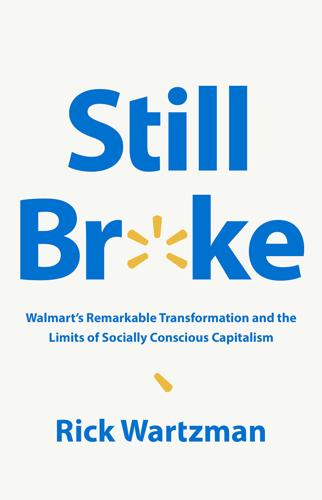
Still Broke: Walmart's Remarkable Transformation and the Limits of Socially Conscious Capitalism
by
Rick Wartzman
Published 15 Nov 2022
It is tempting to cling to the belief that companies like Walmart can change the world, especially at a time when government is so polarized and dysfunctional. “When the government is absent,” the PR firm Edelman has said, “people clearly expect business to step in and fill the void, and the high expectations of business to address and solve today’s challenges has never been more apparent.” Marc Benioff, the CEO of Salesforce, titled a section of his book Trailblazer to position the private sector as our savior: “Business Is the Greatest Platform for Change.” I have always been a both/and guy, someone who has thought that both government and business have a vital role to play in making sure that American workers earn a decent living.
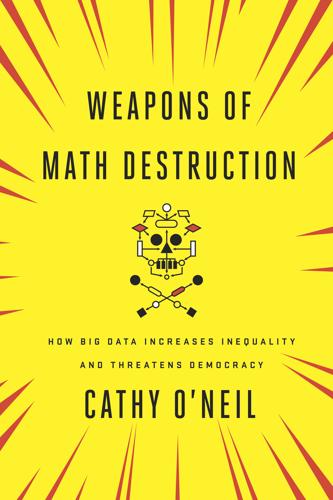
Weapons of Math Destruction: How Big Data Increases Inequality and Threatens Democracy
by
Cathy O'Neil
Published 5 Sep 2016
It contracted a microtargeting start-up, the Groundwork, financed by Google chairman Eric Schmidt and run by Michael Slaby, the chief technology officer of Obama’s 2012 campaign. The goal, according to a report in Quartz, was to build a data system that would create a political version of systems that companies like Salesforce.com develop to manage their millions of customers. The appetite for fresh and relevant data, as you might imagine, is intense. And some of the methods used to gather it are unsavory, not to mention intrusive. In late 2015, the Guardian reported that a political data firm, Cambridge Analytica, had paid academics in the United Kingdom to amass Facebook profiles of US voters, with demographic details and records of each user’s “likes.”

Choose Yourself!
by
James Altucher
Published 14 Sep 2013
Five minutes: Permission Networking Perhaps someone has an idea they want to share with someone at a certain company, or they need a contact. Or maybe someone wants to meet someone from another industry. Or maybe someone wants to meet Richard Branson (space’s the limit here). We all have ideas. Some have ideas for themselves, some have ideas for others. People can simply state: I would like a contact at SalesForce, in the marketing department. Again, no cross talking, if someone is willing to talk to this person the end of the meeting is where these conversations will happen. If nobody is sharing on this you can continue with the next segment. Five Minutes: Idea Sex Probably when people were sharing their Daily Practice of the week, they shared one or two of their ideas (or more) from their idea-list that week.
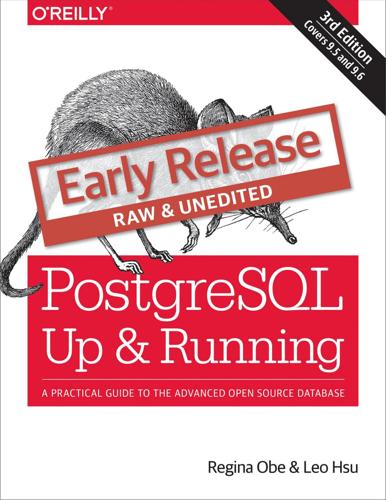
PostgreSQL: Up and Running, 3rd Edition
by
Unknown
Foreign tables and foreign data wrapper Foreign tables are virtual tables linked to data outside a PostgreSQL database. Once you’ve configured the link, you can query them like any other tables. Foreign tables can link to CSV files, a PostgreSQL table on another server, a table in a different product such as SQL Server or Oracle, a NoSQL database such as Redis, or even a web service such as Twitter or Salesforce. Foreign data wrappers (FDWs) faciliates the magic handshake between PostgreSQL and external data sources. FDW implementations in PostgreSQL follow SQL/Management of External Data (MED) standard. Many charitable programmers have already developed FDWs for popular data sources. You can try your hand at creating your own FDWs as well.
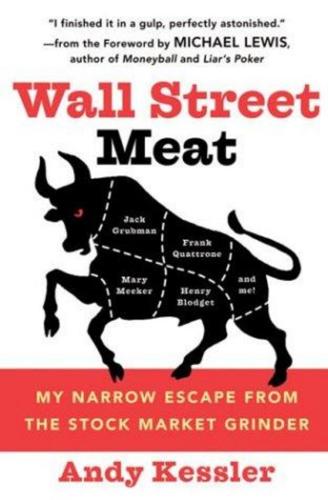
Wall Street Meat
by
Andy Kessler
Published 17 Mar 2003
With no moles and a limited imagination, I had to figure out where the world was going myself, think long term, and give up the short-term moves to my squirrely competition. Bob Cornell, my first boss and mentor, taught me to be early, but not too early, which confused me for the longest time. What he meant is that often you have to be wrong to be right. You have to say buy as a stock is going down, and then work your long-term arguments with the salesforce and institutional clients, in the face of being dead wrong every day for months on end. That’s how to make people money—get them into a stock when everyone is fleeing. That’s what they remember you for. That’s how you build an iron-clad reputation on Wall Street, whether you are in civilized research or anywhere else.
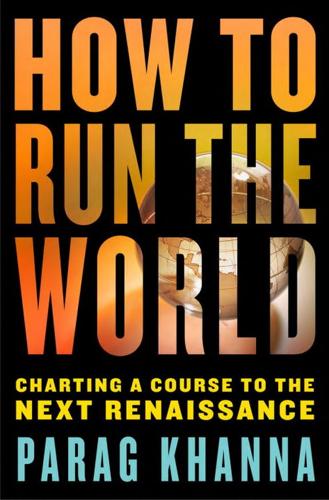
How to Run the World: Charting a Course to the Next Renaissance
by
Parag Khanna
Published 11 Jan 2011
Clearinghouses for clean energy trends such as the Climate Group and New Energy Finance have become a vital resource for investors lining up to enter the alternative energy market. The goal is not to find a single breakthrough, but to create an innovation space such as the GreenXchange, in which Nike, Best Buy, Yahoo!, and Salesforce operate an online commons to track and share eco-innovations seeking investment. Nobody holds a monopoly on providing incentives to those interested in saving the planet. Companies and charities together fund huge competitions such as Coke’s clean water prize and the X-Prize, which awards $250 million in prizes across fifteen areas but has inspired $2.5 billion in investment among the competing teams to find solutions to cancer, emission-free driving, and human genome sequencing.
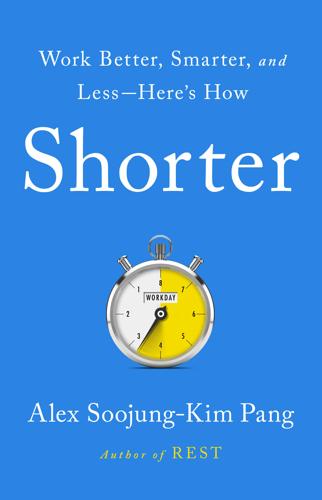
Shorter: Work Better, Smarter, and Less Here's How
by
Alex Soojung-Kim Pang
Published 10 Mar 2020
Ryokans aren’t large enough to attract the attention of big IT companies, and most are family-run businesses that are traditional and not very tech-savvy. So Tomio, who had studied engineering at Keio University and was a fuel cell researcher before he became an innkeeper, set out to create one. He built a web-based app atop Salesforce Connect that combines accounting and inventory, online reservations and customer information, billing, and a chat function. Staff could access it through tablet computers and smartphones. Some employees struggled with the new system, but after integrating payroll and requiring everyone to log their hours on it, adoption skyrocketed.
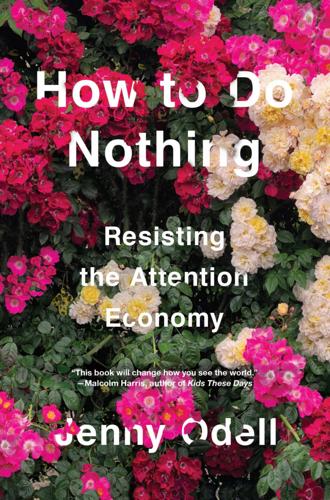
How to Do Nothing
by
Jenny Odell
Published 8 Apr 2019
Just before heading to the park, I’d gotten an email from the artist Gail Wight, who told me that after two years of few pelicans, around fifty had arrived near her home on the coast. Now the pelicans were flying plentifully past me, so close that I could see their faces, greeting me one at a time with their joyous six-foot-wide wingspans. Behind them rose the skyline of San Francisco, with its new Salesforce tower and its high-rise condos. If I squinted, I could just make out the building where I used to work, where they might have been discussing “brand pillars” at this very moment. Back there, things moved so quickly that we had separate catalogs for Spring 1, Spring 2, and Spring 3. But the pelicans made all of that seem like a joke with no punch line.
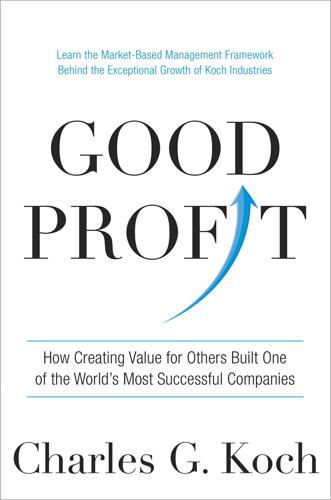
Good Profit: How Creating Value for Others Built One of the World's Most Successful Companies
by
Charles de Ganahl Koch
Published 14 Sep 2015
The combination of affordable and ubiquitous wireless communications, seemingly limitless storage, the increased computing power of handheld devices, and insights derived from the power to process massive data have led to innovations that have fundamentally transformed our business practices and the competitiveness of our businesses. When used properly, this technology enhances knowledge processes through the increased speed and lower cost of acquiring, storing, and distributing information. For one, the adoption of open architecture by large platform providers such as SalesForce.com and SAP is spawning a revolution in new business process apps. This is enabling disruptive changes in our operating efficiency and sales and marketing effectiveness. To fully benefit from these innovations, our businesses are working to revise their visions to include more transformative use of information technology.
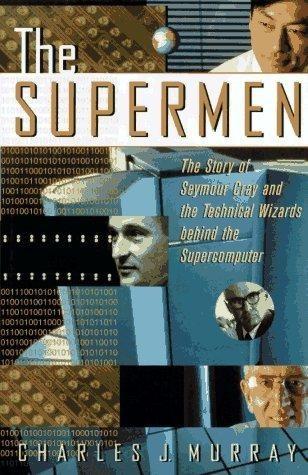
The Supermen: The Story of Seymour Cray and the Technical Wizards Behind the Supercomputer
by
Charles J. Murray
Published 18 Jan 1997
In a long meeting with the board, he trotted out attorneys and economists who helped him make his case. When the board asked for more authoritative legal opin- ions, Norris arranged for antitrust specialists to be flown in from New York and Chicago. He convinced the board that IBM had to be stopped, or its salesforce would inflict similar damage on Con- trol Data when its new machine, the CDC 7600, came out. If they didn't address it now, he said, IBM would wreck the company. The executive board reluctantly agreed. They would not sit idly. They would address Control Data's most serious threat. While Norris and the executive board braced for the IBM battle, another illness silently grew within the engineering ranks like a corporate case of hypertension.
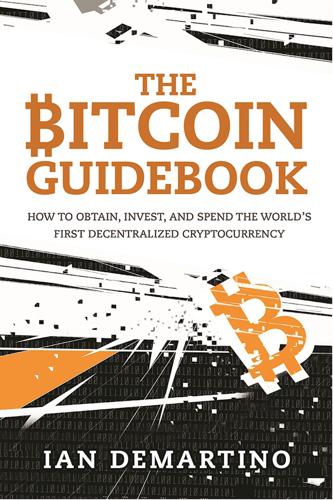
The Bitcoin Guidebook: How to Obtain, Invest, and Spend the World's First Decentralized Cryptocurrency
by
Ian Demartino
Published 2 Feb 2016
This level of transparency is unheard of in the financial world and Uphold has good reason to offer it. Uphold was started by CNET founder Halsey Minor. Minor was once a billionaire, having made CNET into the first non-pornographic media company on the Internet to turn a profit. He went on to cofound the widely successful Salesforce.com and Grand Central Communications, the latter of which was subsequently bought by Google and rebranded as Google Voice. After a few bad commercial real estate investments, a fine art addiction, the financial crisis of 2008, and various lawsuits filed by and against him, by the late 2000s Minor was broke.
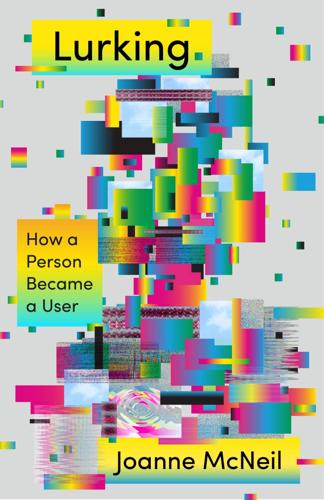
Lurking: How a Person Became a User
by
Joanne McNeil
Published 25 Feb 2020
Joseph Bernstein’s reporting on Lane Davis for BuzzFeed (“Alt-Right Troll to Father Killer: The Unraveling of Lane Davis,” July 18, 2018) also addresses the alt-right and its financial incentives, including fund-raising online. Twitter’s longtime resistance to anti-harassment protection was, in the end, an ill-advised business decision. In the fall of 2016, when the platform aimed to be acquired, companies like Google and Salesforce withdrew their bids, citing its problems with online harassment as a motivating factor. Lee Carter’s Twitter thread from September 7, 2018, is available to read at https://archive.fo/cmCgE. 6. COMMUNITY I interviewed Anna Leach on December 27, 2016. The comments cited may be viewed on the Shiny Shiny post “Has Facebook Finally Introduced ‘Who’s Looking at Your Profile’?
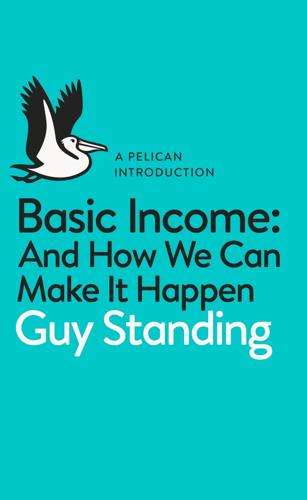
A Pelican Introduction: Basic Income
by
Guy Standing
Published 3 May 2017
Latterly, the idea has been taken up by Silicon Valley luminaries and venture capitalists, some putting up money for the cause, as we shall see. They include Robin Chase, co-founder of Zipcar, Sam Altman, head of the start-up incubator Y Combinator, Albert Wenger, a prominent venture capitalist, Chris Hughes, co-founder of Facebook, Elon Musk, founder of SolarCity, Tesla and SpaceX, Marc Benioff, CEO of Salesforce, Pierre Omidyar, founder of eBay, and Eric Schmidt, Executive Chairman of Alphabet, Google’s parent. Some people have rejected basic income on the rather crude reasoning that support from this quarter means it must be wrong! All that can be said at this stage is that the breadth of support, from across the political spectrum, from business executives to trade union leaders to social activists, and across all disciplines of the social sciences, promises a more robust movement than at any time in the past.
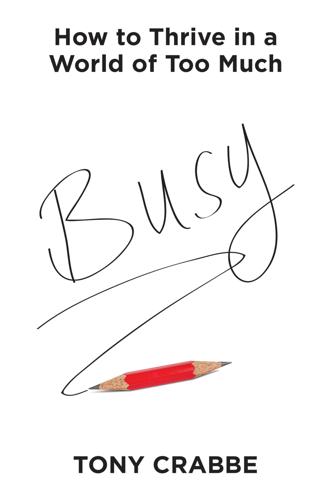
Busy
by
Tony Crabbe
Published 7 Jul 2015
Great research and humor Author: Daniel Goleman Title: Focus Why you should read it: Describes the importance and mechanisms of focus Author: Jonathan Haidt Title: The Happiness Hypothesis Why you should read it: Accessible blend of modern and ancient wisdom Author: Edward Hallowell Title: CrazyBusy Why you should read it: Description of busy, likening it to ADHD Author: Tim Harford Title: Adapt Why you should read it: Why we have to fail to succeed—a great read Author: Chip and Dan Heath Title: Decisive Why you should read it: Great book on how we decide Author: Chip and Dan Heath Title: Switch Why you should read it: One of the best on how to make changes Author: Arianna Huffington Title: Thrive Why you should read it: Inspiring read on how to thrive today Author: Maggie Jackson Title: Distracted Why you should read it: This book really influenced my thinking Author: Daniel Kahneman Title: Thinking, Fast and Slow Why you should read it: A brilliant overview of System One and Two thinking Author: Tim Kasser Title: The High Price of Materialism Why you should read it: Explains the research behind Chapter 9 Author: Robert Kegan and Lisa Laskow Lahey Title: Immunity to Change Why you should read it: A great book: make deep, adaptive change Author: George Leonard Title: Mastery Why you should read it: Describes the joy of practice Author: Jim Loehr and Tony Schwartz Title: The Power of Full Engagement Why you should read it: Inspiring book on managing your energy Author: Steve Peters Title: The Chimp Paradox Why you should read it: A simple concept that helps manage emotions Author: David Rock Title: Your Brain at Work Why you should read it: Remarkably simple application of neuroscience Author: Brigid Schulte Title: Overwhelmed Why you should read it: Fantastic, and relevant book on the subject of busy Author: Barry Schwartz Title: The Paradox of Choice Why you should read it: The subtitle says it all: “Why more is less” Author: Martin Seligman Title: Flourish Why you should read it: The latest book by the founder of Positive Psychology Author: Sherry Turkle Title: Alone Together Why you should read it: Insightful: our response to technological immersion Author: Timothy D. Wilson Title: Redirect Why you should read it: Surprising (and simple to use) findings on change About the Author Tony Crabbe is a business psychologist who works with multinational companies around the world, including Microsoft, Disney, Salesforce, News Corp, Cisco, HSBC, American Express and the World Bank. He is also an honorary research fellow in the field of organizational psychology at Birkbeck College, University of London. He lives with his family in Spain, but spends a considerable amount of time consulting in the UK and the US. Notes Epigraph 1.

The Globotics Upheaval: Globalisation, Robotics and the Future of Work
by
Richard Baldwin
Published 10 Jan 2019
She uses AI to make helpful suggestions: “Based on your typical monthly spending, you have an additional $150 you can be putting towards your cash rewards Visa. This can save you up to $300 per year.”4 JPMorgan’s white-collar robot is called Contract Intelligence (COIN), and Capital One has Eno. IBM is selling many Amelia-like virtual assistance under the brand Watson; Salesforce offers Einstein; SAP has HANA; Infor has Coleman; and Infosys has Nia. The public sector is getting in on the act too. The Australian government’s cognitive assistant is called Nadia. She helps citizens get information services for the disabled. Microsoft has Cortana, and Amazon has Alexa—the white-collar robot that “lives” in Echo (Amazon’s home AI system).
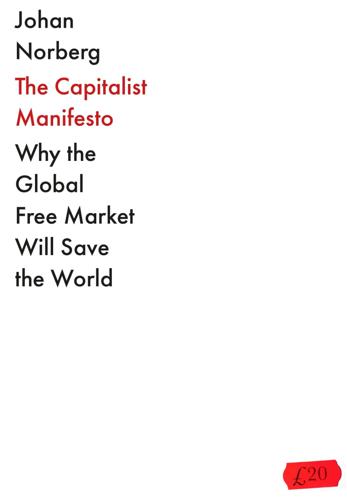
The Capitalist Manifesto
by
Johan Norberg
Published 14 Jun 2023
During the pandemic, we were all on Zoom rather than established companies’ video services. Snapchat and TikTok suddenly made the old social media look rheumatic. Despite it being said that no new arrivals can upset reinforced incumbents, TikTok reached one billion users in just four years – half the time it took Facebook to do the same. Salesforce is becoming increasingly aggressive in cloud services, and in five years Canada’s Shopify has gone from one-seventieth of US e-commerce to one-tenth. PayPal is becoming increasingly important in online payments. In addition, long-established companies are finally getting online. Disney has entered the streaming market and Walmart and Target and all their local counterparts have invested heavily in online shopping.
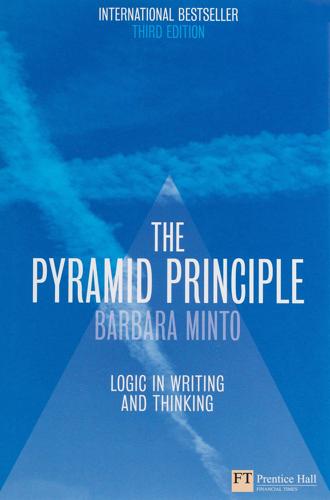
The Pyramid Principle: Logic in Writing and Thinking
by
Barbara Minto
Published 2 Jan 2010
Let n1e den1onstrate this using the first exan1ple on page 203. Because the words as laid out fail to call to mind an in1age as you read, your 1nind gropes in vain for smnething solid to hang onto. Look at the beginning of that first sentence again. ~· A primary c1rea of potential itnprovement is improving cost-effectiveness of field sales-force deployment (and organization) By the tin1e the field sales force arrives, the rest has disappeared front your mind. But the sentence goes on: tf to reflect the need for redefined selling missions at store and indirect levels dict<~tcd by changes in the lrade environment Novv, vvhat nouns do vve have to hang onto here that are relatively concrete?

Hands-On RESTful API Design Patterns and Best Practices
by
Harihara Subramanian
Published 31 Jan 2019
The GitHub API summary representations and detailed representations may be examples of API flexibility. List of repository API GET /orgs/myorg/repos gets the summary representation, and single repository API GET /repos/myorg/myhelloworld.rb fetches the detailed description of the indicated repository. The Salesforce API provides flexibility with its response formats, so API developers can serialize the data in either XML or JSON format. GraphQL endpoint implementation for API developers is another best example of API flexibility. With GraphQL, developers can request the data that they want based on a predefined schema and so the API can respond according to the predefined schema: The preceding screenshot reflects a sample GraphQL request (schema) for specific fields (book name and rating) and response with specified fields.
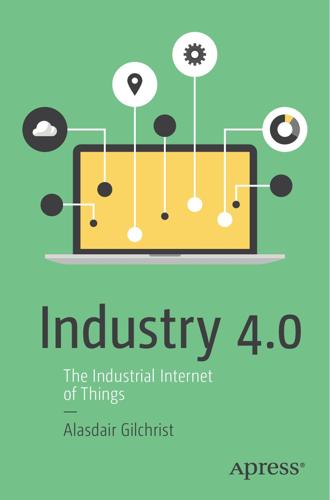
Industry 4.0: The Industrial Internet of Things
by
Alasdair Gilchrist
Published 27 Jun 2016
• PaaS (Platform as a Service)—Came about as Microsoft and others realized that developers required not just infrastructure but access to software development languages, libraries, APIs, and microservices in order to build Windows-based applications. Google also supplies PaaS to support its many homegrown applications such as Android and Google Apps. Industry 4.0 • SaaS (Software as a Service)—The precursor to the cloud in the form of web-based applications such as Salesforce. com, which launched in 1999. SaaS was a new way of accessing software, instead of accessing a local private server hosting a copy of the application, users used a web browser to access a web server-based shared application. SaaS was slow to gain acceptance until the mid 2000s, when broadband Internet access accelerated, thus permitting reliable application performance.

No Ordinary Disruption: The Four Global Forces Breaking All the Trends
by
Richard Dobbs
and
James Manyika
Published 12 May 2015
Elga Reyes, “Unilever launches €50M leadership centre in Singapore,” Eco-Business, July 1, 2013, www.eco-business.com/news/unilever-launches-leadership-centre-Singapore. 40. Stephen Hall, Dan Lovallo, and Reinier Musters, “How to put your money where your strategy is,” McKinsey Quarterly, March 2012. 41. www.salesforce.com/customers/stories/burberry. 42. Burberry’s digital activism, Enders Analysis, August 2012, www.endersanalysis.com/content/publication/burberry%E2%80%99s-digital-activism. 43. Ella Alexander, “Burberry opens Regent Street flagship,” Vogue UK, September 13, 2012, www.vogue.co.uk/news/2012/09/13/burberry-regent-street-flagship-opens. 44.
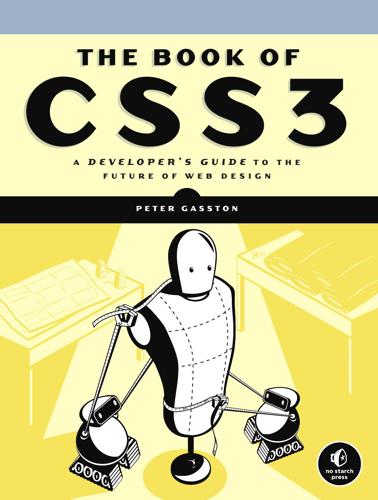
The Book of CSS3
by
Peter Gasston
Published 14 Apr 2011
About the Technical Reviewer Joost de Valk is a well-known specialist in the fields of search engine optimization (SEO), web design, and web development, and often speaks on these topics. Currently, Joost is a freelance consultant in SEO, web development, and online marketing strategy, working for such clients as eBay, RTL, salesforce.com, and the European Patent Office. He has built many a plug-in for WordPress (with over 3.5 million downloads), hosts the weekly WordPress Podcast, and blogs about all that and more on his blog, http://www.yoast.com/. Index A note on the digital index A link in an index entry is displayed as the section title in which that entry appears.
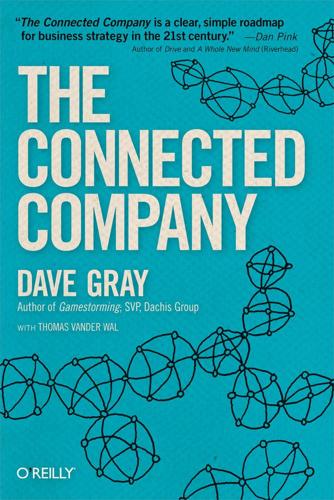
The Connected Company
by
Dave Gray
and
Thomas Vander Wal
Published 2 Dec 2014
Maneuver warfare requires that central commanders trust their forces to make tactical decisions in the field, within the context of a larger strategy. Thus, a central tenet of a maneuver strategy is distributed control. You can see maneuver strategies employed today by companies such as Amazon, which operates at a faster strategic pace than traditional booksellers and publishers, and software-as-a-service companies like Salesforce, which can run circles around traditional enterprise software vendors by making their software so easy to buy and start using that their sales cycles move much faster than competitors. Moral: Boyd said “People, not weapons, win wars.” Moral warfare concentrates on the people factor, focusing on winning the hearts and minds of the people while undermining the adversary’s efforts.

Peers Inc: How People and Platforms Are Inventing the Collaborative Economy and Reinventing Capitalism
by
Robin Chase
Published 14 May 2015
If we go back to the Oculus Rift story, the application of these kinds of licenses might have prevented the donors from feeling that they had been abused (and might also have caused Oculus founders to choose a different source of financing). Kickstarter and other donation funding sites might consider creating some simple rules, like GPL and CC, that could quickly and easily cover these low-likelihood financial windfalls. J. P. Rangaswami, an open-source advocate and most recently chief scientist at British Telecom and then Salesforce.com, thinks about how we can apply these ideas to the analog world—that is, not to code but to atoms, physical stuff. Imagine if we could have a common data standard (like the way we write dd-mm-yy, 11-16-14) for our assets: cars, buildings, favors from me. I could attach a Creative Commons–like license to that object.
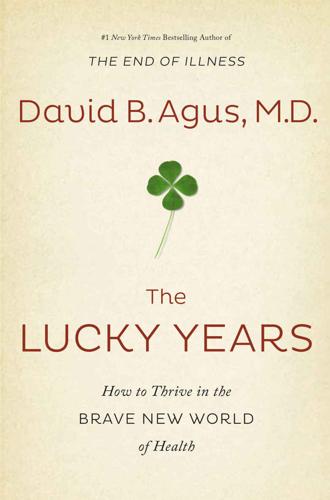
The Lucky Years: How to Thrive in the Brave New World of Health
by
David B. Agus
Published 29 Dec 2015
Agus presents a provocative, highly informative way of understanding revolutions in health and health care today that will change the quality of our lives.” —Murray Gell-Mann, PhD, Nobel Laureate in Physics, 1969, and distinguished fellow and cofounder of the Santa Fe Institute “Dr. Agus once again gives us a clear path to better health. We are lucky to have such an incredible guide to such a critical subject.” —Marc Benioff, chairman and CEO, salesforce.com Thank you for downloading this Simon & Schuster eBook. * * * Join our mailing list and get updates on new releases, deals, bonus content and other great books from Simon & Schuster. CLICK HERE TO SIGN UP or visit us online to sign up at eBookNews.SimonandSchuster.com Contents NOTE TO READERS EPIGRAPH LIST OF ILLUSTRATIONS INTRODUCTION DESTINY OF THE SPECIES Welcome to the Lucky Years CHAPTER 1 THE CENTURY OF BIOLOGY The Cure Is Already Inside You CHAPTER 2 THIS ISN’T SCIENCE FICTION The Power of Technology to Extend Your Life CHAPTER 3 THE FUTURE YOU How Your Small Data in the Context of Big Data Will Save You CHAPTER 4 THE DAWN OF PRECISION MEDICINE How to Manage Its Power and Perils CHAPTER 5 TAKE THE TWO-WEEK CHALLENGE How to Measure and Interpret Your Own Data CHAPTER 6 THE DANGER OF MISINFORMATION How to Know Whom and What to Trust CHAPTER 7 A BODY IN MOTION TENDS TO STAY LUCKY The One Supplement You’re Not Getting Enough Of CHAPTER 8 WONDER DRUGS THAT WORK Sleep, Sex, Touching, and Tools to Tame Inflammation CHAPTER 9 THE BUTTERFLY EFFECT Get Ready to Flap Your Wings ACKNOWLEDGMENTS ABOUT THE AUTHOR NOTES INDEX NOTE TO READERS This publication contains the opinions and ideas of its author.
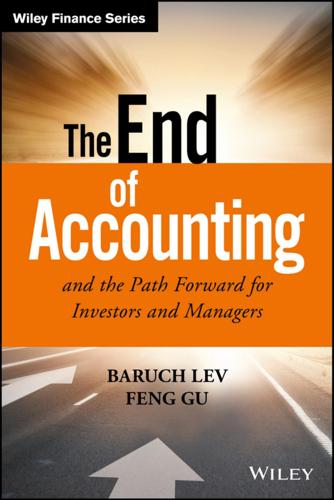
The End of Accounting and the Path Forward for Investors and Managers (Wiley Finance)
by
Feng Gu
Published 26 Jun 2016
Drug companies’ sales force (those smiling and sharply dressed youngsters roaming doctors’ offices with large carry-ons, while you wait there aching) is an important strategic resource. Typically, pharma companies spend on marketing and sales even more than on R&D, a fact that often riles critics. Sales-force training is an important investment (Gilead disclosed in the earnings call that it conducted a three-months sales training program for a new product—HCV, hepatitis treatment) and therefore should be tracked by investors: total costs as well as certain training details.10 The bottom box informs on other strategic resource acquisitions, like M&As, or production facilities.
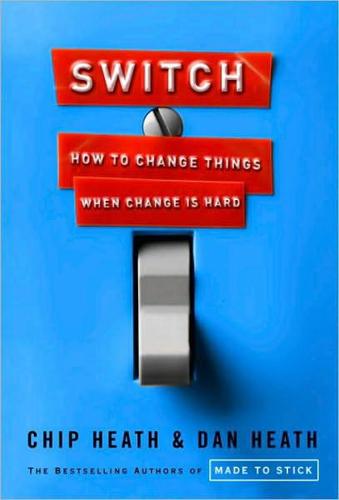
Switch: How to Change Things When Change Is Hard
by
Chip Heath
and
Dan Heath
Published 10 Feb 2010
The most obvious strategy here would be to create an automated nightly network backup, so that if a crash happens and data are lost, you can restore the previous night’s data. Another post-event strategy would be to find ways to prevent mission-critical data from ever ending up on a laptop. For instance, you might use an online application such as SalesForce.com to host customer contact information, so that precious data would never depend on the health of a local hard drive. Note that we’ve managed to create a robust plan against data loss without worrying about what our employees were thinking or feeling. We didn’t mention their Elephants or their Riders.

Nothing but Net: 10 Timeless Stock-Picking Lessons From One of Wall Street’s Top Tech Analysts
by
Mark Mahaney
Published 9 Nov 2021
Very few companies have ever generated premium revenue growth this consistently at a scale like this. Actually, only two: Apple and Amazon. Certainly not Microsoft, which averaged 11% revenue growth for the 10 years after it achieved a $25 billion revenue run rate in 2001. Not Intel, which averaged 5% revenue growth for the 10 years after it achieved a $25 billion revenue run rate in 1997. Salesforce.com hasn’t even reached a $25 billion run rate yet. Apple averaged 27% revenue growth for the 10 years after it hit the $25 billion level in 2007. Amazon averaged 28% revenue growth for the 10 years after it hit the $25 billion level in 2009. (See Table 6.3.) TABLE 6.3 Who Has “Pulled a Google”?
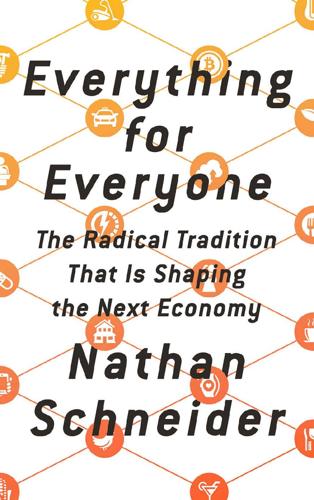
Everything for Everyone: The Radical Tradition That Is Shaping the Next Economy
by
Nathan Schneider
Published 10 Sep 2018
Twitter CEO Jack Dorsey has called it the “people’s news network”—but it’s not.31 It’s a creature of Wall Street, a commodity for the highest bidder. This became especially clear in the fall of 2016, when headlines announced that Twitter might be up for sale. Prospective buyers as various as Verizon, Google, Salesforce, Microsoft, and Disney circled overhead. By the measure of Wall Street, the company wasn’t doing well. The user-base wasn’t growing quickly enough. The $14 billion-or-so valuation wasn’t enough to satisfy investors’ monopolistic expectations, especially not those who’d bought in when the valuation was closer to $40 billion.
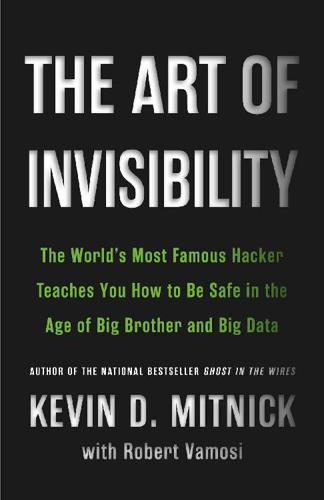
The Art of Invisibility: The World's Most Famous Hacker Teaches You How to Be Safe in the Age of Big Brother and Big Data
by
Kevin Mitnick
,
Mikko Hypponen
and
Robert Vamosi
Published 14 Feb 2017
For example, if you are a prospective customer of a company and you have previously entered your e-mail address or other information to access a white paper, chances are there is a cookie in your browser for that company’s site that matches, on the back end, information about you in a customer record management (CRM) system—say, Salesforce or HubSpot. Now every time you access that company’s site, you will be identified through the cookie in your browser, and that visit will be recorded within the CRM. Cookies are segmented, meaning that website A can’t necessarily see the contents of a cookie for website B. There have been exceptions, but generally the information is separate and reasonably secure.
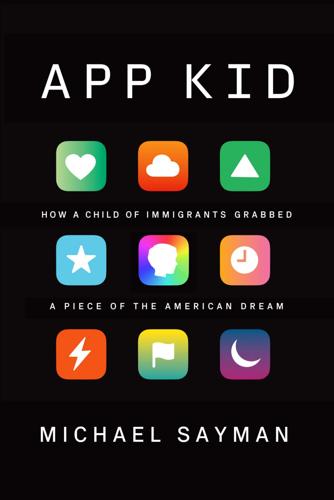
App Kid: How a Child of Immigrants Grabbed a Piece of the American Dream
by
Michael Sayman
Published 20 Sep 2021
San Francisco and all of Silicon Valley had a particularly large homeless population, thanks to a housing shortage and the wealth bubble created by the rise of big tech over the last two decades. The average tech engineer here spent 40 to 50 percent of their salary on rent, not leaving much for savings, buying a house of their own, or eating out off campus. Some Silicon Valley CEOs, like Marc Benioff of Salesforce, had begun stepping up with their billions to fund hospitals and shelters, but obviously, it wasn’t enough. The GPS on my phone was telling me I’d arrived at my destination, but I couldn’t see any residences, only restaurants and clubs and tattoo parlors. After walking up and down the block for twenty minutes, I finally flagged down a guy who was at least fully dressed and walking in a straight line.
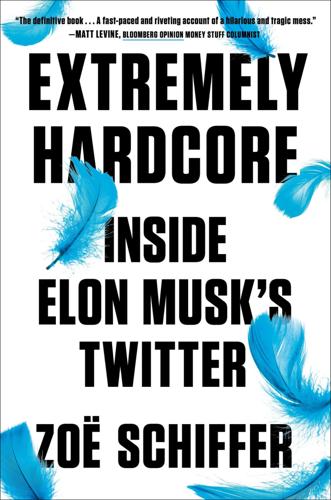
Extremely Hardcore: Inside Elon Musk's Twitter
by
Zoë Schiffer
Published 13 Feb 2024
On April 4, 2022, eleven days after Elon Musk was supposed to disclose his position to the SEC, he finally revealed that he had a significant stake in Twitter. Not only that, but he owned 9.1 percent of the company. While Agrawal had been getting up to speed as CEO, Musk had become his largest shareholder. Agrawal and Bret Taylor, co-CEO of Salesforce and chairman of Twitter’s board of directors, tried to suss out Musk’s intentions. The stake he’d acquired suggested he might try to take over the company. But the paperwork he’d filed with the SEC suggested otherwise. If Musk was plotting a corporate coup (and complying with SEC guidelines), he would’ve filed a 13D, a detailed form meant for active investors.
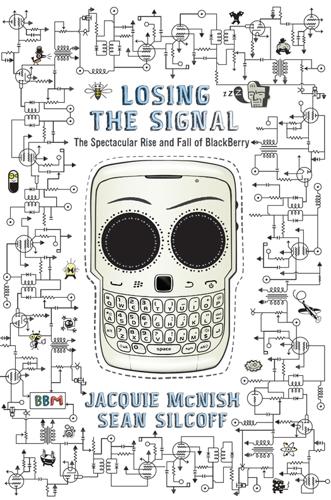
Losing the Signal: The Spectacular Rise and Fall of BlackBerry
by
Jacquie McNish
and
Sean Silcoff
Published 6 Apr 2015
“They lacked any compelling case to enterprises why they would be a better value proposition to the entrenched BlackBerry user bases.” BlackBerry’s popularity introduced a new compulsiveness to modern communications. The corporate world had been the first to succumb: Intel chairman Andy Grove told USA Today in May 2001 that BlackBerry “should be reported to the DEA” it was so addictive, while Salesforce.com CEO Marc Benioff called it “the heroin of mobile computing.”4 Users were becoming so attached to BlackBerrys they couldn’t put them down. Lazaridis once admitted that he, his wife, and their two school-aged children preferred to chat at the dinner table through BlackBerry e-mails.5 British actress Mischa Barton was tabloid prey after she reportedly ignored her dinner host Lord Frederick Windsor at Kensington Palace to catch up on BlackBerry messages.6 But RIM also counted royals, cardinals, and world leaders among their most dedicated users.
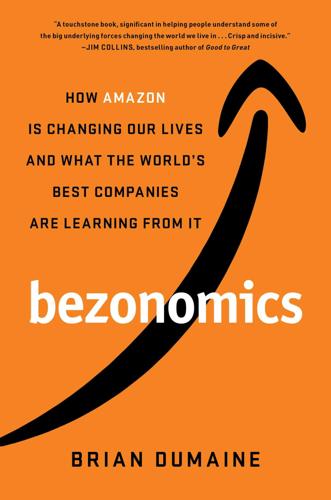
Bezonomics: How Amazon Is Changing Our Lives and What the World's Best Companies Are Learning From It
by
Brian Dumaine
Published 11 May 2020
The key is to offer one’s own unique brand of technological superiority. One business that’s using technology to great advantage is Sephora, the global beauty chain owned by the Parisian luxury conglomerate LVMH. In 2017, the cosmetics retailer was gaining market share and hitting record revenue growth. Headquartered in San Francisco, the home of Twitter, Salesforce.com, and Uber, Sephora is as much a tech company as it is a beauty retailer. The company constantly experiments with different tech systems to engender customer delight. At its more than 1,100 locations across the Americas, a program called Color IQ uses digital devices to scan a shopper’s face, capture the exact skin tone, and calculate the best shades for lipstick, powders, eyeliners, and foundations.

Can We Talk About Israel?: A Guide for the Curious, Confused, and Conflicted
by
Daniel Sokatch
Published 18 Oct 2021
In the 1980s and ’90s, the state of Arizona lost the Super Bowl, many rock and pop concerts, and hundreds of millions of divested business dollars until it recognized Martin Luther King Jr. Day as a paid holiday. More recently, Indiana passed a law seen as discriminatory to LGBTQ+ people and lost tens of millions of dollars as businesses (including Apple and Salesforce), sports leagues (including the National Basketball Association and the National Collegiate Athletic Association), and even other American states boycotted. Thanks to such campaigns, Indiana amended the law. MLK Day was recognized. Segregation was ended. And as for sanctions, the United States and other Western countries have leveled them against numerous countries to protest violations of international law and to punish behavior such as invasions by neighbors, arms dealing, and human rights violations.
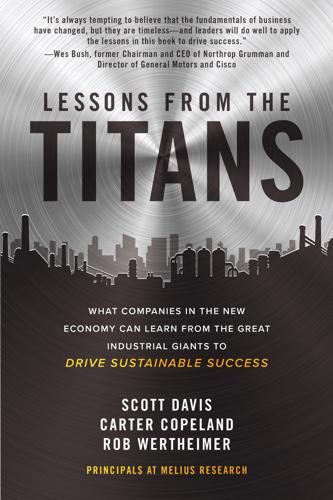
Lessons from the Titans: What Companies in the New Economy Can Learn from the Great Industrial Giants to Drive Sustainable Success
by
Scott Davis
,
Carter Copeland
and
Rob Wertheimer
Published 13 Jul 2020
Sunbelt, now the second largest rental company, used paper notebooks to communicate pricing to its rental branches, while United Rentals used mobile devices instead of paper, but neither had real pricing engines. Branch managers felt the pulse of the local market and priced accordingly, communicating to their salesforce via email. Opinions varied from one branch to the next, and customers played the branches against each other. New systems, using external expertise in pricing and software, combined with an internal analytics team to gather the input of branches, made pricing much more rigorous. Technology investment also dramatically improved the repair shop and logistics.
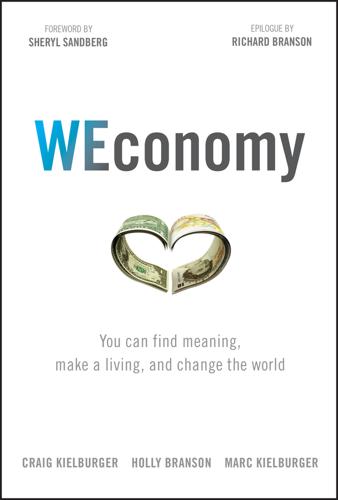
WEconomy: You Can Find Meaning, Make a Living, and Change the World
by
Craig Kielburger
,
Holly Branson
,
Marc Kielburger
,
Sir Richard Branson
and
Sheryl Sandberg
Published 7 Mar 2018
This worked well to a point, but created a bottleneck as we started to grow. As we scaled, we needed to enable others to think and act like Big Changers. We had to grow up and get the knowledge out of our heads and into systems (eek!). Words such as process, templates, impact measurement tools, Scorecards, Theory of Change, and CRM/Salesforce tracking of our community became the norm in our office. You'll read more about Theory of Change later, and I talk about Scorecards and project finding and managing in “It's Time to Get Your Pitch On”—in essence, we set processes and structures in place that capture our ways of working so anyone could make changes “the Big Change way.”
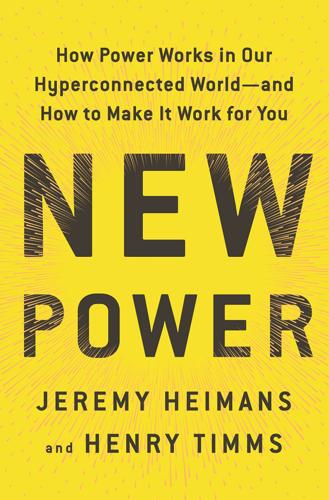
New Power: How Power Works in Our Hyperconnected World--And How to Make It Work for You
by
Jeremy Heimans
and
Henry Timms
Published 2 Apr 2018
The Roadies were earnestly trained, taught the history of the conflict in Uganda, given lessons from the civil rights movement, organized in teams of four, and paired with a survivor, often a former child soldier. By the time they finally set out on the road, they had already invested significant time and energy in the events they were planning, and so had their local organizers, whose floors they would often sleep on. All this activity was tracked centrally via a Salesforce database so “Roadie teams could see their donations and sales, statistics, compared to other teams, all this internal competition. It was fun,” says Keesey. Invisible Children had built smart and transparent recognition systems to help drive the ideal Roadie behavior. This is a valuable study of how to engage and develop a super-participant.

The Premonition: A Pandemic Story
by
Michael Lewis
Published 3 May 2021
Some crafty soul had bought eyelash brushes, relabeled them as medical swabs, and sold them to the VC at a profit. The absence of federal leadership had triggered a wild free-for-all in the market for pandemic supplies. In this market, Americans vied with Americans for stuff made mainly by the Chinese. Marc Benioff, the CEO of Salesforce, flew in a planeload of materials from China to the UCSF medical center with boxes of functional, though less than ideal, nasal swabs on board. The owner of a Bay Area chemical company, Chris Kawaja, found another off-brand Chinese nasal swab supplier and messaged them. “I said, ‘Hey, do you have these things?’

MegaThreats: Ten Dangerous Trends That Imperil Our Future, and How to Survive Them
by
Nouriel Roubini
Published 17 Oct 2022
For now, the race is on to deploy artificial intelligence without limit. “This technology will be applied in pretty much every industry out there that has any kind of data—anything from genes to images to language,” AI entrepreneur Richard Socher, the founder of MetaMind, told The Economist in 2016. “AI will be everywhere.” Salesforce, a public company that helps other companies reach customers, got the message and acquired MetaMind.1 Here’s one recent example of technology that reduces costs and eliminates jobs, one that could be directed by AI. Early in 2021, the New York Post reported that a 1,407-square-foot gray house with white trim and a front porch on a quarter-acre lot went up for sale in Calverton, New York.

Supremacy: AI, ChatGPT, and the Race That Will Change the World
by
Parmy Olson
And Microsoft was poised to carry on all of Altman’s work—it had copies of OpenAI’s source code for key systems and broader rights to its intellectual property. Five days after Altman’s ousting, OpenAI announced it was forming a new board. It would be chaired by Larry Summers, the former US treasury secretary, and Bret Taylor, a former head of the business software company Salesforce who also happened to be the most levelheaded voice on Twitter’s board when Elon Musk bought the company. The pair had served on several corporate boards. They didn’t write academic papers that criticized companies for cutting corners. They knew how to serve the needs of investors like Microsoft.

This Is for Everyone: The Captivating Memoir From the Inventor of the World Wide Web
by
Tim Berners-Lee
Published 8 Sep 2025
The representative from the Wikimedia Foundation did not always agree with the representative from Microsoft. The points of common agreement between AT&T, Cloudflare, the University of Illinois, the Chinese Academy of Sciences, Fraunhofer Gesellschaft, the BBC, Hitachi, El Instituto Tecnológico de Costa Rica, Taiwan’s Ministry of Digital Affairs, the National Library of Sweden, ByteDance, Salesforce and the US Department of Homeland Security were sometimes limited. But all were dues-paying members of the consortium and were entitled to a voice. They all came on the assumption that rather than fighting over who had the largest share of some pie, it was better to collaborate to make the pie a whole lot bigger.
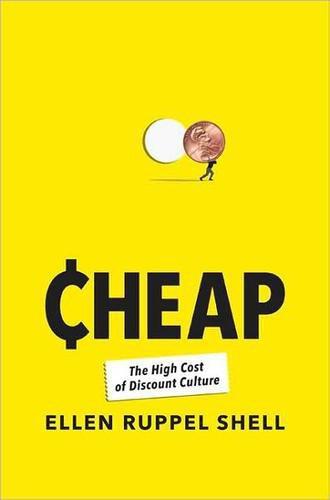
Cheap: The High Cost of Discount Culture
by
Ellen Ruppel Shell
Published 2 Jul 2009
A wave of lively and sometimes aggressive advertising rolled over the country and spurred record levels of consumption. Advertising expenditures soared, prompting progressive economist John Kenneth Galbraith to decry the creation of “desires . . . to bring into being wants that previously did not exist.” Television advertising was particularly vital for the low-service discount chains that, with no experienced salesforce to push product, relied on the customer to come to their stores pre-loaded with wants. The postwar boom of the late 1940s and 1950s found the working and middle classes actively seeking better homes, better furniture, more and better medical care, fancier cars, and more exotic travel. As war shortages faded into memory, the challenges of industry remained not in the production of goods but in the selling of them.
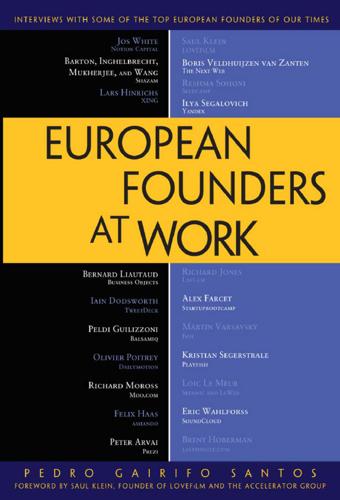
European Founders at Work
by
Pedro Gairifo Santos
Published 7 Nov 2011
There’s been no master plan, but the 60-year interplay of government as an early catalyst; academia and established companies as early customers and sources of talent; and of course, investors willing to take risks and a long term view, have given entrepreneurs fertile ground to sow seeds and try to grow monsters with dragon’s teeth ready to conquer the world. You need every element of this ecosystem working perfectly to create monsters—and Facebook, LinkedIn, Salesforce, Twitter, VMware, and Zynga have all been recent beneficiaries there. In fact, the capacity for serious scale is almost part of the muscle memory of Silicon Valley’s residents. As a newly-minted founder, you have unparalleled access within a 10-mile radius to a living ecosystem of talent and investors who have been part of businesses in almost every technology sector.

The End of Illness
by
David B. Agus
Published 15 Oct 2012
Now he brings his ideas out of the lab and exam room and into the lives of everyone—showing us how to live long, healthy, disease-free lives. Reading this book is the best thing you can do for yourself and your loved ones. A monumental work that will change your life.” —Marc Benioff, chairman and CEO, salesforce.com NOTE TO READERS This publication contains the opinions and ideas of its author. It is intended to provide helpful and informative material on the subjects addressed in the publication. It is sold with the understanding that the author and publisher are not engaged in rendering medical, health, or any other kind of professional services in the book.

Augmented: Life in the Smart Lane
by
Brett King
Published 5 May 2016
Obviously, Apple is a phenomenal example of a tech brand but don’t discount Microsoft, IBM and Oracle, all of which continue to lead the world too. Between them, the top tech companies on NASDAQ employ around 1.3 million people and contribute US$3 trillion of market cap to the economic landscape. If you include the next tier of players, you have the likes of HP, Baidu, NTT Communications, EMC, Texas Instruments, Yahoo, Salesforce.com, Cognizant, eBay and others in the mix. Table 1.1: Market Capitalisation of the World’s Top Tech Companies Company Market Cap (billion) Employees Apple 673.91 50,250 Microsoft 406.36 128,000 Google 364.27 53,861 Alibaba 285.14 22,072 Facebook 206 8,348 Oracle 182.22 122,000 Intel Corp 165.6 107,600 IBM 162.38 431,212 Cisco 135.86 74,040 Qualcomm 116.99 31,000 TSMC 112.19 40,483 SAP 83.29 263,000 2894.21 1,331,866.00 Source: NASDAQ stock quotes Tech companies are very efficient producers of profit compared with other large listed companies.
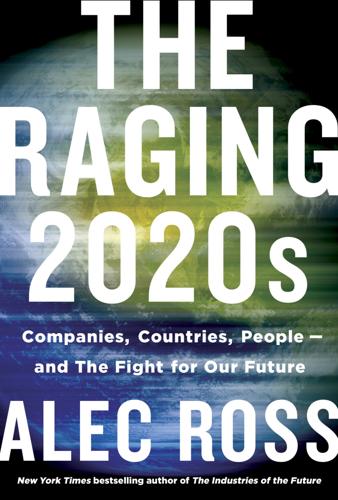
The Raging 2020s: Companies, Countries, People - and the Fight for Our Future
by
Alec Ross
Published 13 Sep 2021
To put it bluntly, “he was wrong,” Stiglitz said at a World Economic Forum panel in 2018. Decades of the Friedman doctrine have not brought about a more efficient, effective economy for the many. Even business leaders have begun advocating against shareholder capitalism and for a return to stakeholder capitalism. In an interview with the New York Times, Salesforce CEO Marc Benioff said, “It influenced—I’d say brainwashed—a generation of C.E.O.s who believed that the only business of business is business. The headline said it all. Our sole responsibility to society? Make money. The communities beyond the corporate campus? Not our problem. I didn’t agree with Friedman then, and the decades since have only exposed his myopia.

The Human City: Urbanism for the Rest of Us
by
Joel Kotkin
Published 11 Apr 2016
Most public schools in cities fail to perform even to minimal standards.172 Suburban schools, although not always great, consistently out-perform those of inner cities in terms of achievement, graduation and college entrance.173 In contrast to the challenges schools present to urban parents, places like Cinco Ranch, located in the high-performing Katy Independent School District, possess a magnetic attraction for families. Irvine, California, with its broad streets and massive shopping centers, may lack the urban charms of Flatbush or even west Los Angeles, but its schools are critically important to those with children. “Everything stems from education,” notes Irvine resident Eveleen Liu, a manager with Salesforce.com. “The city draws people who are impassioned about their kids and their school. Everyone volunteers. It’s the glue that holds this place together.” According to 2010 census data, the proportion of city households with children ages 5 to 17 was twice that of suburbs and almost three times higher than newer developments and exurbs.
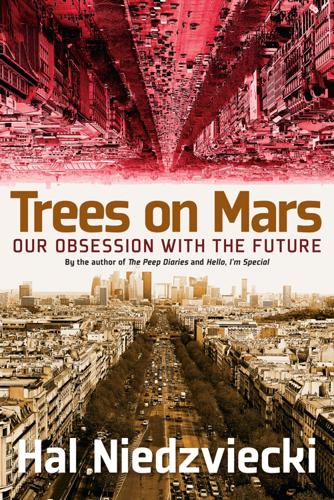
Trees on Mars: Our Obsession With the Future
by
Hal Niedzviecki
Published 15 Mar 2015
At the 2014 Davos summit, where the CEOs of tech multinationals have taken to gathering to talk to each other about how they are doing shaping and owning the future, everyone agreed that the recession was long over, the recovery was nicely on its way, corporations were going great, and there was only one problem—no jobs. Eric Schmidt, Executive Chairman of Google, talked at the conference about a jobless recovery and the beginning of a three-decade period during which jobs would dominate every conversation. “This is a new phenomenon that is coming on very fast,” founder of Salesforce.com Marc Benioff said. Worrying about a “global epidemic of youth unemployment,” Cisco’s CEO John Chambers said, “We’re close to losing a generation of young people.”77 Reading this, I couldn’t help thinking about how nice it was they were worried about us, since they are the ones—for the most part—who built and are refining the systems that are responsible for decoupling rising productivity from wages and living standards for the first time ever.
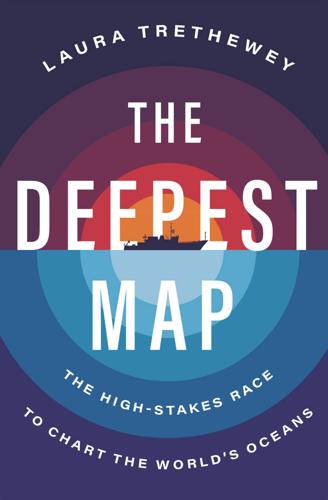
The Deepest Map
by
Laura Trethewey
Published 15 May 2023
Ray Dalio, a former co–chief investment officer of the world’s largest hedge fund, Bridgewater Associates, had founded the ocean research and media group OceanX. The former Google CEO Eric Schmidt and his wife, Wendy, had created the Schmidt Ocean Institute and launched a research vessel named Falkor, after the cocker spaniel–faced dragon in The NeverEnding Story. Microsoft cofounder Paul Allen and Salesforce CEO Marc Benioff had founded and funded ocean research departments at West Coast universities. Suddenly the richest people in the world were sinking millions of dollars into ocean research. The international community got on board, too. In 2017, the United Nations General Assembly declared 2021 to 2030 to be the Decade of Ocean Science for Sustainable Development.

The Measure of Progress: Counting What Really Matters
by
Diane Coyle
Published 15 Apr 2025
AWS dominates the market in the United States and everywhere else (and indeed founded it in 2006 by opening a previously internal function to external customers). It is followed by Microsoft’s Azure and Google (along with AWS known as hyperscalers), then some much smaller providers including Alibaba, IBM, Salesforce, Oracle, and Tencent. A summary by the UN task force looking at updating the SNA in 2025 for the digital economy proposes this definition: “Cloud computing s ervices consist of computing, data storage, software, and related IT services accessed remotely Box 3.1 Cloud computing use and productivity measurement To see the productivity measurement implications of a switch from investment in computer servers to purchases of cloud services as an intermediate, consider a simple production function, similar to the one set out in Chapter 2: Y + zC = f(A, K, L, N) (3.1) where Y is output, C is cloud capital with price z, A is total factor productivity, K is other capital, L is labour, and N is unmeasured intangible capital, with rental prices r, w, and h, respectively.

Palo Alto: A History of California, Capitalism, and the World
by
Malcolm Harris
Published 14 Feb 2023
As Webvan’s Bechtel warehouse debacle showed, fixed capital investments and rapid scaling was a risky combination, and the fastest-growing firms found ways to shift their fixed costs to contractors—whether they needed servers, advertising consultants such as Chiat/Day, or even the coders themselves. In 1999, Oracle wunderkind Marc Benioff continued in the Ampex tradition by spinning off Salesforce with the financial and moral support of his boss, Larry Ellison. The firm provides businesses with cloud-based customer relationship management (CRM) platforms, allowing customers to outsource even their company’s basic internal functions. Most people in San Francisco might not be able to tell you what CRM or “platform as a service” is exactly, but everyone can point you to the Salesforce Tower, which took over the top spot in the skyline in 2017, overshadowing the Gianninis’ Transamerica Pyramid.
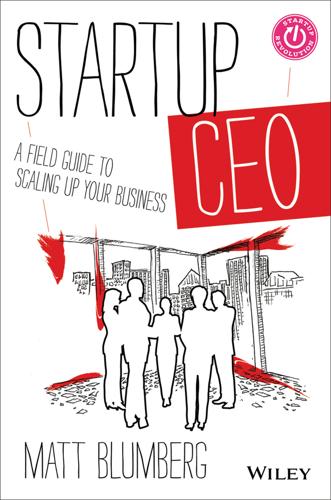
Startup CEO: A Field Guide to Scaling Up Your Business, + Website
by
Matt Blumberg
Published 13 Aug 2013
If you have people leaving your organization to go to the buyer, you want to make sure they’re going to a good place or at least recognize that they’re not and figure out how you want to make them whole via some kind of retention bonus. You will want to do as much work as possible to disentangle the operations of the departing business unit—things like accounting, systems and Salesforce.com or other CRM implementations are all hurdles that can be very messy to separate. This is all a cost of the divestiture; you need to view it as such and surely that’s how the buyer will view it. The level of transparency you bring to employees around a divestiture is probably more akin to selling your company than buying a company.
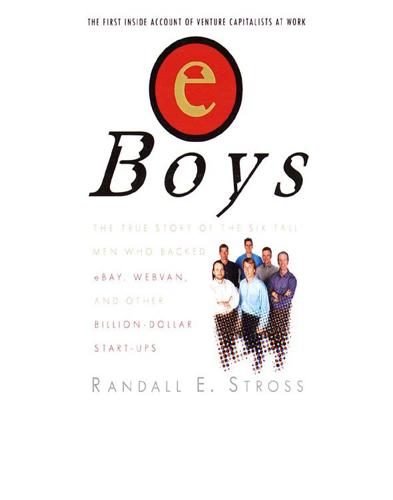
eBoys
by
Randall E. Stross
Published 30 Oct 2008
Which doesn’t leverage your skill set.” Dunlevie hastened to add, “I’m not shittin’ on the deal at all; I think it’s got a lot to recommend it.” But he pointed out the absence of natural scale effects. “I think you’ve got to have somebody call on every fuckin’ doctor. This product is sold, not bought. So it’s got field sales-force economics. You’ve got a lot of constituencies you’ve got to corral at the same time. It’s business-model complexity, which, again, I’m not scared of. It just takes longer, takes more money, it’s slower. And I don’t see this thing having any upside tornado effect, like a TriStrata or Priceline or something, where there’s word-of-mouth, potentially.
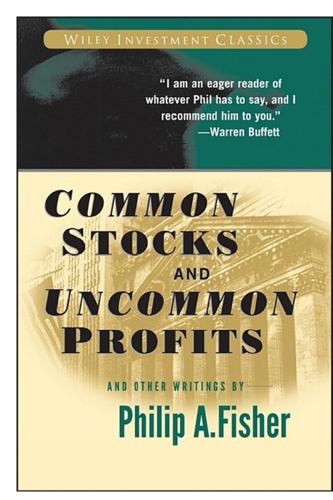
Common Stocks and Uncommon Profits and Other Writings
by
Philip A. Fisher
Published 13 Apr 2015
My father's fifteen points are a prescription for what to buy. They describe a firm with huge product and market potential and a management determined to continue exploiting that potential far beyond the current product generation. The prescription means an existing research effectiveness to create future product, linked to a sales-force size and efficiency that will overcome all obstacles in carrying existing and future product to market. That is very futuristic. It means enough raw product profitability, combining gross profit margins and the ratio of gross profits to administrative costs to pay for the whole darned thing. It means a real, concrete plan to maintain and to improve that profitability and happy employees at all levels, in depth, who will be loyal and productive, again futuristic and open-ended, never ending.
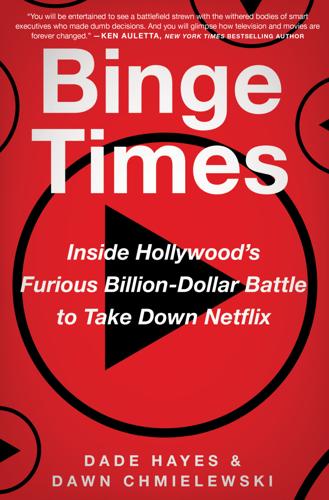
Binge Times: Inside Hollywood's Furious Billion-Dollar Battle to Take Down Netflix
by
Dade Hayes
and
Dawn Chmielewski
Published 18 Apr 2022
In 2016, speaking at a Hollywood Chamber of Commerce event, content chief Ted Sarandos said of Icon, “A building like this is a statement of who you are, what you believe, and what you want to do.” The aesthetics of Netflix’s newest office spaces have been overseen by San Francisco–based architecture and design firm Gensler. The firm has worked with a range of clients, including tech firms like Facebook, Airbnb, and Salesforce. The activities of employees are not incidental to the way the buildings look and operate. In a description of Netflix’s main office in Japan, Gensler said it “playfully incorporated functions and spaces that allude to the company’s rich selection of streaming internet content, allowing staff to immerse themselves in various scenes, just as customers do with Netflix’s ubiquitous programming.”

The Everything Blueprint: The Microchip Design That Changed the World
by
James Ashton
Published 11 May 2023
The ambitious Huang was playing in the big league. Great corporate success bought Huang some home comforts. His house on ‘Billionaires’ Row’ in the hills of San Francisco’s Pacific Heights district had one of the US’s most desirable zip codes and views across the bay to the Golden Gate Bridge. The neighbours were impressive too, including Salesforce.com co-founder Marc Benioff, Apple’s former design genius Sir Jony Ive and the best-selling novelist Danielle Steel. Huang had based himself at home during the pandemic and, sat in his swish kitchen one day during summer 2020, he received a text message from Son. ‘He texts me, “Do you want to talk?”
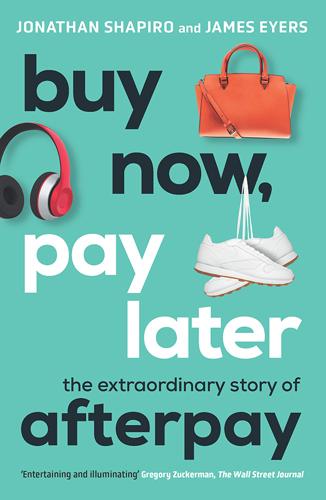
Buy Now, Pay Later: The Extraordinary Story of Afterpay
by
Jonathan Shapiro
and
James Eyers
Published 2 Aug 2021
The ever-conservative Eisen wanted to avoid making the mistake other Australian companies had made, by simply assuming that what worked in Australia would work in the larger US market. So they asked around for advice. The PayPal alumni had brokered a meeting for the Australians with Dana Stalder, the founder of Matrix Partners. If anyone in the United States could tell them whether they had a shot, it would be him. At Matrix’s San Francisco office, near Salesforce Park, the home of the Giants baseball team, Eisen and Molnar ran Stalder through the business and the model. Halfway through, Stalder stopped them to ask why they had come to see him. ‘You have positive cash flow and you have made $12 million EBITDA. I do early-stage investments,’ he pointed out.
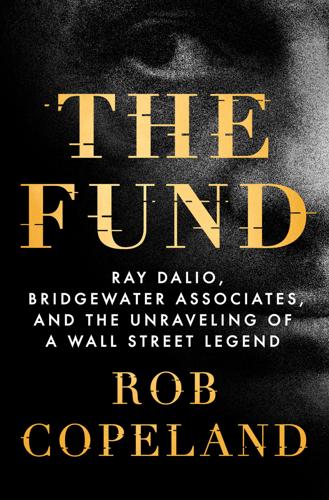
The Fund: Ray Dalio, Bridgewater Associates, and the Unraveling of a Wall Street Legend
by
Rob Copeland
Published 7 Nov 2023
Called PrinciplesUS, these were originally envisioned as monthlong workshops to train employees in The Principles, with an elaborate certification process to advance employees up the ladder to become official “Principals coaches” in their own right. From home, Dalio told staff he spun his Rolodex for help finding takers, but came up empty. Twitter’s Jack Dorsey, whose estate Dalio had once visited, was on his way out of his own company, as was Microsoft’s Bill Gates. Salesforce cofounder Marc Benioff turned Dalio down, too. No major company publicly signed up to adopt The Principles. So Dalio, embarrassed in the public eye and isolated in private by the pandemic, began again to change the narrative around himself. He took up what appeared to be a renewed concern with the gap between the rich and the poor.

The Optimist: Sam Altman, OpenAI, and the Race to Invent the Future
by
Keach Hagey
Published 19 May 2025
Altman flashed his guest pass to his followers on X, writing, “first and last time I ever wear one of these.” He, Brockman, Murati, Kwon, and chief operating officer Brad Lightcap and the rest of the leadership team spent the day negotiating with the board. The board was open to him coming back if they could agree on new board members. Both sides backed Bret Taylor, the former co-CEO of Salesforce. But Altman’s desire that both he and Brockman would return to the board was a sticking point. He also wanted the entire current board to resign. The talks dragged on late into the night. Reporters camped out in front of the OpenAI door, watching multiple rounds of takeout being delivered. Suddenly the board informed Murati that they were naming a new CEO: Emmett Shear, Altman’s batchmate from the inaugural YC batch, the co-founder of Justin.tv and Twitch, and a voice for the careful development of AI.

Traders, Guns & Money: Knowns and Unknowns in the Dazzling World of Derivatives
by
Satyajit Das
Published 15 Nov 2006
The notes paid the investor a coupon of three-month dollar LIBID (0.125% below LIBOR). The deal was really for three years; the UK could call the notes after three years; the investor could put the bonds back to the UK and ask for their money back after three years as well. After the announcement of the issue, the salesforce at Hill Samuel noticed strong interest from investors in fixed rate UK government dollar bonds. At the time, no fixed rate UK government debt denominated in dollars was available. Consequently, Hill Samuel’s bond and swap traders set about designing a public repackaging of the UK floater. Hill Samuel bought US$100 million of the UK floater and then sold the UK bonds into a special purpose vehicle (SPV) known as Bearer Eurodollar Collateralised Securities Limited (BECS).
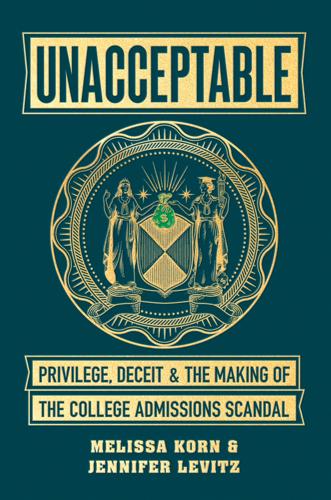
Unacceptable: Privilege, Deceit & the Making of the College Admissions Scandal
by
Melissa Korn
and
Jennifer Levitz
Published 20 Jul 2020
Membership in the Trojan Family club often passed down through generations, an inherited passion. Many just called it “SC.” USC’s board of trustees was like a hot social group, with billionaire real estate developers, industrial and media tycoons, and a sports team owner. Alums held top posts at Salesforce, Walt Disney Animation Studios, and NBCUniversal. To the north of the school, in the community of La Cañada Flintridge, crowds would erupt into cheers at the annual Fiesta Days celebration in May when a Trojan warrior paraded a white horse named Traveler, USC’s mascot, down Foothill Boulevard.
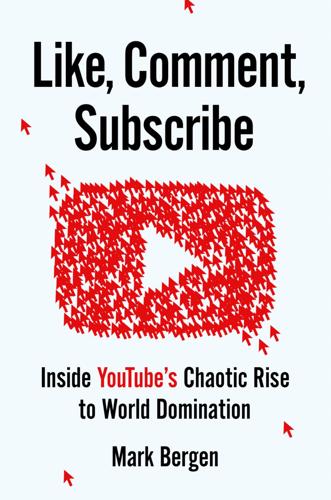
Like, Comment, Subscribe: Inside YouTube's Chaotic Rise to World Domination
by
Mark Bergen
Published 5 Sep 2022
GO TO NOTE REFERENCE IN TEXT would describe it: Elizabeth Dwoskin and Craig Timberg, “Inside YouTube’s Struggles to Shut Down Video of the New Zealand Shooting—and the Humans Who Outsmarted Its Systems,” The Washington Post, March 18, 2019, https://www.washingtonpost.com/technology/2019/03/18/inside-youtubes-struggles-shut-down-video-new-zealand-shooting-humans-who-outsmarted-its-systems/. GO TO NOTE REFERENCE IN TEXT Chapter 32: Roomba the Davos set: Clare Duffy, “Marc Benioff Says It’s Time to Break Up Facebook,” CNN, October 17, 2019, https://www.cnn.com/2019/10/16/tech/salesforce-marc-benioff-break-up-facebook-boss-files/index.html. GO TO NOTE REFERENCE IN TEXT investigation in 2019: Max Fisher and Amanda Taub, “How YouTube Radicalized Brazil,” The New York Times, August 11, 2019, https://www.nytimes.com/2019/08/11/world/americas/youtube-brazil.html. GO TO NOTE REFERENCE IN TEXT he told a reporter: (Me.)

Computer: A History of the Information Machine
by
Martin Campbell-Kelly
and
Nathan Ensmenger
Published 29 Jul 2013
While most people see Amazon.com as just an online retailer, it has leveraged its expertise with maintaining a massive number of servers to sell a host of web infrastructure and application services to corporate and other organizational clients. Companies and organizations, which in the past tended to maintain their own data locally, increasingly are contracting with specialists such as Amazon.com, Salesforce.com, EMC, IBM, Google, and other leaders in the rapidly growing field of cloud computing—using remote servers for various data and software applications needs. This allows the staff of client firms and organizations to readily access and share data with colleagues, customers, suppliers, and other authorized users—and to benefit from suppliers’ economies of scale and expertise in data storage and delivery.
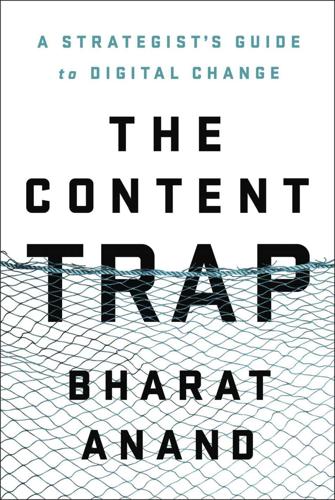
The Content Trap: A Strategist's Guide to Digital Change
by
Bharat Anand
Published 17 Oct 2016
You’ve run faster just to end up in the same place. In contrast, striving to be different—the heart of sound strategy—holds greater promise, because of the connections between activities. “It is harder for a rival to match an array of interlocked activities,” Porter noted, “than it is merely to imitate a particular sales-force approach, match a process technology, or replicate a set of product features. Positions built on systems of activities are far more sustainable than those built on individual activities.” Pursuing excellence was good for business. Being different was even better—it allowed you to capture the fruits of your efforts in a way that others couldn’t match.
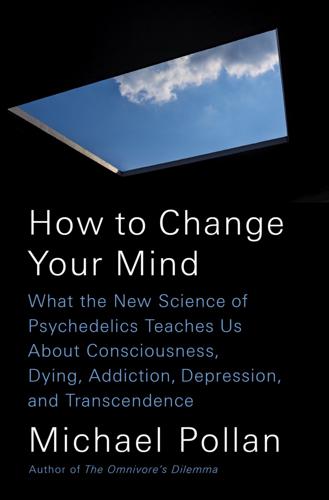
How to Change Your Mind: What the New Science of Psychedelics Teaches Us About Consciousness, Dying, Addiction, Depression, and Transcendence
by
Michael Pollan
Published 30 Apr 2018
For as Willis Harman told Todd Brendan Fahey in a 1990 interview and as a former SRI employee confirmed, “Al never did anything resembling security work. “Al’s job was to run the special sessions for us.” That former SRI employee is Peter Schwartz, an engineer who became a leading futurist; he is currently senior vice president for government relations and strategic planning at Salesforce.com. In 1973, Schwartz went to work for Willis Harman at SRI, his first job out of graduate school. By then, Al Hubbard was more or less retired, and Schwartz was given his office. On the wall above the desk hung a large photograph of Richard Nixon, inscribed “to my good friend, Al, for all your years of service, your friend, Dick.”

Scale: The Universal Laws of Growth, Innovation, Sustainability, and the Pace of Life in Organisms, Cities, Economies, and Companies
by
Geoffrey West
Published 15 May 2017
It was their feedback that persuaded me to change gears and write a nontechnical “popular” book rather than one directed to my scientific colleagues. Among these are the historian Niall Ferguson; the art curator and critic Hans Ulrich Obrist; the writer-actor Sam Shepard; the founder of Amazon, Jeff Bezos; and the founder of Salesforce, Marc Benioff. I was really touched when Marc sent me a large painting of the Sephirot—the traditional Kabbalistic image representing the spiritual unity of life—suggesting that I meditate upon it each day. I can’t say that I religiously followed his advice but it did inspire me to stay connected to the big picture when the going got tough.
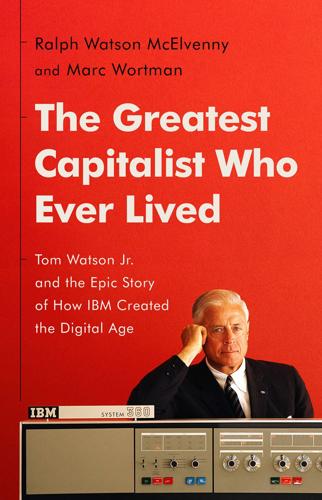
The Greatest Capitalist Who Ever Lived: Tom Watson Jr. And the Epic Story of How IBM Created the Digital Age
by
Ralph Watson McElvenny
and
Marc Wortman
Published 14 Oct 2023
I knew I would get straightforward questions, fast analysis, fair questions, and support if I deserved it, with no company political overtones.”28 And Watson knew Learson could move a large, complex technology organization to act in a disciplined and effective way. He was the epitome of the IBM manager who “got the donkey over the hill” and made a large, unwieldy organization accomplish its goals. Perhaps Learson’s greatest achievement at IBM, Evans thought, “is that he built what was arguably the finest salesforce ever assembled in modern times. He assembled top-notch people for his team, grew them when they produced, and executed them when they had ample opportunity and failed.” Those who performed well, though, could expect compensation far beyond industry standards. The brightest college grads flocked to IBM to sell tabulators and computers and grow rich.29 Watson knew Learson’s value.

The Survival of the City: Human Flourishing in an Age of Isolation
by
Edward Glaeser
and
David Cutler
Published 14 Sep 2021
The ability of large numbers of urbanites to share the fixed costs of paying for common infrastructure enables the pleasures of museums and concert halls. Most importantly, the massing of young single people in a single dense place has a tremendous appeal to other young single people. About ten years ago, business journalists began to notice that some technology companies, like Zynga and Salesforce, were locating in the city of San Francisco itself rather than Silicon Valley. Other companies, like Google, ended up busing their workers from the city to their office’s suburban locale. These companies and workers weren’t in the city for access to its harbor or railyards. They were there because urban living was fun.

The Singularity Is Nearer: When We Merge with AI
by
Ray Kurzweil
Published 25 Jun 2024
This Is What Happened,” Towards Data Science, March 28, 2019, https://towardsdatascience.com/i-trained-an-ai-to-imitate-my-own-art-style-this-is-what-happened-461785b9a15b; Ana Santos Rutschman, “Artificial Intelligence Can Now Emulate Human Behaviors—Soon It Will Be Dangerously Good,” The Conversation, April 5, 2019, https://theconversation.com/artificial-intelligence-can-now-emulate-human-behaviors-soon-it-will-be-dangerously-good-114136; Catherine Stupp, “Fraudsters Used AI to Mimic CEO’s Voice in Unusual Cybercrime Case,” Wall Street Journal, August 30, 2019, https://www.wsj.com/articles/fraudsters-use-ai-to-mimic-ceos-voice-in-unusual-cybercrime-case-11567157402; David Nield, “New AI Generates Freakishly Realistic People Who Don’t Actually Exist,” Science Alert, February 19, 2019, https://www.sciencealert.com/ai-is-getting-creepily-good-at-generating-faces-for-people-who-don-t-actually-exist; Alec Radford et al., “Better Language Models and Their Implications,” OpenAI, February 14, 2019, https://openai.com/blog/better-language-models; Richard Socher, “Introducing a Conditional Transformer Language Model for Controllable Generation,” Salesforce Einstein, accessed March 10, 2023, https://blog.salesforceairesearch.com/introducing-a-conditional-transformer-language-model-for-controllable-generation. BACK TO NOTE REFERENCE 78 Jeffrey Grubb, “Google Duplex; A.I. Assistant Calls Local Businesses to Make Appointments,” Jeff Grubb’s Game Mess, YouTube video, May 8, 2018, https://www.youtube.com/watch?
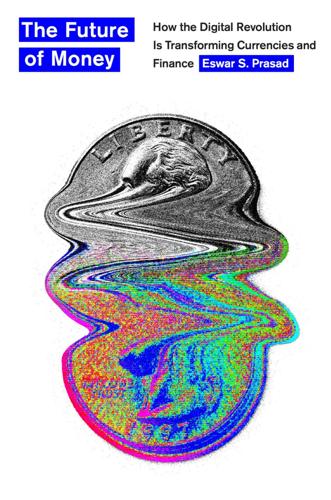
The Future of Money: How the Digital Revolution Is Transforming Currencies and Finance
by
Eswar S. Prasad
Published 27 Sep 2021
A service called Connect helps build and manage “multisided marketplaces” such as ridesharing and crowdfunding, where the client needs only to develop a technology for matching buyers and sellers. Stripe clients run into the millions of companies in over 120 countries, from small businesses to behemoths such as Amazon, Google, Salesforce, Uber, DiDi, and Zillow. Another US payment services provider, Square, has also expanded its business into online commerce platforms, payroll management, business loans, and gift cards. Such supporting services can be easily scaled down or up depending on the size of a business. For instance, using Square Loyalty, even a small business can easily customize a loyalty program without investing extra information technology (IT) resources to maintain purchase history data or manage rewards
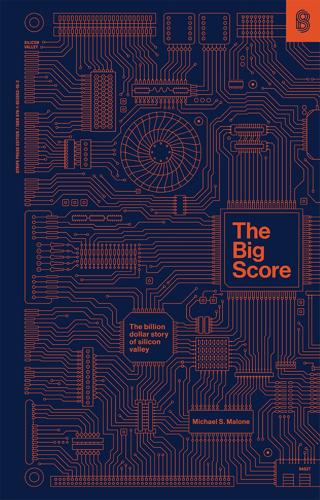
The Big Score
by
Michael S. Malone
Published 20 Jul 2021
You can see it in the ubiquitous coffee shops, where groups of men and women gather around PowerPoint slides on a laptop—new startup teams dreaming of becoming the Next Big Thing. And their numbers only grow during downturns, guaranteeing the next Valley boom. I was a very young man when I wrote this book and was fortunate enough to meet these remarkable people. I am now a senior citizen, still writing about their symbolic grandchildren at Facebook and Google, Salesforce and Netflix. Looking through this book, I find myself feeling like Ishmael: I alone have survived to tell the tale. The figures, legendary or forgotten in this book, changed the world forever. They also changed me, setting the course for my career. Now, as I approach the end of that career, I am eternally grateful for having known them—and to again tell their story.

Empire of AI: Dreams and Nightmares in Sam Altman's OpenAI
by
Karen Hao
Published 19 May 2025
Altman and Brockman, originally adamant about returning to OpenAI with board seats, finally acquiesced to no longer having them. The board, seeing no path for preserving the company without Altman, finally acquiesced to his return. Late that night, they agreed on the three independent board seats. D’Angelo would stay; Toner and McCauley would step down; Bret Taylor, a former co-CEO of Salesforce and former CTO of Facebook, and Larry Summers, a former treasury secretary and former president of Harvard, would fill their vacancies. As part of the deal, the new board would eventually add more members. Altman would submit to an investigation. What was most important for the company now, they also agreed, was to project unity, stability, and reconciliation.

Future Crimes: Everything Is Connected, Everyone Is Vulnerable and What We Can Do About It
by
Marc Goodman
Published 24 Feb 2015
On the personal front, cloud computing means Google is storing our mail, Instagram our photographs, and Dropbox our documents—not to mention what mobile phones are automatically uploading to the cloud for us. In the corporate world, enterprise customers not only are using Dropbox but also have outsourced primary business functions that would have previously been handled inside the company to SaaS providers such as Salesforce.com, Zoho.com, and Box.com. From a crime and security perspective, the aggregation of all these data, exabytes and exabytes of it, means that our most personal of information is no longer likely stored solely on our local hard drives but now aggregated on computer servers around the world. By aggregating everybody’s important data, financial and otherwise, on cloud-based computer servers, we’ve obviated the need for criminals to target everybody’s hard drive individually and instead put all the jewels in a single place for criminals and hackers to target—think Willie Sutton and his love of banks.
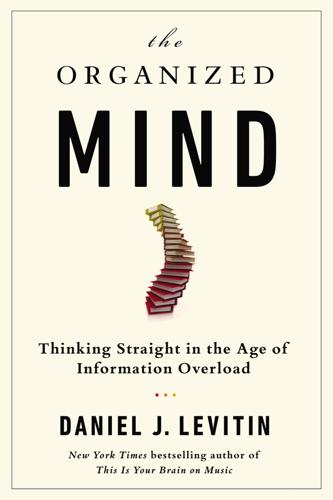
The Organized Mind: Thinking Straight in the Age of Information Overload
by
Daniel J. Levitin
Published 18 Aug 2014
Google paid for 100,000 free employee massages, and its campus boasts wellness centers and a seven-acre sports complex with basketball, bowling, bocce ball, and roller hockey. The statistical software giant SAS and Toyota distributor JM Family Enterprises feature in-house health care; Atlantic Health System offers on-site acupressure massage; Microsoft’s campus has a spa; SalesForce.com provides free yoga classes; Intuit lets employees spend 10% of their time on any project they’re passionate about; Deloitte encourages employees to donate time to nonprofits for up to six months by offering full benefits and 40% of pay. Giving employees environments like these seems to pay, and it makes sense from a neurobiological standpoint.

Facebook: The Inside Story
by
Steven Levy
Published 25 Feb 2020
By 2019, government bodies around the world would be characterizing Facebook using language usually reserved for terrorist organizations and drug rings. A report issued by a parliamentary study in Great Britain called Facebook “digital gangsters.” New Zealand Privacy Commissioner John Edwards tweeted that the company’s leaders were “morally bankrupt pathological liars.” Salesforce CEO Marc Benioff compared Facebook’s toxic consequences to those of the cigarette industry. Meanwhile, revenues and profits kept rising. This whetted the appetite for sanctions and regulation even more. As the 2020 presidential election shaped up, multiple candidates joined the calls of legislators and regulators for Facebook to be broken up.

Elon Musk
by
Walter Isaacson
Published 11 Sep 2023
“If you would like to contribute, please let me know as soon as you can,” he wrote. “I cannot overstate the importance of the role Starlink has played in keeping the communications of the Ukrainian government from being taken out by the Russians.” Three hours later, he got a reply from Marc Benioff, the billionaire cofounder of Salesforce. “I’m in for $1M,” he wrote. “Elon rocks.” No good deed… “This could be a giant disaster,” Musk texted me. It was a Friday evening in September 2022, and Musk had gone into crisis-drama mode, this time with reason. A dangerous and knotty issue had arisen, and he believed that there was “a non-trivial possibility,” as he put it, that it could lead to a nuclear war, with Starlink partly responsible.

Tools of Titans: The Tactics, Routines, and Habits of Billionaires, Icons, and World-Class Performers
by
Timothy Ferriss
Published 6 Dec 2016
They’re never going to converge on anything because they’re never going to put the time into actually figuring it out and getting it right.” (See Peter Thiel’s thoughts on failure on page 233.) The “Nerds at Night” Test How does Marc look for new opportunities? He has dozens of tools, but one of his heuristics is simple: “We call our test ‘What do the nerds do on nights and weekends?’ Their day job is Oracle, Salesforce.com, Adobe or Apple or Intel or one of these companies, or an insurance company, bank [or they’re a student]. Whatever. That’s fine. They go do whatever they need to do to make a living. The question is: What’s the hobby? What’s the thing at night or on the weekend? Then things get really interesting.”

Seeking SRE: Conversations About Running Production Systems at Scale
by
David N. Blank-Edelman
Published 16 Sep 2018
Before anyone starts thinking about microservices, they typically already have a functioning monolithic application composed of the following pieces, as shown in Figure 26-1: Internet load balancer (e.g., Amazon Web Services [AWS] Elastic Load Balancer [ELB]) Stateless application stack (e.g., PHP or Node.js) Database (e.g., MongoDB or MySQL) Figure 26-1. Monolithic architecture Very well-known internet applications (e.g., Twitter, Salesforce, Snapchat, and many others) became extremely large and handle high-traffic loads with only small variations on the items in this list. Why? Because it is vastly simpler to understand and operate such an architecture versus a fully distributed one. This chapter does not go into detail on why companies eventually almost always make the switch from monolith to microservice architecture; much has already been written about that topic.2 However, from a networking and observability perspective it’s instructive to discuss some of the operational problems that are already typically visible even with this very basic architecture.

The Age of Surveillance Capitalism
by
Shoshana Zuboff
Published 15 Jan 2019
In sum, workers with superior digital skills are more and more earning higher wages (all other things being equal) than similarly educated workers with fewer digital skills.… Thus, a sizable portion of the nation’s critical middle-skill employment now requires dexterity with basic IT tools, standard health monitoring technology, computer numerical control equipment, basic enterprise management software, customer relationship management software like Salesforce or SAP, or spreadsheet programs like Microsoft Excel.… In sum, tens of millions of jobs that provide the best routes toward economic inclusion for workers without a college degree turn out to be less and less accessible to workers who lack basic digital skills. (23–24, 33) 13. Philipp Brandes, Roger Wattenhofer, and Stefan Schmid, “Which Tasks of a Job Are Susceptible to Computerization?”

Artificial Intelligence: A Modern Approach
by
Stuart Russell
and
Peter Norvig
Published 14 Jul 2019
If the data you need is not already available, you can often assemble it from other sources, or engage humans to label data for you through a crowdsourcing platform. Validating the data obtained in this way becomes an important part of the overall workflow (Hirth et al., 2013). An important recent development is the shift from shared data to shared models. The major cloud service providers (e.g., Amazon, Microsoft, Google, Alibaba, IBM, Salesforce) have begun competing to offer machine learning APIs with pre-built models for specific tasks such as visual object recognition, speech recognition, and machine translation. These models can be used as is, or can serve as a baseline to be customized with your particular data for your particular application.
…
M., 639, 1086 Sadigh, D., 971, 986, 1111 Sadik, A., 871, 873, 1087, 1106 Sadler, M., 223, 1111 Sadri, F., 358, 1111 Saeed, M., 737, 1097 safe exploration, 967 safety engineering, 1052 Sagae, K., 904, 1111 Sagiv, Y., 329, 1086 Saha, D., 1047, 1060, 1087 Sahami, M., 903, 1102, 1111 Sahin, N. T., 271, 1111 Sainath, T., 900, 905, 1090, 1099 SAINT (mathematical problem solver), 38, 162 St. Petersburg paradox, 547 Sakuta, M., 222, 1111 Salakhutdinov, R., 667, 838, 930, 1103, 1113, 1117 Salesforce, 1068 Salib, M., 731, 737, 1089 Salido, M. A., 189, 191, 1086 Salisbury, J., 985, 1105 Salmond, D. J., 516, 1097 Salomaa, A., 903, 1111 Salvatier, J., 46, 1097 Salzmann, M., 838, 1117 SAM (theorem prover), 331 Samadi, M., 127, 1111 Samet, H., 735, 1111 Sammut, C., 871, 1111 Samothrakis, S., 222, 1089 sample complexity, 692 sample size disparity, 1046 sample space, 406 sampling, 453–459, 1080 adaptive, 475 correlated, 863, 872 direct, 454 rejection, 455 Samsung, 1031 Samuel, A., 35–37, 51, 80, 223, 733, 870, 871, 1111 Samuel, S., 668, 1099 Samuelson, L., 637, 1105 Samuelson, W., 639, 1110 Sanchez-Lengeling, B., 1027, 1111 Sanders, P., 126, 1093 Sandholm, T., 48, 224, 637–639, 841, 1089, 1096, 1111 Sang, T., 474, 1111 Sanna, R., 836, 1096 Sanskrit, 356, 903 Santorini, B., 880, 903, 1105 SAPA (planning system), 401 Sapir, E., 875, 1111 Sapir-Whorf hypothesis, 270 Saraswat, V., 189, 1115 Sarawagi, S., 906, 1111 Sargent, T.
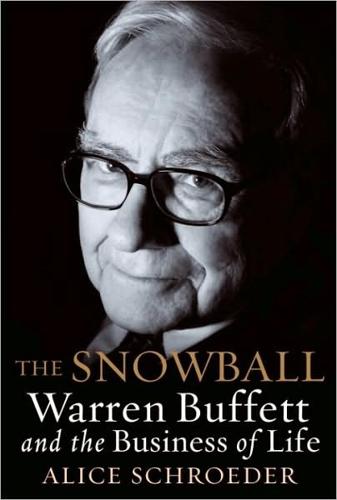
The Snowball: Warren Buffett and the Business of Life
by
Alice Schroeder
Published 1 Sep 2008
Berkshire’s MidAmerican Energy subsidiary invested in the troubled Williams Companies and bought its Kern River Pipeline.20 Berkshire bought Garan, the maker of Garanimals children’s clothing. It picked up the Northern Natural Gas pipeline from Dynegy, another troubled energy company.21 Within days, MidAmerican lent more money to Williams Companies.22 It bought The Pampered Chef, which sold cookware at parties through a sales-force of 70,000 independent “kitchen consultants.” It bought farm-equipment maker CTB Industries and teamed with investment bank Lehman Brothers to lend $1.3 billion to struggling Reliant Energy. Ajit Jain quickly moved into the terrorism-insurance business, filling a sudden vacuum by insuring airlines, Rockefeller Center, the Chrysler Building, a South American oil refinery, a North Sea oil platform, and the Sears Tower in Chicago.